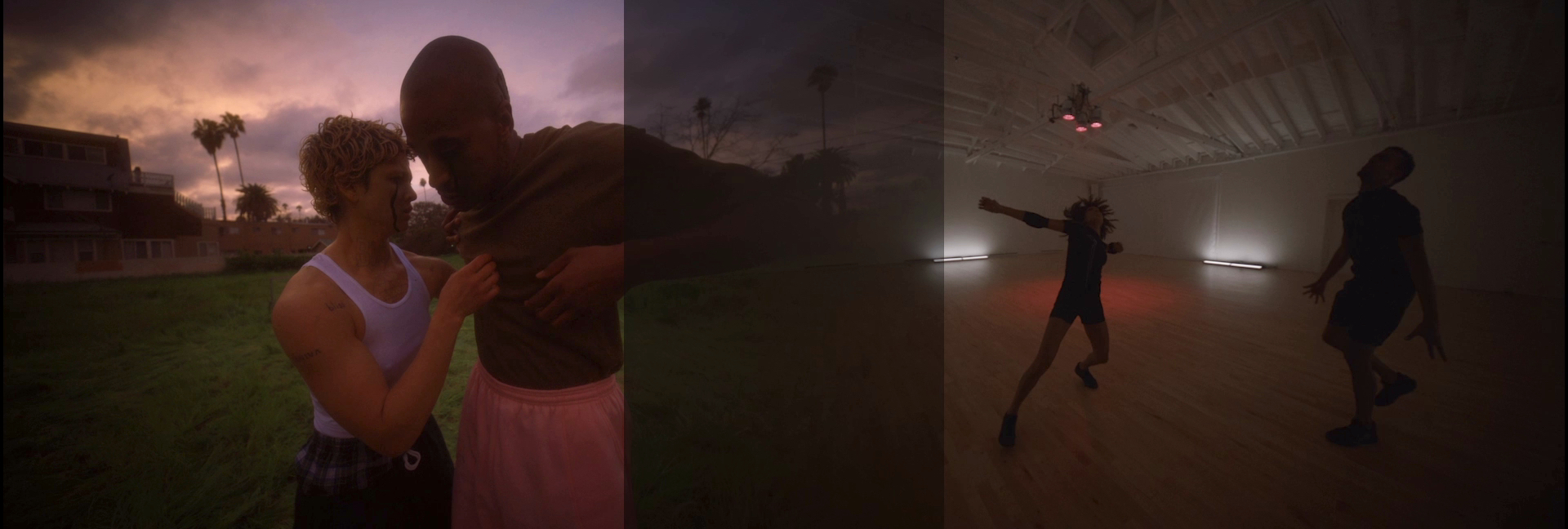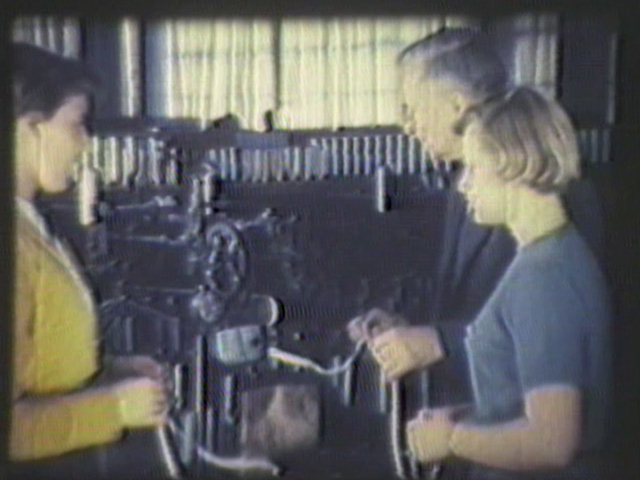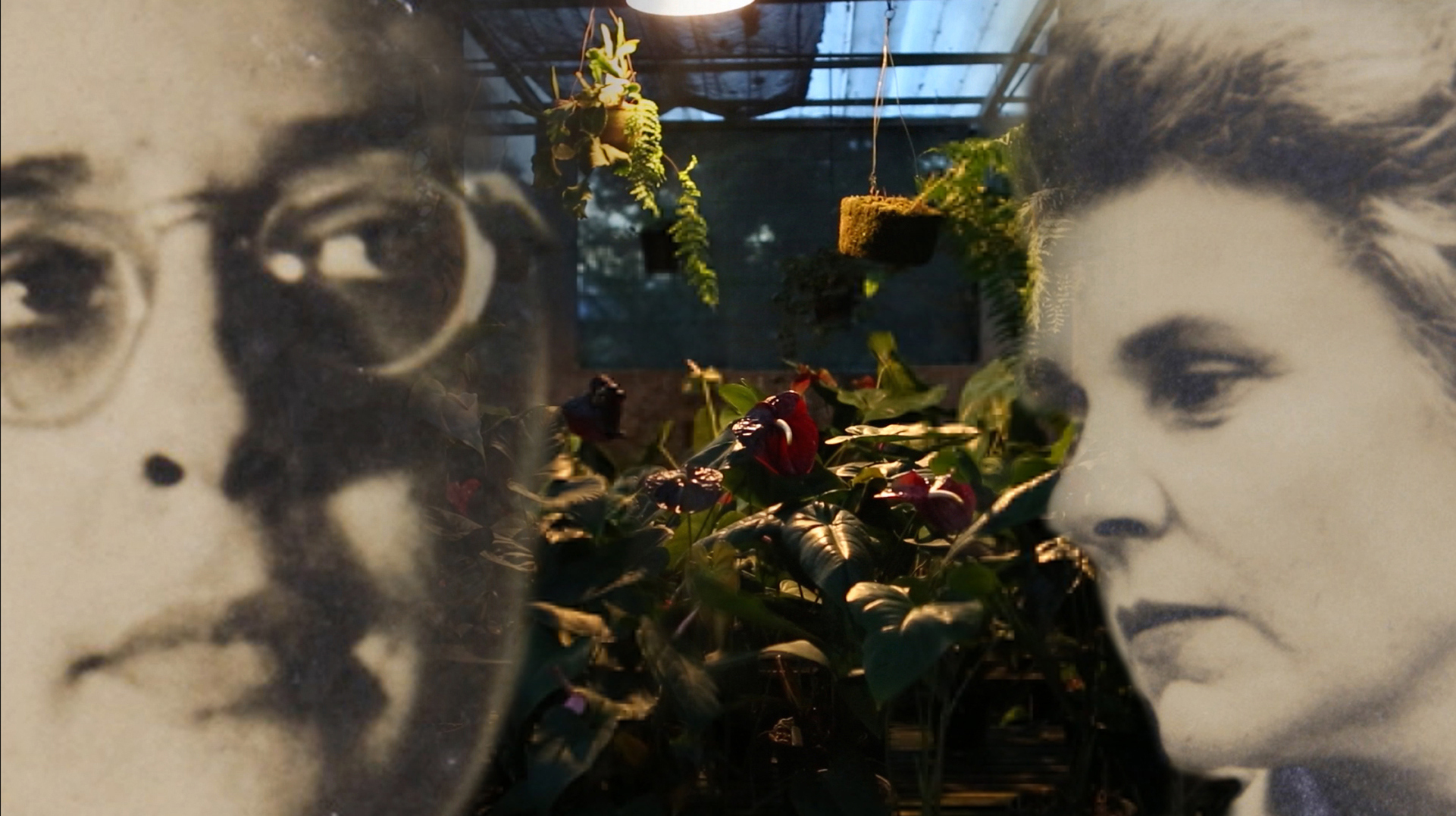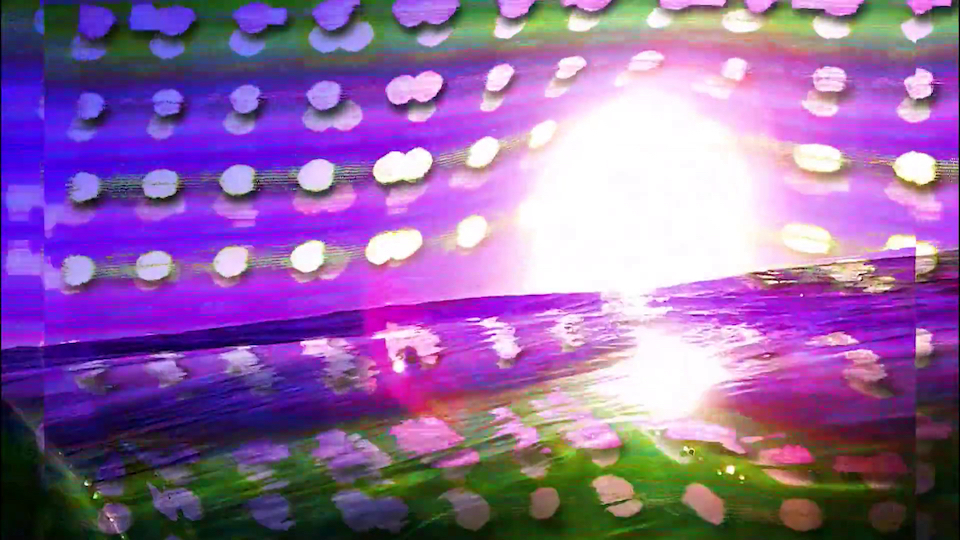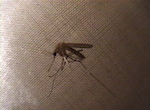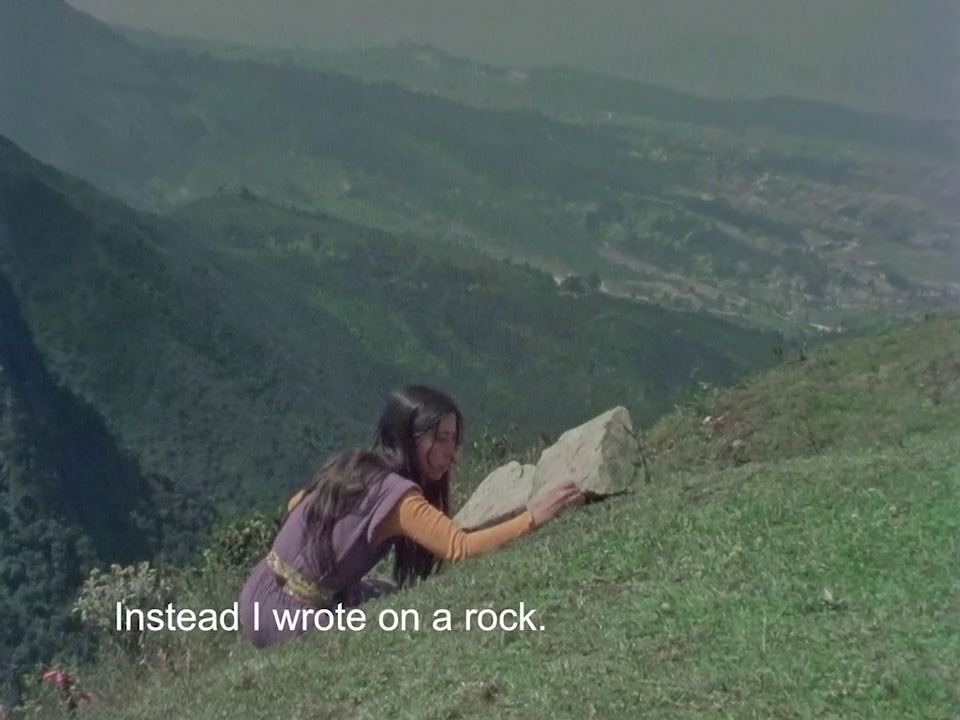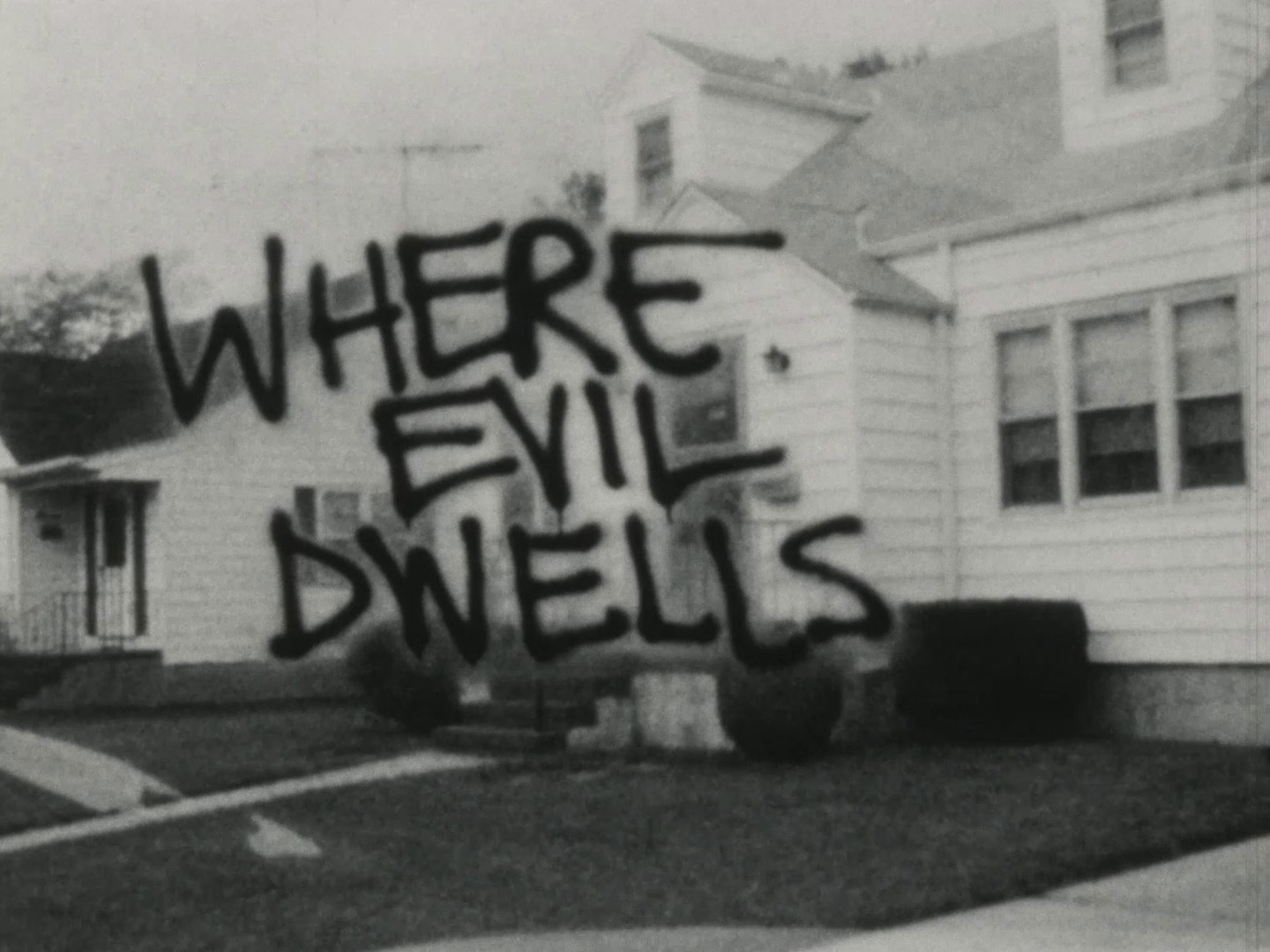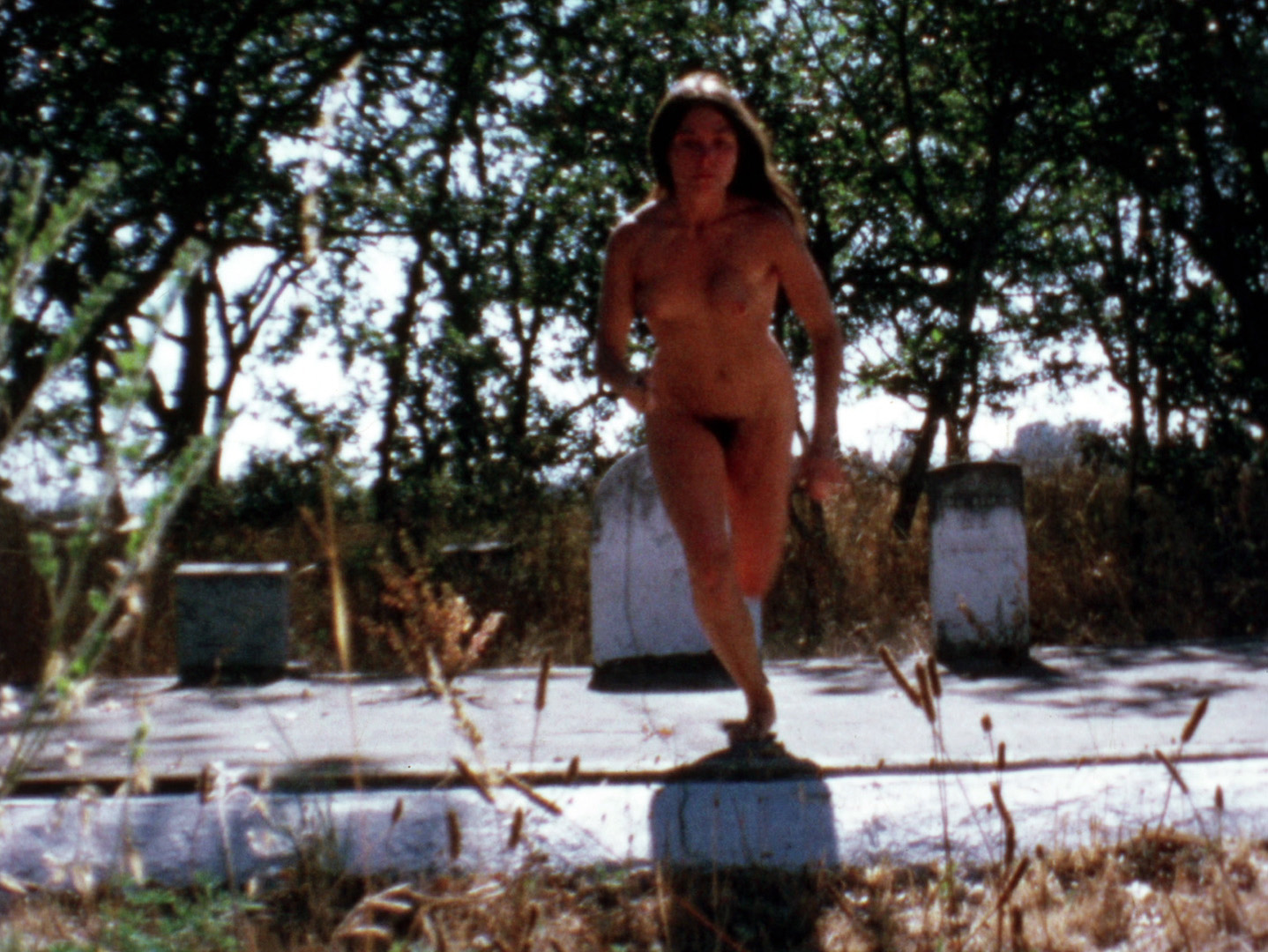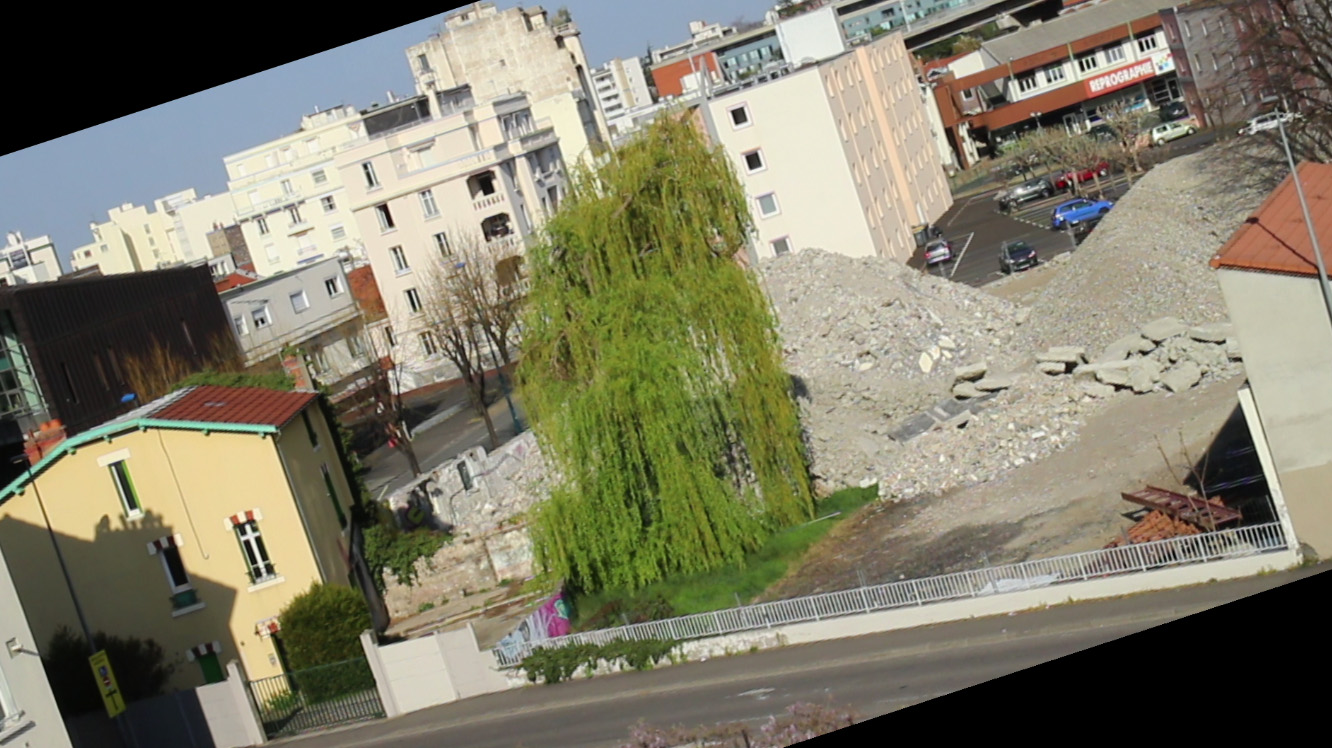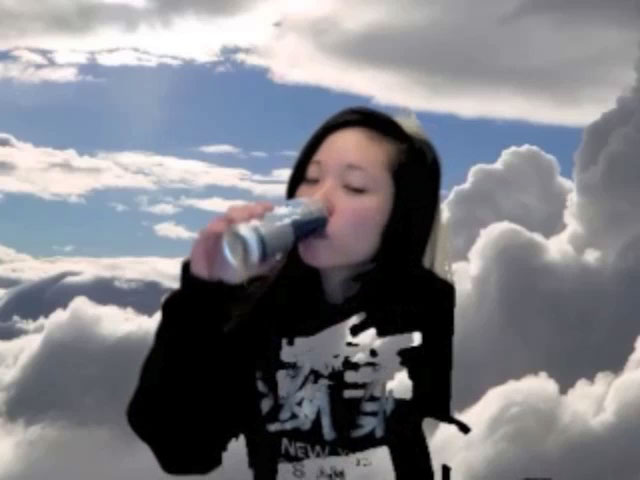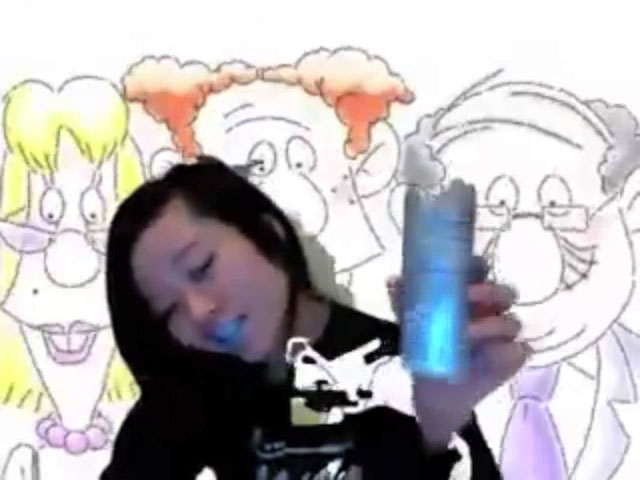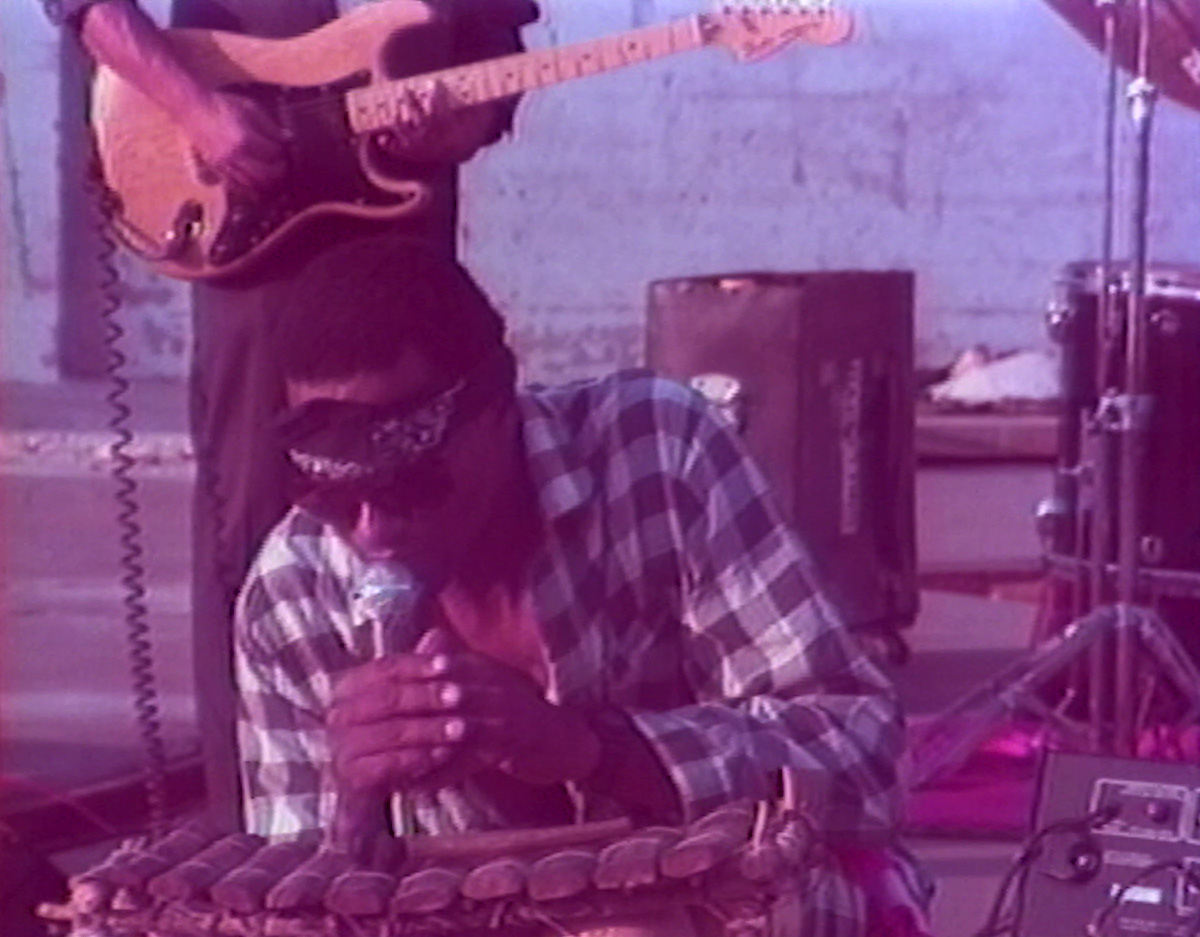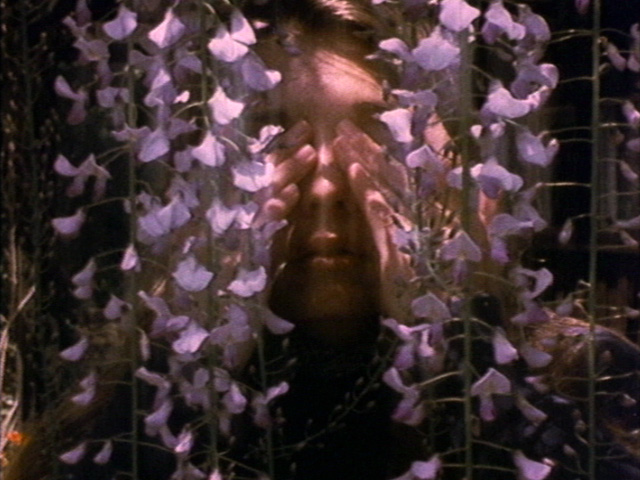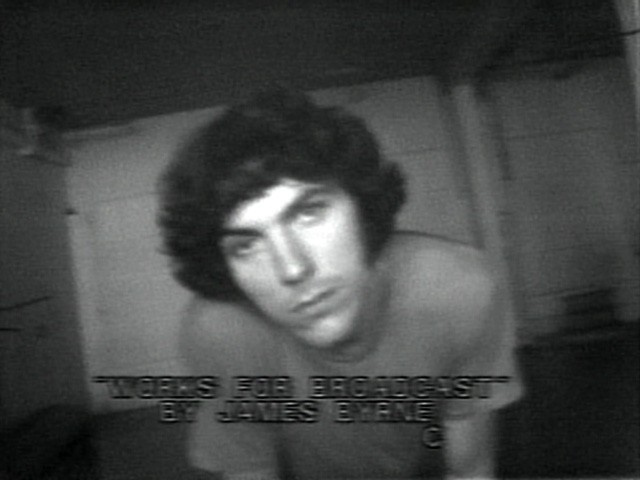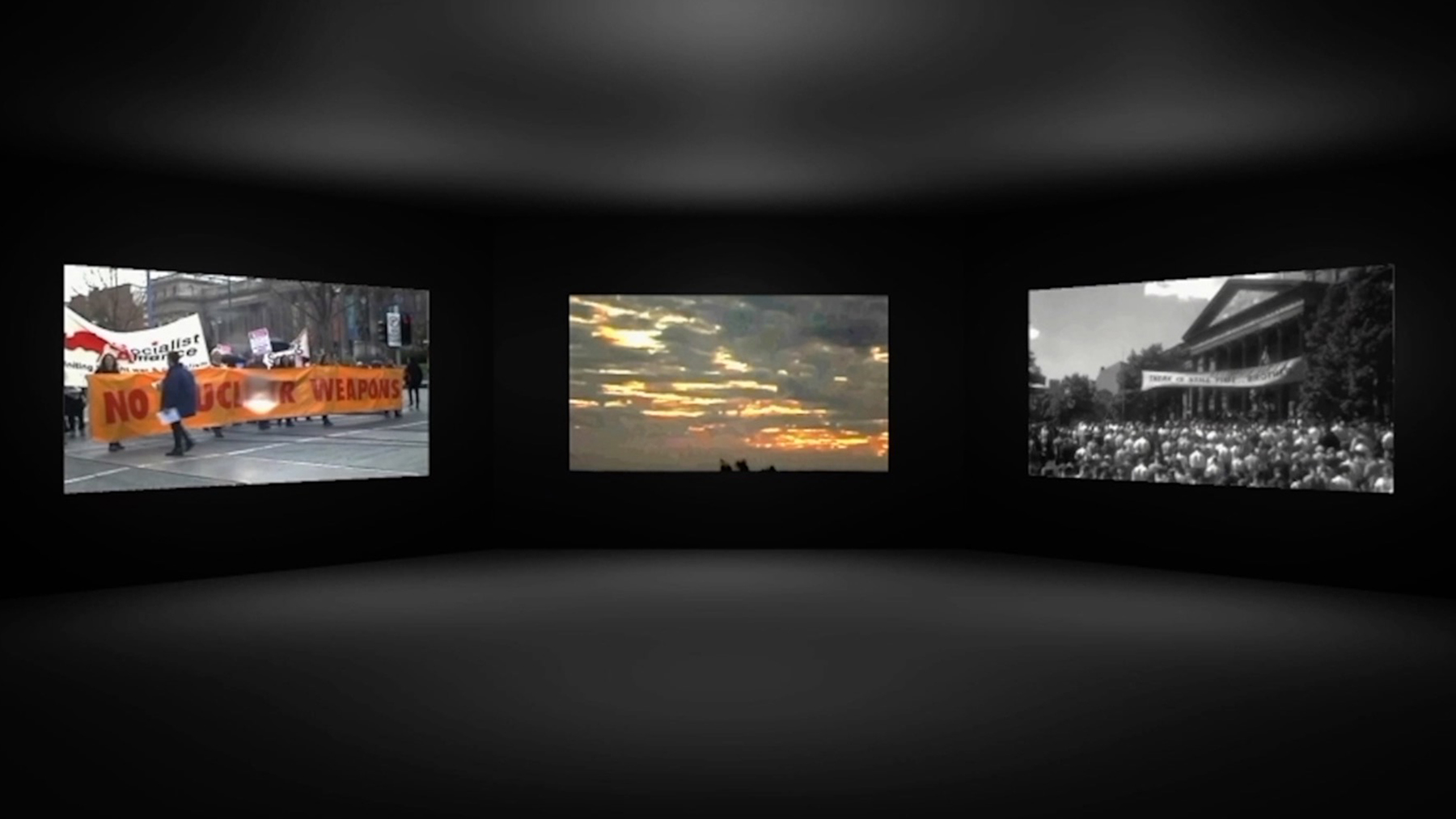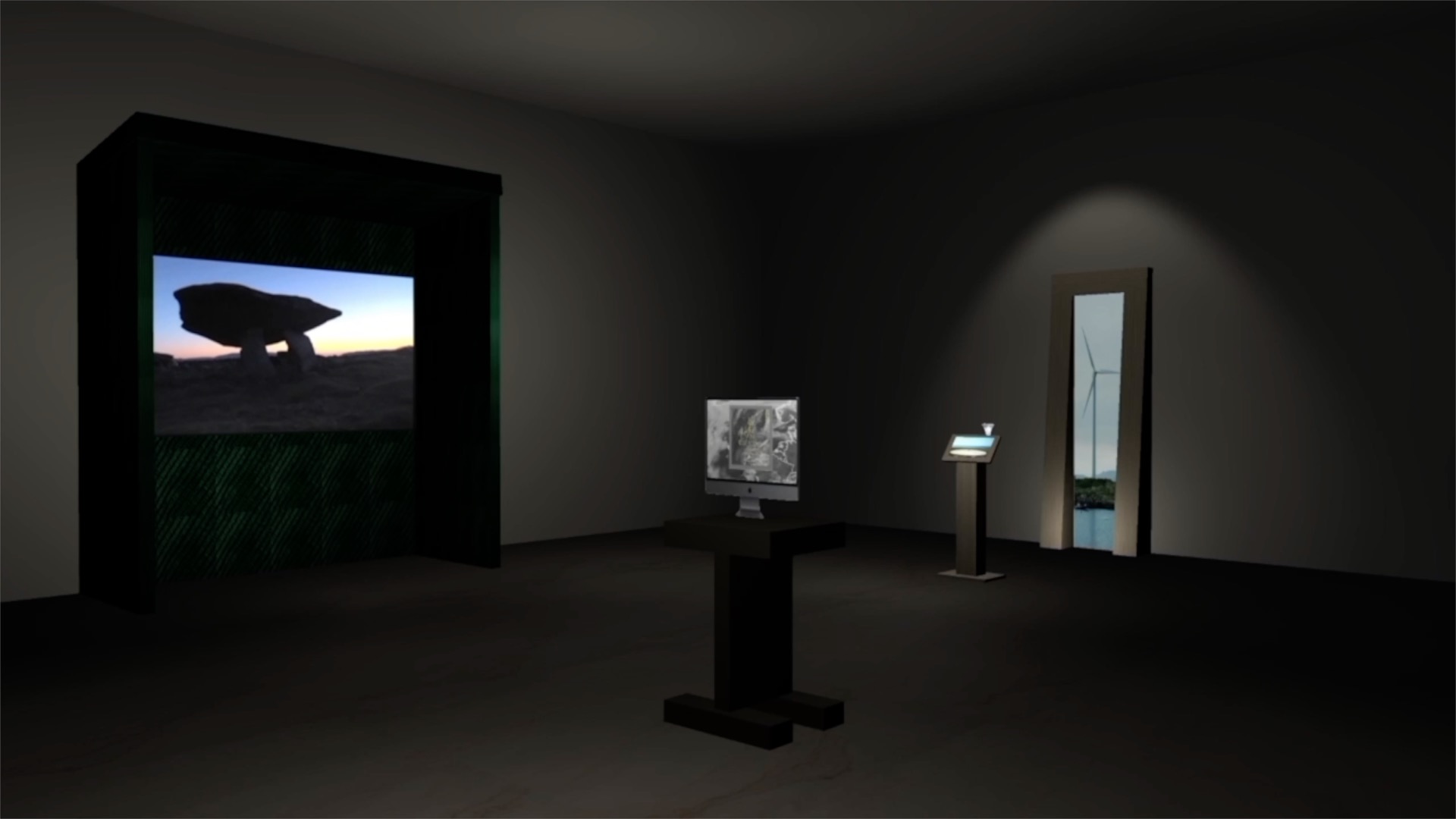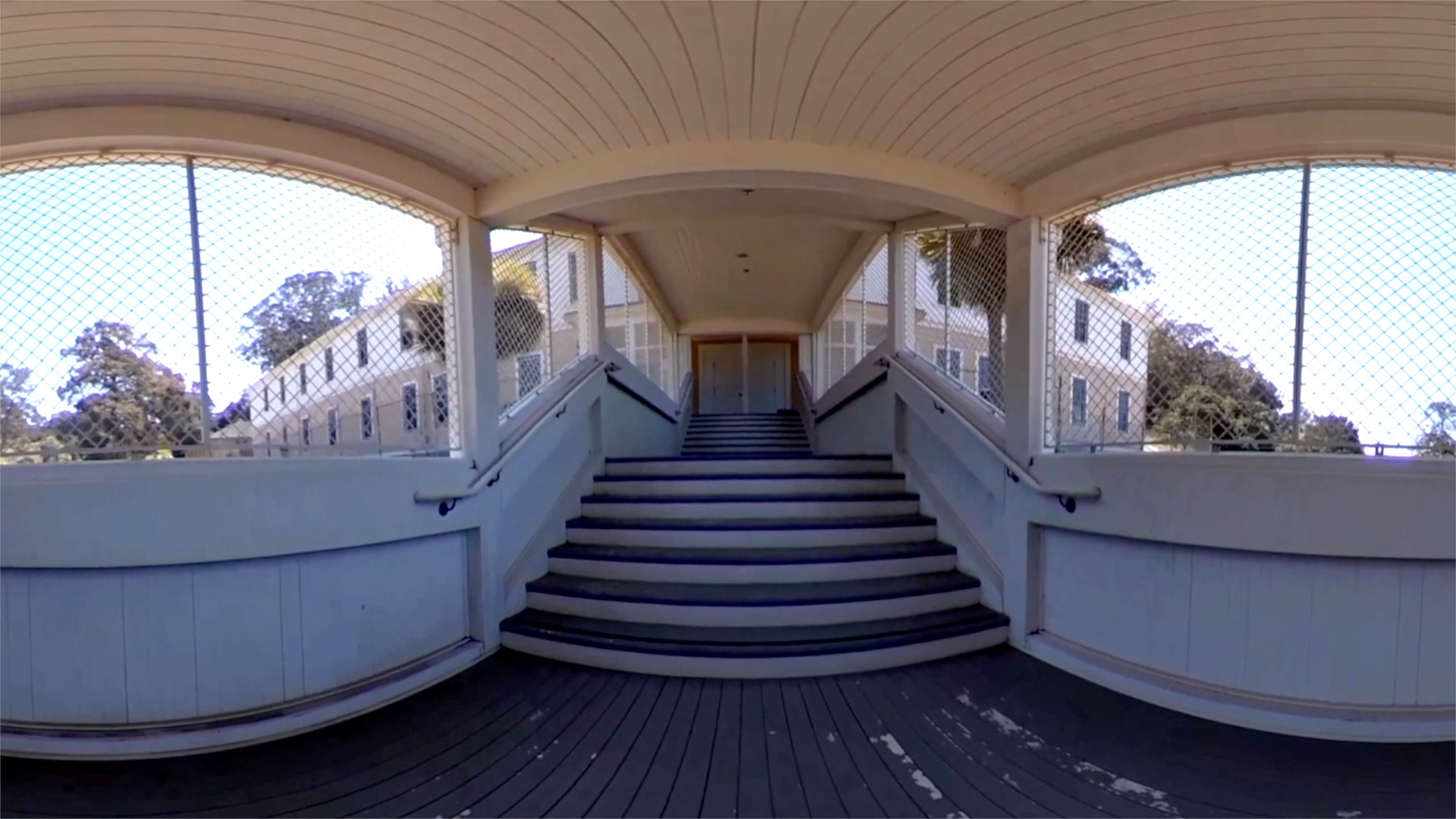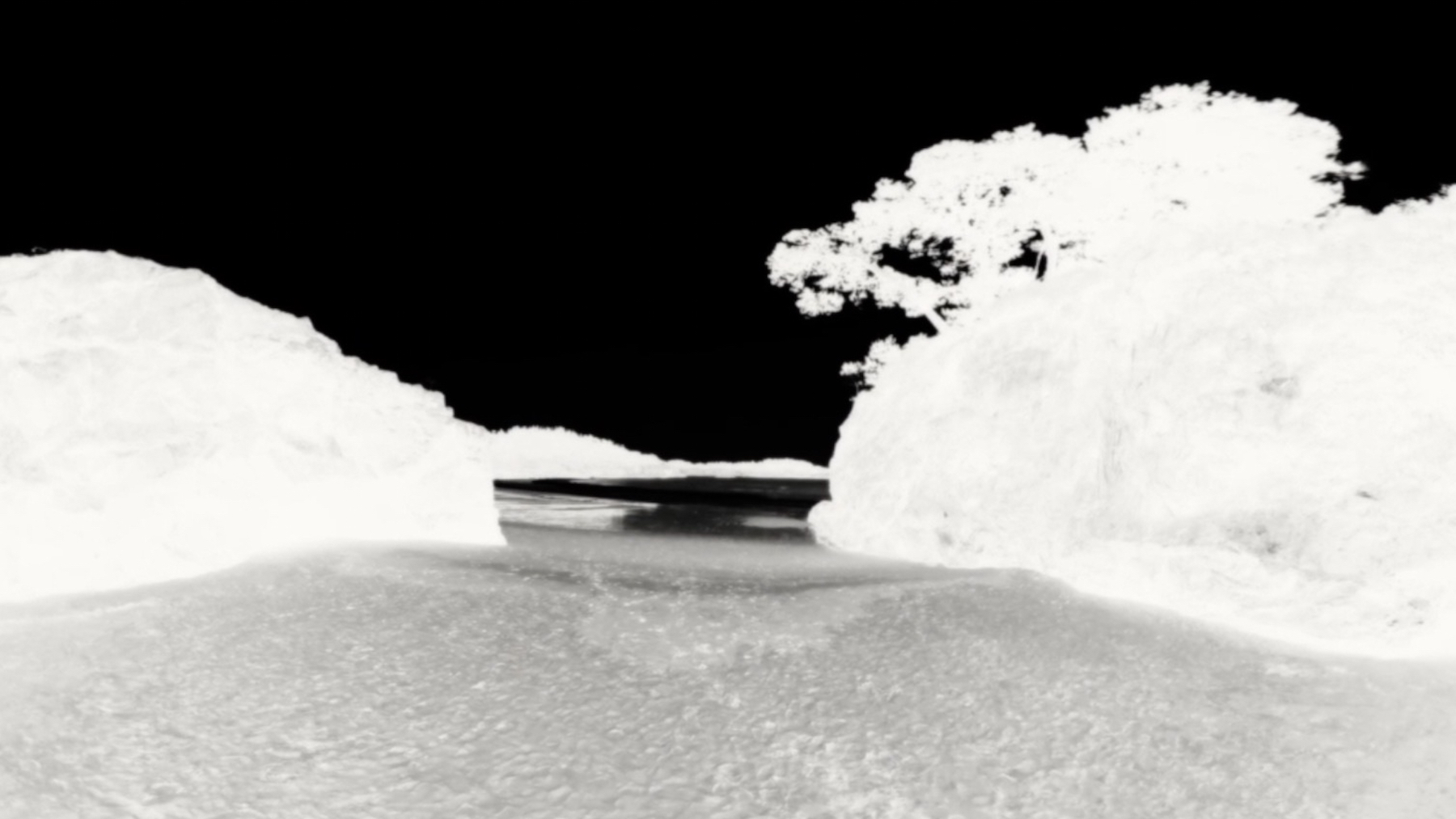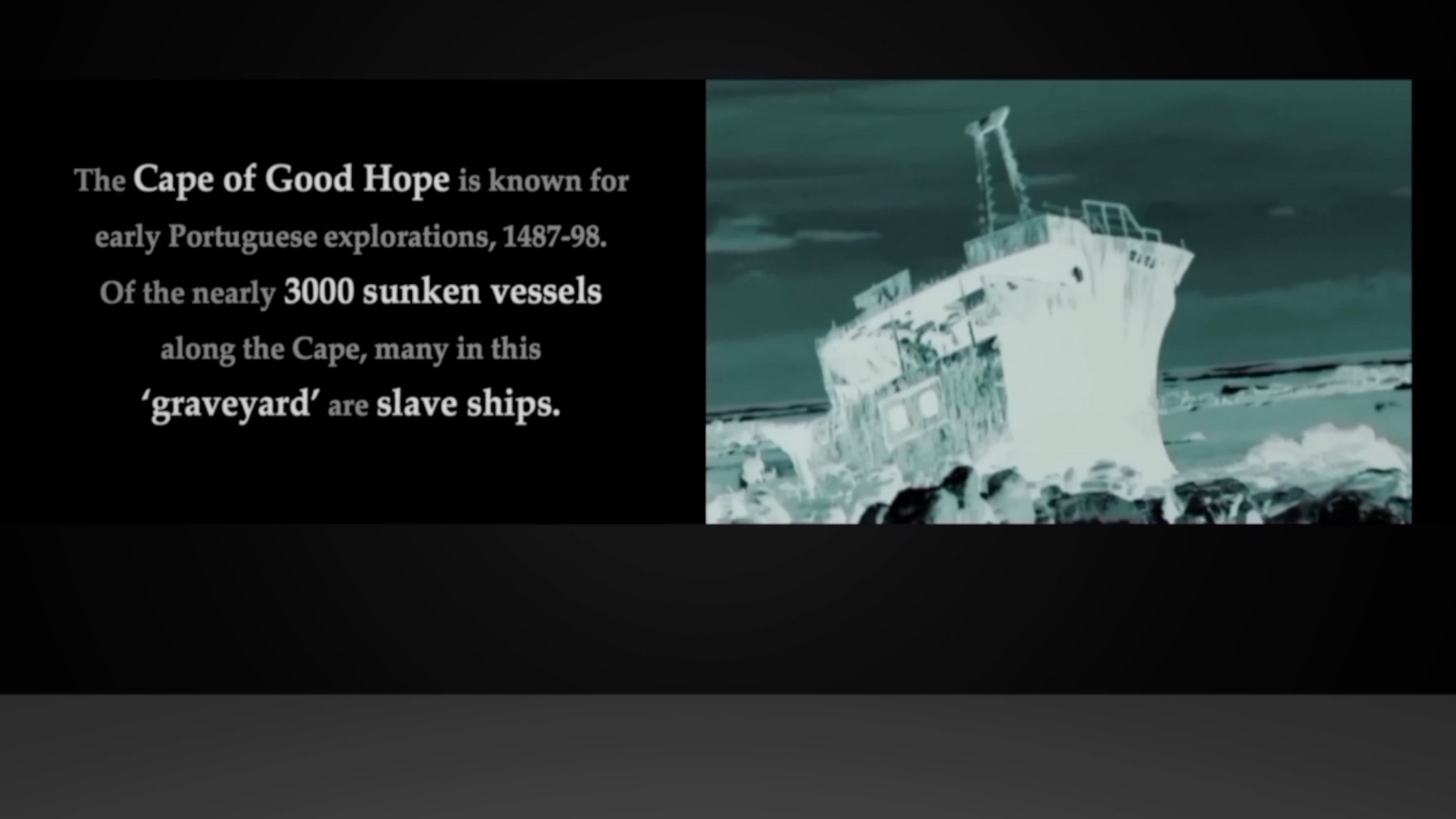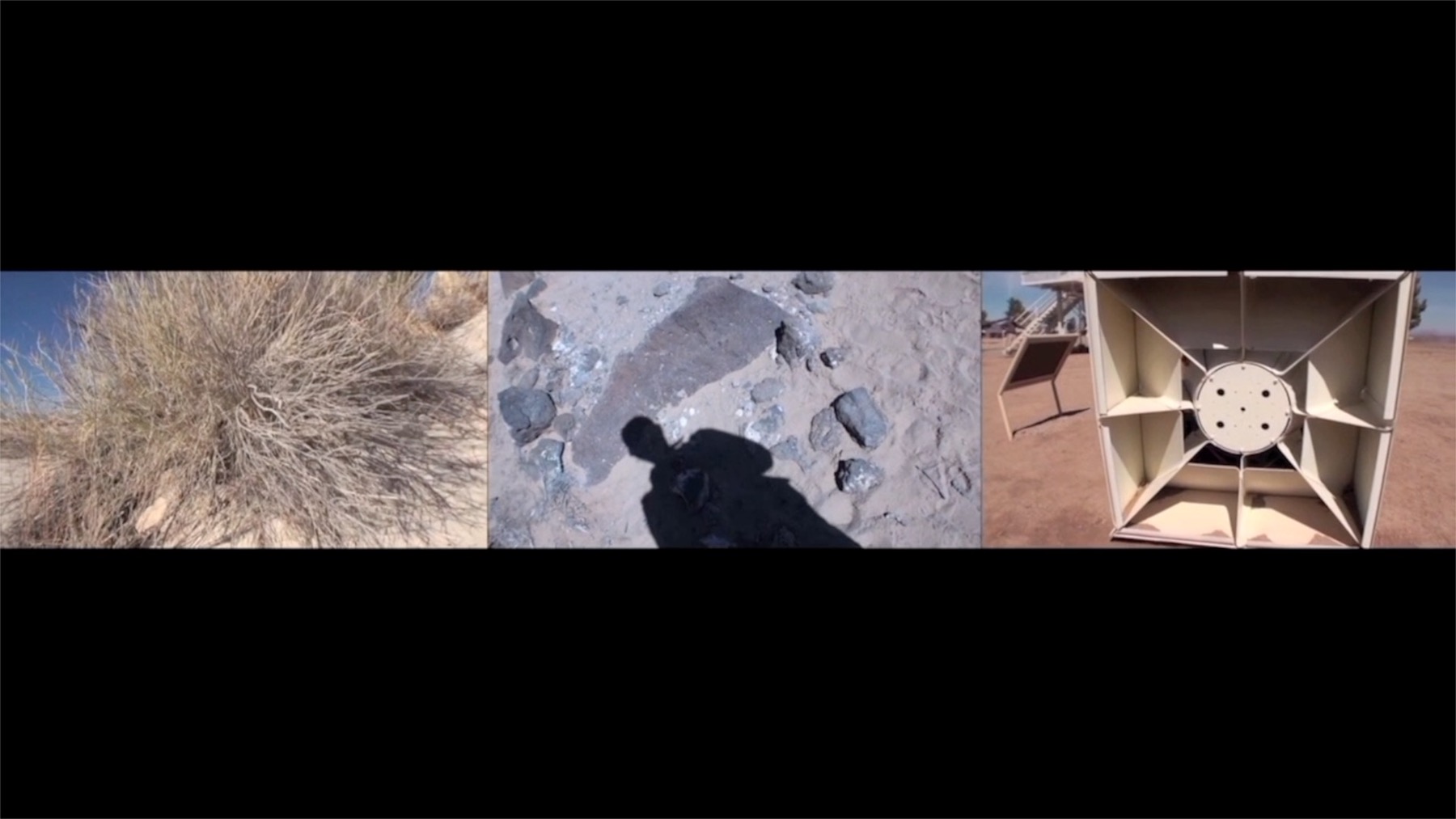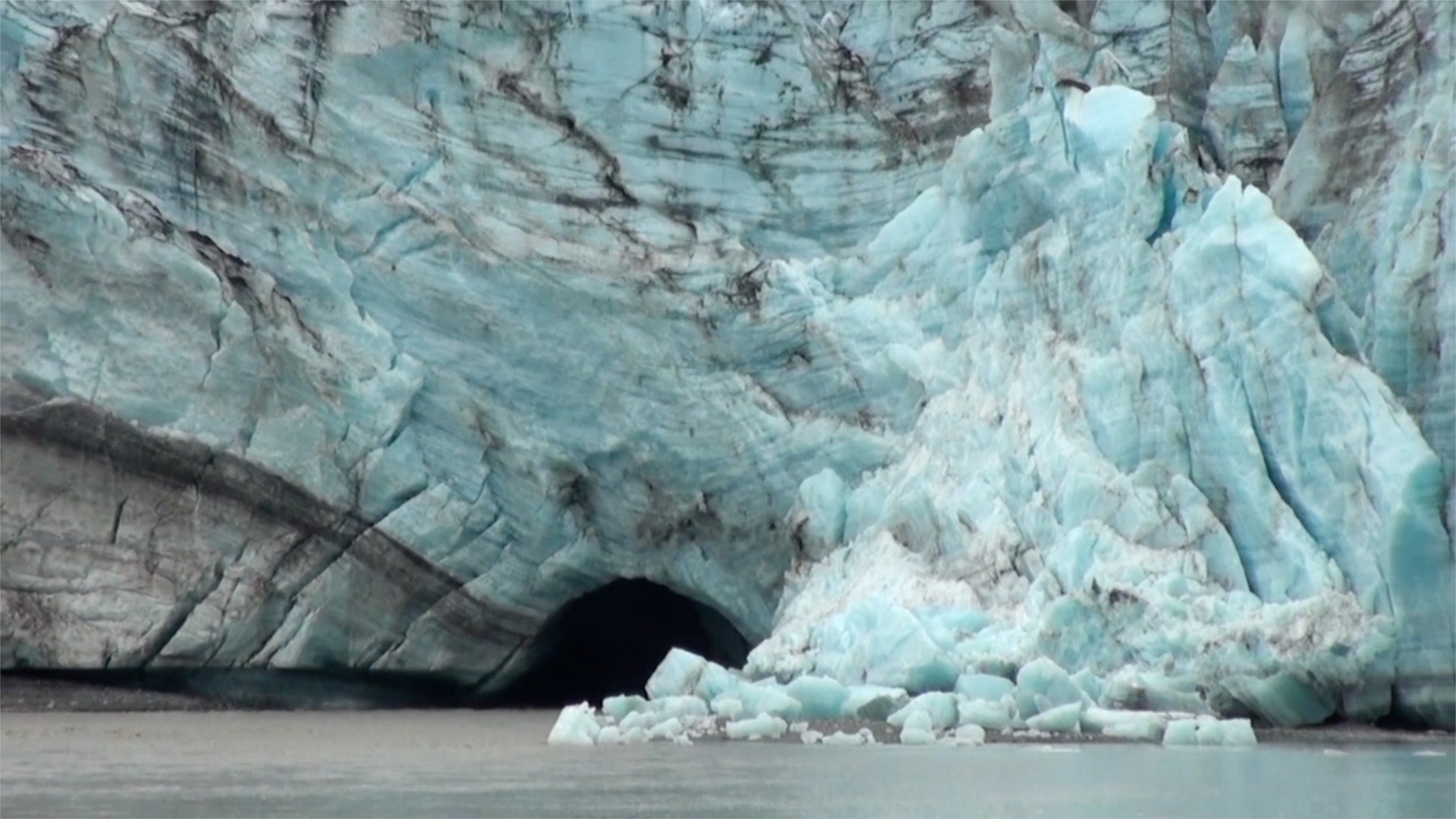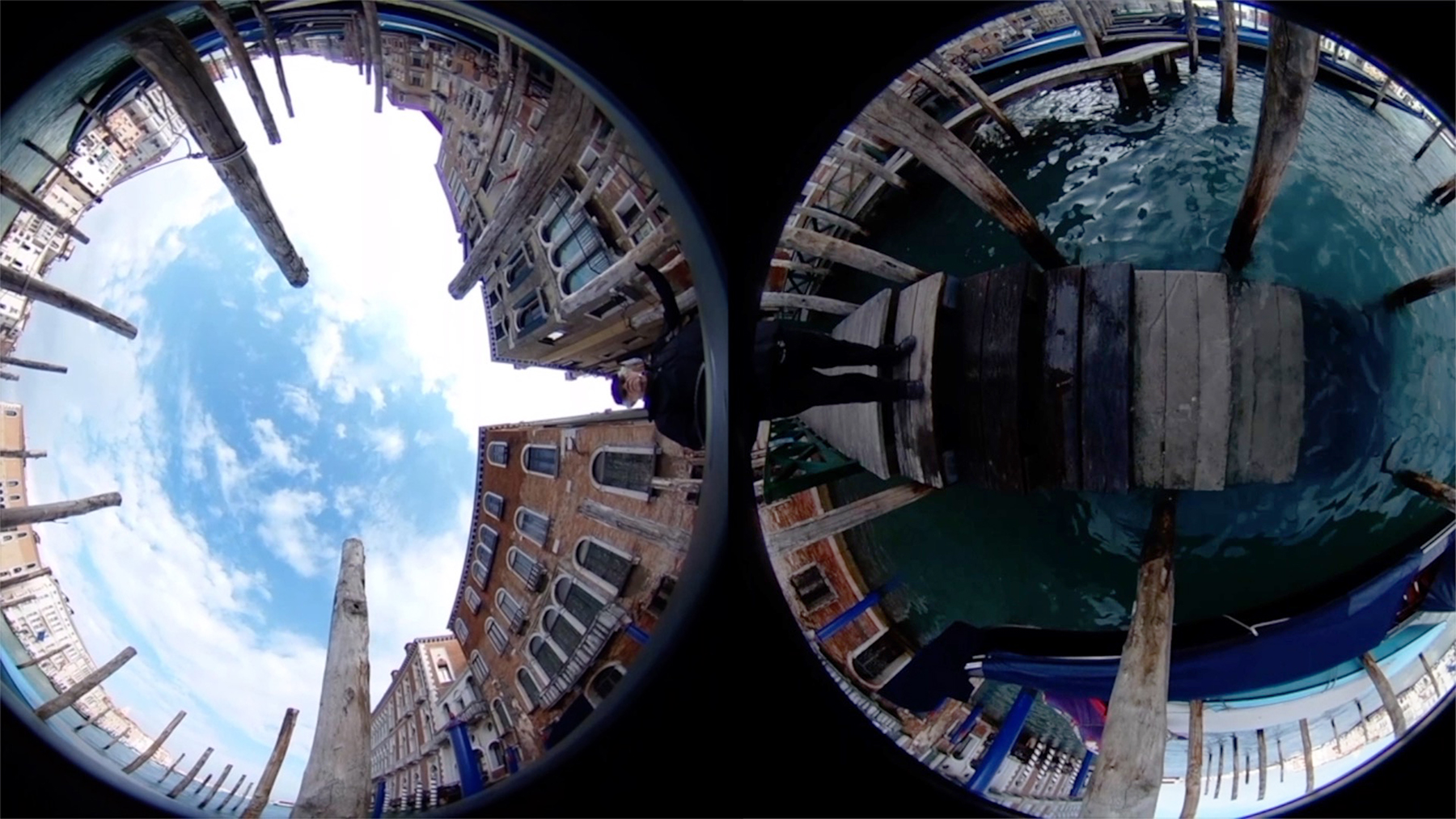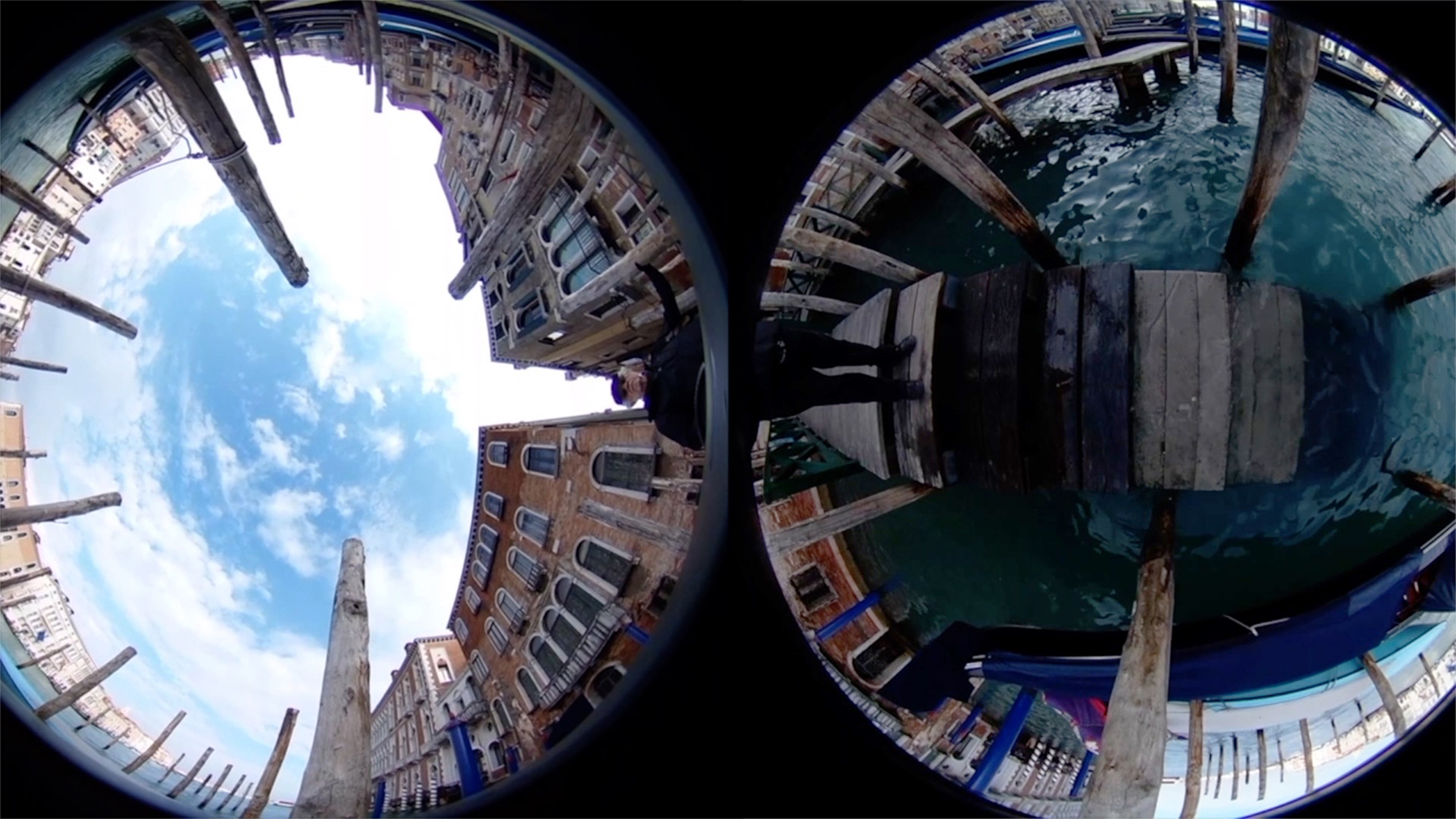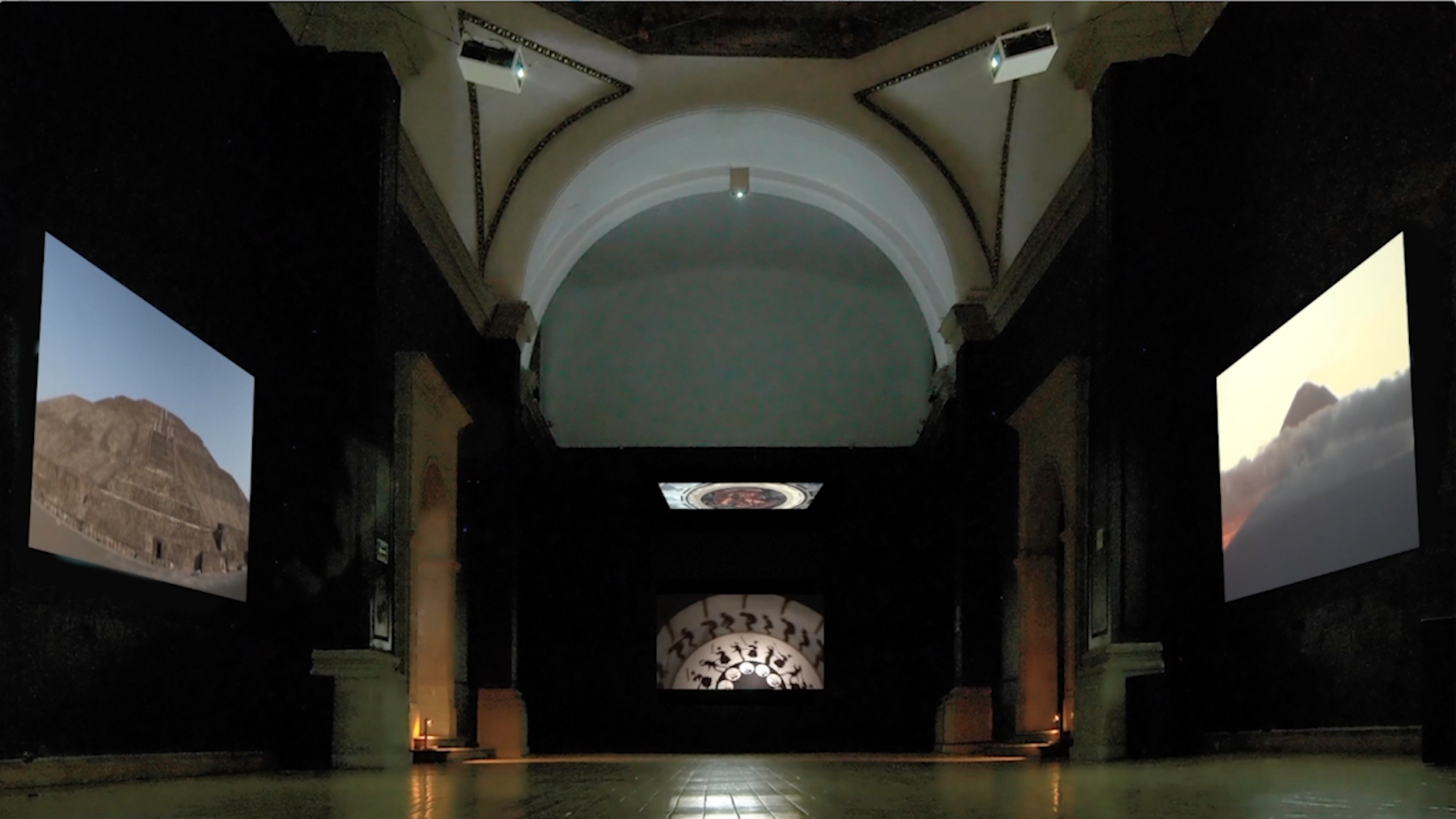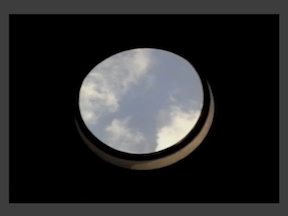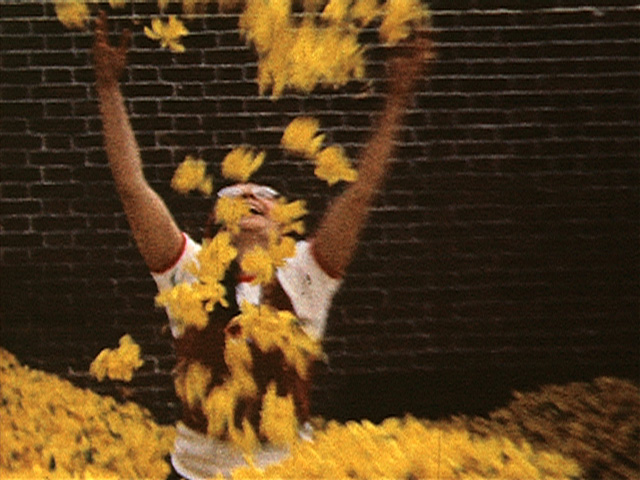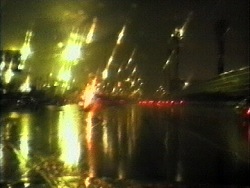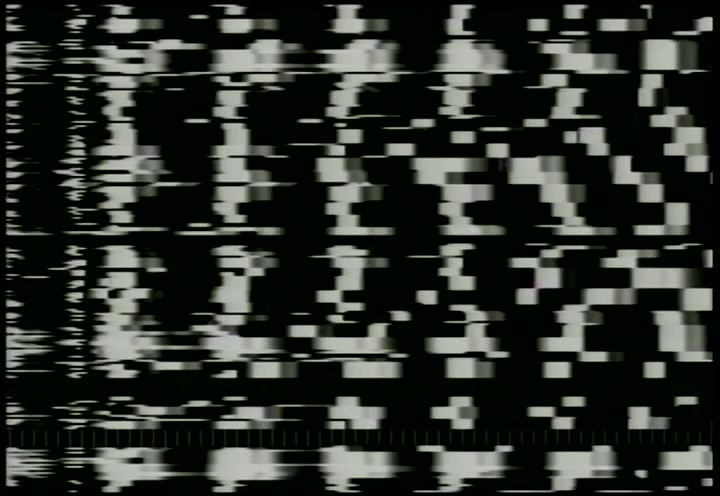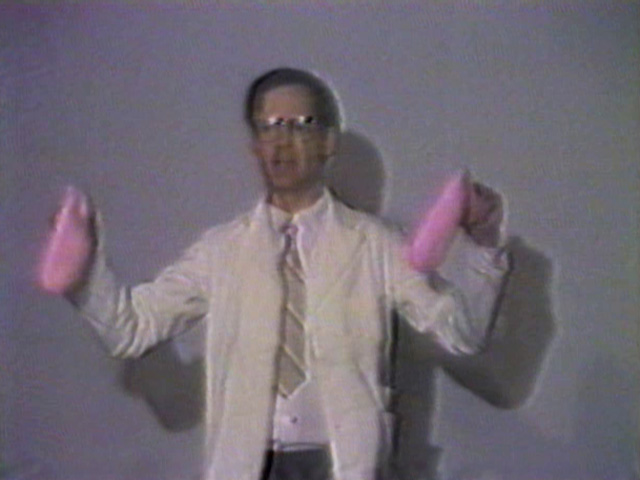Search Results
Title Results
Your search returned 3060 Titles
Extending Harris-Babou’s broader exploration of the language and empire of Restoration Hardware, Human Design follows the artist as colonial explorer and travel blogger traveling to Gorée Island in Senegal to unearth the “rare” artifacts on display in the furniture company’s New York showroom. The work was originally made for the 2019 Whitney Biennial, after Restoration Hardware constructed a new megastore a few blocks from the museum.
"and they came riding into town on BLACK & SILVER HORSES"
Lawrence Andrews
1992, 29:49 min, color, sound
In this provocative essay on racism, crime, the law and the media, Andrews constructs a layered pastiche to investigate these issues within cultural and personal contexts. He explores how the fictions of the media reinforce and perpetuate racial mythologies.
Pearlstein writes: "Beginning with a Cindy Sherman-esque scene of a battered woman, the suggested narrative quickly implodes to expose a series of psychological states being 'acted out.' The mood moves through aggression to desire to frustration to a catharsis, which creates a structural shift....
Here Pearlstein uses objects as symbols to delineate relationships between such diverse concerns as ethnicity, mythology, fear, and sexuality.
In September 1975, photographer Marc Petitjean documented Matta-Clark as he made one of his major "building cuts" in Paris. Created for the 1975 Paris Biennale, Matta-Clark's Conical Intersect was a spiraling cone-shaped cut through a pair of 17th-century buildings on rue Beaubourg. Slated for demolition as part of the "urban renewal" of the Les Halles district, the buildings were adjacent to the Centre Pompidou, then under construction. Petitjean records Matta-Clark's two-week process and interviews him at the site.
"Off-Air" Australia
Ant Farm: Chip Lord, Doug Michels, Curtis Schreier, Douglas Hurr.
1976, 20:59 min, b&w and color, sound
Role-playing and political performance were integral to Ant Farm's art-making strategies. In 1976 the group travelled to Australia as ironic "artists-in-residence," counter-cultural ambassadors. "Off-Air" Australia is a fragmented document of that trip, culled almost entirely from off-air footage of their television appearances, Australia media coverage of Ant Farm's events, and appropriated TV commercials.
The first in a series of videos investigating the use of digital effects on appropriated imagery, "Painting" Sites compiles pictures arbitrarily yielded by an Internet search for the word "Painting," and peppers the resulting series of images with digital graffiti, courtesy of editing software. When Price began the piece, in 2000, automated image-search tools did not yet exist online; instead, the artist used text-based searches, taking arbitrary screenshots of each and every page that was returned and then cropping out all but the image, an approach that occasionally yielded visual hallmarks like improperly loaded data or the appearance of the cursor.
Writes Pearlstein: "This piece, made as a continuous loop, literally traces the process of a stream of consciousness, such that the process itself becomes the subject. It delineates the way in which one thought leads to the next by associations made through language, sound, image, and action....
In "Psycho," the photographic image of two women is evocatively transformed through subtle transmutations of gesture and movement.
"That's It, Forget It," Miller's first collaboration with young people, celebrates pop culture, fashion, and music video, L.A. style. Miller follows six West Hollywood teenage girls as they shop, dress up, dance, flirt and drive down Melrose Avenue — all to an audio track of disco music and...
Nam June Paik's first single-channel videotape since 1989 is a heartfelt tribute to his long-time collaborator Charlotte Moorman. This portrait traces Moorman's career as an avant-garde performer, from her classical training to her notorious arrest as the "Topless Cellist" and subsequent...
Created from a pastiche of cinematic, newsreel, animation and television images that are set against Bernard Hermann's evocative score, the "endless beginnings" of Hitchcock's "Torn Curtain" reveal a continuous series of curtains opening.
"Vertigo" recounts three stories, allegedly based on postcard reproductions of Giuditta, a painting by Cristofano Allori; a photo of Lu Hsun on his way to deliver a speech at Kwanghua University, Shanghai, in 1927; and a photo of a jewel box made by Archibald Knox around 1900.
Single-channel screen recording of a live bot performance on Twitter (equinor), November 30, 2020.
Single-channel screen recording of a live bot performance on Instagram (burgerking), November 26, 2019.
Single-channel screen recording of a live bot performance on Instagram (amazon), December 8, 2019.
Single-channel screen recording of a live bot performance on Instagram (starbucks), November 26, 2019.
(are we and/or do we) LIKE MEN
Pier Marton. In collaboration with Wendy Ultan and Glenn Biegon.
1986, 16:42 min, color, sound
Posited as "A tape to Wage War Against War... the War which men wage against women, children, and themselves," (are we and/or do we) LIKE MEN confronts male self-identification, violence and gender conditioning. Focusing on a series of interviews with men, Marton based this work on his...
Precisely edited to the start-stop rhythm of a martial beat, Absolutions glories in organized disjunction, juxtaposing images of the artist collapsing to the ground with bursts of wildly scrambled electronic distortion. Produced while Rist was working at a professional video facility, the piece reflects her ongoing interest in exploring the defects and imperfections of the video machine and medium, which carries echoes of psychological and personal mistakes.
Produced in Yugoslavia, Die gluckliche Begegnung, which translates as "The Happy Encounter," is an enigmatic inquiry into the means by which an individual can know and understand the self through history and the past. Odenbach orchestrates a series of lyrical images, from farmers hoeing the earth...
Trecartin describes this work as a "narrative video short that takes place inside and outside of an e-mail." Trecartin, wearing his signature make-up, jumps back and forth between male and female roles. Totally self-absorbed and equipped with vestigial attention spans, the stylized characters are constantly on the phone or online. Their e-mail exchanges and Internet searches are channeled into bright animations that intersect with "real world" locations; the story moves from person to person like a browser surfing through Web pages.
Writes Michael Snow: "The corpus callosum is a central region of tissue in the human brain which passes 'messages' between the two hemispheres. *Corpus Callosum, the film (or tape, or projected light work), is constructed of, de-picts, creates, examines, presents, consists of, and is, 'betweens.' Between beginning and ending, between 'natural' and 'artificial,' between fiction and fact, between hearing and seeing, between 1956 and 2002. It's a tragi-comedy of the cinematic variables..."
In 0, Seoungho Cho literally counts cars speeding down a freeway. The interwoven and digitally rendered content — cars, the sounds they produce, numbers superimposed upon them — creates a dynamic investigation of the mechanics of the moving image.
An exploration in mood and tone, 1 is a montage of image, music, and language. Against a split-screen study of New York beat cops, Silver presents a sentence, drawn out in single words over the course of the piece. Through subtle word repetition, she alters what would appear to be a unified sentence; this, in addition to the doubled image, calls the work's title into question.
In two channels seen simultaneously on one screen, Hackenberg moves hypnotically as Chinese music suggests the idea of a different place.
The final installment in Cokes' Pop Manifesto series, 1! takes a stroll through the artist's music collection, presenting the titles of 100 recent albums released over a five year period. This annotated discography is paired with excerpts from an essay by critic Christoph Cox discussing rock music's forms and ideological premises, all laid over an appropriated vintage documentary explaining how to project a film.
1-2-3-4 is an exercise in animating numbers, using four cameras and a multikeyer to re-order and layer the image planes.
1/1 is a new direction for Seoungho Cho. This playful study, shot largely in degraded black and white, knowingly recalls the early performative experiments of 1970's video practitioners. In part an exercise in gesture and noise, the piece is also a reflexive anecdote on the nature of video itself.
"Prestype on clear film measuring tape, 10ft. length. No camera. At the end of every foot of film numbers appear, 1, 2, etc to 10."
Writes Kelley: "Bob and Sheree are old friends of mine. Bob Flanagan is a respected Los Angeles writer and Sheree Rose is a photographer who was known primarily as a documenter of the L.A. poetry scene. In recent years their work has come more and more to reflect their sadomasochistic sexual...
"Numerals on clear film from 1 to 1000."
In this dizzying portrayal of futile searches through cluttered handbags and standing files, Baldino continues her provocation of the principles of narrative structure, letting us spy on the anonymous victims of failing manmade systems and the detritus of modern life.
4:3 aspect ratio Beatles video cropped to 16:9 aspect ratio.
19 Universes/my brother is the latest in a series of videos in which Baldino explores advanced scientific concepts, including nanotechnology and quantum particles. The screen is divided into nineteen shifting strips of video, each portraying Baldino's brother, a musician, as he plays rock and roll guitar; the soundtrack is layered correspondingly. The result is a disorienting composite portrait that explores the phenomenon of parallel universes.
In Romania the fighting was not yet over when Hámos, a Hungarian filmmaker living in Berlin, left for Hungary in December 1989, for the first time since he had left his country of birth without permission ten years earlier. He wanted to make a film about censorship at Hungarian Television — about...
Single-channel screen recording of a live bot performance on Instagram (crackerbarrel), November 26, 2019.
2002 is a "concert film" that collects together footage of approximately forty bands videotaped by artist C. Spencer Yeh during the year 2002, including Deerhoof, Animal Collective, Sightings, Sudden Infant, Cock ESP, Double Leopards, Caroliner Rainbow, Comets on Fire, and more. Acting as a survey, tribute, and foreshadowing of the contemporary American musical underground, 2002 captures not only the artists, but the audiences, spaces, and networks that remain incredibly formative and influential over a decade later.
21 Films, which actually contains 25 titles, is a compilation of 16mm and 8mm shorts assembled by the artist. In these works, Sherman combines the hallmarks of his "Spectacle" performances—metaphoric juxtapositions and visual puns—with a fluency in film grammar. Through exquisite storyboarding and montage, Sherman transforms the mundane into the magical, blithely manipulating colossal forms (landscapes, bridges, chili parlors, skyscrapers, rollercoasters, escalators, and airplanes) like weightless props.
The exhilarating image of a human figure momentarily suspended against the sky — a signature Blumberg shot — is the soaring introduction to this high-spirited documentary, and to the Eskimo-Indian game of blanket toss. Blumberg conveys the essence of the annual Eskimo-Indian games, which are...
This tape is Jud Yalkut's video realization of Charlotte Moorman and Nam June Paik's concert performance of John Cage's composition 26'1.1499" For String Player. In this extraordinary performance, which is manipulated and synthesized by Yalkut, Paik and Moorman play Cage's score on a collection of "instruments" that include a pistol, a dish of mushrooms, balloons, a practice aerial bomb, and a telephone call to President Nixon.
Focusing on the discourse surrounding the music industry, Cokes continues his investigation of pop culture, setting black words on a white screen against the music of his band SWIPE. The resulting quasi-music video addresses the music of each decade since the 1960s with slogans and barbed statements.
A simple scene of three flags flapping over an electronic billboard advertising grocery specials conjures an indelible portrait of America.
Davidovich recorded this video with artist Stuart Sherman at Ronald Feldman's 3 Mercer Street Gallery in SoHo. As the camera moves in a continuous, 360-degree take, Sherman performs a series of actions that are never completely captured by the perpetually revolving camera.
This is the first in Cokes' non-consecutively produced series of "promotional tapes" for his conceptual band SWIPE. 3#, subtitled Manifesto A Track #1, introduces Cokes' concern with the ideological apparatus that undergirds the music industry. The video takes up a song by Seth Price, which is itself the systematic recreation of an early electronic pop song by Kraftwerk.
30 Second Portraits: New York Artists
Joan Logue in collaboration with the artists.
1982, 14:45 min, color, sound
Inverting the form, style and time frame of commercial television advertising, Logue has produced a unique series of dynamic video portraits of avant-garde artists, writers, musicians and performers. In 30 Second Spots: New York, which Logue terms "commercials for artists," each of the succinct...
30 Second Portraits: Paris Artists
Joan Logue in collaboration with the artists.
1982-83, 12:21 min, color, sound
30 Second Spots: Paris focuses on prominent artists, writers, philosophers and musicians working in Paris. Using elegant special effects, close-ups, and a highly condensed time frame, Logue captures her subjects in moments of intimacy and contemplation. Pierre Boulez ponders the rhythms of...
30 Second Portraits: San Francisco Artists
Joan Logue in collaboration with the artists.
1984, 2:54 min, color, sound
San Francisco artists Starr Sutherland, Diamanda Galas and Don Buchla are among the subjects featured in 30 Second Spots: San Francisco. Logue tailors the style and content of each succinct "spot" to complement the idiosyncratic nature of the artist's work: Sutherland delivers a terse aphorism;...
As an early pioneer of the music video, Julia Heyward presents a long-form "video album" with 360 that was released just a year prior to the birth of MTV. Heyward's ten songs (recorded with Jody Harris of The Raybeats and The Contortions and Don Christensen of The Raybeats and Bush Tetras) are interspersed with her familiar a cappella-like monologues.
In 37 Stories About Leaving Home, a group of Japanese women living in the Tokyo area recount personal stories of their own experiences of leaving home. In these stories one can begin to see, from very personal and individual perspectives, the societal changes that have occurred over the last...
A collaboration between Arcangel and Milwaukee artist Frankie Martin, this work revisits the "rave" dance party phenomenon of the early to mid-1990s. In an act of simulation at once hilarious and incisive, Arcangel and Martin stage what appears to be an amateur, made-for-public-access-television promotional video in which two awkward young men dance before a swiftly changing, video-keyed background composed of the sort of black and white, "infinite-fill" patterns used in digital painting programs of the 1980s.
"A documentary that details the early days of the Merce Cunningham Dance Company, the film tells the story of the making of the dance Scramble, showing the daily routine of the dancers involved, and other aspects of producing new work. Includes performance footage at the Philip Johnson Glass...
Founded and directed by Charlotte Moorman, the Avant Garde Festivals began in 1963 and featured experimental music, art, and performances in diverse sites around New York. Yalkut's rare historical documents record the 4th and 7th events. Held in Central Park in 1966, the 4th Festival included Allan Kaprow, Al Hansen, Christo, Shigeko Kubota, and Joseph Beuys, among others. The 7th Festival was held in 1969 on two islands in the East River. Yalkut documents performances on Wards Island, beneath one of Buckminster Fuller's geodesic domes.
Yalkut's rare historical document was recorded at the 4th Avant Garde Festival in 1966, which was held outdoors in Central Park. It featured over 65 events with artists, musicians and performers, including Allan Kaprow, Dick Higgins, Al Hansen, Christo, Shigeko Kubota, Joseph Beuys, and Alison Knowles, among many others.
5 Composers: 5 Countries portrays five contemporary composers from around the world. Logue visits Michael Nyman in London, Carlos Santos in Spain, Alvin Curran in Rome, Michael Levinas in Paris, and Tod Machover in Boston, documenting the fabric of their creative lives. Concentrating on their...
In 5 dim/MIND, Feingold constructs a complex and dynamic language system by linking a series of images and sounds collected from television, film and original footage into what he terms "a new text of signifying chains" — associative progressions that mimic unconscious thought processes. An image...
Silver premiered 5 lessons and 9 questions about Chinatown in the Shorts Program of the 2010 Berlinale International Film Festival. A longtime resident of New York's Chinatown neighborhood, she writes, "You live somewhere, walk down the same street fifty, a hundred, ten thousand times, each time taking in fragments, but never fully registering THE PLACE, the district's shifting patterns and the sense that, since the 19th century, wave after wave of inhabitants have moved through and transformed these alleyways, tenements, stoops and shops."
While artist-in-residence in the north tower of the World Trade Center, Lucas was given a tour of the center's sub-basement. 5 Minute Break is the eerie artifact of that tour. An animated woman roams the WTC sub-basement like a benign Lara Croft, negotiating an underground maze of empty stairwells, faded graffiti, hulking machinery, and discarded trash. Lucas' vision of a haunted netherworld of dead-ends and detritus beneath the trade center captures a lost realm.
The fifth and final installment in Cokes' series of "promotional videotapes," 5% (subtitled Manifesto E) shares its predecessors' format: a strict graphic presentation of on-screen text, coupled with a pop soundtrack. As with the other installments, this work is concerned with delineating the status of pop music as a cultural form located within structures of production, capital, and society.
In 67/97, Cho employs the technology of scanning to meditate upon the process of information gathering and the construction of meaning. The result is a lyrical and witty investigation of data systems, surveillance and information overload.
The second in Cokes' series of pop "manifestos," 6^ employs two simultaneous strategies to examine questions of originality and authenticity. While layers of densely theoretical text float across a blue ground, the soundtrack, a song by the band Appendix, features a singer addressing similar questions, albiet in the more familiar context of "rock lyrics."
In Sept visions fugitives, produced in China, Cahen creates impressionistic transformations of landscape and people. Cahen writes: "The looking and listening audiences are confronted — in addition to the pure impressions — with basic questions about work (the child using a traditional device to...
73 Suspect Words is a deceptively simple and ultimately chilling meditation on the power of text. Ahwesh succinctly delves into one person's obsessive irrationality, and his expressions of fear and anger. Based on a spell-check of the Unabomber's manifesto, the work evokes the violence underlying the key words presented.
The 7th Annual Avant Garde Festival, organized by Charlotte Moorman, was presented in 1969 on two islands, Wards and Mill Rock, in New York's East River. Here Yalkut's rare documentation records performances on Wards Island, beneath one of Buckminster Fuller's famous geodesic domes.
"You've got to break a few eggs to make a video run along the cracks in a plateful of scrambled notes." — Stuart Sherman
"Time counter, in seconds and minutes."
9/11 is a first-hand, often harrowing document of the events of September 11th and their immediate aftermath. As the tragic events unfold, Oursler records from his apartment, just blocks from the former World Trade Center, and on the ground in Lower Manhattan. In this highly personal and unmediated document, the artist also captures the responses of New Yorkers and tourists at the site in the days that follow.
9/23/69: Experiment with David Atwood
Nam June Paik. In collaboration with David Atwood, Fred Barzyk, and Olivia Tappan.
1969, 80 min, color, sound
9/23/69 is a newly restored treasure. This early masterwork of electronic experimentation was created by Paik while he was Artist-in-Residence at WGBH in Boston. The title refers to the day it was made — September 23, 1969. Paik creates a stunning visual collage that fuses spontaneous, free-form...
Nine young men from a juvenile court high school in Southern California, whose lives have been filled with drugs and violence, worked with Miller to produce this piece, which addresses their backgrounds, their present lives and future hopes. The opening and closing sequences are music-filled...
This video examines the many paradoxes of natural, cultural and virtual identities. Peter d'Agostino's cross-cultural interests led directly back to the personal histories and cultural memories of his Italian American roots. The video moves back and forth in time by juxtaposing iconic images of his walks on Mount Vesuvius and through Pompeii, near Naples the birthplace of his parents, with places in the Italian American community of The Bronx, New York, where he grew up. Volcanic eruptions such as that of Vesuvius in 79 AD serve as powerful metaphors for the upheavals of human displacement and disembodiment.
These films are part of a public art project which includes a large mural and installation at the Electrical Industry Training Center in Long Island City and a series of canvas banners. These short documentaries highlight the resilience and diversity of the working people of New York City. In each one, the worker introduces us to their world, their work and their dreams for the future.
"The male/female, subject/object investigation in A Bit of Matter and a Little Bit More does not have any titillating episodes leading up to it. The appetite is not whetted beforehand. Hardcore, the opening shot shows the crotch area of two bodies, male and female, engaged in coitus. The camera...
In A Budding Gourmet, Rosler explores the ideological processes through which food preparation comes to be seen as "cuisine," a product of national culture. Accompanied by the strains of a violin concerto, Rosler's deadpan narrator explains her reasons for wanting to become a gourmet....
This historical tape, restored through EAI's Preservation Program, documents a conversation among artists Joseph Beuys, Douglas Davis and Nam June Paik at Ronald Feldman Fine Arts in New York in 1974. During the discussion, they introduce the theme of the potential for artists' use of satellite...
A Conversation with Robert Longo
Shalom Gorewitz in collaboration with Barry Blinderman.
1984, 11:17 min, color, sound
Robert Longo, one of the most prominent of the 1980's postmodern "picture artists," discusses his work and influences in this interview with Gorewitz and Barry Blinderman. An articulate subject, Longo discusses his interest in appropriating cinematic images and form, a strategy reflected in his...
Goldberg Variation #1 re-constructed with instrumental instructional videos downloaded from YouTube.
A Dance Incorporating Movements Derived from Experiments by Harry F. Harlow and Choreographed in the Manner of Martha Graham
Mike Kelley
1999, 8:32 min, b&w, silent
Screened inside Kelley's installation Test Room, this tape brings together several influences, including choreographer Martha Graham, sculptor Isamu Noguchi (who designed the sets for several of Graham's ballets), and scientist Harry F. Harlow, whose 1950s' experiments into the emotional...
This fragmented documentary/fiction uses a tourist's travel recordings to illuminate what Santos terms the "domestic language" of Super-8 film and the politics of cultural documentation. Super-8 footage shot and narrated by a 78-year-old Brazilian tourist — shaky scenes of Paris, Rome and London...
Trecartin hurtles the viewer into a narrative universe dominated by the fleeting logic of text messaging, MySpace, pop music, and disposable culture. He takes the clichéd gay coming-out story and processes it and reprocesses it until it is almost unrecognizable. Trecartin stars as Skippy, a colorful and troubled teenager with a secret. After a failed suicide attempt, his parents catch him with a boy in his room, he is hit by a car, his friends throw a party, and he rises from the dead in time for fireworks.
A Fire in My Belly
David Wojnarowicz
1986-1987, 21 min, color and b&w, silent, Super 8mm film on video
Echoing themes explored throughout David Wojnarowicz's art and writing, A Fire in My Belly is a visceral meditation on cultural and individual identity, spirituality, and belief systems. On a trip to Mexico City with Tommy Turner to scout Day of the Dead imagery, Wojnarowicz shot 25 rolls of super-8 film, documenting scenes that embodied the violence of city life. A central image is that of a child exploited as a fire-breathing street performer, which resonates in the title of the film and Wojnarowicz's own experience hustling on the streets at a young age. He later staged scenes in his New York City apartment to combine with this footage, collecting dreamlike images to illustrate thematic sections he outlined in a cutting script. Among these images is a dancing, gun-wielding marionette, coins dropping into a plate of blood, vibrantly colored loteria cards, and the now iconic self-portrait of the artist with his lips sewn shut. A Fire in My Belly was never completed. What currently circulates and is preserved in the Fales Library Collection of NYU is a 13-minute version entitled A Fire in My Belly, A Work in Progress, and a 7-minute excerpt that possibly represents a chapter planned for the finished version.
"Using the structure of a feature film as its basic format, A First Quarter adopts the principles of nouvelle vague cinema as its role model. Simultaneous realities, altered flashbacks, plays on time and space are all components of the form and content of the film. Because it was originally shot in video and then kinescoped to 16 mm film, [it] has acquired a poetic, soft look. The dialogue consists entirely of the work as it is spoken and read, built, enacted, written and painted by the players. As the scenarios build, they appear as tropes, one after another."
This interview is with Edwiges Luna Osorio, tamale maker and vendor.
"And he swamn and he swamn all over the damn!" — Stuart Sherman
In Hammer’s autobiographical experimental film A Horse Is Not A Metaphor, the artist reflects on her personal fight against stage 3 ovarian cancer, transforming illness into recovery. The haunting score is by musician Meredith Monk.
Based on a play about sexual difference by fifteen-year-old Ella Tideman, A Jar Full of Jam is performed entirely by a cast of teenage males. Structuring the work on two levels — a rehearsal and a document of the rehearsal — Labat refigures the role of the viewer and deconstructs the theatrical...
A montage of women and appearances, a fantasy about beauty and the female, a fomage, a mirage. An attire satire. Preserved in 2022 by Museum of Modern Art and Stan VanDerBeek Archive with BB Optics.
In A Loft, Jacobs applies exacting digital techniques to footage of his New York City working and living space. The loft, crowded with books and film equipment, is rendered in vivid digital colors, inverted, and broken into planes that flatten the space, while Jacobs' signature stroboscopic effects give the illusion of three-dimensionality. The result is a deconstruction of his most personal physical space and an intensification of its psychological dimensions.
Kipnis has constructed a video essay that asserts an effective social critique through pseudo-documentary and narrative devices. Clovis Kingsley, powerful, pro-family, anti-feminist ideologue, author of The Power of Total Submission — and a woman who has traveled the country insisting that a...
In A Million Other Things (2), changes in light and sound on the edge of a pond during an eight-hour period from day to night are composed in rhythmic variations resembling music. When the sun sets, an individual in the landscape remains the sole visible object, illuminated by a single electric lamp.
Fleeing from the Nazis, Bertolt Brecht arrived in Los Angeles in 1941. This film is inspired by notes for movie that he based on an article in Life Magazine called "A Model Family in a Model Home".
In A Mosaic for the Kali Yuga, a relentlessly accelerating repetition of media fragments laid out in building-block succession depicts technological society gone critical mass — succinctly realizing its epilogue, the Vishnu Parnan's prophecy foretelling the contemporary confusion of inner and...
Viola describes A Non-Dairy Creamer as "the eradication of the individual by self-consumption." The artist's face, visible only as a reflected image on the surface of a cup of black coffee, slowly disappears as he consumes the coffee.
A Portrait of a Friend by Friends: Emmett Williams
Joan Logue in collaboration with the artists.
1988, 23 min, color, sound
In this collaborative "verbal drawing," Fluxus artist, painter and poet Emmett Williams is profiled by his friends and colleagues. Fifteen artists, poets and writers convened in the Form Hotel in Warsaw, Poland to pay tribute to Williams in the form of personal anecdotes.
This interview is with Michael Paul Britto, Community Coordinator at Forsyth Satellite Academy High School, as well as an arts educator and artist.
Rosler identifies the totalitarian implications of an argument for torture under certain circumstances, as it appears in the editorial pages of Newsweek magazine. Her critique is formulated through voiceover narration and an on-camera collection of print media — articles on subjects ranging from...
Referring to the Biblical passage that enjoins against the making of graven images, A Small Jubilee, which was created following Gorewitz's grandmother's death, merges the personal and the social. Religious symbolism is countered with visions of political upheaval and chaos, and the rhythmic ebb and flow of image and text manipulation.
In this piece, Steina, a pioneer of electronic signal manipulation, applies digital technology to alter our sense of video space and time. Through computer effects, a montage of seemingly arbitrary shots of Japanese religious sites and natural settings becomes a hypnotic vortex. Speech and text...
Writes John Sanborn, "Sarah Cahill conceived of A Sweeter Music (borrowing a phrase from Dr. King?s Nobel Prize acceptance speech) as an artistic response to the Gulf War. In 2009, Cahill commissioned 18 composers to write on the subject of peace, and she received a diverse collection of...
Hámos and German artist Astrid Heibach collaborated on this lyrical work, the text of which is based on a dialogue from Plato's Symposium. The erotic, the philosophical and the ironic are seamlessly interwoven in this interpretive visualization of a dialogue on the nature of love and eros. The...
Television on speed, Nam June Paik's A Tale of Two Cities is a potpourri of pop personalities, avant-garde antics and international cultural kitsch, where past, present and future collide in the kaleidoscopic, hyper-kinetic, televisually "now."
A Tom Tom Chaser is Jacobs' 2002 poetic riff on the transformation of his classic film Tom Tom the Piper's Son from chemical to electronic form during the telecine process.
A Tribute to John Cage is Paik's homage to avant-garde composer John Cage. A major figure in contemporary art and music, Cage was one of the primary influences on Paik's work, as well as his friend and frequent collaborator. In this multifaceted portrait, Paik creates a pastiche of Cage's...
With irreverent good humor, this affectionate homage to artist Nam June Paik uses Paik's own rapid-fire editing and dizzying collage techniques to evoke his wide-ranging influence in video and contemporary art. Excerpts from Paik's tapes and installations are intercut with appearances by Charlotte M...
Mike Kelley and Michael Smith's feature-length video A Voyage of Growth and Discovery follows the existential journey of Baby IKKI over several days at Burning Man, a festival of "radical self-expression," famous for its presentations of large-scale displays of fire, held in the remote Black Rock...
Zoe Beloff's book A World Redrawn is part of a larger exhibition of archival objects, films, architectural models and drawings (first displayed at the CUNY James Gallery in 2015), which takes up the tantalizing prospect of Sergei Eisenstein and Bertolt Brecht living and working in the seat of American consumerist spectacle. Arriving in Hollywood independently for periods in the 1930s and 40s, Eisenstein and Brecht worked on screenplays and treatments for studio films that were never developed, leaving behind notes and fragments for unrealized projects that Beloff uses as points of departure for her own creative and critical engagement.
Ramos' astute deconstruction of television news focuses on the media coverage of President Jimmy Carter's 1977 declaration of amnesty for Vietnam War draft resisters, and his personal involvement with the issue. Ramos, who had served an eighteen-month prison sentence for draft resistence, was...
Baldino explores both the sublime and mundane aspects of symmetry, from the physicist Lee Smolin discussing "super-symmetry," to individuals confessing their design for eating corn on the cob. Sliding across the screen, each image produces a clone; the ceaseless, conveyor belt-like motion suggests the senselessness of manufacture and machinery, and the maddening frustration of the need for balance.
Abscam (Framed) comments on the role of video as a surveillance technique, and uncannily prefigures broadcast news' controversial use of the dramatic re-enactment as a journalistic device.
In this silent work, Baldino surreptitiously films André Derain's painting Nature Morte sur fond noir in the Musée d'Art Moderne in Troyes, France. She writes, "As a result of open-heart surgery last year, I currently have a blind spot near the center of my vision....Normally I do not create work that is explicitly related to my personal life, but this new series is about perception more than anything else."
Gone on gone (1) was shot in Marnay-sur-Seine, France. Baldino writes, "As a result of open-heart surgery last year, I currently have a blind spot near the center of my vision. I had a 'mini-stroke' during surgery, and a small air bubble landed in my visual cortex, of all places. Normally I do not create work that is explicitly related to my personal life, but this new series is about perception more than anything else."
Baldino writes, "As a result of open-heart surgery last year, I currently have a blind spot near the center of my vision. I had a 'mini-stroke' during surgery, and a small air bubble landed in my visual cortex; normally I do not create work that is explicitly related to my personal life, but this new series is about perception....This piece was shot at the Botanical Gardens in Marnay-sur-Seine, France. I used my low tech Harinezumi 2 digital video camera."
In Accident, Wegman intercuts the narratives of three people who witnessed the same accident. Nonlinear and non-chronological, their different versions of the same incident underscore the subjectivity of observation and the disparity between visual and verbal information. Rearranging and...
Açik Radyo (Myths & Stereotypes)
Antonio Muntadas
2010, 31:46 min, color, sound, Turkish with English subtitles
On Translation: Açik Radyo is part of Muntadas' ongoing series of works and projects about communication, culture, and the role of art and the artist in contemporary life. This piece is the result of a two-year project created in the context of "Lives and Works in Istanbul," a program that invites artists from European countries to work in—and create works about—the city. Açik Radyo is an alternative, independent radio station that broadcasts throughout the metropolitan area of Istanbul.
Set to music by composer Philip Glass, Act III features rapidly spiralling and multiplying three-dimensional forms that echo the repetitive strains and vital energy of Glass' music.
Writes Lucas: "This video carries the tension of an audition or screen test. I am called onstage for a test drive around a virtual race course, a metaphor for the information superhighway. My intention for this video is to investigate the term 'action' as it applies to the contemporary lifestyle."
"Actions" is one of more than a dozen newly restored works by Muntadas, including early media interventions and works produced for television that were recently made available.
Ad Vice inhabits the realm of the music-video, only to use that form's language against itself in a subtle critique of the interactions of desire and commerce in a capitalist culture.
Originally commissioned by the Sony Corporation of Japan and performed live on the JumboTRON, a fourteen-story TV set at the Expo in Tsukuba, Japan, Adelic Penguins is a collaboration between Fitzgerald, artist Paul Garrin, and composer Ryuichi Sakamoto (who also appears as a performer)....
Adjunct Dislocations II documents a technically inventive performance. VALIE EXPORT moves along a track with two closed-circuit cameras that are facing different directions and are focused upon patterned screens. Her action creates changing linear shapes on monitor banks within the space.
The...
TVTV turns its critical eye to the world of advertising in Adland, subtitled Where Commercials Come From. Focusing on the reality behind the image, and specifically on the strategies of Madison Avenue, they interview prominent 1970s admen such as George Lois and Jerry Della Femina. They also go...
Davidovich searches in vain for the meaning of "avant garde." The artist travels to Iowa City, where he conducts a series of "man on the street" interviews with artist Michael Smith, painter and critic Walter Robinson, University of Iowa professor of art history W.J. Tomasini, a security guard at the University of Iowa Museum of Art, an art school secretary, and strangers on the street.
Deploying fragments of sound and image in a confounding shell-game, Adynata challenges notions of Asianness and the East. Thornton, appearing in the guise of a 19th-century Mandarin and his wife, explores oppositions of femininity and masculinity concealed in Orientalist assumptions. Here, lushly beautiful scenarios function as double-edged critical tools, inhabiting the discourse that they critique.
Working at night, under the glare of automobile headlights, a man scours and restores the facade of a building in New York's Soho district. With this visual metaphor, Barr opens Aeros, a look at the evolution of Trisha Brown's dance work Astral Convertible. Choreographed by Brown, with sets and...
In After Laughter, VanDerBeek constructs a rapid-fire montage depicting the evolution of the human race and the haunting specter of its destruction.
This elegant study in abstraction and landscape from an aerial perspective takes its title from the Montgolfiers, the 18th-century French scientists who popularized balloon travel. Documenting an exhilarating ride in a hot-air balloon over Minnesota farmlands and cityscapes, Gigliotti's study of...
One of Gorewitz's most beautiful works in its use of processed imagery and naturalistic imagery, After the Storm contemplates the inner landscape of the human heart. Using poetry by James Merrill, chants in praise of Allah, and an ancient Incan text on mystical love, he creates "a romance with an ambiguity about whether the desire is physical or ethereal, carnal or spiritual. [It is] about relationships with oneself, one's partner, the world, and the conflict with these things."
"Wake up and smell the hole in the wall!" — Stuart Sherman
Europe's enchantment with American consumer culture is depicted, as well-known European architectural landmarks. The Eiffel Tower, the Acropolis, and London Bridge are reflected in the glossy surface of a 1960's Cadillac convertible, the ultimate symbol of the "golden age" of American consumerism.
Using Amazon’s virtual voice assistant Alexa, a woman (played by Condit) interrogates the nature of consciousness — whether human, animal or man-made — as she walks through the woods, dragging electrical cords behind her like bread crumbs.
"Aldebaran is the brightest star of the Taurus constellation. It is not without hubris that I claimed that light-seeing eye for myself. The world of Aldebaran is projected light, rear screened and filmed again, pre-optical printer, and contemporary with the Haight-Ashbury projection light shows that played behind the bands at The Fillmore." — Barbara Hammer
In what the artists term a "video collage noise composition," LoVid uses paper cut stencils and raw electrical signals to produce a stunning strobe-like audiovisual effect. In line with much of their video and performance work, Alien Philosophy investigates the tension between organic and inorganic with visual patterns reminiscent of abstracted eyes and bodies. The piece also questions the meanings of analogue and DIY and the potential for "interference" between media (video and cut paper), exposing the labor of alteration—another layer of interference—and the complicity of destruction in the act of creation.
In Alive! Artist! Model! Pleasure!, Donegan calls into question the institutional armature that surrounds a work of art, and investigates boundaries between "high" and "low" culture. In a nondescript suburban bedroom, a woman watching late-night television catches Jerry Lewis and Dean Martin...
A deceptively charming psychological set-piece, All About a Girl depicts a young girl wrestling with her own imagination and fears. An ordinary game of "let's pretend" turns uncanny as, alone in the woods, she projects life, voice, and ultimately her own identity onto an unexpected surrogate in a doll's dress.
Pearlstein explores relationships among psychology, ritual and religion. The piece was filmed within an installation by Simon Foreman. An interior white cube bathed in intense light is viewed through a square window; a 70's kitsch picture depicting Christ hangs discretely on the back wall of the ancillary space. Pearlstein takes up Foreman's consideration of the relationship between Christianity and modernism, while also instigating interactions between psychology and the search for alternative consciousness, ritual and religion.
All Magic Sands/Chappaqua (2011) synchronizes reels from an unfinished film (a Christian children's adventure feature) with a rejected soundtrack by Ornette Coleman, both of which were originally created within a month of each other. Lampert acquired all the known camera footage for the film and assembled the intact reels into a sequence that is nearly the exact same length as Coleman's classic score. A darkly funny and deeply strange chance discovery, this unexpected pairing of exact opposites makes for strangely ideal company.
All the Parts from Simon and Garfunkel's 1984 Central Park Performance Where Garfunkel Sings With His Hands in His Pockets
Cory Arcangel
2004, 6:33, color, sound
Arcangel brings a willfully lo-fi aesthetic to bear in manipulating a consumer video document of a twenty-year-old Simon and Garfunkel concert; his concerns lie as much with the event's reproduction and dissemination as with any of its supposedly original qualities. Investigating the social production of celebrity and its representations, Arcangel touches on issues of bootlegging, amateurism, and a culture in which participation can border on obsession.
All Together Now is a tale of survival in a devastated but familiar world. Feral tribes are the only inhabitants left in a decimated Los Angeles, sustaining themselves on the debris of an annihilated culture. A sense of fresh disaster is evoked through disturbing details: cars abandoned in the middle of the street, yards strewn with kitten and bird carcasses, and buzzards circling over darkened skyscrapers.
"This piece is a Screen Grab tutorial of how to make simple computer graphics using the BASIC programming language. This continues JODI's work for the Sinclair ZX Spectrum computer.... You can follow along with JODI as they programme the ZX Spectrum in real time..." The resulting conceptual piece unfolds as a witty performative rendering of graphics and text that highlight the abstract poetics of this early computer language.
In Allan 'n' Allen's Complaint, the influence of Jewish fathers on their sons and the complexity of familial relationships are explored in a witty, poignant portrait of two artists. Beat poet Allen Ginsberg (whose father Louis was a poet in his own right) and performance artist/sculptor Allan...
Uncovering the "hidden text" of network news footage, Allegory of Oblivion is a dark deconstruction of television's subliminal power. Feingold recorded the news on a nightly basis from November 1980 to May 1981. The resulting visual sequences, arranged chronologically and separated by a solid red...
High school is where life starts to get serious. You are becoming the person you were meant to be, and you dream about what you will do. Forty years later -- almost a lifetime -- what happened? Did things work out the way you imagined? Are you where you want to be? And after all that time -- who are you? How are you doing in the performance of your life? Filmmaker John Sanborn made discoveries by attending his 40th high school reunion with a film crew to interview former classmates, find answers to those questions, and gain a measure of closure. The result is a highly personal video memoir that blends interviews with contemplations and meditations on the unpredictable challenges and life-altering transformations fifteen graduates from Walt Whitman High School faced in the years before they all met again. And to show us, ultimately, that life is a long list of things.
In what Hall has termed the "world's shortest documentary," Almost Like a Dance captures the power of Olympic weightlifter Mario Martinez as he lifts 404.5 lbs. With subtle wit, Hall monumentalizes a small moment. Utilizing slow motion and varying camera angles, Hall simultaneously parodies the...
Alphaville e outros
Antonio Muntadas
2011, 9:18 min, color, sound, HD video, French and Portuguese with English subtitles
"Alphaville," a gated residential neighborhood in Sao Paolo, is the primary site for Muntadas' examination of the phenomenon of "gated communities," and how fear and a search for exclusivity lead to urban isolation and exclusion. Referencing the 1965 film Alphaville by Jean-Luc Godard, a dystopian sci-fi vision of a totalitarian, urban future, Muntadas presents an architecture of space based on the rhetoric and mechanisms of fear and control. Scenes from Godard's film are juxtaposed with promotions for the gated neighborhood, digital animations, security camera footage, and images of fences, pools, tennis courts and gardens.
Als der Bruder meiner Mutter geboren wurde, duftete es nach wilden Birnenblüten vor dem braungebrannten Sims
Pipilotti Rist
1992, 3:58 min, color, sound
Rist's well-developed techniques of the personal, the pop and the mass cultural are distilled in this work. Against a backdrop of tranquil Swiss Alpine scenes, a small window presents a graphic record of human birth. This visual confrontation, unsentimentally depicting an event that has historically symbolized female difference and power, insistently draws attention from the contemplative natural views beyond.
"The mise-en-scene, the whole story, takes place in one location, the artist's studio. A delicate psychological allegory on 'a day in the life of' anchors the displacement of (filmic) reality and the alienation of the (players) self. Devices such as incongruity between the image and the soundtrack, odd camera angles, and plays on objective focus are integral and explicit components of the narrative... It is shot in black and white with very sensual, very seductive photography." - Alice Weiner
Premiered as a live performance at The Poetry Project in 2010, Am I From Brooklyn? betrays Lampert's interest in the spectacle of sentiment, especially at the mercy of consumer technology. Using the now obsolete but once popular home-movie format super-8 film, Lampert runs through a sequence of scenes from a life imagined had he grown up in three different ethnic neighborhoods in Brooklyn (as opposed to his hometown St. Louis).
This classic documentary is both character study and social commentary — a portrait of DeVito's grandmother, Adeline LeJudas, and a telling critique of a patriarchal society. Interviewed by DeVito in her Brooklyn home, Adeline recounts the violence she suffered at her abusive husband's hands,...
Amassed is a focused architectural study that evolves into a kaleidoscopic collage. Cho animates and layers richly saturated video frames of interior architectural elements, creating and collapsing geometric forms. Constant camera movements produce a destabilized and abstracted orchestration of...
Callas writes: "This tape takes the alphabet as its theme. By addressing the location or positioning of letters within the alphabet as 'enforced' (or predetermined) edits, it questions this given structure and at the same time attempts to exhume some of the possible sharmanic origins of the shape...
Ken Jacobs writes: "Innocent movie-goers never given a chance, captured...in 3D while other Americans invade, bomb and burn to protect our freedoms (to invade, bomb and burn). They are civilians, with bodies and thoughts far from war. Distance protects our serenity, our amiable enjoyments. Innocent monsters? Perhaps."
"The 'Americana I Ching Apple Pie' recipe was first enacted in my Belsize, London kitchen in 1972... With the exception of a dozen apples, flour, maple syrup, and eggs which I brought, all the cooking 'material,' utensils, and props were discovered in the jumble. Objects which functionally approximated actual cooking utensils were used: nails, hammers, an arrow, a flower pot, ball bearings, rags, a watering can. The cook's apron was a ripped mini skirt with which I covered my hair...."
Arriving at its epilogue text through elegantly precise visualizations, Amida initiates Reeves' formal poetic strategies. A quote from Tozan that concludes the tape announces Reeves' concept of visual poetry: "It is difficult to hear with the ears; but when we hear it with the eyes, then we know...
A chilling cautionary tale, Amnesia is a stark and uncompromising portrayal of the escalation of xenophobic sentiment in the current neo-conservative climate of both France and the U.S.
Embraced by a fuschia boa and the Donizetti aria, Hodel looks at her image in a gold mirror. The object of her longing, revealed in short intercut frames, is a masculine silhouette gazing out to sea.
Amphibian was a collaborative video/dance performance by Lucier and choreographer Elizabeth Streb. In this unique fusion of dance and video, Streb performed on a raked platform between two large screens showing different sets of video images. Streb portrays a mythological creature in the process...
A work of often visceral power, An I For An I is a dynamic cultural statement on the internalization of racism and violence. Andrews assails the cause and effect of institutionalized and mass media exploitation, which he states is "directed at and produced by our culture, attacking the mind and the body."
"An Immense Majority isolates certain social responses to entertainment media, in its ironic insistence by the on-screen character that he wants greater authenticity than that provided by TV. Often people’s greatest fear in confrontation with their own actual participation in television (or video) is that they will not know how to act, that they will be perceived as insufficient. This tape activates the viewer’s response to that sentiment through its emphases upon acting, upon the glamorizing role of technology, and upon the idea of one’s image of self (as a polyvalent expression, realized through portraiture, dress, personal style, makeup, comportment, and social action)." —Tony Conrad
The ironic themes and strategies of the Soap Opera Series continue in this postmodern tale of artistic and sexual crises in Southern California. Boredom and alienation, the banality of fantasies and reality, and the need for idealized romance afflict the cliche-driven characters that wander...
Dunye employs home movies, old film clips and her own spare visuals to sketch an oblique portrait of her older brother. The soundtrack, built around memory and anecdotes, grapples with the difficulties of portraiture while also revealing, almost as asides, pointed moments from Dunye's family...
WARNING: This work contains throbbing light. Should not be viewed by individuals with epilepsy or seizure disorders.
Writes Jacobs: "The real subject of ANAGLYPH TOM (Tom With Puffy Cheeks) is depth-perception itself. Our beloved performers from the 1905 Tom, Tom, the Piper's Son again encapsulate human absurdity for our amusement but this time in illusionary (and berserk) 3-D. Clowns and harlots and slumming gentry freely step forward and back through the screen surface, often misplacing heads and limbs as they change location."
"Analogue was the first piece I made after I started working at EAI in the fall of '98. I made it in the office, after hours. I didn't have a studio so it was nice to work somewhere. I was living in a sketchy place. Once I was waiting for the super out front and this young family rolled up in the...
Drawing from Paik's earliest experiments with video synthesizers, Analogue Assemblage employs current technology to create a multilayered montage that references both the old and the new. An eerie electronic score from 1969 floats over ghostly processed images; the result is a paean to the way the future was.
Digital Snow is a comprehensive DVD-ROM collection devoted to the works of experimental filmmaker/artist Michael Snow. A virtual encyclopedia of Snow's works, Digital Snow features original interviews, video excerpts, musical extracts, rare documentaries and records for over 700 of his works. In addition to the extensive DVD-ROM material, this collection includes two catalogs with introductory texts, an outline of the main principles in Snow's work, content summaries, instructions, and more. Text in English and French.
Ancient of Days is a remarkable series of "canons and fugues for video" that comprises Viola's most sophisticated structural and metaphorical explorations of time. Mathematical notations of precise time-code editing were applied to construct illustrations of temporal symmetry, duality and transposition — time-based equivalents of musical compositional principles such as counterpoint and serialism.
Shot in Saskatchewan, And Now This... transforms landscape through technology, evoking the pristine lines of wheat fields and abandoned farm buildings.
Subtitled An Escapist Primer, Andros is the journey of a man who is desperately trying to escape from his internal world, his pain and ultimately himself. Shot entirely from a subjective point of view, this confrontational video journey begins with the man watching television in a dark room, as...
Performance Camera: Larry Solomon. 'An Imperial Message' camera: Michel Auder. Editor: Roughcut Studio. Music: Blondie, Kraftwerk. Appearance by Kathleen Kendel as the White Witch.
Writes Kuchar: "A youth and a geezer or two chew the fat about cosmic mysteries beyond the realm of scientific digestion."
Writes Viola: "A succession of individual images focusing on mortality, decay and disintegration, are delineated by long, slow fades to black. The image sequences — fruit falling from a tree, a candle being extinguished, a family having a flash photograph taken — appear as a series of openings or...
Anger is a riveting portrait of an emotion. Commissioned by German television, this startling document is part of The Seven Deadly Sins, a work in which each "sin" was depicted by a female filmmaker. Cohen began by placing an advertisement in The Village Voice, asking, "Angry? What makes you...
Writes Condit: "Annie Lloyd is a daughter's complex and poetic documentation of the last four years of her mother's life and a portrayal of the creativity and wisdom of old age."
Applying the formal manipulations of the plastic arts to moving-image tableaux, Hubbard creates witty and poignant compositions that toy with viewer expectations. Here his material is a used Ford Tempo, turned into a moving composition with the addition of humble artists' supplies, such as...
Pairing dated East German techno music with early twentieth-century film reels of cabaret lines and vaudevillean dance productions, Another Worldy forces the viewer to question categories of "old" and "new," "good" and "bad."
Ant Farm's Dirty Dishes is a freewheeling portapak time capsule that captures the collective spirit of Ant Farm's life and work in California in the early 1970s. The artists use the early portable camera as an interactive sketchbook. Writes Chip Lord: "It's an anthology of clips from the first year of living with a Portapak and it gives a fairly good representation of the way we lived in those days - collectively, loosely, improvisationally."
Fitzgerald and Sanborn began the Antarctica series to explore innovative collaborations with contemporary musicians. In Ear to the Ground, David Van Tieghem uses the city of Manhattan as his musical instrument, playing the surfaces of the sidewalks, buildings and phone booths with his drumsticks...
These early works are raw, often primal expressions of anguish and alienation. Bozanich directly confronts the viewer, using the immediacy and intimacy of video as a psychodramatic construct.
In the evocative Return, Bozanich stares into the camera as shifting light and layered glimpses of...
Anthem is a post-industrial lamentation, structured on the single piercing scream of a young girl as she stands in the vast chamber of Union Station in Los Angeles. Viola relates this structure to the form and function of religious chants, particularly Gregorian chants (using a harmonic scale in...
Performed like a series of vaudeville scenes that overlap, Antic Meet consists of ten playful and comedic numbers. The curtains opened with Cunningham moving among the other dancers as a clown-like figure "who falls in love with a society whose rules he doesn't know," and concludes much in the...
Antiques of Advertising
Alexander Kluge
1988, 15 min, b&w and color, sound, German with English subtitles.
Ads for defunct and foreign products are interspersed with newsreel and documentary footage. The result is a distanced view of the link between desire and commodities. For instance, footage of the Hitler youth with "S" shirts performing a swastika is overlaid with an ad for "Stabil." Products...
This work is a single-channel version of the 1971 five-monitor piece Apple Eaters, in which poet and composer Anne Tardos asked artists and other friends to "pose" for her while eating an apple. The result is a portrait of Tardos and her environment in the downtown New York art scene of the early 1970s. Among the "apple eaters" seen here are artists Charles Atlas, Gianfranco Mantegna, and Juan Downey.
A woman kisses Acconci's body, covering him in red lipstick traces. Acconci then rubs his body against another man (Dennis Oppenheim), transferring the stains onto him.
Bell-Smith and Pandian's re-edit of a 1989 Paula Abdul music video was created from a lo-res Web video, creating a look that references YouTube hobbyist remixing and fan edits. In their version, one line of the song - "I like to smoke" - is seamlessly substituted for other lyrics, turning the rote rhetoric of the original pop song into an absurdist dialogue. By exploiting the song's structure, they not only call attention to that structure, but also question the cultural environment within which it was created.
Commissioned by ISSUE Project Room for their series of “Isolated Field Recordings” streamed online during the global COVID-19 pandemic, April was shot toward the start of quarantine conditions in the US. The video's premiere, which helped raise money for ERASE Racism, took place shortly after...
Silver casts her female gaze onto a series of anonymous male subjects that she follows through the streets of the Marais district in Paris. The resulting "surveillance narrative," which features the music of Jo Privat, is an observation of viewing, power, and privacy in a public space.
With April is the Cruelest Month, Kubota continues her ongoing video diary project. Here she reflects on her relationship with her husband Nam June Paik, in a collage of documents including interviews, performances and installations, as well as footage of the couple in Miami Beach, where they spent their winter months.
"...The work explodes into dance, the dance of the bucking horse, the bull, the clown, the rodeo rider. This is the resplendent West, but Lucier undermines its glory with loss. Brilliantly, the artist sets her choreography to George Strait's Country Western song, I Can Still Make Cheyenne. The music and the images cascade back over themselves, folding, repositioning, repeating, alive with rapture...and, again, longing." (Laurel Reuter, Director, North Dakota Museum of Art)
Produced in collaboration with Aysha Quinn, Arches juxtaposes the stunning beauty of the southern Utah desert with the postcards that supposedly "capture" it, a concept refuted by a spoken and scrolling text that alludes to the living spirit of the land.
Writes Silver: "Jerry loves Jill, Jill loves John, John loves John, and so goes the story of Are We All Here?, a narrative video with a strange twist. Because inexplicably, at the least opportune moment, and accompanied by the ringing of a doorbell, Jill, Jerry and John change into each other....
Arena was presented both as a live performance and as a video shoot on two weekends at Salon 94 in New York, one month before the presidential election and concurrent with the debates. Its theme and structure echo these events. The video is a real-time mix of three camera points of view, serving both as a document and an independent piece. Exposing the mechanics of the live event and the fiction of the narrative,Arena examines the essential components of competition, hierarchies, and the dynamics of power.
“Shot in the Peruvian convent of Santa Catalina, Arequipa analogizes the building blocks of film (frames, color and black and white stocks, negative reversal, superimpositions) to the frames of architecture (doorways, windows, walls, corridors). The confinement of the frame, the convent, changed...
"Footage shot from the New York IRT and the Berlin S-Bahn are shifted and shuffled, interpenetrating in space and time with enthralling dexterity, leaving us adrift between the familiar and the strange, while personal diary entries, a Russian ballad and dubbed dialogue from 8 1/2 are rehearsed to conjure a sense of futility and impasse in the mundane rituals of daily life." — New York Video Festival, 1999.
In Arms Are Overrated, existentialist questions are formalized in layers, in the play on puppetry as a representational form. Concerns incumbent to embodied life, things like desire, distress, rumination are restaged in a precarious phantom state where there is only the representation of a body, and the representation itself is not itself. Formal cinematic moves raise these barely-beings temporarily into "a world that matters." And these same cinematic tropes are also their undoing.
A preface of sorts to Primarily Speaking, Around & About is a speech-driven image procession that self-consciously addresses the nature of a shared reality with the viewer. Around & About is an eloquently concrete conjunction of text and image, using staccato glimpses of interiors and closed...
Around the Park was a public art project commissioned by the Madison Square Park Conservency in New York in autumn 2007. The video, which stars Wegman's canine cast enjoying a fall day in the park, was presented on four outdoor monitors near Madison Square Park's food kiosk.
In this exercise in associative meaning and word/image conjoinment, Baldessari pins a sequence of photographs to a wall below the "headline" Art Disaster, which has been torn from a newspaper. While some of the photos are clear, others are illegible. The viewer reads the images in relation...
This piece documents the process behind the creation of Holt's major public art installation, Dark Star Park, in Arlington, Virginia. The park, which features giant concrete spheres and pipes, allows the visitor to reconsider the experience of space, earth and sky within an urban context. It also...
Theo Eshetu records a 1989 Fluxus event in Paris. Shooting with handheld video, Eshetu captures performances by Charlotte Moorman and Yoko Ono, among others. While sometimes wandering into abstraction, the up-close video technique allows a unique, fly-on-the-wall glimpse of a rare Fluxus performance event.
In each of these four related films, the artist applies a successive layer of colored makeup (white, pink, green, and finally black) to his face and upper torso. While he masks himself literally, the title implies that in so doing he also creates himself, "makes himself up." Initially the films...
Art of Memory is a major work, an original and mature articulation of Vasulka's inquiry into the meaning of recorded images. Constructing a haunted theater of memory from a spectacle of filmic and electronic images, Vasulka collapses and transforms collective memory and history in an enigmatic...
Video compiled from editing together the most random results for contemporary art related searches on Youtube & performed with live voice over @ Art In General, 2008.
Video compiled from editing together the most random results for contemporary art related searches on Youtube & performed with live voice over @ Art In General, 2008.
A playful commentary on art and representation, here Bell-Smith incorporates content from popular music, television shows, and movies and combines it with animation and subtitles. The piece comments on video's place in the art world and its ability to encourage one to "think about" rather than "live with" its content. Bell-Smith appropriates images of video's predecessors to evaluate their expressive limits and produce new meaning through synthesis.
ART THOUGHTZ with Hennessy Youngman: Beuys-Z
Jayson Scott Musson
2011, 5:11 min, color, sound, HD video
Art Thoughtz with Hennessy Youngman is an episodic, Internet-based talk show in which Musson performs in the guise of hip-hop "art critic" Hennessy Youngman. In a series of short, talking-head monologues, Youngman offers aspiring artists his irreverent views on the contemporary art world, from...
ART THOUGHTZ with Hennessy Youngman: Bruce Nauman
Jayson Scott Musson
2010, 3:45 min, color, sound, HD video
Art Thoughtz with Hennessy Youngman is an episodic, Internet-based talk show in which Musson performs in the guise of hip-hop "art critic" Hennessy Youngman. In a series of short, talking-head monologues, Youngman offers aspiring artists his irreverent views on the contemporary art world, from...
ART THOUGHTZ with Hennessy Youngman: Damien Hirst
Jayson Scott Musson
2012, 3:37 min, color, sound, HD video
Art Thoughtz with Hennessy Youngman is an episodic, Internet-based talk show in which Musson performs in the guise of hip-hop "art critic" Hennessy Youngman. In a series of short, talking-head monologues, Youngman offers aspiring artists his irreverent views on the contemporary art world, from...
ART THOUGHTZ with Hennessy Youngman: Grad School
Jayson Scott Musson
2012, 3:49 min, color, sound, HD video
Art Thoughtz with Hennessy Youngman is an episodic, Internet-based talk show in which Musson performs in the guise of hip-hop "art critic" Hennessy Youngman. In a series of short, talking-head monologues, Youngman offers aspiring artists his irreverent views on the contemporary art world, from...
ART THOUGHTZ with Hennessy Youngman: How to Be a Successful Black Artist
Jayson Scott Musson
2010, 8:42 min, color, sound, HD video
Art Thoughtz with Hennessy Youngman is an episodic, Internet-based talk show in which Musson performs in the guise of hip-hop "art critic" Hennessy Youngman. In a series of short, talking-head monologues, Youngman offers aspiring artists his irreverent views on the contemporary art world, from...
ART THOUGHTZ with Hennessy Youngman: How to Make an Art.
Jayson Scott Musson
2011, 3:33 min, color, sound, HD video
Art Thoughtz with Hennessy Youngman is an episodic, Internet-based talk show in which Musson performs in the guise of hip-hop "art critic" Hennessy Youngman. In a series of short, talking-head monologues, Youngman offers aspiring artists his irreverent views on the contemporary art world, from...
ART THOUGHTZ with Hennessy Youngman: Institutional Critique
Jayson Scott Musson
2011, 6:50 min, color, sound, HD video
Art Thoughtz with Hennessy Youngman is an episodic, Internet-based talk show in which Musson performs in the guise of hip-hop "art critic" Hennessy Youngman. In a series of short, talking-head monologues, Youngman offers aspiring artists his irreverent views on the contemporary art world, from...
ART THOUGHTZ with Hennessy Youngman: On Beauty
Jayson Scott Musson
2011, 5:11 min, color, sound, HD video
Art Thoughtz with Hennessy Youngman is an episodic, Internet-based talk show in which Musson performs in the guise of hip-hop "art critic" Hennessy Youngman. In a series of short, talking-head monologues, Youngman offers aspiring artists his irreverent views on the contemporary art world, from...
ART THOUGHTZ with Hennessy Youngman: Relational Aesthetics
Jayson Scott Musson
2011, 5:27 min, color, sound, HD video
Art Thoughtz with Hennessy Youngman is an episodic, Internet-based talk show in which Musson performs in the guise of hip-hop "art critic" Hennessy Youngman. In a series of short, talking-head monologues, Youngman offers aspiring artists his irreverent views on the contemporary art world, from...
ART THOUGHTZ with Hennessy Youngman: The Studio Visit
Jayson Scott Musson
2012, 5:54 min, color, sound, HD video
Art Thoughtz with Hennessy Youngman is an episodic, Internet-based talk show in which Musson performs in the guise of hip-hop "art critic" Hennessy Youngman. In a series of short, talking-head monologues, Youngman offers aspiring artists his irreverent views on the contemporary art world, from...
The streets of Minneapolis are transformed into a carnival of unconventional performance, as Blumberg spiritedly captures five artists in "that verité experience — caught in the act of creating." A two hundred-foot balloon sculpture by Susan Keiser, sculptor Donald Lipski's one hundred...
Artifacts is a didactic demonstration of the syntax and vocabulary of the digital image, via the electronic capabilities of the Digital Image Articulator. Vasulka's intent is to create a dialogue, a symbiotic relationship between artist and machine. "By artifacts," he states, "I mean that I have...
In Artificial Illuminations, Asher records patterns, shadows, and traces of ambient light; the embodiment of temporary lives.
In this black and white performance tape, Donegan continues her ironic exploration of the process of making art. Working within the format of a music video, Donegan plays with notions of artist and model, subject and object, and the "painterly gesture."
Writes Kuchar: "A hellish tour of domestic interiors peopled with artisans who help to construct their own destruction."
"Artype patterns, intended for loops. Benday dot patterns. Dots, lines. Screens, wavy lines, parallel lines, etc. on clear film. No camera."
As Da Art World Might Turn (the series) (Season 1) Episodes 1-6
Kalup Linzy
2013, 29:04 min, color, sound
Writing on his Huffington Post blog about the new episodes of his artworld soap opera series As Da Art World Might Turn, Linzy states, "The new version continues to center around Katonya, Big Feet Freddy, and Sholeva Sure's melodramatic journey through 'their' contemporary art world, but also...
In As if Memories Could Deceive Me, a piano keyboard, symbol of German bourgeois tradition, is the metaphorical ground upon which Odenbach devises a dynamic associative discourse on the construction of personal and cultural identity. A haunted theater of collective and subjective memory is...
As Is: is a mythical interpretation of New York City, from the grand theater of its urban architecture to its diverse ethnic heritage. Velez reshapes and layers the urban landscape, isolating gestures and rituals — the hand signals of traders on the New York Stock Exchange, coffee taste-testers —...
"New vaudevillian" performance artist Bill Irwin is the subject of a wryly comic performance narrative. Framed by the storyline of a parodic theatrical audition, Irwin plays a hapless Everyman who inadvertently becomes trapped inside a television set. This narrative ploy allows Irwin and Atlas to demonstrate their respective skills at constructing an ironic and inventive forum for contemporary performance.
Asemie or the Inability of Expressing Oneself Through Facial Expressions
VALIE EXPORT
1973, 7:10 min, b&w, sound
This work documents a ritualistic performance concerned with "Ansemia," or the inability to either express or understand gesture. Using symbolic materials — hot wax, a knife, a dead bird — as well as text, Export investigates human expression, and how communication can fail.
Asian Studs Nightmare examines the racial politics operating behind the hit U.S. television dating show "STUDS." Fulbeck narrates, recalling fictional nightmares of Asian male identity, over a multi-layered visual of footage from the actual "STUDS" show and examples of Asian male stereotypes....
Ask the Goddess is a provocative performance in which Schneemann interacts with the audience by responding to sexual and psychic dilemmas read from cards they have submitted. A continuous relay of projected slides comprises an iconography of Goddess symbols, taboo and sacred, as Schneemann reacts spontaneously to the questions.
This historical document, produced in 1969 for the CBS television program Camera Three, records a fascinating conversation with the influential avant-garde composer John Cage. In a wide-ranging dialogue, Cage discusses aspects of his work, his aesthetic philosophies, his working processes, and...
Assassins Ride is a protracted tableau; three masked figures stand around a blustering fire, while a pulsating, measured electronic beat booms out. Occasional strobe effects and a fireball add to the incendiary feel. The soundtrack is taken from the Assassins CDR.
Assemblage is a recently rediscovered lost film featuring Merce Cunningham and his early dance company: Carolyn Brown, Sandra Neels, Valda Setterfield, Meg Harper, Susana Hayman-Chaffey, Jeff Slayton, Chase Robinson, and Mel Wong. A collaboration with director and former dancer Richard Moore, Assemblage features Cunningham dancing with his company in a public happening in San Francisco's Ghirardelli Square in November 1968. Cunningham's riveting performance--conceived from the beginning as a dance staged for the camera--is amplified by Moore's astonishing special effects and a soundtrack by John Cage, David Tudor and Gordon Mumma. Rediscovered after Cunningham's death, Assemblage was transferred from 16mm and colorized by artist and filmmaker Charles Atlas, himself a longtime collaborator of Cunningham's.
This early performance tape is an example of what Acconci has termed his "quasi-ESP exercises," in which he explores mental concentration and intuition as a means of non-visual and non-verbal perception, interaction and communication.
Asymptomatic Carrier explores New York City’s abandoned North Brother Island, the site of a former quarantine hospital that housed “Typhoid Mary,” presently crumbling amid dense, overgrown forest. A man claiming to be living off the island for many years calls a vendor to negotiate the particulars of a flag purchase, digressing into a frank discussion encompassing time, isolation, and disease.
In At Maple Tree Farm and Beyond, Cort employs the "Video Art Transposer" to transform images during the recording process, manipulating staged events in a real-time, interactive electronic theater.
At Maple Tree Farm and Beyond/ Explorations in the Videospace
David Cort and the Videofreex.
1972-75, 60 min, b&w and color, sound
Here Cort merges video theater, early imaging technology and interactivity. In At Maple Tree Farm and Beyond, he transforms images during the recording process, manipulating staged events in a real-time, interactive electronic theater. Explorations in the Videospace features two broadcast recordings of video participation environments.
What appears to be the set-up for a simple dramatized joke is revealed to be a multi-faceted depiction of racial identity in America. A white everyman visits a shoe shine stand, not to have his shoes shined, but to have his face slathered in polish matching the skin tone of one of a selection of black celebrities, whose images are displayed on a placard menu that includes Oprah, Eddie Murphy, and President Obama, among others. The comedic skit, which references a history of racial stereotypes exploited for entertainment purposes stretching back to the minstrel shows of the 19th century, questions the status of race after the election of the nations' first black president.
Attention, Focus, and Motion is one of Lucier's earliest black and white experiments with video technology and natural phenomena. Introducing themes that resonate throughout her work, Lucier investigates the intersection of landscape, motion and vision.
Barbara Hammer takes her camera out to film the audiences at screenings of her films – some women only, some mixed – at the London Film-makers' Co-op; at the Roxie Theater, in San Francisco, during Gay Pride Week (where the audience includes fellow filmmaker Curt McDowell); at The Funnel, in Toronto; and at McGill University, in Montreal.
Vom Bruch describes Augenzeugen (Eyewitness), subtitled Behind the Doors of the Haus der Kunst, as a series of "philosophical speculations" on the famous Third Reich propaganda building in Munich, opened in 1937 to serve as the official German art museum. The museum's double doors, seen in archival footage, open and close repeatedly upon a succession of what vom Bruch has termed "ironically charged images of passion and war": appropriated films of bomber jets, a goose-stepping cartoon cat, Hollywood starlets singing in close-up, the bombing of a European city.
Through a sophisticated collage of commercials and news footage, AUTO FIRE LIFE critiques the relationship between American consumerism and political and military power.
Produced for the Olympic Committee in 1984, Auto-Olympia merges document and fantasy in a cautionary tale of American car culture in overdrive. A Greek torch runner, transported to the media landscape of Los Angeles during the '84 Olympics, is confronted by contemporary urban life. Juxtaposing...
Note: This work is available for purchase only as part of
Point of View: An Anthology of the Moving Image.
Kentridge's hauntingly beautiful series of animated black and white drawings brings viewers into the artist's unconscious. The DVD includes an interview with the artist by Dan...
This tape is an exercise in spatial perception, using mirror reflections of people and their movements.
Using a circular fish-eye lens, Gorewitz transforms New York's architecture into a spinning sphere in Autumn Floods.
"Available Space is a film made for performance on a 360 degree rotary projection table. A woman breaks through confining architectural space, the limited space of a film frame, and the boundaries of a movie screen. Unexpected angles, corners, slants, floor and ceiling are engaged in unexpected play and projection. The film can also be shown as a single channel without live performance." — Barbara Hammer
Lord constructs a journey to discover the changes the computer (automobile of the twenty-first century) has introduced to San Francisco, and urban centers in general. Weaving together a series of interviews with fellow San Franciscans, he uncovers a suburbanized city as fashion statement, worn by those who lead the frictionless lives of Internet culture.
AWGTHTGTWTA is one of a series of video works in which Oursler explores the idea of the "chorus." Oursler asked high school and middle school students in Manhattan, many of whom are recent immigrants, to describe their ideal or fantasy places. The resulting piece brings together scenes of the students reciting text in unison, excerpts of their imaginative responses to Oursler's question, and found footage of the online gaming, shorthand sms text messaging, and YouTube improvisational recordings that characterize their environment.
Produced in conjunction with a 1985 media arts event in Amsterdam entitled Talking Back to the Media, Azimut is a tightly structured work in which images of the body, inscribed with technology and communications, become a mesmerizing invocation. Accompanied by a hypnotic, repetitive soundtrack, a...
Seoungho Cho writes: "I received permission to videotape an unknown sannyasi having a siesta as if he were in a deep meditation. Usually we believe that body is the vehicle of soul. I would not know what kind of soul this old, tired and unconsciously open body might suggest. I came to think that what I am searching for is not his soul but mine, which is still as of yet unknown to myself."
Commissioned in 2019 for an exhibition at the Hudson Yards art space The Shed, B4 & After the Studio Pt. 1 examines the intertwined relationship between art and real estate development, repurposing a text on the 1988 Tompkins Square Riot and an excerpt from Sharon Zukin’s 1989 book Loft Living:...
In a powerful collusion of traditional and pop cultural mythologies, Labat confronts his Cuban heritage and identity, and critiques the representation of this culture by the mass media. Donning theatrical face-paint and a wig, Labat transforms himself into an icon of Babalu, the Afro-Cuban folk...
Described by Justin Patrick for Brainwashed as a "music video," Baby Birds provides an intimate look at Yeh's body and the physiological production of sound. Five views of the artist's throat appear on screen, the camera looking down each one in illuminated close-up. The mouths open and close,...
This piece documents one of Smith's earliest performances of his "Baby Ikki" character, in which he performs in public as an oversized infant in diaper, hat and sunglasses. Baby Ikki was conceived as a mute, ambiguous character fixed neither by age nor gender — an archetype with an unclear...
In June 2008, Michael Smith staged a birthday party for his legendary character Baby Ikki at EAI. Baby Ikki's Birthday Party documents this performance, following the diaper-clad baby as he interacts with party guests and an ebullient clown named Curly. During the party, cake was served, games were played, a piñata was broken, guests sang "Happy Birthday," and gifts were opened. There was even a puppy.
Background Story continues Lucas' ongoing examination of the isolating and disorienting effects of electronic media on contemporary life. Using Amazon's Mechanical Turks program, which connects employers with an anonymous labor pool to complete jobs referred to as "HITs" (Human Intelligence Tasks), Lucas and her collaborator/employee create a self-reflexive rewrite of the creation story, using text and fair use background images.
Set in the arch-American "home movie" context of a sunny suburban yard, Rosler's early Super-8 film Backyard Economy I documents the products of mundane domestic chores. Silently depicting scenes of laundry hanging out to dry in a suburban backyard, Rosler points up the labor that allows leisure...
Backyard Economy II (Diane Germain Mowing)
Martha Rosler
1974, 6:32 min, color, silent, Super 8mm film on video
Set in the arch-American "home movie" context of a sunny suburban yard, Rosler's early Super-8 film Backyard Economy ll (Diane Germain Mowing) documents the mundane activities of a woman going about her domestic chores. Quietly depicting this figure in the tasks of mowing and watering the grass,...
Bad is a technical exploration of several commands in the Vasulkas' Buffer Oriented Digital Device, which controls digital imaging functions such as up/down and right/left movement, as well as the stretching and squeezing of the image. Steina uses her own face as visual material, rhythmically dismantling and reconstructing her self-image.
In an ironic intersection of two systems — arcane theoretical discourse and popular music — Baldessari sings a tract by Minimalist artist Sol LeWitt. Introducing this performance by noting that "these sentences have been hidden too long in exhibition catalogues," Baldessari sings Lewitt's...
Baldino expands her continued fascination with scientific phenomena — in this case, the movement of neutrinos. She traveled to Switzerland to visit CERN, the world's largest particle physics laboratory, where she recreated the high-speed journey of the neutrinos. In a digitally accelerated road trip through the Alps and into Italy, Baldino traces her own artistic process.
With a striking economy of means, Ramos enacts a close-up performance action: he blows up a balloon with his nostril until it bursts in his face. He then repeats this action with his other nostril. Alternating nostrils, he continues to blow up the balloon until it bursts. With each iteration his exhaustion visibly increases; he gasps for breath, almost to the point of passing out.
Intertwining fiction and documentary, Ballplayer is a candid story of a man's life and a subtle examination of male culture. Partially adapted from a Garrison Keillor short story, How Are the Legs, Sam?, the narrative begins with the pained recollections of a man (Richard Marcus) jilted by his...
Writes Pearlstein: "In this piece, language and image function as a visual onomatopoeia. Which came first, the chicken or the egg? Evolution functions as a metaphor and structural principle throughout: the evolution of a thought, a word, a form, the species and so on. This gets played out through...
"In Bambi's Beastly Buddies, Bambi and skunk embody innocence, vulnerability and love. I lit Bambi on fire to a refrain from Beethoven's Ode to Joy, on the morning of May 11, 2004, when I read that Nick Berg, an American telecommunications contractor, was beheaded by Islamic militants on live video. I felt Bambi's incineration symbolized the times we live in." — Ellen Cantor
"With Bamboo Xerox, I found another strategy to move my audience and break illusions. I photographed bamboo (my favorite grass) from my backyard and then xeroxed both sections of living bamboo and the photographic stills of the bamboo. After editing the film, I had the entire six-minute film blueprinted as a black and white scroll. I stretched the scroll horizontally around the theater space so that the audience could see the film frame by frame before they saw the projection." — Barbara Hammer
This tape negotiates the personal and cultural dynamics of being hapa, or Amerasian. Coming from a "mixed blood" background, Fulbeck weaves together personal narrative and media imagery to examine cultural icons, practices and assimilations from both the Chinese and American sides. Telling...
With its sinister and grotesque imagery, Bands is the most powerful and brutal of these early works. Starkly lit and isolated before the camera, Bozanich straps rubber bands across his face, distorting and slicing his flesh until it bleeds. The artist's self-mutilation becomes an emblematic howl of pain and despair.
"A stationary video camera obliquely frames a domestic setting: an open doorframe, a wall decorated by a woman's portrait, a closed door leading, perhaps, outisde. A spotlight trained on the scene, however, creates a sense of drama and suspense. Suddenly, human breaths are heard; the spotlight...
Selected Works I exemplifies Buckner's use of image-processing techniques to create dynamic visual expressions that manifest heightened states of consciousness and transform the electronic into the organic. In Hearts, vibrant heart-like forms pulsate with intense color and rhythm over a...
Selected Works II continues Buckner's explorations of image-processing techniques to portray the intangible levels of mental and spiritual energy. In The Golden Pictures, she animates everyday objects to startling effect, as they become fantastic visualizations of the energies of "inanimate"...
Using a hand-held camera, Hammer initially shot on 8 mm stock. Her second film—created in 1968 while the artist was still married (her married name was Barbara Ward)—programmatically shows the desecration of a graveyard. Though only at the beginning of her development as an artist, she already disturbs the peace of the dead, confidently erecting a monument to herself amid them: "Barbara Ward Will Never Die." The young filmmaker stakes her claim to a place in history.
Barbara Ward Will Never Die: Early 8mm and Super 8 Films
Barbara Hammer
1968-72, 102 min, color, silent, 8mm film and Super 8mm film on video
Barbie wants to be the perfect lover for Ken, but there is alcoholism and anger and the consequent violation of their actual love. Based on a text called Alcoholism: The Merry-Go-Round of Denial, Barbie struggles throughout to retain her innocence. Consequently, the style of the video is handmade and childlike. The songs in the video, by Willie Nelson and Julie London (which I lip-sync), become the interior dialogue between Barbie and Ken." — Ellen Cantor
Shot in rural Nova Scotia, Barking is infused with a sense of mystery, the anticipation that something is about to happen. Suggesting an off-screen narrative, the scenario carries an unsettling implication of the limit of vision and the power of what is not seen.
In Barricade to Blue, Myers creates a metaphorical landscape with television monitors, flooding two congruent spaces with blue light. Depicting a transition from mundane reality to a mystical plane, she uses the blue light to evoke associations with "the aroused blue of sexuality...the blue of cold and dying...the transitional blues of the body passing into a state of bliss."
This stylized narrative is the first in the Yonemotos' Soap Opera Series,in which they employ the traditional syntax and codes of melodrama to explore how mass media formulas manipulate desire and sexuality, fantasy and reality. Played out with the self-conscious acting and dialogue of a soap...
Hill's early formalist works explore the manipulation of electronic color and image density through processing. Hill has written that "much of the subject matter and the expressionistic method of working underline and in some sense parody the traditional medium of painting." In Bathing Hill transforms the traditional image of a bathing figure by subtly integrating color video and digitized, re-scanned stills.
Bell-Smith terms his re-edit of Eisenstein's iconic 1925 film The Battleship Potemkin a "sort of Cliff Notes condensation of the original narrative." He separates the film into its original shots, with each shot sped up or slowed down to the exact same length - one half of a second - and a frame of white added at each cut. The soundtrack was replaced with a minimal, one-second dance-beat loop synced to the cut; the result recalls dance visuals and music videos.
Battleship Potemkin: Father & Son
Phyllis Baldino
2011, 15:22 min, color, sound, French with English subtitles.
Baldino records French artist Ivan Polliart as he watches the last part of Battleship Potemkin with his young son, Witold. Father and son sit on a couch together; the television is off camera. The viewer hears the soundtrack (in French) to Battleship Potemkin as Ivan reads the subtitles and explains the film to Witold.
Writes Kuchar: "Large and lumpy things chomp on chunks of matter made animate by techno-bipeds of the biosphere."
Terry Riley represents a continuous flow of musical ideas, from "In C" to this enchanting rag that dances and circles and absolves humanity of all evil by turning all thoughts to a state of enlightened delight. My response was to fashion a particle animation "video mandala" that morphs from a "Lawrence Welk on acid" beginning through a rainbow in curved air. -John Sanborn
Elliot Caplan's 35-mm film adaptation of Beach Birds, a dance work originally choreographed for the stage, begins with Merce Cunningham outlining his approach to dance for the camera, and thus his vision for how movement behaves and how we see it. He explains that the piece is choreography...
Continuing his investigation into the intersection of culture and technology in the context of the hand-made, here Arcangel explores the "mash-up," in which music fans digitally merge two songs to create unexpected hybrids. Arcangel's experiment pushes this practice into the realm of absurdity, pairing wildly different tracks — live footage of the Beach Boys and a contemporary music video by the rappers Geto Boys — based on the similarity of their bands' names.
"The soundtrack begins with the artist stating the conditions: 'An artist may construct a work and/or a work may be fabricated and/or a work need not be built. I elected five possibilities for videotape.' One sees the artist come over the horizon at a rocky beach and throw a piece of wood. The...
Beatles Electroniques
Nam June Paik and Jud Yalkut
1966-72, 1992, 2:59 min, color, sound, 16 mm film on video
Part of a collection of restored early works by Nam June Paik, the haunting Beatles Electronique reveals Paik's engagement with manipulation of pop icons and electronic images. Snippets of footage from A Hard Day's Night are countered with Paik's early electronic processing.
Beautiful People
David Wojnarowicz with Jesse Hultberg
1988, 27:56 min, b&w and color, silent, Super 8mm film on video
Beaver Valley opens with the image of a cleaver striking a baby doll and the deadpan spoken question, "Wouldn't I make a good mother?" Representations of women on television, in commercials and in Hollywood movies are then intercut with footage of a nude woman, contrasting the female body with the meanings that are projected onto it.
In Because We Must, Atlas continued his collaboration with British choreographer Michael Clark, the enfant terrible of the dance world in the 1980s. Based on an original stage production at Sadlers' Wells Theatre in London, this is an ironic, irreverent work that is as entertaining as it is provocative. The extravagant stylization and burlesque humor that pervade the choreography, costuming and staging are mirrored by Atlas' focus on the theatricality of the performance and the artifice of the behind-the-scenes narrative.
One of four new episodes of Peggy and Fred in Hell completed since 2000, Bedtime sees a sustained use of found footage and integrates archival images—factories, military personnel, trolly rides, and explosions—with scenes of Peggy and Fred in their home. The film continues Thornton's meditation on the perils and potential of technologies, made playful and absurd by the narratives of her protagonists.
Three highly intellectual, highly sexual, visually playful digital works, charged with humour and political power. Hammer plays with the tools of digital processing mixing up the ‘straight love story’ by queering love and seduction through pixels gone astray.
Transforming individual lives into fictive texts, Geller illuminates the complexity of human nature in this layered, nonlinear narrative. Paralleling human and animal behavior, he intercuts three stories, building a seamless narrative from their visual and aural relationships. A horse racing...
Before, During, After is a collection of collaborative works that reference the devastating events of September 11th in New York. Levinas in Yorkville overlays images of Yorkville in upper Manhattan with text and music. In The Ambiguous Coil Gorewitz responds to the tragic events and their effects on New York. He writes: "After the panic, a tentative response."
Shot in Morocco, Beggar's Prayer abstracts naturalistic imagery of the Moroccan landscape through image processing. Gorewitz's abstraction and reconstruction of the image both mirrors and alters Islamic and early Hebraic art's "geometric repatterning of non-representational motifs."
Writes Kelley: "BEHOLDEN TO VICTORY is an edited video version of the full-length super-8 film Hail the Fallen. It is a 'war movie' genre picture. This film is normally presented in an active way — the act of screening the film is theatricalized by requiring the audience to wear costumes, and...
Composed entirely of film scraps salvaged from a closed Beirut cinema, this is a collage of sensational visions. Writes Ed Halter: "Outtakes appears to be a ready-made...pre-filled with Ahwesh's signature elements: gleeful disruptions of high and low, affection for decayed textures, a peeping eye for lurid sexuality, and a fascination with unlikely images of the Middle East. Just one sequence of a go-go-booted belly dancer wriggling in an Arabic-language cinema advertisement for home air conditioners alone has the power to shatter more stereotypes than 500 pages of Edward Said."
Belchite/South Bronx: A Trans-Cultural and Trans-Historical Landscape
Francesc Torres
1988, 39:14 min, color, sound
In this densely textured work, Torres constructs a multilayered metaphor that transcends culture, time and place. Ruins of the abandoned Spanish town of Belchite and archival footage of the Spanish Civil War are juxtaposed with the ruined buildings and icons of the contemporary urban landscape of...
Horror and humor merge in Condit's incredulous, wide-eyed narration of a bizarre and lurid tale, which unfolds as a subterranean nightmare of male/female relationships. Condit's account of her discovery that her boyfriend had killed his former girlfriend and hidden the mummified body in their...
Lampert writes, "Chelsea thieves market, Sunday morning. Overloaded front table, sunglasses, cell phones, Viagra (sold by the pill, $10), assorted hot goods. Inaccessible back table, more of same, two 35mm film cans marked BENETTON. 'Excuse me, what's in those cans?' 'Twenty dollars.' 'Is...
A piece from the incremental Benetton series (2004- present). Premiered at the Kitchen in either 2005 or 2006.
"Bent Time is influenced by scientists who have noted that light rays curve at the outer edges of the universe leading them to theorize that time also bends. The film is accompanied by Pauline Oliveros' original score for voice and accordion, Rattlesnake Mountain." — Barbara Hammer
"Between the video and its shadow falls the wall." — Stuart Sherman
Berlin 1990 travels the streets and the political landscape of the recently re-unified Berlin. In the tumultuous atmosphere of 1990, we watch Berliners walk through check points manned by soldiers, past street vendors selling sausages and "actual" pieces of the Berlin Wall, and watch as they...
Writes Kobland, "It's a letter to Berlin; a graveyard meditation (with The Wall as its marker). I spent eight months in Berlin (West) as a DAAD fellow; a true guest worker, in 1986-87. I wanted to respond in some way to this strange place. I wanted to describe the landscape of Cold War Berlin, which immediately means dichotomy and invoking the imaginary; the landscape that isn't there as well as the one that is. The only spoken text in the tape are a segment of the John F. Kennedy 'Ich bin ein Berliner' speech, given at the Berlin Wall in 1962, and fragments of radio news reports, from both DDR and Bundesrepublik broadcasts."
From 1995 to 1997, Bernadette Corporation constituted itself as an underground fashion label based in New York, complete with a head designer and four well-received runway shows. Drawing on the vernacular of local subcultures, from recent immigrant communities to the downtown fashion scene itself, the label's collections can be seen as a self-consciously critical examination of social codes and their expression through industrial nexuses of power and money. The shows documented here send up the spectacular nature of the fashion industry, incorporating such trappings as bear-costumed mascots, troupes of high-school dancers, and jets of fire.
Berry Face combines a techno beat with repeated flashes of colorful, hexagonal lights and zooms from a face fashioned of red berries and a blond wig.
Chat écoutant la musique (Cat Listening to Music)
This first tape in the Bestiaire trilogy provides Marker's beloved cat, Guillaume-en-Egypte, with his "most widely acclaimed" screen role. As Marker recalls, "He was fond of Ravel (any cat is) but he had a special crush on Mompou. That day (a...
Writes Ahwesh: "Working through my archive of accumulated video footage, I pretended it was found footage from anonymous sources. What began as a tribute to Bruce Conner of the period of Valse Triste and Take the 5:10 to Dreamland, with their deliberate pace and bittersweet memory of home, ended as a dedication to my father as I wound my way through miscellany with distance and another aim."
During an artist's residency in Spain, Peter d'Agostino performed video walks through Cordoba's three architectural monuments: The Great Mosque, Alcazar, and Synagogue, looking up with the camera toward the ceilings. When he began to edit in September, 2001, the events of 9/11 were unfolding on television. Reflecting on a 'culture of tolerance,' d'Agostino provides a rich blend of cultural, historical and aesthetic associations meant to resonate with viewers during two key historical epochs: Spain during the the 10th century and during the present era of global crises at the outset of the 21st century.
Between Earth & Sky: MX I / pyramids is a video triptych from a suite of ten walks Peter d'Agostino performed in Mexico City and its surroundings, the east and west coasts, and the U.S. border. Created in the form of a video triptych, MX I is composed of juxtapositions- looping, repeating and repositioning of sounds & images to accentuate and combine the natural and cultural aspects of the walks.
Muntadas states: "Art, as part of our time, culture and society, shares and is affected by rules, structures and tics, like other economic, political and social systems in our society. Between the Frames is a series of eight chapters about people and institutions located between the artist and the audience."
Between the Lines examines the "invisible mechanisms" that control and contextualize media information. Analyzing a news report to demonstrate how facts are mediated by television's limits, Muntadas focuses on the role and responsibility of the reporter — the person between the facts and the...
Bi-Coastal is a self-promotional TV spot.
The artists collaborated with Dean Winkler on Big Electric Cat, one of their first experiments with image-processing using computer graphic and Paintbox systems. To music by Adrian Belew, they synthesize animation and video into what Sanborn terms a "seamless and effortless trip through psychedelic techniques, hypnotically in tune with the song."
Big Market is an evocative travel journal and a formalist study, as Jonas transforms time and space in a document of Budapest's marketplace. A multilayered portrait of place is conveyed through images of the market's produce displays, transaction rituals, faces and gestures, as well as the city's...
In this narrative performance for video, Burden tells the story of his relationship with a truck named "Big Job." To relate his autobiographical monologue, he sits deadpan before the camera with moving images of the truck behind him. Writes Burden, "During a six-month period, while the artist...
Bilder der Berührungen features a full-length experimental film, Syntagma, within a digital sound-and-image-scape that includes film and video sequences, photographs, quotations and poems, drawn from Export's extensive body of work.
Callas writes: "This videotape is an electronic rendering of a form of proto-televisual iconomania: the creation of haphazardly sourced private pictoral scrap books or 'bilderbucher.'" Continuing in his frenetic appropriation and re-casting of historical icons and symbols, Callas references Hans...
"Burp — it's spring!" —; Stuart Sherman
Award-winning choreographer/dancer Bill T. Jones' "new wave" choreography of the 1980s often featured video, text, and autobiographical references, with costumes and sets by noted downtown artists. This 1982 program features four powerful performances by Jones at The Kitchen. This document, which includes artist Keith Haring creating his iconic drawings as part of the performance, represents a snapshot of the early 1980s dance scene in New York.
Bill Viola: Territorio Do Invisiel (Site of the Unseen)
Carlos Nader and Marcello Dantas.
1994, 26 min, color, sound
In this rare and intimate portrait of Bill Viola, shot in Rio de Janeiro as he was installing his exhibition at Centro Cultural Banco do Brasil, the artist speaks of his work, life and family. Excerpts from Viola's tape The Passing and the installations Tiny Deaths, Heaven and Earth, and Science...
This illuminating documentary is a comprehensive view of the life and work of Woody and Steina Vasulka, pioneers of electronic art. From the late 1960s in New York, where they founded The Kitchen, to their present home in New Mexico, the Vasulkas trace their involvement with video and their...
In August 1974, Matta-Clark made a cut in a house in Niagara Falls, New York. The artist obtained permission to divide the exterior facade into nine parts. An hour after he finished, the house was demolished; segments of the facade were taken to Art Park and dumped.
In Binocular Menagerie, Thornton plays with vision, perception and transformation. A series of images of animals—a virtual menagerie of birds, reptiles and mammals—is framed within a format of two circular windows. Each animal's movements on the left are remapped into an elegant abstraction on...
With this montage of still images, Lampert leads the viewer on a tour of Leeds, the third largest city in the United Kingdom, using the city's trashcans as his guideposts. Here, the refuse and everyday objects—floppy disks, soda cans, styrofoam take-out containers—become sculptural and oddly...
The décor for BIPED is an exploration into the possibilities of motion capture technology. The movements (but not the physical appearances) of the dancers were transposed into digital images. Paul Kaiser and Shelley Eshkar collaborated with Merce Cunningham to make a new piece of virtual choreography. The dancers involved in the motion capture process were Jared Phillips, Jeannie Steele, and Robert Swinston. — Merce Cunningham Trust
In this evocative formalist exercise, Lucier explores light in relation to the material properties of video. Aiming a laser directly at the camera's eye, she burned the vidicon tube. Changing the focal length of the lens and moving the laser, she records the optical effect of the camera's light perception and absorption. The resulting configurations, set to Alvin Lucier's electronic score Bird and Person Dyning, become an abstract calligraphy of light. Lucier's technology-based, visual records of refraction and reticulation refer to the Impressionists' empirical observations of changes in light over a measured period of time.
Hill's early formalist works explore the manipulation of electronic color and image density. Of these works, Hill has written that "much of the subject matter and the expressionistic method of working underline and in some sense parody the traditional medium of painting." Bits is an abbreviated study of minutiae, textures and patterns, in which Hill explores editing techniques and rhythm.
Employing single-frame edits from broadcast television, the artists construct a rapid-fire media barrage of sound and image in Black & White.
Note: For preview only.
Note: For online preview only.
"Pixel, pixel, little video, won't you tell us when you're boring and when you're not?" — Stuart Sherman
This compilation of thirteen early black and white performance tapes from the 1970s reveals the nascent development of the themes, the raw physicality, and the performance personae that mark McCarthy's well-known later works. In several pieces, McCarthy uses his own body as a tool to examine the...
In this film, Nauman applies black makeup to his testicles. The action was recorded with an industrial high-speed camera capable of shooting between one thousand and four thousand frames per second.
Writes Harris: "Black Body is an attempt to come to terms with the contradictions inherent in the experience of blackness and maleness in this country. Drawing on representations of the body in makonde carvings of Tanzania, East Africa, Black Body explores the body's physical and psychic...
In Black Celebration, Cokes merges newsreel footage of riots in urban black neighborhoods in the 1960s with popular music and text commentary to create an incisive counter-reading.
Gorewitz employs an ancient metaphor drawn from Jewish ritual in Black Fire. The light of a flame used by Jewish mystics as a source of contemplation is transposed by Gorewitz into a collage of ominous, erupting images. Juxtaposing scenes of urban decay with pastoral landscapes, he ultimately transforms the screen into a burnished, glowing icon that echoes the ritual's origin.
Sondra Perry's videos and performances foreground the tools of digital production as a way to critically reflect on new technologies of representation and to remobilize their potential. At once abstract and representational, the video Black Girl as a Landscape articulates Perry’s stated interest in the possibility of abstraction as a way of creating dimensionality that connections individual bodies to larger visual and environmental ecologies.
In his early works, Hill explores the structural and organic relation of linguistics to electronic phenomena. Black/White/Text is a linguistic deconstruction that represents the syllabic structure of words as text on the screen.
Blessed Avenue is a tribute to the artist’s late mother. Songs she recorded on cassette tape and her drawings for a fantasy QVC line of domestic products are catalysts for a clubby, S&M-themed Hieronymus Bosch-inspired music video performed by Satterwhite, Juliana Huxtable, Lourdes Leon Ciccone...
Writes Kelley: "BLIND COUNTRY is a collaboration between myself and filmmaker Ericka Beckman. It was inspired by the H.G. Wells short story The Country of the Blind, which was a favorite of mine as an adolescent. I was both fascinated and repulsed by this tale of a man having to give up his eyes...
Note: This work is available for purchase only as part of
Point of View: An Anthology of the Moving Image.
A short encounter between the artist and a man on a North African street is slowed down, forcing the viewer into an intimate relationship with the subject and the shifting emotion...
"Flicker: White and black alternating frames."
Writes Norman Yonemoto, "In the novella Blinky The Friendly Hen (1978), artist Jeffrey Vallance documented the supermarket purchase of a frozen chicken and its burial in the Los Angeles S.P.C.A. Pet Memorial Park. Naming the fryer Blinky, Vallance transformed poultry into pet, paying tribute to...
Assuming the role of visionary CEO Guy White, Musson pitches a functionless “anti-social social networking” app—co-developed with Buzzfeed founder Jonah Peretti for Rhizome’s Seven on Seven. The app, a blank white screen intended for infinite scrolling without the friction of content, is offered as an “American-sized solution to an American-sized problem.” The interface appeases social media users’ desire to be “connected” by distilling it into one core feature: the sensory feedback of physically caressing a screen. The sole content of the Blockedt! app, a “white void,” sends up digital start-up culture's fixation on flashy, stop-gap solutions and sleek aesthetics—anodyne all-white interfaces that implicitly, perhaps inadvertently, convey whiteness as a default.
Assuming the role of visionary CEO Guy White, Musson pitches a functionless “anti-social social networking” app—co-developed with Buzzfeed founder Jonah Peretti for Rhizome’s Seven on Seven. The app, a blank white screen intended for infinite scrolling without the friction of content, is offered as an “American-sized solution to an American-sized problem.” The interface appeases social media users’ desire to be “connected” by distilling it into one core feature: the sensory feedback of physically caressing a screen. The sole content of the Blockedt! app, a “white void,” sends up digital start-up culture's fixation on flashy, stop-gap solutions and sleek aesthetics—anodyne all-white interfaces that implicitly, perhaps inadvertently, convey whiteness as a default.
Assuming the role of visionary CEO Guy White, Musson pitches a functionless “anti-social social networking” app—co-developed with Buzzfeed founder Jonah Peretti for Rhizome’s Seven on Seven. The app, a blank white screen intended for infinite scrolling without the friction of content, is offered as an “American-sized solution to an American-sized problem.” The interface appeases social media users’ desire to be “connected” by distilling it into one core feature: the sensory feedback of physically caressing a screen. The sole content of the Blockedt! app, a “white void,” sends up digital start-up culture's fixation on flashy, stop-gap solutions and sleek aesthetics—anodyne all-white interfaces that implicitly, perhaps inadvertently, convey whiteness as a default.
Blocking documents General Idea's 1974 performance at the artist-run center The Western Front in Vancouver, one of a series that began with the Miss General Idea Pageants of 1970 and 1971 and became part of the extended project The 1984 Miss General Idea Pavilion. Here they "rehearse" the audience staging and reactions in preparation for the 1984 Miss General Idea Pageant.
This legendary film features artist Jack Smith in what Jacobs calls "a look in on an exploding life, on a man of imagination suffering pre-fashionable lower East Side deprivation and consumed with American 1950's, 40's, 30s disgust. " Jacobs did little of the shooting himself, instead drawing on two unfinished films shot by Bob Fleischner. With its dissociative editing strategies, wild costumes, and scraps of music and voiceover, this baroque portrait deserves Jonas Mekas' recommendation as "the masterpiece of Baudelairean cinema."
With reflected images of classic American myths and ideals Melitopoulos suggests that many cultural assumptions, reinforced by mass media, are obsolete, and that notions of geopolitics must be revised.
Seoungho Cho transforms a sublime natural landscape into a stunning abstraction through precise electronic manipulation. Writes Cho: "Blue Desert is one in a series of ongoing visual struggles with Death Valley, a specific desert landscape which I have worked with since 1992. It is also not the last piece, as I have every intention to continue producing works about Death Valley. Death Valley has been quite simply my favorite place on the earth since my first visit in 1992."
Blue Film No. 6: Love Is Where You Find It
Barbara Hammer
1998, 3:06 min, color, silent, 16 mm film on video
Blue Film No. 6: Love Is Where You Find It is a found porn flick: a threesome. Hammer excises the male part, retaining the two women and an amusing digest of voyeuristic platitudes.
Blue Hour Tango Time
Alexander Kluge
1988, 25 min, b&w and color, sound, German with English subtitles.
The story of the Argentine tango star Carlos Gardel is retold in a (computer graphic) theater in which his 1935 movie is projected. If the tango is "a sad thought one can dance," then we are offered the spectacle of romance as compensation. The battle of the Marne and the cooling towers of an...
Produced as a music video for New Order's song Blue Monday, this witty and dynamic piece fuses Breer's vivid animation and Wegman's humorous tableaux with his dog Fay Ray.
With Blue Moon Over, Weiner extends his text-based works into a digital realm, positing aphorisms and epigrammatic phrases that investigate language, acquisition and desire. Employing a visual system that suggests flowcharts, horizon lines and diagrams, Blue Moon Over is structured as a series of seamlessly animated sequences of drawings and text fragments. Through subtle manipulations, Weiner engages in linguistic tricks and metamorphoses that visually manifest his conceptual inquiries.
This formal study of reflections of light and shadow in water is accompanied by the ambient sound of trickling water. In Blue Mountains, Australia, Hoover gradually freezes the image, while the audio continues unabated.
Blue Swee: Some thoughts on the U.S. invasion of Grenada
Shalom Gorewitz
1984, 3:32 min, color, sound
Created in response to the U.S. invasion of Grenada in 1984, Blue Swee is a protest against government policy at home and abroad. This powerful collage of appropriated material draws from sources that include 1960s' civil-rights footage, demonstrations recorded in the South Bronx, and archival images of soldiers.
In this conceptual performance, Davidovich "paints" on an electronic canvas in the three primary colors of the color wheel, by covering a TV screen with adhesive tape: first blue, then red, then yellow.
Writes Lampert: "Little diary moments from my hard drive that show but do not tell who, what and where I was in my on and off time around 2008-2011. Don't blink or you might miss Steve Dalachinsky, Gelitin, Richard Foreman, John Zorn, my father, my nephew, Fidget the cat, Dani Leventhal, Liz Coffey, Tom Jarmusch, Metamkine, Willem Defoe and others, myself included. Very dramatic ending."
Rist's body is the canvas in this surreal montage. Unflinching displays of the artist's own menstrual blood are juxtaposed with images of gemstones, while swooping, close-up shots of Rist's arms and legs are followed by archival footage of lunar fly-bys, suggesting the ease with which visual culture has abstracted the female body into a beautiful but alien natural phenomenon.
In Bob and Jill (Pt. 2), the relation between fact and fiction in the personal and popular narratives of everyday life is rendered in an assemblage of soap opera conventions, performance and documentary. Opening with on-screen text that relates "The Story So Far" ("Jill crashed the Volvo..."),...
WARNING: This work contains throbbing light. Should not be viewed by individuals with epilepsy or seizure disorders.
Ken Jacobs describes Bob Fleischner Dying: "Bob allows his sick and fading image to be caught in stereo photography. A man of mystery, so banal in some ways, so unexpectedly 'on' when the situation demanded. The cameraman for Blonde Cobra and much beloved by the next generation of NY film-makers."
This is a newly restored version of a visceral "movement-event" from 1967, in which Schneemann paints her body with wallpaper paste and molasses, and then runs, leaps, falls into and rolls through shreds of white printer's paper, creating a physicalized corporal collage.
Body Count addresses social conditioning in relation to America's culture of violence. Reeves and Hilton juxtapose children's warplay with radio transmissions and news reportage from the Vietnam War, and images of John F. Kennedy, corpses and marching cadets.
Palestine calls Body Music I "a study in the vocal-physical responses of a species caught in an enclosed square room." He begins this ritualistic piece by banging his knees against the floor. As his momentum accelerates, he then hurtles himself with intensity against the walls.
Produced at Art/Tapes/22 in Florence, Italy, these works are seminal performance-based exercises. Body Music I is "a study in the vocal-physical responses of a species caught in an enclosed square room." In Body Music II Palestine creates a frenetic visual translation of physical movement and energy.
Produced at Art/Tapes/22 in Florence, Italy, this work is a seminal performance-based exercise. Palestine wanders through the labyrinthine hallways of a villa, recording with a hand-held camera. Moving faster and chanting into the space, he creates a frenetic visual translation of his physical movements and energy.
In a series of witty, minimalist exercises that are introduced by inter-titles (Touching, Boxing, Feeling, Hearing, Tasting, and Walking), VALIE EXPORT explores the relationship between word and action.
In Body Tracks, Mendieta stands, arms raised, with her back to the camera. Moving down the wall, she tracess two blood streaks with her hands. This piece introduces the tree motif and trough form that re-occur in Mendieta's work.
Body/Voice is an early performance based work recorded in 1985, and compiled and edited by the artist in 1996.
Bon Voyage was commissioned for a live theater and video event in Tokyo by the Island Theater group. Generated entirely from live Japanese television, this work isolates traditional and contemporary cultural gestures as signs, utilizing a two-frame animation technique developed on the Fairlight CVI.
Wearing silver heels, fishnets and long, red satin gloves, Baldino attaches a Slinky between two bookends with a power drill. Performing as if she were a magician's assistant, she presents a magazine to the camera and wedges it in the Slinky. The bookends and Slinky collapse.
This interview is with Carlos Montanez, Director of The Mobile Market food distribution program at Henry Street Settlement.
Booty Melt, a mash-up of re-edited YouTube clips and original flash animation, explores the conflation of cartoon violence and real or implied violence in the pop vernacular. Ciocci finds hybrid monsters of caricature/reality in hip-hop fashion and emulative teen culture (viral videos of teens dancing and lip-syncing to hip-hop). Just as errant Looney Tunes become sinister symbols in the everyday, YouTube flattens identity, and, as Ciocci explains, "makes cartoons out of everybody."
Born to be Sold: Martha Rosler Reads the Strange Case of Baby $/M
Martha Rosler and Paper Tiger Television
1988, 35:18 min, color, sound
Born to be Sold is Paper Tiger Television and Rosler's acerbic and witty interpretation of the notorious "Baby M" case, in which a natural — "surrogate" — mother and father of a baby fought each other for custody of the child. Rosler assumes various roles of the participants in the controversy,...
Borrowed Time, which Gorewitz refers to as "a video dirge for my father," combines highly personal subject matter (including a helicopter ride over an active volcano) and the artist's own music, all synthesized through wildly vivid and frenetic electronic image manipulation.
In this vivid transposition of contemporary music for television, Cahen "responds" to the complex musical transitions of Répons, a work by French composer Pierre Boulez. Performed by the Ensemble InterContemporain and conducted by Boulez, the intricate Répons was designed for an ensemble of...
In this film, Nauman bounces his testicles with one hand. Shot in extreme close-up, the work is one of Nauman's "Slo-Mo" films which are shot with an industrial high speed camera.
For this videotape, Nauman turned the camera sideways and positioned it so that his head is cropped from the frame and his body is presented from neck to ankles. As he stands in the corner, his back to the wall, he appears to be lying down; falling backwards into the corner and then pushing...
Nauman, his head cropped from the frame, is shown bouncing in the corner of his studio. Here, however, the images were recorded with a fixed camera that was inverted rather than turned on its side.
Bouncing Two Balls Between the Floor and Ceiling with Changing Rhythms
Bruce Nauman
1967-68, 10 min, b&w, sound, 16 mm film on video
In this film Nauman bounces two balls in the center of a square marked by tape on the studio floor. He throws them as hard as he can, trying to maintain a specific pattern, but the balls ricochet out of control as his moves become correspondingly jumpy and unpredictable. The film was shot with a...
This interpretation of Bow Falls is a collaboration in accord with the Earthscore Notational System. This notation assumes that there are patterns in waterflow that can be communicated electronically. Paul Ryan uses handheld camerawork, slow motion, reverse motion and negative color fields to...
Beauty, laughter, exuberance and shyness are revealed through simple gestures and glances. To look at a surprised or bemused expression on a face and to record that expression through the camera entails a certain amount of staring. To record=to stare. In the poetic sense, this stare permits...
An homage to Op-Art, Brain Operations was inspired by an optical illusion produced by checkered tiles on the artist's bathroom floor. "When editing 16mm film, I had reached for a strand and closed my hand on nothing," Jacobs explains. "I had visually coupled similar-appearing frames, popping them forward in space. It was a life-changing moment...I'm staring down and the tiles come up almost to my nose." In this work, he opts for squares and diamonds—"tilted squares"—which produce the same chimera of depth, at the convergence of sightlines.
Super-8 camera held out before him as shield and surrogate, Acconci pushes through a landscape of dense reeds and overgrowth. Break-Through records this search for a pause or clearing in what, for the viewer, amounts to an abstracted and scarcely differentiated visual field.
LoVid works with discrete sound and video signals to visualize the discontinuity of time. Using analogue electrical noise as a signal for both, LoVid unlocks an "entrance" into the digital space, manifested in vibrations of color and the hypnotizing alternation between movement and stasis.
The screen is empty: the artist stands off-screen — he breathes in and out, his stomach moving into and out of the frame.
Breath Text is a powerfully simple performance in which VALIE EXPORT creates tension by breathing compulsively.
Bridge Visitor's subject matter relates to what is known as a "legend-trip" in folkloric studies. In this case the legend-trip refers to the ritualized journeys taken by teenagers to "spooky" locales in search of darker knowledge. The tape plays with various adolescent infatuations with Satan....
The artist fixes a hole in a brief case, only to turn it around and reveal that it is missing one side.
"In this video the artist states that it is a public freehold work which demonstrates what could be art within his responsibility. Like Beached it was also shot in a marshy area near the sea and in sequences that are separated by dissolves. One sees five different actions that are related to...
In this short and beautiful piece, Jacobs creates a flicker effect by editing close-up footage of a stream together with sections of black, producing a sense of constant movement that never progresses. The frame of the image shifts from vertical to horizontal and then slowly rotates 360 degrees,...
Still photographs, live video, and superimposed drawings created on a Quantel Paintbox are fused in this visual poem dedicated to a New York City landmark, the Brooklyn Bridge. Emphasizing its strength and beauty, Jonas locates the bridge as an iconic site in this meditative, cryptic study of...
The scene is Brussels, a summer afternoon, and the city seems suspended, silent, waiting. A young girl reads a letter from a friend who is away from the city on vacation. André then opens the narrative—fiction? document?—into a journal of the city in summer, which she presents as an urban landscape of open, empty spaces, from pastoral parks to corporate plazas. Brussels' architecture, and its residents engaged in the transactions of daily life, are the essential elements with which André establishes a mood, a sense of time and place.
This meditative video is a philosophical investigation, a travelogue of sorts, and, ultimately, a probing essay-film. Kobland pairs lingering shots of urban scenes, industrial installations, deserts, and other evocative landscapes with fragmentary ruminations from filmmakers such as Fassbinder, Bergman and Tarkovsky. Floating over images virtually evacuated of human form or movement, these questions and digressions call up a beautiful and melancholy world.
The golden, barren landscape of Death Valley, recorded by Cho from a moving car, provides the luminous and mysterious texture of Buoy. Cho reflects on the polar extremes of this desert, once the floor of a vast sea and now traversed by tourists. In contrast to the horizontal landscape, which floats ceaselessly past Cho's camera, vertical "strata" pattern the imagery, creating an axis between natural landscape and Cho's composition.
Burial of the Nanigo, (Woman Candle Silueta #2, New York Show)
Ana Mendieta
1976, 3:11 min, color, silent
Writes Gorewitz: "Bush Blinks is based on internet pictures that collected on my computer while I was in Israel during the spring mixed with a few digital stills I shot there. At first I was playing with the 'blink' filter in the editing software, making it look as through Bush and other world...
Writes Gorewitz, "But It's True, which began insistently chanting itself in my head in the spring and summer of 2013, is a set of lovestruck variations in which the last line of each stanza forms a refrain which changes slightly from stanza to stanza. In addition, cento-like, But It's True incorpora...
The exuberant irreverence and wit of Butterfly characterizes Paik's stream-of-consciousness visual and conceptual techniques. In a vibrant image/music collage, he ironically juxtaposes high-cultural artifacts (the aria from Madame Butterfly), contemporary avant-garde icons (Laurie Anderson) and...
In this visually minimalist work, Cho pursues an associative connection between a Buddhist drumming ritual and the pulsing drum solo in Iron Butterfly's famous psychedelic rock song "In-A-Gadda-Da-Vida." In Cho's unexpected intermixing of the mesmerizing Buddhist ritual drumming and Iron Butterfly's iconic hard rock classic, he frames the drummer so that his movements resemble those of a butterfly beating its wings in air.
Button Happening is Nam June Paik's earliest extant videotape, and possibly his first tape ever. Recorded in 1965 on the day he acquired his first Sony Portapak camera, this previously unknown work has recently been rediscovered and restored. Recorded on computer tape, this technically fragile...
This ambitious live satellite link-up of Japan, Korea and the United States features interviews with Keith Haring and architect Arata Isozaki, and performances and works by Philip Glass and the Kodo Drummers, Charlotte Moorman, Nam June Paik, and Lou Reed. In an extraordinary section, a...
Kobland presents meditative work that speaks to memory, identity, and the relationships between individuals and experiences that transcend space and time. A hypnotic gallery of images—postcards, domestic spaces, window sills, personal belongings—float across the frame and fade into one another, constructing strata of associations and anonymous histories. Kobland composes a loose and pensive narrative in stream-of-consciousness style that appears as white text at the base of the frame, much like subtitles to the artist's solitary contemplation.
Writes Lucas: "Cable Xcess is a public service announcement/infommercial which informs viewers about the consequences of long term exposure to electromagnetic fields. I perform as both spokesperson and case study, transmitting a pirate broadcast through my body (body as satellite), educating...
Ant Farm's well-known site-specific installation, the Cadillac Ranch, was commissioned by Texas millionaire Stanley Marsh III. Ten Cadillacs, vintage 1948 to 1963, were buried fin-up in a field off Route 66 in Amarillo as an ironic celebration of the "grotesque and wonderful" tail-fin as the ultimate expression of wasteful design in American culture. In a 1984 postscript, the artists address the piece's evolution from a conceptual sculpture to a public roadside attraction, rusted and graffiti-covered.
This feature film traces the history of the 50-year-long collaboration between choreographer Merce Cunningham and composer John Cage. Award-winning filmmaker and Cunningham collaborator Elliot Caplan brings together rare footage from the Cunningham and Cage archives, interviews with principal figures involved in the collaboration, and candid documents of their art and lives. The result is a revealing portrait of the two men and their spirit of adventure and iconoclastic thinking.
This video documents Cake Walk, an installation and performance piece by artist Houston Conwill, staged in November 1983 at Linda Goode Bryant's pioneering gallery Just Above Midtown (JAM), at its second (downtown) location on Franklin Street. The piece refers to the cakewalk dance which...
Camera, Monitor, Frame is the first installment of Takahiko Iimura's "Video Semiotics Triptych" (the other two works are Observer/Observed, made in 1975, and Observer/Observed/Observer, made in 1976). The work analyzes the fundamental components of video: the camera, the monitor, and the frame, focusing on the role of each within a system of video as analogous to the functions of vision and speech.
Roberta Smith writes in The New York Times, "Ms. Kahn is seen with a bloodied nose, a viking helmet and a large wedge of rubber Swiss cheese, rambling around Los Angeles, talking to the camera, Ms. Dodge and us. The one-sided conversation turns variously competitive ('You should have been there...
Candle Ixchell, Black Ixchell Series (Black Ixchell Candle Ixchell)
Ana Mendieta
1979, 3:51 min, color, silent
These two works, which complete Gillette's series of tapes produced for Classical Video, are visual translations of Johann Pachelbel's composition, Canon in D Major. Each resonates with a different evocation of the music. Canon 1 depicts rich landscape imagery in a joyous, sensuous...
Canon: Taking to the Streets, Part One: Princeton University - Take Back the Night
Dara Birnbaum
1990, 10 min, color, sound
In Canon: Taking to the Streets, Birnbaum breaks with traditional documentary format. Using tools from the low-end and high-end of technology, she episodically views recent events of student activism in the United States. This is a study of the 1987 Take Back the Night march on the Princeton...
Cantaloup
Steina in cooperation with Jeffrey Schier and Woody Vasulka.
1980, 27:54 min, b&w and color, sound
Cantaloup is an informal documentary on the Vasulkas' Digital Image Articulator, an imaging device they designed with Jeffrey Schier. Using a cantaloup and the three artist/designers as source material, Steina explains the capabilities of the machine, including its real-time imaging ability and the articulation of images in a digital code
WARNING: This work contains throbbing light. Should not be viewed by individuals with epilepsy or seizure disorders.
Jacobs digitally animates a Victorian stereoscopic photograph of a 19th-century factory floor, crowded with machinery and child workers. He isolates the faces of individuals and details of the image, as if searching out the human and the particular within this mechanized field of mass production. Space appears to fold in on itself as Jacobs activates the stereograph; the agitated image flickers and stutters, but the motion never, in fact, progresses.
WARNING: This work contains throbbing light. Should not be viewed by individuals with epilepsy or seizure disorders.
Ken Jacobs writes: "An antique stereograph image of cotton-pickers, computer-animated to present the scene in an active depth even to single-eyed viewers. Silent, mournful, brief."Carl Ruggles Christmas Breakfast 1963
Carolee Schneemann
2007, 9:02 min, color, sound, 16 mm film on video
In her earliest film, which has been newly transferred to video, Schneemann presents an abstracted portrait of the American composer Carl Ruggles, known for his irascible personality and finely-crafted atonal music. Ruggles is seen enjoying pie a la mode and ruminating on subjects ranging from Christmas to his incomplete opera The Sunken Bell. The hand-painted film stock heightens the impressionistic vitality of this snapshot of the 84-year-old composer.
An actress rehearses for a role as Lampert's great, great, great, great, great Aunt Chana Kozehovich. Following Lampert's direction, Golum adjusts her inflection and characterization as she delivers a melodramatic monolog describing life in late 1700s Siberia.
Cartes postales vidéo
Robert Cahen, Stéphane Huter and Alain Longuet.
1984-86, 63:57 min, color, sound
The still photograph is transformed and reframed in time in these exquisite collections of thirty-second "video postcards." An image of a city appears to be captured as a traditional postcard, frozen in time. Suddenly the photograph is "released," electronically brought to life for one...
Cartes postales vidéo -- Melting Pot No. 1 + No. 2 + No.3
Robert Cahen
1984-86, 41:21 min, color, sound
CASCADE/Vertical Landscapes
MICA-TV in collaboration with Dike Blair and Dan Graham.
1988, 6:30 min, color, sound
Collaborating with artists Dike Blair and Dan Graham, and musician/composer Christian Marclay, MICA-TV crafts an ode to the urban and suburban architecture of the contemporary American cultural landscape.
Catch 44, co-produced by Nam June Paik, fuses Cage's compositional precepts with the immediacy and real time of video. Cage is seen performing and preparing for the program "WGBX: A Telecast for Composers and Technicians," presented by the Boston public television station WGBX-TV (Channel 44)....
Cats is a plotter drawing produced in an edition of 20, created by Cory Arcangel exclusively for Electronic Arts Intermix's 2018 benefit art auction. Purchase inquiries should be directed to info@eai.org. Price: $1500.
Catscan is a group performance within a chaotic density of projected images and office furniture, motivated by Egyptian funerary rituals of mourning, grief and spirits of the dead. It sustains aspects of Schneemann's previous works built with dream instruction, positing the interchange of...
A photographic session in which the artist as "ballerina" is photographed by the "photographer" in a set of stills intended to represent her in the appropriately glamorous and correct positions, after only three months of ballet training. The tape juxtaposes the truth of the "still" image, adequate for 1/125 of a second, against the video camera's more extensive duration. The cropped reality photographed is compared to the "truth" of the video camera.
A vivid hybrid of dance, performance and special effects featuring performers Robert Ashley and Julia Heyward, Cause and Effect was produced with REBO High Definition Studios and exhibited as a 35-mm short at the New York Film Festival and the Venice Biennale.
An alternative to corporate music videos that mass-market young female musicians, Celebrations for Breaking Routine documents girl bands in Liverpool and Basel recording original songs commissioned by Lucas. This video is part of a larger project in which Lucas traveled to cities internationally recognized for their music scenes and invited young girl-led bands to write songs about the future. These community-based collaborations resulted in alternative visions of female empowerment and identity in a media-driven culture.
Celebrity Author comments on America's celebrity-conscious media culture through a satirical recreation of a low-budget talk show.
LoVid continues their investigation into the intersections between the organic forms of bodies and nature and the inorganic world of technology and electronics. cell-a-scape visualizes the juxtaposition of media with physical objects, geographic spaces, and human culture, and foregrounds the porous boundaries between the "reality" of nature and the constructed experience of technology.
In Cellardoor, Donegan makes a direct connection between her plastic bottle mask and a camera. She holds the bottle mask by its handle and pans the room as though she were operating a video camera. The perspective shifts between a static shot of the artist and the searching gaze from inside the plastic bottle.
CENTER JENNY is one of four movies to date completed in 2013 by Trecartin, first shown as a work in progress at the Arsenale of the the Venice Biennale. Since settling in Los Angeles in 2010, Fitch and Trecartin have designed and built a modular maze of sets on a soundstage with the help of Hollywood technicians who have rigged the space with lights and hydraulics enabling it to move and change for different projects.
In Centers, Acconci faces the camera, his head and arm in close-up as he points straight ahead at his own image on the video monitor, attempting to keep his finger focused on the exact center of the screen. In pointing at the image of himself, Acconci is also pointing directly at the viewer — an action that is paradigmatic of the psychological dynamic of Acconci's work in video.
"In Addendum: Autism, the artist faces the stationary camera in direct address; she confronts the viewer one-on-one, her head filling the frame in close-up. Her mouth slightly open, Dara Birnbaum stares with unblinking intensity into the camera. She performs a series of anxious gestures: she runs...
"In Adandoned, the first in the Chaired Anxieties series, Birnbaum enters a studio space that is empty except for a wooden folding chair. Barefoot and in jeans, the artist is seen from the neck down; her face is glimpsed only briefly. Performing in front of a fixed camera, Birnbaum enacts a...
"In Slewed, the second exercise in the Chaired Anxieties series, Dara Birnbaum again performs alone in front of a stationary camera, The artist's interactions with the wooden folding chair take on a heightened physical and psychological intensity. Birnbaum is first seen from the waist down,...
The artist assembles a jerry-rigged chandelier. She then hangs it upside down and illuminates it.
Changing Time (Quickly)
Alexander Kluge
1988, 25 min, b&w and color, sound, German with English subtitles.
We see the celebration of New Year's Eve with fireworks in 1988, repeated exactly in 1923, in 1908, and in munitions explosions in 1812, as well as an air attack in World War II — and there is no difference in the image. Meanwhile, a group of women tries to remember the words of the third stanza...
Juxtaposing two restagings of a melodramatic scene from The Who's rock opera Tommy, Donegan analyzes how media cannibalizes, revises, and resurrects itself. In Donegan's almost psychedelic renditions, a silver-garbed, red-wigged performer capers in a theatrical non-space of foil, plastic, police tape, and rescanned video images of Ann-Margret. First actress Garland Hunter enacts the scene, and then, in a silent version, Donegan herself takes the role.
In this restaging of a scene from Tommy, The Who's rock opera, Donegan analyzes the ways in which media cannibalizes, revises, and resurrects itself. In an almost psychedelic rendition, a silver-garbed, red-wigged performer capers in a theatrical non-space of foil, plastic, police tape, and rescanned video images of Tommy star Ann-Margret.
In this restaging of a melodramatic scene from Tommy, The Who's rock opera, Donegan analyzes the ways in which media cannibalizes, revises, and resurrects itself. In an almost psychedelic rendition, a silver-garbed, red-wigged performer capers in a theatrical non-space of foil and rescanned video images of Tommy star Ann-Margret. In this silent version, Donegan herself takes the role.
Channels/Inserts
Charles Atlas, Merce Cunningham
1982, 32:11 min, color, sound, 16 mm film on HD video
To create Channels/Inserts, Cunningham and Atlas divided the Cunningham Dance Company's Westbeth studio into sixteen possible areas for dancing and used chance methods based on the I Ching to determine the order in which these spaces would be used, the number of dancers to be seen, and the events that would occur in each space. Atlas employed cross-cutting and animated mattes or wipes to indicate a simultaneity of dance events occurring in different spaces, as well as to allow for diversity in the continuity of the image.
This close-up document captures the eclecticism and offbeat vibrancy of the New York performance art and music scene of the late 1970s and early '80s, featuring performances created for video by Don Cherry, Nam June Paik, Charlemagne Palestine, Jackson MacLow and George Maciunas.
Gigliotti's close-up documents capture the eclecticism and offbeat vibrancy of the New York performance art and music scene of the late 1970s and early 1980s. Chant a Capella includes performances created for video by Don Cherry, Nam June Paik, Charlemagne Palestine, Jackson MacLow and George...
Muntadas states: "Art, as part of our time, culture and society, shares and is affected by rules, structures and tics, like other economic, political and social systems in our society. Between the Frames is a series of eight chapters about people and institutions located between the artist and the audience."
In Artists' Portraits: Antonio Muntadas, produced by WGBH-TV in Boston, the artist discusses the theories and systems that inform his work: "We are surrounded by two landscapes: one environmental, and the other a media landscape we get from television." This portrait also features documentation...
Muntadas states: "Art, as part of our time, culture and society, shares and is affected by rules, structures and tics, like other economic, political and social systems in our society. Between the Frames is a series of eight chapters about people and institutions located between the artist and the audience."
Muntadas states: "Art, as part of our time, culture and society, shares and is affected by rules, structures and tics, like other economic, political and social systems in our society. Between the Frames is a series of eight chapters about people and institutions located between the artist and the audience."
Muntadas states: "Art, as part of our time, culture and society, shares and is affected by rules, structures and tics, like other economic, political and social systems in our society. Between the Frames is a series of eight chapters about people and institutions located between the artist and the audience."
Muntadas states: "Art, as part of our time, culture and society, shares and is affected by rules, structures and tics, like other economic, political and social systems in our society. Between the Frames is a series of eight chapters about people and institutions located between the artist and the audience."
Muntadas states: "Art, as part of our time, culture and society, shares and is affected by rules, structures and tics, like other economic, political and social systems in our society. Between the Frames is a series of eight chapters about people and institutions located between the artist and the audience."
Muntadas states: "Art, as part of our time, culture and society, shares and is affected by rules, structures and tics, like other economic, political and social systems in our society. Between the Frames is a series of eight chapters about people and institutions located between the artist and the audience."
Muntadas states: "Art, as part of our time, culture and society, shares and is affected by rules, structures and tics, like other economic, political and social systems in our society. Between the Frames is a series of eight chapters about people and institutions located between the artist and the audience."
Chapters 1-12 of R. Kelly's Trapped in the Closet Synced and Played Simultaneously
Michael Bell-Smith
2005, 4:22 min, color, sound
To create this dense pop collage, Bell-Smith overlaid the first twelve parts of R. Kelly's soap opera/song cycle, Trapped in the Closet, playing them simultaneously. He writes, "I wanted to take this cultural object and amplify its peculiarity by folding the song and narrative onto itself." The result is a thick blur of overlapping forms and ghostly voices atop a plodding beat, all building to a chaotic crescendo and release.
Nine Person Precision Ball Passing is a synchronized dance performance by avant-garde choreographer Charles Moulton. Choreographing with the camera, Blumberg transforms this collective feat via computer processing into a tic-tac-toe grid of repeated images.
Larry Miller's tribute focuses on the last years in the life of avant-garde cellist and performer Charlotte Moorman. Miller captures Moorman performing despite her illness. A remarkable segment features a 1989 performance for the Ecole des Beaux Arts in Paris, where Keith Haring fills in for an...
In Charmant Band, the barely suppressed violence of vom Bruch's rapid-fire video switching is mirrored by his dynamic, reductive imagery. In an aggressive collapse of the personal and historical, vom Bruch repeatedly inserts the "live" image of his own face into fragmented film footage depicting...
Writes Kuchar: "A woman in purple holds up a glittering array of collected technology while groovy people eat tainted flesh on a sabbath reeking of gunpowder. Cats chomp down on tepid tidbits while balding behemoths squat amongst dilapidated sectionals designed for the pads of a pachederm. A...
"I've got to stop drinking — less." — Stuart Sherman
The artist creates an absurd interpretation of a wine and cheese plate. At one point she replaces the stem of a wine glass with a pencil.
This highly stylized narrative, told with black humor, is both a parody and an homage to the omnipotence of the clichés of Hollywood cinema and television advertising. A collaborative effort by Hámos and Berlin filmmakers Marian Kiss and Ed Cantu, this studied pastiche of popular genres and media...
In Cheryl, Donegan's starting point is the appropriated audio of a self-motivating corporate monologue by a woman named Cheryl. A model of forced enthusiasm, this stand-in repeats a litany of retail clichés and self-encouragements; the audio is coupled with a flow of low-res images, taken from the Web, of cheaply made, kitschy consumer items.
In Gag, Donegan sits, hands behind her back, clutching a baguette between her knees. She chews and swallows the bread until only a stub remains. In Guide Donegan uses her hands and fingers to chart a path of "footprints" on paper, only to immediately smear and obscure the prints with water and a...
In these three performance-based, gestural works, Donegan uses her body as an art-making tool to subvert traditional modes of painting and play with notions of identity and art history.
Children's Tapes is a classic early video work, a seminal investigation that translates the aesthetics of minimalism, performance, perception and real time into the vernacular of the everyday. With ingenuity and wit, Fox constructs phenomenological dramas from the science of the quotidian....
Rosler creates a kind of whirling music-video burlesque to offer icons and reminders of the conjunction in Chile of U.S. corporate presence, popular musical strains, and victims of political terror. Chile, at the southernmost end of South America, is on the fast track to admission into the...
Thornton's continuing fascination with technology finds an unlikely expression in these digitally manipulated film sequences, in which a chimpanzee's pratfalls come to stand in for the human experience of media.
This space and texture work, created specifically for video, is a tour of the skyline and domestic interiors of New York's Chinatown.
Chinatown: Immigrants in America
Jon Alpert, Yoko Maruyama, and Keiko Tsuno.
1976, 57:55 min, color, sound
Produced in response to what DCTV felt were inaccurate media portrayals of New York City's Chinatown, this award-winning, often startling portrait of an immigrant community probes beneath the tourist's-eye-view to uncover the complexity of an inner-city subculture plagued by poverty and...
In this playful cooking video, Chinese chef David Yang demonstrates the ancient art of noodle making. Beginning at the end of the story, Blumberg first presents the process of noodle making backwards — a cleaver jumps into the chef's hand; strands of noodles swing wildly in the air. When the...
Selected Works exemplifies Lord's approach to social critique through humor, as he uses conventional television forms and devices — the commercial, the public service announcement and the talk show — and subverts their content. Celebrity Author comments on America's celebrity-conscious media...
Chott el-Djerid is a remarkable study of perception and transcendence. Viola writes that "Chott el-Djerid is the name of a vast dry salt lake in the Tunisian Sahara desert where mirages are most likely to form in the midday sun. Here, the intense desert heat manipulates, bends and distorts the...
Jacobs' first 'Nervous Magic Lantern' performance (1990) paired with a soundtrack by Harrison Birtwistle (1971). Ken Jacobs writes: "Magic Lantern performance (a work for one projector) recorded to video. Mesh of clockwork sounds by Harrison Birtwistle. 'The movie projector's a kind of clock', the artist Ed Bachelor said. Somewhere inside the machine beats a Piranesi space, shaped and given dimension by a string of exposures of a seated woman undulating gravity-free. Who is this alluring lady of this filmstrip-tease? I call her Dinah, because the name contains a d, an n, and an a. Dinah Ovum! She is waiting, she is confident, she is radioing for help. Her message: 'Let us gestate, love.'"
In Cinderella 2001, Hodel pushes her usual performance-to-camera work with a more developed dramatic structure. The result is a vibrant performance tape with an unnerving, compulsive narrative that explores issues of image and obsession.
Artist Cindy Sherman first came to widespread attention in the early 1980s with evocative photographs that simulated film stills. Posing as "B" movie characters, she cast herself as director, producer and protagonist, masquerading as a startling range of female identities. The stylized scenarios...
Cinéma Metaphysique: Nos. 2, 3 and 4
Nam June Paik and Jud Yalkut
1967-72, 8:39 min, b&w, sound, 16 mm film on video
This early work belongs in the company of Paik and Yalkut's classic collaborative "video-films." To the accompaniment of the abrupt sonic interjections of Fluxus-affiliated composer Takehisa Kosugi, Yalkut's film records brief, masked views of human actions. Reminiscent of Beckett's theater, as well as the minimal movements of 1960s avant-garde dance, Cinéma Metaphysique is a study in gesture and stillness, noise and silence.
Jacobs documents New York in the immediate aftermath of September 11, 2001, from the emergency workers and crowds around Ground Zero to the spontaneous memorials in Union Square. He records the process of gaining access to his own apartment, just blocks north of the Trade Center site, from which smoke was still rising. Jacobs' camera returns repeatedly to the empty sky, gazing as if in disbelief at the void.
Yalter purposefully intercuts images of herself (a woman of Turkish descent) with a succession of modern Arab women protesting in the streets. With an evocative soundtrack of women's voices, this arresting collage of visuals and spoken text conveys the multicultural aspect of today's Europe.
The 1970's saga of heiress Patty Hearst's abduction by the Symbionese Liberation Army — and her subsequent transformation into a gun-toting radical — is told as an absurdist drama of countercultural alienation. The tape's raw, deliberately home-made execution provides an abject theater for the...
Foreman produced City Archives, a labyrinthine collage of image and language, at the invitation of the Walker Art Center in Minneapolis. The tape centers on the perspective of an outsider — the foreigner as Other — towards a city and its artifacts. Foreman's signature visual and verbal puns and...
City Slivers is a formal investigation of New York's urban architecture. Created to be projected on the exterior facade of a building, it was shown for the first time in the open air exhibition ARCADES and later in the Holly Solomon Gallery.
A documentation of one of Acconci's most notorious performances, Claim Excerpts is a highly confrontational work, an exercise in self-induced, heightened behavioral states, and an aggressive psychological exploration of the artist/viewer relationship.
Donegan sits behind a pane of glass. She places a clear cellophane hood over her head and paints the cellophane "face" a vivid orange. She then presses and rubs the painted mask against the pane, smearing it with color and obscuring the view of her face through the glass. When she exits, she leaves behind a remnant of the mask, a literal "face painting."
Classic and Recent Installations/Pavilions 1974-2008
Dan Graham
2009, 15:37 min, color, sound and silent
Compiled by Graham, this survey features video documentation of ten installations, including a series of the architectural sculptures that the artist terms "pavilions." Typically composed of transparent or mirrored glass, and often placed outdoors in public sites, these structures further Graham's investigation into public and private spaces and invite a dialogue between the viewer and the environment. The documentation spans twenty-five years, from Present Continuous Pasts (1974) at the Centre Pompidou, Paris, to the 2008 For the Daughter of Jeppe Heim/Splash, from a private collection in Australia.
Hayward has described her work as a confluence of narrative, emotion, melody, and light, with her dialogue informed more by the way people think than by the way they talk. In Classic Conversations, Heyward narrates a series of cultural images and references, pondering life's minutiae and situating them within the fabric of larger cultural dilemmas.
Classical Frieze documents Antin in the process of creating her large-scale photographs, which reconstruct scenes from ancient history and mythology as seen through the lens of 19th-century salon painting. In her photographic recreations, which she terms "still movies," Antin constructs elaborate tableaux that evoke aspects of the contemporary world. Set against lavish villas, swimming pools and landscapes in Southern California, the behind-the-scenes apparatus of elaborate costumes, props, crew and cast suggests the production of a Hollywood historical epic. Mixing extravagant decadence with knowing anachronisms, Antin visits ancient Rome by way of Fellini.
On a trip in anticipation of an around the world motor scooter tour in 1973, Hammer and her ex-husband traverse the Mendocino coast on their motorcycle – Hammer filming all the while from the rear seat. Light reflections, creative camera perspectives, and Hammer's signature self-inclusion mark this early film.
Abstractions of light, hand shaped mattes, radical exposure changes and the subjective body of the filmmaker mark this early film of Hammer with filmic language that reappears in her later work. Shot in Northern California on the Sonoma Coast and in the woodlands, the beauty and sparkle of silent Super8 is breathtaking and wondrous reminding the viewer of a time before depletion and pollution marked the landscape.
In this film of one of his most daring performances, Matta-Clark climbed to the top of the Clocktower in New York and washed, shaved and brushed his teeth while suspended over the streets in front of the huge clockface.
Writes Shimizu: "I used to work as a photographer hired by a website to promote NYC and the Hamptons nightlife. The promoters would hire the people I worked for to send me over to their party to take photos of the people there. I would go to 2-3 different clubs a night, 4 nights a week. The range...
Club Vanessa is a video about "real love" in the form of a sex tape. "Club Vanessa, a video about the present, begins with me fantasizing about what our lives will be like in the future. That we would have a lot of lovers, that there would be real love, but no jealousy. We were trying to reinvest ourselves in this 60s utopian vision and explore in which ways these ideals have affected us. Also, we were reinvesting ourselves in the feminist history of body performance, reanalyzing the female experience as an object of sexual desire." — Ellen Cantor
A percepual exploration of the Massachusetts coastline, in which Ryan uses reverse color and negative imaging to abstract and formally examine the environment.
Coast of Cape Ann is a perceptual exploration of the Massachusetts coastline, in which Ryan uses reverse color and negative imaging to abstract and formally examine the environment. Using the Hudson River basin as a foundation for his study, Ryan presents a blueprint for a television channel...
This video-dance collaboration between Merce Cunningham and Charles Atlas, was shot in the vaulted Synod House of the Cathedral of St. John the Divine in New York City. Exemplifying Cunningham's idea that dancers operate autonomously, Coast Zone's choreography is mirrored in the fragmentary nature of its filmic technique. Soloists move within and are traversed by ensembles of two or three dancers that break off from one another and then reassemble, bringing to mind shifting sands or the ebb and flow of a coastline that the title of the dance and its music evoke.
Rocks and tides create an array of waterflow patterns. These flow patterns form "chreods," a word meaning "necessary paths." This numbered series of twenty-one video renderings of "necessary water paths" along the coast of Maine was produced from 2003-2005. The artist sees these chreods as...
Superimposing images of ropes, chains and vanities that act as portals to the ocean, nautical ships, and Sizzler salad bars, a rambling seaman conjures carnal stories of succulent seafood cast up from the deepest ocean depths, prepared in overflowing and dripping thick butter. Situated just beyond the lapping coast, tales of tight-shorted sailors begin to creep in.
Kuchar writes: "The portrait of a colorful, urban warbler and the Technicolor people who revel in a realm of melodious platters: vinyl platters and exotic poo-poo platters."
The artist reconnects two sections of a broken coffee table.
In Cold Pieces, Cho focuses on water, drawing from this broad theme an extended investigation into the mutability of pure form; water, after all, has no particular shape or size, only infinite variation. Characteristically, Cho's images telescope in scale, from rain-droplets on a puddle to...
Alternating between square and rectangular video canvases, Hubbard's camera frames from above, capturing material deconstruction and abstraction in aspect ratios akin to a Jackson Pollock painting.
This survey of the performance and video works of Marina Abramovic and Ulay spans 1975 to 1986. The thirty programs range from the artists' individual performances and the Relation Work of the 1970s, their videos and performances of the 1980s, and their final collaborative project on the Great Wall of China.
A study in analog imaging and the relation of sound to image, Color Fields Left merges moving bands of color with electronic sounds in an increasingly complex pattern.
In Color of Silence, Gorewitz digitally alters footage of a desert valley on the San Andreas Fault to produce a visual landscape of deeply saturated color that melts, shifts, and dissolves; the harshness and emptiness of the landscape liquifies into color and abstraction.
In Color Pieces, Hoover manipulates the movement of light and shadows on surfaces and the human figure, allowing subtle changes of hue and texture to create spatial ambiguities.
Color without Color explores a condition called Achromatopsia. Baldino writes, "I have long been fascinated with color and am equally fascinated by the lack of it. Or more specifically, living in a world of color, but not the color one sees. By learning from my complete achromat collaborators —...
"My 1980 production of three hours of material, from which Combat Status Go (as well as the somewhat longer Beholden to Victory and the full-length Hail the Fallen) has been drawn, involved a set of approaches that have been central to the development of all my work in the 1980s. Central to this core of premises has been a conception of the viewer as an active contributor to the performance of a work, a premise that engenders completely new principles for constructing images, scenes, and entire pieces. Combat Status Go has a game, not a story—the game of an Officer and a Private. The Officer may use harsh language, for instance, while the Soldiers have no names. But the rules are for the viewer: as you watch, you see interpretations of the rules, 'played' by real people, with room for the audience to play, too. The 'war film' genre context is a conceit which functions to label the roles as heroic; what reduces heroism to irony is not the nerdiness of the 'heroes,' but the attitude of contempt that is induced within the audience. The idea that a film (videotape) should or could manipulate viewer attitudes in this way is novel and perhaps injudicious. A corresponding problem in literature concerns the unlikeable protagonist, who makes the book unlikeable too. However, the idea here was to open a pathway into a new (and more dignified) culture, in which viewers are aware of efforts to sway their attitudes and respect (in return) opportunities that are afforded for them to control these affinities themselves. But then, what is the relationship between: —the audience and the Soldier? —the audience and the actor? —the director and the actor? —the director and the work? The director must protect his friend the Soldier from the baleful and obscenely intrusive gaze of the ogling Audience. The Audience is an officer corps: they disapprove, as the Officer actors do, of the Soldier(s), the Soldier actors; and in fact, they disapprove of the work itself. It is my duty to my cast (to my work) to be sure that you do disapprove of them; this is the measure of the heroic stature that this tape wants for them—for them, the Soldier, played by many actors, always harassed by their damn Officer, but always yielding and good natured. Combat Status Go is a work designed within an economy of distrusts and of abuses of authority; in particular, the respective abuses of our authoritarian roles as director (on the one hand) and as viewer (on the other). Combat Status Go, Beholden to Victory, and Hail the Fallen are scintillating failures—they transfer the 'Officer' attitude effectively to the audience. The normally ductile viewers (complicitous with the narrative) respond appropriately with contempt for the film (!) on the basis of their disapprobation of the childlike Soldier characters. Some viewers who were actual war veterans, though, reported that the demeaning atmosphere of the film was 'accurate.'" —Tony Conrad
The remains of a Gordon Matta-Clark piece in the basement of 112 Greene Street: a closet-like space with a window — viewers look in on their way through the gallery's ongoing exhibition. The walls are covered with mirrors. The artist, naked from the waist up, is alone with three roosters; he tries to gather the roosters up into himself, covering the roosters over with his body — the roosters scratch and claw and try to get away — gradually they become used to him, his body becomes their home.
In this three-part work, d'Agostino focuses on the complex infrastructure of urban mass transit systems, drawing linguistic parallels to the visual image to investigate signs and their relation to structures of communication. In PARIS (Metro), d'Agostino uses the Metro's closed-circuit...
In Comma Boat, we're stuck in a mock-authoritarian fantasy--a power trip. The film centers around a director-character played by Trecartin who oscillates between feelings of omnipotence and self-doubt. As if a post-human, post-gendered reincarnation of the Fellini character in 8 ½, the director gloats and frets about professional and ethical transgressions. "I know I lied to get ahead," he admits at one point. "I've made up so many different alphabets just to get ahead in my field."
Comma Boat (three-channel installation)
Ryan Trecartin
2013, 33:02 min, color, sound, three-channel installation
Comma Boat is one of four movies to date completed in 2013 by Trecartin, first shown as a work in progress at the Arsenale of the the Venice Biennale. Since settling in Los Angeles in 2010, Fitch and Trecartin have designed and built a modular maze of sets on a soundstage with the help of...
In Command Performance, Acconci attempts to replace himself with the viewer. He lies on his back with the camera gazing down on him and begins a hypnotic incantation in which, cajoling, pleading, insulting, fantasizing, he tries to seduce the viewer to take his place in the spotlight. As the tape progresses, Acconci is driven further and further into his fantasy, where he becomes increasingly agitated. He is alternately comedic and cruel, sadistic and seductive as he confronts the relation of artist and viewer, self and other.
Hill's investigations into sign system—particularly as enunciated in the form of spoken language—join with his early concerns with montage and the idea of the cut, to produce a concise performance on the nature of television.
To create Commercial, subtitled "one-minute adventures in the world of TV," Hámos and Christoph Dreher taped thirty hours of programming from Berlin television. This appropriated footage of slasher films, Westerns, cartoons and educational programs is set to the music of The Residents. Nine of the "commercials" are collected here.
André re-organizes time, rhythm and sound in her portrait of the new music composer/pianist Walter Hus, constructing a study of the process of composing. Playing on the title's double meaning — "composition" and "composite" — André isolates musical gestures and fragments time, recomposing Hus' evolving composition. In this vividly realized document, André establishes a formal analogy between the compositional process of Hus' music and her own methodology of image-making.
Computer Movie No. 2 is a CGI animation created in advance of video-editing software. CTG programmed graphics on an IBM computer, filmed the screen with a 16mm camera, and assembled the frames as an animated film.
"Originally intended as one scene in a larger work concerned with the metaphorical destruction of the viewer (through demolition of the camera), Concord Ultimatum unexpectedly became the occasion of the larger project’s demise. In addressing the camera mechanism itself as a subject, and even offering to exchange positions with it, this performance dismembered at one stroke most of the aporias of the materialist/structuralist position in film theory. On the other hand, this work revealed no point of access to the visual image; its situationist grounding in a particular structure of events, which placed voice and performance at stage center, simultaneously won me over to the video medium and stripped me of visual tools (until Combat Status Go)."
ConCreep is a portrait of the ambitious New York street musician of the same name, who uses household implements to create an infectious drum sound. Although continually moved on by the police, he manages nevertheless to earn a solid income and build a fan base.
With this abstract digital video, Murata presents viewers with a field of seething colors and line, within which a suggestive, Rorschach-like formation manages to retain its structure even as it is in a constant state of flux. The mesmerizing tableau that results is accompanied by a cyclical, dronelike sound track.
Through an innovative juxtaposition of text and appropriated archival footage, Cokes deconstructs the male gaze in cinema and moving image culture. The imaging/reimaging of Joan Crawford, Marilyn Monroe, and Joan of Arc serve as models of this fragile construction, while a scathing commentary of...
With wit and savvy, Kalin combines text, graphics and flowers with musical and political quotation to comment on the disjuncture between a conservative, medicalized discourse that describes homosexuality as both "unnatural" and "dangerous," and the possibilities of liberation involved in...
For the Paris Biennale in 1975, Matta-Clark made a major cut in two houses adjacent to the Centre Georges Pompidou in Les Halles. The cut, shaped like a twisted cone, was inspired by Anthony McCall's film Line Describing a Cone.
Heyward articulates a poetic monologue alongside a surreally spinning Venus de Milo, while performing vocal acrobatics and toying with the meanings of words in a stream-of-consciousness diatribe on patriarchy, sexuality, cultural and religious mythologies, and normative femininity.
A woman, a man, and a beach on the North Sea are the basic elements with which André constructs an elegant fiction of a couple, and deconstructs the codes and gestures of desire and betrayal. In her formal, rhythmic compositions, André observes the intimate detail and familiar gestures of the everyday with striking visual acuity.
Constipation is a performance Lampert worked on between 2010-2012 that featured the last rolls of Kodachrome film he shot before the ultra-colorful celluloid format was forever discontinued. None of the footage from that piece appears in this trailer.
Constricted Light explores concepts of illumination, both literal and metaphorical. Gorewitz writes: "According to the Zohar, a source text of Kabalistic mysticism, we live in a world of indirect light."
Contacts is one of a series of tapes in which Acconci creates a controlled performance situation to explore the limits of a private space. Applying intense mental concentration and intuition, he uses the body as a vehicle to explore perception and interactive communication.
In search of the offbeat and extraordinary aspects of "ordinary people," Blumberg has often documented regional American culture. Here, he and co-producer Jules Backus celebrate the idiosyncracies and pride that distinguish small-town America, taking to the road like portapak-toting precursors to...
Continental Videoseries (1983-1986)
Marina Abramovic and Ulay
1983-1986, 155:31 min, b&w and color, sound
"To have the most original moment of a culture represented as a living being," Ulay wrote, the artists began a series of works, compiled in Program 1, in which they attempted to evoke the essence of a culture through a symbolic representation of time, place, and people. The "sacred...
Contour Ploughing refers to the farming practice of plowing or planting perpendicular lines across a slope, following its contours to minimize erosion. From afar these ruts coalesce to form sprawling topographical designs across landscape, echoed in the computational patterns constituting LoVid’s composition.
"Contribution to Light is all about my excitement and thrill at seeing reflected and refracted light. I shot the edges of pieces of found broken glass that streamed light rays broken into myriad colors. I saw, years later, a shared aesthetic in Stan Brakhage’s study of a crystal ashtray." — Barbara Hammer
Contribution to Light: Early Super 8 Films
Barbara Hammer
1968-69, 36:37 min, color, silent, Super 8mm film on HD video
"These films were made before I had taken a class on filmmaking. Someone gave me a Super 8 camera and I was smitten with what I could do with it, what it could record, the portability and, especially, the intimacy – how film could express who I am in a way I had not found before." — Barbara Hammer
"In the first section of this early video, Dara Birnbaum is seen placing her hands on the surface of a projection screen. Though the screen is glowing with the light of a projector, the surface is blank, foregrounding her gestures and the screen's physical dimensions. The artist's motions seem...
In a stark white landscape, two performers engage in an intensely psychological dialogue, in a giddy shot reverse-shot style. Their verbal repertoire consists of groans, sighs, growls, laughter, and primal screams.
The New York Times' Holland Cotter writes, "Television soap opera is Mr. Linzy's primary, though not sole, inspiration. And this particular melodrama, with its Byzantine subplots, revolves around the tortured emotional life of a voluble young woman named Nucuazia....If most of the characters, including Nucuazia's sharp-tongued mother, soft-touch grandmother, wastrel brother and brusque corporate executive sister, share an uncanny family resemblance, it is because Mr. Linzy plays them all, brilliantly."
Linzy's third installment in the "Conversation Wit de Churen" series, Da Young and Da Mess, is "a histrionic spoof of soap operas and Hollywood's penchant for casting stereotypes," writes Time Out New York's Martha Schwendener. "Linzy is doing to daytime soaps what John Waters did to his Baltimore childhood, writes Rachel Wolff in New York Magazine. "Part Richard Pryor, part RuPaul, Linzy writes, directs, and stars (wigged, heeled, and often scantily clad) in this series of shorts that are tender and vulgar, hilarious and heartfelt."
Linzy's "Conversations Wit de Churen" series presents "a populous and intensely imagined narrative, one based in part on the soap operas and sitcoms he watched as a child," writes Holland Cotter in The New York Times. Linzy draws upon "the daytime drama format, with its turgid emoting and big secrets, to present the life of a fictional African-American family called the Braswells in the rural South."
Both a "belated sequel to Alex Bag's scabrous art-school confidential Fall 95," (as Elizabeth Schambelan put it in Artforum), and a "self-immolating response to the enthusiastic reception that followed [Linzy's] breakout in 2005," (as Karen Rosenberg pointed out in New York Times), this episode of the Churen series is a melodrama of an art-school graduate's journey from crushing obscurity to solo show. Wallowing at home and listening to Tina Turner, the young painter Katonya prays, "Dear God, ain't nothing going right since I lost my job, my best friend and my boyfriend." When she lands a studio visit from the bitchy director of Madame Gallery, Katonya sets her expectations a little too high.
In these three exercises, Acconci plays with trans-gender illusions, manipulating and altering his own body parts to suggest sexual transformations. For example, he burns the hair from his chest with a candle, then attempts to create the illusion of having female breasts.
Cooking with the Erotic plays off of Audre Lorde’s seminal speech “The Uses of the Erotic: The Erotic as Power” (1978) as a point of departure for an imaginary cooking show starring Harris-Babou and her mother. Framing visceral, messy, food scenes with studio lighting and HD video, the work asks questions about the relationship between intimacy and consumption.
General Idea's mock documentary comprises a constellation of images and iconography that construct an "archaeology" of media and culture via a fictional museum. Cornucopia interrogates the process by which objects become history, are preserved or left in ruin, and the architectures of the private and public domains. The "documentary" acts as a kind of time capsule, and the "cornucopia" strips meaning and produces objects, abstracting the familiar and immortalizing it within the museum space.
Hodel devours a phallic ear of corn. Her rhythmic consumption mimics the motion of a typewriter as the image swipes from side to side with the resounding "ding" of the carriage return.
Corrections is Acconci's first single-channel video. Back to the camera, with only his head and bare shoulders visible, Acconci lights a match and brings it around to the nape of his neck. The lights dim as the flame nears his body hair, which briefly flares in the darkness, at which point Acconci shakes out the match. This action is repeated for the duration of the piece. Corrections introduces themes that typify Acconci's body-based performance work of the 1970's.
In Cosmetic/Not Cosmetic the artist methodically takes apart a vanity case with a power drill while dressed in a satin slip.
Satterwhite fuses drawing, live performance and digital technology to translate and document personal mythology. Here the artist's sources are a home video of a family cookout and his mother's drawings. Hand-tracing the drawings and importing them into a 3D animation program, Satterwhite builds a lush, computer-generated landscape. Performing in front of the camera and "green screen" 100 times, he inserts his dance performances into the virtual space to create what he terms "a Hieronymous Bosch 'Garden of Earthly Delights' inspired landscape."
A snapshot of popular culture in the early aughts, Coven Services mixes vignettes of Bag in multiple guises—a spokeswoman for Haliburton, Chase Bank, AOL Time Warner, Bechtel Corporation and other brands—with footage from Paris Hilton's infamous sex tape. In this disparaging look at the daily consumption of tangible and intangible products in a service economy, Bag brings the same pained smile to her promotions of laundry detergent, debit cards and the war in Iraq.
Donegan eats her way layer by iconic layer through a white bread and KRAFT American Cheese sandwich — crafting hearts, stars, faces and bunnies as she goes. Through a strategic use of close-ups and an aggressive rock n'roll soundtrack, Donegan ironically probes the auto-eroticism inherent in the...
Pearlstein constructs a theatrical narrative of group dynamics and interactions. Four people work together on a structure made of blocks, until an interloper disrupts their activity through her inability to conform. The group employs tactics to force her to become a "team player," enacting a progression of behaviors from destruction and loss of will to self-reflection.
Muntadas' analysis of the media landscape extends to the "invisible" information behind mass media productions. isolating the credits of TV and film productions from their original context, he demonstrates that the language, sound/music, visuals, graphics, typography, format and rhythm reflect how the producers choose to represent themselves.
Muntadas writes: "Television reflects the global cultural, political and economic spectrum. This is a videotape about Television. It is a fragmented, personal view. It is only one of many ways to explore television. This is a videotape about the cosmetics and packaging of television. It is...
A lone man walking across the video screen is the starting point for this dynamic formal exercise. This image and its accompanying sound are subjected to increasingly complex and proliferating configurations to arrive at what Emshwiller calls a "visual fugue" in time and space, structured like...
"In 1998, twenty years after production began on William Friedkin’s 1980 notorious, gay leather underground crime thriller, Cruising, I reversed it scene by scene. The 'from behind' approach was suggested by the logic of the film itself. The narrative dissonance of the original film is amplified in Back to Front, the antinomy of law and desire patent. Moving in reverse, cause cruises outcome, with often queer effects." — Robert Buck
Atlas records a late-2000's revival performance of the 1993 dance CRWDSPCR, which Merce Cunningham choreographed using the choreographic software program LifeForms. In program notes to a performance of the dance, Cunningham suggested that the vowel-less title referred to the way in which technology both crowded space and quickened the pace of daily life. The project merges Cunninham's vision of a decentered organization of the stage with Atlas' use of the computer as a conceptual extension of chance-generated decision-making.
Elliot Caplan's 1996 CRWDSPCR documents the rehearsal and production of Merce Cunningham's dance of the same title, which was commissioned for the stage by the American Dance Festival and first performed in Durham, North Carolina, on July 15, 1993. In addition to documenting daily activity at...
Termed "the best look at Cuba since Castro toppled the Batista regime" by the news agency United Press International, this ground-breaking work of international advocacy journalism was one of the first independently produced documentaries to be broadcast on national television. As the first...
Pearlstein writes, "In Cue, language is literally foregrounded, as commonplace signs set the stage. Functioning as directorial prompts or signals, they manifest the contradictory and illusive presence of the director. The performer's responses follow, oppose, demonstrate or interpret as the...
Writes Kuchar: "It's New York in the summer and I set out to track down some high school friends who have burrowed deep into the 'big apple.' The viewer gets to see how far they've eaten their way to the core in this 45-minute study of urban denizens in the grip of Newtonian damnation." Here,...
Here Andrews indicts both the elitist and mass culture industries of postwar America, juxtaposing fragments from such disparate cultural realms as TV entertainment, art history, pro sports and black urban street life. An appropriated collage of what he terms "cultural contributions" from Lex Lugar, Jimi Hendrix, Pavarotti and Ali Akkbar Khan is intercut with subjective footage of street scenes and the urban homeless.
Writes McCarthy: "The blending of youth - culturalization, the making of a soup. The son begat the father. The father begat the son. Culturalization as masturbation.
The child as a penis.
Revolving cultural conditioning
Perversion, abuse of innocence
By a corporate father
A heritage...
Kuchar writes: "The house gives a home to clashing fur and dangling word as pussies and puppets meow and clatter amid the bric-a-brac of California living. The video gives a home to two campus productions also and the viewer gets a glimpse of the people of the future before they mature to...
Cuts: Elements of Observation is a collection of stationary camera shots of lines, numbers, rooms and buildings. The work forms part of VALIE EXPORT's ongoing investigation into the materiality of filmmaking. The shot, the image, the cut, and the soundtrack appear simultaneously discrete and...
In Cutting, the artist cuts out text from a large sheet of paper, and then cuts the clothes and body hair of an immobile man. This is one of a series of works in which VALIE EXPORT explores the meaning of editing, using film editing or montage as a central metaphor.
Writes EXPORT, "Celluloid...
"Cycles of 3s and 7s is a doubled statement. First and foremost, it is a commentary on computer art and the role of computers in video. Secondly, its arithmetic project has some bearing on the construction of musical scales. In reclaiming the computer as a performance instrument, I intended that the human operator must compete directly with the computer, doing what the computer does best. The selection of a simple hand calculator was a deliberate denial of the computer aesth/ethic of bigger, faster: computer art must be doable within even the most modest architecture. Cycles of 3s and 7s shows that it is not the answer that 'counts,' but the pleasure in getting there. Simple rote calculation is turned into rhythm and song; accuracy of gesture and count become a game. These are 'stories' about numbers, the kind machines should like to hear and tell—if they 'liked.' The 'stories' here are calculated approximations to 1, each having the form
In musical theory, the prime numbers 3, 7, and p are harmonics, and a just-intonation interval scale with equal steps requires approximations of this form. For instance, our twelve-tone scale depends upon the approximation"i j -k p x 3 x 7 x 2
—Tony Conrad12 -19 3 x 2 = 1.0136
One of his most personal tapes, Damaged Visions reflects Gorewitz's visit to Eastern Europe in June of 1990. Travelling with multimedia artist Warner Wada, he collected images in Sighet, Romania, where Gorewitz's grandparents lived and his mother was born; Auschwitz concentration camp in Poland;...
In this short piece, the performer and viewer alike are taunted to the breaking point by an elusive purple "spot." The spot, rendered as a cardboard cut-out, eludes the grappling performer as it intones a coy song: "See me, touch me, hear me."
In the third part of the Damnation of Faust trilogy, Birnbaum shifts her focus from the individual to the social being, as she examines the collusion of personal history and collective memory through technology and mediated images.
Evocation is the prologue of the three-part series Damnation of Faust, in which Birnbaum transforms the Faustian myth into a dreamlike introspection on the duality of the internalized self and the external world. A playground scene, shot in the streets of lower Manhattan, is the work's literal...
A woman gazing through a window, reflecting on a romantic loss and betrayal, gives voice to Marguerite, the female character from the Faust legend. Will-o'-the-Wisp, the second part of Birnbaum's trilogy, is an eloquent reverie on memory and reality. A woven construct of deception and...
Narrated by Graham, this tape documents the formats and concepts of a series of projects made by the artist for the EA-Generali Foundation in Vienna. Encompassing the artist's performance, video and architectural works, these projects all investigate perceptions of architectural space and time....
In Sister's Bay Christmas Morning, Sandin transforms natural landscapes, merging image-processed material with unaltered images of snowfall. In Wandawega Waters, a kinetic ode to nature, Sandin processes images of the surface of a lake until they are transformed into an abstracted study of light...
"Face Smiling. Hammering a brick. CU of an ear (moving?). Face twitching. Dancing on one leg. Rolls, twitches on the floor. Boxes the wall."
Dance ex Machina
John Sanborn and Mary Perillo. In collaboration with Mollissa Fenley.
1986, 2:20 min, color, sound
The dark sensibilities and cultural resonances of Butoh, the radical Japanese dance movement, are explored in this multilayered work. Profoundly rooted in both traditional and contemporary Japanese culture, Butoh arose in a spirit of revolt in the early 1960s. Characterized by frank sexuality and...
Dance or Exercise on the Perimeter of a Square (Square Dance)
Bruce Nauman
1967-68, 8:24 min, b&w, sound, 16 mm film on video
For this film, Nauman made a square of masking tape on the studio floor, with each side marked at its halfway point. To the sound of a metronome and beginning at one corner, he methodically moves around the perimeter of the square, sometimes facing into its interior, sometimes out. Each pace is...
Dancing in the Land Where Children Are the Light
Rita Myers
1981, 7 min, color, sound, three-channel installation
Myers describes Dancing in the Land Where Children Are the Light as "a landscape of fiction, a world out of time, a world which has escaped the constraints of physical law." Metal plates and monitors are suspended in an otherworldly, symbolic landscape of curved paths and crushed glass.
These three early works trace a trajectory from Reeves' engagement with social and political themes, particularly in relation to the Vietnam War, to the articulation of the spirit in the natural world. In Thousands Watch, Reeves and sound artist Jon L. Hilton construct a tensely accelerating...
Dans la vision peripherique du temoin (In the peripheral vision of the witness)
Marcel Odenbach
1986, 13:33 min, b&w and color, sound
Shot on location at Versailles and in Paris, Dans la vision peripherique du temoin unfolds as a provocative inquiry into the psychological and cultural apparatus of vision — seeing and being seen, voyeurism and narcissism, the gaze and the self. The screen is divided into three vertical panels,...
This psychologically charged performance focuses on light and darkness, need and rejection, and the relationship of the performer and the audience. In a dark space, the viewer can hear Palestine humming and whispering to himself. Very slowly his eyes and then his face appear, as he addresses the...
Writes Gorewitz, "This is the contemplation of beauty and nature: light crossing darkness, movement over form. The first two segments were recorded in Hiroshima... The fishing segments were recorded in Jamaica off the coast of Cousin's Cove in Hanover Parish. I was reminded, watching the night...
Kalin's short video works function both as visual poems and as alternative music videos. With astute conjunctions of image, music and text, these works respond to issues of sexuality and human interaction in the 1990s. In Darling Child, Kalin uses spare visuals of an interior space and minimalist music to create an evocative interpretation of a text by Truman Capote.
To the ominous accompaniment of a martial drum roll, vom Bruch constructs a charged visual metaphor of internal and historical conflict and confrontation. Through rapid-fire video switching, vom Bruch merges his own image, staring directly into the camera, with World War II archival footage of...
In this dynamic collage, vom Bruch assembles powerful metaphors for threat and force, using fragmented, repeated images from media advertising and archival documents from World War II. The central image, appropriated from a popular TV commercial, is both riveting and ironic: A Duracell battery...
In Das Softiband, vom Bruch builds an ironic self-portrait within the framework of the representations of advertising and war. A brief fragment of a German TV commercial for Softi facial tissues, featuring animated clouds and a childlike melody, is repeated again and again to maddening yet...
In Day and Night, Jacobs teases out and toys with the ability of digital video to be infinitely and seamlessly manipulated, as well as its capacity for keeping reality just beyond the viewer's grasp. Here he uses images of nature as his source material, applying exacting technical effects to create a stunning fusion of the organic and the digital.
Kelley's carnivalesque opus is a genre-smashing epic in which vampires, dancing Goths, hillbillies, mimes and demons come together in a kind of subversive musical theater/variety revue. This riotous, feature-length theatrical spectacle unfolds as an episodic series that forms a loose, fractured narrative. The video comprises parts 2-32 of Kelley's multi-faceted project Extracurricular Activity Projective Reconstructions, in which trauma, abuse and repressed memory are refracted through personal and mass-cultural experience. The source materials are high school yearbook photographs of "extracurricular activities," or what Kelley terms "socially accepted rituals of deviance." Kelley then stages video narratives around these found images. Here these restagings take the form of "folk entertainments" that Kelley memorably subverts.
In May 1972, Matta-Clark worked on an abandoned pier in New York for two months, where he cut sections of the door, floor, and roof.
The disjunctive structure of Dayton MALLing juxtaposes recurring images of a pinball machine, a shopping mall and cars with the rapid patter of a game show and news reports.
Lampert writes: "DCP/ Steenbeck juxtaposes two events that occurred in the space of one week. The left image shows fellow staff members at Anthology Film Archives hoisting a new Digital Cinema Package (DCP) video system into the projection booth of the Courthouse Theater. An expensive upgrade...
Deadman Walking presents unyielding voyeurism on the London Underground. A middle-aged commuter pulls a variety of bored expressions. As the sequence starts the train is leaving Temple Station, center for the city's law practises and named for the Order of the Knights Templars, the suppressed...
Originally a multi-monitor installation, Deadline uses an economy of means to visualize the futile contemporary social struggle for promotion and power. A running man, exhausted and near collapse, is superimposed over the enormous, disembodied red lips of a woman, who taunts and seduces him.
This haunting work for television has been excerpted and adapted from Wilson's five-hour "silent opera" of the same title. Wilson tells a stark and stylized story of murder, using time and space, light and movement, and isolated sound in place of spoken words. The ritualistic action, which moves...
Produced by Graham at the Banff Centre in Canada, Graham's new video draws on nearly twenty years' worth of footage shot in the bizarre yet familiar arena of the shopping mall. The resulting work provides a coldly beautiful view of mall culture: its architecture, its consumer public and its unique aesthetic world. This work also provides a corollary to Graham's own prodigious writings and projects on the public spaces of corporate capitalism.
"Death of a Marriage I think is my first psychodrama – finding images and filmic methods of portraying my interior emotional being. I had built by hand with my husband a home in the woods, made my own horse corral, and had an art studio. Yet the alternative lifestyle didn’t erase the feeling of entrapment, proscribed role, and constrictions. Yip, yip and away!" — Barbara Hammer
Decent Men, created over a period of almost forty years, is a video collage built around Ramos' powerful extended monologue on his eighteen months in federal prison for resisting the draft during the Vietnam War.
In Decision Fatigue Harris-Babou’s mother stages an intimate, absurd, occasionally painful makeup tutorial tracing the choices she has made in her life, both large and small, to hold onto youth and remain well.
Deep Blue Sky is a witty game of association and juxtaposition. In this silent motion drawing or "structure," Weiner engages in visual and linguistic play. The interaction of Weiner's elliptical text and graphic symbols - which suggest stylized tic-tac-toe boards - allude to the relationships between artist/viewer and language and perception: "That of which there is no trace does not enter into the equation."
C. Spencer Yeh's music video for Deerhoof interprets the simple lyrics of the band's song to place its protagonists on a colorful, psychedelic odyssey through videogame-inspired visuals. Animated with sprites that evoke 8-bit graphics, Buck and Judy encounter sundry items like bananas and strawberries, which are often associated with bonus powers in games such as Pac Man. The effect is unbridled pop and digital nostalgia.
Delta Visions reinterprets the lush landscapes of the Florida Everglades in a sensuous, impressionistic vision.
Delta. A Piece is the video documentation of a performance at the 1977 exhibition Kunstlerinnen International 1877-1977, in Berlin. EXPORT, wearing face-paint, writes words in chalk on a raked blackboard. She attaches sculptural objects to her body, which seem to hinder her writing. She later...
Hámos' fascination with the cultural mythology of the hero culminates in this witty, elaborately crafted drama, which was produced for European television. Hámos intercuts two parallel narratives to tell his story: a cartoonish, campy science fiction adventure, shot on video; and an elegant,...
Der Westen Lebt is a highly charged work, a powerful visual metaphor of desire within the symbolism of Western cultural mythology. A man and a woman fighting for a kiss collide on-screen with a repeated film fragment of the thrusting pistons of an oncoming train. The couple's erotic interplay is...
"Dérive Veneziane is about Venice. Cities are sometimes represented by strong stereotypes or clichés. Dérive Veneziane tries to show another side of the city, the hidden, the unknown, the mysterious. Through a journey based on the Situationists’ dérive, by night and from a boat… Dérive Veneziane bri...
Using deep red and ochre hues, Hoover suggests an ambiguous landscape in Desert, orchestrating shifting light to evoke the cycle of a day on the sands of a desert.
Déserts was created to accompany a live performance of the work of avant-garde composer Edgard Varèse. The Ensemble Modern, a contemporary music group based in Frankfurt, commissioned Viola to create a visual score for Varèse's Déserts after discovering notes by the composer referring to an unrealized image component of his composition.
Devotion investigates the extremely complex and hierarchical relationships among a committed group of Japanese filmmakers who dedicated up to 30 years of their lives making films for one man: Ogawa Shinsuke.
Devour is a dual-channel version of the artist's multi-channel video projection installation of the same name. Schneemann notes that this work brings together "a range of images which contrast evanescent, fragile elements with violent, concussive, speeding fragments... political disasters, domestic intimacy, and ambiguous menace."
Diamond is an extended, pulsating geometric meditation.
Diamond (Head) is a tale of lust and greed, starring a triangular-shaped cardboard protagonist who marries and has a "Good Son" — a small, fetus-shaped balloon.
Diamond: The 8 Lights is the videotape version of Oursler's multi-channel installation Spheres d'influence, produced for the Centre Georges Pompidou in Paris. The city of Paris is the site of a twisted journey into psychological realms and the vagaries of contemporary life. Interlocking episodes...
Based on the personal experiences of individuals from Hong Kong, the former British colony that "reunified" with China in 1997, Diasporama is an experimental documentary that addresses issues of the diasporic condition. In a series of intimate interviews that explore the relationship of the...
In this startlingly original and highly charged work, Odenbach locates the construction of self and identity in the realm of vision, creating an enigmatic memory theater of popular and historical representation. The Romantic opera of Schubert's Erl King alternates with Burundi funeral songs as...
Die Einen den Anderen is an elusive observation of self and the other. Odenbach constructs a dialogue of associative metaphors for dualities and confrontations between cultures, identities and individuals. Emblems of German art and culture, theatrical re-enactments, autobiographical references...
Henning Lohner's portrait of John Cage pays homage to the spirit of the artist in both approach and content. "With this film we wish to honor the creative credo of composer John Cage, to whom the film is dedicated," states Lohner. "We try to pay attention to 'forgotten' landscapes: places we...
This close-up document captures the eclecticsm and offbeat vibrancy of the New York performance art and music scene of the late 1970s and early 1980s. Difficult Music includes short comedic pieces by Laurie Anderson, Julia Heyward and Michael Smith, among others.
Writes Imai, "As a photographer during the 1970s, my interest in capturing time led me to explore the video medium. After utilizing video in two or three works, I saw a similarity between videotape and an ancient scroll, in that they both capture a story of our time. I started using physical videotape as a metaphorical representation of time, rolling out the magnetic tape from right to left, representing a narrative from beginning to end."
Standing alone among beach dunes, Acconci begins to kick at the sand below him. Over the course of the film's ten minutes, this repeated action displaces sand at a steady rate: as the artist sinks lower into the hole he creates, the mound of sand before him grows in correspondence.
Using Bell Lab's pioneering research facilities, Paik creates a starkly minimal experiment in computer imaging, in which a shifting dot appears on a black ground. A. Michael Noll, a researcher and Professor Emeritus at the Annenberg School for Communication & Journalism at the University of...
Digital Fireplace Upside Down Promotional Video
Michael Bell-Smith
2011, 13:40 min, color, sound, HD video
Bell-Smith creates a "promotional" video for the "Digital Fireplace Upside Down" DVD—a frame-filling image of a burning fireplace, flipped upside down, designed to "light up your life with a romantic, smoke free, beautiful, burning fire." The video foregrounds the absurd banality of domesticity and the plasticity and artifice of the contemporary moment, with the television set as its vehicle.
This video was created and released into distribution as one work in a solo exhibition that Price held simultaneously at Friedrich Petzel Gallery, Reena Spaulings Fine Art, and Electronic Arts Intermix in New York in September 2006. The video serves as a sampler of Price's editioned videos to date, all of which have been sold through the galleries. Here, fragments of sound and image from the editions have been brought together, yielding a montage that, while bordering on incoherence, provides access to these publicly unavailable artworks. Price juxtaposes disparate authors, editing strategies, and histories, yielding a work in the essay-film tradition, at once lyrical and messy, highly-edited and arbitrarily composed.
These short, poignant works contemplate the life cycle with both faith and despair. Referring to the Biblical passage that enjoins against the making of graven images, A Small Jubilee, which was created following Gorewitz's grandmother's death, merges the personal and the social. Religious...
Documenting life in the Soviet Union before the era of Gorbachev and glasnost, Devyatkin goes beyond conventional Western reporting on Russian culture. Suggestopedia: A Science of Learning is a rare view of the Soviet educational system, in which Devyatkin's camera unobstrusively follows a...
"Transition from smile to no-smile, shot at 2000fr/sec. Camera shows only a CU of the mouth area." – Mieko (Chieko) Shiomi
Single-channel screen recording of a live bot performance on Instagram (conocophillips), November 26, 2019.
Here Jacobs reproduces a sequence of 1906 film shots depicting a journey by train, optically reprinting the footage with different formal manipulations. Dramatically altered through repetition, mirroring, inversion, and directional reversal, the film continually challenges the viewer's perceptual understanding and sense of depth.
Writes Gorewitz: "The Rabbi in Berlin (How My Father Helped Destroy Modern Art) is an experimental, fictional narrative told by a dead person about his father and daughter after the Third Exile from Israel, performed by Willoughby Sharp and Debora Prado in Berlin.
"Lights Pop in Dark Places meanders between political protests and scenes of everyday life in NYC, San Francisco, and other places while pondering the contradictions of contemporary politics."
In Dissonant Landscapes, Gorewitz's social, political, and personal introspections are articulated with an expressive use of image processing and original music. Created in response to the U.S. invasion of Grenada in 1984, Blue Swee is a protest against government policy at home and abroad. This...
Disturbances extends Jonas' investigation of mirrored surfaces and spaces, as she explores reflections of movement and images in water. The tape begins with Jonas, like Narcissus, leaning over a reflecting pool. Throughout this lyrical exercise, the viewer sees only reflected images and...
Jeju-do is the largest of Korean islands and lies between Korea and Japan. There, for hundreds of years, women dive without breathing apparatus to the ocean floor and collect shellfish, octopus, and urchins that they sell.
Conceptual artist Lawrence Weiner employs minimalist props and scenarios to stage an oblique drama. The performers enact a series of choreographed exercises; their physical interactions with one another, and with the distinctively colored and shaped objects in the space, evolve in shifting relationships that become a kind of language. A multi-layered soundtrack suggests linguistic, rhetorical and philosophical puzzles. This performance translates themes and strategies seen in Weiner's conceptual artworks into the realm of theater.
Documenta 6 Satellite Telecast
Joseph Beuys, Douglas Davis, and Nam June Paik
1977, 30 min, color, sound
Documenta, held every five years in Kassel,Germany, is one of the largest and most important contemporary art surveys. In 1977, Documenta 6 featured the first live international satellite telecast by artists. Performances by Nam June Paik, German conceptual artist Joseph Beuys, and Douglas...
Chris Burden's provocative, often shocking conceptual performance pieces of the early 1970s retain their raw and confrontational force in these dramatic visual records, shot on Super-8, 16mm film, and half-inch video. Guided by the artist's candid, explanatory comments on both the works and the...
Accompanied by Wegman's inimitable deadpan narration, Dog Baseball is a humorous, affectionate homage to two of America's most cherished passions: dogs and baseball. Wegman puts a new spin on the old game as he plays opposite a canine team, with the dogs' owners in attendance to cheer their team...
In an inquiry into the relation between the corporation, the state and the family, Domination and the Everyday presents a fractured barrage of simultaneous sound tracks, film stills and a crawling text. Questioning the privatized existence of a woman and child, and the role of media information...
Don't Ask is a pithy anecdote of marital resentment, using highly manipulated editing.
"Brrr! I'm so cold I could eat a phone book." — Stuart Sherman
Writes Alice Weiner: "Done To consists of simple camera frames which are silent and/or unconnected to a complex soundtrack running parellel to the images. There are brief instances where image and sound meet; however, the majority of the images are overtaken by at times symphonic, at times cacophonous soundtracks which displace the normal filmic viewing experience. The standard film format for going from frame to frame — and then and then and then — is what the film is concerned with..."
"Single frame exposures of dot-screens."
Linking the Whitney Museum of American Art in New York and the Centre Georges Pompidou in Paris, Double Entendre is a record of a live satellite performance piece. Davis explores the inherent dichotomy of the electronic linkage, pairing the dualities of male/female, left/right and French/English,...
Inspired by the science fiction story Universe by Robert Heinlein, Double Lunar Dogs is an Orwellian vision of post-apocalyptic survival aboard a drifting spaceship whose timeless travellers have forgotten the purpose of their mission. To recapture memory and create a continuum between their...
In this early conceptual experiment by General Idea, the artists manipulate reflecting surfaces to generate optical "feedback." Two mirrors are positioned to face one another over the edge of a lake. The mirrors are gradually tilted as the camera zooms in and out, revealing fragments of faces and rippling water. The multiplication of reflections produces a kaleidoscopic, disorienting effect.
"A poetic study of the stages of a lesbian relationship by two women performance artists from honeymoon, through struggle, to break-up, to enduring friendship. Starring Terry Sendgraff on trapeze." — Barbara Hammer
Utilizing a two-frame animation technique developed on the Fairlight CVI, Double Trouble is a witty study of motion and gesture as cultural signifiers.
The primary subject of this complex, multi-leveled work is the acquisition of language, while its underlying structure is derived from physics. Through analogy and metaphor, d'Agostino parallels the successive stages of learning language — cries at birth, first words and sentences, songs — with...
Double-Blind
Sophie Calle and Gregory Shephard
1992, 75:58 min, color, sound, English and French with English subtitles.
In her premiere video project, French conceptual artist Sophie Calle joins with Gregory Shephard to create a voyeuristic tour de force. Armed with camcorders, Calle and her collaborator/partner Shephard head West in his Cadillac convertible to produce and document a real-life narrative of their journey and their relationship. With America as the backdrop for this unconventional coast-to-coast road movie, Calle and Shephard each narrates and records a personal diary, presenting strikingly different versions of the narrative/relationship.
Performance artists Smith and Skinner use heavily coded comedic costumes and performance, including extensive play with puppets, to articulate the simultaneous banality and ironic reflexivity of "popular comedy." Straight faced 'adult' situations and inter-relations become genuinely hilarious....
As deconstructions of the television viewing experience, Davis' early works exemplify the formal investigations pursued by the first generation of video artists. This anthology comprises Davis' pioneering work, which subverts assumptions of how time and space operate within the television frame....
In the first episode of the misadventures of his alter-ego "Mike," Smith introduces his deadpan anti-hero in a day-in-the-life story that is saturated with references to the junk-television culture of the '50s, '60s and '70s. A puzzled innocent who throws a party to which no one comes, Mike...
In Downstairs #1 and Downstairs #2, Hubbard stacks everyday objects in front of a cloth backdrop in his Brooklyn studio. These rickety towers, composed of sawhorses, a glowing fluorescent light, a red plastic gas can, a yellow motor-oil bottle, rope, and other pedestrian objects, teeter on the verge of collapse until, with the addition of one final object that throws the stack off balance, they fall apart in an ecstatic release.
In Downstairs #1 and Downstairs #2, Hubbard stacks everyday objects in front of a cloth backdrop in his Brooklyn studio. These rickety towers, composed of sawhorses, a glowing fluorescent light, a red plastic gas can, a yellow motor-oil bottle, rope, and other pedestrian objects, teeter on the verge of collapse until, with the addition of one final object that throws the stack off balance, they fall apart in an ecstatic release.
Almy's concern with technology as a communicative tool continues in Drake's Equation, which refers to a scientific formula used to measure the possibility of other life in the universe. Equating human and environmental evolution with that of technology, Almy follows a man and woman from a geological to a technological terrain. A visual interpretation of a scientific theorem, the project evolves as a mythic odyssey and ends with technology reborn.
Drawn Conclusions is a "digital drawing lesson" in which Sonia Sheridan and VanDerBeek experiment with the John Dunn graphic program. Using images of their own hands as a point of departure, they transform them into a humorous collage of cartoon-like figures.
"A 70-year-old lesbian feminist, seeing little change in the society after years of work, sends out her 40-year-old self on a journey taking her around the perimeters of the San Francisco Bay. During her quest she encounters aspects of her personality: the guardian angel who has all that she needs; the seductress who leads her astray; the wise woman of secrets who she meets underground. The film culminates in a visual crescendo ascending a tower as the heroine's hair is painted white by her counterparts. A dream vision film." — Barbara Hammer
A video companion to a twenty-four hour group performance organized by Jenkins, Dream City collages live music, poetry, and dance into a pulsating kaleidoscope of color and sound. Frequent Jenkins collaborators Maren Hassinger, Senga Nengudi, and David Hammons appear, as do snippets of chess...
A document of the artist's three-channel audio/video installation of the same title, Dreamkeeper is the second part of Jones' ongoing transcultural dialogue, a commentary on the emerging global African diaspora culture. Here he uses a drum to signify the link among diaspora peoples, stating, "The...
Arnold Schoenberg’s 1909 op. 11 Drei Klavierstücke (aka Three Piano Pieces) made by editing together videos of cats playing pianos downloaded from the internet. When launched on YouTube, the videos spread to both animal blogs and classical music blogs, thus the work was both an experiment in...
Writes Torres: "Employing the Indianapolis 500 as a paradigmatic metaphor, Dromos Indiana examines the relationship between speed — the essence of technology — and political, economic and military power." Dromos Indiana was commissioned by the Harron Gallery at the Indianapolis Center for...
As they should, The Residents bring a new brand of "character" to their composition which wonders why the world worries about peace when what we need is war. Appearing on screen and adding a recorded vocal element is one of the Residents, floating in a world of empty landscapes and barren emotional promises. With layers of spoken text, and oblique images, the unsettled perspective of this piece is that while many artists look for scapegoats as to why the world is cruel, the Residents know that "we have met the enemy and they are us." - John Sanborn
Wearing a blue bathrobe and a towel around her head, Baldino assembles a hair dryer with a drill and tape. She then puts her head in the "dryer."
In Duality Duplicity, colorized images and poetic text are interwoven with black and white family photographs to form an autobiographical collage that questions self-identity.
In Dubs, Emshwiller introduces computerized video editing (CMX) as a strategy for structuring a "word/image dance," a concrete poem that metaphorically describes male/female relationships through the interconnection of words and images in time and space. In what he terms a "conceptual work, a...
Newly re-mastered through EAI's Videotape Preservation Program, this tape is a classic early video performance. In this seminal exploration of the phenomenology of video as a mirror and as "reality," Jonas, face-to-face with her own recorded image, performs a duet with herself.
Duet, which David Gordon choreographed for PBS' Dance in America series, describes immigrants Mikhail Barishnikov and Valda Setterfield's experiences of coming to America.
With his 8mm camera, a secret film diary was shot between 1936 and 1966 by Jeno, who might have been the best cameraman of our age, had he not worked in 1945 as the senior clerk of General Mortgage Credit Bank. His wife is not as keen on film shooting as on their dog: they love it like a child....
"Hammer's films of the '70's are the first made by an openly lesbian American filmmaker to explore lesbian identity, desire and sexuality though avant-garde strategies. Merging the physicality of the female body with that of the film medium, Hammer’s films remain memorable for their pioneering articulation of a lesbian aesthetic.” - Jenni Sorkin, WACK! Art and The Feminist Revolution, 2007.
Writes Antek Walczak: "The opening credits announce a set of false pretenses: a video to mark the centennial of fashion images (1898-1998), sponsored by luxury conglomerate LVMH, and produced by the renowned French film producer Anatole Dauman. What ensues is a delirious collection of sketches,...
e. i is an early performance- based work recorded in 1985 and compiled and edited by the artist in 1996.
EAI commissioned artist Takeshi Murata to create a special introductory piece for EAI's 40th anniversary programming, which will take place throughout 2011. Murata's creation is a stunning homage to forty years of experimentation by artists. With his intricate and lush interventions into archival footage from the 1960s and '70s (including glimpses of EAI founder Howard Wise), Murata initiates a vivid dialogue between the analog past and the digital now.
In Ear to the Ground, David Van Tieghem uses the city of Manhattan as his musical instrument, playing the surfaces of the sidewalks, buildings and phone booths with his drumsticks to elicit an ingenious range of percussive sounds.
Ear-Responsiblity
John Sanborn and Mary Perillo in collaboration with David Van Tieghem.
1985, 7:33 min, color, sound
A sequel to Ear to the Ground, Ear-Responsibility finds avant-garde percussionist David Van Tieghem roaming the streets of New York, discovering the inherent rhythms and music in ordinary objects, from sidewalks to subway cars.
As an artist-in-residence for the 1980 Winter Olympics in Lake Placid, New York, Blumberg offered an alternative to ABC's broadcast coverage, documenting the events from the amiable perspective of Earle Murphy, the game's chief meteorologist and Olympic "super fan." An experienced ski jumper...
Early Color TV Manipulations by Nam June Paik
Nam June Paik and Jud Yalkut
1965-68, 5:18 min, color, silent, 16 mm film on video
Marked by a playful, irreverent sense of improvisation and experimentation, these experiments with image manipulation and synthesis form a link between Paik's performance and sculptural works of the 1950s and early 1960s and the celebrated video works and installations of his later years.
In Earth, stark winter landscapes, brilliant flowers, a lighted match, and the act of leafing through a book refer to the intricate web of mental and physical landscapes that mark the human experience. Symbolic elements such as fire and water are contrasted by a figure in an apartment setting,...
The artist composes a picture through the action of thrusting his fingers into jars of pigment powder.
Holt and Smithson's first collaborative experiment with video takes the form of a humorous bi-coastal art dialogue. Joined by their friends Joan Jonas and Peter Campus, the artists improvise a conversation based on opposing — and stereotypical — positions of East and West Coast art of the late 1960s. Holt assumes the role of an intellectual conceptual artist from New York, while Smithson plays the laid back Californian driven by feelings and instinct.
Creating a miniature suburban world of cars, gas stations, drive-ins and two-story houses, Lord and McGowan (a sculptor and collector of cultural artifacts) gently satirize the complacency and insularity of contemporary consumer life in Easy Living. Using toy figures, the artists trace a typical...
Katsuhiro Yamaguchi and Hakudo Kobayashi presented the video performance Eat at Video Hiroba's first exhibition, Video Communication DO IT YOURSELF KIT. Two performers sit at a table. One records the other eating; then they switch roles. The live video feed of the performance was displayed on a monitor in the exhibition space.
Dividing the video frame into different segments, Hubbard is able to engage multiple planes and perspectives simultaneously, creating a dimensionality and dynamic interactivity not possible when painting on canvas.
A study in anatomy, scale and extended vocal technique, Eclipse comprises multilayered sound and imagery of the artist's mouth in closeup, issuing a grating squall. A flashlight, offscreen, generates an unsteady haloing effect around the gaping mouth. With multiple takes superimposed, the effect resembles an eclipse, contrasting intimate self-portraiture of the body and the celestial phenomenon it suggests.
Writes Gorewitz: "An eclipse can be visible — shadows passing for a moment, unified, then dividing. At times, there appears to be an eclipse of values and truths. The landscape briefly disappears, everything appears to be fluid, malleable. This tape includes images recorded in Australia, Japan,...
In Ecochannel Design, Ryan presents a blueprint for a television channel designed to monitor the ecology of a particular site. As part of the overall project, Ryan includes proposals for inspecting the Hudson River estuary at regualar intervasls to convey a sense of the cyclical nature of the...
Ecstasy Unlimited: The Interpenetrations of Sex and Capita!
Laura Kipnis
1985, 59:54 min, color, sound
Ecstasy Unlimited is an engaging video essay on the social construction of sexuality. Kipnis attempts to historicize pleasure and politicize desire, to reveal within the current discourse on sex — and within an ensemble of current sexual practices — the production of forms of sexuality that work...
Demonstrating how pop cultural narratives are embedded in the American collective unconscious, Baldessari introduces his sometime collaborator Ed Henderson, who is called upon to interpret a series of movie stills. The blurred photographs, which are virtually indecipherable to the viewer,...
Baldessari has commented that he is "less interested in the form art takes than the meaning an image evokes." In Ed Henderson Suggests Sound Tracks for Photographs, he explores the relation between what is heard and what is seen, appropriating deliberately cliched imagery and generic film music...
Resounding with a pop music soundtrack and low-tech performance irony, this tape sets off a chain of associative references. Writes Pearlstein: "Egg Yang is an eggsploitation flick, featuring the incumbent extrusions of the Yolk chick, the culinary experiments of the Red Handed Rooster, and the...
In Einstine, which was based on the installation Psychedelevision in Color, a photograph of Albert Einstein is colorized and manipulated to the music of Rimsky-Korsakov.
These three seminal works demonstrate the spontaneity of early image-processed video, and exemplify Siegel's experiments with the interrelationship of image and music. In Einstine, which was based on the installation Psychedelevision in Color, a photograph of Albert Einstein is colorized and...
Writes Forgács: "Sensual and unknowing — perhaps this is the best metaphor to characterize the film. The families find protection from the terrors of socialism in the private sphere and the ancient human dramas, muffled amorous dependencies. The hardly visible yet palpable relationships are...
El Adios Largos
Andrew Lampert
2013, 11:13 min, color, sound, 16 mm film on video, Spanish with English subtitles.
In 1973, Robert Altman's The Long Goodbye was both a critical and commercial flop. Set in a time transposed, neo-noir Los Angeles, the film flew out of theaters and was never shown on television. All known prints were destroyed, and The Long Goodbye was considered irrevocably lost, an important missing link from Altman's greatest period. When filmmaker and archivist Lampert serendipitously purchased a film print titled El Adios Largo [sic] from a collector through the mail, he discovered that this 16mm, black and white, cropped, Spanish-language dubbed copy was actually a reduction of Altman's 35mm, color, widescreen, English-language film. Recognizing its importance, Lampert and a team of volunteer preservationists set out on a multi-year mission to preserve this unearthed gem using the most up-to-date digital technology.
Of El Corandero, which means "the faith healer," Gorewitz writes that while shooting in the Andalusian Mountains of Southern Spain, his subtle, ghostly vision of the landscape was influenced by the calligraphic strokes of Chinese Mountain painting.
In El Gringo, viewers experience the discomfort of being an outsider when the camera is confronted by a pack of snarling dogs. Point Of View: An Anthology of the Moving Image is a DVD series that features eleven leading artists from different generations and cultural perspectives, who are among the most important artists working in film, video, and digital imagery today: Francis Alys, David Claerbout, Douglas Gordon, Gary Hill, Pierre Huyghe, Joan Jonas, Isaac Julien, William Kentridge, Paul McCarthy, Pipilotti Rist and Anri Sala.
Responding to escalating political crises and to U.S. involvement in Central America, DCTV travelled to the Honduras/El Salvador border to document the events as thousands of civilians sought refuge from the violence in El Salvador. In a harsh condemnation of the Salvadoran government and the...
El Zócalo is an observational portrait of Mexico City's central Plaza on one day in August. Soldiers, Aztec dancers, clowns, food vendors, protesters, rain, dogs, tourists, balloons, and dignitaries all meet in the public space of the Zócalo. This documentary-style work represents daily life in one of the world's most vibrant urban centers.
Steeped in black humor, this concise political critique is Acconci's contribution to artist Jenny Holzer's collaborative Sign on a Truck project, which was presented on a Diamond Vision Screen in New York in response to Ronald Reagan's re-election campaign in 1984. Acconci portrays Reagan as a ventriloquist's dummy, a two-dimensional puppet's head that is a mouthpiece for the ideology of the Right. Smiling like a TV evangelist or the host of a children's TV show, the Reagan puppet intones a litany of "Family Values" that is at once comic and chilling.
Electronic Fables
Nam June Paik and Jud Yalkut
1965-71, 1992, 10 min, color, sound, 16 mm film on video
Electronic Fables is an example of Paik's early improvisations and experiments with electronic image manipulation, prior to his invention of the Paik/Abe Video Synthesizer. This piece also makes use of anecdotes by John Cage and other influential artists and cultural figures.
In Electronic Linguistics, small electronic shapes on the screen, moving in a gradually accelerating rhythm, serve as visual interpretations of an electronic sound. In its construction of a language of electronic images and sound, this is a precursor to Hill's later, more complex investigations.
Electronic Moon No. 2
Nam June Paik and Jud Yalkut
1966-72, 1992, 4:52 min, color, sound, 16 mm film on video
Electronic Moon, Parts 2 and 3
Nam June Paik and Jud Yalkut
1967-69, 4:25 min, b&w and color, sound, 16 mm film on video
The Medium is the Medium is one of the earliest and most prescient examples of the collaboration between public television and the emerging field of video art in the United States. WGBH-TV in Boston commissioned six visual artists -- Allan Kaprow, Nam June Paik, Otto Piene, James Seawright,...
Electronic Yoga
Nam June Paik and Jud Yalkut
1966-72, 1992, 8:18 min, color, sound, 16 mm film on video
Hill constructs a dialogue of sound and image, devising analogies between linguistics and electronic phenomena. Elements is an electronic tapestry of shapes and sound. This fabric of landscape images and language fragments pulses back and forth with a layered rhythm, as visual and aural elements converge.
"Games are a narrow slice of culture that go very deep," says Blumberg. In Elephant Games, he celebrates the interaction of traditional culture, economics and play at the Elephant Festival in Surin, Thailand. While focusing on awesome and often outrageous spectacles such as elephant tug-of-war,...
In 1969 Nauman had devised a set of mental exercises in which a live performer was to concentrate on sinking into the floor or allowing the floor to rise up over him or her. This videotape was based on these exercises and were the first videotapes Nauman made in a professional studio. They also...
Hands work furiously over the pleasing shape of an insensate computer mouse, either out of frustration or fixation. The result is a kind of dance between the organic and inorganic, and a sense of the isolation one might feel in the company of devices that supposedly promise connectivity to the world at large, while also enabling a removal from it.
Pearlstein deconstructs the "lovers' embrace" as it has appeared in movies throughout the history of cinema. Through repetition, this most melodramatic of moments is reduced to a set of gestures, which must depend on the tropes of sentimentalism for their power. To this effect, Pearlstein employs...
Writes Shimizu: "Studying to become an actor, I read a tragic monologue written by my friend, Nathan Frank, who was also operating the camera. I started making the video right before Y2K, the mood reflected here."
Shalom Gorewitz frames Empathy and Abstraction with a quotation from Wilhelm Worringer's book of the same name, which observes that the urge to abstraction stems from a sense of unease with the world as it is. Gorewitz turns his camera on the city: construction, the homeless, and milling crowds....
This interview is with Silvia Astudillo, home healthcare aide.
This collaboration between Oursler and David Bowie was originally shown as part of a multimedia installation. The piece features Bowie voicing text written by Oursler, whose exploration of language and sound has led from stream-of-consciousness narratives to collaborations with musicians and sound artists. Bowie's brightly colored, disembodied head is set against a stark, black ground; the vivid, theatrical visuals recall Oursler's video sculptures, which often feature expressive faces projected onto dolls or objects.
A hand-held video camera restlessly scans Benglis' studio, moving back and forth between three primary subjects: two television sets and a man reclining on a couch with a cat. One of the televisions displays close ups of the man and cat, the other a hockey game. The configuration suggests an...
Note: This work is only available for purchase as part of Point of View: An Anthology of the Moving Image.
The stunning, color-saturated images that make up Julien's work refer to the African Diaspora and the quest to find roots in a New World. The DVD includes an
interview by Dan...
Encounter at Intergalactic Cafe is a video documentation of a live performance that took place in 1996 at the Center for Research in Computing and the Arts at the University of California, San Diego. Harris mixes African spirit possession with the Indigenous American sacred clown tradition to...
Begun in the summer of 2000, when Lucas was artist-in-residence in the World Trade Center, this ongoing investigation into the culture of ghosts and electronic transmissions at the site has gained resonance in the aftermath of September 11, 2001. The video component of the project includes on-location interviews with two first-time visitors and a former temp worker in the Trade Center's Tower One, recorded in August 2000.
"Word & number gag, no camera."
Filmed over a few nights in the late Ron Vawter's dressing room during the show Roy Cohn/Jack Smith, at the Kitchen, New York, in October 1993, this tape is a small but poignant homage to an extraordinary talent.
Endance is a witty take-off of a public television documentary. Choreographer Tim Buckley solemnly discusses his life, work, and decision to stop dancing, in a convinving narrative built on a false premise: the end of a dancer's career.
"...Endangered is a compelling expression of the unique power of celluloid and the filmmaking process. Hammer does not hide behind the process of filmmaking – in Endangered we see her making the film. In her hands, the transformation of film into a poetic and avant garde art form comes about through the direct manipulation of celluloid.” – John Hanhardt, Biennial Exhibition Catalogue, Whitney Museum of American Art, 1989.
"A smooth linear transition from white, through greys to black, produced in developing tank. The 'door sign' ENTRANCE fades in, white letters on the black background, stays for a few seconds, then slowly fades into white. Five-minute fade into black and the title EXIT, which stays for a few seconds then fades into white."
Layering text and sound, Episode is a narrative of a young couple's power struggle.
Writes Pearlstein: "Episode presents a group of four characters acting 'as if' they were a 'standard' nuclear family unit: mother, father, daughter and son. Through a series of eight scenes they act out the dynamics of familial relationships, exposing the underlying complexities and subtleties. ...The nuances of the interactions reveal that no family is standard, wholly functional or dysfunctional, but rife with contradiction, both humorous and sad."
In his works from the late 1970s, Hill constructs a dialogue of sound and image, devising analogies between linguistics and electronic phenomena. Equal Time is an abstract visual translation of two contrasting narratives, one about psychological space and the other about concrete space.
Hodel camps out in style, inside a white apartment. Her performance of eating and drinking speeds and slows. Eskimo Woman mixes repetition, couture and a powerful soundtrack by Stephen Vitiello.
In This Nervous Thing, Santos questions the ways we perceive and receive information through the media. Santos writes, "Lost in our creations, we must use artificial means, such as newspapers and other media to simulate knowledge of what is around us. In doing so, we create heroes, cities,...
In this delightful performance collaboration, Blumberg highlights the tap skills of dancers Charles "Cookie" Cook, Brenda Bufalino and Kevin Ramsey. Focusing on the performers' movements from the knee down, Blumberg uses slow motion to isolate such tap techniques as the "toe stab," "flam with...
ETC: Experimental Television Center 1969-2009
Experimental Television Center
2009, 1140 min, b&w and color, sound, DVD
ETC: Experimental Television Center 1969-2009 is a compilation of groundbreaking electronic media work by 100 artists who have worked in the Center's Residency Program during the last 40 years. The collection offers a look at the evolution of the unique artist-designed sound and image tools that are the hallmark of the Center's studio and provides a view into the constantly changing artistic processes and practices that have shaped the work. This five-disc set, accompanied by a 132-page catalog, features titles by Nicholas Ray, Gary Hill, Kristin Lucas, LoVid, Aldo Tambellini and others.
The timeless petty territorial battles that might have plagued teenagers of the "Old World" are the subject of Lampert's fixed camera, which frames a pastoral scene of leafy trees and an overgrown road, reminiscent of 19th-century landscape painting and early cinema.
The artists adopt the insidious techniques of advertising to question the manipulative power, global profusion and destructive values of commercial messages.
This early video document is Kubota's answer to the question, "What happens if you travel with a portapak instead of American Express through Europe?" Spontaneous, low-tech and infused with a spirit of uncensored adventure, Kubota's video travel diary is a personal and cultural time capsule of...
André brings her minimal yet elegantly sensual aesthetic to this interpretation of dance for video. She writes that Evento is "a spectacle of dance filmed within the natural decor of a hangar. [It explores] opposition, the duality of two dancers in a variety of architectural movements that emphasize the dancers' strength...The emotion and fascination of this theatrical work is fictionalized in the transposition of the image."
Geller fuses the "look of television and the fantasy of film" in his feature-length work Everglades City. Set in the Florida Everglades, this ambitious piece is a contemporary fairy tale. A young woman struggles to free herself from a small town and her demanding, eccentric family. Her search...
In Kalin's brief but dense visual essay on work, freedom, and the division of public and private lives, Alfred Chester's character Goliath stands in for modern, Westernized office workers. Lines from Chester's text, floating across the screen, are accompanied by Kalin's elusive depictions of the "9 to 5" life and the "5 to 9" life.
"Everything’s Gonna Be... is a single-channel video that features one of Dara Birnbaum’s earliest uses of materials appropriated from mass-media sources. The artist brings together performance, photographic images from magazines and newspapers, handwritten and spoken texts, and popular...
"In these horrific times when lies are blatantly exclaimed as truths, when fear makes us withdraw from each other, when difference is maligned as xenophobia, and when atrocities are committed in the name of spectacle, we must find and practice a quiet way of compassion, sympathy, and generosity through empathy." — Barbara Hammer
Evil addresses urban life and mediated representations of capital and capitalism, and the popular usage of the term "evil." The Manhattan skyline is seen from boats trolling New York's waterways. What is at once revealed and concealed is the face of American capitalism, global power, and high finance: Wall Street, the World Trade Center's Twin Towers, the United Nations. Cokes overlays these images with quotations from philosopher Alain Badiou.
Evil.10 features an excerpt from Slavoj Zizek's text Welcome to the Desert of the Real set to two music tracks by The Notwist. Written just after September 11, 2001, Zizek's text discusses potential meanings and consequences of the tragedy and questions common responses to the event. He reads the destruction as an unacceptable act and an opportunity for critical reflection, responsibility, and change in historical U.S. economic and political policies in relation to the world outside its borders.
Cokes writes, "Evil.11 (The Katrina Debacle) is a text animated essay about the Bush Administration's response to the 2005 Hurricane Katrina disaster. The text is based on an e-mail I received in Korea in the immediate aftermath of the events. Juxtaposing three songs from diverse pop musical genres with minimal graphic and textual animation techniques, the video reframes a highly charged emotional and political reading of the disturbing events, its media imagery, and the deeply flawed presidential reaction."
Writes Cokes, "Evil.12 is a 12-minute video animation with sound. The text is excerpted from Brian Massumi's essay 'Fear (The Spectrum Said),' which discusses the Bush Administration's terror alert color-coding system as a method to modulate public affect via media representation...The insertion of a soundtrack by Modeselektor with uncanny vocals from Paul St. Hilaire (remixed by Dabrye) seeks to double (ghost) and thereby underline the point of Massumi's complex media textual analysis."
Writes Cokes, "Evil.16: Torture.Musik animates excerpts from an article by Moustafa Bayoumi that was originally published in The Nation magazine on December 26, 2005. While surveying the topic I found this article to be a key and cogent text in a body of reportage and scholarship devoted to the military use of music and sound as a weapon, a form of psychological manipulation, or torture. The soundtrack features a playlist of songs or artists documented as being used in U.S. spy-ops and torture programs."
Writes Cokes, "Evil.20: b.o.m.h.(edit) restructures images of the World Trade Center and its destruction set to a hauntological dubstep sound mix I made based on tracks by Shackleton. The appropriated visuals are displaced and re-rendered in monochrome negative. The computer voiceover is an excerpt from the book Afflicted Powers by the collective Retort."
Evil 35: Carlin / Owners (2012) pairs an excerpt from a characteristically cantankerous screed by the late stand-up comedian George Carlin with two songs by British agit-prop post-punk group Gang of Four. These two cultural texts—one from a Bush-era HBO comedy special, the other from Thatcher-era...
Cokes continues his investigation of the uses of appropriated text and pop music as a form of political critique. Statements on the Iraq war and Bush's "war on terror" by Donald Rumsfeld, Colin Powell and Richard Clarke, among others, are displayed as on-screen text against flat bands of color; the graphic presentation and accompanying pop soundtrack suggest commercial advertising strategies.
Evil.6 animates an edited transcript from George W. Bush's 2003 State of the Union Address, in which he outlines his case for the invasion of Iraq and toppling Saddam Hussein's dictatorship. The text is juxtaposed with video images and sounds from Intelligence Failures by Benj Gerdes, which isolates only the pauses between sentences from the same televised speech.
Cokes continues to explore the uses of appropriated text and pop music in illuminating the discursive nature of issues that are presented in the media as essentially ethical and humanist. Here he employs a selective, chronological list of twenty explosions that occurred during the first year of the US invasion of Iraq, originally published by the Associated Press news service.
Evil.8 presents a word-for-word transcription of a 2004 New York Times editorial discussing the notorious Abu Ghraib prison images, and the actions and tactics of the Bush administration before and after these images were made public. This animated text, rendered in "patriotic" colors, is set to a pop song decrying the Defense Department's image control policies.
Evil.9 combines an Internet-circulated hip-hop music video by the Canadian-German artist Mocky with an Associated Press text outlining the effect of the U.S.A. Patriot Act on the basic rights of U.S. citizens. Cokes writes: "Our unwillingness to confront the implications of our acts and the consequences of our history represent failures to take responsibility."
Cantor reimagines Kenneth Anger’s Invokation of My Demon Brother (1969) as if it were a paean to Hindu goddess of destruction Kali instead of Lucifer. In Cantor's take, Anger's hypermasculine imagination of the occult is replaced by that of an ironic depiction of female "hysterics."
In this black comedy of disillusioned romance, love, sex and loneliness, which features Mike Kelley, Oursler entangles the viewer in the delirious dreamstate of a young man. In an expressionistic theater of wildly constructed props and dramatically painted sets, where humans interact with dolls...
Atlas' fascination with "narrative, psychology, dance, and flights of fantasy," is manifested in this dynamic videodance musical. Here the postmodern choreography of Karole Armitage is performed by Armitage, Michael Clark and others to American pop and Latin music. Framed and interrupted by the ironic observations of two parodic "public television" commentators, the dancers play fictionalized versions of themselves in a wry tale of contemporary romance, in which the dance literally and metaphorically advances the narrative.
Excavations was shot in Israel, and portrays a culture concerned with rediscovery and renewal.
A meditation on tranquility and the slow emotions of natural change, this composition by Meredith Monk has a bell like clarity of revelation. One note becomes a chorus, and the chorus becomes a mood as small elements shift and alter their place in our vision, until they assemble into a panoramic fresco. Fragments that transform into landscapes of simple beauty and grace reflect each step in the progression. - John Sanborn
Atlas' 2013 film Exchange is based on the 1978 dance piece of the same name by legendary dancer/choreographer Merce Cunningham. Atlas created the newly completed film from never-before-seen footage that he shot in 1978 and that was only recently rediscovered by the Merce Cunningham Trust (MCT). The film captures a performance of Exchange by Cunningham and his company, with costumes and backdrop designed by Jasper Johns and music by David Tudor.
These three-part "abstract allegories" challenge the viewer's perception of nature and the nature of perception. Superimposition and the interpenetration of imagic "generations" are used to question the relation of the actual and its image, and address how television has come to replace empirical...
Writes Zoe Beloff: "The philosopher Walter Benjamin and his friend playwright Bertolt Brecht spent time together in exile from Nazi Germany. Exile imagines that they are still in exile in New York, 2017. In the intervening years they have changed—in the contemporary world, refugees and victims of racism look different. Brecht is Iranian. Benjamin is African American. The down-at-heel comic duo are vagabonds in the tradition of Laurel and Hardy or Vladimir and Estragon; they are still doing what they always did, showing us how society works with whatever they have to hand—words, images, and suggestions on how to tell the truth in a world full of lies. Unfixed, oscillating between their time and ours, Brecht and Benjamin reveal what has been buried in our own history, making connections between fascism in New York in the 1930s and its manifestation in the Trump era."
Explanation is a computer-generated cross-hatch of lines that becomes three-dimensional, defining shapes in a synthetic landscape of gradually shifting image position and size.
Cort merges video theater, early imaging technology and interactivity. Explorations in the Videospace comprises two broadcast recordings of video participation environments produced at WKTV, Utica, New York and WNET, New York City.
Here Byrne reintroduces himself as performer to question the identity and position of the artist/individual in a media-saturated urban environment. With a boxing match as his central metaphor, Byrne suggests conflict, confinement, and internal/external struggle as he intercuts the boxer and...
Extracurricular Activity Projective Reconstruction #1 (Domestic Scene)
Mike Kelley
2000, 29:44 min, b&w, sound
Kelley has constructed a half-hour drama inspired by a photo found in a high school yearbook. The original, a still from a school play, depicts two young men in a shabby apartment. From this image Kelley has re-staged a 'Domestic Scene': the protagonists' unnerving, at times histrionic, relationship.
In his "eighth, and hopefully final" video dispatch to the US Patent Office, Guru Brad Masters (a licensed sex therapist, master clairvoyant, certified birthing coach and brown-belt in karate) uses puppetry and stop-motion animation to demonstrate his Extreme Life System. The Guru guarantees that his System, a combination of exercise, breathing and "body magic," will defeat seven inner demons and unleash "a stupefying power-orgy beyond your wildest dreams," as soon as his patent-pending status is resolved.
"Same as No. 9, probably."
"Eye Contact is a gender-dream, largely constructed from imagery contributed by friends and students. The barely discernible narrative outline begins with a protagonist falling asleep in the tub. It then explores multiple and cascaded slippages in gender identity and gender attitudes, ending with the maker in the role of 'boss.'" —Tony Conrad
The magnified, close-up image of a staring eye, juxtaposed with amplified ambient sounds, is the focus of Eye Watching. By isolating the act of seeing, Hoover creates a metaphorical study of voyeurism and observation, as the eye responds to passing shadows and the external sounds.
The camera frames the artist's head. Two hands, palms pressed together, aim at the artist's face and hit the wall right behind him. His eyes close instinctively. Trying to keep his eyes open, he slowly gains, and then loses again, control of his eye movements.
Face Concert is an ode to human expression in which VanDerBeek transforms the face into a visual canvas.
Acconci's face becomes a metaphorical theater for a narrative drama of the mythic American landscape. With language as a catalyst, the artist conducts a riveting examination of his own identity through American cultural mythologies.
In this exercise in nonverbal communication, Acconci explores facial expressions, and their psychological resonance, as a mode of performance narrative.
Writes Tony Cokes: “The sections making up the video Face Value: von Trier, Bowie, Kanye began with a short text that I was asked to write prior to the American release of Lars von Trier’s Manderlay in 2006. At that time I decided to focus my commentary on one part of the film: the closing...
Face-Off is an ironic collusion of private and public, of exposure and masking, a tense ritual wherein Acconci divulges and then censors his self-revelations. Acconci turns on a reel-to-reel audiotape recorder and bends down to the speaker to listen to it, his face barely visible in the frame....
A family is observed watching television. The viewer becomes the object of the family's gaze, as much as the family is the object of the viewer's gaze. Writes Roswitha Mueller, "The Electronic and the Real gazes cross without interacting." Facing a Family was originally broadcast on Austrian Network Television.
In FADE TO BLACK, Cokes and Trammel assemble a chronology of stereotyped cinematic representatives of African-Americans and a series of subjective narratives of racism in everyday social exchanges, constructing what he terms the "details of an ideology," both on and off the screen.
"Lifting and holding up a chest of drawers."
Fall NYC compiles glimpses of an autumnal New York City. Writes artist Whitney Claflin: “In Maggie’s videos, documentary and fantasy play b2b sets—the mundane is transformed into the magical almost immediately, only to have the next frame bring an action right back into its earthly setting. In Fall NYC, sound swerves across the scene as Maggie carries us with her around town. Blips of upbeat dance music ride over the visuals, woven un-Shazaamably with spoken words.”
Emshwiller terms Family Focus a "family self-portrait, a stylized autobiography," which takes the form of an intimate collage of home movies, black-and-white videotape and photographs that have been colorized, synthesized or otherwise visually transformed in an electronic mediation by the artist....
Writes McCarthy: "A father and son without a mother, a house on the hill.
Fatty Daddy Tyranny
Break his back
Wack wack a doo
Daddy, a roly-poly alpiner
Kissin' each other behind the door
So smack and blackened the eye
Of that little punky winker
Slap, slap a doo
Down the stairs...
Writes McCarthy: "I was given access to a community television studio for two days of shooting and one day of editing. I had been given the grant based on a proposal to do a video tape on child abuse. I taped for one day alone and one day with Mike Kelley. I asked Mike Kelley to be the son and I...
Produced by the Palais de Tokyo in Paris, Smith's short video parodies the sort of cultural and educational programming interlude that one might see on European or American public television. Smith drolly recites the bon mots of Henri Matisse, in French, and then executes Matisse's suggestions with hilarious literalism.
Fancy Pantz is a mock prime-time newsmagazine report on a fictitious street-performance troupe of the same name. Fancy Pantz dazzles the city of New York with spandex costumes and spontaneous outdoor performances. The anonymous host of the show narrates as Fancy Pantz auditions, rehearses, and puts on a live show at the Gramercy International Art Fair. Interviews with members of the group are juxtaposed with those of detractors and devotees.
Writer Constance DeJong, artist Tony Oursler, and musician/composer Stephen Vitiello collaborated to create a haunting urban landscape that is inscribed with memories of lives lived, objects posesssed or discarded, and places inhabited.
Asher writes: "Far From the Madding Crowd concerns the relationship between the I and the Eye; in other words, an autonomous self performing a repetitive action while persons of another dimension go about their everyday or workday lives. These two universes are parallel, yet distinctly separate, both spacially and temporally. Presently they suffer an uneasy coexistence..."
Fascination with the [Game of the] Exploding [Historical] Hollow Leg
Martha Rosler
1983, 52:53 min, color, sound
This tape documents a multimedia installation with performance elements, which includes a simulated war room with altered maps, nuclear-weapons descriptive material, recruitment posters, military clothing, a slide show of U.S. and European protest marches and posters, giant newspaper collages, a...
Hodel continues her ongoing series of video explorations into notions of beauty, gender, and desire. FAT attacks the issue of weight obsession by taking it to absurdist extremes: Hodel applies massive quantities of lard to her own seated, naked body, sculpting a grotesquely beautiful monument to our cultural fixations.
Father and His Three Sons - The Bartos Family (Private Hungary 1)
Péter Forgács
1988, 60 min, color, sound
Zoltan Bartos, an amateur filmmaker and composer of popular dance music, made films between the end of the 1920s and the middle of the 1950s. This one-hour film, taken from the nearly five-hour film diary, follows the life and history of the Bartos family. The small rituals and events in the...
Appropriating a dated exercise video hosted by actress Angela Lansbury, Feeling Free presents a woman, played by Moulton, who attempts to follow the televised workout in her living room even as elements of her home décor begin to appear onscreen. Moulton subjects the footage to eccentric visual and audio displacements, culminating in a psychedelic dance sequence set to a remix of the program's insipid theme song.
Two women, faces framed in tight focus, kiss and caress. Their interaction is silent, muted by Benglis' superimposition of a noisy, distracting soundtrack of appropriated AM radio: bawdy wisecracks of talk-show hosts and male callers, interacting in the gruff terms of normative masculinity; male...
Donning a silver mask and vest, Hodel thrusts and feints with a fencing foil, over and over. Her actions are the ritualized movements of a practice routine. However, it soon becomes apparent to the viewer that, alone in her studio, the noises of her lunges echoing, Hodel parries with no partner...
Festival of Musical Saws displays the resourcefulness of virtuoso saw players in Santa Cruz, California, as they transform this household tool into a musical instrument.
The vertiginous File looks to consumer detritus for inspiration, as well as Rem Koolhaas' notion of the "junkspace" of modern cities. Scraps of color and pattern slide across the screen, frustrating all sense of spatiality and depth; the delirious soundtrack adds to the disorientation.
Acconci lies on the floor, facing the camera, his head and upper body hidden inside a large cardboard box. At regular intervals throughout the duration of the tape, he coughs repeatedly. The focus of this minimalist work becomes the rasping sounds of the cough, and the near-silences that precede them. Acconci is both absent and present, obscured and visible, communicating through a bodily function.
A view of a brick wall: the artist enters and walks from one side to the other, back and forth, row after row.
Film Video Works #3
Nam June Paik and Jud Yalkut
1966-69, 7 min, b&w and color, sound, 16 mm film on video
These two historical collaborations between Nam June Paik and Yalkut reveal some of Paik's earliest experiments with television and electronic imagery. In Missa of Zen, a TV screen, filmed from an extremely oblique angle, appears as a ghostly, flickering sliver at the side of a darkened frame. In Electronic Moon, colorized images of the moon are accompanied by Glenn Miller's Moonlight Serenade.
Finally is Baldino's personal video chronicle of Barack Obama's presidential inauguration on January 20, 2009. Visiting Washington as an ordinary citizen, Baldino resolves to attend the swearing-in ceremony on the National Mall and the parade in front of the White House. Documenting the elation shared by millions that day, she converses with fellow audience-members and captures her own footage of the First Family.
Kalin's short video works function both as visual poems and as alternative music videos. With their astute conjunctions of image, music and text, these tapes respond to issues of sexuality and human interaction in the 1990s, more than a decade into the AIDS crisis.
Echoing episodes of the PBS series “This Old House” which frequently deal with the finishing, insulating, or lighting of raw basement spaces, Finishing a Raw Basement takes the format of the home-improvement show as a template for a non-linear exploration of material. Harris-Babou and her mother play construction experts exploring how the word “repair” might relate to the unfulfilled promise of reparations for Black people in the United States.
In 1971 Matta-Clark produced works for the exhibition Brooklyn Bridge Event. This film records his process of making a sculpture - a small wall made of rubbish, waste paper and tin cans collected from the area.
In this "video poem," Vicuña responds to Gasland 2, a 2013 documentary by Josh Fox examining the devastating environmental impact of hydraulic fracturing in the United States. The audio recording of the poem Vicuña reads is from a July 18, 2013 performance at Poets House in New York City.
Recreated images of the conquest of the Americas serve as the backdrop for this stinging indictment of European annexation.
Commissioned by VideoGram International, Ltd., for a videodisc of music by Jimi Hendrix, Fire! uses the stylized visuals and pacing of a music video to critique the representational economies of sexuality and consumerism. Translating the psychedelic fervor of the Hendrix song into a...
In this tapestry of images and sounds, fragments gleaned from more than three years of research on four continents illuminate an ancient community of perceptions, practices, and values. Originating in Africa, thousands of years before Egypt, remnants of the First World Order survive today as...
Heartbeat exemplifies the artists' playful fusion of nonlinear narrative, music and technology. Using layered, translucent video effects, they construct a driven tale of love, loss and obsession, underscored by King Crimson's relentless and moody music. The artists collaborated with Dean Winkler...
"A handful of rocks and chestnuts falling, filmed with high speed camera."
These five pieces render five different flow patterns on Halibut Point along the Coast of Cape Ann. Renderings use reverse color fields and vary the direction, orientation and speed of the image. Dedicated to the memory of Linda Crane, a poet who taught video artist Paul Ryan how to gather...
Flaubert Dreams of Travel But The Illness of His Mother Prevents It
The Wooster Group and Ken Kobland.
1986, 20 min, color, sound
Flaubert Dreams of Travel..., focuses on images of death and transcendence as suggested by the writings of Gustave Flaubert. The film was made in conjunction with the Wooster Group's theater production Frank Dell's The Temptation of St. Anthony, a re-invention of Flaubert's epic "closet drama" about the visions and ecstasies of the fourth century hermit St. Anthony.
As in the earlier series of Art Make-Up films in which he sequentially covers himself up in white, pink, green, and black makeup, Nauman here colors his skin, first with white, then with black, and finally wipes away the layers.
WARNING: This work contains throbbing light. Should not be viewed by individuals with epilepsy or seizure disorders.
Floating Island to Travel Around Manhattan Island (1970-2005) is a project by Robert Smithson that was realized posthumously. Produced by Minetta Brook in collaboration with the Whitney Museum of American Art, Floating Island features a barge landscaped with earth, trees, shrubs and rocks: a "non-site" of Central Park. Towed by a tugboat, this fabricated "island" circled the island of Manhattan for a week in September of 2005. This video documents the evolution and realization of this project.
In Flora, which recalls a Georgia O'Keeffe painting, the petals of a flower form elusive compositions that are transformed with minute changes in light. Carefully composed, this homage to natural form is a study in visual perception.
Hoover continues her examination of abstract forms in these two works. In Flora, which recalls a Georgia O'Keeffe painting, the petals of a flower form elusive compositions that are transformed with minute changes in light. Carefully composed, this homage to natural form is a study in visual...
The artist, covered in flour, tries to blow the flour off his skin.
This experimental documentary uses the life stories of a Chinese woman artist to explore alternatives to dominant versions of history. Growing up in China during the Cultural Revolution, she first came to the U.S. to study, and then, after the government crackdown, to live. FLOW's narratives of...
"This short film was intended to create a colour field painting based on the flower fields that provided the living for so many, mostly undocumented, workers in the area. When the camera closes in on the beautiful colour-striped hillside, the laborers in the field can be seen. Later, in a run up...
Pearlstein explores the modern mythology of the benign extraterrestrial. A gold skinned alien comes to Earth and attempts to rescue (or steal) a flower. Pearlstein writes: "An alien being awakens in a purple terrain. She covertly surveys her surroundings undercover of a conveniently mobile bush,...
"Shot at the Flushing Mall in Queens, New York, Flushing is a tour of a mall that doesn't live up to the glossy standards of typical American consumer palaces, but is thereby perhaps a better place to understand the yearnings for fantasy via retailing." Cheryl Donegan
Produced from source material gathered in Iceland in 1976, Flux uses the flow of water and video noise as the basis for a study of multi-directional movement within switched frames or slow-scanned noise fields. Steina works with recorded images and video tools — a field flip/flop switcher and a...
In 1979, The Kitchen hosted a concert of reconstructed historical Fluxus performances. Over forty short pieces by thirty artists and composers were performed. Among the works featured were those by renown Fluxus artists Yoko Ono, Ben Vautier, La Monte Young and George Maciunus. Performers included Simone Forti, Dick Higgins, Yoshi Wada and Geoff Hendricks. The program includes One for Violin Solo, first performed by Nam June Paik in 1962, and Incidental Music part 2, written by George Brecht in 1961.
Fluxfilm Anthology
Nam June Paik, Dick Higgins, Mieko (Chieko) Shiomi, John Cavanaugh, James Riddle, George Brecht, Robert Watts, Yoko Ono, Pieter Vanderbeck, Joe Jones, Erik Andersen, George Maciunas, Jeff Perkins, Wolf Vostell, Albert Fine, George Landow, Paul Sharits, John Cale, Peter Kennedy, Mike Parr, and Ben Vautier
1962-1970, 120 min, b&w and color, sound
Dating from the sixties and compiled by George Maciunas (1931-1978, founder of Fluxus), Fluxfilm Anthology is a document consisting of 37 short films ranging from 10 seconds to 10 minutes in length. These films (some of which were meant to be screened as continuous loops) were shown as part of the events and happenings of the New York avant-garde. Made by the artists ranging from Nam June Paik and Wolf Vostell to Yoko Ono, they celebrate the ephemeral humor of the Fluxus movement.
"Tips of feet walking at the edge of frame, all around the frame."
"Face going out of focus by layering sheets of plastic between camera and subject."
Blumberg calls Flying Morning Glory (on fire) a "zany, hot performance cooking video," in which he ignites the screen with the wildly unexpected, flaming "cuisine art" performance of a virtuoso sidewalk chef in Phitsanulok, Thailand.
In this exercise in the act of viewing and being viewed, Acconci explores intuitive perception through intense concentration. Blindfolded, he stands against a wall, his nude back to the camera. Throughout the tape, the camera moves to focus alternately on his body and on objects in the performance space, while Acconci attempts to guess the object and direction of the camera's gaze. "I feel you staring at the back of my neck now." "Yes." "You're staring from the right side."
Focusing on the Sun documents the work of Lloyd Cross, an inventor who has developed simple and cost-effective solar power structures for home use.
Folding Hat is a deadpan conceptual exercise that represents a dashed attempt to rescue an object from the meaning assigned to it. Whistling an aria from The Barber of Seville, Baldessari bends and folds a simple hat into numerous configurations. However, for the duration of the exercise, which...
A corollary to Price's written piece "Sports," Folk Music and Documentary takes on questions of political speech and political image in a time when terms like "globalization" or even "politics" itself are so emptied out as to be meaningless in everyday usage. The 1990s were years of newfound engagement and activism among the young, if we are to believe the international press and its invocation of a new class of anarchist, "anti-globalization" youth. Price gives voice and image to this cliché in what is at once a screen-test, an audition, and a proposition with no clear intent or message.
Food documents the legendary SoHo restaurant and artists' cooperative Food, which opened in 1971. Owned and operated by Caroline Goodden, Food was designed and built largely by Matta-Clark, who also organized art events and performances there. As a social space, meeting-ground and ongoing project for the emergent downtown artists' community, Food was a landmark that still resonates in the history and mythology of SoHo in the 1970s.
A three-channel installation, Footprints is part of Jones' ongoing transcultural dialogue, a commentary on the emerging global African diaspora culture. It is an exploration in the development of codes, based on emotional progressions and an African sensorium, without dependence on specific...
For a Moment You Fly: The Big Apple Circus is a portrait of a unique one-ring alternative circus in New York City. Through dynamic camera work and editing, Blumberg conveys the enthusiasm of the performers and the virtuosity of their performances. The story of this unconventional circus is told...
For Example Decorated is an art world talk show featuring Britta Le Va, Peter Gordon and James Sarkis. The participants converse about art while building structures from Lego blocks.
For how we perceived a life (Take 3) debuted at the New Museum in 2012, emerging out of Wu Tsang’s “full body quotation” practice, a series of choreographed performances in which collaborators are fed pre-existing lines from an ear piece. In this edition, the performers begin huddled together ...
In For the Birds, a charming yet sharp critique of the banality and repetition of everyday life, Kahn draws two animated birds on screen. The birds perch motionless in a tree discussing their disaffection with everyday responsibilities—getting gas, folding towels, doing dishes, "grooming in...
The artists describe this tape, which merges performance and animation with fantastical narrative, as "Forcefield in its darkly-shrouded assassin period."
Forcefield Video Collection features the group's earliest videos. These loosely-wrought narrative vignettes combine Forcefield's signature costumed figures, handmade props, and a range of evocative backdrops, brought together by hyperkinetic editing, video effects, and vivid electronic soundtracks.
Shot in Berlin in 1992-93 after reunification, Former East/Former West is an essay about national identity in post-Cold War Germany. Hundreds of street interviews, conducted throughout the city, document how the people of Berlin view their lives, their city, their nation — three years after the...
Writes Pearlstein: "The premise of Forsaken is a hierarchy that undergoes a radical shift. One character holds the position of power, which the others, his 'entourage,' appear to support... This false idol falls as the group forsakes, humiliates and discards him. He is left literally picking up the pieces of his shredded image. Their abandonment serves as a respite rather than a renewal, as the status quo is reinstated and the cycle begins again."
A haunting and romantic journey, Forward, Back, Side, Forward Again hypnotizes the viewer with blurred imagery of passersby. Dynamic visuals converge as a striking counterpoint to spoken text by Tracy Leipold and propulsive sound by Stephen Vitiello.
Writes Kobland, "Foto-Roman is a layering of voyeuristic atmospheres; a Borgesian enigma of 'Who dreams and who is dreamt.' A prologue to a possible 'thriller,' or maybe its synopsis." Amy Taubin, writing in The Village Voice, states, "Foto-Roman [is] as close as moving pictures have ever come to evoking the associative, fragmented and inchoate stream of consciousness."
"Sequences of buttock movement as various performers walked. Filmed at constant distance."
Four Minutes of Trying to Tune Two Glasses (For the Phil Glass Sextet)
John Baldessari
1976, 4:09 min, b&w, sound
Executing a random action to its illogical conclusion, Baldessari investigates the manipulation of time in video. Setting an alarm clock at twenty minutes to twelve, he attempts to "tune" two glasses of water. As the clock ticks pitilessly, he rapidly pours water from one glass to the other to...
The landmark documentary Four More Years is an iconoclastic view of the American electoral process, captured through TVTV's irreverent, candid coverage of Richard Nixon's 1972 presidential campaign and the Republican Convention in Miami. Using lightweight 1/2-inch portable video equipment, the...
These formal yet visceral exercises explore subjective point of view and motion as psychological metaphors. Shot with a hand-held camera at Coney Island, these studies are experienced by the viewer through Palestine's eyes and with his movement. He writes, "The perceiver is in as much danger, as...
In all Schneemann's montages, films and performances, there is an insistent repetition of disparate motifs — within each work and from work to work. This video presents the consistent relocation of these themes to suggest a cumulative continuity; from montage to montage, each motif is readjusted,...
Four Short Films 1972-1973
John Baldessari
1972-1973, 6:15 min, color, silent, Super 8mm film on video
These Super-8mm films represent Baldessari's conceptual engagement with motion picture film, pointing to the technical strengths and weaknesses of the celluloid medium relative to video. Conceived on an intimate scale (only the artist's hands are visible as he manipulates a range of objects), Baldessari's Super-8 films replace text and speech with a cunning visual language, in which he wordlessly describes physical changes in his environment. Here Baldessari employs a method of communication that is based on spectacle rather than performance.
In terming these tapes "songs," Viola references the relation of his work to musical structures and to the poetics of Romanticism. Junkyard Levitation is a visual pun on the concept of "mind over matter," as a man attempts to levitate while lying prone in a junkyard. Writes Viola, "Scrap metal...
Sherman may best be known for his solo Spectacle performances, which usually took the form of quick-paced interactions with everyday objects over a table top. A prominent theme of the Spectacles was Sherman's playful use of scale, either in the amplification of small gestures and details, or the miniaturization of theatrical spectacle. In his Fourteenth Spectacle, Sherman arranges collections of familiar objects in logical and illogical combinations.
In Fractions I, four video monitors share the screen space with the dancers. Throughout the performance, these monitors show close-ups of the performers in the dance space, as well as images of those moving outside of the space.The performance suggests tension between what is seen and what is left unseen, and in turn, between different parts and their whole.
Fractured Variations / Visual Shuffle
In collaboration with Charles Moulton
1986, 15:15 min, color, sound
Composed of dance fragments that are choreographed in the editing process, Fractured Variations is a unique hybrid of dance and video in which the rapid intercutting and three-dimensionality of the post-production accents the powerful athleticism of the choreography. In Visual Shuffle, Moulton's choreography becomes part of a fantastic landscape of floating pop icons and symbols.
Writes Silver, "These tapes can be seen as small sketches, snatches of overheard conversations, or as advertising that doesn't sell anything." Fragments is an ongoing series of short tapes, each designed to be shown between other videotapes; that is, no two "fragments" in the series are to be...
In Antin's 1979 performance extravaganza Before the Revolution, her persona Eleanora Antinova, an imaginary black ballerina in Diaghilev's Ballet Russe, performs as White Queen, Marie Antoinette, while quarreling with the great impressario about racial profiling and the promise of modernism. In revival performances at the Hammer Museum in 2013, live actors joined the original cast of life-scale puppets to perform this allegorical tragic-comedy, creating a kaleidoscopic world of shifting selves and ambiguous realities, with ballerinas, kings, lambs, maids, madmen and revolutionaries. Re-invented and transformed into a film, live actors and puppets move through a ruined landscape of narrative fragments of psychological and political oppression, a musical, poetic and dramatic interplay of continuities and interruptions, the dark chaotic music of modern life.
Santos bases his self-described "video letter from Hong Kong" on the ambiguity of the word "frame." He refers to the picture or camera frame, as well as to the variable frame rate of digitally manipulated video, and, finally, to the act of framing as a process by which one names, describes, and...
In this split-screen performance, Hodel paints herself with lipstick, ironically using make-up to transform her appearance. In one image, she applies spots of pigment to her entire body, while in the other she wipes the spots away.
Artists McCarthy and Kelley re-stage classic 1970s performance pieces by Vito Acconci, with a decidedly ironic Southern California sensibility. States McCarthy: "[The piece] is a reference to art now, to a resurgence of the 1970s and an interest in youth in the art world. There are also...
Vulvic puns, jokes and ruminations on the meanings of menstrual blood activate a range of taboos surrounding cultural notions of the feminine as a metaphoric battle ground of the body and of language itself. Schneemann, naked and in red pajamas, merged her physical movements within a continuous...
This film records the complete process of the destruction of Matta-Clark's truck by a bulldozer in a rubbish dump. Part of 98.5, a compilation of films by Ed Baynard, George Schneeman and Charles Simons, this piece was shown in Documenta 5 in Kassel, Germany.
Atlas' exuberantly hip homage to a specific time and place — New York, August 1983 — is a dance "home movie," a quasi-documentary that follows choreographer Karole Armitage and her dancers along the boardwalk of Coney Island and through the streets of Times Square. Atlas' witty "docu-narrative" format, Armitage's exhilarating choreography, and the vibrantly tacky visual milieu vigorously capture the garish, streetwise magic of a New York summer.
From Romance to Ritual invokes and inverts the title of the 1920 book by Jessie L. Weston, as it like the book, draws connections between pagan history and ritual and mythology. The filming style is of the ethnographic film without the expert observer and of the home movie without the father.
The archivist attempts to put together the "lost years" of Eleanor Antinova, the once celebrated black ballerina of Diaghlev's Ballet Russe, when she returned to her native America to eke out a meager living in vaudeville and early movies. Her career in America is documented through narrative and dance films, which she made during the Great Depression. The documentary-fiction includes several comedy shorts, spicy farces, a semi-blue movie exploiting her ballerina role, along with vaudeville dance numbers and artistic interpretations.
A drama of relations between strangers. Vantage point is everything.
Writes Acconci: "I walk in a circle around the camera: sometimes I'm on screen, sometimes I'm off, sometimes I change direction, leaving the screen on one side and coming back on the same side. Every five minutes or so, the location changes: my circle is continuous while the background shifts: bare walls—a corner with a window on one wall—outside, on a roof, with sky as the ground—outside, on a terrace, with other buildings and windows as the ground—inside, in a living room, bookcase and couch in the background. I'm silent; there's a voice-over, it's my voice: on screen, I'm talking about circling you, wrapping myself around you, as I did around 'her,' a person from my past: a kind of trap."
Here the screen is divided into three sections: a close-up of hands bending a metal rod into a circle; a full-image view of this figure; and an electronically generated circular image, which is created by Hill's vocalization of an "Ah" sound. Hill creates tension between sculpting physical material and "sculpting" with electronic material.
Schneemann's self-shot erotic film remains a controversial classic. "The notorious masterpiece... a silent celebration in colour of heterosexual love making. The film unifies erotic energies within a domestic environment through cutting, superimposition and layering of abstract impressions...
Rose and Yvonne tackle the intrepid task of loading a 16mm projector in the year 2013. Wish them luck!
In Gag, Donegan sits, hands behind her back, clutching a baguette between her knees. She chews and swallows the bread until only a stub remains.
Extending Martin's early explorations of interactivity into a new medium, Galaxy is a web-based light and sound "cyber sculpture" where elements of varying light intensity, placement, and motion are determined by individual users. The accumulation of individuals' actions forms an on-screen grouping of these elements where real time synthesizes with remembered time. A shared human galaxy is created, continually modulating in shape and spacial configuration.
Galaxy is the first all-digitally edited music video. As David Van Tieghem performs, techniques such as slow motion, ultimatte and Paintbox animation allow him to sonically and rhythmically interact with a high-tech environment.
In Galerie de portraits, the artist sketches the portraits of five women from among her closest friends and family (including her grandmother and daughter), composing an intimate, intensely private space. André, master of the subtle romance of the everyday, distills only what is essential—still lifes, nuances, spaces, the rhythm of voices—to obliquely portray the personal essence of the women and convey the intimacy between the artist and her female subjects.
Using unedited footage from Bruce Lee's last (unfinished) film, Fulbeck turns the subtitled martial arts movie genre back on itself — leveling criticism, questions, and hilarious commentary with the medium's own tools. The legendary Bruce Lee is examined in the various roles he posthumously came...
Deftly intercutting illusion and reality, Game of the Week is an affectionate look at America's obsession with baseball. As artist-in-residence with the San Francisco Giants, Doug Hall lived out a life-long fantasy of playing Major League baseball. Hall half-mockingly, half-seriously immerses...
Integrating the impassioned stance of his Vietnam tapes with the poetic strategies of his later work, this elegy to subjugated and slaughtered elephants earns its polemical stance by force of compelling subject matter. Powered by the poetry of Lorca, Rilke and Kipling, Reeves' procession of...
Hodel sits before the camera, dressed in a crisp white T-shirt. She begins to "cut away" at herself with large silver shears. Obviously watching her actions on a monitor, Hodel becomes entranced in her own image, leading several times to dangerously close cuts.
The artist, sitting naked, takes water from a pot into his mouth and gargles; he spits it out onto his stomach and groin, transferring the water from one "container" (the pot) to another (his body).
Gary Hill: Sites Recited
Carole Ann Klonarides with Joe Leonardi. In collaboration with Gary Hill.
1994, 60 min, color, sound
This tape is a "feedback" dialogue inspired by the installations and single-channel works in the 1994 exhibition Gary Hill: Sites Recited at the Long Beach Museum of Art.
Writes Kuchar, "The magnificent Mono Lake becomes the centerpiece for this car trip through Yosemite National Park and the splendors of roadside pastry. Majestic mineral deposits rise from the salt laden waters as the bloated and bulimic revel in nature's nutrients."
In this film, Nauman, bit by bit, pulls five or six yards of gauze from his mouth. Along with Black Balls and Pulling Mouth, it is one of the "Slo-Mo" films that he shot with an industrial high speed camera.
General Hospital/Olympic Women Speed Skating is a fragmented collage that cuts between two sources of off-air television imagery - the TV sports event and the soap opera - to analyze the syntax and gestures of what Birnbaum terms "TV treatment" - in this case, the cross-cut and the reverse shot.
Generations
Barbara Hammer and Joey (formerly Gina) Carducci
2010, 14:36 min, color, sound, HD video
Generations is a film about mentoring and passing on the tradition of personal experimental filmmaking. Hammer, 70 years old, hands the camera to Gina Carducci, a young queer filmmaker. Shooting during the last days of Astroland at Coney Island, the filmmakers find that the fact of aging echoes in the architecture of the amusement park and in the emulsion of the film medium itself. Inspired by Shirley Clarke’s Bridges Go Round, the filmmakers edited picture and sound separately, joining their films in the middle when they finished making a true generational and experimental experiment.
Geography combines Molissa Fenley's high-velocity choreography with Sanborn and Perillo's dynamic interplay of sound and image, as Fenley and dancers spin across the Painted Desert of Arizona.
George Maciunas With Two Eyes 1972, George Maciunas With One Eye 1976
Shigeko Kubota
1994, 7 min, b&w, sound
In this rare portrait of Fluxus founder George Maciunas, Kubota pays homage to a mentor and fellow Fluxus artist. Maciunas tours SoHo with artists and friends, including Nam June Paik, Barbara and Peter Moore, and Yoshi Wada; Kubota also documents Fluxus artist Ben Vautier's 1976 opening at the Guggenheim Museum in New York.
In China, Family Planning is No Private Matter, documents the 1978 visit of an American team of doctors to the People's Republic of China. Invited by the government to observe facets of China's extensive family-planning programs, the team visits contraception-education and abortion clinics. Acupunc...
The four-part series Gerald Ford's America comprises TVTV's coverage of the American political system, from the presidency to the Washington press corps and the bureaucracy of Capitol Hill. In Chic To Sheik, they take on the Washington Establishment and its social scene. Examining the assertion...
The four-part series Gerald Ford's America scrutinizes the "first one hundred days" of the Ford presidency. In WIN (the title refers to the slogan "Whip Inflation Now"), the TVTV crew follows Ford on a goodwill tour of his old constituency in Ann Arbor, Michigan. Having promised to end the...
Gestures is a series of performance-based works in which Wilke faces the camera in extreme close-up and performs repetitive or durational physical actions. At times she kneads and pulls her skin as if it were sculptural material. Often her gestures — rubbing her hands over her face, smiling so...
Using footage from Reagan's inauguration, Get Ready to March! is a sardonic commentary on Reagan's decision to allocate more annual funds to the U.S. Armed Forces marching bands, while drastically cutting the budget of the National Endowment for the Arts.
This complex, multi-layered work, called an "anti-documentary" by its authors, combines footage of rioting at the 2001 G-8 summit in Genoa with performances by Chloe Sevigny, Werner von Delmont and members of the Black Bloc anarchist group. These elements yield a disorienting and critical video that ultimately questions its own status and role as much as that of its subjects. The artists write that Get Rid of Yourself functions as "a cine-tract that aligns itself with nascent forms of political resistance within the anti-globalization movement... a filmed essay that works by betraying its own form."
Blumberg's approach is playful in Get Wet, which focuses on a local synchronized swim team in performance. His use of underwater camera, slow motion and close-ups gives the viewer an unusual perspective from which to watch the amateurs' routines. Blumberg's subtle application of special effects...
Silver describes getting in as a tape about "heterosexual sex and the architecture of Northern California." The rest is for the viewer to decipher.
These richly layered video collages — of city, body, and landscape — paint a portrait of threatened spirituality in the age of fast food and fast cameras. Each is accompanied by a moving, at times meditative soundtrack. From Steve Reich's minimalist score for Numbering Numbers to Mozart's "Concerto #23" in My Body is a Boat, we hear and see both the eternal and the incidental flicker and dim, leaving a landscape in which cultural and individual identities are adrift.
Ghosts & Demons is a single-channel version of the four-channel installation of the same title. In the installation, appropriated broadcast television images — electronically processed and decontextualized by Jones — were rendered as abstract, black- and-white visuals. The visual sources were, as...
Gift of Fire: Nineteen (Obscure) Frames That Changed The World
Ken Jacobs
2007, 27:30 min, anaglyph 3-D color, surround sound
Gift of Fire devotes fetishistic attention to what is probably the first film in history: Louis-Aimé-Augustin Le Prince's 1888 footage of traffic crossing Leeds Bridge. Jacobs continues his intellectual and scientific experimentation with cinema history and visual phenomena by displaying the footage in anaglyph 3-D color, intercut with contextual text and other legendary film scenes, such as the Odessa Steps sequence in Sergei Eisenstein's Battleship Potemkin.
An iPhone-shot reverie depicting poet and scholar Fred Moten letting loose to the eponymous 1965 jazz standard, performed by Josiah Wise (known professionally as serpentwithfeet). The effect is a blurry, constantly shifting interplay between singer, dancer, camera, and viewer, a cheeky tribute to the fluidity of performed identity.
Girls | Museum is a voyage through the historical art collection of the Museum der bildenden Künste Leipzig/MdbK, guided by the expertise and insights of a group of girls, ages 7 to 19. Moving from painting to painting, century to century, they tell us what they see.
This documentary opens with the extraordinary image of a woman who has just given birth, her baby carefully resting on her stomach with the umbilical cord still connected. Portraying four different childbirth situations — from midwife-assisted at home to a hospital delivery — Reilly and Gustafson...
Writes Kuchar, "A mighty stretch of terrestrial grandeur leaves its marks on the underbelly of metropolitan urchins in search of gelatinous goodness."
Bag constructs a grisly half-hour of television using the format of a reality dating show. Bag appears as JoJo, a weathered female contestant sporting an infant and a tracheotomy scar, who drinks and dances as her three suitors compete for a date. Punctuated with flashy graphics, techno music and talking-head interviews with the contenders, this grotesque parody of barroom courtship and "reality" romance skewers a spectrum of cable TV tropes. Bag interrupts the program with self-made commercials.
A film based on Sergei Eisenstein's notes and drawings for an unrealized science fiction movie that he pitched to Paramount Studios in 1930. Featuring Jim Fletcher and Kate Valk in a vertically-oriented narrative about an all-glass skyscraper, the theme of Glass House is the architecture of surveillance.
This complex and enigmatic work, which is performed by Jonas and Lois Lane, explores female gestures, poses, the body and narcissism. Mirroring each other with synchronized movements as they perform as alter-egos, Jonas and Lane reference archetypal female gestures and poses from popular and...
Global Groove is a seminal work in the history of video art. Paik's radical manifesto on global communications in a media-saturated world is rendered as an electronic collage, a sound and image pastiche that subverts the very language of television. With surreal visual wit and an antic neo-Dada sensibility, Paik brings together a cross-cultural melange of artworld figures and Pop iconography.
Go For It, Mike is a parodic music video that re-envisions the Horatio Alger myth of the American Dream via 1950s-style cultural cliches, advertising and Reagan-era media propaganda. Smith's "regular guy" Mike embodies a series of all-American male stereotypes, from the classroom to political...
In Godiva, Hodel's frenetic costuming enhances this comically manic portrait of a woman, chocolate, accessories and other worlds.
In this early experiment on perception and point of view, five subjects are seen through a board in which five circular holes have been cut; they move between five points, turn in circles and follow instructions. The artist and her subjects discuss their experience of the performance, how it is perceived on the ground and through the playback monitor, and the scales and viewpoints created.
Going East on Michigan Avenue from Westland to Downtown Detroit
Mike Kelley
2011, 78:50 min, color, sound, HD video
Writes Kuchar: "It was my 50th birthday this year (1992) and my friend's birthday, so I explored our position in time and dusty place with a prognostication on future inertia."
In this chapter of his ongoing Video-8 diary, Kuchar's birthday becomes an occasion to ponder mortality, dust,...
Going West on Michigan Avenue from Downtown Detroit to Westland
Mike Kelley
2011, 78:28, color, sound, HD video
In this powerful personal narrative, Hámos documents the reunion of his grandmother Golda and her sister Roza after a separation of eighty years. Through a series of uncanny coincidences, Hámos helps Golda find Roza (who was sent to America from Hungary in 1912 to find work) in Los Angeles. Hámos...
In this early work, an electronic homage to Magritte, the Vasulkas demonstrate fundamental imaging techniques. Inspired by Magritte's painting The Golden Legend, this exercise employs a three-camera set-up, with images layered through a multikeyer, to create the illusion of objects moving through...
Writes Pearlstein, "A seemingly invaluable object - a white rectangular panel - is placed in the middle of a black box theater. A group of nine, each wearing an article of metallic gold clothing set upon the task of ripping it apart. They tear it to shreds, taunting, fighting and climbing all over each other to greedily gather every last shard of it for them selves. As an independent yet related work to the four-channel installation After the Fall, Goldrush posits a cathartic aftermath that is at once apocalyptic and suggestively orgiastic."
Good Morning Mr.Orwell is an edited version of Paik's first international satellite "installation," which was held on New Year's Day 1984. Paik's transcultural satellite extravaganzas link different countries, spaces, and times in often chaotic but entertaining collages of art and pop culture,...
In Good Night Good Morning, Jonas uses video as a diaristic construct to chart the passing of personal time through quotidian ritual. Over three different periods in New York and Nova Scotia, she videotaped herself every day, briefly addressing the camera upon waking in the morning and before...
Good Things and Bad Things, which introduces Oursler's recurring theme of the interdependence of good and evil, culminates in a wild vignette in which the artist plays the role of a young woman in a violent world turned sideways.
A plastic container dangles from a string, a banana protruding from a hole in its side. To the accompaniment of Middle Eastern music, Donegan, her head wrapped in a white turban, catches the swaying banana with her mouth. Moving as if in a trance of erotic delirium, she engulfs the banana, chews...
Grand Mal is a hallucinatory, discordant drama, an extravagant and sinister fable of postmodern cultural malaise. Oursler's obsessional themes and morbid visions of religion, sex and death unravel in a fragmented narrative of fear, horror, delirium — and humor. His fantastic theater of the absurd...
Robert Buck writes: "As a visual iteration of his LP, Spirit Appears to a Pair of Lovers, artist and musician Gryphon Rue invited artists to create a video for one of the tracks. For Grass Light on Flesh, I manipulated TV news footage of the implosion of the space age Landmark Hotel and Casino in Las Vegas in November, 1995. Later, in the desert, I built a fire. Everything that rises will fall, except smoke."
Grass or When the Rain Falls on the Water Does the Fish Get Any Wetter
Janice Tanaka
1985, 5:25 min, b&w and color, sound
Grass is a meditation on both the creative and destructive powers of human nature. Representations of the beginning of life progress into a dynamic collage in which all elements appear to be suspended in space and time — a fish in water, an embryo in the womb, human figures in perpetual,...
Gray Hairs is a close-up study of Man Ray, Wegman's famous Weimeraner dog, as he sleeps. Focusing on the dog's fur, this seemingly simple and humorous portrait evolves into an elegantly composed study of surface tension that recalls Wegman's well-known photographic renderings of Man Ray.
"Methinks I ate a carrot!" — Stuart Sherman
In Great Mother (HARUMI), the first part of a trilogy, Idemitsu portrays fourteen-year-old Harumi's rebellion against her domineering mother. Harumi cannot escape her, even locked in her bedroom; a television monitor showing the idealized mother in a traditional Japanese kimono looms over her as...
The domestic melodrama Great Mother (SACHIKO) examines the insularity of women's roles in the Japanese family, focusing on the relationships of mother and daughter, husband and wife. Caught between her possessive mother and abusive husband, Sachiko struggles through her daily existence. Her...
The second part of a trilogy, Great Mother (YUMIKO) is a domestic melodrama that examines the cultural and familial role of Japanese women by tracing the psychology of a turbulent mother-daughter relationship. Yumiko, a rebellious young woman from an affluent family, encounters resistance from...
"A table is set with two identical red books placed at diagonal corners and a stack of three poker chips placed in the center. Two women, Tina Girouard and Susanne Harris, enter the frame. Harris is wearing a red blouse, Girouard a blue blouse with a red carnation in her buttonhole. They shake...
The final installment of the Yonemotos' Soap Opera Series uses the deadpan syntax of television melodrama to tell the story of Sumie, a young Japanese woman who marries an American surfer/filmmaker for the green card that will allow her to pursue her artistic career. Falling prey to the seductive...
Greetings from Lanesville is a compendium of Media Bus work, as well as an affectionate portrait of their community. The Lanesville station featured programs on community affairs, bulletin boards, and interviews with local residents.
Lampert writes, "Growth Opportunities was originally presented in 2000 at La Panaderia in Mexico City as part of the program Wish You Were Here: Mexican Films By Gringos. It was re-staged later that year at Anthology Film Archives, New York City. The video documentation and script seen here come...
Guadalcanal Requiem
Nam June Paik with Charlotte Moorman
1977, re-edited 1979, 28:33 min, color, sound
One of Paik's most overtly political and poignant statements, Guadalcanal Requiem is a performance/documentary collage that confronts history, time, cultural memory and mythology on the site of one of World War II's most devastating battles. Guadalcanal in the Solomon Islands is the iconic...
Continuing Downey's Trans Americas series, Guahibos documents the artist's journey down the Middle Orinoco River of Venezuela and his encounter with the Guahibo people. Part anthropological record, part personal odyssey, this subjective document parallels the divided cultural identity of the...
In Guide, Donegan uses her hands and fingers to chart a path of "footprints" on paper, only to immediately smear and obscure the prints with water and a paintbrush.
X-PRZ constructs a powerful collage of rap music, authorial text, and iconic visuals to confront the politics of race in the context of the American media. Writes Tony Cokes: "Slick and easily legible Pop surface: deploying the Black male media projection as central model, heroic figure, and...
To create Commercial, subtitled "one-minute adventures in the world of TV," Hámos and Christoph Dreher taped thirty hours of programming from Berlin television. This appropriated footage of slasher films, Westerns, cartoons and educational programs is set to the music of The Residents. Nine of...
"By understanding art as a form of research not only draws parallels between, but also links together two media artists of consecutive generations, the Spanish Antoni Muntadas and the Hungarian György Kepes. They were both trying to semantically approach the picture plane, scrutinizing the...
Hail the New Puritan is a simulated day-in-the-life "docufantasy" starring the British dance celebrity Michael Clark. Atlas' fictive portrait of the charismatic choreographer serves as a vivid invocation of the studied decadence of the 1980s post-punk London subculture.
At the turn of the millennium C. Spencer Yeh was performing and booking shows in Cincinnati, OH, when a young noise band from nearby Lexington, KY, caught his attention, "immediately kicking a hole into the weirdo eye and ear of the surrounding region," as he later wrote. Shot at venues and house...
A sort of "B-side" to Hair Police '01-'02, this video documents in real time a harrowing 12-minute set at Chicago venue The Empty Bottle. Shot on the Lexington, KY noise band's first tour, it is anarchic and confrontational even by the legendarily chaotic standards of Hair Police's live shows....
Using a macro lens and slow motion to examine the detailed surface image of her face, Hoover allows a dramatic typography of texture and light to emerge in Halfsleep. She states that this work suggests "timeless moments when we are between two worlds, when our perceptions are heightened, sounds take on other dimensions and we become almost microscopic within ourselves."
In Hand Dryer, the artist dries her hands in the bathroom of the Loews Theater in Union Square after a screening of Men in Black III. The camera draws attention to the force and loudness of the dryer.
Using video technology as an extension of his body, Yamamoto interacts with a pre-recorded image of his hand displayed on a monitor.
In another exploration of nonverbal communication, the camera moves back and forth, each time catching one of Acconci's hands in an expressive gesture. The result is a kind of narrative or dialogue of gesture.
Jacobs writes: "This film marks the invention of human sexuality and as such figures as an important turning point in the course of human affairs."
Hannah Wilke Through the Large Glass documents one of Wilke's most effective and well-known performances, in which she performs a deadpan striptease behind Duchamp's The Bride Stripped Bare by Her Bachelors, Even (also known as The Large Glass) at the Philadelphia Museum of Art. Dressed in a...
The aesthetically sophisticated use of modest black-and-white image processing in Happenstance relates elegant compositions of basic shapes to a dialogue between spoken and written texts that meditates upon the ephemerality of linguistic meaning: "[Words] sit like deer in a field. If I approach...
Happy Birthday, America
Maxi Cohen. In collaboration with Video Repetorie.
1976, 16:03 min, b&w, sound
Happy Birthday, America and Cape May: End of the Season
Maxi Cohen
1976-81, 20:39 min, b&w and color, sound
Cohen captures the individuality and idiosyncracy of small-town living in Happy Birthday, America and Cape May: End of the Season, both of which profile the beach community of Cape May, New Jersey. In Happy Birthday, America, produced by Cohen and Video Repetorie as part of their grassroots...
With computer artist Olivia Tele Clavel, Dechaine reworks archetypal images from recent American history depicting moments in the fight for human dignity — of protest, resistance and displays of pride and outrage.
Made with artist Llyn Foulkes, Happy Song For You is infused with Kahn's unique approach to storytelling in which death and tenacity, humor and absurdity, function as central forces. Influenced in turn by Foulkes' unique, three-dimensional approach to painting and a shared morbid sensibility, the video is set to a carefully crafted soundtrack, a signature element of Kahn's work, and features an original song written and performed by Foulkes, called "Happy Song For You." "I tried a sad song, I tried a mad song, I couldn't think of anything to say."
As a correspondent for NBC's Today Show, Alpert has brought investigative reporting on controversial social issues to commercial television. This Emmy Award-winning documentary examines "hard metals disease," cobalt poisoning among workers in the tungsten carbide machine tool industry. Alpert...
Hard Times and Culture, Downey's last tape, was to be the first part of a series on the nexus of cultural creativity and economic, political and social forces. Downey subjectively documents periods in which economic hardships coincided with intensified creative output in the fine arts, literature...
Taking its title from a scene in James Joyce's Finnegans Wake, in which Finnegan awakens from a dream, Hark! Hork! evokes natural and subconscious landscapes. Infusing the work with Joycean language and imagery, Gillette creates a visual and aural parallel to Joyce's stream-of-consciousness text....
Bag created this video for a 1998 group show titled Harriet Craig at apexart in New York. Curated by David Rimanelli, the exhibition focused on the 1950 melodrama Harriet Craig, which starred Joan Crawford, and its themes of "domesticity, femininity and the underbelly of potential madness in both." In her condensed remake of the film, Bag plays the titular character as a meddling, maniacal and despotic housewife: she terrorizes her servants, ruins her cousin's love life and belittles her husband. Bag's campy, histrionic portrayal of Crawford channels iconic drag representations of the actress.
In this droll exercise, Baldessari repeatedly types the title phrase on a piece of paper. His deliberate action doesn't 'waste' his movements or time, and produces a perfect column of text. This apparently pointless goal raises questions about the status of the work of art: wasted labor or...
Viola writes: "I was thinking about light and its relation to water and to life, and also its opposite — darkness or the night and death. Video treats light like water — it becomes fluid on the video tube. Water supports the fish like light supports man. Land is the death of the fish — darkness...
This two-channel work is a performance for the viewer. Cigar in mouth, adorned in black stockings and stiletto heels, Hodel's movements hungrily anticipate her voyeuristic audience.
Writes Thomas Zummer: "Perhaps her most visceral work to date, [Have A Nice Day Alone] is as unnerving as it is fascinating to watch, extending Thornton's interest in the vicissitudes of language and narrative into what feels like an entirely new form of discovery... Thornton's newest work sings like it doesn't have any conception of music — like it's the very first song."
He Saw Her Burning, which is based on a 1983 performance, is a provocative narrative collage, a surreal juxtaposition of two narrated texts. A man and a woman begin their respective tales: He saw a woman burst into flames on the street; she saw an American soldier go berserk and drive a tank into...
With Head, Donegan ushered in a new era of brash, low-tech performance video. Here she confronts sex, fantasy, and voyeurism in an autoerotic work-out performed to pop music. The tape records a direct performance action: Donegan unplugs the spout of a plastic container; a stream of milk spurts...
This interview is with Adam Lopez, Longshore Worker at Red Hook Container Terminals.
In Headphones, Cokes investigates the social value of music as a means of channeling violence, before and after its economic profitability. Animating a text by music theorist and economist Jacques Attali, author of Noise: The Political Economy of Music (1977), Cokes argues that music "piracy" is not a crime or aberration, but a logical result of the marketing of music reproduction technologies.
A dramatic expose on the disparity of health care services for the rich and poor in America, this incisive investigative report exemplifies DCTV's advocacy journalism. With the viewer as direct witness to unfolding life-and-death dramas, this often shocking document contrasts two New York City...
Heartbeat exemplifies the artists' playful fusion of nonlinear narrative, music and technology. Using layered, translucent video effects, they construct a driven tale of love, loss and obsession, underscored by King Crimson's relentless and moody music.
Rich and inventive, Heaven Earth & Hell is an experimental narrative documentary that charts a course through African, Christian and Native American cosmologies to tell a tale of love, loss and a search for freedom in two parallel inter-racial relationships. Reflecting on the "trickster" figure...
Marton calls heaven is what I've done (for my fellow beings) "a specific type of public service announcement: to wake us, the viewers, up — and to measure our (distr)actions and dilemmas against the things that must be done." In this collage-like video poem, Marton overlays the innocence of a...
Here Ahwesh employs a strategy similar to that used in her video 73 Suspect Words: against a blank screen, a metronomic procession of single words unfolds, gradually building into a cool, minimal portrait of the apocalyptic paranoia that runs through the American social body. Heaven's Gate takes up words from the Web site of the cult organization of that name, whose beliefs in extraterrestrial contact led to their 1997 mass suicide.
Writes McCarthy: "A collaborative work based on Johanna Spyri's novel, Heidi.. The entire work consisted of a fabricated set, a group of partial and full life-size rubber figures, two large backdrop paintings, and a video tape shot entirely on the set. The set was installed at the center of the...
"This tape explores unusual montage strategies and unexpected manipulations of objects (props). The second half of the tape, not included here, shifts from the 'creation myth' theme to a 'vegetarianism' motif. Oddly, many people have asked me the title of this tape, even immediately after viewing it. In its frequent iteration, the title frame becomes somehow invisible." —Tony Conrad
Striking images of human figures, landscape and architecture shape this video opera. Computer-animated sequences accompany brilliant studies of motion, where performers move through a landscape that remembers history. Structured in five separate acts and four interludes, the work demands to be...
Bernadette Corporation describes this work as "A fashion film about the poetry of Stéphane Mallarmé and the color white." Produced for the Walker Art Center exhibition Let's Entertain, this short film employs a range of strategies to approach the idea of nothingness, emptiness, and vacuity, with an eye to how these notions relate to contemporary mass-cultural entertainment. Juxtaposing "documentary" takes on a fashion shoot with footage of semiologist Sylvère Lotringer giving an impromptu lecture on Mallarmé on a frozen lake, Hell Frozen Over maintains an ambiguous stance from which to both critique and celebrate the power of surface.
Hello Boys documents a performance at the Gallery Gerald Piltzer in Paris. Seen through the glass of a large fish tank, Wilke, nude, performs a repertoire of studied erotic gestures to the accompaniment of rock music. Entrapped in her fish bowl, on display behind glass, she is both subject and...
Hennessy Youngman! Live at the Laughway House!
Jayson Scott Musson
2010, 2:16 min, color, sound, HD video
Writes Hennessy Youngman: "I FOUND THIS ONLINE ABOUT MY PERFORMANCE. I DID THE COPY AND PASTE THING AN HERE IT IS: 'Youngman delivers his signature one-liners about fine art and race with delicacy of a pre World War II steamroller!' SHIT SOUNDS RIGHT 2 ME!"
In Heraldic View, an oscillator-generated pattern drifts over a camera image of bricks and stone, the patterns modulated by sharp bursts of voltage generated by an audio synthesizer.
Hey Bud begins with the suicide of Bud Dwyer, a government official who killed himself on television. Writes Zando: "I view the suicide as pornographic. The suicide, exposed to a wide television audience, becomes a kind of sex act that plays upon the tension created between exhibitionist and...
HIDEO, It's Me, Mama is a psychological melodrama that introduces narrative and structural devices that are integral to Idemitsu's work. Exploring the flawed universe of the contemporary Japanese family, she focuses on a woman's identity as mother through mother-child and husband-wife...
Produced by the Kunstmuseum Wolfsburg in Germany, this piece documents Nam June Paik's installation works of the mid-1990s. Highlights include a conversation with Paik in his New York studio in 1995, as well as an uncanny violin performance by the artist on the doorstep of the Holly Solomon...
Jacobs writes: "A thunderstorm rolls over New York, affecting - and improving - TV reception. See what I caught, presented as recorded and starring Cary Grant and Irene Dunne."
Focusing on the internment of Japanese-Americans during World War II, this powerful and poignant work examines the rewriting of history through media representation. In a pastiche of film images, written text, voiceover and video, Tajiri interweaves collective history and personal memory. For...
In History Lessons, Hammer reclaims and rewrites lesbian history through her playful but empowering manipulation of a vast array of archival footage, from popular films to newsreels, sex ed pics, stag reels, medical and educational films, old nudies, and more.
Hubbard's sound design is as carefully arranged as his visual collages. In Hit Wave II, his signature use of foley sound is foregrounded by a dynamic layering of discrete tracks of voice, music and incidental noise. The subject is a magician (Magical Ramón), who in voice-over demonstrates how he pulls off tricks, though the rupture of sound and image reveals nothing: the on-screen action does not follow his explanations.
The progressive loneliness and estrangement from others in the face of increasing population density is elaborated upon in Hole. Here Bozanich looks both further within and further without, searching for the social contexts of alienation. Anchored by the life cycle of a family of rats seen in...
Writes Kuchar: "A time of cheer and chill, giving and getting, chomping and chewing. It's all here in black and white plus monochromes and kodachromes and digitized delicacies. The first tape of '94 is launched amid funereal frivolity."
"For now I see through glasses, blindly. But then..." — Stuart Sherman
Holy Cross is the first in a series of video paintings that Fitzgerald generated with the Fairlight Computer Video Instrument and then manipulated in real time. Fitzgerald writes that "Holy Cross encompasses apocalyptic images of religion, repression and universal destruction, with the underlying...
Home is an early experiment in which the Vasulkas transform ordinary household objects through analog imaging devices. With humor and a sense of spontaneous discovery, they animate everyday objects through the application of electronic effects that serve as a primer of early imaging techniques: ...
Through eloquent portrayals of four different life experiences — birth, aging, marriage and the death of a parent — Home addresses how the dissolution of the nuclear family and the increasing control of daily life by institutions have affected the individual. The subjects of this verité...
This interview is with Fernando Lopez, chef and founder of Factory Tamal.
In this powerful "meta-document," Acconci sits in the dark with his back to a screen, onto which are projected slides of his past works, in chronological order from 1969. Autobiographical within the context of his art-making, Home Movies reveals the psychological circuit that propels much of Acconci's work, as he explores the self through a dialogue between the artist and an absent other.
Cahen writes that Hong Kong Song is an exploration of "the sonic identity of Hong Kong, its space and architecture. Modern China merges with ancient China; the reality of this city sounds and resounds from image to image, revealing a multi-faceted vision." Produced within the context of...
Hood continues vom Bruch's exploration of repetition as a formal means of altering perception. Restricting his materials to a single, spare piece of video footage and its accompanying soundtrack, he develops a theatrical space without origin or narrative, in which gesture is nevertheless imbued...
In this lyrical work, Masayesva observes Hopi cultural activities through the cycle of the seasons. Work and play, ceremonial rituals and the rituals of everyday life throughout the year are woven together in a seamless vision that conveys the oral traditions of storytelling, the natural...
Recorded in the chilly, indeterminate locale of airport terminals around the world, Seoungho Cho's surreptitious footage of travelers biding their time captures the ominous quietude unique to that space.
With its stationary camera shots, tight focus, and almost uniformly black and white images, Horizontal Silence is an experiment in minimalist limitation. A window-like aperture lends the images of streetlife and cityscapes the air of surveillance footage. The elegant understatement is only heightened by the brief moments when it blossoms into color and noise.
Lucas states: "In this video, I participate in an on-line therapy session directed by the system operator of a streetside multi-media kiosk. As I indulge in a virtual conversation about a troublesome relationship, the session instantly becomes an amalgamation of daytime television and tabloid,...
WARNING: This work contains throbbing light. Should not be viewed by individuals with epilepsy or seizure disorders.
Using a stereoscopic animation technique that Jacobs calls "a vigorous 3-D that can be seen without special spectacles and even by the one-eyed," Hot Dogs at the Met is a computer-generated composition of strobing, stereo snapshots from the 1970s. Unlike his other "cameraless" works, however, Hot Dogs is diaristic, depicting his friends and family in home-movie vignettes.House Poem is an ode to the joys of home ownership. Created as the first installment of a video correspondence with French video artist Jean-Paul Fargier, this four minute tape is based on a poem by Sarah Cahill. Together they (Sanborn and Cahill) explore their tiny corner of the universe, its...
Shot in a Le Corbusier housing project, Firminy-Vert, in south central France, this tape traces its history through an exploration of the way in which residents live in and with it as an architectural entity. Called by its residents Le Corbu after its renowned architect, the complex was built...
Commissioned for Hans-Ulrich Obrist's "Museum-in-Progress" series Do It, Smith's How to Curate Your Own Group Exhibition is a deadpan infomercial explaining exactly what the beginning curator needs to know. Television professionals shot and edited the piece, yielding a flashy "spot" in which...
In this short parody, Wegman plays an earnest drawing professor — a character that recalls television's Mr. Rogers — who demonstrates to Mark Magill's eager student how all drawing is based on "natural shapes" and how one can "learn by doing." Employing the stylistic conventions of a low-budget...
Combining computer-generated effects, overlays, Japanese voiceover and English text, Pisco Sour is a fragmented narrative that opposes the conventional use of language to explain "foreign" imagery from a specific cultural locus.
How TV Works
Dan Sandin in collaboration with Phil Morton and Barbara Sykes.
1977, 27:48 min, color, sound
How We Do Art Now is a series of conceptual non sequiturs that illustrate Baldessari's strategy of indexing variations of simple actions or objects to the point of absurdity. In the performance How Various Persons Spit Out Beans, a series of people, seen in profile, spit beans from their...
How's Tricks opens with Benglis' collaborator Stanton Kaye being questioned about his art practice, while a lush Hollywood soundtrack threatens to overpower his answers. They discuss art and illusion — an artist's vulnerability and the use of disguise — and move into the Wildean terrain of the...
Emshwiller introduces this work as a "tapestry of images and sounds suggestive of the hungers that human beings all share for food, love, sex, power, security and so forth." With collaborator Morton Subotnick, the noted electronic composer, and performer Joan La Barbara, Emshwiller weaves...
A still from the Hollywood film Dracula, a small pink spade, and a nursery rhyme are the keys that unlock this enigmatic narrative labyrinth. In Hyaloïde, the Nysts create a "beautiful confusion" of childhood memories, associative games, verbal and visual analogies, metaphorical objects,...
Hyperbulie is a performance work that pushes the body to its physical extremes. The performance elements are first established: a framework of wires are connected to electric batteries. VALIE EXPORT appears and makes contact with live electricity as she negotiates the wire construction.
In an ironic reference to body art, process art and performance, Baldessari challenges definitions of the content and execution of art-making. Performing with deadpan precision, he moves his hands, arms and entire body in studied, minute motions, intoning the phrase "I am making art" with each...
I am the Light explodes with an intensity of focused aggression. Alone before the camera, his face distorted by grimaces and expressionistic lighting, Bozanich hurls insults, obscenities and pleas in a dramatic confrontation with the viewer.
Using the "blink" as a visual metaphor for the often fragmented, non-sequential and interrupted nature of memory, Cho constructs a phantasmagoric travelogue. Writes Cho, "I tried to make a visual poem about traveling which contained contrary elements: manipulation and spontaneity, brightness and...
One of the major works in video, I Do Not Know What It Is I Am Like envisions an epic quest for transcendence and self-knowledge. Viola describes this work as a "personal investigation of the inner states and connections to animal consciousness we all carry within." The title is taken from the Rig-V...
In I hung back, held fire, danced and lied Kalin confronts loss, intimacy and estrangement. This visually arresting piece is constructed of Super-8 fragments that document familiar and foreign spaces, lovers and strangers. Rapidly intercut with these images are brief glimpses of names of...
Note: This work is only available for purchase as part of Point of View: An Anthology of the Moving Image.
Jediism, a movement devoted to establishing an internationally recognized faith, was born in 1977, shortly after the release of George Lucas's first Star Wars film. Huyghe's film...
I Left My Silent House begins in a meditative mood, with black and white images of people in the subway, and then is transformed into a colorful journey across dramatic open spaces, before returning once again to the city. The video's driving electronic soundtrack and dramatic image processing give it an intense yet somber tone.
Writes Zando: "This tape is about seduction. The audience is seduced by the female narrator, while at the same time repelled by the seductress' desperate need for love and approval. The title is ironic — although the narrator 'likes girls for friends better than boys,' the attraction is...
This interview is with Carolin Herrera Ward, a window clerk for the United States Postal Service.
Donegan writes, "The piece is a short lament and meditation on housework, heartbreak and posing...keeping up appearances and appearing to keep up...I thought about Douglas Sirk and decorating."
I Want Some Insecticide is a keyed-up vision of science fiction run amok, a chilling and dystopian view of a technological and militaristic future. Bizarre insect-like puppets, constructed from coffee cans, plastic cones and other throw-aways, dance in bold chroma-key over black-and-white...
Loss, displacement, time and memory permeate this haunting nonlinear narrative, which unfolds like a dream in the process of telling itself. Jonas is seen watching video images — shot in a New York studio and in rural Nova Scotia — that metaphorically relate to the dreams, reveries and memories...
I Want to See How You See (or a portrait of Cornelia Providoli)
Pipilotti Rist
2003, 4:48 min, color, sound
Note: This work is available for purchase only as part of Point of View: An Anthology of the Moving Image.
Rist explores the macrocosm of humanity in a video, art and music collaboration. A lyrical tale of a witch's coven is played over images of a person where each body part symbolically...
In 1971, Baldessari was commissioned by the Nova Scotia College of Art and Design in Canada to create an original, on-site work. Unable to make the journey himself, he suggested that the students voluntarily write the phrase "I will not make any more boring art" on the gallery walls. Inspired ...
Rist's classic video takes on rock music with its own tools, pushing pop's repetitive strategies and representations of women to absurd lengths. Footage of the artist chanting the title (a line adapted from The Beatles' song Happiness is a Warm Gun) is replayed at high and low speeds, with obscuring video effects, blurring into an almost painterly procession of images. Through obsessive mimesis and manipulation, Rist renders her voice into a parody of female hysteria and her body into a grotesquely dancing doll.
Holland Cotter, writing in The New York Times, describes Trecartin's "sensationally anarchic" new video I-Be Area, in which the artist uses what Cotter terms "very basic digital tools to create a highly personal narrative art, almost a kind of folk art." He writes, "Like the work of John Waters and Jack Smith, his art is about just saying no to life as we think we have seen it and saying yes to zanier, virtual-utopian possibilities."
Straightforward and wry, Ice documents the consequences of time and gravity on a bold, simple action. A man rests his hand on a vial of upright toothpicks. As he suspends his hand over a table, the toothpicks drop one by one onto the glass surface below. Recording this performance in real time...
The crack of a whip repeats insistently throughout this provocative work, which posits male body-building as a charged metaphor for authoritarian structures. With this undercurrent of discipline and punishment, Odenbach conflates the construction of the physical body with the psychological, pain...
"Cinque Terre is the designation for a string of towns dotting the northern Mediterranean coast of Italy. ...Kobland was invited to spend a few weeks there in November 2004, and Ideas of Order in Cinque Terre is the result of his brief love affair with the landscape of the place. Concentrating on line, geometry, and tones of sound and color, Kobland has crafted a powerful, abstract homage to a little piece of paradise." — Tribeca Film Festival, 2006.
Identical Time is an exploration of isolation within an urban environment. With skilled visual manipulations, Cho transforms images of a graffiti-marred subway window and the reflection of a subway car as it traverses a station into moments of sheer enigmatic beauty. This image mantra is further...
Discovered after Cantor’s death in 2013, If I Just Turn and Run is an anomaly in Cantor’s body of work. Departing from her metatextual and appropriation-based practice, the video retains her bold diaristic approach, using herself as subject.
In a collusion of text and image, Rosler re-presents the NBC Nightly News and other broadcast reports to analyze their deceptive syntax and capture the confusion inserted intentionally into the news script. The artist questions the fallibility of electronic transmission by emphasizing the...
Writes Callas, "This work deals with stereotypes of `Australian' identity, and at the same time examines Australian attitudes towards the media." In this witty and irreverent display of vivid, proliferating visuals, Callas transposes cartoon-like signs and icons from their original context to...
A compilation of Schneemann's anti-Vietnam War group performances, this work merges film projection, sound and slide systems, light beams, audience and performer action in a sensory collage linking the exposed Illinois landscape to the devastation in Vietnam. Writes Schneemann: "I think of this...
The spontaneity of improvisational jazz is captured in this series of video music performances created on the Beck Direct Synthesizer. Featuring "live" improvisations with musician Warner Jepson, Beck's "jazz video" evokes musical forms and their visual abstractions.
Illuminatin' Sweeney features interviews with the artist, as well as excerpts from his early image-processing experiments. Sweeney's credo — "to make tapes as satisfying to me as listening to music" — is explored in short pieces that use the Moog Vidium process, which improvises and abstracts...
Yamaguchi writes, "In April 1969, Image Modulator was shown at the Sony Building exhibition Electromagica '69, using three Trinitron color TV monitors behind a glass that created an optical effect. The glass acted as a literal filter, adding a mosaic effect to the video images."
A collaborative performance, Image of Seeing--Seeing investigates the meaning of television watching. This work was created for television broadcast on the Nippon Broadcasting Corporation's program "Hyōgo no jikan" (Hyōgo Time).
Working with an all-Native American crew, Hopi artist Victor Masayesva Jr. visited tribal communities in Arizona, Montana, New Mexico, South Dakota, Washington and the Amazon to produce a 16mm film. This is a re-edited version of that project. Masayesva writes, "Coming from a village which became...
Driven by an ironic anxiety ridden soundtrack, Hodel sits before a buffet of designer footwear. She dresses her arms and legs in various combinations, representing herself as a creature of obsession and fetish.
In Immemory, his first CD-ROM project, French filmmaker Chris Marker charts a haunting journey through memory, cinema, photography, war and literature. Marker traces an itinerary or map of an imaginary country, with detours to Hitchcock and Proust, to arrive at a self-portrait.
Writes Kuchar, "Yellowstone National Park is the destination on this tape, but side trips are taken to hot spots in Idaho, including a museum to potatoes and solidified lava tunnels near the world's first nuclear reactor. Gargantuan mammals graze in this scenic excursion into ecological excrement."
In Impressions, a shaft of light divides the screen as a hand slowly traces its form.
Using the Spectacolor Sign in Times Square, In Case of Nuclear Attack flashes ironic safety tips on what to do in the event of a nuclear attack.
Silver writes: "in complete world is both a rigorous and unique reworking of the vox pop tradition - the entire documentary is made up of a weaving of street interviews done throughout NYC. Mixing political questions ('Are we responsible for the government we get?') with more broadly existential ones ('Do you feel you have control over your life?'), the video centers on the tension between individual and collective responsibility."
Xavier Costa writes: "Muntadas’ In girum revisited… presents a series of long sequences of the city of Venice seen from its canals, from the water, captured by a camera on a boat. Starting with the title, it is a reference to Guy Debord’s sequences, included in his film In girum imus nocte et...
Tony Conrad writes: "A trisection of the spectators' power over their own image language: word, trance, and command are installed as valences of the artist’s license, revealed as figures of parental authority."
The Vasulkas employ imaging tools to transform physical space and alter perception. In Search of the Castle is a journey of personal, perceptual and technical transformations. Driving from a city through Southwestern landscapes, taping through Steina's mirrored globe, the Vasulkas develop the...
Merging fiction and non-fiction, In Shadow City considers relations between humans and animals. This episodic narrative examines how animal metaphors for human behavior have entered the common idiom, the use and abuse of animals for human benefit, and the narrowly proscribed role that nature...
In the blink of an eye...(amphibian dreams)..."If I could fly I would fly"
Mary Lucier in collaboration with Elizabeth Streb
1987, 25:11 min, color, sound
Collaborating with choreographer Elizabeth Streb, Lucier constructs a suite of dances in which the human figure is abstracted and isolated within a natural landscape. Structured in three segments, the work suggests the evolution of a mythical being moving from a black void to a natural landscape,...
Part of Gillette's series for Classical Video — tapes designed to act as non-literal, visual interpretations of classical music — In the Creeks is a lush, contemplative study of the natural microcosm of a creek in summer, transformed into an almost abstract, formalist microcosm. The dichotomy...
In the Land of the Elevator Girls uses the elevator as a metaphorical vehicle to reveal an outsider's gaze into contemporary Japanese culture. The continual opening and closing of elevator doors serves as a succinct formal device, as the viewer is offered brief glimpses of a series of landscapes...
This footage of airport terminals and runways was originally presented on two security monitors, incorporated into an installation which included color photographs and texts. In the installation, Rosler explored the system of air travel and its associated spaces, primarily the air terminal, as the quintessential space of postmodern life, with texts circumscribing western cultures, traditional landmarks, and structures by which it has constructed physical and social space.
In the Planet of the Eye is the second part of Myers' installation series of the same title. Structured on ritualized, universal gestures and signs, this work resonates with suggestions of mythic symbols and archetypes. Woven in a rapidly paced collage and set to a rhythmic soundtrack, the...
Originally part of a two-channel installation, this work presents a series of elusive narrative moments — culled from snippets of ordinary life and oddly extraordinary objects — that gain their meaning on the periphery of perception. Writes Baldino: "According to William James, the 'present' is...
In Transit is an observed portrait of the spaces—often considered non-places—of air travel. Lord moves from San Francisco to Shanghai, Beijing to London, and Frankfurt to Mexico City, though these geographic leaps are barely perceptible in the airport interiors or the travelers' behavior. The viewer is ultimately left with an image of air travel that is equal parts science fiction and the sublime.
"The image on the screen flickers unsteadily; the rhythm is unsettling: black/white, black/white, white/black. The film cuts abruptly to a playground. Color appears, sound sets in. Children crawl in the sand, adults watch over them, sitting on benches. It turns abstract. At the end a circle appears on the screen, again flickering strongly, like a beating heart. This is Incendiary Cinema. There is no such thing as a nice succession of images; the film is supposed to distress and disturb, and it also aims to create receptivity for images and viewing. It is a small, quite salutary shot before the main film." — Vienna International Film Festival
Inspired by Maurice Blanchot's novel Thomas the Obscure and the experience of observing his child acquiring speech, Hill extends the dialogue between semantics and consciousness in this heuristic tour de force. Depicting the synesthesia of reading and the dreamwork of the text, Hill grounds the viewer in the activity of becoming the text through a succession of evocative scenarios and revelatory motifs.
Initially created as an editing exercise for his students at UCSD, Jenkins’ Inconsequential Doggereal mixes poetic narrative fragments of self-shot footage with moments ripped from the unending flow of TV news, advertising, and entertainment. The images and sounds of mainstream television are...
India Time — the first in the Distance of the Outsider series — is a direct observation of everyday life in India, recorded during the artist's extended travels. Challenging the conventional ethnographic documentation of a non-Western culture by a Western observer, Feingold questions objectivity,...
Indirect Measurement records images of – and on – a vibrating mirror, glued to a wire agitated by Conrad.
A dense montage of graphics, charts, and animations, Industrial Synth takes up the tradition of the experimental essay film and flattens it into an oblique composition that reflects on the technological and consumerist dimensions of Modernity. Negating cinematic elements of narrative, performance, and conventional signification, Price's video nonetheless conveys a sense of the pathos of a contemporary digital society, which, despite its promise of the new, relentlessly circles around issues of obsolescence and death.
Infinity Doors draws on the determined staying power and unremitting stimulation of prize-oriented game show culture. Utilizing clips from The Price is Right, Murata edits a kinetic series of prize unveils. Unrelenting audience applause and an excessively animated announcer make the clip at once comical and peculiar. The superfluity of reward and overload of visual cues become absurd in their excess and begin to smother the very excitement they are meant to induce.
Infinite Escher
John Sanborn and Mary Perillo in collaboration with Dean Winkler.
1990, 8 min, color, sound
Infinite Escher integrates 3-D computer animation with High Definition video to tell the story of a boy who moves between reality and a fantasy world, where computer graphic replicas of the works of the Dutch artist M.C. Escher come to life.
Infinitely Unresolved is a collaboration with performance artist and dancer Arien Wilkerson (TNMOT AZTRO). LoVid and Wilkerson exchanged short dance sequences and DMs that were edited into a dance on desktop collage composition. The video was shot entirely using Facebook and Instagram Live....
Infinity Kisses - The Movie completes Schneemann's exploration of human and feline sensual communication. It incorporates extracts of the original 124 self-shot 35mm color slide photo sequence, Infinity Kisses, in which the expressive self-determination of the ardent cat was recorded over an eight-year period. Infinity Kisses - The Movie recomposes these images into a video, in which each dissolving frame is split between its full image and a hugely enlarged detail.
In the late 1960s and early '70s, the Ant Farm collective pioneered the idea of inflatable structures as alternative architecture. Inflatables Illustrated offers a visual primer on how Ant Farm prepared and constructed their utopian, experimental inflatable-plastic architecture. This tape is a corollary to Ant Farm's seminal 1969 publication The Inflatocookbook, a do-it-yourself guide to inflatable architecture. Promoting interactivity, ephemerality and access through collective practice, the book and the video can be seen as early examples of what is now termed "open source."
Recently restored by the artist, and added to distribution thirty years after the catalytic event that inspired it, Inforeceptor is a lighthearted yet ominous anticipation of the cresting World Wide Web, marked by the launch of the first public web browser, Mosaic, in 1993. Shot on both Hi-8 video and Super 8 film, and incorporating whimsical effects, the playful hybrid approach to image making also reflects the progress of information technology, and how media has altered the human experience of the physical world. Lucas writes: "I completed this video in my last semester at Cooper Union in spring 1994 when there was a spectacle around the information superhighway in news media, commercials and magazines, before Netscape Navigator was released, also in 1994."
Information is an exercise in technological reflexivity, an early investigation of the material presence of the electronic medium. From a technical mistake, in which a videotape recorder tried to record itself, Viola constructed a study of electronic anarchy — a disintegrating and...
Information Gladly Given but Safety Requires Unnecessary Conversation
Tom Kalin
1995, 1:03 min, color, sound
The second part of The Thinking Eye series, Information Withheld is a complex investigation of signs and symbols in Western culture. Applying linguistic, semiotic and iconographic analysis as systems of interpretation, Downey decodes signs from everyday traffic signals to Michelangelo's...
Inherent in the Rhumb Line is a silent motion drawing. "With the advent of the rhumb line — a line of constant bearing or loxodrome — a cognitive pattern developed in the Western world that allowed the possibility to conceive pillage on voyages of discovery. Inherent in the Rhumb Line is an imperative for use — regardless of consequence — a flattened convolution that marries landscape with loot and preordination."
With Insectiside, Arcangel brings his strategically amateur aesthetic, which celebrates the excesses of the accidental and contingent, to a new level, re-presenting a home video that he made as a teenager in 1992. The video, which features the artist and his sister parodically yet lovingly performing as a heavy metal band, takes on new meaning beside Arcangel's recent work with music videos and the codes of pop culture.
WARNING: This work contains throbbing light. Should not be viewed by individuals with epilepsy or seizure disorders.
This document of two early installations presents text and imagery from each work. In Barricade to Blue, Myers creates a metaphorical landscape with television monitors, flooding two congruent spaces with blue light. Depicting a transition from mundane reality to a mystical plane, she uses the...
Inspired by ancient mythology and magic, Myers' installation series In the Planet of the Eye portrays cyclical and regenerative states. The Forms That Begin at the Outer Rim is a spare, evocative installation, in which primal forms related to the four alchemical elements are translated into a...
Adams' strategy of simultaneously constructing and deconstructing a narrative text finds its most accomplished expression in Intellectual Properties. Shot on 16mm film in Boston and Newcastle, England, this six-part fiction is an ironic, stylized discourse on representation, reproduction,...
Produced during Arcangel's residency at Liverpool's FACT Center, this carefully ramshackle production appears as if it might have emerged from a public access TV studio some time in the late 1980s. Bracketed by stroboscopic dance segments, the heart of the work is a seemingly casual conversation about pop music between the artist and a local teenager, in which audio and video tracks are slightly out of sync, and digital compression lends the image a softened quality that is somehow both anachronistic and of-the-moment.
In this haunting performance, Wilke conflates the private and the public as autobiographical theater. The audience "eavesdrops" on a series of phone messages intended for Wilke, recorded from her answering machine. This voice-over litany of messages becomes an intimate if one-sided narrative of...
In a vast underground cave, Schneemann and seven nude women perform the ritualized actions of Interior Scroll — reading the text as each woman slowly extracts a scroll from her vagina. The scroll embodies the primacy of an extended visual line shaped as both concept and action. The extracted text...
Writes Pearlstein: "A white cat, the Playboy party jokes girl, an artist/florist, and the Energizer bunny are among the disparate characters who inhabit Interiors, a loop of six scenes based on a series of drawings. Like animated pictures, each depicts an interior landscape which transforms...
In Internal Tantrum, Palestine sits before the camera with a severe expression of concentration, his body tense and his fists tightly wound. He begins to slowly chant and sway, evoking a powerful sense of grief and pain. He writes that the tape provides "a reading, like on the Richter Scale, of a...
Divided into ten abstracted "stories," this study of sound and image juxtaposition employs rapid cutting as its primary visual strategy. Although such strategies have become standard conventions of music videos and television advertising, the artists broke new ground at the time with fast edits,...
Interscape was first performed at the Eisenhower Theater, Kennedy Center in Washington, D.C. in April 2000. The dance is made up of a series of trios and duets, as well as ensemble passages in which the dancers circle the stage in big leaps. Robert Rauschenberg designed the décor and costumes, naming his design Interscape Mirage; the piece is performed to John Cage's One, composed in 1991.
Interviewed in New York City on Earth Day in May 1970, social theorist Buckminster Fuller expounds on subjects including energy use, ecological systems, the history of technological achievements and the importance of a global vision.
This rare interview with Maciunas, the founder of Fluxus, took place a few months before his death in 1978. Maciunas discusses his "Diagram of Historical Development of Fluxus and other Four Dimensional, Aural, Optic, Olfactory, Epithelial, and Tactile Art Forms," tracing influences ranging from John Cage and Marcel Duchamp to vaudeville and Spike Jones.
Reversing television's conventional "talking heads" format, Blumberg, in his trademark conversational style, questions professional interviewers about the art of interviewing. Part "New Journalism," part video verité, this work presents TV's Mike Wallace and Barbara Walters, Pulitzer Prize winner...
Intriguing People (Enredando As Pessoas)
Eder Santos
1995, 70 min, color, sound, Portuguese with English subtitles
Brazilian artist Eder Santos's first feature length work, shot in Spain, employs a rich and varied score by Stephen Vitiello to mobilize the mystic journey of an image prophet who can project his vision into the world. This prophet finds himself in a landscape where images — regardless of their...
Peggy and Fred in Hell, Thornton's ongoing and open-ended video series, maps a surreal, quasi-apocalyptic realm littered with the detritus of a pop culture bursting at the seams. Castaways in this wilderness of signs, Peggy and Fred are, as Thornton states, "raised by television," their experience shaped by a palimpsest of science and science-fiction, new technologies and obsolete ones, half-remembered movies and the leavings of history.
Invasive Species documents a peculiar request by phone, set against a beautiful day at Green-Wood Cemetery. The exchange explores multiple tangents, from parakeets to numerology, while the onscreen events turn bizarrely synchronous.
In a sly twist on the methodology of the 18th-century "philosophes" who classified the laws and history of the world in massive encyclopedias, Baldessari devises and then subverts his own system for cataloguing the world. In a matter-of-fact tone, he states that he is going to present a ...
Invisible Citizens is a moving and disturbing examination of the history of Japanese immigrants (the Nisei) in the United States, focusing on the internment of Japanese-Americans during World War II. In this collective portrait, which includes combat veterans of the Japanese 442nd division of the...
"Mouth, eating motions."
Involuntary Reception is a multilayered piece that explores the alienation and exile of the self in a media-saturated world. Lucas performs as a young woman with an enormous electro-magnetic pulse field. Her Web project of the same name, which incorporates streaming video, performance and text, can be seen at www.eai.org/involuntary.
In EAI's premiere Artist Web Project, Kristin Lucas performs as a young woman with an enormous electro-magnetic pulse field (EPF). The video element of Involuntary Reception may be viewed in its entirety using Real Player.
Part of a series of locative media-works, LoVid documents a walking tour of Harlem guided by a smartphone app that unlocks video, sound, and text in geographically specific locations. iParade#2 is described by the artists as exploring the "relationships between human memory and physical places, as well as displaced memories and technology." The project is structured in four "steps," making reference not only to steps through the city, but also steps through history, time, and across media—a literal "parade" of iPhones and Androids, reappropriated as platforms for interactive art.
"A story of technology, appropriation, and authority. High technology is a palisade of errors behind which artists are marionettes of industry or addicts of solitaire. Inappropriate appropriation abounds here— inappropriate because what’s quoted is either not an entry in the cultural ark(ive) or is vulnerable to criticism. Then there’s the completely untrustable face, a pasty puffy morning-after case, an old futz that nobody would ever believe, who mouths quotes from Mussolini (an authority no one can take seriously, the most maligned and possibly least-acceptable thinker of the century) and who looks out from his monitor upon an old-fashion audience that listens unblinkingly, without a peep or guffaw." —Tony Conrad
Iris is a meditation on the death of a family member. Here Cho deploys the camera as metaphor, likening the opening of the camera's iris and its saturation with light to a form of video tears. The resulting piece depicts a stark, white landscape of mourning. The soundtrack uses soft, whispering,...
In this highly reflexive work, three characters and their doubles confront the transparency of mental and physical "fictions" and "realities" during the making of a film. As Feingold writes, "the story appears to be missing, but, circling around it, the characters move through layers of speech...
Irving Bridge, uses visual and aural synthesis in an evocative rendering of the natural landscape.
Loosely structured as a letter home, a "writer" explicates the longings, nostalgia and regrets that exile, even voluntary exile, produces. B. Ruby Rich, writing in The Village Voice, states, "A subtle answer to travelogue mentalities... turns the tables on the tourists in their native land and...
Writes Kuchar: "I had some super 8mm footage of a place I went to for someone's movie shoot and I never made anything out of it. It was just sitting around the house so I decided to play around with it using my consumer model video effects equipment."
In Island Monologue, which Palestine made on the French island of St. Pierre, in the North Atlantic, the artist attempts to "escape" the island in a thick fog. The fog-shrouded island becomes a metaphor for psychological confinement, as Palestine struggles to get away, hide, or see through the...
In Island Song, which Palestine made on the French island of St. Pierre, off the coast of Newfoundland, the artist straps a video camera to a motorcycle and then drives around the island as though searching for an escape. His chanting voice merges with the vibrations of the motor, forming an...
These two works, both produced on the island of St. Pierre, a French territory off the coast of Newfoundland, confront confinement, isolation and powerlessness. In Island Song, Palestine straps a video camera to a motorcycle and then drives around the island as though searching for an escape. His...
A lurid collage of images and text appropriated from the British mass media — TV news, tabloid headlines, advertising graphics — is accompanied by a narrator's wryly delivered anecdote on the "non-event of the year." Boy George, Royal Couples, political scandals and Halley's Comet vie for the...
It Starts at Home is a song-and-dance performance sitcom in which our hapless hero Mike encounters his fifteen minutes of fame. When Mike's ordinary domestic activities are inadvertently cablecast to the televisions of a receptive viewing public, a fast-talking entrepreneur promises him cable...
Based on his own video documentation, Atlas constructs a delirious montage of New York club performances from the late 1990s. Impersonators of pop-culture figures, including Martha Graham, Kurt Cobain giving a "final performance," and Sid Vicious lip-syncing to Nancy Sinatra, are emceed by two matronly (and bitingly sarcastic) upper-crust women. Featuring legendary drag, transgender, and queer artists, It's a Jackie Thing celebrates the flexibility of performance art's boundaries: "high" and "low" culture, "good" and "bad" taste, amateurism and professionalism, and, ultimately, gender and identity.
In It's Cool, I'm Good, a bandaged and injured protagonist (Kahn), seduces, entertains, harasses and charms a slew of nurses who have agreed to hold the camera. The "patient" is at once selfless and narcissistic, verbose and elusive, vulnerable and manipulative. With a 22-track surround sound...
Celebrating the Hopi Tricentennial, Itam Hakim, Hopiit is a poetic visualization of Hopi philosophy and prophesy. The myths, religion, legends and history of the Hopi people, articulated through the ancient oral tradition, are translated by Masayesva to video. Speaking in the Hopi language, Ross...
In Item Falls, we are peaking. We start out at a casting call, but before long we're firmly in the grip of hallucination, shedding our anxieties and evidently regressing to the animation era, a time when stunt chickens were mere chicklets. Friendly archetypes float in and out of what seems like our bedroom. The red-headed Jenny has returned, but this time she's squeaky and trusting.
This interview is with David Van De Carr, respiratory therapist.
J'ai la tête qui tourne (My Head is Spinning)
Danièle and Jacques Louis Nyst
1984, 15:48 min, color, sound
A whimsical, philosophical dialogue between a man and a woman (played by Jacques Louis and Danièle Nyst) about "moving the earth and night to a small grey corner" is the starting point for an intricate play of words and images, associations and meanings. This collage-like narrative, which flirts...
Resonating with a melancholy poetry, J.S. Bach is a subjective essay that merges a reflection on identity and the creative process with a lyrical documentary on the life of Johann Sebastian Bach. Shot in the wintry landscapes of Bach's native East Germany, this densely layered, nuanced work...
Carre describes this piece as "... an attempt to show how technology intervenes in all of our physical and social relationships."
Byrne's early black-and-white videotapes are confrontational, self-reflexive formal exercises that incorporate performance, perception, and an intense physicality in a phenomenological exploration of the medium's properties. In Translucent and Both, Byrne directly addresses the presence of the...
Santos constructs a lyrical meditation on his native Brazilian landscape, its culture and its inhabitants. Santos pays tribute to two important historical figures from Brazilian cinema — Humberto Mauro and Mario Peixoto — and their films The Ox-cart and The Limit. Contemporary footage, recorded...
"I picked up Stan and Jane Brakhage at the airport and drove them to San Francisco State College where Stan spoke about his films to the student body. I was fascinated with Jane. She was so interested in the world around her while Stan seemed caught up only in his ideas. She picked seed pods from...
Tanaka's Selected Works are richly textured video poems that use appropriated imagery, original footage and dense electronic processing to examine the personal and cultural nexus of what she terms "the contemporary American experience."
In Duality Duplicity, colorized images and poetic text...
In Janine, Dunye candidly tells the story of her high-school friendship with a white upper-middle class girl named Janine. Dunye discusses her struggle for acceptance in Janine's world, despite their racial and sexual-identity differences. Through direct address and visual metaphor, Dunye imparts...
Japan in Paris in L.A. centers on Saeki Yuzo, an early 20th-century Japanese artist who makes a pilgrimage to Paris to seek his artistic fortunes, only to confront ethnic and cultural differences. Around this narrative, the Yonemotos construct a multi-layered and self-reflexive work that foregrounds strategies of disjunction and contradiction. Intercutting archival footage of turn-of-the-century Paris with mid-century Los Angeles, this work is a complex meditation on issues of Modernity, representation, ethnocentrism, and identity.
A collection of brief videotaped encounters on one of Asher's travels to Japan. More poetic than ethnographic, the works playfully read the surfaces of Japanese modern life as it reacts to its American visitor.
The machine is introduced into the thousand-year-old garden, as a feudal Japan is modernized. American-Japanese relations are traced in 19th-century prints and 20th-century newsreels, which are scrolled, magnified, and submitted to electronic effects. The emperor is shown visiting an iron foundry...
Writes C. Spencer Yeh: "Jason Lescalleet had asked me to work on a video for his SONGS ABOUT NOTHING record, to be a part of a larger series of videos to accompany each track on the album. I had originally submitted a version which wasn't quite what he was envisioning (his request was 'I know...
Jason Lescalleet "Beauty Is A Bowtie (HTDW)" (Alternate Version)
C. Spencer Yeh
2013, 2:14 min, color, sound
C. Spencer Yeh writes: "Jason Lescalleet had asked me to work on a video for his SONGS ABOUT NOTHING record, to be a part of a larger series of videos to accompany each track on the album. I had originally submitted a version which wasn't quite what he was envisioning (his request was 'I know...
"Seeing, Hearing, Saying Nothing. Ben stands with ears, eyes, mouth bandaged."
In one of his most reductive, hypnotic exercises, vom Bruch confronts the viewer from behind a futuristic-looking "weapon" — actually an antenna. The syncopated rhythm of a waltz fragment played backwards is the mesmerizing accompaniment to the staccato repeat-edits of the artist turning in a...
In Jembe, Jones transposes African visual motifs and image construction to the electronic medium. Vibrant images, rendered as abstracted electronic color and form, are fused with the dynamic music of Coulibaly Aboubacar. This vivid, impressionistic piece explores the development of codes based on...
At once charming and disconcerting, Jennifer, Where Are You? depicts a young girl as she sloppily applies lipstick to her face while an unseen male figure calls out her name in search of her. While "Jennifer" hides in plain sight before our eyes, applying her makeup with alternating expressions of glee and melancholy, Thornton presents a carefully structured comment on the formation of young female identity.
Jerusalem Road is a highly charged work created in response to conflicts in the Middle East. Shot during a residency at Israel's Beersheva Institute of Art, the melting, shifting images &mdash ancient cities and countryside, old and young men &mdash eloquently articulate the deep political and religious schisms of modern Israel. Gorewitz heightens the sense of ancient regional conflict and history with an underlying soundtrack of Hebraic chanting, recorded in the chambers under Jerusalem's Temple Wall.
Jet Set Willy Variations consists of JODI's modifications of the 1984 video game Jet Set Willy. The original game was made for the obsolete British computer Sinclair ZX Spectrum, which was popular in the early 1980s. JODI's modifications become increasingly abstract, focusing on the non-narrative aspects of the game.
In JGLNG, Blumberg achieves a graphic visual composition that cunningly encircles both abstraction and documentation. With an economy of means, he renders the ordinary extraordinary, superimposing two recorded images of a single event -- a juggler juggling.
JGLNG (pronounced "juggling")/The First International Whistling Show
Skip Blumberg
1976-78, 28 min, b&w, sound
Blumberg's characteristic approach to documenting offbeat, regional Americana is evident in these early tapes. In JGLNG, Blumberg achieves a graphic visual composition that cunningly encircles both abstraction and documentation. With an economy of means, he renders the ordinary extraordinary,...
John Sanborn and Dean Winkler: Selected Works
John Sanborn and Dean Winkler
1983-85, 18:59 min, color, sound
Selected Works fuses live action with highly sophisticated computer-generated imagery. Set to music by composer Philip Glass, Act III features rapidly spiralling and multiplying three-dimensional forms that echo the repetitive strains and vital energy of Glass' music. Commissioned by the Computer...
John Sanborn and Mary Perillo: Dance Works
John Sanborn and Mary Perillo
1986-88, 48:40 min, color, sound
These dynamic works of video dance showcase the innovative choreography of Charles Moulton, Molissa Fenley, David Gordon and Tim Buckley. Composed of dance fragments that are choreographed in the editing process, Fractured Variations is a unique hybrid of dance and video in which the rapid...
John Sanborn and Mary Perillo: Selected Works, 1987-89
John Sanborn and Mary Perillo
1987-89, 55 min, b&w and color, sound
Galaxy is the first all-digitally edited music video. As David Van Tieghem performs, techniques such as slow motion, ultimatte and Paintbox animation allow him to sonically and rhythmically interact with a high-tech environment. A vivid hybrid of dance, performance and special effects featuring...
In John Torreano: Art World Wizard, Carole Ann Klonarides and Michael Owen employ the television format of a children's "how-to" program to contextualize artist John Torreano's work — fake jewel-studded canvases and diamond-shaped sculptures. Torreano, as an avuncular "Mr. Wizard" character,...
Ken Jacobs writes, "Jonas remains most famous for not acting famous. Here he can be seen away from film audiences, dawdling in the cosmos while history happens elsewhere (unless we are mistaken, and the most meaningful and revealing moments are the moments at ease)."
In Beuys'z first public event in the United States, at the New School for Social Research in New York, the artist presents his theories of art as "social sculpture" and interacts with the audience.
This fascinating document presents a discussion between Beuys and the audience at Cooper Union in New York on January 7, 1980.
The allegorical Joyride (TM), a collaboration between Oursler and writer Constance DeJong, takes the form of a dreamlike roller-coaster ride through a corporate theme park, an odyssey of the spectacle of consumer culture and the American marketplace. The artists write that it is "inspired by...
A day in the life of Manson and his dysfunctional family, as filtered through Pettibon's distinctive sensibility. In this fictional verite drama, Pettibon and co-director Dave Markey envision the paranoid obsessions and violent anomie of an apocalyptic cult in the waning of the 1960s. As in all...
In this vignette from Linzy's first Conversations Wit De Churen series, Julietta denies her love for Ramone, even as her tears belie her true feelings.
Jump (Hysterique Bourreé)
Charles Atlas in collaboration with Philippe Decoufle
1984, 14:43 min, color, sound
Flaunting the burlesque theatricality of a surreal, post-punk cabaret, Jump is a wildly stylized collaboration between Atlas and French choreographer Philippe Découflé. Within the campy, self-conscious decadence of a French music hall milieu, Découflé's idiosyncratic, postmodern choreography is performed with elegant bravado. While Atlas' deft camera moves with unobtrusive nonchalance through this carnival, his arch, cinematically contrived narrative interjections and adroit video effects are ironic accomplices in this irreverent celebration of pure artifice.
Jumps is the last in a triptych of performances in which Myers attempts to escape the space of closed-circuit monitoring through physical exertion. As the frame widens, Myers jumps out of view — defying the camera's gaze until gravity defies her and the frame widens again.
Writes Yau Ching: "June 30, 1997. Hong Kong. Tourists flocked to expensive gourmet parties with a harbor view, or got drunk on the streets, embracing British or Communist flags. All media coverage described how happy the local Hong Kong people were about being taken over the next day. I was...
In Junior War, a throng of high schoolers congregates at night for a party in the woods sometime in the year 2000. A band plays, the kids get drunk, the boys and girls tepidly flirt, and groups deploy into cars for the purpose of destroying mailboxes, tee-peeing houses, breaking lawn ornaments, and sparring with the police. The film is composed entirely of footage Trecartin took during his senior year of high school in exurban Ohio; as such, it baits the viewer with genealogical significance.
Junkyard Levitation is a visual pun on the concept of "mind over matter," as a man attempts to levitate while lying prone in a junkyard. Writes Viola, "Scrap metal technology and video technology are united to temporarily break the known laws of science and prove that psychokinesis is valid...
This video/slide-show is built around images of Popo, Fulbeck's dying grandmother. Through voiceover and text, the artist describes relationships within his family, while at the same time questioning the ability of the 'captured' image to adequately convey the process of Popo's deterioration.
In Juste le temps, Cahen formulates an implied fiction within an impressionistic, dreamlike journey of a woman on a train moving through the French countryside. Cahen's rich, painterly abstraction of the landscape passing beyond the frame of the train's window — lushly colorized and transmuted...
K-Corea INC. K (section a) is one of seven works in Trecartin's 2009/2010 Rotation. Kevin McGarry writes, "The cast of K-Corea INC. K is mainly comprised of actors dressed as various 'Koreas (sounds like careers), in blond wigs, powder, and office casual attire, the sum of which Trecartin calls 'work face.' The homogenized Koreas represent all nations in a UN-inspired flavor spectrum--USA, Mexico, Canada, Hungary, Morocco, Argentina--presided over by Global Korea, a CEO whose safari-style 'post drag re-take' stands out from her employees' neutered uniforms.
In Kae, Act Like A Girl, Idemitsu continues her experimental narrative exploration of women's roles in contemporary Japan with a tale of feminist awakening. Here she presents a young female artist's conflict with the traditional, patriarchal expectations of women in Japanese culture, in which men...
Kappa is a boldly provocative and original work. Deconstructing the myth of Oedipus within the framework of an ancient Japanese folk story, the Yonemotos craft a highly charged discourse of loss and desire. Quoting from Bunuel, Freud, pop media and art, they place the symbology of Western...
A portrait of Karine from birth to six years in black-and-white film and photographs.
Constructed as a dynamic image-world of constant motion, Karkador is a vivid portrayal of the use of media as electronic "hanabi" (fireworks) in Japan.
Shooting within the close quarters of domestic space over the course of two years, Kahn constructs a narrative "document" featuring her best friend of twenty years. Compressing time and meaning, Kahn elicits recollections of the past in the midst of events occurring in the present, framing trauma...
The late, legendary experimental filmmaker Stan Brakhage is the subject of this video portrait by his friends Ken Jacobs and Nisi Jacobs.The video closely documents Brakhage's last visit to New York, and captures scenes of his family life in Boulder, Colorado, affording a view of the artist that is at once candid and casual.
Ken Jacobs: 3 features and a short
Ken Jacobs
2010, 303 min, b&w, color and anaglyph 3-D, sound, DVD
This boxed-set DVD anthology brings together three of legendary filmmaker Ken Jacobs' major recent works. Jacobs explores depth perception and the act of viewing through the application of digital effects and 3D techniques to archival films. Whether undertaking archaeological journeys to the birth of cinema or scrutinizing the interstices of new digital technologies. Jacobs investigates and draws power from the mysteries of human vision.
This forceful social indictment merges footage from Oursler's installations Kepone Drum and Crypt Craft with an on-screen narrative text that presents a litany of facts and quotes on the carcinogenic and environmental hazards of the chemical Kepone.
"...Keys to Our Heart is a black and white 1940s period piece about an interracial love triangle that (surprise!) turns out to be an unconventional square....By inserting himself into every aspect of the narrative, [Linzy] literally gives voice to the widespread desire to see oneself reflected on the screen, to bring those stereotypical roles to very personal life."" — Sharon Mizota, LA Times Blog, 10/7/10
A cinematic collage, Keys to the Mission juxtaposes protest scenes from San Francisco and New York.
Writes Kawanaka, "Video is a medium of image as well as sound. Walking on a gravel road with a camera, the crunch sound is captured in real time. Such [an] observation seems obvious, but as a filmmaker, the ability to record sound in real time was very new to me. Referencing a can-kicking game I played as a child, I followed the rolling can and recorded the resonant sounds of the can hitting the ground."
In a fragmented, staccato composition, Kikiriki explores cultural dislocation, alienation, and media representation of the immigrant as Other. Structured as a journey in which Labat leaves the lush, romanticized beauty of home and stumbles onto land after a long sea voyage, this work confronts...
Boldly rendered with rapid proliferations and layers of emblematic, cartoon-like images, Kinema No Yoru is one of a series of works that draw on the iconography of the Japanese children's game "Menko."
Jenkins records David Hammons, at a decisive moment in the artist's development, just prior to his move from Los Angeles to New York. Part interview, part video performance, Hammons, in conversation with fellow artist LaMonte Westmoreland, considers Los Angeles's black artist community, the...
Kiru Umi No Yoni is a reworking and expansion of a multi-media installation. This single-channel version utilizes computer graphics, overlays and Shanghai jazz to transform what Callas terms a "didactic document" into a ghostly evocation. The original installation incorporated an upturned monitor...
In this performance at the Andrea Rosen Gallery in New York, Donegan uses her body as an art-making tool, and toys with identity politics as well: She forms shamrocks on paper by squatting in green paint.
Birnbaum manipulates off-air imagery from the TV game show Hollywood Squares in Kiss The Girls: Make Them Cry, a bold deconstruction of the gestures of sexual representation in pop cultural imagery and music. Minor celebrities (who Birnbaum terms "iconic women and receding men") confined in a...
These deftly edited video spots were produced by Gran Fury, an AIDS activist collective of which Kalin was a founding member. Kissing couples promote safer sex in these public service announcements, which pump the medium with a purposely propagandistic message: "Kissing Doesn't Kill: Greed and...
Kitch's Last Meal (Composite)
Carolee Schneemann
1973-76, 54:11 min, color, sound, Super 8mm film on HD video
In Kitchen Girl, Trecartin's frequent collaborator Lizzie Fitch throws herself into a state of total hysteria, portraying a girl who takes the childhood game of "playing house" to a dark and disturbing place. Her overwrought performance is perfectly matched by Trecartin's skillful, hyperkinetic editing. Together they turn Trecartin's kitchen into a dimly lit world of mental trauma. Combining the innocuous with the malevolent, Fitch and Trecartin escort the viewer on a whirlwind tour of household dysfunction, child abuse, and isolation.
Writes Kuchar: "Some tape I assembled from a gloomy trip to visit an old acquaintance who was recently married. I spill the beans on what was going on behind closed kitchen doors."
Kiyoko's Situation articulates the deeply embedded cultural roles of Japanese women through the parallel stories of two female artists, Kiyoko and Tani. In Idemitsu's narrative-within-a-narrative, "Kiyoko's situation" is played out on a television monitor within Tani's drama. Tani is paralyzed in...
In KK Queens Survey, Linzy appears as a New York artist/diva who submits to an outrageous telephone survey on her artistic and personal practices. Debra Singer writes in Artforum, "Linzy's blistering lampoon of art world power dynamics typifies Linzy's trademark mixture of raunchy humor, campy theatricality, sexual intrigue and poignant social commentary."
Kobolds' Gesänge is a starkly reductive and hypnotic work, structured around a single charged image. Vom Bruch's torso is inscribed with a rotating communications satellite, creating a composite image that metaphorically describes a collapse of the private and public space of mass media. This...
Layered with a tension-laden crescendo of rock guitars and gunshots, Kojak/Wang is a volatile pastiche of fast-paced, repeated images from Kojak (commercial TV), an ad for the Wang Corporation (TV commercial), and color bars. Birnbaum equates the violence of the crime drama shoot-out and the violence of corporate America.
The vibrant, densely textured Kommunication is a video translation of the traditional technique of framing Japanese ink drawings on heavily patterned backgrounds, as schematic pictograms are framed against wildly patterned fields.
In this self-described "documentary-poem," Vicuña returns to the beaches of Concón, Chile – the birthplace of her artmaking, where the sea is dying and an ancient tradition is being wiped out. Concón – facing the tallest mountain in the Western Hemisphere, Aconcagua – is home to a cultural...
A visual poem performed in Concón, an ancient cultural site on the Chilean coast, where natural preserves are being destroyed by real estate expansion and oil refineries. Kon Kon Pi is a drawing in space, in sand and sea – sometimes made with a stick in sand, sometimes in lines of red wool...
In Korean Tape For Home, two channels of video are seen simultaneously on one screen. On one channel, a woman, alone in an apartment, walks back and forth, adjusting a single light. The adjacent channel shows exterior scenes of Korean street life, shot from an overhead window. Metaphorically...
WARNING: This work contains throbbing light. Should not be viewed by individuals with epilepsy or seizure disorders.
With painterly precision, French videomaker Cahen eloquently captures poetic glimpses of Easter Island, "The Mysterious Island." Writes Cahen, "Traversed by light and colors, images of the empty landscape seem to be haunted by a gaze, a desire to see, to know."
L'Image poses, through a fantastical tale, a series of interrogations about the origin of the image and its function. What is an image? A resemblance? An imitation? Or a transformation? In the postmodern era the idea of "the image" has been lost in a semiotic quest. In this surrealistic fairy...
Translating his seminal semiotic work on the classic American cinema to video, Raymond Bellour, in collaboration with Philippe Venault, produced l'Image du cinéma as a visual discourse on the cinematic apparatus. Through a sophisticated textual analysis of cinematic representations from...
L.A. Christmas follows the quirky idiosyncrasies of a Chinese-American family Christmas in Southern California. Instead of Santa, snow and mistletoe, Fulbeck gives us a nine-year-old Black Belt, Buddhists butchering Christmas carols, and a nephew who recites pi to 200 digits.
L.A. Nickel envisions the urban landscape of Los Angeles as nightmare and dream. Recording from a window to suggest a vantage point of surveillance, Miller positions the viewer as a voyeur when she documents the interaction of people and policemen on the Skid Row street below. A harsh, "scratch"...
LA (Century City) presents two characters under surveillance in four related Los Angeles environments—freeway, beach, mall and media.
With a stylized juxtaposition of text and image, Labat deconstructs narrative codes as he records everyday life. He constructs a spare, oblique narrative of the relationships between a man and a woman, space and objects, exterior and interior. Panning regularly from left to right, the camera's...
In this short documentary, Davidovich examines censorship in Argentina. As an expatriate living in New York, he reflects on his own "artistic exile" and the "empty homeland at the back of his mind."
Commissioned for the French television series Regards Entendus, La peinture cubiste is a multilayered, elusive investigation of the perception of reality and representation through cinema, painting and video. Unfolding as an evocative, implied fictional narrative, this work was suggested by a...
"Swimming across Nice harbour fully clothed. Ben swims across a bay in Nice."
In La Vida es Una Herida Absurda, the juxtaposition of moving image and song is used to explore the unexpected humor and pathos that can emerge from the process of translation.
Laberinth Silueta, Silueta Series (Laberinth Blood Imprint)
Ana Mendieta
1974, 3:06 min, color, silent
Paik produced this exuberant, high-speed collage as a commission for the National Fine Arts Committee of the 1980 Olympic Winter Games. In a fractured explosion of densely layered movement and action, images of Olympic sports events are mixed with Paik's recurring visual and audio motifs: the...
In the stark and haunting Lament, the primal drama of a performance by avant-garde Japanese dancers Eiko and Koma is given heightened visual and emotional intensity by the formal purity of black-and-white video. Seen in a reflecting pool, naked and struggling with agonized movements "against...
Lamp/Licht: What's a Sweetheart Like You Doin' In a Place Like This?
Andrew Lampert
2007, 31:21 min, color, sound
The artist attaches a working lamp to the bottom of a board.
In Landscape, a single illuminated hand positioned before the camera is transformed through its scale and deliberate movements into a sculptural landscape.
Fictitious subtitles from imagined non-English language films are synchronized to landscape videos shot by the artist on consumer equipment, often using existing structures, such as bus windows, as makeshift dollies or tripods. The effect, as the artist describes it, is "intended to evoke widescreen wordless narratives."
Writes Kobayashi, "In 1972 I started a series of participatory performances where the first person performs an ambiguous action in front of a recording camera; the next person watches the recorded footage and imitates the action in front of a recording camera; the third person repeats the same procedure using the second person's video recording, and so on. Within the repetition of recording and action, the original gesture is transformed by the participants' misunderstanding, interpretation, and memory."
Las Meninas is a brilliant essay on illusionism, mirrors and perception in art, life and video, articulated by Downey as a subjective interpretation of Velasquez's eponymous Baroque masterpiece. Through a theatrical reenactment of the painting's pictorial tableau and a re-articulation of its...
Las Vegas: Last Oasis in America is an irreverent exploration of this uniquely American city, which thrives on transience and celebrates wealth and instant success. Cohen's tour of Las Vegas includes a visit to the Liberace Museum, where the pianist's brother treats Cohen and her crew to a...
Writes Seoungho Cho: "The sea horizons which I observe through time lapsed video recordings were a constant mutation with recondite colors between the water and air. I depicted this space as light, shadow, colors, shapes and lines as interpretative horizons. Each line with its own intrinsic...
Laurie Simmons' photographs are brought to life in Laurie Simmons: A Teaser, MICA-TV's portrait of the acclaimed photographer. In the early 1980s, Simmons was focusing on underwater photographs of women, which suggested the stylized tableaux of Esther Williams' water ballets. Taping through a...
LDTV, which refers to the artist's term for "low definition television," is a collection of television fragments videotaped directly from the TV screen in an array of countries in which Asher has travelled. LDTV reflects the nomadic character of Asher's work, while at the same time reproduces the effect of a satellite fixed in space, giving unlimited access to the world. With vitality and humor, LDTV traces the speed at which Western culture is transmitted globally.
John Zorn's " Homage to Godard" inspires a vivid interpretation of New York City.
Le Cruel et Curieux Vie Du La Salmonellapod
Alex Bag with Ethan Kramer
2000, 11:48 min, color, sound
Bag's mock nature show stars an amphibious, carnivorous flying animal, the Salmonellapod. A hushed narrator cheerfully describes the Salmonellapod's lethal male pregnancy, inborn female sadism, and infant cannibalism, with light Casio-keyboard accompaniment. Performed entirely with marionettes made of animal parts, Le Cruel et Curieux Vie Du La Salmonellapod is not merely a satire about human interpretations of the animal kingdom, but a darker joke about the mirth and horror of living.
Of the ritualistic Le Dernier Jour, Hámos writes: "At midnight on the last day of the year the Hungarians sing the National Anthem. It is a ritual to bid the past farewell and welcome the future. I have translated this cosmic consciousness into images."
Note: This work is available for purchase only as part of
Point of View: An Anthology of the Moving Image.
Claerbout uses cinematic techniques to create a suspenseful journey through a dimly lit forest that reaches an unexpected conclusion. The DVD includes an interview with the artist...
Writes Jacobs: "Louis-Aimé-Augustin Le Prince was the first person to create, in 1885, a single recording apparatus that photographed images in quick succession on George Eastman's new paper roll film.... In 1888 he made a number of short recordings. Here we see Leeds Bridge on a day like any other, its foot and carriage traffic as portentous or as casual as the crisscrossings of the stars. Looped, we Tom Tom some of its infinity of captured gesture."
In Leaf of Life, Harris-Babou imagines an alternate reality where the tropes of wellness culture are disrupted by the healing potential of Black self-determination. The artist takes inspiration from conspiracy theories, diet gurus, and biblical quotes, among others. The video combines reflection on the legacy of Dr. Sebi, a Honduran health guru with a significant following of Black Americans, with DIY home cooking tutorial footage and interview-style conversation with the artist’s sister, who works as a nurse. The work combines fiction with personal and shared stories of loss and neglect in the US healthcare system.
"Originating from an installment of The Space Program, the video is titled after the 1972 groundbreaking architectural study that inspired it, Learning from Las Vegas by Denise Scott Brown, Steven Izenour and Robert Venturi. Learning from Dynasty 'reconstructs' buildings that appeared weekly on...
Leaving the 20th Century is a compelling science fiction narrative of televisual time-travel via the electronic circuit and computer chip. Applying computer graphics and digital effects to critique the manipulative, mediating effects of technology, Almy simulates the hyper-reality of a futuristic "landscape with no detail or points of reference," a space without perspective or point of view.
leeds.talk.04 is an animated video text, presenting a series of pointed anecdotes about the vexed relationship between art criticism and art making in Britain and the U.S. during the 1960s and 70s. the video is based on an article titled "Leeds Talk" by Los Angeles art historian Andrew Perchuk. Its characters include noted figures like Clement Greenberg, Michael Fried, Charles Harrison, Rosalind Krauss, Artforum, October, and features important cameos by Morris Louis, Lynda Benglis, and the late sculptor David Smith (among others).
Writes Cokes, "leeds.talk.trailer is an animated text, a script of sorts. The video outlines selected issues framing a media / lecture performance by Tony Cokes and Andrew Perchuk...The text, edited from the collaborators' project notes, considers the vexed relationship between modernist art criticism and art making, and their reverberations up to the present. The text is sequenced in short phrases of white words on a black background."
In this early work, Jonas translates her performance strategies to video, applying the inherent properties of the medium to her investigations of the self and the body. Jonas performs in a direct, one-on-one confrontation with the viewer, using the immediacy and intimacy of video as conceptual...
Lesbian Whale ... is a video animation of Hammer’s early notebook drawings set to a sound track of commentary by the artist’s friends and peers.
An off-branch of their recent studies, Burns and Martin establish an on-line training complex dedicated to the philosophical, technical, and practical aspects of an intra and extraphysical society. By engaging in diagrammatic mobile interfaces and various testing paradigms, Lesson Stalls: learning net will allow participants to access examples of various training techniques in paraphysiology.
Let Me Count the Ways: Minus 10, Minus 9, Minus 8, and Minus 7
Leslie Thornton
2004, 20 min, color, sound
Let Me Count the Ways... inaugurates a new serial work. As in her Peggy and Fred series, Thornton explores the social effects of new technologies and media, but here pushes even further into autobiographical territory. Juxtaposing aerial military footage; scientific data on genetic mutation; audio testimony about the bombing of Hiroshima, and a home movie of her father, a World War II Air Force pilot, as he is dispatched to that city, Thornton creates a compelling meditation on violence.
Writes Thornton: "I am interested in the parallels between the calculated use of the media by Hitler, his theatrical training, and the cynical deployment of the mass media in waging present day politics and warfare. The image of Hitler is always horrifying. Observing him rehearse his dramatics for the camera is chilling because we know that is what is happening today."
Based on a live performance by Stanya Kahn, Let the Good Times Roll shuffles time and location as two loners meet in the desert on their way to a rock show. Stories of seasonal depression and finding unexpected exuberance emerge in suspended, Waiting for Godot-like circumstances.
A train passes though a tunnel and hurtles on to a station. Time and space are toyed with, things enter an impossible state of ongoing movement while going nowhere. The actual tunnel experience sets off a metaphysical one. Composed to the first part of DRUMMING by Steve Reich.
A provocative examination of the relationship between power and love, Let's Play Prisoners explores how power is exchanged between females — how the dynamic of mother and child is transferred onto friends and lovers. Zando presents two reconstructions of a short story in which a young girl is...
Levinas in Yorkville overlays images of Yorkville in upper Manhattan with text and music.
"The title of this early video has a double meaning. Taken literally, it describes the iconic Statue of Liberty, seen from multiple vantages aboard the Staten Island Ferry. As the ship crosses New York Harbor, Dara Birnbaum interviews a dozen or so of her fellow passengers, asking them a series...
"Made in collaboration with composer and artist Gryphon Rue, License modifies a video forensics report by The New York Times that reconstructs the October 2017 mass shooting in Las Vegas, the deadliest in U.S. history. John Cage’s infamous 1952 composition 4’ 33” (Four Minutes and Thirty-three Seconds) was the catalyst for our intervention. An emerging form of big data journalism, the audio and visual second-by-second account is organized by the shooter’s twelve bursts of gunfire. By erasing the intermittent voiceover that substantiates the timeline, silence punctuates the mayhem––mapped with intel gathered from cellphones, social media posts, police audio and bodycams––and allows the real of the carnage to resonate. Gambling, the gunman’s motive, the increasing body counts, and the structure of the Times report can all be correlated as a 'numbers game.' By underscoring this logic, License shows algorithms now occupy the place of the Name-of-the-Father, the guarantor of patriarchal institutions, e.g., law, family, church, state, markets." — Robert Buck
In Lieder, Donegan sets up a series of charged relationships -- between artist and model, art object and artistic "gesture," performer and viewer. Donegan is rendered anonymous in an absurdist mask, her head wrapped in plastic bottles and duct-tape, her pregnant body swathed in a black garbage bag.
Oursler's early video works are bizarre tales of good and evil that are crudely but ingeniously rendered. Life is a series of spontaneous, dryly humorous episodes about the absurdity and grotesqueness of everyday life.
Life in Exile, Part One: Body, Speech and Mind: Conversations with Tibetan Philosophers
Ken Feingold
1988-89, 60 min, color, sound
Life in Exile, part of the Distance of the Outsider series, is a group of tapes Feingold recorded in Tibetan refugee communities in India. In Part One, based on the ancient Buddhist concept of "the power of language to generate understanding," the Dalai Lama — spiritual and political leader of...
Life in Exile, Part Two: Resisting the Chinese Occupation: Personal Accounts of Tibetans
Ken Feingold
1988-90, 30 min, color, sound
The People's Republic of China occupied Tibet in 1950, and the occupation continues to this date. In this tape, Tibetans discuss their experiences of imprisonment, torture and escape over the Himalayas to India. Feingold interviews older Tibetans who escaped in 1959, as well as young monks who...
Newly restored from its original elements, Life of Phillis is one of Oursler's earliest video narratives. In this psychosexual, low-tech epic, Oursler creates an outrageous theatrical world, fashioning characters from unlikely found objects. Willfully primitive, often grotesque, and crafted with an ingenious visual shorthand, Life of Phillis inhabits an ironic landscape fabricated from the detritus of pop culture.
Light and Object creates stunning landscape imagery by using variable focus, extreme close-up, and a subtle transformation of linear shapes.
A silent "motion drawing," Light Blue Sky continues Weiner's digital exploration of language structures, categorical systems, and the process of reading. With his distinctive interactions of shifting colors, animated graphics and epigrammatic text, Weiner engages in visual and linguistic play that suggests philosophical puzzles. "The future laden as it is with the mistakes of the past" reads one of his typically gnomic phrases.
Light Composition is a documentation of Hoover's performance of the same title at the Neue Galerie at Documenta 8 in Kassel, Germany. This work exemplifies her strategy of orchestrating light and movement in conjunction with her own body to create evocative, luminous form. Treading at a measured...
Yalkut creates a poetic homage to Lazlo Moholy-Nagy's pioneering 1930 kinetic sculpture Light-Space Modulator, which was reconstructed at the Howard Wise Gallery, New York, in 1970. Yalkut's silent Light Display: Color combines processed analogue and digital imagery derived from the original 16mm film that he shot at the gallery.
Writes Gorewitz: "Lights Pop in Dark Places meanders between political protests and scenes of everyday life in NYC, San Francisco, and other places while pondering the contradictions of contemporary politics."
In Lilith — a name that evokes biblical and mystical references — Steina alters and manipulates the face of a woman (painter Doris Cross) so that it is submerged within a natural and technological landscape. Employing the imaging techniques of focal plane shift (altering the depth of field) and...
Writes Fulbeck: "What celebrity do you most resemble? ... This question starts a rollicking ride that is part autobiography, part family portrait, part pop-culture survey, and all Disney all the time. Watch as Fulbeck documents for the first time his uncanny resemblance to Pocahontas, Mulan, Aladdin, and other 'ethnically ambiguous' animated characters. ...This video examines the muting of race in mainstream media and its effects on multiracial Americans."
Writes Donegan: "... The video is the centerpiece of a large project comprised of paintings and video inspired by the Jean-Luc Godard film Le Mépris. This project does not seek to analyze or critique the Godard film, but to use it as a model, as an inspiration, as a 'classical' language through...
Lineage for a Multiple-Monitor Workstation: Number One
Sondra Perry
2015, 25:24 min, color, sound, Two Channels
In Linear Tracking, Cho lyrically and self-reflexively investigates the split between form — here a product of digital technology — and content, in this case natural outdoor images.
Commissioned by Dokumenta XI in 2002, Jonas' multimedia performance piece Lines in the Sand takes up two works by the poet H.D. (Hilda Doolittle)—Helen in Egypt (1955) and Tribute to Freud (1944)—as source material. Jonas transposes H.D.'s re-working of the story of Helen of Troy to present-day Las Vegas. This video document of Jonas' layered theatrical performance features the artist and performers interacting with large-scale video projections, ritualized objects, and a rich sound collage.
With the camera mounted upside down, framing only his mouth and neck, Nauman repeats the phrase "lip sync" over and over in loud whisper. Sound and image are intentionally unsynchronized, while the upside-down view of his lips and tongue in action provides a further disorienting quality to the...
Jacob's home movie portrait of Alfred Leslie and his family intercut with fragments of a Mickey Mouse cartoon.
Seoungho Cho writes: "When I noticed some moments from my studio window in its prosaic reality, I started to make a 'List' of these accumulated moments of lights and colors in time suggesting a flow of unconsciousness. Ironically, throughout the seasons with endless changes of light and shadows, I became to numb to time. I have been in the midst of a meditation, which extended both through my visual and psychological plane."
Little Spirits is about a young girl who plays a trick on a friend, unaware or uninterested in the possible consequences.
"Material was cut in as it came out of the camera, embarrassing moments intact. 100' rolls timed well with music on old 78's. I was interested in immediacy, a sense of ease, and an art where suffering was acknowledged but not trivialized with dramatics. Whimsy was our achievement, as well as breaking out of step." -- Ken Jacobs
Live 2000 documents an energetic and intriguing performance at the Safari Lounge in Providence, RI
Like a jewelled mosaic, Live Video Dance sets an elegant dance performance by Stephanie Woodard within a painterly, dynamic space of fragmented color and movement. By digitally processing each of Woodard's motions in real time, Fitzgerald achieves a breakdown of movement that recalls Duchamp's...
Living with the Living Theatre
Nam June Paik with Betsy Connors and Paul Garrin.
1989, 28:30 min, color, sound
One of Paik's most compelling and poignant tapes, Living with the Living Theatre pays tribute to Judith Malina and the late Julien Beck, founder of the Living Theatre. Reversing the theme of the earlier Allan 'n' Allen's Complaint, which dealt with two artists and their relationships to their...
Shot on location at Biosphere 2 and in the surrounding Arizona desert, Lo-Fi Green Sigh is a playful pastiche of science fiction movie conventions, scored to ominous electronic drones. Lucas' student collaborators don makeshift space-suits, while Lucas scans the electromagnetic spectrum with an antenna fashioned from a vegetable steamer. With its retro-futuristic architecture, eerily artificial interiors, and otherworldly landscapes, Lo-Fi Green Sigh merges B-movie science and science fiction, with echoes of Roswell, alien life, and extra-terrestrial feedback.
Local TV News Analysis is the document of a collaborative project of Graham and Birnbaum, in which they investigate local television news, both in form and content. Three simultaneous realities of the news are revealed within one composite frame: the receivership of the family at home; the...
In Locale, Atlas' camera movements map precisely onto Cunningham's choreography. Three kinds of cameras are used: Steadicam, a Movieola crab dolly and an Elemac dolly with a crane arm. Locale is structured in four parts, based upon the use of specific cameras, dancers and time sequences. Atlas also designed the costumes, playing thematically with television and video technology by incorporating the hues of color television adjustment bars and the grayscale tones used to adjust black-and-white monitors. The bright leotards of the dancers are imprinted against the studio windows and the city backdrop.
In Loco, General Idea reflects on their formative creation and muse "Miss General Idea." Clips salvaged from a purported 1968 film showing glimpses of the mythical Miss General Idea are interspersed with video montages of General Idea artists Bronson, Zontal and Partz, dressed as poodles (an iconic General Idea motif) and meditating in a wilderness.
In The New York Times, Roberta Smith writes, "Kalup Linzy's fabulously nuanced (and lip-synched) new video, a collaboration with Shaun Leonardo, restates a vintage blues duet as a gay flirtation." The New York Sun's Deborah Garwood adds, "Messrs. Linzy and Leonardo's evocation of bygone performance styles brings to mind the poignant dance-theater performance politics of Bill T. Jones and Arnie Zane from the 1980s. In their absence, Mr. Linzy provides a welcome link to America's jazz and vaudeville past."
Lonely Loser Trilogy: Snowboard Gear, Mountain Bikes, Skate Videos
Trevor Shimizu
2013, 49:12 min, color, sound
Writes Shimizu: "My friend lent me his Google GLAS when it was still in promotion mode. I started wearing it around the house, shooting videos. It got really hot above my ear and the video quality was mediocre. I didn't really enjoy using this device. I started to imagine myself as a lonely tech...
"The First Intermediate Period, around 2025 BCE, was the occasion for a remarkable constellation of innovations in Egyptian thought and civil order. After the death of Pepi II, the longest-reigning monarch in history, none of the numerous claimants to his sacred throne was able to reverse the dire drought, which announced the modern incursions of the Sahara into Egypt. One after another these 'seventy pharaohs in seventy days' were secretly denounced and executed, and simultaneously Egypt was visited by refugees filtering in across the eastern and western sands. Local nobles were unopposed in their power for the first time in a millennium, and they attained to the same privileges as pharaoh in the afterworld ('the West'). Eventually for the first time men and women won rights of private ownership, of contracted marriages, and of entry to the West (with a proper burial). Remarkably, individuals began reflecting in writing on the world around them, and the first introspective literature was invented. Long-shot/run/dead immerses itself in this concatenation of catastrophes, which is elaborated across the mixed space of family, gender, writing, law, civil order, religion, personal identity, and death. Any historical complex is simultaneously an invocation of our own condition—the conviction that sustains 'history' as narrative arises amid the multiplication of overdetermining details that compose its 'authenticity.' When it is completed, Long-shot/run/dead will incorporate scenes set in the present day US. It is the 'Egyptian' scenes that are attentive to authenticating details of period props and costuming." —Tony Conrad
"An analytical crisis ensues when the viewer’s activity is accounted within the work: without a (historic) closure, there can be no criteria of quality, nor a universal reference for judgment. Postmodern discourse has at least made a down payment on this cost to theory. Lookers seeks a different answer by moving against the tide; it explores the inclusion of discipline itself within the realm of interactions that encompass the work and viewer. In this fragment, there is a stress on the visual perceptual mode. Other footage expands Lookers into other sensory modalities, and implements a more alluring discipline." —Tony Conrad
In this exploration of anxiety and power, Kahn climbs inside a giant penis costume to wander the streets of her L.A. neighborhood. These scenes are intercut with the artist performing a stand-up routine in the same outfit that tangentially reveals a resonant story from her own childhood. Combining a laughable image of phallic-power with the risk of humiliation and the roots of lifelong anxiety, arrogance and vulnerability, laughter and sadness revolve around a central orbit at the heart of which lies the nature of performance, both interior and exterior.
This distanced narrative, which approximates a soap opera or a TV interview of bereaved relatives of a victim, confronts two means by which food is used as a weapon: the internalized oppression of self-starvation as a consequence of social learning (anorexia nervosa), and starvation because of...
In this contemporary "day in the life" of an average computer programmer, Almy depicts the dissolution of social dichotomies—public/private, labor/leisure, reality/fantasy—through TV's reception in a culture spellbound by its images. Almy builds a picture of delirium in a dazzling scene in which her protagonist daydreams as he watches TV, and, like Alice through the looking glass, gets "lost in the pictures" of a multi-dimensional televisual space.
In this elusive exploration of identity, marginalization and difference, Labat constructs a nonlinear narrative from fragmented images and sounds that have been decontextualized and thus "lose something in the translation." Layering the fictive and the real, he stages scenes — including an...
Callas writes that Lost in Translation (Part 1: Plus Ultra) "attempts to syncretically avaunt the 'borders of identity' in an anti-historical reconstruction of 'Brazil.'" Through a complex re-animation of iconography from the "proto-colonial history of Latin America," Callas integrates historical...
This interview is with Tonia Ifill, UPS Package Car Driver.
In Lostine, Rosenquist and Roarty employ painterly manipulations of light and movement.
The artist uses tape to create a seat on the frame of a lounge chair on a beach. She then sits on it.
Love Tapes: Series 18 includes excerpts from the extensive Love Tapes series. Representing a cross-section of contemporary American culture — from prison inmates and disabled veterans to lovesick adolescents — the participants' anecdotes and confessionals reveal an eclectic range of personalities...
This compilation is a short version of Love Tapes: Series 18.
1920s Surrealist artists Claude Cahun and Marcel Moore come to life in this hybrid documentary. Lesbians and step-sisters, the gender-bending artists lived and worked together all their lives. Heroic resisters to the Nazis occupying Jersey Isle during WWII, they were captured and sentenced to death.
Hámos crafts an allegory of production and desire in post-industrial German society, presented in the guise of a Wagnerian music video. Hámos' German laborer is transported through disjointed urban and suburban landscapes, achieving an ironic heroicism at the nexus of myth and reality. Juxtaposed...
Luftgeister begins with a repeated fragment of an old black-and-white Hollywood movie, in which a submarine gunner, gleefully firing torpedoes at an enemy target, is revealed to be actor Ronald Reagan. In this opening sequence, vom Bruch makes explicit the collision of collective memory and mass...
Luminare, which was commissioned by Expo '86 in Vancouver, British Columbia, combines three-dimensional computer graphics with dance in a journey through the history of art.
The Lunar Rambles series documents five unannounced performances by Fox in five outdoor locations in New York, which took place over the course of a week. In each of the downtown sites, which ranged from the Brooklyn Bridge to the Fulton Fish Market and Greenwich Street, Fox would play a large metal bowl and a parabolic steel plow disc with a rosined violin bow. The resulting tapes were then screened each day as part of a larger installation at The Kitchen. In each piece, Fox's ritualistic performance is observed by a distracted camera, which also scans the surrounding urban landscape and passersby. The near-ambient, droning sound, together with Fox's minimalist performances within the mid-1970's New York environment, result in oddly mesmerizing studies of time and place.
This series documents five unannounced performances by Fox in five outdoor locations in downtown New York over the course of a week. In each site, which included the Brooklyn Bridge and the Fulton Fish Market, Fox played a large metal bowl and a parabolic steel plow disc with a rosined violin bow. The resulting tapes were then screened each day as part of an installation at The Kitchen. Fox's ritualistic performances are observed by a distracted camera that scans the surrounding urban landscape, resulting in minimalist studies of time and place.
The Lunar Rambles series documents five unannounced performances by Fox in five outdoor locations in New York, which took place over the course of a week. In each of the downtown sites, which ranged from the Brooklyn Bridge to the Fulton Fish Market and Greenwich Street, Fox would play a large metal bowl and a parabolic steel plow disc with a rosined violin bow. The resulting tapes were then screened each day as part of a larger installation at The Kitchen. In each piece, Fox's ritualistic performance is observed by a distracted camera, which also scans the surrounding urban landscape and passersby. The near-ambient, droning sound, together with Fox's minimalist performances within the mid-1970's New York environment, result in oddly mesmerizing studies of time and place.
The Lunar Rambles series documents five unannounced performances by Fox in five outdoor locations in New York, which took place over the course of a week. In each of the downtown sites, which ranged from the Brooklyn Bridge to the Fulton Fish Market and Greenwich Street, Fox would play a large metal bowl and a parabolic steel plow disc with a rosined violin bow. The resulting tapes were then screened each day as part of a larger installation at The Kitchen. In each piece, Fox's ritualistic performance is observed by a distracted camera, which also scans the surrounding urban landscape and passersby. The near-ambient, droning sound, together with Fox's minimalist performances within the mid-1970's New York environment, result in oddly mesmerizing studies of time and place.
The Lunar Rambles series documents five unannounced performances by Fox in five outdoor locations in New York, which took place over the course of a week. In each of the downtown sites, which ranged from the Brooklyn Bridge to the Fulton Fish Market and Greenwich Street, Fox would play a large metal bowl and a parabolic steel plow disc with a rosined violin bow. The resulting tapes were then screened each day as part of a larger installation at The Kitchen. In each piece, Fox's ritualistic performance is observed by a distracted camera, which also scans the surrounding urban landscape and passersby. The near-ambient, droning sound, together with Fox's minimalist performances within the mid-1970's New York environment, result in oddly mesmerizing studies of time and place.
In her very first moving image work, Cantor already displays the masterly use of appropriated footage for which she would become known, inserting explicit scenes from the classic porn film Behind the Green Door (1972) into key scenes of lovemaking from Louis Malle's 1959 succès de scandale The Lovers.
Madame Butterfly Waits
Alexander Kluge
1988, 15 min, b&w and color, sound, German with English subtitles.
Themes of 19th century opera are reprised and enacted in silent movies and old postcards. The program begins with a contemporary executive reenacting the aria from Don Carlos ("She never loved me...") for his lover. He uses household props to stage the aria, he "air conducts," and the couple...
Steeped in irony, Made in Hollywood depicts the personal and cultural mediation of reality and fantasy, desire and identity, by the myths of television and cinema. Quoting from a catalogue of popular styles and sources, from TV commercials to The Wizard of Oz, the Yonemotos construct a parable of...
Madeline Quinn, Caroline Golum, and Andrew Lampert chat about the trials and tribulations of adolescence. Madeline takes center stage as she recounts her rebellious youth while Lampert —a disembodied voice supposedly manning what sounds like a film camera, though the footage has been digitally manipulated—eggs her on.
Magnetic Scramble is the first video work by Toshio Matsumoto. Here, the artist manipulates television images (of student demonstrations against the U.S.-Japan Security Pact) by holding a magnetic coil next to the monitor. Matsumoto later incorporated this piece into a scene of his film Funeral Parade of Roses (1969).
MAJORCA - fantasia
Nam June Paik in collaboration with Paul Garrin and Amy Greenfield
1989, 4:52 min, color, sound
MAJORCA-fantasia is a densely textured collage of often discordant, often beautiful visual and aural elements. To an exquisite musical composition by Chopin, as interpreted by Charlie Morrow, Paik and Garrin create a surreal pastiche of fragmented, manipulated elements: The late ...
In MakeDream, Donegan stands in front of an empty canvas, wearing a paint-filled squeeze bottle on a string around her waist. Without using her hands, she catches the bottle between her thighs and squeezes it to create a Pollock-like splatter painting.
The artist uses first-aid tape to reassemble a broken-apart vanity mirror. She shuts off the room's light and then illuminates the mirror. She proceeds to apply make-up to her face, followed by first-aid tape.
Hodel applies lipstick pigment to her naked body, suggesting cultural identities other than her own. She then rubs the pigment away and dresses herself with lipstick covered rags. Stephen Vitiello's compelling soundtrack intensifies the impression of ritualistic practices.
Single-channel screen recording of a live bot performance on Instagram (Walmart), November, 26, 2019.
Walking through Buffalo, New York's suburban Walden Galleria Mall.
These narrative explorations question the gap between what is seen and what is heard. Man Ray, Man Ray is an ironic parody of the biographical documentary, in which Man Ray the dog is used as a surrogate for his namesake, Man Ray the artist. The deadpan voiceover commentary of host Russell...
This videotape records the activities Nauman performed four years earlier in 1965. Both in this performance and in this work he strikes and holds a variety of poses on the floor in relation to a glowing fluorescent light fixture.
In Manpower, a bulldozer, a screaming man and a crying baby are among the images that Tanaka combines with a suggestive soundtrack to create an eerie portrait of male strength and weakness.
Mao Meets Muddy documents a trip Ramos made to Beijing to accompany his good friend, painter Frederick J. Brown, for a retrospective of Brown’s work at the National Museum of China in Tiananmen Square in 1988. It was the first solo exhibition in China of a Western artist, and Ramos sets the stage by narrating in voiceover his personal and inherited views of the country and its politics, molded by the xenophobia of his childhood in the Cold War 1950s. Countering this, Ramos explores the prospect of and precedent for solidarity between Communist China and Black people in America, represented by the occasion of Brown’s exhibition.
Notions of urbanism, speed, and cinema in the digital age, drawn from Paul Virilio's The Overexposed City, are investigated in the dark, noirish cityscapes of Alphaville and Bladerunner, and the year-to-year mutations of corporate architecture.
In elegiac work, Kubota explores the relationship between two of the most influential figures in 20th century art and music. The core images are Kubota's own photographs of the famous chess match between Duchamp and Cage in 1968, in which the board, wired for sound, functioned as a musical instrument. Recordings of Cage's compositions accompany the stills and video footage, which Kubota electronically processes to abstraction.
Writes Cokes, "The video animation is based on the closing section of Cokes' and Perchuk's second collaborative presentation, 'Margins and Bubbles,' at 'Our Literal Speed 2' at the University of Chicago in May 2009. Visually, it features text excerpts from an interview between artist Tino Sehgal and critic / art historian David Joselit on contemporary art, the political potentials of the marketplace, and the positive value of 'consumer choice' that took place at OLS1 at ZKM in Karlsruhe."
In this live performance for Paper Tiger Television's public-access cable program in New York, Rosler deconstructs the messages in Vogue and its advertising. Rosler looks at the institutional slants of the magazine industry and the fashion industry's reliance on sweatshops.
The artist writes that this work, "a response to Pee Wee's Playhouse, focuses on the girl child, grappling with the fluidity of gender roles as she role-plays with her toys."
Kipnis writes: "A postmodern-experimental-revisionist bio-pic on Karl Marx — this is Marx after the collapse of Communism, after feminism, after Freud. Based on Marx's letters to Engels, which were largely concerned with the state of his own body, it recounts a body continually erupting with...
From behind a pyramid of TV monitors, perhaps calling to mind the TVs stacked for destruction in Ant Farm’s Media Burn (1975), Jenkins slowly rises, garbed in protective eye goggles and an American flag scarf. He begins to intone a haunting refrain: “You’re just a mass of images you’ve gotten to know, from years and years of TV shows…,” echoing the agitprop of the 1970s guerrilla television movement, which sought to tune people into their manipulation by commercial television. However, Jenkins trains his focus on mass media’s racial oppression.
The taut, contracted figure of a dancer on a rock is silhouetted against the towering, vertical landscape of the New York City skyline. This image of contained movement and an unyielding cityscape opens MASS, a collaboration between Lucier and choreographer Elizabeth Streb. Lucier parallels the...
At first glance, Masters of None could be the home video of a family of neon-pink hooded figures, passing the time with charades, television, and Jiffy Pop on the stove. As in All Together Now, Masters has no dialogue or clear narrative arc, and while the domestic activities seem everyday, they...
During a 1985 exhibition the artist Matta takes Marker on a tour of his work. His wide-ranging commentary covers art-historical and philosophical questions about art and audience in a manner both mischievous and profound. Matta is an energized subject throughout the interview, and Marker's...
In Max Payne Cheats Only, JODI presents a series of video game "cheats": alterations to the behavior of a video game that are often built in by the original programmers to help players who have reached an impasse. Here the artists have compiled cheats from the ultra-violent New York vigilante game Max Payne.
Maya Deren's Sink explores Deren's concepts of space, time and form through visits and projections filmed in her Los Angeles and New York homes. The project began after Hammer discovered a sink formerly owned by Deren at Anthology Film Archives and embarked on an homage to the "Mother of American Experimental Cinema."
Artifice and reality, identity and disguise, representation and transformation are woven through a powerful pastiche of theatrical performance, mass cultural appropriation and fragmented narrative. Deconstructing an episode of TV's Miami Vice that features crude representations of Latino drug...
In this classic video verité documentary, Cort records a demonstration against the Vietnam War in Washington D.C. on May Day, 1971. Describing the event as "a day filled with moments of expectation and violence," he focuses on the dynamics of the demonstration and the police response. Armed with...
"Just the two of us, on tape forever. (But my VCR's so out of shape!)" — Stuart Sherman
Meaning of the Interval is an evocative, subjective essay that explores the inherent contradictions of contemporary Japan, from the rituals of Shinto religion to the nation's fascination with Western pop culture. Constructing a densely layered, nonlinear weave of the mythical and the everyday,...
In Measures of Volatility, Gorewitz abstracts footage of highway traffic, gradually transforming the ordinary into a multi-layered world of shifting colors and sounds.
Writes Schneemann: "Meat Joy is an erotic rite — excessive, indulgent, a celebration of flesh as material: raw fish, chicken, sausages, wet paint, transparent plastic, ropes, brushes, paper scrap. Its propulsion is towards the ecstatic — shifting and turning among tenderness, wildness, precision, abandon; qualities that could at any moment be sensual, comic, joyous, repellent..."
In this three-channel work, Gillette reconstructs a microcosm of Mecox Bay, a salt marsh on Long Island, by reconstructing it within a contained aquarium. From rushing water, plants, and other organic forms, Gillette creates a series of moving still lifes, evoking the progression of geological...
Media Burn
Ant Farm: Chip Lord, Doug Michels, Curtis Schrier, Uncle Buddie
1975, 23:02 min, color, sound
Media Burn integrates performance, spectacle and media critique, as Ant Farm stages an explosive collision of two of America's most potent cultural symbols: the automobile and television. On July 4, 1975, at San Francisco's Cow Palace, Ant Farm presented what they termed the "ultimate media event." In this alternative Bicentennial celebration, a "Phantom Dream Car"—a reconstructed 1959 El Dorado Cadillac convertible—was driven through a wall of burning TV sets.
Muntadas subverts the language of commercial advertisements in his witty visual critique of the production and consumption of television images. The three segments — Fuse,Time and Slow Down — are visual commentaries that challenge specific formal elements of TV advertising: edited time, visual...
In December of 1984, a "living" billboard was erected on Sunset Boulevard in Los Angeles as a promotion for a line of jewelry. A group of aspiring actors took up residence on it, each competing to outlast the others and win a screen test. Artists Chip Lord, Branda Miller and Antonio Muntadas...
Future Language uses a docu-narrative structure to introduce the billboard and contextualize it in the physical media environment of Sunset Strip.
S.S.S. is a personal, visual commentary using the billboard as a "Media Case" in the larger context of America, circa 1985.
Unset Blvd. deals with dreams and memory, surveillance and media coverage, investigating the experiences of the only woman on the billboard.
Merging alternative video and mass media, Ira Schneider's Media Primer juxtaposes cultural indicators, including television commercials, news footage, and Portapak documentation of countercultural events such as the Altamount rock concert.
In Shamberg's Media Primer, rhetoric and gestures are skewered as he examines the political structure of alternative media.
Media Shuttle: Moscow/New York
Dimitri Devyatkin and Nam June Paik.
1978, 28:11 min, b&w and color, sound
"What would happen if the people of New York and Moscow had a kind of citizen's band television, could see and talk with each other via satellite? The idea of a 'Media Shuttle' evoked this science fiction fantasy." So begins Media Shuttle: Moscow/New York, in which Devyatkin and Paik create a...
Mediations is an excerpt from a reworked version of Soundings.
Writes Gorewitz: "Meditation During Wartime was created during a time I was 'teaching' meditation while the war between Israel and Hezbollah raged."
The body of a male nude, seen only in ambiguous fragments, is set against the forlorn landscape of the northern shoreline of Lake Superior, connoting mystery and isolation in this dramatic visual study of the male figure in landscape. As surging water and towering rocks confront the body, human...
Blurring the line between documentary and fiction, truth and artifice, Meet the People presents fourteen "characters" who face the camera in "talking head" close-ups and speak about their lives and dreams. The intimacy and honesty of their fragmented, "autobiographical" storytelling is illusory;...
Melange is a videodance by Merce Cunningham and filmmaker Charles Atlas, created over September 30 - October 2, 1999 during the filming of Atlas’ documentary Merce Cunningham: A Lifetime of Dance.
Produced with the Bronx Museum of Art, Melehi is a portrait of the Moroccan painter Mohammed Melehi and his work. Shot in the artist's Casablanca studio and in Rabat, Marrakech, and the Atlas mountains, the tape places Melehi within the larger tradition of Islamic art and culture. Inspired by the...
Melody Set Me Free is an alternately hilarious and heartbreaking narrative about contestants in an American Idol-style talent show competition and their quest for fame and stardom. Writes Linzy, "Vying to win a recording contest, they must take a Whitney Houston song and make it their own." The narrative was written, directed, and edited by Linzy, who also performs and overdubs all of the voices of the multiple characters.
Melter finds Murata applying his deft touch with image-making software to questions of fluidity. Exploring formal tropes of melting, rippling, and bubbling, Murata's abstract experiment in hypnotic perception is at once organic and totally digital.
Writes Shimizu: "This video was originally made with the idea that it could be used to stand in for myself when meeting new people, or serve as the face of a corporation, for example on a billboard or in a lobby or store."
Memories from the Department of Amnesia is a deeply personal reflection upon the loss of a parent — specifically, Tanaka's mother. Memory is at the core of this poignant work, in which Tanaka transforms the autobiographical into the universal. Stages of mourning — evasion, fear, grief, denial and...
Memories of Ancestral Power (The Moro Movement in the Solomon Islands)
Bill Viola
1977, 35:19 min, color, sound
The rituals and philosophies of indigenous non-Western cultures recur throughout Viola's work. In 1976, he travelled to the Solomon Islands with portable color video equipment, which was then a new technology. This documentary centers on the cult leader Moro and his efforts to retain ancient traditions in the face of increasing Western influence.
In an experimental narrative that evokes Latin American Magical Realism, Velez offers a baroque vision of change and transformation, using Christopher Columbus' encounter with the "New World" as a conceptual foundation. Drawing from Kabalistic and alchemical texts, as well as from historical...
Memory Surfaces and Mental Prayers is a collection of works that address the desire to transcend the perceptual and cognitive structures of experience.
Ménage à Trois was a live satellite and radio performance that linked the Guggenheim Museum in New York, the Stedelijk Museum in Amsterdam, and the Venice Biennale. With the live satellite technology allowing narrative simultaneity and juxtaposition, this multi-levelled work employs the premise...
A wry comedy on the disagreeable aspects of menstruation, in which women act out their own dramas on a California hillside, in a supermarket, in a red-filtered ritual of mutual bonding. Menses combines both the imagery and the politics of menstruation in a fine blend of comedy and drama.
Lies & Humiliations is a haunting and lyrical work that merges poetic language and Super-8 images to invoke memory and its ghosts. Infused with an almost ethereal light, images of a house evoke its past — an old-fashioned kitchen and dining room, an ancient roof. Visions that recall childhood...
Merce by Merce by Paik
Nam June Paik. In collaboration with Charles Atlas, Merce Cunningham, and Shigeko Kubota
1978, 28:45 min, color, sound
Merce by Merce by Paik is a two-part tribute to groundbreaking postmodern choreographer Merce Cunningham and avant-garde master Marcel Duchamp. Blue Studio: Five Segments is a stunning work of videodance by Merce Cunningham and artist Charles Atlas, who was then filmmaker-in-residence with the Cunningham Dance Company. In Merce and Marcel, Nam June Paik and Shigeko Kubota create a densely textured video collage that links the two visionary artists.
Merce by Merce by Paik Part One: Blue Studio: Five Segments
Merce Cunningham and Charles Atlas
1975-76, 15:38 min, color, sound
Blue Studio: Five Segments is a groundbreaking work of videodance by postmodern master Merce Cunningham and his then filmmaker-in-residence, Charles Atlas. In a series of short pieces choreographed and performed specifically for video space, Cunningham is multiplied, overlaid and transported from the studio to a series of unexpected landscapes. Cunningham's gestural dance is manipulated to the accompaniment of a disjunctive audio collage that includes the voices of John Cage and Jasper Johns.
Merce by Merce by Paik Part Two: Merce and Marcel
Nam June Paik and Shigeko Kubota
1978, 13:05 min, color, sound
In Merce and Marcel, Paik and Shigeko Kubota create a densely textured, transcultural collage that pays tribute to the eponymous artists by addressing the relationship of art and life. Paik and Kubota link art to the movements and gestures of the everyday.
Produced at the seminal video art studio Art/Tapes/22 in Florence, Merlo is an early piece in which Jonas performs alone in several dramatic outdoor locations: a rocky gorge, a wind-tossed river, a balcony looking out over a valley. Cloaked in a dark, hooded robe, Jonas employs a long paper cone as a megaphone, singing melodies and keening, animal-like, into the landscape. The cone figure and the specific melodies that Jonas uses are recurring motifs in her performance vocabulary.
Hodel's hand, neatly manicured with nails polished a deep black, dances in a pool of vivid blue water. The simple beauty of this image is articulated further with the jewel-like reflection of sunlight on the water.
Message my Brother Justin Left Me on my Cell from the Slayer Concert Last Week
Cory Arcangel
2004, 2:27 min, b&w, sound
In this deadpan conceptual anecdote, Arcangel delivers exactly what his title promises. In doing so, he directs us to the ceaseless and apparently effortless movement of digital information; in this case, a translation of data from the private to the public, from audio to video, and from a transient, spontaneous communication to a replicable, distributable form.
Shot in the Guatemalan Highlands, Meta Mayan II is a keenly observed, poetic video essay on the indigenous culture of the Mayans. Velez's vision is intensely personal; avoiding overt editorializing or ethnographic analysis, he depicts the landscapes, gestures, textures and rhythms of their...
In Meta Radeo, long shots of a yellow and purple shrouded figure standing in the woods and in the desert are intercut with close-ups of slowly moving earthworms.
Writes Matsumoto, "I used the Erekutoro Karapurosesu (Electro Color Processor), which is mainly used in the field of medicine and engineering, to create moving image textures Metastasis, I was interested in layering images of a simple object and its electronically processed abstraction. The electronic abstract image is manipulated in a certain rhythm, depicting an organic process."
Baldino renders the progression of a migraine headache as fluttering, glowing shapes, which swiftly overtake the field of vision with a brilliant insistence before finally passing. The work is Baldino's visual articulation of a subjective physical phenomenon, elevated by her precise, almost diaristic narration.
In Solos, acrobat/juggler/mime Michael Moschen conveys acute agility in his deft performance with crystal balls, glowing rods and flaming torches. Blumberg's single camera witnesses Moschen's gestural technique in this dance-acrobatic hybrid.
In Micro Cosmos, a series of four short computer-animated works, the image of an orb is transformed into a pulsating, energetic evocaton of life forces.
Migration is an analysis of an image, a metaphorical exercise in perception and representation, illusion and reality, microcosm and macrocosm, nature and consciousness. Viola writes that this work is "a slow continuous journey through changes in scale, punctuated by the sounding of a gong. [The...
Here, "another regular day" in the life of Mike reveals a world completely envisioned and experienced through the images and slogans of the media. Mike enacts his daily routine — waking, shaving, dressing — as if he were in one advertisement after another. His language is the empty jargon of ad...
Mike Builds a Shelter is a performance comedy with apocalyptic overtones, a narrative extension of Smith's installation Government Approved Home Fallout Shelter/Snack Bar. In this darkly humorous morality play, Smith contrasts Mike's rural adventures in a pastoral landscape with his home fallout...
This short "orientation video" was created as an introduction to the retrospective exhibition Mike's World: Michael Smith & Joshua White (and other collaborators), which opened at the Blanton Museum of Art in Austin, Texas in 2007 and traveled to the Institute of Contemporary Art, Philadelphia in 2008. Reprising the story of "Mike," Smith's hapless Everyman alter ego, this deadpan compendium of footage from Smith's videos, installations and performances over the years guides the viewer into an insular "Mike space" of equal parts failure and hope.
Drawing from music critic Philip Sherburne’s writings and British cultural theorist Paul Gilroy’s influential study The Black Atlantic: Modernity and Double Consciousness (1994), Mikrohaus, or the black atlantic? considers the socio-political context undergirding the roots of minimal techno in...
Hodel, costumed in haute couture, enters a barn with purpose. Balanced on a milking stool, she desperately massages a cow's udder; her unpracticed hands finding the task difficult. When the cow's tail whips into Hodel's eyes, she weeps. The surreal disjunction of Hodel's extravagant pink bolero...
The function of both popular and underground music in contemporary culture has long been a point of inquiry for Graham in his analyses of the social implications of cultural phenomena. Here he documents Minor Threat, a "hardcore" band from Washington D.C., in a performance at CBGB in New York....
Writes Jonas: "For Mirage I made a film of drawing, again and again, images on a blackboard, and then erasing them. Reading the essays collected in Spiritual Disciplines, I got another idea to use drawings, also in Mirage, which I called 'Endless Drawings' after those described in the Melukean...
Mirage 2, which Jonas edited at EAI in 2000 for simultaneous projection with her 1976 film Mirage, is a montage composed of video dating from the era of the original film and performance. A kaleidoscopic and hypnotic piece, it revisits footage recorded in the 1970s: fragments of off-air...
Hill's early formalist works explore the manipulation of electronic color and image density. Of these works, Hill has written that "much of the subject matter and the expressionistic method of working underline and in some sense parody the traditional medium of painting." In the silent Mirror Road, Hill creates an increasingly abstracted harmony of landscapes in layered compositions of movement.
A Kafka-inspired tale, Mirrored Reason tells the story of a woman who is haunted and eventually replaced by her double.
"In this early performance-based work, Birnbaum investigates the notion of video as a mirror to create a psychological self-portrait. Devising a simple but ingenious formal exercise, she layers real and reflected images to articulate metaphorically the duality of internal and external...
Made in collaboration with Alexander Segade, Mishima in Mexico is a reflexive experimental melodrama, transposing Yukio Mishima’s novel Thirst For Love to the modish interior of Mexico City’s iconic Camino Real Hotel. Wu Tsang and Segade play a director and writer negotiating their own...
Missa of Zen
Nam June Paik and Jud Yalkut
1967, 2:35 min, b&w and color, silent, 16 mm film on video
In Missa of Zen, a TV screen, filmed from an extremely oblique angle, appears as a ghostly, flickering sliver at the side of a darkened frame. The images playing across its surface are rendered abstract by the perspective: we witness the transmission of information, but at a great distance.
Sanborn writes: "While my work is usually known for its dark humor and flights of fancy, the events of 2001 forced me to be introspective and focus on areas of my life I had literally taken for granted... The result is unlike anything I have ever created, a personal drama filled with a sense of longing, stillness, motion and light."
Mobile Homestead is a public artwork by Mike Kelley consisting of a full-scale replica of his childhood home in the Detroit suburb of Westland, built upon a complex of secret subterranean tunnels and rooms. Located on the grounds of the Museum of Contemporary Art Detroit (MOCAD) in Downtown Detroit, the sculpture functions as a community gallery with a removable, street legal façade that is mobilized periodically to provide various public services in and around the city.
Mobile Homestead Christening Ceremony and Launch
Mike Kelley
2011, 53:12 min, color, sound, HD video
Writes Oursler: "Model Release uses legal text to draw parallels between slavery, prostitution, spiritual possession and the practices of the media machine. The viewer is asked to fill-in-the-blanks of the contract and decide what part of their being they are willing to give up."
Collaborating with writer Constance DeJong, Sonic Youth's Kim Gordon, and performance artist Karen Finley, Oursler creates a psychedelic trilogy of works exploring the theme of the destruction of the human body through violent projection, psychological as well as electronic.
In these five "modern narratives" of desire in contemporary consumer culture, Almy constructs an ironic social critique. Each segment focuses on a single concept that is visualized with a simple formal device. With an economy of visual and verbal means, Almy merges voiceovers and images to achieve abbreviated narratives of alienated modern lives. Throughout, Almy presents a picture of personal and social stasis, the commodification of everyday life.
Modus Vivendi is the general title that Abramovic and Ulay gave to a series of performances, tapes and Polaroid photographs in the 1980s. Although the artists continued to use their bodies as art objects, the works in this compilation tend to emphasize the metaphorical and the theatrical. They...
Monitor continues Benglis' investigation into the contract between image and audience, confronting the viewer with the blurred apparition of a single eye, positioned above a vast set of lips that are silently opening and closing. The screen subject is reduced to a cyclopean figure that can only...
Featuring Super 8 film footage and Instamatic slide images of artists Robert Smithson, Michael Heizer and Nancy Holt as they visited California's Mono Lake in July of 1968, this piece was edited by Holt in 2004. Mono Lake is a document of a unique natural environment, a candid "home movie" of the artists' 1968 road trip, and an intimate view of three seminal figures in the earth art movement as they interact with the Western landscapes that are so central to their work.
Takeshi Murata continues to push the boundaries of digitally manipulated psychedelia. In Monster Movie Murata employs an exacting frame-by-frame technique to turn a bit of B-movie footage into a seething, fragmented morass of color and shape that decomposes and reconstitutes itself thirty times per second.
Montenvers et Mer de Glace was produced for the international Time Code project, in which artists were to capture the spirit, reality and pulse of a place without dialogue or commentary. In this whimsical and witty travel journal of tourists in the French Alps, the artists play with cinematic and...
Another commuter on another train, this time en route to one of the Underground stations serving London's financial area.
Viola describes Moonblood as "an expression of the feminine principle, a work in three parts relating to a personal concept of woman and mother."
Bell-Smith creates an homage to the 1980s television show Moonlighting, starring the young Bruce Willis and Cybil Shephard. Re-making the title sequence, the artist interrogates what he calls the "slippage, that gray area" that surrounds issues of appropriation and authenticity, the new and the used, producing a timely anti-narrative of the relationship between media and temporality and the proliferation of imagery that is both generic and culture-defining.
Writes Kobland, "MOSCOW X is part personal diary and part city symphony. Photographed in the fall of 1990, it is essentially a meander through Moscow on the eve of the collapse of the Soviet empire. A rumination on the terrible uncertainty inherent in societal change, read on the face of a city long used to being between perestroika and the abyss."
The iconic value of the American automobile is a subject that has long fascinated Lord. This road video follows a 1962 Ford Thunderbird's cross-country journey to Los Angeles. Behind the wheel, the Motorist (Richard Marcus) reminisces about his strong attachment to the automobile, with its...
WARNING: This work contains throbbing light. Should not be viewed by individuals with epilepsy or seizure disorders.
English and Korean words appear on the screen, a mouth forms the shape of an "O," then opens and closes. Is this the beginning of language? In this early videotape, Cha isolates and repeats a simple, physical act — a mouth forming the eight Korean vowel graphemes — so that this ordinary action...
In his works from the late 1970s, Hill continues to construct a dialogue of sound and image, devising analogies between linguistics and electronic phenomena. In Mouthpiece, the gyrations of an electronic red mouth on a blue background affect the rolling of the image.
Lord interweaves classic chase scenes from two San Francisco films, Bullitt and Hitchcock's Vertigo. As he "maps" the city through cinema, juxtaposing the appropriated images of Steve McQueen and James Stewart driving through San Francisco with his own footage of neighborhood movie theaters, Lord investigates the links between memory and site, media culture and geography.
"A curiosity, Movie Show looks backward to the era of structural films, particularly Ken Jacobs’s Tom, Tom, the Piper’s Son. The clip of film used in this performance is taken from my Articulation of Boolean Algebra for Film Opticals, the work with which I closed out my interest in combinatorial and logical structures." —Tony Conrad
Moving, an early tape in Downey's Trans Americas series, is a diaristic "road video," a personal Portapak journey through North and South America. Travelling from Cambridge to the tip of Chile, Downey first drove across the country to California with artists Willoughby Sharp and Frank Gillette, and then continued by train through the Peruvian and Bolivian Andes.
Squat Theatre described this piece, which was presented both as a film and as a live show, as "an open journey through situations, styles and moods; an 'Arabian Nights' with heroes and legends written on the New York wind whistling the melody of 'Somewhere Over the Rainbow.'" The 83-minute video...
Mrs. Peanut Visits New York is a video portrait of the legendary late performance artist, fashion designer, and nightlife icon Leigh Bowery. Atlas' camera follows Bowery as he flamboyantly strolls through Manhattan's Meatpacking District, outrageously costumed in a self-made reinterpretation of "Mr. Peanut," the Planter's Peanut mascot. Bowery's molded full-bodysuit, accessorized with a floral print dress, top hat and transparent-heeled platform shoes, draws stares from onlookers. Peanut-related pop songs accompany him on the soundtrack.
Produced for an Artbreak segment on MTV Network, this dynamic "thirty-second spot" presents an abbreviated history of animation according to the representation of women, from the cell imagery of Max Fleischer's Out of the Inkwell series to the contemporary digital effects of television.
In Mumble, Benglis investigates an aesthetic of distraction that could only have emerged from the nascent field of video art. The piece portrays a monitor, and on it the image of another monitor, containing yet a third: recordings nested within recordings. Fixed cameras are trained on static...
Museum Open House
Museum of Fine Arts Boston in association with WGBH-TV
1964, 29:02 min, b&w, sound
Russell Connor interviews Marcel Duchamp on the occasion of the Boston Museum of Fine Art's exhibition of the work of Duchamp's brother, "Impressionist-Cubist" Jacques Villon (formerly Gaston Duchamp). Connor first introduces paintings, etchings, sculpture and lithographs by Villon, and is then...
Donegan writes, "I had daydream that the Smiths asked me to make a video for their new single...When I was a kid in my 20's and was totally obsessed with the Smiths, the idea of video never occurred to me. Later, like 27 years later, I had a fantasy of what a great Smiths video I'd have made...with a big line dance on 14th Street that I'd film from a slow moving golf cart, with a huge cast of characters dancing like they did on the old Soul Train that I used to watch on TV on Saturday afternoons in the early 70's...I made this off YouTube and iTunes. The past, recovered..."
In Mute, fragmented images of the female body, recalling sensuous landscapes, suggest the objectification of women in a culture that renders them silent.
Labat's personal adaptation of Mary Shelley's Frankenstein is a celebration of what the artist terms "the mutt." Shooting entirely with low-end Video 8, Labat imaginatively merges performance and video verite to create a viscerally challenging work.
Mutual Native Duplex is a video essay on the mutual alliances between Native and African Americans which celebrates the "neo-American model" of inter-cultural cooperation that grew out of these encounters.
"This video documentary centers on the questions of civil liberties and cultural differences in a society beginning to open as one woman searches for her own ethnic roots, identity and family history in Ukraine. Issues of human rights, anti-Semitism, homophobia, feminism and a divided and economically-depressed country are encountered as I, a feminist activist and pioneer of lesbian cinema, return to a 'homeland' full of struggling as people search for a new post-glasnost identity." — Barbara Hammer
Originally presented as an installation, My Bubi, My Zada is Cohen's affectionate tribute to her grandparents. Cohen taped them at home in their apartment, which is filled with old photos and memorabilia. Playing off her relationship with her grandmother (Bubi) and grandfather (Zada), Cohen...
"Father, why did you die?" With this deeply intimate statement of grief, Kubota mourns the death of her father. Video and television are central to her ritual of mourning, and allow her father to assume a presence after death. Kubota and her father, who was dying of cancer in Japan, are seen...
My Father Sold Studebakers is Sweeney's memorable video-portrait of his father, Ray Sweeney. Interweaving home movies and a series of interviews with his family, he constructs a humorous, resentful and often poignant portrait of his interaction with his father, who turned him out of the family...
My Mix '81 merges excerpts from earlier Paik works, including Lake Placid '80, Suite 212, and Electronic Opera No. 2, with an interview of the artist by Esther Schwartz Harriot. Taped in his New York loft, Paik brings his characteristically elliptical and humorous approach to a discussion of the...
In 1972, Sweeney's mother eloped with piano-bar singer Wilbur Stump after a three-month courtship, to the general shock and disapproval of her family. Their relationship, and Wilbur's induction into the family, is the focus of this comic, poignant work, in which Sweeney combines photographs and...
In this feature-length silent film, Acconci uses hand-written title cards to present an "interior monologue" about speaking, language, and silence. The written text alternates with images of Acconci, alone in the interior of an urban loft or on a rooftop, with the skyline of downtown New York as a backdrop. This metaphorical landscape of isolation resonates in the text, in which Acconci directly addresses several different women by name, alluding to their relationships with him. The women's identities seem mutable; they are consigned to silence, others without a voice. Given the unstable nature of subjectivity in his work, Acconci ultimately appears to be "speaking" to himself.
For this performative/lecture, Schneemann invited Teija Lammi, museum librarian at the Porin Taidemuseo in Pori, Finland, to be an improvisatory participant. Together Schneemann and Lammi physically respond to images of the artist's cats. Schneemann relates her own research into historic obscenities connecting the various implications of "pussy". Lammi translates Schneemann's shocking words into Finnish. The performance was recorded in June 1998 and re-edited in 2010.
Exploring cultural loss and the modes by which a dominant culture reworks history in its own image, this narrative pastiche is a sophisticated deconstruction of the myth of America as the promised land, and the role of the media in reinforcing that illusion. For Labat, the disappearance of the...
Nam June Paik: 2 Piano Concerts: 1994/95
Stephen Vitiello. Featuring Nam June Paik.
1997, 20 min, color, sound
2 Piano Concerts documents two important performances by Paik, who was originally trained as a musician and composer. In the first concert, which was performed during the 1994 multi-national arts festival SeOUL NyMAX in New York, Paik plays the piano while it is being destroyed by chainsaw...
Produced for public television station WNET/Thirteen in New York, Nam June Paik: Edited for Television is a provocative portrait of the artist, his work and philosophies. This fascinating document features an interview of Paik by art critic Calvin Tompkins (who wrote a New Yorker profile of the...
Nam June Paik: Seoul NyMax Performance 1997
Stephen Vitiello and Nam June Paik
1999, 17 min, color, sound
This tape documents the dress rehearsal and the final ten minutes of Paik's video-opera performance, Coyote 3, at Anthology Film Archives in 1997. The performance was based on Duette, a piece performed with Joseph Beuys in Tokyo in 1984.
John Huffman, writing for Art in Context, describes Coyote...
Working with a stationary camera, Hoover brings a painterly, minimalist aesthetic to these contemplative explorations of light, shadow, color and scale, which evolve in real time with no editing. She writes, "Essentially I see my work as a trigger that ignites associations in the viewer." The...
In this collection of works, Hoover subtly orchestrates light and movement in real time to suggest enigmatic sculptural landscapes. At times using her own body as landscape, she creates an evocative tension between abstraction, reality and illusion.
In Landscape, a single illuminated hand...
Baldino takes the theory of "Nano-technology" as her jumping-off point to explore the connections between science, magic and wonder. Nano-Cadabra is composed of forty abstract narratives, each lasting five seconds or less. In these mini-events, an array of ambiguous objects interact, eerily...
Não Vou À África Porque Tenho Plantão (I Cannot Go to Africa Because I Am on Duty)
Eder Santos
1990, 7:57 min, color, sound
In this vivid pastiche of images, music and text, Santos addresses technology and image-making in the context of cultural formation. Writes Santos: "Technology is explored in terms of information speed — a feature that makes popular absorption and understanding all the harder. Metaphorically,...
This highly stylized and deftly edited provocation features a cast of performers, diverse in national origin, who recite a litany of statements meant to challenge viewers' secure notions of national identity. Kalin asserts that bodies are very real battlegrounds, territories that are contested and controlled by the same political forces that
National Arts Emergency chronicles the response of the arts community to the Congressional "attack" on the National Endowment for the Arts' grant-making procedures. Combining lively footage of actions in Chicago, Los Angeles, New York City, Philadelphia and Washington, this document represents...
In Nature Demo, Dodge and Kahn explore the flora and fauna of the Los Angeles River, which flows in a concrete channel through the city. They attempt to build a shelter and scavenge for food, questioning their ability to survive alone in this urban wilderness—though the ruse of their isolation is betrayed by the constant noise of traffic flowing over a nearby freeway.
This work is a poetic, often abstract documentation of the natural environments and animal life that exist in the midst of the New York cityscape. Ryan includes footage shot at nature reserves in Jamaica Bay, Staten Island and the Bronx.
A radio play that aired on WBAI in New York in 1978, Need to Know is a sound structure. With allusions to Sam Cooke and the socio-political upheaval of the era, this multi-voiced "Experimental Theatre of the Air" is alternately playful and, as promised by its title, urgently imperative.
Produced during a year-long residency in New York, Neo Geo is a vivid portrayal of the contemporary American cultural landscape. Constructed as a fragmented and dislocated terrain embedded with emblematic imagery, Callas' dark vision of cultural memory is inscribed with symbols of violence,...
Neptune's Choice is Santos' self-described "letter to Amsterdam." With lush images, elliptical text and a haunting sound collage, this poetic work explores the artist's impressions of the cosmopolitan city. Defining Amsterdam through its historical and contemporary relation to water, Santos celebrates the rhythm and routines of the city from the point of view of an outsider. This work was created as an artist-in-residence project of the World Wide Video Festival.
WARNING: This work contains throbbing light. Should not be viewed by individuals with epilepsy or seizure disorders.
A new form of athletically inspired, circus arts-derived dance is the focus of this group of performance tapes. Nine Person Precision Ball Passing is a synchronized dance performance by avant-garde choreographer Charles Moulton. Nine dancers in a grid formation repeatedly pass nine balls to one...
New Man continues Pearlstein's wry commentary on gender and media. Against an austere white backdrop, five shirtless men defiantly face the camera. The artist writes: "New Man demonstrates the speed, impact and elusiveness of change. As a dummy version of the central character drops in to replace, merge with or inhabit him, he is visibly unchanged, yet able to break from the group of men and move forward."
Early performances by some of the best-known "new music" artists are captured in this document of the first New Music America Festival in Minneapolis in 1980. Selections include David Byrne rehearsing a stirring avant-garde composition for string octet; composer Richard Lerman wiring fifty...
The two short pieces that constitute New Music Shorts emerged from Birnbaum's engagement with the downtown New York music scene of the early 1980s. These dynamic clips, created with analogue video technologies, are multi-image documents of early live performances by musicians Radio Fire Fight and...
A glimpse of Japanese youth on the streets of Tokyo.
WARNING: This work contains throbbing light. Should not be viewed by individuals with epilepsy or seizure disorders.
WARNING: This work contains throbbing light. Should not be viewed by individuals with epilepsy or seizure disorders.
"All the news that's fit to eat." — Stuart Sherman
In Newsreel of Dreams VanDerBeek generates a stream of consciousness collage of dance, poetry and processed video imagery to articuate a collective dreamstate.
Created for Japanese Television, NHK/Media Art Museum documents a live performance by John Zorn, combining pre-recorded and live video sources. Animated graphics, stock footage and vignettes of New York street life mix with Zorn's improvisations to capture the power, possibility and surprise of the city.
Excerpted from Price's 2001 video-lecture "New York Woman," which explored the ways in which music production techniques change over time, NJS Map uses animated diagrams to lay out the historical development of one period in pop music, the briefly-lived but influential genre often called "New Jack Swing."
Paradoxically described by Walter Sorell as "a tender lullaby of love" and by Richard Buckle as "cold and menacing, the courtship of the Macbeths," Night Wandering is a duet reminiscent of snowy landscapes. Cernovitch designed the original costumes: fur tunics that Cunningham wore over trousers,...
Night's High Noon is a powerful visual portrayal of the memories sublimated in the cultural construction of contemporary Australian identity. Each pictorial "scene" is constructed of three layers of iconic images, creating a complex "emblematic landscape" that is at odds with the "information...
From childhood memories to recurring nightmares, Nine Fish attacks and illuminates the indecision and confusion surrounding euthanasia and care of the elderly in the United States. In this deeply personal video, Fulbeck chronicles his Cantonese grandmother's physical decline and its continuing...
In Nine Thousand, Hodel is disguised behind a fencing mask. Sitting on a white bed in a white room, she meticulously counts hundred dollar bills. This exercise becomes manic when the performer is compelled to lie on the stacks of money.
In the three-part series Nine Years Later, Beck revisits video performances he created nearly a decade earlier to music by the British pop band The Smiths. Beck betrays the apparent effortlessness of the original clips by editing them alongside the numerous rehearsals, variously self-conscious...
In the three-part series Nine Years Later, Beck revisits video performances he created nearly a decade earlier to music by the British pop band The Smiths. Beck betrays the apparent effortlessness of the original clips by editing them alongside the numerous rehearsals, variously self-conscious...
Panic is one in a three-part series in which Beck revisits footage of video performances he created nearly a decade earlier. Inspired by the music of the British pop band The Smiths, and interspersed with inter-titles and voice-over quoting from technical manuals, Beck channels the malice implicit in Morrissey’s lyrics – and correlates his visceral body-oriented performances with the video equipment he used to record and edit them.
Writes Kuchar, "Come join Pepe, the magic puppet, as he transports Blackie, the cat, to a world of magic-marker marvels and Crayola creatures. View Blackie's owner as he wanders around a watery world of aquarium relics and flesh and blood quacking things. A picture for the young at heart."
In her first feature, after decades as a pioneer of lesbian cinema, Barbara Hammer weaves striking images of four contemporary gay and lesbian couples with footage of an unearthed, forbidden, and invisible history, searching eroded emulsions and images for lost vestiges of queer culture.
"No Europe is an ironic white American recasting of Native American culture in precolonial history, told as a dream." —Tony Conrad
No Hop Sing. No Bruce Lee: What do you do when none of your heroes look like you?
Janice Tanaka and David Gallardo
1998, 27:46 min, color, sound
Writes Tanaka: "Silent, sex-less, obedient houseboys and mystic martial arts masters are the popular images of Asian males propagated in this culture's mass media. Invisibility is the core element reflected in this single-dimensional representation of Asian men. Through the reflections and voices...
Rhythmically departed from Murata's usual assertive cadence, No Match employs footage from the 1980's game show, Classic Match. The seamless loop of an unyielding contestant's ineptness solidifies as an almost cruel experiment, as the stretched time limit imprisons him in a fruitless guessing game. As 1000 seconds tick off the clock, our relationship towards the disembodied head of the contender shifts from sympathetic support to uncomfortable pity. One cannot help but wonder if this humiliating effort is really worth the grand prize at stake.
No No Nooky T.V. confronts the feminist controversy around sexuality with electronic language, pixels and interface. Even the monitor is eroticized in this film/video hybrid that pokes fun at romance, sexuality, and love in our post-industrial age.
No Sell Out... or i wnt 2 b th ultimate commodity/ machine (Malcolm X Pt. 2)
X-PRZ
1995, 5:37 min, color, sound
States Tony Cokes: "No Sell Out employs desktop video (Adobe Premiere) to position images of Malcolm X in tension with commercial culture. It is a result of a series of loaded questions we ask ourselves, and now wish to impose on viewers... Mr. X is the serialized signifier that sparks...
LoVid composes a strobing synesthetic landscape of image and sound that is equal parts glitchy animation and input from an analog synthesizer. The piece sees the collision of two visual worlds, whose complementary movements create an at times overwhelming juxtaposition and at others unexpected harmony.
Nocturne, writes Ahwesh, is "a psychological horror film built on the conflicts of a woman tortured by the ambiguity between reality and illusion, dream and desire."
Noisefields is an important example of the Vasulka's early formal experiments, a visualization of the materiality of the electronic signal and its energy. Colorized video noise (or snow) is keyed through a circle, producing a rich static sound that is modulated by the energy content of the video.
Kalin's short video works, which use literary quotations as starting points, function both as visual poems and alternative music videos that respond to issues of sexuality and human interaction in the 1990s. In Nomads, a brief text by Jane Bowles is the point of departure for a vivid music video that presents an elliptical view of the realities of contemporary urban life.
In this densely layered work, Ramos explores his cultural and personal heritage through a collage of recorded and appropriated footage. Juxtaposing African and American landscapes, personal and media imagery, he traces a spiritual and physical journey that moves from Harlem to Goree Island, Cape...
Pervaded with references to Max Ophuls' classic film Letter From an Unknown Woman, Nostos I uses video to explore obsession, the imaginary and memory, relating the cinematic apparatus and the psychical apparatus. Kuntzel describes this work: "Three people, or rather three silhouettes of rare...
A magical bone that promises eternal life propels the story of Not a Jealous Bone, a post-Freudian fairy tale in the guise of a musical narrative. An eighty-two-year-old woman in search of her mother and a beautiful young woman struggle over the life-extending magic bone. Condit holds an...
In NOT TOP GUN, which was produced for Paper Tiger Television, Lord gives a discursive, deconstructive reading of the hit film Top Gun. Examining the film's strategies and subtext, he critiques the militaristic and aggressively masculinized attitude that it embodies. The unpopulated space of a...
Notes from the Underground presents unyielding voyeurism on the London Underground.
In Notions of Freedom, Jenkins charts the history of jazz—what he calls “the first true American art form"—from its beginnings in New Orleans and the American South to the classic work of Louis Armstrong and Duke Ellington and through the major innovations of Ornette Coleman, Sun Ra, and Miles...
In her new work, Thornton confronts the economic and cultural transformation of contemporary China, evoking the spectacle of capitalism run amok. Creating a layered landscape of alienation and dislocation, Thornton shoots from her window of the Jin Jiang Hotel in Shanghai, the site of Mao's 1972 meeting with Nixon, and revisits her 1983 film Adynata, itself an exploration of Orientalism and the Other.
Now takes on video's claims to immediacy and authenticity, as Benglis juxtaposes live performance with her own prerecorded image. The soundtrack features phrases such as "now!" and "start recording," commands that usually ground us in the present, but here serve to deepen the confusion between live signals and mediation. Repeated takes and acidic color processing heighten this challenge to video's power of "liveness."
Tajiri combines classic cinematic moments with her own text, slyly juxtaposing the power of the viewer's anonymous machinations with the illusions created by the magicians of cinema — both located out of sight, just behind the curtain/screen.
Influenced by theoretical physicist Lee Smolin's book Time Reborn, which deals with concepts about time, Baldino set about making a video to capture the idea of "now," during an especially volatile moment in American politics. Production of this work coincided with the artist's visit to Cuba, where she filmed the hands of individuals as she interviewed them about their sense of the "now." Interspersed with this footage are various forms of current events activities, altered as needed. Baldino writes: "Shooting hands was a way of making people less self-conscious. I wanted this process to be easy for them and abstract for me. There was one rule: no proper nouns. It was important to simply record their thoughts without including particular names of people or things. The twenty-five individuals I chose were from various occupations. Their definitions of 'now' range from personal to philosophical to political."
Single-channel screen recording of a live bot performance on Twitter (nsʇıɾnɟ), June 22-23, 2021.
A portrait of threatened spirituality in an age of big guns and fast food, Numbering Numbers packs the torment of temporality into nine minutes. With Steve Reich's minimalist score set against a richly layered video collage, images of both the eternal and the incidental flicker and dim, creating...
WARNING: This work contains throbbing light. Should not be viewed by individuals with epilepsy or seizure disorders.
Jacobs writes: "The belle of the ball surrounded by suitors. A vigorous 3-D that can be seen without special spectacles and even by the one-eyed."Written and directed by Barr in collaboration with filmmaker James Benning, O Panama features Oscar-nominated actor Willem Dafoe as a man confined to his apartment on a winter day as he suffers through an illness. Built on the polarity between hot and cold, the tedious reality of the man's...
In this performance tape, Hodel investigates the psychology of desire and narcissism. Accompanied by a soundtrack of her own piano improvisations, Hodel repeatedly emerges from a bathroom and strides toward the camera, each time attired in a different haute-couture outfit.
Kuchar writes: "A hidden resort in Northern California opens its ancient secrets to a bride and groom who consummate their marriage on the peacock strewn terrain that muddies the tootsies of the infidels who munch through the mysteries with jaws of death — and rebirth."
Silent or with minimal sound, Hill's early formalist works explore the manipulation of electronic color and image density through the camera obscura and image processing devices. Of these works, Hill has written that "much of the subject matter and the expressionistic method of working underline...
Oblique Strategist Too is a multilayered, tangential portrait of composer Brian Eno, and an evocative essay on the creative process. Eno's perspectives on his music and working methods surface elliptically, through interviews and footage of him in the studio and in lectures. Eno emerges as a...
"Assembled over a period of five years, Reeves' latest offering turns a courageous personal exorcism into a visionary meditation on the psychic legacy of our darkest of centuries. Unraveling a turbulent family history through photographs that reveal little of the bigamy, child abuse and mental...
Charles Atlas' Ocean captures the breathtaking 2008 performances of Merce Cunningham's seminal dance work of the same title. Completed in 1994, Cunningham's 90-minute opus is an homage to composer John Cage and novelist James Joyce. Similarly, Atlas' film serves as an ode to his four-decades-long collaboration with Cunningham, who died in 2009, before the film was finished. Atlas' Ocean celebrates these histories and their relation to the intertwining of video, music and dance.
The natural beauty of a Minnesota lake is the source for this sensual, impressionistic study of light on water. Composing with his portable camera held upside-down, sideways, and close to the water's surface, Byrne undermines gravity and perspectival space to focus on the mesmerizing fluctuations...
Oursler scans the horizon of public access television, pausing long enough to endure or savor each show's message. The resulting document becomes a fun-house mirror, reflecting a warped cultural body, the cumulative effect of which is a poignant representation of American longing in 1990's.
Writes Tajiri: "Off Limits presents an analysis of representations of the Vietnam War, the 1960s, and the Vietnamese characters that have been portrayed in the recent series of films about this subject. I juxtapose a fragment from the film of the same title, made in 1987 about Vietnam in 1968,...
A collaboration between Gorewitz and poet Rachel Hadas, Offering to Yemaya is a healing ritual invoking a West African ocean goddess, performed by Hadas after her recovery from an unnamed serious illness. Hadas recites poetry as she wades into the water, holding a striking white gown around her...
Office Baroque
Eric Convents and Roger Steylaerts
1977-2005, 44 min, b&w and color, sound, 16 mm film on HD video
Matta-Clark made a cut in a five-story commercial building located in front of the Steen, a tourist spot in Antwerp. (On Matta-Clark's death shortly after, an attempt was made to save the work as a future museum of contemporary art, but the building was demolished.) This tape includes an...
Assassination, falling down, animated drawings from the landscape of memory, mankind falling down, faces within faces, a haunting view of man drawn in brilliant animation graphics. Commissioned by Media Center at University of St. Thomas. Production: Henry Morgenthau; Scenography: Dick Bartlett; Production Associate: Nancy Osgood; Production Assistant: Rae Flaschner; Sound: Tim Hill; Animation: Derek Lamb; Photos: Richard Rogers; Music: Paul Conny
Writes Ando, "Oh! My Mother was the first work I made using a newly bought 16mm camera I had purchased with the writer Shuji Terayama in Paris. This piece was selected for the Oberhausen International Film Festival. In 1969, there were, of course, no video cameras like ones we see now, and color TVs were only found at broadcast television studios. I had just been employed at the TBS (Tokyo Broadcasting System), and I often snuck into the studios after hours to experiment with the equipment. Oh! My Mother was made using the feedback effect, which is produced by infinitely expanding the image by looping the video."
Set in a decaying estate in Philadelphia, Oh, Rapunzel recasts the life of the artist’s mother, Annie Lloyd Condit, through the beloved titular fairytale. The video begins with a question posed by the artist: “Mother, why didn’t your mother like you very much?” Condit re-envisions an emancipatory plot for Rapunzel as a young woman navigating the expectations and perceptions associated with a maternal bond.
At the opening of this lyrical, evocative work, Lucier quotes Marcel Proust's Swann's Way: "The places that we have known belong now only to the little world of space on which we map them for our own convenience." This reflection on landscape and memory is an homage to the Impressionist painter...
Donegan applies an obscure, appropriated Yoko Ono monologue to a banal setting. A young woman casually meanders through a shopping mall while Ono recites vague personal observations and The Beatles are heard recording The White Album. Donegan's edits and transitions are disjointed and out of sync with the woman's banal actions; the "cinematic" effects and dense soundtrack, transform the mundane into a chaotic internal monologue.
Commissioned for the 1980 Winter Olympic Games in Lake Placid, New York, Olympic Fragments is a taut, expressive reinterpretation of athletic movement, a tour-de-force of dynamic editing and post-production techniques. Through sophisticated visual and aural juxtapositions, Fitzgerald and Sanborn...
In OM Rider, Takeshi Murata deftly weaves the aesthetics of retro-noir, video games, and Italian giallo film into a cinematic exercise in cool, narrative minimalism and distilled rebellion. In a vast desert bathed in neon hues, a misfit lycanthrope blasts syncopated techno rhythms into the night....
This portrait of the Wooster Group on tour follows the experimental theater company over six days as they install their award-winning production HOUSE/LIGHTS in Glasgow in 2000. Longtime Wooster Group collaborator Ken Kobland's experimental documentary exhibits both intimacy and precision in capturing cast and crew interactions, equipment set-up, and rehearsal. HOUSE/LIGHTS combines Gertrude Stein's opera libretto Dr. Faustus Lights the Lights with Joseph Mawra's 1960's B-movie classic, Olga's House of Shame.
This televised intervention weaves together interviews with people who experience tensions of the border zone on a daily basis, archival televised footage that refers to the idea of fear on the border between Mexico and the U.S., and documentary and journalistic material. The video reveals how fear is a translated emotion, revealing itself in differing ways on both sides of the border as a cultural/sociological construction based on politics and economics. This work was broadcast in Tijuana, San Diego, Mexico City, and Washington, D.C. in 2005.
On Translation: Miedo/Jauf is part of Muntadas' ongoing series On Translation, which explores the idea of translation in the context of economic, cultural and political realities. In On Translation: Miedo/Jauf, produced in collaboration with Centro Jose Guerrero in Madrid, Spain, Muntadas brings together interviews, archival images, and film excerpts to explore notions of fear, borders, and difference, as refracted through the lens of European and African perceptions.
"High speed camera 2000fr/sec. match striking fire."
One Way is a classic of perceptual video, a droll yet visceral exercise that pushes the dynamic of physicality to its most outrageous extreme. The camera becomes a virtual extension of Byrne's arm as he literally and forcefully confronts objects in his environment with the equipment. To startling...
In this double work, abstractions of light travel across and into the sounds and space created by artist and composer John Cage. While intended as a unified work, the piece must also be considered as a joining of two discrete works, each of which stands on its own.
ONOUROWN addresses psychiatric deinstitutionalization from a comic angle. Write the artists: "After years of being cared for in the hospital, Tony and Joe are forced due to budget cutbacks to leave the hospital, seek employment and live, for the first time in their lives, completely on their...
WARNING: This work contains throbbing light. Should not be viewed by individuals with epilepsy or seizure disorders.
Laurel and Hardy, 1929, enter into a further phase of enchantment in this cine-pyrotechnic Freudian send-up, its coda in a unique 3-D.In Ontogenesis, Tanaka interweaves electronically altered images of American patriotism &mdash the Statue of Liberty, Uncle Sam, waving flags &mdash with footage of the Vietnam war, bombs dropping, and 1960s political figures (L.B.J. and J.F.K.) to chronicle the progress of American nationalism in the space/nuclear age.
A video installation using three monitors and mirrors, Ooi and Environs depicts the Tokyo cityscape with electronically modified footage of the city. Aiming to create an interactive environment, images reflected on the mirror shift as audience members move.
In Open Book, Acconci's open mouth fills the screen. Struggling to hold his mouth open, he attempts to talk to the viewer, intoning in an almost unintelligible voice: "I'm not closed, I'm open. Come in... You can do anything with me." The controlled action is typical of the works in which Acconci sets up an implicit agreement to perform a specific act for the viewer.
In May 1972, Matta-Clark installed an industrial waste container between 98 and 112 Greene Street in New York's SoHo district. He collected discarded doors and pieces of timber and divided the interior into three openings. This piece records an opening-day site performance by the artist, Tina Girouard, Keith Sonnier, and other friends.
This assemblage of pieces, all of which first appeared in the installation Open House, represents a fictitious body of work from 1978-99 by "Mike Smith," documenting the rise and fall of an art career and the SoHo art scene.
In this performance based tape, Acconci uses his body to explore notions of opening and closure.
Acconci's body-based performances are often willfully provocative in their testing of physical limits and controlled actions. Here, as the camera frames Acconci's stomach in close up, he painstakingly pulls out each hair from the skin around his navel.
Yalkut's film is the only record of Nam June Paik's legendary 1967 performance Opera Sextronique in New York, which was interrupted by the arrest of cellist Charlotte Moorman, who was performing topless. The incident led to Moorman's subsequent notoriety as the "Topless Cellist." This studio restaging of Opera Sextronique, performed by Moorman and filmed by Yalkut, was shot immediately after the arrest incident to present at Moorman's trial. (The judge did not permit it to be shown in court.)
Barbara Hammer's Optic Nerve is a powerful personal reflection on family and aging. Hammer employs filmed footage which, through optical printing and editing, is layered and manipulated to create a compelling meditation on her visit to her grandmother in a nursing home.
"Single frame exposures, color. Different image each frame, various items in the room, etc."
orange factory travels the back-roads of the Korean countryside at twilight. A haunted voice, reading from Ryu Murakami's Almost Transparent Blue, recalls experiences of pain and abandonment. An unsettling music track underscores the themes of alienation and loss. Here Cho uses light to reflect on personal history and identity, traversing the terror and beauty of memory.
Orbital Obsessions includes excerpts from Signifying Nothing (1975), Sound and Fury (1975), Switch! Monitor! Drift! (1976) and Snowed Tapes (1977). In these pieces, Steina focuses on time, space, and movement, and the means by which the mechanical can inform and engage with electronic media....
This documentation of a 1972 performance, in which Jonas performs as "Organic Honey," includes many of her signature devices: mirrors, masks, and the use of video for spatial, temporal, and psychological layering. In this prescient work, Jonas relates the theatrical space of her live performance...
Organic Honey's Visual Telepathy is based on Jonas' 1972 performance of the same name, the first in which she used video. In an enigmatic ritual of identity, Jonas performs as herself and as her masked double, Organic Honey. Dressed in a feathered headdress and costumes, Organic Honey is the...
The images in Orka — which means "life force" — were shot by Steina in the wilds of her native Iceland in 1996. A "tracer" device records the micro-movements of nature over time, such as the paths of birds and waves. Steina's digitally altered images of nature have a stark and often startling...
On October 11, 2001, in Times Square, New York City, an ad hoc group of artists named Our Grief Is Not a Cry for War silently demonstrated for peace at a time when the nation was clamoring for war and sacrificing its own civil liberties. Hammer documents the demonstration and, in so doing, makes her own contribution to the national post–September 11 dialogue.
"Feminist filmmaker and performance artist Barbara Hammer has celebrated her recent trip to Peru with her friend Corky Wick through a diaristic animation of photographs they took during their travels. Landscapes and portraits are given growing patterns of framing and texture with magic markers...
In the summer of 1994, Hammer was in invited to have a retrospective at the first Gay and Lesbian Film Festival on the African continent. In addition to screening her films there, Hammer created Out in South Africa, a documentary on race, sexual orientation, and civil rights in a transitional post-apartheid South Africa.
Out O' Actions documents Kelley and McCarthy's preliminary activities in organizing a project for the Visitor's Gallery of the Museum of Contemporary Art Los Angeles during the inaugural exhibition of "Out of Actions: Between Performance and the Object 1949-1979." The documentation of Kelley and McCarthy's curatorial preparations is presented as performative activity.
In this translation of Foreman's theatrical sensibility to video, the artist's own voice propels the interaction of elaborate wordplay and stylized tableaux of people and objects. A "young woman who finds herself surrounded by the relics of Western culture" is the starting point for Foreman's...
Note: This work is only available for purchase as part of Point of View: An Anthology of the Moving Image.
In Over My Shoulder, Gordon uses hand gesticulations against a white sheet to communicate both violent and
sensual emotions. The DVD includes an
interview by Hans-Ulrich...
Mike gets nominated as an Outstanding Young Man of America and decides to have a party to celebrate. He digs out his Disco suits and, 'strutting his funky stuff' to the sound of Disco Inferno, sets up glitter balls and decorates the house. Night falls as Mike looks to the sky and contemplates his...
Cohen echoes the guileless tone of Second Grade Dreams in Ozone Stories, a comic examination of the American dream as seen by a class of eighth graders in Ozone Park, Queens. Cohen asks the adolescents a series of questions, including "What do you want to be when you grow up?" and "Who is your...
This delirious montage of appropriated and computer-generated elements merges perennial Paper Rad themes such as Gumby and the 8-bit computer aesthetic with a keen, critical take on contemporary culture. This self-described "mix tape" — a term that refers here both to the group's montage strategy and to popular compilations of bootlegged hit music — takes on the war in Iraq, the art market, and the images of ostentatious wealth and glamor flaunted by pop stars today.
P.opular S.ky (section ish) submerges characters from other sections of Any Ever into an extreme poetic state where their creative limits bloom, but perhaps only on an illusory level. As the section "ish" (vs. section "a") to the works above, the movie's threads appear to be the culmination of situations initiated during other parts of Any Ever, but at the same time they are annexed as outcomes that might not be part of the official record.
In this videotape, Nauman walks around the perimeter of a small square with his hands clasped high over his head. He then circles it in increasingly larger loops until he is out of camera range completely. Since the camera is inverted, he appears to be walking on the ceiling.
Paganini's 5th Caprice reconstructed from several hundred instructional guitar YouTube videos
In this work, Bozanich pushes his interiority to an essential level, where it becomes paradigmatic of shifts between social and personal realities. Pale of Night is a psychodramatic tour-de-force, expressing the alienation and terror of the self. Bozanich's miniaturized and mediated rituals with...
In Palm Trees on the Moon, the second of two tapes made in the Solomon Islands, Viola presents a stream-of-consciousness flow of sound and image as a metaphor for the paradoxes of a culture embedded in tradition and confronting Western influence. Illustrating the cultural transitions are Fred...
Yonemoto uses the potato ("papa" in Quechua), which is indigenous to Andean Peru, as the starting point for his inquiry. Restaging Van Gogh's famous painting The Potato Eaters with a modern Andean Quechua family in place of the original's Dutch peasants, Yonemoto parodies conventional documentary "objectivity" and its discourses surrounding third-world agricultural misery. Footage of rural poverty from Bunuel's 1932 surrealist documentary Land Without Bread—itself a landmark parody of the documentary form—serves as an ironic counterpoint to the "real" family tableau.
Writes Oursler: "Paranoid Schizoid Position uses a poetic structure to lead the viewer through the psychological evolution which ends in violent persecution of subgroups in society."
Conceived as a visual and sound poem in seven scenes, this animation of a two- thousand-year-old textile in the collection of the Brooklyn Museum invites entrance into a different visual and sonic space: the universe of the pre-Columbian weavers who created the portrait of a ritual procession...
This lyrical meditation on the cultures of the African diaspora is a richly visualized collage of sounds and images derived from African cosmology, tracing the long historical struggle to define a trans-cultural African race.
Paradise Crushed could be the black hole at the center of the film and video constellation that is Thornton's Peggy and Fred cycle. Scraps of sound and image, barely recognizable from previous episodes, collide and recombine as the story of the two children "raised by television" buckles under the pressure of digital technologies, electronic surveillance and millennial apocalyptic fervor.
Magnetic performances by Karole Armitage, Michael Clark and Philippe Découflé are the focus of this French production, an intricate and quintessential Atlas pastiche of provocative dance, new music, pop design and costuming, narrative, documentary, and media references. By rupturing the performance illusion with deconstructive devices, Atlas subjects this radically postmodern dance to an inquiry into the tension between the fictive and the real.
Baldino continues to examine the quirky fringes of mathematics and advanced science, a territory she has explored before in videos on topics such as quantum physics, symmetry, and nanotechnology. With ParaUniVersesVersesVerses, she takes on the notion of parallel worlds, employing ingenious video editing effects to suggest, as she writes, "multiple instances and physical spaces similar to, yet slightly different from the one that we consciously perceive as our 'reality.'"
Parcelle de ciel is a haunting interpretation of a dance performance choreographed by Susan Buirge. Cahen employs spare but sensuous visual effects to distill the essential rhythm, movements and tone of the dance. Electronic imaging techniques that slow time and motion are used to transpose the...
In PARIS (Metro), d'Agostino uses the Metro's closed-circuit surveillance cameras to record the movement of passengers in and out of the subway. The monitored images allude to a found text on the confusing etymological origins of "metro" and "poly" and their metaphoric connection to the subway as a vehicle of communication, while simulating the disassociation experienced by passengers in the system.
Paris a la carte is an idiosyncratic "travelogue" of Paris that merges cultural myth, reality and media clichés. The fascination that the city exerts on the American imagination is countered with the indelible, often incongruous influence of American pop culture on the Parisian landscape....
Writes Antek Walczak: "A detective-mystery movie adapted from Edgar Allan Poe's 'Purloined Letter' that purposely forgets the central premise of the story: the invisibility of hiding something obviously in plain sight. The Dupin twins, Augustine and Nicolas, confront another baffling case in...
"A silent film that investigates the nature of spectator perception by tourists and travelers. What do people see when they travel and isn’t it as much about moving forward as moving back? The Bateau Mouche tourist boats circle the Seine in Paris literally becoming the emblem of the voyager who cannot see." — Barbara Hammer
In this tale of dominance and submission, three people play a game in an urban garden, tossing a small sack back and forth. The player who drops it becomes "odd man out" or the designated victim. The elegant surroundings contrast with the humiliations he is made to perform. When the victors lose interest and leave themselves vulnerable, he catches them off guard and re-initiates the game.
Participation represents the Vasulka's experience of the New York downtown scene in the late 1960s and early '70s. In this fascinating portrait of wildly creative people, places and times, the artists use the early Portapak video system to document, among others, Don Cherry performing in Washington Square, Warhol Superstars on stage, and Jimi Hendrix in concert. This pioneering video document is a free-form time capsule of an era.
Pearlstein writes, "Partners continues and extends my investigation into the role of the still picture in time based media, by literally juxtaposing a live action figure with a paper cutout. These two dimensional people act as surrogate performance partners, presenting a wide range of identities,...
"Passage to the North revolves around a reverse Ibsen dialogue (Ibsen's people would have longed for the south) about the necessity of the various characters-including two hard-faced young women in black leather coats and a soft man-going to the north. Domestic scenes of inquisition and conflict are intercut with black and white photographs and movies of a fire being put out on the blackened remains of a ship..." — Ann-Sargeant Wooster
Passage...A Life Drawing
National Center for Experiments in Television (NCET)
1974, 12:27 min, color, sound
This performance, at London's Lisson Gallery, documents Graham's project of psychologically restructuring space and time. Graham writes, "Two people who know each other are in the same space. While one predicts continuously the other person's behavior, the other person recounts (by memory) the...
Another exploration in the Past Life series, Hodel recalls a life in Tibet and a love shared with her brother that cannot be matched; they are separated when he joins a monastery, and she is left to journey alone. We see Hodel's feet walking on a beach; the water erases her footprints, just as...
Armed with a small digital videocamera, the dominant Hodel instructs her submissive partner. In this collaboration, a playful studio interior becomes the set for Hodel's past life regression.
Hodel's story of the Fisherman's Woman unfolds with a voice-over describing the humiliation of a woman who leaves her family for passion, only to be returned to an unforgiving husband and town when her suitor discovers her pregnancy.
Hodel evokes a childhood long ago in France, as an angel prophesies the future of the Maid of Orleans.
In this continuation of her Past Life series, Hodel reflects on family obligation, arranged marriages, and resistance.
Hodel adorns herself with jewelry and feathers, as a voiceover recounts the life of a child born to a king, a story likewise adorned with descriptions of precious stones and finely embroidered garments.
Lying on a white bed in a white room, Hodel remembers what it means to be fourteen years old; she recalls an affair with her mother's boyfriend, where arousal is connected to jealousy, guilt and the complicated relationship between a girl and her mother.
Path of Totality documents the events leading up to the August 21, 2017 total solar eclipse in St. Joseph, MO (one of the prime locations within the path of the shadow as well as the hometown of the artist). Featuring a colorful array of eclipse-chasers, middle-Americans, and commercial opportunists who descended upon the small town in anticipation for a moment of impending darkness, the work captures the peculiar mixture of anxiety, amusement, and reflection summoned by the cosmic event.
Ritual of Triadic Relationships includes exercises in which participants use sound and movement techniques to illustrate Ryan's theory of triadic behavior. An interview with Ryan by Willoughby Sharp is included. Triadic Ritual updates Ryan's earlier work with this provocative dynamic.
In an engaging progression of themes from her earlier tape Still, Pearlstein arranges a succession of suspended movements, a choreography of still images. The performer (Pearlstein) stands against a stark white interior that heightens the theatricality of her pantomime-like movements. The artist...
Pause brings together Cokes' inquiries into issues of cultural identity and the codes of pop music. Exploring the formal features of contemporary electronic music in relation to African Diaspora cultural forms, Cokes appropriates a popular, Internet-disseminated musical "mash-up" to suggest that "electronica and Black cultures both critique Western ideas of material progress and temporal development through ruptures, accidents, and repetitions."
Since the late 1970s, Graham has constructed a series of outdoor sculptures that he terms "pavilions." Sharply geometrical in design, composed of transparent or mirrored glass, and placed in public spaces, the pavilions continue the investigation into public and private space that has marked...
This collection of short phrases balances along a line of tension and release -- and as the title states, this is a dance. Using the dynamic duo of Joseph Copley and Margaret Cromwell, the video explores the anxiety between male and female, and the eager dominance of body over mind. - John Sanborn
In the installment Peggy and Fred and Pete, Thornton integrates eclectic appropriated texts into her narrative realm, including the soundtrack from Roman Polanski's The Tenant and a fragment of silent film. The media images oscillate between presence and absence; these disparate scenarios appear as traces or clues, standing in for something lost.
Peggy and Fred in Hell, Thornton's ongoing and open-ended video series, maps a surreal, quasi-apocalyptic realm littered with the detritus of a pop culture bursting at the seams. Castaways in this wilderness of signs, Peggy and Fred are, as Thornton states, "raised by television," their experience shaped by a palimpsest of science and science-fiction, new technologies and obsolete ones, half-remembered movies and the leavings of history.
Peggy and Fred in Kansas is one of the earliest installments in Thornton's Peggy and Fred in Hell series. We are introduced to the post-apocalyptic room where the children, "raised on television," act and re-enact a disjointed play on media narratives. Peggy and Fred channel their isolation like open radios, as if boredom were the frequency from which media is transmitted.
Part of a series of videos composed with LoVid's handmade analog synthesizer, this video and sound piece creates a hypnotic illusion of traveling into flickering geometries and simultaneously forces an awareness of the screen's planar materiality. Color and motion, in play with static figures in black and white, are set in explosive tension with one another in the final moments of the video, where the intensification of rhythm and a frenetic overlap of color and emptiness effect a totality of saturated incomprehensibility.
"Vice President Mike Pence eagerly plays cheerleader in chief for Donald Trump. In accepting the vice-presidential nomination in 2016, Pence proclaimed, 'I'm a Christian, a conservative, and a Republican — in that order,' suggesting how we might understand his role. This ground-breaking,...
Comprised of newsreel out-takes purchased by Jacobs for $5 on Canal Street, Perfect Film depicts the news as "a daily tidal sweep and very little of what we learn can stick, and move us to take action towards the control of events. Anything may be revealed for a day and then it must clear the stage immediately."
Produced to coincide with the 1984 Presidential Campaign, the piece is a cautionary tale that brings to life a prototypical politician, as packaged by Madison Avenue. Concise as a commercial, insistent as a pop song, Perfect Leader is Almy's most effective use of television techniques to critique the impact of the media on contemporary life.
Performance and Stage-Set Utilizing Two-Way Mirror and Video Time Delay
Dan Graham and Glenn Branca
1983, 45:45 min, b&w, sound
A restructuring of the gaze informs this installation/performance work, produced and performed by Graham and musician Glenn Branca for Graham's 1983 retrospective exhibition Pavilions at the Kunsthalle in Berne, Switzerland. The audience was seated on the right and the musicians on the left, both...
This two-part anthology presents a historical survey of Abramovic and Ulay's individual and collaborative performance pieces. The works span the years 1975 to 1980, from the artists' early body-based performances and actions through their rigorous Relation Work pieces.
This anthology presents a historical survey of Abramovic and Ulay's individual and collaborative performance pieces. The works span the years 1975 to 1980, from the artists' early body-based performances and actions through their rigorous Relation Work pieces.
With roots in the performance art and body art of the 1970s, Marton's early works are visceral, psychological confrontations with the viewer. Guitar Piece is a darkly comical, angry work, in which Marton hits a guitar against his head in a rhythmic, yelling "Music!" in an accelerating fury until...
Recorded at Video Free America in San Francisco, this work is a phenomenological inquiry into the audience/performer relationship and the notion of subjectivity/objectivity. Graham stands in front of a mirrored wall facing a seated audience; he describes the audience's movements and what they...
The artist's sister is the subject of this structuralist work, which was originally created as a film. Cha herself appears in a single frame.
Sanborn writes, "Persephone is a 'videopoem' which uses the myth of Persephone as its point of departure. Based on a poem by Sarah Cahill, this abstract interpretation of the myth draws imagery from the recent Oakland hills firestorm, and from numerous 'metaphoric' set-pieces which use found...
This collection of works examines cultural meaning in the production and reception of images and language as signs. In Visions, Callas depicts an imaginary, architectonic, revolving electronic "space" as viewed from the interior of an eyelid. The vibrant, densely textured Kommunication is a video...
Produced in Japan, this collection of works is unified by Callas' distinctive formal and thematic strategies, including his intricate electronic layering of iconic images in constant, rapid motion to form vividly patterned and animated landscapes of cultural emblems. Utilizing a two-frame...
Baldino writes: "A friend of mine rented a home in rural Connecticut for the weekends. Eugene O'Neill once lived there, but in the original part of the house. The additions were added later. It has been on the market for a long time but still does not sell. There is something about the house... the way it was, the way it is now... I could not get it out of my head. After researching O'Neill's life it all came together in this piece."
This video was initially part of a sculptural installation, comprised of a barbershop station extracted from Perry’s Newark studio (a former salon) — shelves, mirror and all. In the video, the artist crosses the screen in a shot that reflects where the viewer would have stood in the original...
Philly documents a 1976 performance at the Philadelphia Museum of Art, in which Wilke interacts with Marcel Duchamp's Large Glass. Edited by John Sanborn, the piece juxtaposes behind-the-scenes dialogue and preparations with the performance itself, showing us a playful Wilke.
The remarkable landscape of the Swiss Alps inflects Thornton's musings on the sublime, as it may be pursued in nature and photography.
A home-movie paean to the Marquis de Sade, Philosophy in the Bedroom plumbs the depths of boudoir small talk.
Thornton continues her investigation of the production of meaning through media. Thornton and a companion are seen hiking through a desert, photographing and recording the journey. Shots of desert landscapes are overlaid with the artist's running commentary and text, as she investigates the porous boundaries between the still and the moving image.
In this "cubist" portrait, Hodel celebrates the individuality and spirit of a woman known for her fiery red hair and collection of unusual hats.
The Emmy Award-winning Pick Up Your Feet celebrates the astonishing skills and determined spirit of the young participants in the Double Dutch Championship in New York City. Following his heroines as they move from grueling practice sessions to stunning public performances, Blumberg captures...
This is one of several exercises that explore the notion of extreme concentration. Blindfolded, Acconci attempts to intuite the position of another person's hands over his body.
In this visual evocation of sex and sexuality, a man and woman stage an elaborately choreographed courtship ritual, edited with Rist's usual attention to the syntax of mass media. As a driving bass sample plays, a surveillance camera makes low-flying journeys across the bodies of the actors, yielding images at once familiar and distancing.
Writes Sanborn: "If you took the musical transformation of John Cage, the radical thinking of Marcel Duchamp, and the media anarchy of Nam June Paik, and put them in a blender... the result would be PICO (Performance Indeterminate Cage Opera)."
Hill writes that Picture Story is "structured upon a hierarchical ladder of meaning, starting with the mechanistic and ending with a vision which pinpoints an `insignificant' intersection of image and language concerning the d-r-a-w-i-n-g." Using letters as his visual and textual source, he "draws" relationships between linguistics and video via the mapping of a short narrative that ends with a structural joke.
Composed in twenty-two movements that coalesce into a haunting psychic journey, the enigmatic Pictures of the Lost evokes states of heightened consciousness, symbolic and ritual gesture, and spiritual transformations. Buckner's dreamlike, rhythmic visions, rendered in saturated hues, create a...
Pig, Child, Fire! documents a 1981 re-staging of a performance originally created in 1977. Based on the confessions of Nikolai Stavrogin in Dostoyesvsky's The Devils, this performance is characteristic of the Squat Theatre's recombinant aesthetic, which fuses disparate cultural references....
Pilobolus and Joan is a dance/narrative journey of transformation, a theatrical search for self and love based on Carol Emshwiller's story Metamorphosed. In this inversion of Kafka's Metamorphosis, a cockroach awakens as a man — actually a four-man being, as enacted here by members of the...
Produced for public television broadcast in Ontario, this witty survey of General Idea's early work takes the form of a prime-time newsmagazine, with General Idea as the subject. Hosts AA Bronson, Felix Partz and Jorge Zontal describe their collective transformation from young strivers to "famous, glamorous artists," and the diversification of the General Idea media empire. Using a library of clips, they recount General Idea's public performances, films, magazine projects, and fashion designs.
In several of his films Nauman manipulates his flesh (see Pulling Mouth and Thighing). Here he pinches his neck as well as his cheeks and mouth. Related are a series of contemporaneous infrared photos by Jack Fulton for which Nauman posed, pulling his lips and cheeks into odd distortions.
"Pine Barrens is concerned with evoking through film a barren wilderness in south-central New Jersey. The camera is always in motion — tracking, pivoting, and walking through the landscape. Though they are never seen in the film, the voices of the local people, the 'Pineys,' are heard relating their feelings about the land, their attitudes about city life, their myths of the area, etc. their voices and the music of 'Bill Patton's Pine Barrens Trio' add a psychological dimension to the landscape." — Nancy Holt
Schneemann's performance-lecture Pinea Silva was first presented in December 2011 as part of EAI's 40th Anniversary Benefit. Aided by a PowerPoint presentation of images culled from the Internet, the artist analyzes traditional Christmas imagery with an eye toward the psycho-sexual, positing a re-writing of traditional symbols in which the Christmas tree is understood as vulvic. Deploying humor in her delivery, slides and props, Schneemann uses the performance-lecture as a distinctive forum for questioning the relationships of gender, sexuality, power and culture.
Pinochet Porn
Ellen Cantor
2008-16, 123 min, b&w and color, sound, Super 8mm film on HD video, English and Spanish with English subtitles
An epic experimental film, Pinochet Porn, embodies – though a dizzying array of stories and narrative methods – the multifaceted work of artist Ellen Cantor. Using her 2004 series of eighty-two drawings, Circus Lives from Hell, as an unconventional “script,” Cantor worked on Pinochet Porn, her most ambitious project, for the last five years of her life. The feature-length, episodic narrative, about the intertwined lives of five children and their maturation into adulthood, would be completed posthumously by her close collaborators – including her cast and crew – according to her directives.
"This early single-channel video is an investigation of the physical and psychological roles played by director, camera, and performer in the film or video shoot. Similar to the two-channel video installation Attack Piece (1975), Pivot: Turning Around Suppositions establishes a duality between...
Nominally organized around the theme of cable television, PjVidz #1: Color Vision is a psychedelic variety show in which snippets of off-air footage alternate with original animations and music. Music videos, cartoons, and Gumby and Pokey all make appearances in a tape that celebrates consumer media culture as much as it critiques it.
Traveling mattes of the artist's torso, limbs, and extremities in Puget Sound, Yosemite and the Yucatan. Her attempt to "touch" nature is removed and blocked between figure and ground setups by the optical printer's flatness of planes.
Writes Jenkins: "This video takes the 'Planet X' myth and interfaces it with the Katrina tragedy in New Orleans, LA, based upon their similar natural disaster principles. With a proclamation of prophecy spoken by avant garde jazz musician, Sun Ra, predicting a coming disaster to African-Americans."
The artist screws a plastic pot to the bottom of a board. She then glues a fake leaf to the pot.
In this harrowing performance, Ramos and the artist Lowell Darling are blindfolded, their hands and feet bound, and sealed into body-sized plastic bags. Over the course of 20 minutes, the men struggle to escape from the clear plastic bags. The real-time performance creates a palpable tension as the men writhe inside the bags. Ramos performed this piece at Cal Arts, shortly after he had been released from federal prison, where he had served 18 months for draft resistance during the Vietnam War.
Taking as a starting point images from the video performance of the same name at the Everson Museum of Art, Downey created a single-channel version of the piece that also includes images from Three Way Communication by Light, along with others recorded in his Tribeca studio in 1973. The result is...
Play or 'Yes,' 'Yes,' 'Yes'
Barbara Hammer
1970, 11:16 min, b&w and color, silent, Super 8mm film on video
Playing A Note on the Violin While I Walk Around the Studio
Bruce Nauman
1967-68, 10 min, b&w, sound, 16 mm film on video
In this film record of a studio activity, Nauman set himself the task of walking while playing "two notes [on a violin] very close together so that you could hear the beats in the harmonics." The camera is set centrally in the studio in a stationary position so that when he walks outside of the...
Playing Soul Music to My Freckles is a minimalist performance in which a bare loudspeaker, playing an Aretha Franklin song, is seen on the artist's exposed back.
"Plowmans Lunch is called a documentary because its intent was to explore actual occurrence, be it the building of the work, or what befalls the players. Cartoon-like framing and intense color give the film a composed, painterly quality. The story is about emigration — A loose group of individuals consisting of young and old people, intellectuals and workers (blue and white collar), and a transvestite/hermaphrodite attempt to leave where they are and go, simply, somewhere else. They are a microculture and their machinations are revealed in highly stylized vignettes which are almost stories unto themselves and are strung throughout the film like a fisherman's buoys."
The dissolution of a relationship unravels through visual and aural equivalences. Schneemann splits and recomposes actions of the lovers in a streaming montage of disruptive permutations: 8 mm is printed as 16 mm, moving images freeze, frames recur and dissolve until the film bursts into flames,...
Continuing his investigations of historical geopolitical construction, Torres cites post-World War II Berlin and its battle-scarred Spanish embassy as the launching points for an exploration of a time-specific political ideology. Writes Torres: "I have produced a work referring to the...
PM Magazine/Acid Rock is a spectacle of visuals and sound, a delirious collage of appropriated TV imagery and dynamic pop music. The introduction to the nightly television broadcast PM Magazine and a segment of a Wang computer commercial are the sources for the highly edited and computerized...
Writes Kuchar: "In this short tape (part of a series about visiting nice homes when the occupants are out of town) I'm invited by a young man who waters their plants to hose down with him amid the bric-a-brac and sensuous topography of Marin County, California. Darkness settles on objects d'art as waters bubble and buttocks heave in the California twilight."
Point Lobos State Reserve uses visual and aural synthesis in an evocative rendering of the natural landscape.
Writes Gorewitz: "Point No Point is a study of the New Jersey Meadowlands during a residency at the Environmental Center there. Sections were recorded from boats, during walks, and while driving through the area..."
Point of View: An Anthology of the Moving Image
The New Museum and Bick Productions, co-producers
2004, 11 DVDs
This anthology is a boxed set of eleven DVDs featuring newly-commissioned works by leading artists who are among the most important figures working in film, video, and digital imagery today: Francis Alys, David Claerbout, Douglas Gordon, Gary Hill, Pierre Huyghe, Joan Jonas, Isaac Julien, William Kentridge, Paul McCarthy, Pipilotti Rist, Anri Sala.
The critically acclaimed collaboration for the screen by choreographer Merce Cunningham, composer John Cage and filmmaker Elliot Caplan features the BBC documentary, with interviews with Cunningham, Cage and members of the company, as well as scenes from rehearsals in New York and London. This...
A recreation of an early collaborative piece between Mike Kelly and Tony Oursler, Pole Dance features two performers in an empty dance studio. The "dance," choreographed by Anita Pace, who is also one of the performers, is a progression of synchronized movements, with each participant gesturing...
"Underexposed sequence of blinking lights on a police car."
Emerging from Baldessari's investigations into the nature of the photograph as evidence, Police Drawing documents a 1971 performance, "Police Drawing Project". In this piece, Baldessari walked into a class of art students who had never seen him, set up a video camera to document the...
Political Advertisement X: 1952-2020
Muntadas, Marshall Reese
2020, 98 min, Color, Stereo, HD video, English
This fascinating anthology, updated to include ads from the 2020 presidential campaign, documents the selling of the American presidency since the 1950s. Surveying the American televisual campaign process from Eisenhower to the Biden and Trump campaigns, the artists trace the history of the TV "spot" as political strategy and marketing technique. Writes Muntadas: "Looking back at these political ads provides a key to understanding the evolution of images on television and the marketing of politics."
Channel surfing between the TV show American Pickers and the movie Pollock.
"The camera eye is like an amphibian that sees on two levels in its journey from underwater in a safe pond down to a violent, turbulent ocean." — Kathleen Hulser, "Frames of Passage: Nine Recent Films of Barbara Hammer," Centre Georges Pompidou
One of Cunningham's nature studies, Pond Way evokes the trickling effect of water, as dancers move in wave-like motions across the stage, timing their movements so that one begins just after another. The movement was inspired by Cunningham's childhood game of skimming stones across a pond. Suzanne Gallo designed the costumes: loose fitting white tops and pants. The décor was a patterned backcloth, reminiscent of bubbles of water, based on Roy Lichtenstein's painting Landscape with Boat. Brian Eno composed the soundscape. — Merce Cunningham Trust
"Pools is a pictorially and technically impressive sampling of spectacular swimming pools at W. R. Hearst's San Simeon and manages to validate itself from within, or at least within its own frame of identification." — Richard T. Jameson
Pop is a video portrait of the musician Beck, who appears to inhabit the persona of a childlike pop star surrounded by toys: frenetic images of the singer dancing, wearing a fake beard, and blowing bubbles are layered over a tight close-up of his face as he blows balloons up and noisemakers out. The mood of antic play assumes a darker tone as Beck smears lipstick over his mouth and covers his face with white foam to eradicate his features, acts that suggest a complicated dialogue between public and private personae.
In the dynamic Pop-Pop Video works, Birnbaum appropriates standard television genres — the soap opera, sports event, action drama — to deconstruct the idiomatic meaning of TV's structural codes and conventions, such as the intercut and reverse shot.
The artist constructs a popcorn machine, holding the parts together with gaffer's tape. She then plugs it in and makes popcorn.
This narrative video, made at the Center for Advanced Visual Studies at MIT, stars the hapless "Mike," Smith's eponymous performance persona. Here "Mike's" lonely lifelong project of knowledge acquisition is renewed when, in middle age, he discovers OpenCourseWare, MIT's "free and open educational resource for self-learners around the world." The soundtrack to Smith's dreamlike, deadpan meditation on isolation in the Global Village was composed by Red Krayola co-founder Mayo Thompson.
In Portrait of Geraldine, the photographer Geraldine de Haugoubart comments on issues relating to national identity, religion and art making. De Haugoubart was born in Signy-L'Abbaye, France, and currently lives in New York. Throughout this elliptical conversation, still and moving images are...
In this 1982 episode of The Live! Show, Dr. Videovich interviews the "Best Artist," whose large-scale mural on a wall in New York's SoHo neighborhood proclaims, "I am the Best Artist." The deadpan interview between Davidovich's alter ego and the Best Artist (Rene, who compares himself to Leonardo DaVinci) touches on the nature of art making, advice to young artists, and promoting art. Davidovich also captures a snapshot of SoHo when it was the center of the New York art world, and could still be referred to, in Dr. Videovich's words, as an "artists' colony."
Possibly in Michigan is an operatic fairy tale of cannibalism, desire and dread in Middle America, a densely collaged narrative in which Beauty meets the Beast in the surreal landscape of shopping-mall suburbia. Two women with a penchant for "violence and perfume" take revenge on their...
Post Modern/Post Script: British Video - Program I
London Video Access (LVA)
1985, 61:22 min, color, sound
Compiled by Jeremy Welsh — then-director of London Video Access, a major video center in Britain — Post Modern/Post Script is an overview of British video in the mid-1980s. Program I reflects the vitality of Britain's art/media culture in the 1980s. With an emphasis on text, appropriated...
Post Modern/Post Script: British Video - Program II
London Video Access (LVA)
1985, 59:14 min, color, sound
The works in Program II confront the political and cultural issues of 1980's Britain, including the divisive conservatism of Margaret Thatcher's social policies, the conflict in Northern Ireland and concern over America's defense build-up during the Reagan years. In Blue Monday, the Duvet...
Post-Video is an anthology of the video, film, and performance works produced by Davis from 1976 to 1980, with commentary by John Hanhardt, who at the time was Curator of Film and Video at the Whitney Museum of American Art in New York. In Hanhardt's analysis, this work centers on "the...
Postage Paid is a humorous "political advertisement" in which Geller contemplates his receipt of campaign mail from Reagan's Presidential Task Force.
Masayesva writes that Pott Starr addresses the themes of "ceramic designs, computer analysis and interpretation."
Baldessari writes the phrase "Practice Makes Perfect" twelve times on a piece of lined paper. The result is both absurdist and pointed in its critique of the repetitive gestures of minimal and conceptual art.
To the accompaniment of the only extant recording of James Joyce reading from his own work, Donegan uses a clear cellophane hood and a pane of glass to create another of her "face paintings." The performance is intercut with the artist painting over her own image as it appears on a video monitor,...
Precarious is an edited document of Schneemann's multi-channel DVD projection installation with motorized mirror system, commissioned by the Tate Liverpool's 2009 Abandon Normal Devices (AND) Festival. The document compresses the mirrored video projections of dancing in captivity: fleeting sequences in which a bird, a bear, prisoners and Schneemann are seen dancing within the shifting frames of cages and the video format itself.
"Winding up in an opulent mansion with two hungry women, the fires are lit and a horn of plenty gets roasted amid the evergreens of a winter in discontent. This, another in the series of homes I visit when the original occupants are out of town, is a rare look behind the walls of the rich and...
Structured on the central metaphor of Shakespeare's The Tempest, this work alludes to the position of the individual in (post) modern culture, and the tension between natural and technological power. Orchestrating these forces in a foreboding premonition of upheaval, Hall tempers his role as an...
This video documents one of RSG's self-playing video game consoles, hacked to exploit existing bugs and glitches in the code. In this case, a commercial skateboarding game provides the source. As hard rock, punk, and rap play in the background, the skater protagonist twitches and flails, attempting to navigate the quirky architectures RSG has "prepared."
With this structural examination of camera movement, Michael Snow, accomplished filmmaker as well as prolific painter, photographer, video artist, sculptor, and jazz musician, furthers his exploration of the possibilities inherent in different mediums and practices. Snow invites the viewer to contemplate and put into question his chosen medium in an oscillation between what is represented and its process and material.
A single-channel version of the multi-monitor, multi-channel installation of the same title, Primarily Speaking offers a series of variations on the themes set forth in Around & About, integrating the social and political implications of electronic media. This pivotal tape extends the concerns...
In his works from the late 1970s, Hill constructs a dialogue of sound and image, devising analogies between linguistics and electronic phenomena. Primary is a formal study of the primary colors red, green and blue; we see Hill's lips repeating the names of the colors as images change hue.
Primary Colors explores the interrelationship of changing colors by shedding light on a human form.
Marker's concern with war's effect on civilians has been a feature of his work since the 1960s. This politically direct tape looks at the function of media for a viewership that has been stripped of a homeland. In the vandalized ruins of an army barracks in Roska, Slovenia, lives a community of...
Problem Solvers is Paper Rad's ideal Saturday morning cartoon. The episode adheres to the parameters of a children's TV program—in structure (half-hour format with space for commercial breaks), method (an "economic approach to animation and script writing") and content (a story arc anchored by a "post-hippy new-age message"). While emulative of a classic formula, the cartoon is strangely fresh; earnest and untainted by adult-flavored parody, Problem Solvers exemplifies Paper Rad's post-ironic art.
Hill's work with image processing allowed him to experiment with the creation of imagery as parallel and counterpoint to the improvised meanings of language. Processual Video was originally created by Hill as a lecture on his work, for the Video Viewpoints series at The Museum of Modern Art in...
Progeny
Steina and Woody Vasulka in collaboration with Bradford Smith.
1981, 18:28 min, color, sound
Progeny is a collaboration with sculptor Bradford Smith. Smith's organic and sensual sculptural forms are transformed by the merging of one of Steina's Machine Vision devices — a rotating, mirrored sphere with pre-programmed camera movements and optical transpositions — with Woody's digital...
Program 1 documents four of Abramovic's solo works, exercises in which her body is the vehicle for a rigorous testing of the self &mdash violently brushing her hair and her face, vocalizing until she can no longer breathe, intoning a stream-of-consciousness flow of memories, moving to a drumbeat until she literally drops from exhaustion.
Program 3. 14 Performances -- Relation Work
Marina Abramovic and Ulay
1976-80, 2:46 hr, b&w and color, sound
The Relation Work project, documented in Program 3, is a series of highly charged conceptual performances in which the artists used their bodies to explore and transcend physical, mental and psychological limitations through endurance and risk. The artists test the relation of male and female energies in time and space, pushing the limits of body and self: They breathe each other's breath; slap each other across the face; repeatedly smack their nude bodies headlong into pillars.
Combining artfully designed sets and digital processing, Santos recreates the historic Apollo lunar landing, using simulation to interrogate representation. Relating a long-circulated rumor that the landing was actually faked in a NASA film studio, Santos negotiates the increasingly blurry line between fact and fiction. As he notes in his on-screen text, the Internet makes any purported fact "easy to say, hard to prove."
Resonating with spirituality, memory and loss, Promised Land is one of Gorewitz's most deeply felt works. An immigrant, newly arrived in America, discovers that the myth of the "promised land" is illusory, and longs for the world left behind. The spoken cadences of his despondent letters home to...
In his early work, vom Bruch undertakes a compelling inquiry into contemporary German identity in relation to history and collective memory. Here he exercises his signature formal strategy of switching rapidly between two tape sources, one recorded and one live, to achieve a powerful visual...
In Proposal for QUBE, which was designed as a video installation, d'Agostino comments on the dangers of "unchecked mass communication," and the manipulation inherent in television. He conceived of a theoretical model for an interactive video cablecast for the TWO-WAY QUBE cable television system...
Paul Ryan's Proto Media Primer includes scenes of Abbie Hoffman awaiting the verdict from the Chicago 7 trial and ironic man-on-the-street interviews.
In this new video work, Rosler presents a short but incisive statement. A mechanical toy figure dressed as an American soldier plays "God Bless America" on a trumpet. The camera pans down, revealing that the toy's camouflage-clad trouser leg has been rolled up to uncover a mechanism that looks uncannily like a prosthetic limb.
A documentation of a live performance at New York University, Pryings is a graphic exploration of the physical and psychological dynamics of male/female interaction, a study in control, violation and resistance. Acconci writes, "The performer will not come to terms, she shuts herself off, inside the box (monitor), my attempt is to force her to face out, fit into the performer's role, come out in the open."
Writes Gorewitz: "Psalm 121 was created specifically for iPod and includes images shot on the lower East Side, Ellis Island, and Jerusalem....The images and music are joyful and energizing."
"The sub-personalities of me, as baby, athlete, witch and artist are synthesized in this film of superimpositions, intensities, and color layers coming together through the powers of film." — Barbara Hammer
In this documentation of a performance at New York University, an overhead camera circles above Acconci and Kathy Dillon. In a dark auditorium, Acconci walks in a circle around Dillon, while she moves in the center. Staring at each other, they try to maintain eye contact while following the other's changes in direction and speed. Acconci has stated, "I might be trying to crowd her, drive her to a standstill—she might be trying to draw me into her, stop me from circling...I might be trying to remain an observer, detached, on the outside."
This is one of the "Slo-Mo" series of films Nauman shot. Here he distorts his mouth with his fingers for the duration of the film in an inverted, close-up image.
Pulling Up Roots is the emotional journey of a woman who is navigating the tenuous strain between the past and the future.
Purely Human Sleep portrays postmodern existence as a world "fractured by philosophy, the news, and art." Utilizing still photographs, Feingold creates stream-of-consciousness chains of images to produce "an experience of thoughts and dreams," an encyclopedic index of image and sound. Through...
In this ironically ambivalent period piece, Linzy plays with double entendre and linguistic anachronism as a raunchy blues song by Bernice Edwards plays on the soundtrack. Linzy, decked out like a gangster's moll, makes a confession to his lover: "I am not gay. I've realized my gayness must come from within." The artist suggests that "gayness" and "gaiety" are two sides of the same coin.
Jacobs writes: "1903 hand/horse drawn street carts on New York's Lower East Side. Tiny movements evolve in place, caught between 2-D and 3-D."
This unique documentary on the downtown New York music scene is a collage of music, performance and commentary in which Atlas captures the energy and pluralism that characterize this urban milieu.
Writes Steina: "In 1994 I spent long hours with blacksmith Tom Joyce, videotaping the process of building an iron gate. I found iron gates a little too concrete, so I closed in on the intense and violent nature of materials being manipulated by torches, files, and anvils — the rapid flicker of...
Single-channel screen recording of a live bot performance on Twitter (pɹoɟ), June 22-23, 2021.
QUARKS is a rigorous analysis of how television functions. Structured in a series of thirty-second intervals, three layers of information — sound, image and written texts — are ironically juxtaposed with TV patter. D'Agostino questions the meaning of what is seen and heard on television by...
In the late 1970s, Warner-AMEX launched the first interactive television system, QUBE, in Columbus, Ohio. This 1980 tape of a live broadcast from the QUBE studios in Columbus documents Davidovich's effort to exploit QUBE as an artistic medium. He and co-host Carol Stevenson invite call-in audiences to "direct" the show by instructing the studio operators on how to move, focus and switch between feeds in the multiple-camera setup. Meanwhile, viewers from home "vote" via polling remote to control the same onscreen manipulations.
In 2008, Lampert, employed as the film archivist of Anthology Film Archives, endeavored to ask Jonas Mekas, its legendary and charismatic founder, one trivial or profound question a day. This is a selection.
Originally designed as a three-channel work, Quidditas is a study of Cape Cod's woodland and coastal landscapes. Taking its title from the Latin term for the essence or "thatness" of the world, this single-channel tape includes seven excerpts from the larger work, each with its own rhythm and...
Ostensibly one segment of a television magazine show called "Millennium Visions," Quin Quag is in fact a carefully crafted simulation. Smith plays the entrepreneur "Mike Smith," who, while planning an arts and wellness conference center in the Catskill Mountains, uncovers a fifty-year old artists' colony that was formerly on the property.
With ironic wit and stylization, Carole Ann Klonarides and Michael Owen fabricate a high-gloss "industrial" to present artist R.M. Fischer's lamp sculptures, which are a hybrid of high-tech slickness and Baroque exaggeration. The look of Fischer's work and his related interest in mass-marketing...
Raindance's Media Primers reflect the group's iconoclastic theories of television and video, and their engagement with alternative and mass media, pop culture and the counter-culture. The themes addressed — media manipulation, the camera's role in modifying individual behavior — illustrate their experimentation with the technological and conceptual underpinnings of 1/2-inch portable video.
Employing archival film clips and new video, Atlas' self-described "video montage" is a portrayal of filmmaker/choreographer Yvonne Rainer. While an extended interview with Rainer runs throughout the piece, four "performers" enact and re-enact the interview. Atlas undermines genre conventions, shuffling and superimposing image and voice tracks to yield a video palimpsest of theatricality and ambiguity.
"The rains come and a chill sets in as I explore the dark and dank pockets of things best left in the closet. A parade of faces pass or drop by to bring sunshine, but the glow only makes the shadows appear darker in this study of things that hump and bump in the night." Conveying a mood of...
In this scene from Linzy's first Conversations Wit De Churen series, Ramone is rebuked at an inconvenient hour.
Rare Performance Documents 1961-1994 Volume 1: Paik-Moorman Collaborations
Charlotte Moorman and Nam June Paik
1965-73, compiled 2000, 25:08 min, b&w and color, sound
Newly restored, rare performance material from Nam June Paik's personal archives is featured in this remarkable volume. These documents trace the evolution of Paik's eclectic performance work over three decades. Volume 1 includes documentation of his emblematic collaborative pieces with Charlotte Moorman, including TV Bed, TV Cello, and TV Bra. These works are performed at venues that include the Howard Wise Gallery, the Everson Museum (where David Ross joins Moorman on the TV Bed), and the WGBH television studio.
Rare Performance Documents 1961-1994 Volume 2
Nam June Paik
1961-94, compiled 2000, 18:37 min, b&w and color, sound
Newly restored, rare performance material from Nam June Paik's personal archives is featured in this remarkable volume. These documents trace the evolution of Paik's eclectic performance work over three decades, from a haunting, silent 1961 film (Hand and Face) to a 1994 tribute to John Cage at the Kitchen in New York. Volume 2 features rare documents of performances ranging from the iconic Violin Dragging (1975), to the pioneering turntable composition Fluxus Sonata and a 1991 collaboration with the hard-core band Bad Brains.
WARNING: This work contains throbbing light. Should not be viewed by individuals with epilepsy or seizure disorders.
"RAZZLE DAZZLE is an early Edison shot cut off at its head and tail and along its four sides from the continuity of events like any camera-shot from a bygone day; no, like any camera-shot, immediately producing an abstraction. This abstraction pictures a great spinning maypole-like device lined with young passengers dipping and lifting as it circles through space... Early stereopticon images also appear, digitally manipulated to reveal their depths. A digital shadow falls upon the scene and yet, grim as things get, as our crimes and failures then and now commingle, the movie proceeds with a cubist/abstract-expressionist zest."The artist speaks a word, which is quickly echoed in French, so that the words are only barely comprehended. Simple images — a bowl, a photograph of the ocean — appear and disappear.
ReactionWear is an audiovisual performance in which LoVid experiments with tactile technologies, sculptural instruments, participatory experiences, and immersive environments. The video performance addresses questions of surface and depth, the organic and inorganic, and control and subjectivity.
In Ready, Wait, played by Trecartin, is introduced as the eponymous figure of the series. Wait waits. He forsakes a "career" in favor of a "job," the execution of which Trecartin calls a "work performance." A careerist like Y-Ready (Veronica Gelbaum) may call the shots, but she is locked in her own endless narcissistic ascent, whereas Wait can retire from his job at anytime, and does, only to come back from vacation marked for containment.
"Color test strip from developing tank."
Gordon Matta-Clark's Fake Estates project, which dates from 1973-74, addresses issues of property, ownership, and urban spaces. For this project, Matta-Clark purchased fifteen small, unusable odd lots — termed "gutterspaces" — that were being auctioned off by the city of New York. Although the artist collected extensive archival documents relating to the properties, his plans for using them were never realized; after his death the lots reverted to the city. This historical footage, shot by video artist and cable television pioneer Jaime Davidovich, documents Matta-Clark as he visits one of the sites in Queens.
Reasons for Knocking at an Empty House is a powerfully austere observation of the perceptual experience of the self in isolation, subjected to extended duration. Viola writes that this work is "an attempt to stay awake continuously for three days while confined to an upstairs room in an empty...
This second collection of Byrne's dance collaborations, shot both in the studio and outdoors, includes dances choreographed specifically for his camera as well as those adapted for video. The ritualistic Fields, choreographed by Susan Hadley, was shot outdoors in a plowed field and in an urban...
This newly edited historical video documents Acconci's 1973 performance Reception Room, which was presented at the Modern Art Agency in Naples, Italy. Acconci lies naked on a gurney-like table, rocking back and forth as a tape-loop of his voice describes his anxieties about exposing his body and his artwork. Writes the artist: "My voice functions as a scenario that keeps me confined to the bed: once I've exposed my fears and shames publicly, then I might be able to face them in private."
Recording Studio From Air Time is a personal confessional in which video is both a mirror and a mediating device. A documentation of a 1973 performance at Sonnabend Gallery, this is one of Acconci's most psychologically intense exercises in the inversion of the public and the private.
Seoungho Cho employs complex visual editing and rich sound to explore the landscape of Death Valley. He writes that he has "...refined a theme that has obsessed and haunted me, that I have struggled with, and which I owe many of my most important artistic achievements—the desert."
Ryan writes, "Red Rock Falls is a meditative video study of Red Rock Falls in Glacier National Park, Montana. After establishing the location, the camera moves down the irregular waterfalls, recording flow patterns amidst the red rock. The assumption is that the rocks have already 'edited' the...
Combining language from Restoration Hardware’s seasonal furniture catalogues with 20th century Federal Housing Authority lending guidelines, Red Sourcebook examines the parallels between the contemporary language of design aesthetics and longstanding justifications for segregation. The Federal Housing Authority guidelines advised banks to adopt exclusionary home loan tactics in a practice known as “redlining,” ultimately driving segregation and houselessness while allowing white homeowners to disproportionately accrue property to pass down between generations. By addressing these sites in tandem, Harris-Babou highlights the reciprocal relationship between the development of home improvement trends and the conflation of private property with white wealth.
Red Tape is the first of several collections of short pieces that function thematically as larger "meta-works." In each of these performative, structuralist exercises, a specific function of perception or representation — as articulated through video technology — becomes a metaphor for a...
"The sexual economy of television space. In the body of television, the audience is objectified as furnishings for architectural and social spaces of the protagonist. The commodification of television space inverts the sexual distance between the violated (consumed) body of the subject and the (nonpresent) viewer. Redressing Down uses the distance between the body and architectural/environmental space as a metaphor for the relationship between maker and viewer. It invokes the body in relation to personal living space, in that personal space constructs an essential site for mediated social activity. A series of vignettes, each of which grips the viewer in a setting of psychic expectancy, constructs a psychological and cultural 'virtual reality'—each viewer’s feedback into the tapes is his or her own theatrical construction of the tape’s events." —Tony Conrad
Reeling in TV Time experiments with imaging capabilities using computer graphics.
Refuses began as a visual extension of Carolyn Bergdahl's poem Fuses (after Carolee Schneemann), which speaks to Schneemann's taboo-shattering 1964-66 film. In Donegan's silent collage of seemingly disparate images culled from Internet searches and home video footage, each new clip directly corresponds to a word in the Bergdahl poem; the apparent stream of consciousness is governed by a rigorous set of rules.
"Sitting on a promenade in nice with a sign: Watch me, that's all."
To a compilation soundtrack of studio out-takes, including excerpts from the Beach Boys recording sessions for Good Vibrations, we see Donegan work through series of painterly gestures. Her head is shaved; she then paints her head to simulate the lost hair. A model hand holding a paintbrush is...
Satterwhite's Reifying Desire series represents a collaboration between the artist and his mother by way of his repurposing of her text and drawings, many intended as proposed home shopping network products. The drawings are rendered into 3D virtual space, forming the backbone of linked metanarratives that touch upon personal history, pop culture, utopia, and queering the ordinary. The artist himself shares these virtual environments, often green-screened in through dance performance.
Reifying Desire 3: The Immaculate Conception of Doubting Thomas
Jacolby Satterwhite
2012, 17:04 min, color, sound, HD video
Satterwhite's Reifying Desire series represents a collaboration between the artist and his mother by way of his repurposing of her text and drawings, many intended as proposed home shopping network products. The drawings are rendered into 3D virtual space, forming the backbone of linked metanarratives that touch upon personal history, pop culture, utopia, and queering the ordinary. The artist himself shares these virtual environments, often green-screened in through dance performance.
Satterwhite's Reifying Desire series represents a collaboration between the artist and his mother by way of his repurposing of her text and drawings, many intended as proposed home shopping network products. The drawings are rendered into 3D virtual space, forming the backbone of linked metanarratives that touch upon personal history, pop culture, utopia, and queering the ordinary. The artist himself shares these virtual environments, often green-screened in through dance performance.
Satterwhite's Reifying Desire series represents a collaboration between the artist and his mother by way of his repurposing of her text and drawings, many intended as proposed home shopping network products. The drawings are rendered into 3D virtual space, forming the backbone of linked metanarratives that touch upon personal history, pop culture, utopia, and queering the ordinary. The artist himself shares these virtual environments, often green-screened in through dance performance.
Satterwhite's Reifying Desire series represents a collaboration between the artist and his mother by way of his repurposing of her text and drawings, many intended as proposed home shopping network products. The drawings are rendered into 3D virtual space, forming the backbone of linked metanarratives that touch upon personal history, pop culture, utopia, and queering the ordinary. The artist himself shares these virtual environments, often green-screened in through dance performance.
Rejected or Unused Clips... purports to be a collection of unused video and audio clips left over from the artist's other works. Interlacing voice-over and sound with the sorts of graphic imagery that could belong equally to advertisements, corporate reels, amateur home pages, and video games, Price takes on religious and scientific discourse, the history of experimental cinema, the interrelation of culture and technology, and the social naturalization of violence. At the same time, however, this index of material at once discarded and made useful, with its claim to a formal structure based on "importance," provokes the question of how much its themes and messages are actually intended to cohere and communicate.
In Relativ Romantisch, hundreds of Hollywood kisses have been assembled by vom Bruch and subjected to irreverent and provocative manipulations. As famous couples share Technicolor embraces, vom Bruch subverts their cliched passion using the iconography of technology, communications and war....
Here Feingold utilizes the devices of condensation, repetition and displacement to analyze sequences of media images. Appropriating and restructuring footage from television news broadcasts, he orders image sequences of war, starvation, brutality and death in an attempt to "map myself, my...
Through video collage, Cantor sets her unapologetically fatalist observations on love and intimacy to a wide-ranging set of audio-visual quotations, including clips from Michelangelo Antonioni’s L’Avventura, Robert Aldrich’s Kiss Me Deadly, the well-known beach scene from From Here to Eternity, the works of John Cassavetes, and more.
Reminiscence is an otherworldly record of a Portapak walk through a farmhouse in Moravia, the site of Woody Vasulka's youth, as seen through the transformative effects of the Rutt/Etra Scan Processor. Images become eerily sculptural, fading in and out of abstraction, as if in evocation of memory.
The collective from Venice, California known as Video Venice News documented the Watts Festival in 1972 and 1973. Writes Jenkins: "This videotape program presents an overview of what was a historical event in the black and brown community of south east Los Angeles, CA... more notably recognized...
The two-channel piece Remote Control is an exercise in manipulation and control between artist and subject, male and female. On separate channels, the viewer sees Acconci and Kathy Dillon sitting alone in wooden boxes in different rooms, each facing a static camera. Although they can only see and hear each other on separate monitors, they attempt to interact and respond to one another directly, as if their communication were unmediated. Through language and gesture, Acconci tries to manipulate Dillon's actions from his box, as though by remote control.
Commissioned by Remy Martin for a public exhibition in Grand Central Station in New York, Remy/Grand Central is an advertisement with a deconstructive twist. In a syncopated collage of appropriated footage (including a TV commercial for Sergio Valente jeans) and a young woman drinking Remy on a...
Commissioned by the Computer Museum in Boston, Renaissance transforms the skyline of Boston Harbor into a futuristic landscape through a virtuosic display of computer Paintbox and digital effects.
Originally produced as a music video for Paul Simon's song René and Georgette Magritte With Their Dog After The War, this is a witty tribute to Magritte's work and a haunting visual interpretation of Simon's music and lyrics. A photograph of the Magrittes serves as the point of departure for both...
Reparation Hardware takes up the call of its title as a proposal for the delivery of reparations to Black Americans while utilizing the form of a furniture restoration tutorial to deliver its message. Playing the role of furniture designer finding inspiration in a rustic American landscape, Ilana Harris-Babou examines the impulse to rewrite history with the help of tastefully refurbished antiques.
André's fascination with the eloquence and significance of everyday gestures, particularly those of women, finds its perfect correlative in the postmodern choreography of Anne Teresa De Keersmaeker. Over a period of six months, André recorded De Keersmaeker's dance group, Rosas, as members rehearsed and developed the piece "Elena's Aria," in which ordinary movements are isolated and transformed.
The artist explores make-up as a traditional mode of self-expression, using it to find a representation of herself with which to face the world.
"In 1983 the installation work Knowing with Television was selected for exhibition at Visual Studies Workshop in Rochester. The tape shown here was not a part of that show but is a report on the installation results. Included in the gallery installation was a documentation camera, which recorded subjects who (voluntarily) sat or stood in front of the installation monitors. The harvested tapes offered a small but significant sample of viewers who actually paused long enough to watch and become involved in the display. Of these, my camera revealed that a substantial number exhibited responses to hypnotic suggestions issued from the program tape. Knowing with Television used the gallery installation site as a research space, for the purpose of investigating the possibility that a television image might induce signs of clinical hypnosis, even when hypnosis is not specifically mentioned." —Tony Conrad
Hammer has crafted an eloquent and richly layered examination of the artist’s and individual’s role in times of conflict. Resisting Paradise focuses on Henri Matisse and Pierre Bonnard’s artistic work in the south of France during World War II, while also examining the word of Matisse’s family and others in the French Resistance Movement.
This work explores perception, time and memory, based on the concept that "science has yet to determine the actual resolution of the eye." Using time-lapse, slow dissolves, and ghostly, ephemeral images, the artists manipulate linear time and dimensionality.
In this edition of Moulton's narrative series, the artist's character Cynthia suffers from Restless Leg Syndrome, and seeks relief in pharmaceutical ads on TV and in health magazines. In a domestic world enlivened with animated dance and mystic poetry (written and read by poet John Coletti), Cynthia finds relief in the healing mineral AION A, discovered by Swiss artist Emma Kunz.
Writes Myers, "Resurrection Body is a meditation on the dying, dreaming body... [It] attempts to locate the human body as a site for the expression of destabilized and reconstituted meanings." This tape documents Myer's installation, which involved attaching cardiac and biofeedback sensors to a...
In the evocative Return, Bozanich stares into the camera as shifting light and layered glimpses of imagery function like memory fragments.
Return is a methodical construction of the approach of an individual towards an unseen goal, which assumes metaphorical significance.
Ken Jacobs writes, "In 1969, Tom, Tom, The Piper's Son seized me, with a new film (as I said then) almost incidentally a result. Placing the 1905 Mutoscope original in the computer allows for an unbounded freedom of study and playfulness. Now I seize the film, introducing a quasi-3D and strange time-dimension...Far more is revealed (the stealing of the pig!) and, joined to sound, the old movie even tells a new story."
In Returning to Fuji, Hoover creates the perception of a mountain swathed in mist through gradual changes of shifting light and shadow, accompanied by evocative sound.
In Rev, Cho continues his examination of identity within an urban environment, envisioning the frenetic dissonance of an urban landscape that is at once alienating and poetic. Cho's aggressive observation of pedestrian traffic is portrayed with a blurred and highly saturated aesthetic. A candle's...
Viola inverts the position and gaze of the television viewer in a series of forty-four portraits of individuals sitting at home in their living rooms, staring silently at the static camera as though it were a TV set. Produced specifically for broadcast television, the original one-minute segments...
Using multiple camera angles and minimal repetitions to modulate her friend David Wheeler's personal narrative of his battle with leukemia, Holt presents his physical illness as a site for metaphysical and aesthetic reflection. Holt's editing procedure both frees Wheeler's narrative and closes in on it, effectively projecting the personal into the conceptual.
Still shots of a revolving door at New York City's Church Street Station Post Office are edited together to create a sense of movement, redoubled by the piece's three-dimensionality when viewed with the proper glasses, as the opening titles suggest. Revolving Door is one of a group of works that...
A stationary camera set upside down and framing a long shot of the studio records Nauman, with his hands clasped behind his back, repeating a series of steps similar to those of Slow Angle Walk (Beckett Walk). The curious exercise combines pirouettes, goose steps, and crabbed, angled arabesques. ...
Rhyme 'Em To Death reconstructs the trial from Victor Hugo's Hunchback of Notre Dame from a new perspective, that of a minor character — the goat. The trial of the goat, a postscript in the Hugo novel, has been extended and enlivened with actual transcripts of 15th-century trials in which animals...
Rhys Chatham was an influential figure in the downtown New York music scene of the late 1970s and early 1980s. An art music composer who embraced the vocabulary of rock, he merged punk and avant-garde sensibilities, moving between art music and rock contexts. Here Chatham and his ensemble perform a series of compositions for guitars, electric bass and drums at The Kitchen in 1981. This document captures the driving minimalism, propulsive energy and conceptual sophistication of Chatham's pioneering compositions.
Carole Ann Klonarides writes: "The artist Richard Prince is known for re-photographing images from mass-produced magazines and newspaper advertisements. He is equally recognized for fictional writings based on imagined scenarios derived from his photographs. MICA-TV uses the idea of the magazine...
In this vignette from the first Conversations Wit De Churen series, Nina's mother refuses to let Nina and Misha borrow her car. Linzy explores the precariously triangular nature of female friendship—as epitomized by the modern conference call.
Myers writes that Rift Rise is a meditation on "destructive force, its inevitability, and its ultimate symbiosis with deeper cycles of being, as the inextricable link between decay and regeneration." In what she terms a "confrontation of landscapes," three video monitors stand in a circle of...
Writes Antek Walczak: "Commissioned for the Purple Magazine-curated 'Elysian Fields' exhibition at the Pompidou Center, Occupational Hazards (Les Risques du Métier) arose from a fundamental constraint. For budget, insurance, and scheduling reasons, filming was to be kept within the Pompidou...
Originally an eight-monitor installation, Rite and Expression is an impressionistic evocation of the cultural history of Our Lady of the Rosario Church, a Baroque edifice in the central Brazilian state of Minas Gerais. Built during the seventeenth century in the historic gold-mining town of Ouro...
Ritual in the Emptiness continues Palestine's long-term exploration of subjective point of view. In an abandoned French factory filled with wintry light, Palestine records his vision on video; the viewer sees what the artist sees. As he spirals from room to room, Palestine's voice resonates throughout the cavernous space, filling the emptiness with sound and motion. The video ends as it begins, with a fleeting glimpse of a solitary individual.
Ritual of Triadic Relationships includes exercises in which participants use sound and movement techniques to illustrate Ryan's theory of triadic behavior. An interview with Ryan by Willoughby Sharp is included. With: Joanna Hefferen, Lisa Reed, Susan Rossman.
A stunning graphic composition of form and surface, Rituals for a Still Life links Gillette's video and collage work. Here he constructs a series of enigmatic collages that have as their background a television monitor showing his videotapes. Gillette builds a tension between static objects and...
Roamie View: History Enhancement reveals JJ as a husk of his former self, overwhelmed by too many experimental personalities and reverted to factory presets. He hires Roamie Hood's (Alison Powell) company to roam backwards through time to research an opportunity for an edit that could alter his future-present.
In robinson or me, Cho continues his imagistic exploration of the psyche of the solitary individual. Using a combination of meditative static shots and frantic camera movement, he leads the viewer into a realm of extreme isolation, where self-regard and self-observation begin to mutate into a...
Rock My Religion is a provocative thesis on the relation between religion and rock music in contemporary culture. This complex collage of text, film footage and performance forms a compelling theoretical essay on the ideological codes and historical contexts that inform the cultural phenomenon of rock 'n' roll music.
A single-channel version of Kubota's installation of the same name, Rock Video: Cherry Blossom is a lyrical fusion of nature and technology. Branches of pink cherry blossoms etched against a vivid blue sky are the starting point for this sensual visual haiku. Through a fluid application of...
This video composition celebrates how the ebb and flow of tidewaters move rockweed along the coast of Mount Desert Island in Maine. Reversal of the color field takes place in camera so you see the same color field as the artist sees on site. In the edit, the orientation of the image and the...
A performance tape of sorts, Romance documents Price's progress until death through Adventure, one of the earliest computer games. The game was created in the mid 1970s by programmers and engineers in their spare time, and, foreshadowing today's "open source" software, the program's code was freely shared, replicated, and re-authored by many people over the years. and grammatical rules of the program. Devoid of the intensive graphics, sounds and action of current computer games and game-related art, the video unfolds as a silent conversation in which the presence of the artist is evoked through typing, with its real-time hesitations and corrections. Evoking instant messaging as well as Arthurian Romances, Romance investigates language, the durational aesthetics of structuralist film, and the fluid boundary between participation and spectatorship.
In this vibrant moving painting, Fitzgerald animates her video canvas with symbols of love and romance. Set to original music by Peter Gordon, Romance merges vivid expressionistic imagery of men, women and animals with landscape. Her strong palette of color unfolds across screen, palpitating with...
Jacobs documents the work of artist Ronald Gonzalez in his Binghamton, NY home and studio space. Producing more of an abstract portrait than a documentary, Jacobs follows Gonzalez as he guides his camera through an expansive collection of eerie and affecting sculptures, figures made of found...
In this conceptual piece, Baldino examines the contextualization of art history, training her camera on a college course on modern and contemporary art. The professor delivers virtually identical lectures to three successive classes, all of which are taped by Baldino. The second class, however,...
Using confrontational humor and performance, Labat replicates the frustration and anxiety of cultural disorientation in the witty yet pointed Room Service. Playing the role of a newly arrived Latino immigrant, he is seen in a motel room, rehearsing his only English phrases in preparation for a...
In Rooms, images of domestic interiors Hodel has visited on her international travels are digitally manipulated, suggesting a visitor's frenetc experience and jumbled memories.
Cokes writes, "Reading Rosalind Krauss presents a sing-along transcript of the lyrics from a pop song by The Size Queens. The song was part of the official musical soundtrack for the first Our Literal Speed: The Performative Discourse event at ZKM, Karlsruhe, Germany. This witty chunk of rock-art considers the art critic / theorist Krauss' authorial persona, textual tropes, and the experience of reading her texts."
RSG-BLACK-1 is a new cut of a Hollywood blockbuster portrayal of a 1993 U.S. raid in Somalia. In the RSG version, all the white characters have been programmatically edited out. The result is a 22-minute conceptual investigation of representation and ideology. A timely and chilling critique, the new narrative highlights the entertainment industry's images of those it sees as "other."
Acconci caresses his torso, then crushes cockroaches into his stomach and rubs them into his skin.
"The Wooster Group's 1977 production RUMSTICK ROAD has been recognized by critics and scholars as a landmark work that helped usher in a new era of experimental performance. Composed by Spalding Gray and Elizabeth LeCompte in response to the suicide of Gray's mother, RUMSTICK ROAD combines Gray's personal recorded conversations, family letters, the writings of Mary Baker Eddy, 35mm slides, music, and dance.
Run &mdash a word-play on the command that begins a computer program &mdash initiates an escalating and disjointed series of images, synthesized muzak and rolling text that collide in continuous arhythmic change.
"This version of the Dick and Jane and Baby Sally tale was influenced by Dorothy Bloch, who stresses the role of childhood fear that the parent will kill the child. An alternative title, “The Scissors Bird,” is intended as a reference to “The Story of Little Suck-aThumb” in Hoffman’s Struwwelpeter, in which little Conrad has his thumbs cut off. The clearest issue from the stormy advance of family history over the last two decades is that adult perceptions of children are unanchored and self-absorbed. By killing the imaginary child, Run Dick, Run Jane skews the adult viewer’s inner child narrative investment." —Tony Conrad
"In early March, I traveled to France from New York to install my piece, u_n_d_e_r_w_a_t_e_r, at Videoformes. I was detained there for over 3 months due to COVID-19. This piece was made in April during the isolation period. Many thoughts and emotions ran through my mind daily – and sleep did not...
Writes Antek Walczak: "Commissioned in the margins of a 90s fashion-art exhibition called 'Exposing Meaning in Fashion Through Presentation,' the video starts by documenting Susan Cianciolo's Run 8 collection fashion show in the intimate bourgeois setting of Lady Mendl's Tea Salon, but very...
This short documentary presents an overview of those works by Robert Smithson that involved the pouring of viscous substances such as glue, asphalt and cement. A voiceover commentary by the artist helps explain some of his specific concerns in making these works, as well as elucidating his more general interests in entropy, geologic time, anti-form, the use of industrial materials, and the positioning of the artwork in the land as opposed to the gallery.
In this series of single-channel screen recordings of live bot performances on the social media feeds of various corporations, Arcangel uses simple gestures to call into question the genuineness of a brand's engagement with its customers, and to deflate the attempt to make this engagement less overtly transactional. Arcangel's use of a programmed bot facilitates monumental durational performances, occasionally extending to the length of a feature film. In installation, each work is to be displayed with a "landscape" orientation, to counter the ubiquitous vertical scroll of these feeds.
In his performances, Palestine often uses teddy bears and toy pandas as what he terms "symbols of identification, like another reality of myself." In Running Outburst, these symbolic objects, placed at specific points in his loft, serve as surrogates for Palestine, who remains invisible behind...
A newly restored, conceptual audio work by Acconci, Running Tape is an endurance piece made in New York's Central Park in 1969. Acconci runs, counting each step; a tape recorder captures his counting and breathing.
This tape documents an event staged at the 1999 opening of Kelley's solo exhibition in Braunschweig, Germany. Kelley and artist Kalin Lindena modelled doll's clothes in a "dungeon-like" cellar. A DJ stationed in the cellar communicated their activities by intercom to a DJ in a dance tent outside. His music selections were relayed back to the cellar through speakers, and influenced the actions of the models, producing an interactive circuit.
Documenting life in the Soviet Union before the era of Gorbachev and glasnost, Devyatkin goes beyond conventional Western reporting on Russian culture. Russian Soul uses both documentary footage and image processing to draw a portrait of Russia as a complex, multiethnic culture. In Russian...
Seaman constructs this evocative visual and verbal poem through a collage of image, music and spoken text. Originally shot in Super-8 film, S.He is a lyrical rumination on the dualities of male and female, sound and image, motion and stasis. Seaman shot an industrial landscape from the window of...
Grounded primarily in the verse of North Indian mystical poet Kabir, the ancient Bakti poetry of praise, Sabda sees the routines of life in India as the embodiments of Bakti philosophy, the fluid streams of images expressive of the interchangeability of all forms. Writes Reeves, "All of the...
Saga sachets (Légende du Val de l'Ourthe et de l'Amblève)
Danièle and Jacques Louis Nyst
1989, 26:26 min, color, sound
Saga sachets is a beautifully visualized, fantastical tale that weaves a mythical legend about storytelling. Writes Jacques Louis Nyst, "The satchel sagas are very light envelopes taken about by air streams. They arrive shortly before spring in the Ourthe and Amblève Valley, where they settle...
Thornton describes Sahara/Mojave as a "little trip to Hollywood via North Africa, circa 1900. I hone an 'aesthetics of uncertainty' to question our understanding of the real." She pairs disparate media sources - a collection of vintage erotic North African postcards and video footage from Universal City, Los Angeles - and a dense audio collage to create an elliptical inquiry into culture, history and representation.
With Salt Creek, Seoungho Cho turns his hypnotic camera eye on the harsh terrain of Death Valley. Through a series of delicate formal manipulations, he folds representations of a coldly beautiful landscape into images of seething video static, water sluicing out of a tap, and a surveillance view...
In this episode of The Live! Show, created with Texas Tech University, "Dr. Videovich" takes the pulse of the public by asking the residents of Lubbock for their opinions on art, television, and art-on-television. An affectionate portrait of a diverse community, Saludos Amigos! is also Davidovich's comedic masterpiece. Includes a cameo by Bob Hope.
Employing minimal trappings and camera work, Baldino explores a concept through the manipulation of simple props and tools. Here two pairs of shoes, two outfits and an ingenious visual "trick" serve to open up questions of gender and performance. Same Shoes is concerned with the elision or collapse of opposing categories, and the indeterminate space that remains.
San Francisco (BART) documents an "installation-in-motion," a performance event in a Bay Area Rapid Transit (BART) train from San Francisco to Berkeley. Immense surveillance and control systems are juxtaposed with the human element—pockets of life moving through a massive, intricate organism.
Sanctus is a film of rephotographed moving x-rays, originally shot by Dr. James Sibley Watson and his colleagues. Making the invisible visible, the film reveals the skeletal structure of the human body as it protects the hidden fragility of interior organ systems.
Here Moulton's alter ego Cynthia again gains access to a parallel universe via the transformative powers of New Age body treatments and domestic objects. After applying a facial beauty mask, she moves through an environment energized with Southwestern motifs and rituals, from sculpted heads and Georgia O'Keefe-like forms to sand painting and hot stone massage. Ultimately Cynthia is transported to a fantastical world and emerges transformed.
Framed by her wish to document her burial plans, the artist's mother recounts her tenure as a shipyard worker, armed revolutionary, atheist, and partner of a thief, ruminating on how meaning is made. Humor rewrites trauma in a new read of the past.
A companion to All the Parts from Simon and Garfunkel’s 1984 Park Performance, in which Arcangel documents his own gestural interventions of consumer recordings of the duo’s performances. As he plays a Simon and Garfunkel DVD in his living room, the artist holds his hands up to cover any instance of Simon appearing onscreen.
Matta-Clark made a video of his friends having a sauna; he later cut a section of the sauna to reveal the structure of the wall.
In describing one man's quest for love, Savage/Love mirrors the search for romantic attachment, from infatuation to insecurity and disillusionment. With its propulsive romantic quest, Savage/Love is a prelude to Tongues, in which a dying man delivers his own last rites. As Chaikin enacts the...
SAY I'M A JEW is a powerful manifesto on memory, loss, and self-denial, and an affirmation of Jewish identity. This collage of interviews with men and women whose parents were survivors of the Holocaust confronts the internalized anti-Semitism of postwar European Jews. Addressing the camera...
In one of his first experiments in video, Emshwiller creates an electronic landscape of both abstract and figurative elements, where colorized dancers are chroma-keyed into a mutable, computer-animated environment. Working with the "Scan-i-mate," an early analog video synthesizer, Emshwiller...
Scénario du Film Passion
Jean-Luc Godard with J. Bernard Menoud, Anne-Marie Miéville, and Pierre Binggeli.
1982, 54 min, color, sound, French with English subtitles.
In Scénario du Film Passion, Godard constructs a lyrical study of the cinematic and creative process by deconstructing the story of his 1982 film Passion. "I didn't want to write the script," he states, "I wanted to see it." Positioning himself in a video editing suite in front of a white film...
Stan Vanderbeek creates a satirical portrait of the Cold War-era space race in this exemplary film from his early collage animation period.
Score for Joanna Kotze was written by Silver for the choreographer Joanna Kotze during their shared time at the Bogliasco Foundation Residency in Italy, and later reformulated as a moving image work. The score itself is un-danceable, examining the attunement to a surrounding environment enacted through performance.
Script is the opposite of an improvisational exercise. Seven couples, all amateurs, are handed pages from random movie scripts and instructed to enact the absurd text through force of imagination, without direction or knowledge of what the others are doing.
Scrub Study explores relationships among artist, voice and image, with technology as intermediary. This composited multi-channel video is based around a direct head-and-shoulders view of the artist performing various autodidactic extended techniques. The source footage has been fed into a...
Writes Seoungho Cho: "My intention with this project is to produce video art work about Buddhist rituals that are nothing but the ambience rituals themselves—a visual meditation of religious rituals as performance." "Religious rituals are complex and layered. As I have participated or...
Writes Seoungho Cho: "My intention with this project is to produce video art work about Buddhist rituals that are nothing but the ambience rituals themselves—a visual meditation of religious rituals as performance." "Religious rituals are complex and layered. As I have participated or...
"Pages from Sears catalogue, single frame exp."
Rosler writes, "The city of Seattle is not much more than 125 years old. It was named after a prominent chief of the Duwamish tribe, which was dispossessed along with other local tribes in the settlement of the town. In 1991 I conducted video interviews with some native American residents of...
Videotaped at P.S. 255 in Brooklyn, New York, Second Grade Dreams is a series of brief vignettes by second-grade schoolchildren, who stand before the camera and candidly relate their dreams and nightmares.
Documentation of an evening of three simultaneous performances (Terry Fox, Dennis Oppenheim, Vito Acconci), in January 1971. In each alcove a light bulb hangs from the ceiling above a canvas that covers the ground. In Acconci's alcove, a clock is hung on the back wall; staring at the second hand, the artist repeats its movement around the light bulb.
Sherman created and performed eighteen Spectacles in total, twelve of which were solo performances and six of which involved groups of people. In his second Spectacle, Sherman performs with Stefan Brecht, Richard Foreman and Kate Manheim in a series of choreographed skits. In Name, each of the...
This tape investigates the media's portrayal of African American males, specifically the use of stereotypes in such cases as the Mike Tyson and O.J. Simpson trials. Jenkins responds to the ceaseless televisual repetition of images from such events by constructing this tape as a 25-minute loop of...
The artist listens as her friend, a Garfield plushy, confides in her.
Another regular evening at Mike's house turns into a comic nightmare. Finding himself a stranger in his own apartment, a "world totally fashioned from the effluvia of TV and pop music," Mike is plagued by a mysterious drop ceiling, his dry cleaning, and a host of ghostly visitors. This postmodern...
The confluence of words and movement propels this multi-layered collaboration by Atlas, choreographer Douglas Dunn, and poets Anne Waldman and Reed Bye. Dunn's athletic choreography is performed to the rhythms, cadences, and associative meanings of the poets' "cascade of words," which function as music. Atlas introduces narrative references, ironically staging the dance in unexpected locations, including domestic interiors and vehicles. Atlas and his collaborators intersect the language of words with the language of the body.
In this work, which documents a performance/installation, the tension derives from the ruptures between what is heard, what is seen, and what is ultimately not seen.
Secrets From the Street examines the intersection of cultures and classes as exemplified by the street life of San Francisco's Mission District. This videotape, produced for an exhibition held jointly at San Francisco's City Hall and its Museum of Modern Art, argues — against the show's theme and...
Kuchar writes: "With a new millennium almost upon us, images of space aliens invading the marketplace and sleeping habits of consumers worldwide, this miniseries abducts the viewers into the universe of John A. Keel (via a video time-warp supplied by me with Rockefeller Foundation funding). It's...
See is Never all the Way Up
National Center for Experiments in Television (NCET)
1974, 13:52 min, color, sound
See is Never all the Way Up and Passage...A Life Drawing
Willliam Roarty and Warner Jepson
1974, 26:19 min, color, sound
Acconci spars with his close-up image in a mirror. He then breaks the mirror, destroying his image.
Writing about Seeking the Monkey King upon its premiere at the New York Film Festival's Views from the Avant-Garde in 2011, Ken Jacobs stated, "The film could have well been called KICKING AND SCREAMING but that only describes me in the process of making it, questioning its taste. Once the...
The science fiction hero Flash Gordon is recreated by Hámos in this artfully rendered work. The artist's fascinated identification with the superhero as cultural icon is manifested in both personal and popular representations. Hámos' deadpan performance as Flash, in which he reacts in tight...
In this restored series of three early performance exercises, Myers uses her body to investigate the frame of the video camera, and the tension between illusory and "real" space. In Slow Squeeze, Myers constricts her body position to "fit" into the shrinking frame of a gradual camera zoom. In her...
In these three short tapes, Fulbeck merges humor, storytelling, and a uniquely southern California sensibility to examine personal identity within the context of race, ethnicity, and sexuality.
Selected Treecuts is a formal examination of the distinction between camera-generated and digital images, and a layered juxtaposition of contrasting representations of reality. The methodology of the tape is simple: a zoom lens moves slowly in and out on a group of trees, alternating between...
This selection of short video works by Maughan includes sketches colored by her satirical wit and eclectic persona. In works such as Scar/Scarf, where she desperately tries to cover a scar with style, and The Way Underpants Really Are (1975), an unsexy reveal of her tattered, oversized underpants, Maughan explores the fear and shame that comes from failing to live up to the standards of a society obsessed with flawless beauty. Eerie works like Coffin From Toothpicks and Frozen & Buried Alive (1974-75) allude to a dark fascination with mortality, yet sustain humor via the absurdity of her characters' stories.
In Reel 1, Wegman creates deadpan one-liners and ironic sight gags from materials that include his own body, everyday objects such as balls and dolls, and his dog Man Ray. The humor derives from the wild incongruity of expected and actual behavior or events. Inanimate objects are personified;...
In Reel 2, Wegman plays with trust and manipulation of Man Ray, of the viewer, of an imaginary "television audience." Using single objects, actions or ideas as premises for a series of monologues, he creates droll parodies of the exaggerated claims and hyperbolic rhetoric of television...
Reel 3 focuses on Wegman's absurdist fictions, performed as droll monologues and parodic sales demonstrations, as well as on the manipulated antics of the trusting Man Ray. In Born With No Mouth, Wegman is seen with a face full of lather. He tells a story about how he was born with no mouth:...
Reel 4 includes deadpan conceptual monologues, parodic commercials and demonstrations, and absurdist anecdotes with Man Ray, including visual one-liners in which the dog is subjected to hilarious indignities: Man Ray sleeps peacefully until startled by a loud alarm clock; poses awkwardly with his...
In Reel 5, Wegman and Man Ray are featured in outrageous bits of conceptual humor, often using the device of off-screen dialogue. Extended actions lead to wildly anticlimactic endings; everyday situations and objects are transformed through unexpected incongruities into absurdly comic events. In...
Reel 6 includes vignettes featuring Man Ray, as well as those that focus on Wegman's deadpan monologues. Wegman also uses appropriated material, such as television soundtracks and New Yorker cartoons, as comedic elements. The irony lies in the gap between what is seen and what is heard,...
In Selected Works: Reel 7, Wegman continues his short narratives, using Man Ray's predictability and the personification of his own body parts as comedic material. Manipulating Man Ray's behavior to humorous effect, Wegman tries to get the dog to smoke, and pretends to cry on the couch to elicit...
In Reel 8, Wegman continues to explore the far reaches of the shaggy dog story. Like the classic performance reels from the 1970s that preceded it, Reel 8 is a series of untitled skits employing simple sets and costumes, protracted single shots, and Wegman's characteristic lack of affect. His...
With his sets and situations becoming ever more elaborate and absurdist, Wegman's latest collection of short pieces reveals an increasing concern with artifice, theatricality, and television. Reel 9 includes the following pieces: Depressed; Hockey; Flower Catalog; Mixer; Women Artists;...
Selections from the Eleventh Spectacle (The Erotic) and Eighth Spectacle (People's Faces)
Stuart Sherman
c.1979, 20 min, color, sound
Sherman may best be known for his solo Spectacle performances, which usually took the form of quick-paced interactions with everyday objects over a table top. He created and performed eighteen Spectacles in total, twelve of which he performed solo, and six with groups of collaborators. A prominent theme of the Spectacles was Sherman's playful use of scale, either in the amplification of small gestures and details, or the miniaturization of theatrical spectacle.
Staged before an intimate audience on the set of Richard Foreman's play Pandering to the Masses: A Misrepresentation (Sherman was in the cast), Sherman's first Spectacle introduces his unique approach to performance. With fluid and seemingly practiced motions he interacts with costumes,...
These narrative texts are selections from the ongoing piece The Library, a projected 100-volume library of videotapes with stories/histories, facts/fictions, poems/descriptions.
Self Divination speaks poetically about origins and the realities of the African diaspora.
Self-Poured Traits is a tongue-in-cheek self-examination set to the poetry of Kenneth Rexroth.
Semiotics of the Kitchen adopts the form of a parodic cooking demonstration in which, Rosler states, "An anti-Julia Child replaces the domesticated 'meaning' of tools with a lexicon of rage and frustration." In this performance-based work, a static camera is focused on a woman in a kitchen. On a...
In 2003, for A Short History of Performance, Part II, at the Whitechapel Gallery in London, Rosler announced an open call for a live restaging of her seminal 1975 video piece Semiotics of the Kitchen. Twenty-six women participated in a rotating performance of Rosler's script at the Whitechapel. On a set stocked with culinary utensils, the participants were taped and "broadcast" on television monitors throughout the gallery via live feed. Semiotics of the Kitchen: An Audition documents the preliminary rehearsals with Rosler and the public event, the "audition."
In this "video poem," Vicuña gathers endangered native seeds in the Colchagua region, in the foothills of the Andes mountains in Chile, on May 28, 2015. This work recreates and continues her work on behalf of seeds, which began in 1971, in Santiago de Chile.
Sensible Shoes is a witty collision of fiction and reality, ironically rendered as a multi-textual pastiche of mass media and personal narratives. Adams' fragmented collage is structured on the stream-of-consciousness monologue of an unseen woman, who collapses fantasy and the everyday as she...
This short, dynamic work was Blumberg's contribution to artist Nam June Paik's 1986 live satellite extravaganza Bye Bye Kipling, which linked New York, Tokyo and Seoul. Reporting from Seoul, Blumberg celebrates the diverse forms of performance found in everyday Korean life, from street games to...
SeOUL-NY/Fluxus Reunion
Stephen Vitiello with Linda Post and Janice Young
1995, 30 min, color, sound
In 1994, Paik organized a month-long Fluxus-inspired performance series in New York. Entitled SeOUL NyMAX, this series featured performances by more than seventy artists, including the reunion of numerous artists from the Fluxus movement, as well as other international performing artists....
In twelve short segments Wegman's dog, Fay Ray, introduces us to the subtleties of grammar, mathematics, time-telling, and differentiation, in true Sesame Street style. William Wegman Sesame Street Segments, 1989 includes the following pieces: Fay On and Off; Fay On and Under Rug; Muybridge;...
Donegan rests on her arms and knees inside a black frame, wearing a black cocktail dress, with a glass pane on her back as a table. On the table is a jar of paintbrushes, and as Donegan reaches for one of these the black paint is flipped onto the floor. Viewed from above, she paces in circles;...
This interview is with Ah Bao, a knife sharpener and shoe repair man in New York City's Chinatown.
Sherman may best be known for his Spectacle performances, which usually took the form of quick-paced interactions with everyday objects over a table top. He created and performed eighteen Spectacles in total, twelve of which he performed solo, and six with groups of collaborators. In this group Spectacle, thirty performers take turns drawing from a pile of props and creating absurd vignettes with their chosen objects.
Fulbeck explores the Hapa and Asian American male experience, parodying the relationships between love, sex, and martial arts movies. Fulbeck writes: "Join two crazed kung fu film fanatics as they argue over Asian American masculinity (yes!), Asian American media representation (no!), the...
This chapter of Kubota's ongoing video diary is an intimate and humorous portrait of her husband, artist Nam June Paik, as he undergoes physical therapy after an illness.
In this détourned music video, Rist trains her camera on the nude male body, challenging the tropes of the form and of pop culture in general. Her anonymous male subject is more puppet than star player as he flails helplessly, chasing a receding camera, accompanied by a cut-and-paste remix of The Beatles' Sexy Sadie. Supersaturated colors and a woodland setting further serve to naturalize the surreal scenario.
Hodel tries on a huge collection of coats, of all varieties and colors, drawing them one after another from a pile on the floor. Continuing her experiments with pacing and time, Shame on You plays out backwards , which turns the procedure into a mad, stilted dance, all accompanied by eerie drums and bells.
In this first part of a projected series on the notion of landscape as 'artifact,' images of landscape and industrial history are interwoven and juxtaposed. Notions of 'civilization' and 'progress' are set against an apparently indifferent nature which continues calm and unchanged in the face of struggle and suffering and wars for dominance. Onto austere, seemingly benign landscapes, Kobland superimposes archival footage of peasants in China, revolutionary heroes from early Soviet cinema and footage of Paris during the May '68 student riots.
Filmed at the Silver Platter, the bar that previously housed Wu Tsang’s club party Wildness, Shape of a Right Statement is a short work featuring Tsang’s recitation of one section of “In My Language,” a text by autism rights activist Mel Baggs.
She Don't Fade chronicles the sexual pursuits of Shae Clarke, an African American lesbian. Clarke, played by Dunye herself, defines and readily demonstrates her "new approach to women." Dunye cleverly combines humor and storytelling to relay a tale of adventure and conquest within the realm of...
Re-editing footage collected from months of playing Tomb Raider, Ahwesh transforms the video game into a reflection on identity and mortality. Trading the rules of gaming for art making, she brings Tomb Raider's cinematic aesthetics to the foreground, and shirks the pre-programmed "mission" of its heroine, Lara Croft. Moving beyond her implicit feminist critique, she enlarges the dilemma of Croft's entrapment to that of the individual in an increasingly artificial world.
Using associative imagery, Seaman creates an unsettling world of buildings and objects, devoid of people. Juxtaposing static shots of stone buildings on "sheer" mountainsides with images of empty rooms, a ladder tilted against a wall, and a reflection of a car rounding a curve, Seaman suggests...
Produced for the 2004 Robert Smithson retrospective at the Museum of Contemporary Art, Los Angeles, Sheds features newly compiled footage of two of the artist's key works: Partially Buried Woodshed and Mica Spread.
Interweaving documentary, essay, and fiction, Silver explores how we negotiate cultural and popular narratives to arrive at definitions of the self. Shelly Silver: Selected Works brings together a number of her early video works, tracing her developing concerns with identity, narrative and text.
"Shifted From the Side is stylistically similar to To And Fro. Fro And To. And To And Fro. And Fro and To, and was probably made the same afternoon, in the back of the Leo Castelli Gallery. The object used to demonstrate five possibilities (of what could, but not necessarily should, be the work) is a pack of Lucky Strike cigarettes. As in the first tape, the camera is static. The pack is on the right side of the screen; as the work and text are spoken the pack is slid (shifted) back and forth. The hand leaves the object each time an act is completed before sliding it (from side to side) across the table." — Alice Weiner
A moody landscape of mountainous islands, recorded from a wave-tossed boat, is infused with the bobbing motions of the camera. In an effort to override the ever-shifting horizon, Cho splits the image into bands, each showing different vantages on the scene: the bluish outline of the islands, interspersed with views of the water's surface, golden in sunlight. The flickering of the bands, especially those of the water's choppy surface, is suggestive of digital static, a sense matched by Stephen Vitiello's evocative soundtrack.
Downey examines meanings and interpretations of signs, symbols and systems of representation in Western cultural history in the third part of The Thinking Eye series. Employing linguistic and semiotic analyses as interpretative systems, Downey weaves literary, musical, art historical and personal...
Shoot is a bold, theatrical work that merges the autobiographical with the cultural. Acconci's performance is an assault, a barrage of aggressive action, visuals and language. Vulgar and outrageous, Acconci plays out the nightmare of the American Dream.
"Close-ups of two faces, shouting at each other."
The raw material of Show Your Tongue is a document of teeming pond life. Adding an electronic soundtrack and using powerful yet subtle digital manipulation, Cho creates an intense and at times disturbing work that ventures into the potentially dangerous waters of desire, fear, and the unknown.
Cokes writes, "One of the central ideas connecting my recent work is the view that working across multiple media is a strategy that can allow one to re-play and question the systemic features of cultural production under global capital...shrinking.criticism quotes extensively from an article, 'The Decline and Fall of Art Criticism,' by the British writer Julian Stallabrass, who argues cogently against the conflations of art, advertising, and business seen in the global art worlds of the last three decades."
"In Shut the Fuck Up, General Idea underline the media's insistence that only gossip and spectacle make art and artists interesting to the public. On the contrary, General Idea point out, artists are no fools, nor do they operate within "a passive yet cleverly deceitful, alienated cult of the imbecile.' Jorge Zontal has the last word: 'When there is nothing to say, shut the fuck up.'" — "Video Art in Canada" - V-Tape
Inspired by the music of Peter Gordon and his band Love of Life Orchestra, Siberia juxtaposes the ghostly landscapes of Antarctica and Siberia with the deserted inner city.
Sibling Topics (section a) is one of seven works in Trecartin's 2009-10 Rotation. Kevin McGarry writes, "Sibling Topics adopts a narrative and style that is more cinematic than any of Trecartin's other or previous videos....Family is the central theme of Sibling Topics—post-family, to be precise. Trecartin returns to his conception of family-as-business-enterprise (I-Be Area), casting parent figures as managers and executives on one end of the spectrum, estranged children as freelancers on the other."
Sich selbst bei Laune halten (To Stay in a Good Mood)
Marcel Odenbach
1977-78, 12:51 min, color, sound
In this early, performance-oriented tape, Odenbach draws analogies between childhood games and the "games" of contemporary politics, media and culture. To the sound of a ticking metronome, Odenbach, seen only as a fragmented figure, plays with a series of dimestore toys — puzzles, a yo-yo. He...
Imbued with poetic clarity, Keyson's writings evoke the fragile nature of our memories and life experiences. In "Sidney's War," he tells the story of a young boy's experience with the death of his sister. He is the author of numerous short stories, poems and free-style texts.
Silenced is a poetic tableau of village life surrounding the Morning Calm Monastery in Luang Prabang, Laos. Cho manipulates time within fixed frames, creating stunning time-lapse landscape shots and evocative slow-motion images. The monks' vibrant robes are seen in relation to the everyday life...
Silent Life records the first hours and days of life through a series of portraits of newborn babies in a hospital nursery. The alienating hospital environment, and the vulnerability of the babies' gestures and expressions, suggests a linking of birth and death.
Wearing an elegant white dress, Baldino constructs a projection screen using strips of duct-tape and aluminum foil. She shuts off the room light and throws a spotlight on the tinfoil screen, creating a dramatic flash.
In the unsettling, absurdist Simonland, made with Richard Kern, a grotesque, televangelist-style demagogue leads his studio audience and isolated viewers through a psychotic game of Simon Says, with twisted results. Regarded as one of the greatest films of the Cinema of Transgression, Simonland wa...
Combining live footage with animated drawings, text, and diagrams, Sink or Swim comments on the precarious relationship between knowledge, perception and language. "With the knowledge that the Earth is flat," reads one of Weiner's gnomic phrases, "it's a snap to get to the point." With recurring visual and linguistic references to water and sky, Weiner creates a playful grammar of graphic representations.
"In the concreteness of Barbara Broughel’s profile, this famous gestalt psychology image becomes grounded; only with considerable effort can we turn our perception to the 'cup' side of the illusion. The narrative of Sandry, on the other hand, does not seem like an illusion at all. It floats past us—but with a slight effort, we tell ourselves, it would become meaningful. However, Sandry’s narrative is constructed like the summary of a soap opera—it moves too fast to follow however 'attentive' we are: it is an illusion of/in narrativity. These parallel compromises of attentiveness illustrate the disunity of our conscious attention and the indomitability of unconscious control." —Tony Conrad
Writes Mike Kelley: "Raymond Pettibon's intelligent drawings have long been favorites of mine. In 1988 he shot a number of feature-length tapes on home-video equipment. All of them concern American radical subjects: the Manson family, the Patty Hearst kidnapping by the S.L.A., the Weather...
Masayesva presents the ceramic traditions of Native Americans in a provocative context: the cultural clash of Western civilization and one of the oldest, most enduring tribal groups in North America. SISKYAVI addresses the interpretation of tradition through the dynamics of intercultural...
Sister Suzie Cinema
John Sanborn in collaboration with Lee Breuer and Bob Telson.
1985, 22:33 min, color, sound
A synthesis of video and musical theater, Sister Suzie Cinema is a "doo-wop opera fantasy" about the allure of the movies. This collaboration with theater director/writer/actor Lee Breuer — founding director of the experimental Mabou Mines theater group — and musician Bob Telson features the...
Combining perhaps the only footage from the first Women’s International Day march in San Francisco and rare footage of the second National Lesbian Conference at UCLA, Sisters! is a joyous and vital landmark in feminist, queer, and lesbian filmmaking.
With startling precision, Site/Recite moves across and around a table-top graveyard — bones, butterfly wings, egg shells, seed pods, crumpled notes, skulls — in a series of seamless edits that present a continuous flow of detailed close-ups. This taxonomy of dispossession, "little deaths that...
Six Colorful Inside Jobs is one of a series of films that Baldessari produced in the 1970s, which are newly available through EAI. Seen from a bird's eye view, a figure paints the walls and floor of a windowless room six times in six days, using each of the primary and secondary colors.
Six Colorful Tales: From the Emotional Spectrum (Women)
John Baldessari
1977, 17:10 min, color, sound
Baldessari uses the symbolic associations ascribed to colors as a signifying barometer of cultural and psychological meanings. Six Colorful Tales is a series of episodes in which six women speak about pivotal incidents from their pasts. Each woman is seated against the same neutral backdrop; Baldessari tints the image according to the emotional content of the stories.
Six Movements: Video Works from 1975 is a limited edition boxed set that represents Birnbaum's earliest single-channel video pieces.
The Vasulkas capture the countercultural spirit of the era in a series of performances by Jackie Curtis, Steina, Charles Hayworth, Helen Wong, Alfons Schilling, Thierry Benizeau and Daniel Nagrin. These "sketches" also reveal the Vasulkas' early experiments with electronic image manipulation.
Emshwiller writes that the visually complex and densely textured Skin Matrix is a "video tapestry... a layering of different manifestations of energy: electronic (light, video, computer), inorganic (dunes, rocks, mud), organic (wood, plants), human (skin, hair), individual (faces, eyes),...
Skin Matrix S is a short version of the piece Skin Matrix.
Emshwiller writes that the visually complex and densely textured Skin Matrix is a "video tapestry... a layering of different manifestations of energy: electronic (light, video, computer), inorganic (dunes, rocks, mud), organic (wood,...
In Sleep, Hackenberg states, "Vision is pure psychology. Images act upon the imagination as symbols; things are not as they appear. Transition, imagination, memory, and travel are themes that recur throughout the tape." In this minimalist performance based work, Hackenberg is seen enacting an...
"I first presented Slide/Show as a PowerPoint program at the Columbus College of Art and Design May 12, 2016, in conjunction with the exhibition 'Robert Beck/Robert Buck: States of America' at the Pizzuti Collection in Columbus, OH. The slideshow of selected works follows the trace of my...
Slogans is a visual deconstruction of advertising slogans, a literal and metaphorical illustration of the disintegration and loss of meaning of information in the contemporary "media landscape." Appropriating text from a series of familiar print advertisements — "Choose Your Weapon," "Play to...
An oddly rhythmic and balletic tape emerges from the juxtaposition of an elephant lumbering around his enclosure at the zoo and elegant music by Stravinsky.
A fixed camera turned on its side records Nauman repeating for nearly an hour a laborious sequence of body movements inspired by passages in works by Samuel Beckett that describe similarly repetitive and meaningless activities. Hands clasped behind his back, he kicks one leg up at a right angle...
In this newly restored performance tape, Myers constricts her body position to "fit" into the shrinking frame of a gradual camera zoom. In her reflexive use of video and closed-circuit monitoring, Myers explores the interface of real-time technology and human gesture.
Based on the 1998 Grand Jury testimony of President Clinton and Monica Lewinsky, small Lies, Big Truth unravels the web of meaning created by this media event. Multiple voices read lines from the court proceedings over lush Super-8 footage of animals in a zoo. The speakers, whose genders shift...
This incisive take on techno-culture presents a hallucinatory set-piece in which a nuclear family assumes the roles of a mutant operating theater, with surgeon, assistants, and a half-human, half-animal patient. Employing outrageous costumes, surveillance footage, and a propulsive soundtrack, Lucas crafts a spooky parable for our fast-forward society.
"Sequence of cigarette smoke shot with high speed camera, 2000fr/sec."
In Smoove, Arcangel satirizes the music video form, in particular the use of women to sell the music product. Arcangel presents a hyper-kinetic teenage girl, whose stylized, flailing mimicry of the kinds of dancing that one might see in a music video, combined with her insistent, near-manic smile, threatens to overturn the carefully controlled conventions of the genre.
Haunted by the remembrance of a horrific ambush and driven to find the sources of violence in the institutions of American culture, Smothering Dreams is the summation of Reeves' "Vietnam" works. Reeves called this thoroughly convicted work "an autobiographical videotape concerning the myths and...
Snake is a ritualistic study in which Palestine uses his body as an instrument for generating sound and movement. He lies in a fetal position on the floor, his body framed by two receding lines. With each breath, he begins to drone and slowly turn in a circle. The sounds change as he rotates,...
Snap is a taut, minimalist work that explores the aesthetics of digital video production. Fingers and hands in close-up move fast, then slowly, to a soundtrack of stylized clicks and snaps, while intermittent flares of color burn through the original black and white footage. Snap pushes figure and sound toward abstraction in an inventive, considered, and pleasurable exploration of digital effects.
Writes Kuchar: "Cameras click and motors whir as lenses focus in on a blur of mammalian activity in a hodge-podge of hovels. Shutterbugs abound in this shoe-string antic of roving eyes, raised skirts and cyclopean contraptions."
"I first heard of AIDS in 1985 when I was teaching at Columbia College in Chicago. I noticed the strange and inflammatory articles in the newspapers and I asked my students to collect hysteric headlines for me. And so I began my work on Snow Job: The Media Hysteria of AIDS. I examined the public ignorance, stigmatization, and just plain wrong attitudes towards this new illness. By making a snow storm of newspaper clippings I could show what a 'snow job' the media was making." — Barbara Hammer
In Snow White, the mirror is the reflexive focus of Hámos' irreverent retelling of the Grimms' fairy tale. Told with raw black humor, Hámos' fractured fairy tale reflects an inventive play on the discourse of video and narcissism.
Snowflake is one of more than a dozen newly restored works by Muntadas, including early media interventions and works produced for television, which were recently made available.
This is a newly restored version of documentation of the 1967 group performance Snows, which was built out of Schneemann's outrage and sorrows over the atrocities of the Vietnam War. In an ethereal stage environment combining colored light panels, film projection, torn collage, hanging sacks of colored water, "snow," crusted branches, rope, foil and foam, an audience-activated electronic switching system controlled elements of the performance/installation.
This documentation of a 1982 event at the A.I.R. Gallery in New York features a riveting performance by Wilke, who is nude (except for high heeled-shoes) and aiming a gun. As she stalks the performance space like Emma Peel crossed with an exotic dancer, two cameramen follow her, recording her...
Sodium Vapor (including Constellation and Oracle)
Bill Viola
1979, released 1986, 15:14 min, color, sound
Writes Viola: "...The title derives from an interest in the particular qualities of sodium vapor street lighting — its characteristic color temperature, the shadows it casts, and the eerie quality it seems to impart to the objects it illuminates. The essence of the work is the spell which the hour has over the physical spaces of the streets in the early morning...."
Soft and Hard (A Soft Conversation on Hard Subjects)
Jean-Luc Godard and Anne-Marie Miéville
1985, 48:11 min, color, sound, French with English subtitles.
Merging the social, the cultural and the domestic in a provocative and witty inquiry into cinema, television, and image making, Soft and Hard focuses on Godard and Miéville's everyday life and work at their home in Rolle, Switzerland. This wry yet poignant "home video" centers on an extended,...
Soft Pain captures the peculiar dissociation of heroin culture with unswerving veracity, as juxtapositions of erotic tableaux and injection close-ups create an unresolvable dialectic. Bozanich melds dark stylization with gut-wrenching realism in mainline close-ups — a Beauties-and-the Beast view...
Of Soft Targets, Gorewitz writes: "[I] realized that anything I was recording was potentially a soft target for violent extremists. At the same time, as a visual artist I'm also looking for 'soft' targets as images."
Gorewitz brings together two new works, thematically linked in their exploration of the climate of fear that has developed in the US since 9/11. Of Soft Targets, Gorewitz writes: "[I] realized that anything I was recording was potentially a soft target for violent extremists. At the same time, as a visual artist I'm also looking for 'soft' targets as images." A cinematic collage, Keys to the Mission juxtaposes protest scenes from San Francisco and New York.
This chapter of Kubota's ongoing video journal chronicles the aftermath of a flood that destroyed Kubota and Nam June Paik's loft studio, after a roofer left work unfinished during a rainstorm. Kubota tells this story, and the ensuing struggles with their co-op, as a subjective, tragicomic...
Sol y Dar y Dad, Una palabra bailada
Cecilia Vicuña
1980, 7:25 min, color, silent, 16 mm film on video
In this performance, filmed in March 1980, Sol y Dar y Dad (Solidarity: To Give and Give Sun), one of the word-splitting, deconstructive poems Vicuña calls palabrarmas, is danced by Sofía Torres, young actors, volunteers from Corporación Colombiana de Teatro, and children at the Parque Nacional...
A powerful study of men at war with the past and themselves, Soldiers of a Recent and Forgotten War represents the reconstructed monologues of six Vietnam War combat veterans. Jones fragments their comments through jump-cut editing; the disjunctive visuals and narratives metaphorically reflect...
Key sections of a solo dance performace by choreographer Bernardo Montet are compiled with the music of Michèle Bokanowski.
Solo for 3 is a playful technical exercise in which three cameras were trained on three different images of the number three. Image planes are layered, arranged and sequenced; the result is a multifaceted choreography of numbers.
Five solo performances, designed and performed specifically for video by five Minneapolis choreographers — Maria Cheng, Marilyn Habermas-Scher, Wendy Morris, Georgia Stephens, and Laurie Van Wieren — celebrate the pluralism of contemporary dance and expand the definitions of performance art,...
Solstice d'hiver (Winter Solstice) was commissioned by the French television network La Sept for a series entitled "live," an international project in which a number of artists were asked to produce one-hour works using camcorders. Their challenge was to create works in real time, without...
Sombra a Sombra is fully immersed in the ambience and attitude of Peruvian poet Cesar Vallejo, transforming its Spanish locations by adopting the vision of its source texts. Cross-fades of Spanish landscapes, Catholic icons, shadow figures and abandoned buildings flow in a procession of images of...
In Some December, Lampert assembles footage shot with a small digital video camera over the course of several days in December 2011. Exploring the implications of the camera's portability, Lampert uses its presence as a catalyst for a study of the different performative personae that individuals are expected to adopt in public and private spaces, and where and why the line of demarcation between each is drawn.
Text from Alfred Chester's The Foot provides this piece with its central concern: wigs, hats, and public appearance. The intimacy of the subject matter is compounded by Brian Eno's melancholy background music, at the same time that it is complicated by Kalin's use of computer-synthesized voiceover.
Some Fluxus features performances from Miller's extensive archive, including works by Ay-O, Eric Anderson, George Brecht, Philip Corner, Jean Dupuy, Ken Friedman, Al Hansen, Geoffrey Hendricks, Dick Higgins, Joe Jones, Milan Knizak, Alison Knowles, Larry Miller, Takako Saito, Mieko Shiomi, Yasunao Tone, Yoshi Wada, Ben Vautier, and Robert Watts. Excerpts from Miller's 1978 Interview with George Maciunas provide historical context.
Some Manipulations depicts a series of 1969 performances at the Judson Church by Fluxus artists Jean Toche, Steve Young, Nam June Paik, and Al Hansen. Yalkut creates a staccato mix of color, motion and shape.
Fulbeck force-feeds the viewer scores of familiar Asian Female/Caucasian Male pairings from Hollywood movies, and combines these with excerpts from best-selling novels, newspaper/magazine articles, dating services, and anonymous pointed questions. Some Questions for 28 Kisses pries into the...
These two anecdotes are paradigmatic of Baldessari's investigations of language systems and meaning through disjunction and juxtaposition. In a strategy that recurs throughout his work, Baldessari presents the pieces as lessons, appearing first as teacher and then as student.
Recorded in EAI's offices and edited in the EAI Technical Facility, Somebody’s Baby is a DIY music video for Jackson Browne’s 1982 rock classic song of the same name. Writes Shimizu: "The footage for this music video was originally intended to be a short play about two arts administrators...
Son of Oil is a cautionary tale about the decline of Western civilization, as only Oursler could envision it. Oil is the central metaphor around which he constructs a burlesque critique of the cults of money and power that fuel economic and sexual systems, social pathology and cultural...
Writes Atlas: "New York City 1988. Raging homophobia. A killer on the loose. Disco dancing till dawn. Performers struggle to survive. Delilah seduces Samson in song. Gender illusionists go shopping. Samson and Delilah, 1991. This tape is an entertaining amalgam of cross-cut scenes featuring New York performance luminaries including John Kelly, Hapi Phace and DANCENOISE. It is a dark vision of an America where life is cheap and even the moments of tenderness have a life threatening edge."
"Whom does the green chair most resemble &mdash Scotty, me, or you?" — Stuart Sherman
"Song Poem (Trips Visits) is a single-channel work I created using videotapes I found in second-hand stores, from home movies to hunting how-to tapes. It was created for a show titled Song Poems, which took as its departure a popular 1960-70s mail-order phenomenon, advertised in the back of magazines, offering to set poems to music in an array of styles and return them as 'singles.' The exhibition brought together musicians and video artists to set original poems by a variety of artists and writers to music and images. I created a video for an original poem by the show’s curator, Steven Hull, with music composed by The Pony Express, an alternative New York rock band." -- Robert Beck
This 1973 black-and-white film is a rediscovered classic. Performing with a "cast" that includes Gordon Matta-Clark, Jonas choreographs a theater of space, movement, and sound, with the urban landscape of New York in a featured role. Jonas creates a highly original if enigmatic theatrical...
Here Viola directly references the visionary Romanticism of William Blake, as shifting light is charted through the passage of a day. Images of children singing dissolve and reappear, hovering at the edge of perception, evoking what Viola terms "a visual relationship between memory, the setting of the sun, and death."
Based on a series of performances, the five episodes in Songs of the 80's examine themes of displacement, anger and containment. Metaphors for contemporary social and political tensions and the fragility of postmodern culture are realized with techniques such as slow motion, staccato editing and...
Continuing her investigation of themes of otherness, Orientalism, and outsider experiences, Thornton captures the surreal landscape of Western China's sand dunes near Dunhuang. There, tourists from China and the Middle East enthusiastically pose for photos by unseen photographers. Amidst scenery...
In Sonia and Stan Paint a Portrait of Ronnie, VanDerBeek and artist Sonia Sheridan assemble a pastiche of images of Ronald Reagan, metamorphosed through digital computer graphics.
Sound Digressions in Seven Colors is the single-channel version of Oursler's multi-channel installation of the same name. Seven performers—including Kim Gordon, Tony Conrad, Stephen Vitiello, and Ikue Mori—were recorded; their performances were then recombined in an experiment with chance. The performers were not told what the others would play, only that they would be mixed with six other players. The single-channel version is a layered sound and image collage of the seven performances, each assigned a specific color.
Soundgated Images is an early example of the Vasulkas' ongoing explorations of interfacing modes of simultaneously generated sound and image, in which abstract, processed images are transposed as electronic sounds.
Sounding Board documents Acconci's performance/installation of the same name, which was presented at A Space in Toronto in July 1971. The artist lies naked, face down on two upward-turned speakers, through which plays a Frank Zappa song as interpreted by Jean-Luc Ponty. The second performer is a musician who "plays" the song on Acconci's body.
In Soundings, conceived by Hill as a work for broadcast, the found object of a loud speaker becomes the source for a sequence of image/sound/text constructs. A series of what Hill terms "processual rituals" ends with a text "from" the speaker, in which it describes its electronic, changing...
Soundsize continues the Vasulkas' investigation into the relationship of sound and image. Here a pattern of dots is modulated by sounds generated from a synthesizer, changing size and shape in a visual manifestation of electronic sound.
This marathon performance soiree was organized by multimedia artist Jean Dupuy at the Kitchen in 1974. Dupuy invited over 30 downtown artists, musicians, and filmmakers to each give a two-minute performance. The audience was served a home-made dinner of soup, apple tarts and wine, followed by the performance "menu." Performers included Charles Atlas, Joan Jonas, Hannah Wilke, Gordon Matta-Clark, Richard Serra, Philip Glass and Yvonne Rainer. This rare time capsule captures the SoHo art and music scene of the early 1970s.
Sous-Sols de Paris (Paris Underground)
Gordon Matta-Clark
1977-2005, 25:20 min, b&w, sound, Super 8mm film on HD video
In this film Matta-Clark explores underground Paris. The artist shows the complexity of underground spaces with scenes of architectural ruins, car parks, tunnels, ossuaries, cellars, crypts and basements in the Opera district.
Subtitled A Composer's Exploration, with Doris Hays, this documentary traces the development and premiere performance of an avant-garde symphonic work by Southern composer Doris Hays. Commissioned by the Chattanooga Symphony Orchestra, Hayes' piece is based on the sounds and rhythms of Southern...
"Souvenir of Lebanon follows a long video pan through destroyed Palestinian and Lebanese villages. In 1982-83, Israeli ceaseless bombardments destroyed bridges, farms, roads, hospitals, schools, libraries, apartments, and historic sites and towns dating back 2000 years. The live color footage was received unexpectedly from an anonymous news photographer. It is intercut with black and white disaster stills I re-shot from daily newspapers, edited in juxtaposition with color slides of bucolic Lebanon given to me on the day the Lebanese tourist bureau in New York city closed."
Space Seeing - Space Hearing uses sound and image editing, as well as split-screen effects, to create a performance from a motionless body. The work comprises six distinct sections that create a rhapsody of sound and image.
Spalding Gray's "A Personal History of the American Theater"
Skip Blumberg
1985, 26:50 min, color, sound
Here Blumberg captures the minimalist style of performance artist Spalding Gray, who has refined the art of the autobiographical monologue to a provocative form of cultural critique. Taking his cues from a stack of cards with the names of plays in which he performed throughout the 1960s and '70s,...
The Yonemotos collaborated with performance artist Spalding Gray and actors Mary Woronov and Marshall Efron on this satire of the mythology of Los Angeles, juxtaposing a parodic fictional narrative with Gray's autobiographical monologues. The ironic re-enactment of the New York artist's encounter...
Cohen captures the droll sensibility and meticulous narration of performance artist and writer Spalding Gray in The Train Story from Swimming to Cambodia. Speaking directly to the camera, Gray relates the story of a chance conversation with a young Navy man on a train to Chicago. The man,...
In Spanish Tape, Hackenberg distills the essence of time and place, the poetics of the quotidian. She writes that "the video camera acts as a friendly witness to certain moments recorded within a four-week period in an area called Extremadura." Extremadura, in southwestern Spain, is an arid,...
The artist assembles a crude speaker box.
Here both sound and image are accelerated. Hodel, wearing a golden bathing suit, applies a layer of chocolate to her bathing cap. In a voice synchronized to the speeded up image, she describes her production process.
Writes Shimizu: "This is the first video I ever made. In 1991, our family had a cable descrambler box which allowed us to watch all of the pay channels for the same rate as a basic cable subscription. On certain nights, I would stay awake watching a pay per view movie and wait for my parents to...
Spinout is an apocalyptic tale of a world spinning out of control to nowhere. Space travel, astrology, spirals, the universe, catastrophe and madness are recurring visual and narrative themes in this expressionistic theater. "Of course we're all a little scared of the dark," says Oursler in his...
Spiral 5 PTL is the fifth in a series of real time performances in which video synthesis was produced live. The spiral recurs throughout Sandin's work. In some performances, music was added after the images; in others, sound dictates the image.
Spiral Jetty is a "portrait" of Smithson's monumental earthwork of the same name at Rozel Point in the Great Salt Lake, Utah. Completed in April 1970, Spiral Jetty is an iconic earthwork and Smithson's most renowned piece. The film documents the making of this earthwork, which has attained near-mythic status as it has disappeared and then re-emerged from the lake over the past decades. A voiceover by Smithson illuminates the ideas and processes that informed the evolution of the work. The film includes stunning aerial footage of Smithson running along the length of the glowing spriral in what seems like an ecstatic ritual.
This hilarious compilation of Wegman's earliest works features a series of short, single-take anecdotes that introduce his idiosyncratic approach to video and humor. These technically raw-edged vignettes use understated means to create conceptual sight gags and absurdist one-liners. Wegman's deadpan spoken delivery of his monologues, and his ingenious use of everyday objects, subvert the viewer's expectations and transform the ordinary into the surreal.
Writes Harris: "SPLASH began as an experimental documentary about a black woman, hair and conventions of beauty and desire. As I began to delve deeper into the project and immersed myself in the works of Isaac Julien, Marlon Riggs, bell hooks, Stuart Hall, Toni Morrison, and Alice Miller, as well...
Based on a play by Lois Weaver, Split Britches is the story of the grim, often hilarious relationship of three Appalachian women. Drawing on family history, Weaver tells the Depression-era tale of a woman and her two nieces who live on an abandoned family homestead in Virginia. The older sister...
Split Sides is a work for the full company of fourteen dancers...Mathematically, there are thirty-two different possible versions of Split Sides.The choreography, also in two parts, each twenty minutes in length, was made, as with all Cunningham's dances since 1991, with the use of the computer program DanceForms. There are a number of ensemble (often unison) passages, and also solos, duets that feature much inventive partnering, and trios. Version 45. — Merce Cunningham Trust
This film documents the major building cut made by Matta-Clark in a house on Humphrey Street in Englewood, New Jersey.
Spots is a compilation of four Public Service Announcements created for television. The Ritz is an ad for an exhibition, sponsored by Washington Project on the Arts/Collaborative Projects, which was held at the Ritz Hotel in Washington, D.C. Postage Paid is a humorous "political advertisement" in...
Squaregame Video is a video-dance collaboration between Merce Cunningham and Charles Atlas, recorded in the choreographer's Westbeth studio. As a video-dance (that is, a dance choreographed specifically for the camera), Squaregame represents a dynamic integration of mediums. True to its title, Squaregame's choreography fits in a square area within the larger rectangular space of the Westbeth studio stage.
In this autobiographical collaboration with Atlas, Marina Abramovic delivers a monologue that traces a concise personal chronology. This brief narrative history, which references her past in the former Yugoslavia, her performance work, and her collaboration with and separation from Ulay, is intercut with images of Abramovic engaged in symbolic gestures and ritual acts. Closing her litany with the phrase "time past, time present," Abramovic invokes the personal and the mythological in a poignant affirmation of self.
An ethnographic study of the landline in the form of a vertical video. Originally included in the solo exhibit "Don't Lose The Manual" at the Visual Art Center at the University of Texas at Austin, ST. MARKS & A is a visual essay about a phone booth shot in real time one summer afternoon in New York City. It's an HD time capsule for the smartphone future.
These work was produced at the Oppenheim Studio in Cologne, Germany, and features the emblematic objects that are Palestine's performance signatures: scarves, cognac, knives and teddy bears. In St. Vitas Dance, Palestine holds the camera close to his body. Sitting before a ritualistic display of...
This historical videotape, produced in 1973 by Art/Tapes/22 in Florence, Italy, is being made available for the first time in decades through EAI's Video Preservation Program. Acconci writes: "Black screen—a spotlight, circle of light on the floor, just part of it off-screen, in front of the screen, in the viewer's space. I'm off-screen, singing: the tone is vague still, indefinable. Then I come into the spotlight, partly, so that my face is barely visible: 'I'd be dancing for you—I'd know you were watching—I'd be at my peak.' Off-screen, grand song; then I'm back: 'I'd know you were watching—but I'd be nervous, I wouldn't know whose side you were on.'"
For this work, Nauman pounds out rhythms with his feet that increase in complexity as he paces his studio, beginning with a steady one-two beat and advancing to a syncopated ten-beat phrase. As he stamps back and forth across the studio, he moves diagonally and in spirals. The camera is upside...
In Selected Works I, VanDerBeek experiments with video's imaging capabilities and abstraction, evoking what he terms an "image flow" of empirical perceptions and unconscious impulses. In Newsreel of Dreams VanDerBeek generates a stream of consciousness collage of dance, poetry and processed video...
A study in analog imaging and the relation of sound to image, Color Fields Left merges moving bands of color with electronic sounds in an increasingly complex pattern. A Kafka-inspired tale, Mirrored Reason tells the story of a woman who is haunted and eventually replaced by her double. Face...
Selected Works III exemplifies VanDerBeek's pyrotechnic manipulations of film and video in the early 1980s. In After Laughter, he constructs a rapid montage depicting human evolution and the haunting specter of destruction. In Reeling in TV Time he experiments with imaging capabilities and...
Stand in the Stream is an ambient digital film shot on multiple camera formats over the course of six years. Following the arc of an activist/worker’s deterioration and death amidst shifting political and digital landscapes, the film moves through the home, the wild, online chat rooms and the streets with Vertovian intensity. Using no found footage but only that shot by Kahn or screen-recorded by Kahn in real time, Stand in the Stream brings live witness to our screen-saturated perspectives, begging accountability, acknowledging participation. The film’s core conceptual framework—that resistance and resilience bloom despite the inextricable flows of socio-political power and capitalism’s acculturation in our very personhood—structures Kahn’s massive collection of footage, edited with high speed precision and driven by a dense and visceral sound-score.
Creating a charged visual metaphor of political tension, Odenbach fuses contemporary and archival footage to commemorate the fiftieth anniversary of the United Nations. Alternating with scenes in which a man prepares for a journey, filmed documents of masses in motion — in search of freedom and...
"Almost 50 years in the making — filming began in 1956 — Ken Jacobs's 440-minute avant-garde epic was named the best film of 2004 by J. Hoberman of The Village Voice. A history of 20th-century politics and culture communicated through a crazy quilt of found film, including a dancelike performance...
Static is a dynamic boy-meets-girl narrative that uses a stuttering sound overlay of spoken text.
This piece was recorded during the runup to the war in Iraq. On March 23rd, 2003, video artist Paul Ryan stationed himself atop a large stone on Halibut Point, along the Coast of Cape Ann, above Boston. During the flood tide, with a hand held camera, he recorded the breaking surf. The recording...
Stations is an enigmatic, hauntingly vivid work, in which Wilson envisions the daydreams and fantasies of an eleven-year-old boy as a universe both magical and sinister. Resonating with Wilson's precise visual stylization, the tape's pivotal image is a young boy looking through a large window in...
This program presents the Vasulkas' early formal experimentations with analog image processing and their investigations of multiple camera set-ups, and keyers to articulate spatial, temporal and sound/image manipulation. Solo For 3 is a didactic yet playful exercise in which three cameras were...
Here the Vasulkas continue to develop the imaging potential of artist-designed electronic devices, as they formally analyze and deconstruct the inherent materiality of video.
Steina's works from the late 1970s and early 1980s are exercises in the phenomenology of vision and the redefinition of space and landscape as articulated through mechanized, optical and electronic devices. Bad is a technical exploration of several commands in the Vasulkas' Buffer Oriented...
Pearlstein writes: "Still is a series of scenes based on actions in which there is an inherent stillness or wherein an action must abruptly come to a halt or pause, physically and psychologically. More like activated 'stills' than live action, this piece plays like a game of Musical Chairs. The...
In Still Life, Fitzgerald and Sanborn experiment with nonlinear narrative in mini-dramas of male/female sexual politics, using innovative strategies to edit music, sound, image and text in a kinetic interplay of language, visuals and structure. Static is a dynamic boy-meets-girl narrative that...
Still Point whirls around a point of centeredness as four screens of home and homelessness, travel and weather, architecture and sports signify the constant movement and haste of late twentieth century life. "At the still point of the turning world, that's where the dance is," wrote T.S. Eliot in "Burnt Norton," the first poem of Four Quartets. Hammer seeks a point of quiet from which all else transiently moves.
Stockhausen's Originale: Doubletakes
Peter Moore
1964-94, 30:05 min, b&w, sound, 16 mm film on video
This fascinating film documents the U.S. premiere production of Originale, a Happening by German composer Karlheinz Stockhausen. Filmed at the "2nd Annual Avant Garde Festival of New York," which was produced by Norman Seaman and Charlotte Moorman, the stage production was directed by Allan Kaprow. Performers include Nam June Paik, Moorman, Jackson Mac Low and Allen Ginsberg, among many others.
Stone Circles is a celebration of ancient pre-patriarchal standing stones, mounds, and circles including Stonehenge and Avesbury.
Stoned begins in silence. An image of a Buddhist monastery—a long stone corridor lined with receding columns—appears to jerk forward and slightly recede, or move tremulously back and forth. The single high notes of a piano begin to sound in a halting counterpoint to the agitated image, which...
Inspired by Warhol's 1967 Nude Restaurant, Donegan performs Viva's monologue from the film. She writes, "...I cast myself as Viva and my nine-year-old son as Taylor Mead—Beauty and the Beast reversed. Vintage headphones and a Nintendo DS keep us in our zones. The more I talked—trivial, breathless, at a breakneck pace—the more it reminded me of me getting on my own nerves. The relentless voice hooked up to a nervous system of images, everyday jolts. It's just Mom in the kitchen, serving up a hot dish of cool leftovers."
In Stories, Adams fuses storytelling and performance in a reverie on reality and fiction. The artist sits alone in near darkness while, in voiceover, he relates a series of seemingly autobiographical anecdotes — "inside information" marked by irony, loss and black humor. This stark interrogation...
A line of satellite dishes stretches to the horizon as storm clouds loom overhead. A tornado funnels across a plains landscape at high speed. Through remarkable imagery of majestic natural phenomena, Storm and Stress evokes the beauty, terror and power of the tension between the forces of nature...
Story was one of Cunningham's most improvisational dances; indeterminate in composition, it changed in tone and structure—depending on the theater—from performance to performance. The film documents the dance as performed in Finland during the Merce Cunningham Dance Company's six-month world tour in 1964. Utilizing "combines" and sets by Robert Rauschenberg and music/sounds performed by John Cage and David Tudor.
This collaborative work, featuring the late actor Ron Vawter, was created specifically for the 1992 Day Without Art/AIDS Awareness Day. Here Thornton addresses what she terms "the relationship between the medicalization of the body and the personal."
Made in collaboration with Margie Strosser, Strange Weather is a fascinating and unnerving view of drug addiction that fundamentally questions truth and representation. Ahwesh writes: "Strange Weather expands the job of the viewer, looking, but with an insecurity about what is being seen."
Strategies for the development of/ redefining the purpose served/ Art in the age of... A.K.A. the Making of the Towering Inferno
Lawrence Andrews
1989, 23 min, color, sound
In a provocative collage of found and original images, talking heads, and on-screen text, Andrews constructs a fragmented cultural essay to question the function of art within institutional systems and in contemporary society. Comments by administrators of art institutions and alternative social support systems, such as San Francisco's Art in Jail and Delancey Street projects, are juxtaposed with subjective and appropriated footage and text that suggest underlying economic and political agendas.
Here Jacobs documents a New York street vendor, taking a short interaction between the vendor and a customer and protracting it into a strobing, throbbing, pulsing meditation on movement and light. Reminiscent of a sequence in his earlier iconic film Orchard Street, which depicts street vendors...
STRING CYCLES is an allegory for the transmission of knowledge in the Internet age, utilizing the ancient art form of string figures, popularly known as Cat's Cradles. It is a weave of traditional storytelling—from African folktales and the Homeric epics—to the visual poetics of Mallarmé. These...
Strobe Ode is an exercise in video feedback and analog imaging, in which a circular image-field is modified and abstracted by strobe flashes.
These selections of later video works by Stuart Sherman, produced in the 1980s and '90s, continue Sherman's idiomatic manipulations of everyday objects and situations. Throughout his artistic career, Sherman never limited himself to any one art form, and these works show his agility in adapting his practice to the unique syntax of video. Though he makes use of direct camera addresses and basic video editing, the conceptual witticism of his minimalist Spectacles performances is evident, as it is in his own poetic encapsulations of each work.
These selections of later video works by Sherman, produced in the 1980s and '90s, continue his idiomatic manipulations of everyday objects and situations. Throughout his artistic career, Sherman never limited himself to any one art form, and these works show his agility in adapting his practice...
These selections of later video works by Stuart Sherman, produced in the 1990s, continue Sherman's idiomatic manipulations of everyday objects and situations. Throughout his artistic career, Sherman never limited himself to any one art form, and these works show his agility in adapting his...
Studies features the Vasulkas' seminal explorations of electronic image manipulation. These exercises trace the development of the Vasulkas' techniques of image and sound processing.
Studio of the Streets XXVI: Public Access Demonstration no. 27
Tony Conrad
1991, 20:31 min, color, sound
"Studio of the Streets is a weekly demonstration at Buffalo City Hall, in support of free speech expression through public access cable television. The demonstration lasts from 12:30 to 1:30 on Friday; the program is cablecast on the Buffalo public access channel every Tuesday at 7:30. Studio of the Streets is a direct response to Buffalo’s suspension of its public access operator last year, which left the city without a public access production facility. Our independently organized public access advocacy group, the First Amendment Network for Public Access Television, approved my initiative to set up our own outdoor public access studio and to do it right on the steps of Buffalo City Hall, where it has been open to anyone who appears there each Friday lunch hour—every Friday since May. Studio of the Streets, like most demonstrations (and artworks), is more important in its symbolic ramifications than it is as entertainment. There has been a lot of talk about multiculturalism, about empowering minorities, women, and those at society’s margins. However, if these persons are to be a part of the discourse, they must first get started by entering into it. Entering into participation in television production is a critical phase of the evolution of a multicultural society. So far, television’s entry level has been regulated effectively by corporations. Public access cable TV is the only noncorporate free speech expression on television. Studio of the Streets goes directly to people in the street, and tests (examines) their readiness to enter into television discourse. It is simply unique in its way of accomplishing the number one job of public access—which is to introduce new groups of people to doing television production. It is also comparatively very popular; it shows in at least one downtown bar, for instance, and runs in a full hour prime-time slot. Studio of the Streets runs without personnel credits, and as a collective expression, it contradicts the ego-centered conception of media art as an esoteric expression of the privileged self. Many artists have contributed during the production of thirty-two shows; the most consistent participation and leadership has come from Cathleen Steffan and myself, both of whom are seen in program XXVII. Studio of the Streets is such a departure from the ideas of quality and craft that prevail within the art world that it will probably not receive public support. Presently each show takes about 20 person-hours of time to make, and costs about $35, excluding the borrowed cameras. The particular show seen here begins with a young man who is eagerly awaiting the arrival of his bride at City Hall; he is getting married and joining the armed forces. Later we encounter still another such couple. Moreover, we hear a woman who works at City Hall describe this as a booming new phenomenon. And as always, everything we see and hear is fascinating—everything is peculiar and special—at the same time as it is all completely everyday." —Tony Conrad
studio, time, isolation: reconstructions of soul and the sublime
Tony Cokes
2011, 9:36 min, color, sound, HD video
Writes Cokes, "A recent direction in my research interrogates the artist's studio, what happens there, how those practices are represented, what they imply in wider social contexts (real estate speculation, alleged 'creative economies,') and why traditional images of artists and studios persist in a virtual contemporary landscape. This video deploys an excerpt from Tom Holert's essay 'Studio Time,' but I remove the references in the text to a specific work, Western Recording by Mathias Poledna. Thereby, I enable aspects of Holert's argument to function as a comparison and differentiation of the artist's studio with sites of musical, filmic, and televisual production."
Writes Kobland, "Commissioned by La Sept, Paris to create a one-hour continuous camera take, Stupa is a 'mourning' commute from suburban Long Island to the New York City landfill. The audio-mix is composed of radio talk shows, JFK speeches, the soundtrack from It's a Wonderful Life, a hodge-podge of music and TV soaps. In the end it's pretty much an elegy to JFK. Forgive me, but he just gets bigger and bigger as we go on."
Produced to introduce an exhibition of applied arts and design at the Powerhouse Museum in Sydney, Style moves from the 18th century to the 20th century in the space of four minutes. From fleurs de lis to modernist geometry, each "scene" of this rhythmic display of decorative patterning is...
Densely colorized images of a couple making love and a close-up of a child's face dissolve into a nuclear mushroom cloud at the beginning of Subatomic Babies, one of Gorewitz's most highly charged works. Through a dramatic use of image-processing and an ominous, intensified soundtrack, Gorewitz...
Substrait (Underground Dailies)
Gordon Matta-Clark
1976, 35:15 min, b&w and color, sound, 16 mm film on HD video
In this film, Matta-Clark explored and documented the underground spaces of New York City. The artist chose a range of sites (New York Central railroad tracks, Grand Central Station, 13th Street, Croton Aqueduct in Highgate, etc.) to show the variety and complexity of the underground spaces and tunnels in the metropolitan area.
The architecture of suburbia — shopping malls, freeways, showrooms — is juxtaposed with television sounds and visuals in this deconstruction of mass media manipulation and consumer culture. The disjunctive structure of Dayton MALLing juxtaposes recurring images of a pinball machine, a shopping...
Condit writes: "Suburbs of Eden is a musical drama about the family dreams of Anne, Michael and Hanna. The disappointments of this contemporary family are woven into the story of Adam, Eve and the Snake in the Garden of Eden." Condit brings her unique style and startling vision to this re-telling...
Blood and transcendence are themes that permeate Sucker, with its incarnations of religious iconography and sexuality. Life and death, good and evil are evoked as the incantatory voiceovers and sordid images make reference to communion, transfusions, bloodbaths, bloodlust, vampires and the...
In Suet-Sin's Sisters, Yau Ching explores issues facing Chinese women in same-sex relationships. Interviews are intercut with archival footage of a classic Cantonese opera singer known for being a "mannish" woman.
As recounted by the camera, lighting, and sound engineer, Nathan Frank: "After experiencing a particularly painful alternative theater performance earlier in the day, Trevor was inspired to exorcise his own suffering. The performance, removed from the context of the theater, transported to a gloomy basement, and combined with a fair amount of cheap vodka, removes the pretense of experimental theater and replaces it with an undeniably palpable feeling of sad, dirty, desperation."
Suicide shares aspects of the travelogue and the visual essay, even as it probes the boundaries of first-person narrative storytelling. Lush with haunting, melancholy imagery, this elusive story of a woman adrift in an alienating cultural landscape is described by Silver as a "feature-length narrative disguised as a personal video journal... It was shot almost entirely in public spaces, spaces of transit, commerce or tourism."
The artist packs a suitcase, only to reveal that it has large holes cut into both sides.
In 2011, EAI marked its 40th anniversary with a special public art project for New York's Times Square: EAI in Times Square: 40 Years of Video Art. In partnership with the Times Square Alliance and MTV, EAI brought artists' videos to the heart of Times Square, on MTV 44½'s large-format LED screen. Baldino's 1993 Suitcase/Not Suitcase was featured in the Times Square project. At one of the nighttime screenings, she created a brief performance: as her piece played on the screen above her, she reenacted the performance actions, live, on the street below.
Suite 212
Nam June Paik. In collaboration with Douglas Davis, Jud Yalkut, and Shigeko Kubota.
1975, re-edited 1977, 30:23 min, color, sound
Suite 212 is Paik's "personal New York sketchbook," an electronic collage that presents multiple perspectives of New York's media landscape as a fragmented tour of the city. Opening with the 1972 work The Selling of New York, a series of short segments designed for WNET's late-night television...
This 2008 film by Charles Atlas documents a performance of Merce Cunningham's Suite for Five, which was first performed on May 18, 1956 at the University of Notre Dame, South Bend, Indiana. Originally titled Suite for Five in Space and Time, the piece was made by adding a trio, a duet and a quintet to Cunningham's earlier Solo Suite in Space and Time. A program note from the premier performance read, "The events and sounds of this ballet revolve around a quiet center, which, though silent and unmoving, is the source from which they happen."
Summer Salt is a dramatic exploration of the phenomenology of space and vision, as Steina uses mechanical and electronic devices to physically investigate the Southwestern landscape. This artificial vision allows the viewer altered perceptions and spatial perspectives.
Summer Ski Jumping, produced in Lake Placid, New York, documents the camaraderie of local residents as they demonstrate the non-competitive spirit of off-season sport at the 33rd Annual 4th of July Summer Ski Jump.
Robert Buck writes: "Opening with an excerpt from Rainer Maria Rilke’s 'The Second Elegy' and set to Sade’s 'Kiss of Life,' the works manifestly romantic content is inseparable from the 8mm film on which it was shot. Again in my art, material precipitates meaning, and the semblant quality of the work and the idyl it captures can be felt."
In this single-channel videotape, a sequence of personal, light-filled images alternates with single words and short phrases in a stark white font against black background. The imagery consists of stills, pans, tracking shots, and long pulls-to-focus of everyday subjects photographed in and...
In Sums & Differences, images of musical instruments and their corresponding sounds are sequentially switched at an increasingly rapid rate. Sound and image are modulated by the switching of multiples of vertical/horizontal sync pulses, creating a simultaneity of visual and aural information.
"Single Frame sequences of TV or film images, with periodic distortions of the image. The images are airplanes, women men interspersed with pictures of texts like: 'silence, genius at work' and 'ich liebe dich.' The end credit is 'Television décollage, Cologne, 1963."
Sun Tunnels documents the making of Holt's major site-specific sculptural work in the northwest Utah desert. Completed in 1976, the sculpture features a configuration of four large concrete tubes or "tunnels" that are positioned to align with the sunrise and sunset of the summer and winter solstices. With stunning footage of the changing sun and light as framed by the tubes, Sun Tunnels calls attention to human scale and perception within the vast desert landscape.
Writes Kuchar, "The painted desert of Arizona and — a splash of Utah — color this journey into heat and petrified forests. Indian ruins adorn the cliffs while junk jewelry adorns the spiritual derelicts of Denny's eateries."
Armed with a paint-filled squeeze bottle around her waist, Donegan targets the art historical myth of male creative prowess.
Sunstone is a landmark tape. Symbolic and poetic, it is a pivotal work in the development of an electronic language to articulate three-dimensional space. The opening image is an iconic face, which appears to be electronically "carved" from stone. A mystical third eye, brilliantly crafted from a...
In these three short, early Super-8 films, Rosler reflects on the relationship between labor and leisure. Set in the arch-American "home movie" context of a sunny suburban yard, Backyard Economy I and II document the mundane activities of a woman going about her domestic chores. Quietly depicting...
"Superdyke gives the superhero a witty dyke inflection. It runs from mellow nature-loving to savvy urban pop, showing the thematic range of its author and the multiplicity of lesbian experience." — Juan Antonio Suarez
Winner of the Louise Riskin Prize at the 1976 San Francisco Art Festival, Superdyke Meets Madame X documents the Barbara Hammer’s relationship with Max Almy on a reel-to-reel ¾” videotape recorder and microphone. This was Hammer’s first foray into recording with the Sony Portapak and was produced as part of a skill swap with Almy.
In this futuristic danse macabre, Atlas creates a fully realized cyber-gothic world, rife with both erotic and physical danger. We follow our heroine on her travels through a world inhabited by libidinal robots, human profligates, statuesque hairdressers and a bevy of other intriguing individuals. Her stylized and blank-faced nonchalance mirror the performative passion and violence which surrounds her. In SUPERHONEY Atlas unhinges his own well-developed aesthetic in order to more fully explore the interplay between ambivalence and pleasure.
In Superhuman Flights of Submoronic Fancies, Tanaka reflects on philosophy, religion and morality. Densely colorized images and voiceover shape a complex structure of metaphor and meaning, as religious archetypes and concepts from "the Age of Enlightenment" are juxtaposed with individual stories...
Superman is an early performance experimentation with video as mirror.
Superman Recites Selections from 'The Bell Jar' and Other Works by Sylvia Plath
Mike Kelley
1999, 7:19 min, color, sound
Kelley writes: "In a dark no-place evocative of Superman's own psychic 'Fortress of Solitude' the alienated Man of Steel recites those sections of Plath's writings that utilize the image of the bell jar. Superman directs these lines to Kandor, the bell jar city that represents his own traumatic past, for he is the only surviving member of a planet that has been destroyed."
Writes Torres: "Shot entirely in Seville, Sur del Sur investigates the history of one of the few cities in Spain where one can actually perceive all the layers of its history in a synchronic way. Challenging the perception of a linearly developing history, this piece explores the coexistence of...
Emshwiller writes that Sur Faces is a "stylized collaborative videotape in which actors working with (the artist) explore sexual politics as expressed in styles of drama from Shakespeare to 19th-century social theater, early 20th-century Freudian work, and contemporary fictional autobiographical...
In Susan in the Window, the image of a woman's face behind a sheer veil of curtain is permeated with erotic tension and mystery, as a shifting light alternately reveals and obscures her.
Nancy Holt and Robert Smithson collaborated on this seminal film, which viscerally confronts issues of perception and process. The action of the film is direct: Holt walks through the tall grasses of a swamp while filming with her Bolex camera, guided only by what she can see through the camera lens and by Smithson's verbal instructions. The viewer experiences the walk from Holt's point of view, seeing through her camera lens and hearing Smithson's spoken directions. Vision is obstructed and perception distorted as they stumble through the swamp grasses.
Using a camera moving along a predetermined path to create the effect of a simulated zoom, Sweet Light refers to the seduction of illumination, focusing on the phototropic vision of a moth.
In Sweet or Spicy?, Fulbeck juxtaposes a text-on-screen narrative with a soundtrack from a radio dating show and images of fish and water to create a multilayered inquiry into race and Asian-American cultural identity.
SweetBerry Sonnet (Remixed) is a remixed version of Linzy's recent video anthology, which was created to accompany the songs on Linzy's 2008 album, SweetBerry Sonnet. Performing as his recurring characters (including Taiwan, Labisha, Katonya, Nucuavia and Jada), Linzy created a music video for each R&B-inspired song on the album. With titles such as "Dirty Trade" and "Edge of My Couch," the songs—all written and performed with sublime theatricality by Linzy—trace a melodramatic arc of desire and loss.
Realized with Wade Shaw, Electronic-optical computer finger paintings. Laws of reflective mirror images, an interplay between drawing by hand and computer. Art from the future, electronic calligraphy. Developed as an experiment at MIT while at the Center for Advanced Visual Studies, this film explores the rapid tracking of drawn line images compounded by the symmetry of multiple images; one result of the experiment is the phenomenon of color that comes from the black and white images, a blend of music and images that mystifies and delights the eye.
Symphony of the Planets is an abstract composition in which planetary shapes revolve in spiralling forms to the music of Tchaikovsky.
Symptomatic Syntax is a recreation of an ecological environment in which natural forms — leaves, flower petals, butterfly wings — form an ever-changing, visually compelling series of compositions. Juxtaposed with these organic forms is a series of texts that examine time, logic, and the dichotomy...
"A lesbian/feminist aesthetic proposing the connection between touch and sight to be the basis for a 'new cinema.' The film explores the tactile child nature within the adult woman filmmaker, the connection between sexuality and filmmaking, and the scientific analysis of the sense of touch." — Barbara Hammer
Alan Vega, one half of the influential pre-punk synthesizer/drum machine duo Suicide (with Martin Rev), helped pioneer electronic music in the early 1970s. Vega, who began his career in New York as an artist known for light sculptures, also ran an art space that was a meeting ground for some of the most important artists in the underground New York art and music scenes.
Arto Lindsay made his name with the New York noise-rock group DNA, whose inclusion on Brian Eno's genre-defining 1978 compilation No New York sealed their legend as no wave pioneers. Since then he has been a fixture of the New York downtown scene, playing with the Lounge Lizards and the Ambitious Lovers, and producing or collaborating with artists such as Laurie Anderson, Ikue Mori, Caetano Velosa, and DJ Spooky.
A legendary figure in contemporary art, Dan Graham has helped to redefine the role of the artist today. From his early magazine pieces, photography, films and video works, to his critical writings and architecture projects, Graham has pushed the boundaries of what culture is and how it functions. He is also an enthusiastic fan and observer of rock culture and its rituals, and has worked with many of the important figures in the New York music scene.
David Byrne was the leader of the Talking Heads, the enormously influential band that rose to international fame after emerging from the downtown New York New Wave/punk scene that revolved around CBGB in the late 1970's. His subsequent solo career has included recording, performing, producing, and directing and scoring films. Byrne has also recently returned to his roots as a visual artist, making work that explores the boundaries between external and internal space.
Genesis P-Orridge, performance artist and vocalist for the iconoclastic English industrial band Throbbing Gristle in the late 1970s, pioneered industrial music. P-Orridge, who went on to form the experimental band Psychic TV, continues to work in music, art, and performance in New York, and is undertaking a long-term "Pandrogeny" project involving a radical identity transformation.
Glenn Branca emerged from New York's no-wave scene in the late 1970s, composing and performing radical guitar music with his bands The Static and Theoretical Girls. A rock iconoclast and avant-garde composer, he began orchestrating experimental symphonies of massed guitars and percussion for the Glenn Branca Ensemble in the 1980s, and continues to compose and perform.
One of the more respected figures in rock music, John Cale has made a career of drawing on both avant-garde and pop approaches, most famously in the Velvet Underground, the hugely influential band that he co-founded with Lou Reed in 1965. His distinctive touch as a writer and producer has led to collaborations with luminaries ranging from Terry Riley and LaMonte Young to Iggy Pop and Patti Smith.
Kim Gordon is bass player and vocalist for the experimental rock group Sonic Youth, a visual artist, and the founder of the clothing line X-girl. She has also played in the bands The Supreme Indifference, Free Kitten, and The Lucky Sperms. Her feminist lyrics, which address issues such as rape, eating disorders, and gender stereotypes, and her support of women musicians, have influenced a new generation of artists and musicians.
Laurie Anderson successfully works across cultural lines and disciplines, fusing a conceptual art framework with a firm grasp of popular aesthetics. In addition to exhibitions at word-class venues, she has produced commercial albums (garnering a hit single along the way), released a feature film, and created pieces for radio. Her large-scale theatrical productions, such as 1983's United States, synthesize visual effects, performance, music, and video.
Lydia Lunch has been an important figure in New York's downtown art and music scene since the late 1970s, when she led such seminal no-wave bands as Teenage Jesus & the Jerks and 8 Eyed Spy. Since then she has been widely acclaimed for her writing, spoken word projects, and performances in experimental films.
Thurston Moore got his start as a musician in the late 1970s, playing in Glenn Branca's massed guitar ensembles, and went on to found the experimental rock group Sonic Youth, which continues to record today. A central figure in the New York music community, Moore's activities include the promotion of younger artists (including, famously, Nirvana), the management of his own record label, and a vigorous writing career that encompasses poetry as well as criticism.
Since the 1960s, Tony Conrad's experimental work has helped define the contours of minimalism, both in music and in film. Even as films such as The Flicker upped the structuralist ante, he was crafting a body of musical work that stands as a major achievement of experimental composition, from long-duration performances with LaMonte Young and John Cale as The Theater of Eternal Music to his more pop-oriented work with the German art-rock band Faust.
Synthesis illustrates the virtuosity of Beck's work with the Direct Video Synthesizer. Conception is an abstract work that refers to origins and archetypes; Methods is a step-by-step explanation of Beck's Synthesizer. Composed with Jordan Belson, Cycles is a "videofilm" that fuses both...
This is one of more than a dozen newly restored works by Muntadas, including early media interventions and works produced for television that were recently made available.
Tale Enclosure
Gary Hill in collaboration with George Quasha and Charles Stein
1985, 5:50 min, color, sound
Returning to the primal source of language, Hill explores the physical and subconscious origins of speech. In a continuous shot of a rhythmic, linguistically inspired chant-performance by George Quasha and George Stein, the camera wanders from mouth to face to hands to figure in an open-ended...
Writes Kuchar, "A visit to the private domains of artists and writers who concoct the incredible but true! A rare look into country cousins you've read about and the author who dared reveal the whole, terrifying tale in print and on the silver screen. View a SoHo loft in dazzling color and...
The members of Teen Vision Posse, with the support of the Art Dialogue Program of the Institute of Contemporary Art and Madison Park High School in Boston, collaborated with Miller to explore the issue of "dropping out." With Miller's structural and creative guidance, each student wrote,...
To create Tango, Byrne playfully restructured several different performances and rehearsals of a single dance piece, which is itself a restructuring of themes based on the traditional tango. Byrne integrates the performance fragments with a spirited visual rhythm that reflects the seductive...
Two twigs, stuck in a plot of soil with a little cross made of twigs between them, bend slightly over a gravesite. A rustling sound—crumpled paper meant to evoke the mournful sobbing of the sticks—mixes with traffic noises outside Maughan's studio. The scene is as pathetic as it gets, especially...
Maughan's direct-camera performances, most of which feature her in different guises and scenarios, bear comparison with the works of Cindy Sherman, William Wegman, and Michael Smith in their oblique approaches to self-portraiture, which are less concerned with biography than with their makers'...
Taking cues from Edgar Allan Poe, Harry Houdini, and William Wegman, Maughan applies a faux-confessional storytelling style to themes oriented around Romantic and Symbolist literature—and lurid B-movie adaptations thereof—in this macabre tape. In its first two pieces, The Magician's Cabinet and Froz...
In this tape, Maughan enacts a series of skits taken from and inspired by Trailer Life, a periodical for recreational vehicle enthusiasts. The collection of letters, columns, and stories that Maughan assembled from the magazine reflects a range of class, gender, and racial stereotypes—a dark side...
The artist makes a simple tape case and uses her own belt as a lock.
A Silly Symphony at 45 rpm spliced straight from life. "Hit it and quit it" -- James Brown
Teaching a Plant the Alphabet is an exercise in futility, an absurdist lesson in cognition and recognition. The scenario is elementary: A small potted plant sits atop a stool. In the role of teacher, Baldessari holds up a series of children's alphabet cards in sequence, repeating each letter...
Explosive bursts of fire open Technology/Transformation, an incendiary deconstruction of the ideology embedded in television form and pop cultural iconography. Appropriating imagery from the 1970s TV series Wonder Woman, Birnbaum isolates and repeats the moment of the "real" woman's symbolic...
"This exquisite single shot is a complement to Combat Status Go. Here the viewer is positioned casually, even though every other element in the film experiences a painful precision: piano, gun, wardrobe; conversation directed at (and across the bow of) the viewer; timing, direction, gaze." —Tony Conrad
In Telc, a Rutt/Etra Scan Processor is used to transform portapak images from a trip to a town in Southern Bohemia. Like faded memories, images of the landscape and people are sculpted and abstracted, as the energy of the image is translated into electronic scan lines
In TeleTapes, d'Agostino continues his critique and analysis of television's influence on everyday life and culture by exploring the content and time structure of broadcast TV. Composed of three parts — TeleTricks - TV Environments; TeleGames - And Now, The News; and TelePuzzles - TV Movies — this collage uses tricks, games, puzzles and a veritable dictionary of TV effects as analogies and metaphors for the visual and aural language of the television viewing experience.
In 1969, Howard Wise presented the landmark exhibition TV as a Creative Medium at his eponymous gallery on 57th Street in New York. The exhibition is recognized as the first in the United States devoted to video (or television) as an emergent art form. Jud Yalkut's silent 16mm film footage is a...
This dreamlike, hypnotic work is structured in four sections, each of which repeats, in various permutations, key visual and verbal systems.
Temp Stop, as the title implies, has a disjunctive quality that separates it from the other parts of Re'Search Wait'S. As if emanating from the basement of Any Ever, each scene plays like a hidden-away epilogue rendering characters comparatively surreal--in part because they are often straightforward and ordinary.
Set to Beethoven's passionate Allegretto Piano Sonata #17 in D Minor, Tempest is part of Gillette's Classical Video series, which are visual translations of classical music. Here Gillette's image style is impressionistic, as he intimates the subtle nuances and intensity of Beethoven's music with...
Ten Packed Minutes, a newly restored audio piece, is an eclectic collage of music, text, found sounds, and excerpts from the recordings of Leon Redbone, Cow Cow Davenport, Eric Dolphy, Karl Berger, and Ornette Coleman.
Gorewitz blends mediated and natural environments to create a melancholy and haunting statement about war, trust and love. Gorewitz writes: "The bomb is everywhere in this tape. The images are shattered, fragmented, imploded; the sounds are deteriorations, frequency modulations, unnatural. Time...
Hammer’s 1996 documentary Tender Fictions is the second in a trilogy of autobiographical films that includes the iconic Nitrate Kisses and History Lessons. The film was chosen for the 1996 Sundance Film Festival, for which Lisanne Skyler wrote, “[Barbara Hammer’s] struggle becomes symbolic of all those who have rejected the ideals by which they were raised...a moving and provocative look at the role of community in an artist’s life and the role of the artist in her community."
A thread illuminated with neon video static pushes its way through a white sleeve, linking one arm to another. Commenting on the linkages between technology and the body—literally sewing the two together—Tension Tape can also be seen as making a reference to theories of time and reality, "string theory," and the question of temporal continuity, with the string embodying the chronological sequencing and causal relationship between events and the complicating gaps in its continuum.
Sherman may best be known for his solo Spectacle performances, which usually took the form of quick-paced interactions with everyday objects over a table top. A prominent theme of the Spectacles was his playful use of scale, either in the amplification of small gestures and details or the miniaturization of theatrical spectacle. In the Tenth Spectacle, Sherman draws on a supply of objects and site-gags to enact portraits of places ranging from Coconut Grove, Florida to Cairo, Egypt.
Writes Oursler: "Test was written in the format of the famous psychological examination MMPI (Minneapolis Personality Inventory). The viewer is invited to answer statements relating to media, violence and the body with a simple true or false response. This work is designed to evoke a moment of self reflection in the viewer."
Test Room Containing Multiple Stimuli Known to Elicit Curiosity and Manipulatory Responses
Mike Kelley
1999, 51:18 min, color, silent
Test Room Containing Multiple Stimuli Known to Elicit Curiosity and Manipulatory Responses documents Kelley's installation of the same name, in which visitors were invited to enter a caged area and interact with sculptural objects and "parental surrogate objects." Kelley creates a theatrical...
Test Room Containing Multiple Stimuli Known to Elicit Curiosity and Manipulatory Responses and A Dance Incorporating Movements Derived from Experiments by Harry F. Harlow and Choreographed in the Manner of Martha Graham
Mike Kelley
1999, 59:54 min, color, silent
Test Room... is a choreographic work that merges movements related to Martha Graham's mythological dance pieces, gestures derived from monkey behavior observed in Harry Harlow's 1960's experiments, and "cathartic" violent behavior evoking the films of psychologist Albert Bandura's studies of the...
Produced by De Appel, Amsterdam, while General Idea was in residence there, Test Tube was conceived as a program for television. Presented under the brand "The Color Bar Lounge," the program is a hybrid of popular television formats, including talk show, soap opera, news magazine, and infomercial.
In these short episodes, created while she was in Japan, Lucas is seen within a playful yet alienating landscape of global pop culture and consumerism. Snatches of radio mix with video games and sales pitches on the soundtrack, as we catch Lucas's image, distorted by surveillance cameras or...
"By accepting and playing off of the ductility inherent in the classic viewer role, That Far Away Look imposes upon the viewer’s expectations for 'reading' and understanding images. The viewer does not decide what s/he sees, and moreover submits totally to (any) conventions that are offered to support 'understanding'—but here this is encouraged in such a way as to result in fundamentally duplicitous relationships between maker and viewer, between actor and work— relationships which are expanded to make room for a rich and varied encounter. That Far Away Look develops nationalism as a metaphoric model for dominance relationships between the viewer and the work. It is also, necessarily, Japan seen from America—a vision both good and bad, full of contrasts. It arches over a polycultural space, differentiable in its various dimensionalities. The American reading of Japan is caricatured through the Foucauldian figure of flatness. This tape won the Tokyo Video Festival Special Merit Award and a cash award at the San Francisco Art Institute Film and Video Festival, and is included in Traversals, a traveling program from the Long Beach Museum." —Tony Conrad
That poured its hot breath is an evocation of memory and identity that takes the form of a poetic video diary. Kalin endows intimate "home movie" scenes of travel and personal life with mystery and melancholy. A quote from Alfred Chester serves to destabilize the lyrical nostalgia of the rhythmic...
That's Wassup is Linzy's "dance mix." Using simple animation techniques and GarageBand beats to reflect club culture rudiments, Linzy populates his music video with dancing figures and floating placards announcing "Tipsy Cups 4-Sale."
A 3-D vacation album, The Day Was a Scorcher pictures what Jacobs describes as "movie-star Flo, Nisi the thoughtful young girl, and Aza old enough to trudge with the rest of us, but still expecting to be pushed around on wheels," frolicking in a sun-drenched Rome in the 1970s. Explains Jacobs, "It's a perfect day when nothing happens."
Writes Baldino: "Initially inspired by the theories behind 'Fuzzy Logic,' this series reveals that opposites can be the same. Something is what it is and what it is not, simultaneously... All of the work is shot in the first take, without editing." In witty performances, Baldino constructs, deconstructs or reconstructs everyday objects to question their meaning and function.
In these witty performance pieces, the objects constructed or reconstructed by Baldino can be named as objects with a use and yet are really incapable of fulfilling the function they are designed to perform. The objects simultaneously are and are not the objects indicated by their name.
In these witty performance pieces, Baldino constructs, deconstructs or reconstructs objects to subvert their meaning and function. The objects simultaneously are and are not the objects indicated by their name, incapable of fulfilling the function they are designed to perform.
In these witty performance pieces, Baldino constructs, deconstructs or reconstructs objects to subvert their meaning and function. The objects simultaneously are and are not the objects indicated by their name; they are incapable of fulfilling the function they are designed to perform.
In these witty performance pieces, Baldino constructs, deconstructs or reconstructs objects to subvert their meaning and function. The objects simultaneously are and are not the objects indicated by their name; they are incapable of fulfilling the function they are designed to perform.
A young woman, on the brink of sexual awakening, is shocked by the presence of her mother in bed. The imagined presence of the mother's body haunts all further sexual encounters and desire, directing and controlling the scene of passion. Writes Zando: "The 'Aha-erlebnis' (experience) is the...
Part I: The artist, in the role of a nurse, fantasizes on romantic themes, using a set of foot-high, hand-painted paper dolls as actors. A fantasy within a fantasy. The "Nurse Eleanor" paper doll performs as a surrogate self for Nurse Eleanor Antin and is the much put-upon but brave heroine of a...
The African Lady, or Love with a Fatal Outcome
Alexander Kluge
1988, 25 min, color, sound, German with English subtitles.
As storms cross over an orchestra and notes fly by, a ship is sinking. While one woman sleeps, another is rescued (in her sleep?). An opera guide is said to include imaginary operas "of our lives in big format," as well as Die Valkyrie, Othello, Madame Butterfly, Carmen, Aida, Margarete von...
A fusion of landscape and architecture, this installation is the culmination of the series In the Planet of the Eye. Myers establishes a natural environment — a reflecting pool, trees and rocks — within the technologically proscribed confines of metal towers, gates and video monitors, on which...
With the intention of "dissecting" television news, Doug Hall, Chip Lord and Jody Procter travelled to Amarillo, Texas to serve as artists-in-residence at station KVII-TV. Collaborating with local newsmen, they combined documentary, sociology and parody in this analysis of news gathering,...
The Amazing Bow Wow tells the tragic tale of a hermaphroditic dog, reduced to performing as a tent-show freak. This confrontational study of gender and sexuality, told as an Oedipal farce of perverse confusions and misapprehensions, is remarkably prescient in its open-ended approach to sexual identity and its canny troubling of gender definitions.
In The Ambiguous Coil Gorewitz responds to the tragic events and their effects on New York. He writes: "After the panic, a tentative response."
Alternating between an English lesson, in which a French-speaking man and woman translate English phrases, and short "samples" of what Acconci calls "the voice of America" — movie soundtracks, Creole singers, honky-tonk piano — The American Gift investigates the problematics of translation and nationality.
First performed live in 1977, this the only one of Antin's live performances to be prepared for video. "Eleanor Nightingale" leaves the silken prison of her Victorian home and goes off to war. In the Crimea she engages with the political issues raised by class and sex inequities, military injustice, peace and war.
Mixing scenes from the popular 1960's movie "The Parent Trap" with the artist's own restagings, and framed by a narrative that rewrites Pryings, Vito Acconci's notorious take on gender dynamics, Zando mounts a multilayered, open-ended investigation into the ways in which sight, legibility and recognition are ideologically determined. Zando turns Hollywood images against themselves to investigate submerged issues of sexuality and subjectivity.
In this engaging video essay, Lord explores the Japanese fascination with 1950's American pop culture. Writes Steve Seid, "Lord's meditation combines his own bemusement over the many displaced icons of American culture — from rockabilly bands in the park to dream car showrooms — with historical...
In commemoration of Damien Hirst's 1995 Turner Prize, Bag made The Artist's Mind, which takes the form of a PBS-style show chronicling a day in the life of a visual artist. In this episode, aspiring sculptor/painter "Damien Bag" demonstrates his creative process, from eating breakfast to shopping at Wal-Mart and scouring the local highways in search of fresh road kill. Not for the faint of stomach, The Artist's Mind unflinchingly satirizes the ugly underbelly of art as commodity with pitch-dark humor.
This video examines the sorts of propaganda that a corporation might distribute internally to communicate an over-arching mandate or vision to its workers in order to boost morale. Bernadette Corporation slyly turns the notion inside out, yielding a document that at once subverts and expresses the form.
The artist's ballerina self, represented here as a "would-be ballerina from the sticks," plans to walk across the United States to "make it in the Big City." She meets a bum on a freight train and together they dream of success.
Writes Kelley: "This is my only truly solo video project. The tape is an exploration of character and was done in direct reaction to my performance work at the time, which was characterless. Video seemed a good way, by virtue of it not operating in 'real' time, of dealing with character and...
Cho creates a visual manifestation of the dream state, an idealized dream state wherein the artist's control of technology becomes equivalent to the dreamer's control of the subconscious. Writes Cho, "While the dream is a creation of one's subconscious, that subconscious could, in fact, be the...
The Big Wheel
Chris Burden. In collaboration with Willoughby Sharp and Robert Burden.
1980, 29:02 min, color, sound
During the 1980 exhibition of Burden's monumental kinetic sculpture The Big Wheel at Ronald Feldman Fine Arts, New York, Burden and Feldman were interviewed by art critic Willoughby Sharp. Burden articulates the process of creating The Big Wheel, a 6,000-pound, spinning cast-iron flywheel that is...
The Birth of a Candy Bar
I-Eye-I Video Workshop with Branda Miller at the Henry Street Settlement.
1988, 29:56 min, color, sound
Six young participants in a pregnancy prevention and parenting program at the Henry Street Settlement in New York City collaborated with Branda Miller on this tape. In individual segments, which were written, directed, taped and edited by the teenagers themselves, they present their firsthand...
Collaging appropriated CGI-animated clips from the Taiwanese news outlet TomoNews, The Blackest Sea juxtaposes the sky and sea as primordial phenomena against the anxious, bureaucratic features of modern human life. Hundreds of fish die and float to the top of the ocean due to pollution and rising temperatures; a deep-sea diver discovers a ceramic pot on the ocean floor; Syrian refugees flee across the ocean in tight-packed quarters, and a group of surfers spot the great white whale. By recontextualizing apocalyptic footage that is at once hyperrealistic and surreal, Ahwesh magnifies the ever-shifting relationship between news documentations of current events and the circumstances that produce them. Writes Peggy Ahwesh: “My intention is to force the source material to point back to itself and lay bare the gap between that sketchy cartoon world and reality.”
In The Book of Love, Cokes' mother recounts her life through interview, stories, and song, effectively re-presenting history through the personal. Through intimate subjectivity, Cokes attempts to understand his own present and history by tracing/retracing the life of his mother.
The Boxer's Puzzle suggests an oblique narrative of desire, combining the visual stylization of a music video with a subtle allusiveness and meticulous attention to detail. Using slow motion images and a hypnotic, percussive soundtrack, the artists create a languid, erotic work. A man...
Exploring two sisters' struggle to control the representation of their lives, this experimental narrative asserts that, for women, sexual fulfillment and access to language are always secondary to male privilege. Ana, a writer, articulates her sexual and psychical identity through her...
The Causes of Unconsciousness Tabulated for Ready Reference
Cynthia Maughan
1975, 2:21 min, b&w, sound
Yalkut documents the "chocolating" of Charlotte Moorman at the Clocktower in New York City on Easter Sunday, 1973. This project was based on a concept by artist Jim McWilliams, who devised other performance events for Moorman, including the Flying Cello.
The Collaborators: Cage, Cunningham & Rauschenberg
Merce Cunningham, KETC Public Television
1987, 56:04 min, color, sound
This documentary is in two parts, with the second part, Coast Zone, available separately. The first part of the program features a revealing and informal discussion between Cunningham and his longtime collaborators, composer and musician John Cage and artist Robert Rauschenberg. Their lively interchange is intercut with archival footage from their collaborative works, Travelogue, Minutiae, and Antic Meet. They discuss designing and composing for dance, aesthetic philosophies, and the adventures encountered when touring and performing together.
Ahwesh subjects an apparently found pornographic film to coloring, optical printing and general fragmentation; the source material threatens to virtually collapse under the beautiful violence of her filmic treatment. What emerges is a portrait at once nostalgic and horrible: the degraded image, locked in symbiotic relation with an image of degradation.
Applying his electronic imaging codes to narrative in The Commission, Vasulka develops a metaphorical image language to envision an epic electronic opera. The text, which is based on the relationship of violinist Niccolo Paganini (played by video artist Ernest Gusella) and composer Hector Berlioz...
The Coney Island Amateur Psychoanalytic Society and its circle: Dream Films 1926-1972
Edited by Zoe Beloff, with essays by Aaron Beebe, Zoe Beloff, Amy Herzog and Norman Klein
2009, 39:46 min, color, sound
Accompanying Beloff's year-long exhibition at the Coney Island Museum, this 128-page book traces the impact of Sigmund Freud's 1909 visit to Coney Island's Dreamland amusement park, and the activities of a little-known group—the Coney Island Amateur Psychoanalytic Society—that was founded in his honor. Illustrated with rare photographs, drawings and documents that shed new light on Coney Island's mythic history, the book includes a DVD compilation of nine of the Society's "Dream Films."
The Continuing Story of Carel and Ferd
Arthur Ginsberg with Video Free America
1970-75, 58:35 min, b&w and color, sound
A fascinating hybrid of performance and video verité, The Continuing Story of Carel and Ferd introduces Carel and Ferd, a couple who allowed Ginsberg to produce an ongoing documentary record of the intimate moments of their relationship. Carel, a porn actress, and Ferd, a drug addict, invite the...
Writes Kuchar: "It is fall and Halloween and mom is in the hospital. The leaves are red and the mood is blue but life drips on, pizza is devoured and the mall must be frequented. A stroll among the foliage reveals bitter fruit yet sweetness lies just around the corner where the Bronx meets...
In The Days of the Commune, Beloff reimagines Bertolt Brecht's 1949 play on the rise and fall of the 1871 Paris Commune as a response to the Occupy Wall Street movement, which began in the fall of 2011 in New York City's Zuccotti Park.
Made in collaboration with Keith Sanborn, The Deadman is based on a story by Bataille, charting "the adventures of a near-naked heroine who sets in motion a scabrous free-from orgy before returning to the house to die — a combination of elegance, raunchy defilement and barbaric splendor." — Jonathan Rosenbaum, Chicago Reader.
If by luck the world and war do not cross each other's path, an idyllic life is the reward. This film is the story of the love of our hero Mr. N and Ilona: drama and anthropology. Through the lens of the 9.5mm camera of this meticulous military engineer we can follow the events as they were...
Jacobs writes: "THE DOCTOR'S DREAM is not the title of the found film that was originally made for television. The editing procedure was to count the number of shots and start the film off with the numerically middle shot and then, after that, the shot that had preceded it, and the shot...
Writes Barr, "The Dogs portrays a man on a doomed holiday as he moves through a mythic landscape of fear and desire. An abstract narrative with no dialogue, it depicts a man alone in his apartment, drinking in the heat of a summer day. He drifts into thoughts and memories of a stay by the sea,...
The Double continues Feingold's project of constructing a language system of signifying chains from ordered sequences of images and sounds, and of investigating the ways in which information is perceived and received. This companion piece to 5 dim/MIND examines the dichotomy between personal and...
The Duality of Nature uses dance-like performance to explore conflicting notions of nature: the common-sense idea of authenticity, and the critical understanding that "naturalness" is culturally produced.
In an astute deconstruction of the political ideology that pervades the everyday, The East is Red, The West is Bending is a tongue-in-cheek presentation of a booklet that accompanies a newly marketed consumer appliance, a West Bend electric wok. In this performance-based work, Rosler reads the...
Applying a documentary style to a fictional story, The Edge of Life is a contemporary day-in-the-life narrative that addresses the anxiety of urban life and the conflict between love and career. Z, a video artist, is torn between her boyfriend and her video work. Cohen follows Z along the streets...
The Eiffel Tower, King Kong, and the White Woman
Alexander Kluge
1988, 25 min, b&w and color, sound, German with English subtitles.
If the resemblance between the RKO logo and the Eiffel Tower never occurred to you before, this will clinch the association. King Kong appears in various collages of a white cruise ship; meanwhile, a victory has been won and photographed in France in November 1918, and someone in a cartoon has...
This portrait of Nam June Paik was produced as a "video catalogue" for the national touring exhibition The Electronic Super Highway, which premiered at The Museum of Art in Fort Lauderdale, Florida. This work features recent installations, historical background and interviews with the artist....
The Elevator is a tale of urban anxiety in which Barr alternates the stories of two women (Trisha Brown and Wendy Perron), each confined and isolated in an elevator, literal and metaphoric prisoners of their everyday lives. Barr writes of the work's "obsessive [nature], both in its unbroken...
The Emperor Jones is a brave interpretation of Eugene O'Neill's play concerning the power structures of colonialism and slavery. With thoughtful use of the video medium, the work confronts not only the highly contentious elements of the play, but also the boundaries between theater and video art. Longtime Wooster Group members Kate Valk and Willem Dafoe are the featured performers.
The End of Television is an elegy to Lee Connor and Arnie Zane &mdash two artists and friends who died of AIDS &mdash as well as a pointed commentary on the symbiotic relationship between the corporate and television cultures.
The Esthetics of Disappearance is derived from a phrase coined by French theorist Paul Virilio, who remarked that the energy of the cinema and, by extension, video derives less from the ephemeral content of each scene than from the edit points or "interruptions."
The Eternal Frame
T.R. Uthco and Ant Farm: Doug Hall, Chip Lord, Doug Michels, Jody Procter
1975, 23:50 min, b&w and color, sound
The Eternal Frame is an examination of the role that the media plays in the creation of (post)modern historical myths. For T.R. Uthco and Ant Farm, the iconic event that signified the ultimate collusion of historical spectacle and media image was the assassination of President Kennedy in 1963. Using a few frames of the event as their starting point, T.R. Uthco and Ant Farm construct a multilevelled event that is simultaneously a live performance spectacle, a taped re-enactment of the assassination, a mock documentary, and a simulation of the Zapruder film itself.
"A man on the roof making flying gestures with his hands. Film is preceded by a picture of an object of 'L' shape shakingly moving. At the end of the film, image of 'Kodak girl' briefly appears."
The Executive Air Traveler parodies advertising that plays to the baby-boom generation of the Reagan era.
Kuchar writes: "A reunion between two stars of smothering highlights this video, which also features an interview with author, John Keel, as he spills the beans on the real MIB... Making that sensational stew of sinister secrecy stink to high heaven with the smell of hell."
The Eye of the Beast is Red further explores mystical landscapes. An obelisk, swinging back and forth in a pendulum-like motion, is suspended above four vine-covered video monitors "planted" in the floor.
This irreverent pseudo-documentary about the band The Residents blends comedy with live clips, music videos, interviews and documentary footage. Spanning the years 1972 to 1990, and including clips from the recent album The King and Eye and fragments of the band's "media mercenary" work, the...
Created with his students at the San Francisco Art Institute, this tape marks a departure from Kuchar's diaries in its use of post-production technology, but retains their irreverent humor and improvisational feel. A camp send-up of Gothic literature and television soap opera, The Fall of the House of Yasmin glances hilariously at sex, drugs and popular music.
“Refashioning the intention of footage lifted from an online animated news outlet, The Falling Sky is a cautionary tale about human foibles increasingly out of alignment with the forces of nature. The bombardment of fragmentary information, discoveries, crises, gossip and opinion on a daily...
The Feeling of Power documents a 1989 ACT-UP protest at Trump Tower, offering a self-reflexive manifesto of video activism that brings the ‘70s "guerrilla television" movement into the age of the camcorder.
Writes Kuchar: "A house of ex-virgins and neutered flea-bags claw at the walls and each other as time and fur fly."
The Female Closet is an hourlong documentary that uses archival photographs, home movies, interviews, and other visual materials to explore the closeted lesbian histories of artists Alice Austen, Hannah Höch and Nicole Eisenman. Utilizing groundbreaking research, newly discovered home movies, and archival photographs, and other visual sources, The Female Closet. is a cultural interrogation of the closeted and not-so-closeted lives of three women artists.
Writes Shimizu: "This is a historical document. Asha Schechter, through his connections with Jane Magazine, got me into the first-ever cat obstacle course. The course was a fenced off area with ramps, tunnels, jumps, and hoops for cats to maneuver. The handlers were enticing the cats with fuzzy...
A playful portrait of grassroots American culture emerges in The First International Whistling Show, an affectionate document of a whistling contest in Carson City, Nevada. Blumberg showcases the pride and skills of the contestants, capturing the spirit of a folk art form and a community.
The explosive—or perhaps, more appropriately, the implosive—final episode to Thornton's epic Peggy and Fred in Hell, whose production has spanned more than thirty years, The Fold finds Peggy and Fred's world disintegrating into a sentient pile of electrical noise. Thornton describes the spinning...
The Forms That Begin at the Outer Rim
Rita Myers
1983, 2:40 min, color, sound, two-channel installation
The Forms That Begin at the Outer Rim is a spare, evocative installation, in which primal forms related to the four alchemical elements are translated into a vocabulary of symbolic codes and ritual gestures.
The Fragments Project is personal filmmaking at its most immediate — documents of people in the filmmaker's life. Each "fragment" demands the viewer's involvement on multiple levels. Ahwesh's project becomes a fascinating report on our times and an investigation into the uses of film.
Inspired by the Phillip K. Dick novel by the same name, The Galactic Pot Healer is part of the Whispering Pines series, in which Moulton's hypochondriac alter-ego navigates the enigmatic and magical qualities of her personal belongings. In this episode, Cynthia, dressed flamboyantly in a blue...
The Gangster Sister From Chicago Visits New York (A Family Piece)
Vito Acconci
1977, 7:50 min, Audio CD
Originally installed in makeshift "house" painted red, white, and blue, this provocative audio piece features Acconci addressing imaginary characters — Mama, Daddy, Big Brother, Sister, and Jesus — in a singular take on the American family.
Created for the Long Beach Museum of Art and aired as an episode of The Live! Show, this evening-news-style "special" finds Davidovich field-reporting on the status of video art in Long Beach, California. Davidovich visits the Museum and a local shopping mall to poll strangers of all stripes and analyze their attitudes about the future of electronic art.
The Garden Spot of the World: Greenpoint, Brooklyn, in Traffic, Transit and Flow
Martha Rosler
1993, 19:27 min, color, sound
This tape is the video element of an installation with computer animation, maps, books, photographs, and text handout. Rosler presents a tour of the history and toxic hazards in the artists' home community in Brooklyn, New York, with books suggesting how to fight polluting industries.
First screened as part of Jacobs' "Nervous System" film performance, The Georgetown Loop is based on an archival film from 1903, which Jacobs pairs with its mirror double to produce a kaleidoscopic two-screen projection. The original film depicts a journey shot from the cab of a train passing through the Colorado Rockies, and, in this hypnotic new form, comes to suggest the movement of consciousness itself.
"In 2006 legendary composer/performer and raconteur Charlemagne Palestine appeared in Boston for the first time in over 30 years. On a stage festooned with teddy bears he told tales about Morton Feldman, imbibed cognac and simultaneously performed on two Steinway pianos. Andrew Lampert and Saul Levine...both documented the performance in its entirety, each unaware of what the other one was focusing on. The Golden Mean is a stereo-vision portrait of the highly energetic, iconoclasitc Palestine that presents Lampert and Levine's footage side-by-side. A hysterical and bewildering musical moment captured by pure providence and presented here for you." – AL
Shot by TVTV veterans Hudson Marquez and Allen Rucker on location in southwestern Louisiana, The Good Times Are Killing Me is a portrait of Cajun culture. Focusing on the Cajuns' strong cultural identity, they document the integral role that music plays in passing traditions from generation to...
Here Jacobs turns his signature formal and aesthetic investigations to an ocean wave, which appears green when the color is inverted. Movement is isolated and expanded, while the image is both abstracted and made into an object to be manipulated. Jacobs describes the piece as "a stereograph of an...
The Hamburger Presetsplays with the familiar visuals of advertising. Bell-Smith takes a slowly rotating, panning shot of a hamburger and, through repetition, extends it to the absurd length of nearly eight minutes. Each repeated shot is processed with standard image-altering computer presets ("night vision," "bullet holes," "warp speed," etc.), creating variations on the theme. Where these presets are intended to impose specific meaning on the image, Bell-Smith strips them of their capacity to do so with the repetition, colloquialism, and emotive emptiness of the burger.
This interview is with John Agro, Superintendent of the Red Hook Container Terminals.
In The Hitchcock Trilogy, Tajiri uses Bernard Hermann's evocative scores for Hitchcock's films to create a compelling series of deconstructive "meta-narratives." Collapsing these emblematic scores with her own texts, she creates a layered "hall of mirrors" of stories within stories, using the...
The Hollow Coin explores roles of authority in public space and the intersection of personal and historical narratives. The video combines documentary footage of New York City’s rapidly disappearing network of payphones with audio of a covertly recorded telephone exchange between an actor and an unknowing bystander.
Flat discs (possibly Cracker Jack prizes) are tilted in the artist's hands, each revealing a mirrored surface and the face of a beautiful woman. In this absurd demonstration of "cinema," Baldessari reduces movie magic to its barest elements: actresses and lighting.
The Houses That Are Left is a story of mortality, friendship, revenge, murder and the supernatural, as two friends come together to try to figure out how to live, while being besieged by malignant messages from the dead. Juxtaposing black-and-white film with color video, and fusing narrative...
In this compelling "trailer," Silver constructs an evocative and elusive montage of disjunctive narrative threads — glimpsed images, dramatic snippets of sound and provocative fragments of text — in a pastiche of stylized black-and-white film and color video verite. Documentary? Fiction? Silver...
In this music video, which operates as a meditation on contemporary Chinese history, Yau Ching combines found images and text to negotiate between idealism and propaganda and the hopes and disillusionment that they bring.
Created for the third in a series of "Opening" exhibitions at the Wexner Center for the Visual Arts, The In-Between refers to the building designed by Peter Eisenman, the noted architect/ theoretician. MICA-TV uses a work of fiction, developed in collaboration with writer Susan Daitch, as the...
Kuchar writes: "A travel tape that ping pongs from Los Angeles to Convict Lake in the Sierras and then to the flatlands of Central Oklahoma. So many things are pondered among the Ponderosa Pines that the stomach reels under the weight of (both God and man-made) furniture."
The Irish Tapes was one of the first major video documentaries produced with 1/2-inch portable equipment. From 1971 to 1973, Reilly and Moore shot over one hundred hours of footage in Northern Ireland, profiling one of the most volatile and violent moments in the decades-long conflict....
The Island with Striped Sky
Seoungho Cho in collaboration with Sang Wook Cho
1993, 10 min, color, sound
This collaboration with painter Sang-Wook Cho produced a multi-layered visual and sonic portrait of New York City. The artists have concentrated on the sites where the city literally reflects itself, and on the rumble and surge of traffic and transport that is itself a type of constant urban...
The Italian Tape plays with the meaning of language and its representation. Appropriating lines from a guidebook to Rome, Baldessari writes a series of Italian phrases and their English translations in chalk on a slate. While an Italian song — a cliched, emotive ballad — plays in the background,...
The artist writes: "These works form a capstone to concerns that have been in my work since I began to make video — the artist's studio as theatre, the self-conscious/self-reflexive gesture that unites performance and painting, creation unraveled ... In this tautological space the performer, both object and subject, views herself from both sides of the mirror..."
Produced in collaboration with students at the San Francisco Art Institute (where the artist is an instructor in performance and video), Labat presents a satire of the "Art Student" as social specimen, as experienced through the eyes of the school's bewildered janitor, who states, "I feel like a...
An evening of performance and music by Mike Kelley presented at the Judson Memorial Church in New York City in 2009. Including: The Judson Church Horse Dance and the Horse Dance of The False Virgin, and live performances of instrumental soundtrack music from Kelley's Day is Done, composed in collaboration with Scott Benzel. Plus the world premiere of The Offer (Extracurricular Activity Projective Reconstruction #33), a composition for 12 horns and vocalist.
Writes Antin: "Applying hair to her face, the artist moves through a variety of bearded faces seeking the identity most appropriate to her facial structure and satisfying to her aspirations." Antin transforms herself into a man and adopts one of her recurring performance personae, "The King."
This compilation was produced in 1975 by The Kitchen to present examples of its video, music, dance and performance art programs. The resulting compendium of multidisciplinary art works offers a window onto the downtown art and performance scene of the 1970s. Among the artists and works featured are Shigeko Kubota's 12-monitor video installation Video Poem; Trisha Brown's solo dance piece Primary Accumulation; Beryl Korot's 4-monitor video installation Dachau; Robert Kushner's performance The Persian Line; and a "word event" by Jackson Mac Low.
Arising out of a film and theatrical collaboration with the late Ron Vawter, this moving elegy to his memory employs footage of Vawter taken just before his death, as well as starkly beautiful sequences of distant human forms.
Writes Gorewitz: "The only foreigners in Haiti were journalists and UN or charitable organization representatives. This tape is about the outsider/observer in a place that easily wrenches emotions. Haiti seemed quiet. The people continue their day to day existence with extraordinary dignity....
In 1976, The Kitchen in New York announced a program of rare videotapes by Marcel Duchamp. These crude, shaky documents of Duchamp's Greenwich Village neighborhood were actually an elaborate performance piece, conceived and executed by Sanborn. Participants and co-conspirators ...
Merging the subjective and the objective, the autobiographical and the anthropological, The Laughing Alligator is a highly personal observation of an indigenous South American culture. Recorded while he and his family were living among the Yanomami of Venezuela, this compelling work distills...
"Birth. A cup of coffee, a newspaper. Death. Birth. A cup of coffee, a newspaper. Death. Birth. A cup of coffee...." — Stuart Sherman
In this documentary feature, Charles Atlas examines the legend and the life of his friend and collaborator – artist, performer, fashion designer, model, and club promoter and icon Leigh Bowery. Through a wealth of archival footage and frank and uncensored interviews with friends, family, and fellow artists, Atlas traces the extraordinary impact Bowery had on culture, recalling his infamous nightclub Taboo, his collaborations with dancer and choreographer Michael Clark, his time as a muse to Lucien Freud, and his notorious, innovative, and influential fashions and performances.
Muntadas writes, "The Limousine Project is a city-specific project for New York, where the 'limo' is an everyday symbol of power and media in our society. The projections display words and images decontextualized from advertisements, headlines, and political slogans. The selection of these words...
The artist's Ballerina Self, now in the city, has "made it!" Dressed in a tutu, Antin regales an utterly silent gallery audience with her strategy for conquering New York, meeting George Ballanchine in Sardi's and becoming prima ballerina of the company. The climax of the routine is a dramatization (with Antin taking all of the parts) of the ballet she imagines, with sets by Picasso, music by Stravinsky and a scratchy violin as accompaniment.
Davidovich produced The Live! Show on Manhattan Cable Television's leased access Channel J from 1979 to 1984. The program featured performances by and interviews with art world personalities, live phone-ins and a home-shopping segment. In this typical episode, cablecast on April 29, 1983, Davidovich's character "Dr. Videovich" teaches viewers how to deconstruct the nightly news and how to paint on velvet; guest commentator John Torreano offers his opinions on contemporary art.
Davidovich produced The Live! Show on Manhattan Cable Television's leased access Channel J from 1979 to 1984. The program featured performances by and interviews with art world personalities, live phone-ins and home-shopping segments. In this episode, aired February 18, 1983, Davidovich's character Dr. Videovich's expounds on Spanish accents on American television. The episode includes an excerpt from a Tony Oursler video, a performance by Tim Maul, and a Fluxus Festival promo tape.
Davidovich produced The Live! Show on Manhattan Cable Television's leased access Channel J from 1979 to 1984. The program featured performances by and interviews with art world personalities, live phone-ins and home shopping. In this episode, cablecast on January 21, 1983, Davidovich's character "Dr. Videovich" proposes a theory of cable access as "generic" or "off-brand" television. Herbert Wentscher delivers an absurdist lecture on "The History of Video" and Paul McMahon performs as the "Rock & Roll Psychiatrist," offering on-the-spot advice to viewers who phone in with their troubles.
Davidovich produced The Live! Show on Manhattan Cable Television's leased access Channel J from 1979 to 1984. The program featured performances by and interviews with art world personalities, live phone-ins and a home-shopping segment. This episode, cablecast January 28, 1983, features performances by Linda Montano as "Sister Jacques Bernadette" and Ann Magnuson as "Alice Tully Hall with the Hall Family." In addition, Davidovich presents footage of a press conference in which the art critic Les Brown speaks about future possibilities for artists and television.
This promo for Davidovich's legendary cable access program illustrates and enumerates the show's highlights with clips and the voice-over rhetoric of a TV sales pitch, imploring viewers to "turn off commercial television and turn on The Live! Show."
The Loner is a psychosexual journey through the dark landscapes of Oursler's insular narrative universe. The tape's paranoid, tormented protagonist — who is represented by such objects as a spoon and a water-filled sack — wanders through a hostile dreamspace of macabre obsessions and sexual...
The Long Island is a perceptual exercise that reworks material from The Resolution of the Eye to Gordon's ethereal music.
The depth of sorrow, loss and redemption in Phil Kline's contribution to "A Sweeter Music" is the closest to the nerve endings that make us human of all the works. In response I included very personal images that if I lost -- would devastate me and leave me bereft of life. I ordered them so that the final search for a future is a long walk towards hope, but a bleak and painful walk at best. - John Sanborn
Shot in London, France, New York and Spain, The Looking Glass is a multilayered essay whose visual complexity parallels its subject: the meaning of reflections, illusions and mirrors in Western art, culture and life. In his analysis of the rich iconography of the mirror in painting, including Van...
Awarded the Alfred I. du Pont/Columbia University Award in Broadcast Journalism, The Lord of the Universe is a forceful expose on the sixteen-year-old Guru Maharaj Ji and the national gathering of his followers at the Houston Astrodome — Millennium 73, billed as the "most significant event in the...
Constance DeJong's writing is closely connected to performance. Here DeJong reads The Lucy Amarillo Stories, while a musician performs a Philip Glass composition on the harmonica. The two performers interact attentively, the musician emphasizing passages in DeJong's text with the intensity of Glass's score. The reading develops as an atmospheric telling of the story of a young woman who leads a lonely life in New York, truly living only when she dreams.
The Making of Amarillo Ramp is Nancy Holt's final film. The piece documents Holt, Richard Serra and Tony Shafrazi as they complete Robert Smithson's unfinished earthwork, Amarillo Ramp, in the months after his death in 1973. The 1973 still photography and video footage, which documents their completion of Amarillo Ramp according to Smithson's specifications, was edited by Holt in 2013.
In the first part of this work, Arcangel silently documents the real-time construction of his video game cartridge piece, Super Mario Clouds, in which he hacked a "Mario Brothers" cartridge, erasing everything but the clouds. While The Making of Super Mario Clouds poses as an instructional video, willfully amateur camerawork and the omission of any soundtrack indicate the artist's intentions: to give viewers, in his words, "a feel for the process, in its gloriously boring true detail." The second part is a 9-minute video re-scan of the clouds.
In this psychologically charged domestic melodrama, Idemitsu articulates a mordant vision of a skewed familial structure, in which rigid gender roles are played out through Oedipal conflicts. Yasushi, a young man devoted to his mother, marries a young woman and leaves home. His strong attachment...
In The Matter, a generated dot pattern is re-sculpted into myriad three-dimensional forms and shapes by waveforms, which also generate sound.
In this three-channel work, Gillette employs systematic formal strategies to chart the rich texture and aura of the Hawaiian landscape. Allowing the patterns of this coastal island environment to dictate his visual rhythms, he composes a detailed study of otherworldly natural phenomena — lava...
Writes Baldessari: "For most of us, photography stands for the truth. But a good artist can make a harder truth by manipulating forms. It fascinates me how I can manipulate the truth so easily by the way I juxtapose opposites or crop the image or take it out of context." Here he introduces eight...
Produced by WGBH-TV in Boston, the Medium is the Medium is one of the earliest and most prescient examples of the collaboration between public television and the emerging field of video art in the U.S. WGBH commissioned artists — Allan Kaprow, Nam June Paik, Otto Piene, James Seawright, Thomas Tadlock and Aldo Tambellini — to create original works for broadcast television. Their works explored the parameters of the new medium, from image processing and interactivity to video dance and sculpture.
"The Memorial Screening (1974) is a faux video memorial comprised of photographs and home-video excerpts of me and my family. Intentionally set to mawkish 1970s pop tunes, the funereal video presents a portrait of me as a teenager in the wake of my presumed death. I'm remembered from three...
Writes Kuchar: "The whiteness of winter cannot bury the blubbery things that splash and frolic among the frozen memories of Heathen harvests, in a land haunted by lard and ancestral lip-smacking." The collision of an overly dramatic film score/soundtrack with the banal yet enigmatic images of...
This unconventional video portrait of the Fluxus movement, produced largely in Venice at a 1990 reunion, includes interviews with leading Fluxus artists, documentation of their works, and historic archival footage from thirty years of groundbreaking performances, films, and video tapes.
The title of The Morning After the Night of Power refers to a passage of the Koran in which angels descend from the heavens to impart the divine inspiration to followers. The central image of the tape is a blue vase standing motionless on a table. This object is framed by a dramatic interplay of light, shadow and movement, which is registered by a fixed camera over an extended period of time.
Commissioned for the Goldsmiths Centre for Contemporary Art on the occasion of If UR Reading This It’s 2 Late: Vol. 1, Cokes’ first UK solo exhibition, The Morrissey Problem addresses the problematics of the titular frontman of The Smiths, adapting in full an essay by Joshua Surtees condemning...
The Motherland is an ironic parable of Downey's native Chile. Returning to Santiago, he finds a society in the grips of the military dictatorship of General August Pinochet. In a scenario that suggests the "magic realism" of Latin American fiction, Downey visits the suburban house of his youth...
Originally an element of the 1997 installation MUSCO: 1969-1997, this tape purports to be the 1984 video documentation of a fictitious lighting design company with origins in the psychedelic oil-projection shows of the late '60s. Director Joshua White draws on his own experience designing...
Collaborating with choreographer Douglas Dunn, Atlas uses anthropological text, satirical movement, and vividly colored chroma-keyed backgrounds in an episodic, often humorous look at the evolution of modern dance.
Produced for a major exhibition of installations sponsored by Olympia and York and held at The World Financial Center in New York, this work includes short profiles of the participating artists: Vito Acconci, Dennis Adams/Andrea Blum, Joel Otterson, Kawamata, Mierle Laderman Ukeles, Jon Kessler,...
The Nomadics takes a sweeping overview of peoples from across the world and develops an intuitive and aesthetic sense of history which can posit a global identity amongst people of color.
Antin employs the structure of a popular movie genre as an armature for her continuing theater of ideas in this feature-length, narrative videotape. Using hand-painted dolls, who display more than a coincidental resemblance to figures in the art world, Antin recounts the hijacking of "Nurse Eleanor's" plane on the way to St. Tropez
Recorded in the spirit of "cinema verite," and "direct cinema," The Pakistan Tapes, consists of a series of visually striking sequences that remain virtually uncut. Recorded in Sarghoda, a small city in central Pakistan, The Pakistan Tapes, capture the particular essence of every day activities...
The Passing hauntingly travels the terrains of the conscious, the subconscious, and the desert landscapes of the Southwest, melding sleep, dreams and the drama of waking life into a stunning masterpiece. Viola, placed at the center of this personal exploration of altered time and space,...
With a title hearkening back to the analog era, The Peace Tape is a frenetic remix of old and new "found" video. Culling his sources from thrift stores (countless straight-to-VHS childrens' programs), the Internet (a single YouTube clip featuring "dog in a dog costume"), and his own designs...
As an independent journalist for NBC, Alpert has produced remarkable broadcast reports on international events, including this first-hand account of life in the Philippines before and after the 1986 revolution that ousted Ferdinand Marcos. Speaking with a range of Philippine people, Alpert...
The Pink of Stealth is an interactive Web and DVD project that explores the relationship of language, color, and class. Here the vernacular of foxhunting and the color pink become spring boards for a multi-textual investigation of ideas around race, wealth, gender, culture, and sexuality.
Writes Sanborn, "The Planets is an epic, 77-minute video feature commissioned by the new music ensemble Relâche...The work is in ten parts, each focused on a single planet, and blends together things we know and elements that we imagine about the heavenly bodies in the sky. We see them only through lenses, mental and physical—and we dream up more about them than we understand. We have praised them for the origins of humankind and we have blamed them for controlling our fragile lives from moment to milestone."
Writes Kuchar: "The goats, the chickens, the vineyards and the vinegar people all vie for prominence in this sun-drenched song to all that sizzles and marinates north of Marin and south of Shasta. An estate of ecstasy opens its gates for the gluttons of garbanzo and guacamole and the grapes are...
The Politics of Intimacy is a seminal feminist tape, in which ten women talk about their sexual feelings and behavior. The women, who range in age from fifteen to fifty-four and who represent different social and economic backgrounds and diverse sexual development and orientations, reveal...
To celebrate their one year anniversary, a black lesbian couple have a potluck dinner party. Each partner invites several of her own friends, hoping variety will make for a stimulating evening. In this experimental narrative, food, drink and unrequited desire collide, exposing the delicate...
Peggy and Fred in Hell, Thornton's ongoing and open-ended video series, maps a surreal, quasi-apocalyptic realm littered with the detritus of a pop culture bursting at the seams. Castaways in this wilderness of signs, Peggy and Fred are, as Thornton states, "raised by television," their experience shaped by a palimpsest of science and science-fiction, new technologies and obsolete ones, half-remembered movies and the leavings of history.
The Pursuit of Happiness explores how the elusive "inalienable right" of the "pursuit of happiness" affects the lives of six individuals — including a woman who works with the anti-nuclear activists Plowshares 8, two prison inmates, and the warden of a state penitentiary. Shot in Pittsburgh, this...
The Rabbi in Berlin (How My Father Helped Destroy Modern Art)
Shalom Gorewitz
2006, 10 min, color, sound
This experimental, fictional narrative is told by a dead person about his father and daughter after the Third Exile from Israel, and performed by Willoughby Sharp and Debora Prado in Berlin.
The Rays
Raindance (Frank Gillette, Paul Ryan and Michael Shamberg) with Allen Rucker and John French.
1970, 23:08 min, b&w, sound
Spontaneous and free-form, The Rays documents the philosophical musings of Raindance members Michael Shamberg, Paul Ryan and Frank Gillette on the beach at Point Reyes, California. Passing the camera around "like a joint," they theorize on the nature of television and alternative communications...
The Re'Search is a tween-aged microcosm of Any Ever. The movie is actual market research collected by Wait for Y-Ready. It doubles as the site of Wait?s vacation, as well as echoed versions of scenarios from other sections of Any Ever from which characters either reappear or are replicated here as young girls.
The Recognition Construction: Hyojyutsu (Against Application or Mimesis)
Morihiro Wada
1975, 20 min, color, sound
A member of the collective Video Hiroba, Morihiro Wada also used video in his solo projects. In The Recognition Construction, each subject entering the frame is identified by a narrator, while the video camera slowly rotates. As the rotation speeds up the identification becomes more difficult, and the objects ultimately become "indecipherable."
The Red Tapes is Acconci's masterwork, a three-part epic that is one of the major works in video. Acconci maps a topography of the self within a cultural and social context, locating personal identity through history, cultural artifacts, language and representation.
All movement and change in an otherwise still scene is confined to the reflections on the surface of a pool. A man hovers in a frozen, midair leap over the water, as subtle techniques of still-framing and multiple keying join disparate layers of time into a single coherent image.
Viola describes The Reflecting Pool as "a collection of five independent works which, taken as a whole, describe the stages of a personal journey using images of transition — from day to night, motion to stillness, time to timelessness, etc. Each work explores specific video techniques and technologies, in combination with the spatial potentials of stereo sound."
An elegy for Downey's native Chile, The Return of the Motherland merges a fictional narrative with "video-verite" documentary footage from the streets of Santiago and New York. This provocative, multi-layered work evokes the importance of memory, both personal and political. Intercutting images...
The Ritz is an ad for an exhibition, sponsored by Washington Project on the Arts/Collaborative Projects, which was held at the Ritz Hotel in Washington, D.C.
Here Kalin takes up excerpts from Alfred Chester's In Praise of Vespasian, including a wildly eccentric vision of Sodom, a land of length and width but no depth, entirely populated by robots. Kalin illustrates this vision with a stirring montage of urban scenes and menacing masked figures.
In this black and white Portapak document, Schneider creates a countercultural home movie of the infamous Altamont rock concert in 1969. Schneider's document, which includes footage of Santana, the Flying Burrito Brothers, and Crosby, Stills & Nash, culminates in riveting scenes of the Rolling...
The Roses is a meditation on art, aging, and the nature of listening, as well a conversation between generations and between artists. The anaglyph 3-D video is based on a section in Henry Hills' Emma's Dilemma (1997-2012), a curious documentary in which the twelve-year-old daughter of poet...
In The Sad Robot a friendly-looking robot is struck by a laser in a field.
Ahwesh's two young actresses, Martina and Sonja, cross-dress in vampire capes and werewolf claws, re-enacting familiar horror tropes. A roughly corresponding soundtrack of stock screams and "scary" music suggests that the girls' toying with gender roles and power dynamics may have dire consequences.
WARNING: This work contains throbbing light. Should not be viewed by individuals with epilepsy or seizure disorders.
"One of the nice things about movies was you could keep them at a distance. Movies knew their place. We were dimensional, they were flat, so it was easy to know which was which. But THE SCENIC ROUTE seemingly spills from the screen, threatening demarcation lines everywhere."
An exercise in montage, The Seduction of Tondelayo is composed of two simple images. The first is a bomber jet in takeoff. The second is close-up of Heddy Lamarr from White Cargo, a 1942 MGM film about an illicit affair in the Congo between a British businessman and a "savage beauty" named Tondelayo. Vom Bruch cross-cuts between the emblems of war and romance, accelerating the switch to an almost stroboscopic rate and looping the audio of Lamarr's sultry self-introduction—"I am Tondelayo"—until the words become phonetic abstractions.
The title of The Semi-Circular Canals refers to the portion of the human ear that regulates balance. Viola constructed a platform on which he and the recording equipment counterbalanced one another, while freely suspended from a large tree. The artist appears to be sitting calmly at the center of the universe as the earth rotates.
Writes Kuchar: "A psychological thriller of a brain and science run amok among marital discourd and occult manifestations. It was made with my students at the San Francisco Art Institute and explores hypnotic regression and a guilt complex aggravated by an accidental murder, which was triggered...
Writes Gorewitz: "The Shape of Emptiness is a videographic study of an empty tent near a lake in Wilson State Park outside of Woodstock, NY, on a windy day."
In The Smallest Particle, Feingold constructs an elliptical narrative of perception and memory. Shot in Bali, Thailand, Singapore, Japan and India, this elusive work interweaves a multiplicity of disconnected narrative threads: the fractured experiences of an American woman's travels in Asia, a...
The Space Between the Teeth is based on the structure of acoustic phenomena and the psychological dynamics of a man screaming at the end of a long dark corridor.
Broadcast regularly on Manhattan Cable Television for the better part of a year, Beck undertook each half-hour episode as a conceptual performance, using duration, the context of television, and video technology as expressive tools.
The "ultimate victory of form over content" is Doug Hall's ironic assessment of American political rhetoric, as demonstrated by The Speech. Posing as a politician on the platform, flanked by the American flag, Hall delivers a vapid message of empty cliches and platitudes with deadpan sincerity:...
Set against a backdrop of Atlantic City's seedy casinos and dreary off-season hotels, The Star Eaters is a melancholy, non-linear portrait of a woman as she attempts to trace her memories and make sense of her life amidst the faded glamour of the seaside resort. Ahwesh continues to explore a mix of fictive and documentary styles, with the aim of producing work that she has called "narrative-like."
This historical document locates Nam June Paik's artistic origins as a composer, tracing his studies at the Conservatory for Music in Freiburg, his work with Karlheinz Stockhausen in Cologne, and the influence of the art and ideas of John Cage on his work. Also featured is documentation of the premier presentation of the TV Bra with Charlotte Moorman.
This interview is with Sean Heron, deck hand at New York City Ferry.
WARNING: This work contains throbbing light. Should not be viewed by individuals with epilepsy or seizure disorders.
Ken Jacobs writes: "Stereograph of the crowd at the opening of the US Centennial Exposition of 1893. It turns into a movie. Into an enormous rugged and craggy 3-D landscape.... before the people return and the scene is righted again. Many laws were broken in the making of this movie, beginning with laws of gravity."This video journal is an informal time capsule of the downtown cultural and artistic milieu in New York. In Part 1, Clarke is an active voice behind the camera as she documents a party given by John Lennon and Yoko Ono, with guests that include Andy Warhol and Jack Nicholson. In Parts 2 & 3, Arthur C. Clarke performs a celestial experiment with a video camera on the roof of the Chelsea Hotel, while influential theologian Alan Watts creates "an exercise in Zen."
In The Thinker, Almy satirically envisions the evolution of human intellectual thought—from ape to yuppie—as a television event, with an emcee providing the play-by-play commentary of a sportscaster.
An appropriated film, portraying the arrival of Adam and Eve to an exotic Eden, is intercut with videos of virtual reality demonstrations. Writes Ahwesh, "The tropes of the garden, the originary moment of self knowledge and gendered awareness of the body...is mimicked in the early experiments with virtual reality. The metaphors used in our cutting edge future are restagings of our cultural memory of the garden..."
The Thursday People is a eulogy for filmmaker Curt McDowell, who is recalled by friends and family at a weekly gathering called the "Soiree." Kuchar's unsentimental but deeply felt personal reflection on the filmmaker's life and death is a tribute to the passing of people and time.
Writes Kuchar: "A portrait of a French scientist and author who explores the heavens above and beyond the call of duty. A man unafraid to turn over the rocks that litter a terrain of terror and titillation: a terrain of things that go jump in the night and hide by day only, to re-surface in our...
Laura Mulvey writes: “Beloff’s latest film is a meditation on, and a visualization of, the scenario that James Agee wrote in 1948 for his lifelong hero, Charlie Chaplin. The film interweaves two cinematic spheres. In one, Agee, dramatized by an actor, conjures up and imagines his ideas for the movie; in the other, Chaplin himself, cleverly montaged by Beloff from relevant clips, enacts the story and the political message it carries. Agee’s scenario was unrealized and Beloff’s film links back to her previous works about failed projects by two great radical artists, Sergei Eisenstein and Bertolt Brecht. Once asked about her methodology, Beloff replied: ‘I talk with people in the past.’ The Tramp’s New World continues that dialogue, with a further and fascinating exploration of how radical artists might mine the popular, and fragments of mass culture, to create political art for ordinary people.”
In July of 1983, seven Americans entered AVCO Systems Division, a manufacturing plant for MX and Pershing II missiles in Wilmington, Massachusetts, and damaged weapon parts in a protest against the build-up of nuclear arms. This work documents the ensuing trial. With minimal commentary, Reilly...
"Set in a taxidermy shop, The Trophy records a single action. A taxidermist flays the head of a deer for its preservation as a memento of the hunt. Framed at the torso, à la Robert Bresson, with his back to the camera, the taxidermist in turn falls prey to a dismemberment, albeit imaginary. I...
Termed "a bicentennial ode" by Jones, The trouble I've seen is a portrait of black rural Georgia, shot in three communities (Woodstock, Jonesboro and Crawfordville) in the hills around Atlanta. Merging oral and visual history, Jones underscores and contextualizes the political and economic...
The Tunnel: How to Get From One Place to Another
Shalom Gorewitz
2013, 10 min, color, sound, French with English subtitles.
Writes Gorewitz, "During the fall of 2012, I was recording subway trips around NYC. During the spring of 2013, I picked a short journey from one station to the next in Queens and began composing permutations. There are fragments of familiar songs and occasional memories of other subway trips,...
The TV Commercials is a recent compilation of Burden's four legendary television interventions, which date from 1973 to 1977. For each of these conceptual projects, Burden purchased commercial time on broadcast television and aired his own subversive "ads." Included are TV Ad: Through the Night Softly; Poem for L.A.; Chris Burden Promo, and Full Financial Disclosure.
Proud owners parade their canines ("pedigree, mutt, and all ugly") in The Ugly Dog Contest, shot at dog's-eye level.
Writes Baldino: "Americans will sell you anything, even if they do not know what it is. So, I bought used 'things.' This series uses 30 of these objects in separate scenarios. I film a process that takes place in less than 60 seconds. This brief footage is an excerpt, which is actually the...
Originally projected in the interior of a customized Dodge at the 2001 Armory Show in New York, The Van features Bag as three young female artists riding in the back of a van, en route to the Armory Show. They compete for the attention of their gallerist Leroy, who, dressed as a pimp, promises them major recognition and designer handbags. As Bag derides the wish lists of the art-star hopefuls (the Turner Prize, the cover of ArtForum, Rosalind Krauss' critical attention, "more product endorsement"), she implicates the contemporary art world—herself included—in a bacchanal of greed.
In this trilogy, Jenkins creates a series of video meditations on history and culture. Using archival footage, photographs, image processing, and an elegiac soundtrack, he pulls together diverse strands of thought to construct an "other" history. Self-Divination speaks poetically about origins...
Here Ahwesh's heterogeneous textual approach comes to the fore, as she juxtaposes narrative, faux documentary, comedic and "serious" footage, and merges film, video, and Pixelvision. Suggestions and meanings accumulate: austere, theoretical text is interrupted by shots of women relating bawdy (sexist) jokes; classic R&B music plays while women stomp on records and pour alcohol on the floor. The Vision Machine is a fragmented inquiry into issues of gender, language and representation.
In this early, performance-based work, d'Agostino experiments with perceptions of landscape, time and point of view. The Walk Series documents three different "walks" (on a roof, a fence and a beach) that the artist took in the San Francisco area, while recording with a hand-held camera. These...
In this early, performance-based work, d'Agostino experiments with perceptions of landscape, time and point of view. The Walk Series documents three different "walks" (on a roof, a fence and a beach) that the artist took in the San Francisco area, while recording with a hand-held camera.
This newly assembled work is a rare document of a 1976 Matta-Clark performance in Berlin. The piece begins with the following statement: "In 1976, as part of the Akademie der Kunst and Berliner Festwochen exhibition 'Soho in Berlin,' Gordon Matta-Clark went to Germany with the intention of blowing up a section of the Berlin Wall. Dissuaded by friends from such a suicidal action, the result was the following performance." The film records Matta-Clark as he stencils 'Made in America' on the Wall, affixes commercial advertisements over graffiti, and has a run-in with the police.
A lyrical fusion of hypnotic images, original music and spoken narrative text, The Water Catalogue is a meditation on the power and poetry of water. In this impressionistic "video album," Seaman explores the mythic and everyday connotations of water, establishing its erotic kinship with the human...
The Way We Do Art Now and Other Sacred Tales is a series of parables concerning modes of representation, language and cognition. Often conveyed through conscious misinformation, Baldessari's witty puns and jokes play off the relation of word, image and meaning; the intersection of what is heard...
Told with raw eccentricity and grotesque humor, The Weak Bullet is an ironic tale in which the trajectory of the eponymous bullet propels a bizarre narrative of social rupture and sexual paranoia. Oursler takes the viewer on a delirious, psychodramatic odyssey through a nightmarish landscape that...
Steina's camera turns to the starkly beautiful American Southwest, tracing the contours of a landscape at once devoid of people and haunted by their presence: empty, maze-like ruins of a vanished Native American civilization; banks of space telescopes slowly scanning the heavens for...
Viola describes The Wheel of Becoming as concerning "the notion of the parallel nature of reality, that is, simultaneous events separated in space." A mandala-like form, divided into four quadrants, unifies four events by four individuals in four separate spaces. These alternately converge and separate through timed camera movements, coincident actions and common elements of the landscape.
The Whirled comprises four short films: Saturday Afternoon Blood Sacrifice, 1956; Little Cobra Dance, 1956; Hunch Your Back, 1963 (which features footage of Jacobs and Carolee Schneemann appearing on a daytime quiz show), and Death of P'Town (1961). Ken Jacobs writes: "The first two sections...
Featuring a cast that includes Sonic Youth's Kim Gordon and Thurston Moore, Mike Watt of the legendary hardcore band Minutemen, and Pettibon himself, this deadpan narrative pays dubious homage to the 1960's radical underground. In this crudely rendered home video of a commune of stoned...
A narrative "steeped in alienation," The Woman Next Door is the story of a reclusive male tenant in a New York City apartment, whose life is disrupted by the arrival of a new next-door neighbor. Spurred initially by simple curiosity, the tenant begins to anticipate and follow the woman's...
The Workshop of the Film Form (1970-1977)
Kazimierz Bendkowski, Wojciech Bruszewski, Pawel Kwiek, Józef Robakowski, and Ryszard Wasko
1970-74, 60 min, color and b&w, sound, DVD
Founded by graduates of Lódz Film School in 1970, the Workshop of the Film Form helped define the moving image avant-garde in Poland in the 1970s. The Workshop was a pioneering and highly influential collective that promoted analytical experimentation in all modes of their multidisciplinary practices. Newly available, this DVD features seminal film works by key members of the Workshop, including Kazimierz Bendkowski, Wojciech Bruszewski, Pawel Kwiek, Józef Robakowski, and Ryszard Wasko.
Artists Michael Smith and William Wegman — both of whom use conceptual humor as an art-making strategy — collaborated on this satirical commentary on photography, the process of image-making, and the interchange of "high" art and "low" culture. The tape is structured as an instructional guide...
In 1972, TVTV brought their low-budget, free-form journalistic techniques to the floor of the Democratic Presidential Convention in Miami. Using lightweight, 1/2-inch Portapak equipment, which allowed them greater mobility and spontaneity than the networks, the TVTV crew moved around the...
In Theme Song, Acconci uses video as close-up to establish a perversely intimate relation with the viewer, creating a personal space in which to talk directly to (and manipulate) the spectator. The film, with its ironic mixture of openness and manipulation, is one of Acconci's most effective works.
Interview with a woman at a home for the autistic in Japan.
Writes Sanborn, "The basis of this project was to ask composers to address war and peace—that interpretation frames each work. Composer Jerome Kitzke chose two poets, Walt Whitman and Rumi, to voice 'There is a Field,' making me ask, 'How does an artist interpret such moral themes?'"
There Is Nothing Underneath the West Virginia Wing
Frank Heath
2018, 16:37 min, color, sound, HD video
There Is Nothing Underneath the West Virginia Wing takes us to the Project Greek Island bunker – a vast and elaborate underground bomb shelter that was designed to house members of Congress in the aftermath of a nuclear attack. Now declassified and open for public tours, the bunker was covertly maintained for 30 years in a state of readiness beneath the Greenbrier Hotel in White Sulphur Springs, West Virginia. The video focuses on the eerie spaces of the vacant shelter and its remarkable blast doors which were engineered by the Mosler Vault Company whose bank vaults famously survived the atomic blast at Hiroshima.
Part documentary, part personal meditation, this film is the first in a series of Thornton's projects that focus on the life and work of Isabelle Eberhardt, an explorer who died in 1904 in Algeria while traveling in the Maghreb disguised as a man. The complex editing, rife with repetitions and digressions, critiques the univocal nature of historical and biographical narratives. Thornton also considers the role of women as explorers throughout history and investigates her own relationship to these heroines as well as the means by which identity is narrativized.
Seinfeld super-cut of all scenes dealing with Kramer's coffee table book about coffee tables.
Thérèsa Plane is a mythological love story of a woman and a frog, told as a contemporary fairy tale of poetic transformations and dislocations that follows a circular narrative course through the imaginary and the everyday. With verbal and visual play, Nyst assembles autobiographical references,...
This early tape is a version of Computer Graphics #1, one of Emshwiller's very first video works. Black-and-white drawings by Emshwiller were animated and colorized with the assistance of Walter Wright and Richard Froman at Dolphin Computer Image Corporation. The sound score was made on Moog...
Kalin writes: "They are lost to vision altogether acts as erotic retaliation on legislation such as the Supreme Court sodomy ruling — declaring the private bedroom as open target for the State — or the Helms Amendment — the U.S government's refusal to fund explicit AIDS prevention information for...
A play on "thigh" and "sighing." Nauman in this film shows a close-up of his thigh, with his hand variously pinching, pushing, and manipulating skin and flesh, as the soundtrack presents his breathing.
Things I Forget to Tell Myself is an elusive observation of the disclosing and withholding of information, what is and isn't shown, what is and isn't seen. Asks Silver, "Once it is seen, how is it read?" Images and sounds recorded in the streets of New York City are rhythmically intercut with a...
Third Annual Roggabogga is the installation created by Forcefield for the Whitney Museum's 2002 Biennial Exhibition. The environment, a diorama with neo-tribal figures, films, objects and sounds, incorporated projected film animation, silkscreened wallpaper, blinking lights and other standing figures. This tape includes the dazzling abstract animation central to the installation and documents of the environment.
Third Annual Roggabogga Motion Picture
Forcefield
2002, 6:21 min, color and b&w, sound, 16 mm film on video
This piece is a video version of the 16 mm stop-motion animated film that was projected for the three-month duration of the Third Annual Roggabogga installation at the Whitney. It is a mass of pulsing, swirling colors, with a chaotic soundtrack of droning tones and densely layered electronic beeps.
This Emmy Award-winning documentary tells the stories of six "ordinary" people who live or work along New York City's Third Avenue, which runs for sixteen miles through Manhattan, Brooklyn, and the Bronx, cutting through the complex social strata of the city to reveal wildly different economic...
Third Known Nest brings together Kalin's witty and poignant "video diary" pieces with new interstitial material that thematically links the works with cogent literary quotes. Merging elements of music video, text, and intimate Super 8 "home movies," Kalin has created a personal and cultural...
Sherman may best be known for his solo Spectacle performances, which usually took the form of quick-paced interactions with mass-produced objects over a table top. A prominent theme of the Spectacles was Sherman's playful use of scale, either in the amplification of small gestures and details or the miniaturization of theatrical spectacle. The Thirteenth Spectacle incorporates the playback of a tape recorder to layer pre-recorded sounds onto Sherman's manipulations of objects.
Velez writes: "This and That is a road movie about forgetting — and being forgotten. Shot over a period of six years while traveling through France, Spain, Mexico, Cuba, Argentina, and Puerto Rico, it is a document of failed loves, death and how neither vengeance nor pardon can modify the past."
A documentation of a 1977 performance at Artists Space (NYC), This Is My Blue Period is a surreal monologue featuring four of the artist's poems. At once incantation, song, and internal monologue, here Heyward performs multiple layers of narrative and semantic meaning that suggest the mutability and slippage of language.
In a project sponsored by the Public Art Fund, Muntadas installed the fifty-second message This is not an Advertisement on the electronic Spectacolor lightboard that then dominated New York's Times Square. Every twenty minutes, between commercial advertisements, the sign broadcast the text: "This...
Political hyperbole and media rhetoric are the focus of This is the Truth, in which Hall confronts the calculated platitudes and contrived gestures that signify "truth" in a media-saturated society. In a characterization that is part dictator and part preacher, Hall, flanked by emblematic red...
This Old Man/My Name is Ne Ne is an eloquent tribute to the students of New York City's PS 11. Aided by Lucier's careful manipulations of sound and image, this work offers a montage of portraits that are, by turns, gracefully slow-moving and hyper-kinetic, reflecting the energy and spirit of these children and their urban environment.
In Thousands Watch, Reeves and sound artist Jon L. Hilton construct a tensely accelerating image-processed collage, integrating images of the military, mushroom clouds, and newsreel footage of a suicide in a chilling vision of the destructive potential of nuclear weaponry.
Writes Gorewitz: "Bush Blinks is based on internet pictures that collected on my computer while I was in Israel during the spring mixed with a few digital stills I shot there. At first I was playing with the 'blink' filter in the editing software, making it look as through Bush and other world...
In these early film exercises, Acconci exhibits an almost childlike vulnerability that is at once comic and oddly affecting. In Blindfold Catching, a blindfolded Acconci reacts, flinching and lunging, as rubber balls are repeatedly thrown at him from off-screen. In Soap & Eyes, he tries to keep his eyes open after dousing his face with soapsuds, resulting in a tragicomic clown face. In Hand and Mouth, he repeatedly forces his fist into his mouth until he gags.
In Looking Around Piece, the performer stands before a fixed camera, which records his eye and head movements as he follows a moving object outside the frame. In Starting Piece, the performer walks down a hill, gradually entering the frame. In Catching Up, the performer and cameraman walk side by side; the performer tries to remain the frame.
Merging social commentary and advertising parody, Three Drugs is an ironic observation of coffee, cigarettes and the automobile as American cultural addictions.
In Three Feathers and Other Fairy Tales, a narrative performance, Baldessari reads six fairy tales, each of which expresses primal fears and subconscious desires. In a characteristic ironic disparity, he announces that he is going to "make a long story short," but goes on to read five more...
Three Frame Studies
Vito Acconci
1969-1970, 10:58 min, b&w and color, silent, Super 8mm film on video
In one of his earliest films, Acconci performs a series of actions — running in a circle, jumping, pushing another man — in which the physical limits of the action refer to the boundaries of the film frame itself.
Three Moons refers to the three seasons—summer, spring, fall—spanned during the project’s creation, and accompanying phases of land-care across this timeframe. The video was shot using a temporospatial camera with no viewfinder, custom-made for LoVid by long time collaborator Douglas Repetto. LoVid’s unpredictable, experimental approach presents frenetic movement collaged from overlaid images of friends and neighbors who are gardeners, environmental activists, and land caretakers, and the ecological surroundings of the artists’ home in Long Island, NY. The footage is set to a free improvised soundtrack by musician Greg Kelley.
Three Relationship Studies
Vito Acconci
1970, 12:30 min, b&w and color, silent, Super 8mm film on video
In this three-part exercise, Acconci explores the dynamics of the artist's interaction with or manipulation of an other. Each study involves a form of mirroring.
Jonas addresses perceptual phenomena in the natural landscape and questions the camera's recording of reality. Here she ritualistically charts sound, space and time in the topology of landscape. A boy playing bagpipes emerges from behind the camera, circles a field and then returns to the camera.
In these two minimalist exercises, Jonas addresses perceptual phenomena in natural landscapes, and questions the camera's recording of reality. In Three Returns, she ritualistically charts sound, space and time in the topology of landscape. A boy playing bagpipes emerges from behind the camera,...
Three Slideshows After Ed Ruscha and The Networked Computer
Michael Bell-Smith
2006, 7:07 min, color, silent
Writes the artist: "The idea behind these pieces was to re-imagine the approaches to photography and the archive Ed Ruscha displayed in his books, through the lens of a post-personal computer, post-Internet, post-Google image search age." To do so, Bell-Smith arranged images sourced from the Internet into three Powerpoint slideshows.
Following up earlier works Eclipse and Baby Birds (2009), Three Waves amplifies and investigates the anatomical production of sound and its mediation through sensory technology — what Yeh describes as “kind of a moving-image riff on concrete poetry.”
Tiger Lives is a re-edited compendium of footage from Paik's classic videotapes, re-assembled in 1999 with new material and vivid electronic processing. Commissioned for broadcast on Korean television as part of Korea's Millennium celebration, Tiger Lives presents a flow of images and scenarios...
Again, Myers negotiates her relationship to the frame of the camera as it gradually realigns itself — this time in a clock-wise movement that turns the room sideways. Myers adjusts her position, bracing herself with increasing difficulty against the wall, in an attempt to remain upright even as the camera does not.
Note: This work is available for purchase only as part of Point of View: An Anthology of the Moving Image.
Literally depicting Point of View, Sala stimulates the viewers' senses of sight and sound by forcing them to concentrate on a single puzzling image until it is revealed in a...
Ant Farm's "Time Capsule" project was inaugurated in 1972. The project featured a new-model refrigerator that was packed with foodstuffs and medicines deemed representative of the cultural moment and then sealed for future retrieval. This video documents the project, cutting between 1972 television news coverage of the original event and footage from 2000, in which a re-assembled Ant Farm opens the Time Capsule in a public ceremony at The Art Guys Museum in Houston.
Time Smoking a Picture
Thierry Kuntzel. With the collaboration of Aaton, Andre Colas, Stephane Huter, Marie-Christine Moreau.
1980, 38 min, color, sound
In Time Smoking a Picture, simple gestures and images — a figure smoking a cigarette, a frame within a frame — unfold in time as elusive manifestations of reality and representation, transformed by barely perceptible variations of shifting color and passages of light. Raymond Bellour has written...
In Time Squared, Miller creates a vibrant collage that captures the spirit and pulse of New York City's Times Square. Mixing nostalgic black-and-white archival footage with the brightly hued neons of Times Square today, she allows the ghosts of the past to haunt the present. Soldiers and women...
With steady hands, the artist stages an inversely proportionate dynamic between two instruments. As the sands of the egg timer run out (well exceeding the anticipated three minutes), the thermometer registers a transition from freezing point to boiling point.
In Time Without End, a woman (actress Gene Tierney) is continuously on the brink of falling asleep while reading a book of the same title. The scene, extracted from John M. Stahl's 1945 noir-melodrama Leave Her to Heaven, depicts layers of escape: the woman, lounging on a train, proceeds from a work of fiction to her own dreams. Decontextualizing and repeating the moment, vom Bruch evokes a hypnotic dream-state.
Times Square Show is a promotion for the controversial exhibition, held in an abandoned building near Times Square in 1980, that introduced influential work by new artists.
In Timewarp Experiment, Murata applies a simple temporal manipulation to a piece of found footage, to uncanny effect. Digitally slowing the opening credit sequence from the 1970s' TV sitcom Three's Company, Murata creates a strange, hypnotic flow of movements and arrested gestures that unfold in unnatural time.
Baldessari progresses from simple, static images, such as a rock in an empty room, to complex narrative scenes, like a woman eavesdropping on her next-door neighbor. Through the gradual integration of cinematic techniques—motion, color, sound, acting, editing and arc—the artist inverts the traditional Hollywood model, stressing structure over narrative coherence.
"An ashtray is used to demonstrate five different actions related to the work. With the camera static, the video opens with the ashtray in the center of the screen. A hand approaches it from above and slides the object up and down, then back up and back down. A voice states the work, the conditions relevant to the art. Each time an act is completed, the hand lifts off the object, making a separation from the next 'possibility.' The acts (or movements) are identical and mimic the language (e.g. to and fro?) as it is spoken." — Alice Weiner
Asher documented the funeral procession of Joshua Compston, former owner of the Factual Nonsense Gallery in London. Compston died at the age of twenty-five from a combination of drink and drugs after attending the opening of a retrospective exhibition by Jean-Michel Basquiat. Many of the British art world's elite turned out for the event: Gilbert & George photographed the procession, artists Gavin Turk and Gary Hume decorated the coffin, the gallerist Jay Jopling was one of the pall bearers.
Inspired by the works of Thomas Hardy, To Sorrow... is a pastoral meditation. Culled from Fitzgerald's video performance The Return of the Native, this sensuous work layers a haunting score by Peter Gordon with lush imagery of the Irish landscape. With slowed-down, heightened images, Fitzgerald...
This idiosyncratic view of Tokyo begins with a live mannequin in a store window and French actress Arielle Dombasle chatting with Marker as they wander around Tokyo. After Dombasle departs, the tape continues with footage from the Tokyo subway and an indoor market. Marker punctuates the tape...
This special video edition of Jacobs' structuralist film masterpiece, Tom Tom the Piper's Son, includes the two-hour film as well as A Tom Tom Chaser (2002), the filmmaker's never-before-seen poetic riff on the transformation of his film from chemical to electronic form during the telecine process.
Tomorrow Never Knows is a psychedelic interpretation of a Beatles song.
A tour-de-force synthesis of theater and video, Tongues is the collective title of a two-part collaboration by Shirley Clarke, distinguished actor/director Joseph Chaikin, and Pulitzer Prize-winning playwright Sam Shepard. Both one-act monologues integrate the distinctive styles of these three...
Reflecting a duality typical of the body-based video of the 1970s, Tonguings is at once conceptual and sensual. The viewer sees Fox's open mouth in extreme close-up, as he proceeds through an exhaustive demonstration of positions of the tongue in relation to the lips. While restricted in subject,...
One very straightforward interpretation of peace is the tranquility of reflection and centering -- a toning of the soul. Almost Zen, but curiously frustrating and liberating at the same time, for this work I added both standard and offbeat words to speak to the end of a process. - John Sanborn
These early examples of Oursler's ingenious video theater are bizarre tales of good and evil. Crudely executed, they are as funny as they are chilling. Life is a series of spontaneous, dryly humorous episodes about the absurdity and grotesqueness of everyday life. Oursler writes: "When I look...
In this videotape, a companion to Elke..., the actor's task was to imagine himself sinking into the floor. The resulting images portray him stretched out on the floor, sometimes face up, sometimes face down, in a series of dissolves. Although the mental component of the exercise is not captured,...
Writes Silver: "A man returns, after fifty years, to Chinatown to care for his dying mother. He is a librarian, a re-cataloguer, a gay man, a watcher, an impersonator. He passes his time collecting images that he puts before us -- his witnesses and collaborators. Sitting in the dark, we share his cloak of invisibility, both a benefit and a curse."
Touch Cinema is a document of VALIE EXPORT's famous street performance, in which the public was invited to touch her inside a curtained box attached to the artist's upper torso. The work is a witty and confrontational comment on the objectification of women's bodies.
In Tough Limo, Torres examines military behavior in human culture. Using a collage of archival material, news footage, and studio shots using toys and miniatures, Torres effectively critiques Western culture's capacity and ingenuity in making war.
"The slide of the image into politics finds concrete expression in the film Tourist as the word 'spectacle' nestles in the Hollywood Hills like an Edward Ruscha painting. Psychic desires of 'tourists' permeate the architecture of seeing. The fleeting spectacle is a series of imaginative...
In Toward a Minimal Choreography, Blumberg humorously manipulates the image of a man on roller skates to create an unconventional "dance" through electronic imaging.
This low-tech narrative continues the misanthropic misadventures of Joe and Tony (characters played by the artists) and their dog Woody, as they struggle to negotiate everyday reality in their de-institutionalized, post-medicated world. In scenarios that swing from fantasies of poisoned Halloween...
"X-ray sequence of mouth and throat; eating, salivating, speaking."
"Begins with a shot of a demarcation line on an asphalt tennis court. A hand points to the distant landscape, then numbers 408 and 409 appear on a female torso. The female then passes different decorated plastic hot dogs, banana shapes suggestively between her legs, through her arm pits, etc. Ends with an egg floating on water."
"Begins with a picture of Marilyn Monroe, then shifts to a female body, shot from belly button down, which is wriggling under piles of cellophane."
A touching commemorative piece, Traces addresses the collective memory of some of the most traumatic scenes of twentieth century history, as well as d'Agostino's own recollections of his childhood. Opening with images from the Festival of Remembrance in Hiroshima, the tape cuts to an interview...
TRANS-VOICES
the American Center, Paris, with the Whitney Museum of American Art and the Public Art Fund
1992, 24 min, color, sound
This international public art project reflects a broad spectrum of cultural, national, racial and ethnic diversity in America and France today. Created by seven American and seven French artists, these 60-second "spots" are transcultural investigations into national and cultural identity, video...
Muntadas writes: "This tape is in effect a readymade. It was produced by the Pepsi Cola Co. for its own use. It was accidentally substituted for a tape of mine in 1974. The mistake in the transfer was a communications mishap which involved a series of people and corporations. Because of the...
A screen capture of pre-set iMovie transition graphics.
Through a fluid visual and aural collage, TransmissionS explores the history of 20th-century communications, and probes the cultural and personal implications of technology's power to effect change. Through a fusion of allegory, documentary, science and autobiography, d'Agostino creates a...
Birnbaum swiftly traces the geopolitical history of the U.S and then France, charting their constant reconfigurations across maps rendered malleable through special effects. A densely layered soundtrack guides the viewer through this "anti-terrain," in which boundaries are arbitrary and national identities unstable.
A corridor of closet spaces in an industrial warehouse at the Städisches Museum Abteiberg in Mönchengladbach, Germany. In one of these closets, the artist crouches, naked, on a floor of toys and fabrics and plastics, detritus from a child's room. He talks to his penis, addressing it as another person; he dresses his penis in doll's clothes.
The artist assembles a simple travel bar.
From a collection of newly restored (and newly available) work, including Super 8 films, installation elements, and works for television spanning the period 1974 to 1992. Other titles include In the Place of the Public: Airport Series, Martha Rosler Reads "Vogue", and The Garden Spot of the World.
A travelogue in four parts – two long tracking shots, an edited segment of static shots, and one long handheld shot.
Gorewitz envisioned the vibrant, richly textured and layered compositions in Travels as "poetic, audio-visual evocations of moods and feelings" that convey the essence of place. In Measures of Volatility, Gorewitz abstracts footage of highway traffic, gradually transforming the ordinary into a...
For the exhibition Twenty-Six by Twenty Six at the Vassar College of Art Gallery in Poughkeepsie, New York, Matta-Clark created a performance inspired by spring fertility rituals. He performed in a structure made of ladders, ropes and other materials, which he built at the top of a large tree.
Steina manipulates footage of electroacoustic music composer Trevor Wishart at a studio microphone, electronically slurring his words into a stream of synthesized gibberish. Our attempts to understand what he is trying to communicate are frustrated, as both he and the viewer are subjected to digital control.
Trill-ogy Comp consists of the three movies K-CoreaINC.K (section a); Sibling Topics (section a); and P.opular S.ky (section ish). Its title freely associates with the words "trill" and "comp"—as in the musical sound resulting from rapidly alternating between two notes, or the phonetic sound produced by rolling Rs, or other iterations of linguistic tremolo; and as in "composition," "complement," "comprehension," and in general, with regard to a sense of built completeness, especially in reference to music and in digital editing.
Writes Kuchar: "My friend Babeth wanted to be in a video so she came over to my house with one of her co-producers on a documentary she had made in Haiti. When I saw the documentary it was sort of a horror picture and so I blended our time together with appropriate horror footage."
Trip to Korea is Kubota's poignant account of her husband Nam June Paik's return to his native Korea after a thirty-four-year absence. In documenting his reunion with surviving family members and friends, she "writes" an intimate chapter of her video journal in which memory, history and the...
Shot at the Teatro di San Carlo in Naples, Italy, Trisha and Carmen is a compelling narrative/document on the 1987 production of Carmen, which was directed by Lina Wertmuller and choreographed by Trisha Brown. Barr cuts between the rigorous discipline of rehearsal, Brown's meticulous preparations...
Writes Gorewitz: "...Images were collected at the Ashokan Reservoir in Ulster County. I emptied the color and added textures... Using waveform generators, I pulsed movement through the images so that everything oscillates with electro magnetic energy. The result resembles an animated pencil drawing."
An isolated figure is seen performing successively more aggressive actions - dropping a cymbal among a flock of pigeons, firing a rifle in a deserted city street. Finally his luminous image, spotlit against the dark night, merges in the distance with a roaring crowd in an outdoor stadium.
Shot over a period of seven years in America, Europe, Africa and Asia, the epic non-narrative work Try to Live to See This consists of three channels of video that represent three elements — water, earth and fire — and a corresponding trio of themes that reflect the existential cycle of birth,...
Defining TULE: The Cuna Indians of San Blas as an "impressionistic, personal documentary," Velez chronicles the everyday life of the Cuna, who live on the Panamanian archipelago off the Atlantic coast. Recording the Cuna over a period of several months, he finds beauty and meaning in the rhythm...
In this haunting work, Santos creates an elegiac mood that suggests both intimacy and loss. Based on a poem by Sandra Penna, which was inspired by a children's song about a couple who has broken up, this tape overturns the sunny idealism and rhymes typically found in children's songs....
Tunic (Song for Karen)
Tony Oursler. In collaboration with Sonic Youth.
1990, 6:17 min, color, sound
Oursler produced this unconventional music video for the Sonic Youth song of the same name, which is based on the rock-and-roll drama of Karen Carpenter and her struggles with anorexia.
Shown in conjunction with live music performances during Forcefield's 2001 tour, Tunnel Vision includes the group's first animation experiment. The artists describe this merger of performance, animation and fantastical narrative as "Forcefield in its darkly-shrouded assassin period."
Turn-On is one of Acconci's most charged and dramatic exercises, a tense and dynamic confrontation with the viewer. He addresses aspects of his art through his relation to the viewer, confronting the autobiographical within the context of his art-making. Eventually he rejects his own art-making strategies: "I've been too abstract, now I can be concrete, no more galleries, no more museums. It's me. I have no conviction anymore. I can't find any reason to do art." Ultimately, he insists, "I'm waiting for you ... not to be there."
Turning Some Pages was produced in conjunction with the printing of a limited edition journal of the same name by the Howard Smith Paper Group, a British paper merchant. The action of reading a book informs the structure of this digital motion drawing, in which abstract arrangements of graphic shapes and images of dice are interspersed with cryptic aphorisms.
Paper Rad synthesizes popular material from television, video games, and advertising, reprogramming these references with an exuberantly neo-primitivist digital aesthetic. Tux Dog, which began as a cartoon character drawn by a Paper Rad member as a child, is an open source Web project hosted by EAI. Vector files, images, storyboards and other media relating to Tux Dog are available for anyone to download. Paper Rad members are Benjamin Jones, Jacob Ciocci, and Jessica Ciocci.
TV Cello Premiere is a silent film documentation of Charlotte Moorman in her first performance on Paik's eponymous TV Cello at the Bonino Gallery in New York in 1971.
The ultimate American sports spectacle is given a behind-the-scenes look by TVTV, with color commentary provided by Bill Murray and Christopher Guest. The Pittsburgh Steelers and Dallas Cowboys descend on Miami for Superbowl X in 1976, bringing with them lunatic fans, the media, and the coveted eyes of an ideal advertising demographic. Portable cameras allow the TVTV crew to capture an irreverent and intimate view of one of the country's biggest media events.
TVTV's look at Hollywood's annual awards ritual mixes irreverent documentary with deadpan comedy. Lily Tomlin stars as a fictional character watching the televised Oscar ceremony at home. Tomlin, nominated for best supporting actress in Robert Altman's Nashville in 1975, is also seen as she attends the actual awards ceremony. With Tomlin serving as a fulcrum between insiders and outsiders, TVTV records the lead up to and letdown after the ceremony, revealing the vagaries of fame and stardom.
Sherman may best be known for his solo Spectacle performances, which usually took the form of quick-paced interactions with everyday objects over a table top. A prominent theme of the Spectacles was Sherman's playful use of scale, either in the amplification of small gestures and details or the miniaturization of theatrical spectacle. The Twelfth Spectacle plays with the syntax of common objects, such as telephones, balloons and magnets, to stage rhetorical questions.
Two Bad Daughters is a whirlwind tour of paternal institutions: fatherhood, Lacanian psychoanalysis and bondage.
Two Channel Music Tape: Spring/Fall
Paul Garrin and Nam June Paik
1986, 32:20 min, color, sound, Two Channels
This visual tour de force of images and image-processing was created by Paik and Garrin to be viewed as two simultaneous channels of video on two monitors. Densely layered and richly textured, this kinetic visual collage comprises a virtual index of Paik's eclectic, intertextual content: haunting...
In the first of Two Colorful Melodies, Baldessari strikes a series of notes as the camera moves from one colored square to another. In the second "melody," a young child sings out the names of the colors of the squares as the camera pans over them. In each exercise, Baldessari continues his...
In Scene Steal, Acconci, fully clothed, tries to shield a nude woman from the camera. In Container, he wraps his nude body around a cat as if to totally enclose it.
Two sacred architectural structures of two dissimilar cultures — the kiva of the Native American and the cathedral of Western Europe — are juxtaposed to contemplate their cultural and spiritual differences.
In 1930, Russian avant-garde filmmaker Sergei Eisenstein spent six months in Los Angeles under contract with Paramount. A decade later, German playwright and theater director Bertolt Brecht, a refugee from Nazi Germany, lived there from 1941 to 1947. Both set out to make films in Hollywood on their own terms.
The television production Two Moon July was a multidisciplinary event that featured experimental video, film, visual art, performance and music in a theatrical framework. More than thirty artists participated in the program, which reads like a "who's who" of 1980s downtown art icons. The event includes performances by Laurie Anderson, David Byrne, Arto Lindsay, Bill T. Jones; music by Brian Eno and Philip Glass; art by Cindy Sherman and Robert Longo, and video by Vito Acconci, Dara Birnbaum and Bill Viola, among many others.
Acconci oftens performs controlled actions as if he had entered into a contractual agreement to test his physical limitations. In Grass/Mouth, Acconci ingests grass until he chokes; in Hair/Mouth, he fills his mouth with the hair from a woman's head.
In Two Track, Acconci experiments with direct and peripheral perception of information in the context of communication and interaction. He sits with a man and a woman in front of a microphone. The man and woman each read a different text (a Mickey Spillane novel and a Raymond Chandler novel) simultaneously; Acconci repeats everything the man says. Occasionally an off-screen voice interrupts to question Acconci on what the woman has read, and he tries to answer.
Two Women combines intimacy and distance to foreground the problematic of desire and mass media. Pearlstein juxtaposes a live performer with the photograph of a human figure cut from a magazine and dangled in front of the video camera. Tension is generated by the interaction between the static...
In October 1989, estranged friends Bob Fleischner and Jack Smith died within a week of each other. Ken Jacobs met Smith through Fleischner in 1955 at CUNY night school, where the three were studying camera techniques. This feature-length work, first performed in 1989 as a live Nervous System piece, is a "luminous threnody" (Mark McElhatten) made in response to the loss of Jacobs' friends.
This 1992 video highlights Dan Graham's installation Two-Way Mirror Cylinder Inside Cube and a Video Salon, originally created as part of the Rooftop Urban Park Project at the Dia Center for the Arts in 1991. The video documents and further explores Graham's investigations of the urban...
Featuring performances from Jenkins's fellow Otis Art Institute classmates Greg Pitts, Ronnie Nichols, Roger Trammell, and Kerry James Marshall, Two-Zone Transfer depicts, in Jenkins's words, a "dreamscape in which the dreamer awakens to a visitation of three minstrels who tell the story of the development of African American stereotypes in the American entertainment industry."
Employing fast-paced computer graphics, Miller tells the story of a teenage girl's exploration of the Internet, and its effect on her life and sense of self.
In U.S. Sweat, which Gorewitz terms a "cathartic reaction to social and personal upheavals," he transforms images of the familiar American landscape into a nightmarish, ghostly vision. Recording throughout the South and in New York, he amassed footage that reflects the American experience....
This vibrant work is a digital-image interpretation of Ravel's Bolero, as performed by the UAKTI musical group. As Santos rhythmically superimposes images of the musicians and their instruments — hand-made from wood, rubber, stone, glass, metals, plastic tubes and calabash — their percussive,...
UH-OH! is a love story that revolves around the classic text "Story of O." Not an adaptation, it is a critical analysis of masochism that investigates the relationship between love, risk-taking, spirituality, power, and sex. In UH-OH! an all-female cast plays cowboys who stage...
is a vivid observation of the social and sexual economies of prostitution, an indelibly envisioned narrative set in the Veemarkt harbor quarter of Antwerp. André's unique visual stylization and framing devices position the woman's body at the intersection of the harbor's financial, social and sexual economies. The disjunctive narrative and sordid social context call to mind Godard and Fassbinder, but André speaks through her heroine with a distinctly female, and ultimately feminist, voice.
Writes Feingold, "Post WWII Paris and the last moments of Surrealism are remembered by a Burmese man in the 'Golden Triangle' of Northern Thailand. Lo Me Akha returned to Paris with a team of French anthropologists after their visit to his village in 1946. While working with Michel Leiris, he...
This performance takes place at the Puente de Cal y Canto bridge in Santiago de Chile, constructed during colonial times at the site where an Inka rope bridge had once connected the south and north of Chile. Vicuña invited friends and passersby to join in creating "a living knot" (un nudo vivo),...
Seoungho Cho writes: "This work is based on an attempt to psychologically document my routine but unconscious line of questioning as to if I were a nonbeliever. At one of the holiest places in the world, the birthplace of the Buddha, Rumbini in Nepal, I find apathy in the tension between my perception of the religion and culturally ingrained responses to my psychological state. I became aware of the ephemeralness. While they were doing what they have to do, I only gazed them. I only can see what I known. I only can see this much at this time. In the eyes of dog, he only can see another dog. Maybe I was a dog."
In this tape, Ko Nakajima and Video Earth Tokyo interview a homeless man. The subject is initially angry and frustrated, but gradually opens up and shares stories about his life. Under A Bridge was later broadcast on cable television.
In this newly restored audio piece, Acconci plays both the teacher and the student, enacting a series of lessons that offer an idiosyncratic take on the ideological underpinnings of American education and society.
Underscan is a seminal early video work. Holt writes: "...Time and the visual image are compressed. A series of photographs of my Aunt Ethel's home in New Bedford, MA had been videotaped, and re-videotaped while being underscanned....Because of this underscanning process, each static photo image, as it appears, changes from regular to elongated to compressed or vice versa. Excerpts from letters from my aunt spanning 10 years are condensed into 8 minutes of my voice-over audio."
One of Acconci's most compelling works, Undertone is a confrontational attempt to engage the viewer in an intimate, ultimately perverse relation with the artist. Acconci sits at the end of a long table, arms hidden underneath, facing the camera/viewer. Looking down, he begins a hypnotic monologue as he tries to convince himself that there is a woman under the table rubbing his thighs, or, alternately, that it is only himself rubbing his thighs. Coercively positioning the viewer as both voyeur and accomplice, Acconci defines himself through the spectator as psychological other.
Unfinished
Sophie Calle. In collaboration with Fabio Balducci.
2005, 30:14 min, color, sound, English and French with English subtitles.
Upon receiving a series of photographs taken from an ATM security camera, Calle becomes involved in a perplexing fifteen-year investigation. She manages to steal three surveillance tapes and interacts with strangers, bank employees, and a pawn shop merchant in an attempt to clarify the meaning of money, security, and the anonymous photographs.
Based on travel to Italy, Holland, and around the United States, Unguarded Moments records a series of visual phenomena created physically when nature and technology collide. Repetitive images of the Lubavitcher rebbe, trains, swans, and human gestures combine as a series of sound and movement...
In Unity Through Strength, Marton explores television, information and human experience. Juxtaposing text and appropriated television imagery that has been highly processed, Marton challenges what he terms "fabricated aspects of television reality and its deadly hypnosis" in a formal and...
In this video, Cho conjures a frightening world of humans engulfed by electronic lights and flares. At first, the silhouettes of men and women passing in front of an electronic billboard are inter-cut with flashes of neon signs and the glowing filament of a light bulb. The rapid-fire editing and Cho's accompanying soundtrack portends an ominous progression. The silhouettes give way to a solitary figure, standing at the edge of a raging bonfire. This image is suddenly interrupted by a written warning: "Media Offline. Unrendered," drawing out the darker suggestions of this rote editing software message, to comment on the precarious human dependence on technology.
"Toilet paper event, single frame exposures."
Seoungho Cho continues to refine and heighten the issues he has pursued in his quietly beautiful work. The source material for this video was filmed in a Korean factory, with extensive use of macro-focus and close-up. This intense examination of the behavior of industrial machinery is well suited to the precision of Cho's digital editing, in which "real" images are multiplied, re-sized, and rhythmically sequenced. The soundtrack, composed by the artist, alternates between stretches of silence and periods of eerie noise, complimenting the elegance of this composition.
Untitled
John Sanborn and Mary Perillo in collaboration with Bill T. Jones
1989, 10 min, b&w and color, sound
Untitled pays tribute to the life and work of the dancer and choreographer Arnie Zane, who died of AIDS in 1988. His long-time partner Bill T. Jones evokes memories of Zane through a stark, eloquent dance-lament and a parade of ghostly portraits and photographs.
This is one of Mendieta's most visceral body-based works; it introduces the recurrent motifs of blood and feathers. Standing naked against a white background, Mendieta watches as a white hen is decapitated. She then holds the still writhing body as its blood covers her stomach and legs.
Untitled haphazardly records two lessons: one a father’s instruction to son on the proper handling of a firearm, the other a son’s instruction to father on how to use home-video equipment. The firearm instruction is recorded with the lens-cap accidentally left on, replacing the image with a cryptic bulls-eye symbol of pulsing shadow and light, shifting with the camera’s auto-focus.
During a 1974 visit to Mexico, Mendieta began to produce a series of works in which her own body is immersed or shrouded within the landscape. In Untitled (Grass Breathing), she is immersed in the grass-covered ground, from which she emerges.
Borrowing its text from assorted excerpts from the Mark Fisher-edited essay collection The Resistible Demise of Michael Jackson (2009), Untitled (m.j. the symptom) examines the King of Pop as a complex set of contradictory signifiers, a funhouse reflection that is as distinct, spectacular, and...
Murata transforms footage from the 1982 Sylvester Stallone film Rambo: First Blood into a morass of seething electronic abstraction. Subjected to Murata's meticulous digital reprocessing, the action scenes decompose and are subsumed into an almost palpable, cascading digital sludge, presided over by a hypnotically pulsating pink dot.
Bag replicates the experience of channel-surfing, portraying a gamut of TV personalities and advertising stereotypes against a backdrop of intermittent static. Bag's types are cathode creatures of the '90s, perfectly tuned to that decade's aesthetic of overwrought edginess and carefully cultivated grunge.
In this untitled video, commissioned as part of her 2009 installation at the Whitney Museum, Bag imagines herself as the host of a nightmarish children's television program, clinically depressed, dissociating from reality, and unburdening herself to a mean-spirited dragon puppet. Bag elucidates...
Takeshi Murata employs precise digital processing to create astonishing hallucinatory visions. In Untitled (Silver), Murata subjects a snippet of footage from a vintage horror film (Mario Bava's 1960 Mask of Satan, featuring Barbara Steele) — to his exacting yet almost violent digital manipulations. The seething back and white imagery constantly decomposes and reconstitutes itself, slipping seductively between abstraction and recognition.
Combining camcorder video and Pixelvision, Bag begins to formulate her distinctive performance-based parodies in Untitled (Spring 94), as she pinpoints the banality of mid-1990s' pop phenomena. Here Bag employs a series of wigs to inhabit a single archetype, the teenage girl in her bedroom. Using her camera as both mirror and diary, Bag registers a mix of dead seriousness and hearty sarcasm.
In a series of deadpan performances, Bag plays the confessional SVA student, struggling to make sense of her experience at art school. Interspersed with pop detritus and hip references, Untitled Fall '95, is a thoroughly mediated statement about youth culture, teetering between parody and complicity. Here Bag establishes a theme that will remain consistent through her work: How can the artist mount a successful critique, when irony, satire and subversion are enshrined in advertising and the mainstream imagination?
"Untitled Game is a set of modifications, or 'mods,' of the video game Quake 1 ... [It] was made just as game modifications began to gain widespread recognition as an art form unto itself. JODI made the piece by altering the graphics of Quake as well as the software code that makes it work. Their mods reduced the complex graphics of Quake 1 to the bare minimum, aiming for maximum contrast between the complex soundscapes and the minimal visual environment."
JODI's Untitled Street Legalis a work of experimental machinima—a gameplay-generated movie—set within the open-world 3D racing game Street Legal. The principle effect is something one might happen upon if sitting on the videogame controller: as player's vehicle sharply turns, accelerates, and...
Up To and Including Her Limits extends the principles of Jackson Pollock's action painting. Schneemann is suspended from a rope harness, naked and drawing; her moving body becomes a measure of concentration, the sustained and variable movements of her extended drawing hand creates a dense web of...
In Upsidedown and Backwards, two fairy tales — The Frog Prince and The Boy Who Went Out to Learn Fear — are told simultaneously, one backwards and one forwards, each interrupting the other. Jonas' ironic use of visual symbolism further inverts the structure and content of the fragmented fairy...
In a masterful cross-cultural synthesis, URA ARU conforms palindromic word play (words or phrases reading the same backwards and forwards) to the underlying structure of the Japanese Noh drama. Noh is a drama of essential dualities — characteristically, two principles enact connections between...
This is a striking phenomenological study in an urban landscape, an exhilarating restructuring of physical space that defies expected modes of seeing and the laws of gravity and reflection. Steina set up a motorized, rotating Machine Vision device, which includes mirrors and two cameras that pan, tilt and zoom.
Ken Jacobs writes: "Filmed by Stella Weiss and family, chance-assembled from uncut 100-foot film-rolls. Sound precedes and follows silent image (40 minutes of image plus 12 minutes of sound). My wife Flo's family as recorded by her Aunt Stella. The title is no intended put-down but a simple statement of fact, as I see it. Brooklyn was a place made up of many little villages; a near-shtetl is pictured in the space of a storefront."
The artist assembles a vacuum cleaner.
Trecartin crafts a fantastical narrative about a girl whose obsessive personal utopia is disrupted. Trecartin's collaborator, Lizzie Fitch, plays a girl obsessed. Everything in her hyperactive, sped-up world revolves around Valentine's Day: red, white, and pink love-themed decorations cover every surface; heart shapes abound; Valentine's Day treats are everywhere. Her private festivities suddenly go awry as a hoard of Christmas-themed intruders appear; gagged and bound, "Valentines Day Girl" is forced to watch while her captors stage a frenzied Christmas intervention.
In Vanishing Point Left, the "vanishing point" is an analogy for the metaphysics of watching the video screen, which assumes such forms as a mandala, flower or gyre.
First composed and performed in 1965, Variations V is a true testament to 1960's experiments with "intermedia"—a coexistence and cutting across of artistic genres that profoundly informed Cunningham's choreographic practice. Video is materially integrated into the performance, with projections by...
In 1977 the Vasulkas were commissioned by the Corporation for Public Broadcasting to create six programs for broadcast on WNED in Buffalo, New York. The result, Vasulka Video, is innovative and informative television. The Vasulkas introduce and contextualize their work and processing techniques, providing invaluable insights into their groundbreaking experiments with electronic image and sound manipulation.
In this tour-de-force of stylized deconstruction, the Yonemotos rewrite a traditional narrative of desire: boy meets girl, boy loses girl. Employing the hyperbolic, melodramatic syntax of Hollywood movies and commercial TV, they decode the Freudian symbology and manipulative tactics that underlie...
The title of Vegetable Memory derives from the writings of Jalaludin Rumi, a 13th-century Persian poet. Evolving as what Viola terms a "kind of temporal magnifying glass," the work explores the perceptual phenomenon of repetitive, cyclic viewing.
While visiting Berlin, Baldino turned on her hotel room's television to find Venice Beach, California. She recorded the television image — a long, steady shot of the beach, surf, and bathers. Later, in California, she played back the unexplained and anonymous footage directly in front of the spot...
Vernacular Live from Electronic America
Beth Coleman and Howard Goldkrand
2003, Open GL, downloaded application
Vernacular Live from Electronic America is driven by the idea that new media interface culture inspires new means of information exchange. A standalone application and a multi-media performance instrument, Vernacular furthers Coleman and Goldkrand's investigation towards the practice of "cultural alchemy."
Vertical Roll is a seminal work. In a startling collusion of form and content, Jonas constructs a theater of female identity by deconstructing representations of the female body and the technology of video. Using an interrupted electronic signal — or "vertical roll" — as a dynamic formal device,...
Video 50 is an extraordinary video sketchbook, a highly original, visually dramatic and frequently humorous collection of one hundred abbreviated "episodes" produced for television. Unfolding as a series of thirty-second vignettes, this enigmatic essay in style is characterized by a deadpan...
In Video Album #5, Kuchar talks to friends, colleagues and students around the San Francisco Art Institute. His visits with the filmmaker Curt McDowell chronicle the ongoing minutiae of everyday life amidst the reality of illness.
Writes Kuchar: "In two parts, with a total length of 60 minutes, this diary chronicles the final visits I had with Curt McDowell, who was bed-ridden at the time with AIDS. The tape records the whole season inside and out and the food that went in and the feelings that went out...."
Video Commune (Beatles Beginning to End)
Nam June Paik and Jud Yalkut
1970-92, 8:36 min, color, silent, 16 mm film on video
Video Commune is Jud Yalkut's free-form documentation of Nam June Paik's first interactive television "performance" at the public television station WGBH in Boston. Subtitled "Beatles from Beginning to End," this was a live broadcast in which Paik created a freewheeling collage of recorded images, image-processing and Beatles music.
Video Created to Fix Stuck Pixels in Computer Monitors Recast (with Soundtrack and Sunset) as Video to Fix Your Stuck Mind
Michael Bell-Smith
2005, 45 sec, color, sound
In this work, Bell-Smith combines three found elements: an industrial video designed to fix stuck pixels in computer monitors, an animation of a sunset and a New Age soundtrack. In doing so Bell-Smith interrogates the purported transcendence of psychedelia and New Age techno-hippie-dom, while bringing into play the history of brainwashing videos and seizure-inducing strobe effects.
Rife with feeling and movement, Video Drawings is an expressionistic, animistic work that evokes the human condition. Created and then manipulated in real time with the Fairlight CVI, and scored to haunting Senegalese music (with Peter Gordon on saxophone), Fitzgerald's painterly landscape...
In this document of Forcefield's Third Annual Roggabogga installation at the Whitney Museum, the camera roams the dark space; a collection of knit-clad figures squawk, beep, gurgle and blink, while the film Motion Picture is projected in the background.
Video from Russia: The People Speak documents the 1984-85 Journey for Peace through Russia. Devyatkin shot in six cities, interviewing people on life in Russia and their opinions of America. Produced during a period when relations between the United States and the former Soviet Union were at a...
Kubota narrates this surrealistic video diary of her month-long sojourn with a Navajo family on a reservation in Chinle, Arizona. She talks to the women as they cross the desert in a horse-drawn carriage to fetch water from the nearest well, and captures footage of tribal songs and dances, children's pranks and a local rodeo. Despite the language barrier between the Japanese Kubota and the English-speaking Native Americans, the artist befriends her subjects through sheer force of personality. Kubota relates to her subjects less like a documentary observer and more like a distant relative, with humor and affection.
Video I appears to be a short story without resolution. We are given the following disparate clues: A repetitive, static-like noise; flashing portraits of a stuffed, chattering robot; overlapping, abstract animations; and images of walking and tapping knit booties.
In Video II, three shrouded, hypnotically bobbing characters are animated by a continuously rolling moon, abstract flashing blobs, and a repetitive electronic soundtrack. They then scatter from one end of the screen to the other.
Video III combines glimpses of a frenzied, cultish congregation, sketches reminiscent of a children's TV program, and a rich, noisy electronic soundtrack.
Over the past several decades, Shigeko Kubota has produced a significant body of video installation work. Kubota's sculptural installations include works that recast the iconography and theories of Marcel Duchamp, and those that focus on landscape and nature. In each work, her signature...
In this dynamic collision of media images and images of the media, Muntadas fuses films, video and television in a hall of mirrors that reflects and critiques contemporary culture.
Writes Yau Ching: "Because I have always been on the move, departing a city and waking up in another country, I find myself writing letters all the time — to people I miss, people I met on the road, people I look forward to meeting... When I grew tired of words (which happened very often), I...
Logue merges image with spoken and written text in Video Portraits: French Writers, utilizing elegant video techniques to illustrate the words of such prominent authors and theorists as Jacques Derrida, Andre Du Bouchet, and Florence Delay. Whether filling the screen with Derrida's handwritten...
Presented with a straightforward charm, Logue's abbreviated portraits of fishermen in Gloucester, Massachusetts are more than mere "fish stories." Seen on their boats in the open sea, the fishermen speak directly to the camera, relating anecdotes and observations that are alternately comic or...
"A subject being recorded cannot hide behind his smile for long; thoughts and feelings begin to be exposed without verbal expression. The viewer is confronted with this contemplation and silence and witnesses a psychological expression made visual." So writes Logue about this compilation of early...
Video Synthesizer and "TV Cello" Collectibles
Jud Yalkut and Nam June Paik
1965-71, 23:25 min, color, silent, 16 mm film on video
This restored collection of rare early collaborative works by Nam June Paik and Jud Yalkut is historically significant as well as remarkably prescient. Recorded between 1965 and 1971, these "video-films" reveal insights into the evolution of Paik's work in video, performance and installation, and...
Video Tape Study No. 3
Nam June Paik and Jud Yalkut
1967-69, 1992, 4:01 min, b&w, sound, 16 mm film on video
Part of a collection of restored early works by Nam June Paik and Jud Yalkut, this piece is historically significant as well as remarkably prescient. Video Tape Study No.3 is a direct media intervention, in which Paik distorts and manipulates footage from news conferences by U.S. President Lyndon...
"What's so sneaky about sneakers anyway? (Walk on by!)" — Stuart Sherman
Writes Kuchar: "I had some super 8mm footage of a place I went to for someone's movie shoot and I never made anything out of it. It was just sitting around the house so I decided to play around with it using my consumer model video effects equipment."
The artistic refinement and technical evolution of Beck's synthesizer is evident in these later three works. Video Weavings is a multicolored mosaic in motion, "woven" on the Video Weaver. In the video dance composition Anima, Beck merges the abstract electronic imagery of his synthesizer with...
Video-Film Concert
Nam June Paik and Jud Yalkut
1966-72, 1992, 34:50 min, b&w and color, sound, 16 mm film on video
This restored collection of rare early collaborative works by Nam June Paik and Jud Yalkut is historically significant as well as remarkably prescient. Recorded between 1967 and 1972, these playful and improvisational "video-films" reveal insights into the evolution of Paik's work in video, performance and installation.
Video: The New Wave is a seminal compendium of independent video work in the early 1970s. Written and narrated by Brian O'Doherty, this overview of the emerging video field includes examples of guerrilla television and "street" documentaries, early explorations with image-processing and...
In this meditation on speech and language, Cha juxtaposes English and French words to form new relationships and meanings.
Videograms is an ongoing series of text/image constructs or syntaxes using the Rutt/Etra Scan Processor, a device that enables Hill to sculpt electronic forms on the screen. Each "videogram" relates literally or conceptually to Hill's accompanying spoken text, which is visually translated into...
"If the intersection of desire and authority is phallus, the intersection of absence and vigilance is vagina. The tape’s laconic title (I saw, I conquered—but I didn’t come) encodes its vaginal pretense. In effect, Vidi Vici is a male artist exploring a vaginal posture. By interleafing different gender characterizations with various narrative impulses, it circumvents linearity while emptying our gaze into the interstices between action and incapacity." —Tony Conrad
Viet-Flakes
Carolee Schneemann
1962-67 (re-edited in 2015), 8:31 min, toned b&w, 16 mm film on HD video
Viet-Flakes was composed from an obsessive collection of Vietnam atrocity images, compiled over five years, from foreign magazines and newspapers. Schneemann uses the 8mm camera to "travel" within the photographs, producing a volatile animation.
Alpert and Tsuno made headlines with a 1977 journalistic coup when they became the first American television crew allowed back into Vietnam after the U.S. withdrawal, and were given unprecedented access to the ruined countryside and its people. The resulting "up-close" study of Vietnam's grim...
Vintage is a meditative and reflexive look at black families through the eyes of black lesbian and gay siblings. In contrast to traditional documentaries, Vintage places the camera in the hands of family members to construct a collective autobiographical presentation of family. Interweaving...
Violin Film #1 (Playing The Violin As Fast As I Can)
Bruce Nauman
1967-68, 10:54 min, b&w, sound, 16 mm film on video
Violin Film #1 (Playing the Violin as Fast as I Can), is one of several 1967-68 films featuring Nauman's violin-playing, in which the production of sound is subjected to procedural strategies that problematize its status as music and performance. In what could be considered a further...
Steina terms this procedural work "a demo tape on how to play video on the violin." Her background as a violinist and her evolution from musician to visual artist is referenced through an analogy of video camera to musical instrument. Steina is first seen in footage from the early 1970s, playing...
In an earlier film, Playing A Note on the Violin While I Walk Around the Studio (Violin #1), Nauman played a single note on the violin as he walked around his studio. In this video work, he remains in a stationary position while he plays four strings together. (These have been tuned to the notes...
Writes Gorewitz: "Meditation During Wartime was created during a time I was 'teaching' meditation while the war between Israel and Hezbollah raged.
"Psalm 121 was created specifically for iPod and includes images shot on the lower East Side, Ellis Island, and Jerusalem. The psalmist looks to...
In Visions, Callas depicts an imaginary, architectonic, revolving electronic "space" as viewed from the interior of an eyelid.
This recently restored performance tape was recorded in Naples, Italy, in 1973. Crouched in a corner, hemmed in by the video camera and a closed-circuit monitor showing him the scene as it is recorded, Acconci attempts to "disappear." He tries to erase his image in the eyes of those watching, alternating between urgent appeals to imagined viewers and pleas to his own image in the monitor.
In this work, EXPORT communicates with her fingers. Sign language, as an elision of word and gesture, is investigated. The artist writes: "The body as carrier of information, in order to convey both spiritual and physical contents, is the reflected image of the internal/psychological and of the external/institutional reality."
Vital Signals: Early Japanese Video Art
CTG, Kohei Ando, Takahiko Iimura, Keigo Yamamoto, Toshio Matsumoto, Video Earth Tokyo, Mako Idemitsu, Nobuhiro Kawanaka, Katsuhiro Yamaguchi, Norio Imai, Hakudo Kobayashi, Tatsuo Kawaguchi, Saburo Muraoka, Keiji Uematsu, Morihiro Wada
2010, 162 min, color and b&w, sound, DVD
Vital Signals is a survey of the vibrant, interdisciplinary video art scene in Japan in the 1960s and '70s. Produced by EAI, the DVD anthology features sixteen works by fifteen Japanese artists, among them key figures such as Takahiko Iimura, Mako Idemitsu and Toshio Matsumoto. The DVD is accompanied by a 100-page, bilingual (English and Japanese) illustrated catalogue publication. Essays by Barbara London, Glenn Phillips, and Hirofumi Sakamoto draw out the unique art historical and cultural contexts of early Japanese video art, and its relation to film and other visual art forms. The Vital Signals DVD is organized in three parts: The Language of Technology, Open Television, and Body Acts. In technical experiments, activist statements, and conceptual performances, Japanese artists of the 1960s and '70s transformed the intangible—time, gesture, the electronic signal—into rich art-making material. The Vital Signals DVD anthology and catalogue publication illuminate this fertile period of creative engagement in Japan.
"Waltzing cheek-to-cheek with a grinning skeleton, filmmaker Barbara Hammer sets the tone ... . Hammer's Vital Signs is dedicated to a trio of losses, including her late father and Curt McDowell, a fellow filmmaker who died of AIDS in 1987. Her recurring motif of a danse macabre makes a jarring symbol for the will to reconcile spirit and body; as she caresses and cradles the all-too-familiar form, Hammer fashions an artful, elegantly disturbing keynote address." — Calvin Ahlgren, San Francisco Chronicle
This chilling tape, "operatically" conceived — but neither a musical nor a documentary — probes the objectification of women and others in a technological/bureaucratic society. At its core is a long, continuous shot that reveals the part-by-part measurement and evaluation of a woman by a...
This boxed set features five of Acconci's seminal audio works from the 1960s and '70s. These early conceptual audio works, on five CDs, were restored by EAI. This set includes Running Tape, The American Gift, Under-History Lessons, Ten Packed Minutes, and The Gangster Sister from Chicago Visits New York (A Family Piece).
Vocabulary, writes Vasulka, is "designed to convey in a didactic form the basic energy laws in electronic imaging." Here a hand, as a metaphor for expression and gesture, and a sphere that symbolizes form, are processed with a keyer, colorizer and scan processor.
Sound, as visually manifested through electronic imaging, becomes a spatial component in this exquisitely rendered confluence of landscape, music and digital manipulation. Singer/composer Joan La Barbara performs a series of voice chants and intonations, creating energized patterns on a grid of...
Volcan de Arena, Silueta Series (Filmworks: Rocas y humo)
Ana Mendieta
1978, 2:08 min, color, silent
Based on the thirteenth-century Icelandic Laxdeala Saga, this narrative reverie is a televisual retelling of a medieval myth about a young woman (played by Tilda Swinton) whose dreams foretell the future. Shot in the dramatic natural landscapes of Iceland and in New York, this performance-based...
Romantic German landscapes, totemic objects, archival film footage of industry and labor, the carousel scene from Hitchcock's Strangers on a Train — these mythic representations and icons from Western, non-Western and media cultures are juxtaposed and conjoined in Vorurteile. Odenbach constructs...
The Antarctic is the subject of this visually powerful journey into the unfamiliar.
A drive along the electronic superhighway! Using state-of-the-art computer graphics systems, d'Agostino creates a virtual environment that joins together simulations of Philadelphia, the Rockies, Kuwait City and Hiroshima. From inside a computer generated car, these four geographically remote...
VTR: Downtown Community Television Center
DCTV (Jon Alpert, Yoko Maruyama, Keiko Tsuno) and VTR
1975, 29:08 min, b&w and color, sound
In this informational documentary, produced as part of the Video Tape Review series of New York public television station WNET/Thirteen, interviews with Jon Alpert and Keiko Tsuno are interspersed with excerpts from their extensive body of work.
A documentary about TVTV shot by one of its own members, this first segment of WNET/Thirteen's VTR series was produced while the collective was in Washington working on Gerald Ford's America. Videotaped by Andy Mann, VTR:TVTV includes equipment demonstrations by Alan Rucker, Megan Williams and...
A performance in which Schneemann personifies an irrepressible vulva, who engages two animal hand puppets in a clamorous deconstruction of sexual bias in French semiotics, Marxism, patriarchal religions and physical taboos.
In Vusac — NY, Paik continues his postmodern project of recontextualizing footage from his earlier tapes, updating and transforming familiar images. This collaborative pastiche merges Paul Garrin's reprocessing of the 1975 Suite 212 with Betsy Connor's clay-animation "interludes." New York is...
"As I wrote when I made W/hole: 'An advertised masculine ideal, fabricated and fetishized, is incarnated most explicitly in the delirium and dynamics of the cologne commercial. Sign exchange value is achieved with exalted images of ecstasy and ejaculation in an obscene reification of a mythic...
Waiting for Commercials
Nam June Paik and Jud Yalkut
1966-72, 1992, 6:41 min, color, sound, 16 mm film on video
Part of a restored collection of rare early works by Nam June Paik, Waiting for Commercials is a hilarious compendium of Japanese TV commercials. This early example of Paik's use of appropriated television imagery as pop cultural artifact was originally created for a performance piece of the same name, which featured Charlotte Moorman and her cello.
An old man reads a newspaper on the street corner. A game of waiting, of pretending to wait, waiting for something to happen.
Nauman focuses his video camera down the length of a long, twenty-inch corridor, which he built in his Southampton studio expressly as a prop for the videotape. With his hands clasped behind his neck and swinging his hips, he animates a classic contrapposto pose as he walks up and down the length...
Writes Acconci: "A long narrow corridor, leading to the camera—at one side, a window—sun streams in, splotches of light and dark, the corridor shimmers. I'm at the far end—walking back and forth, humming, biding my time. Then I talk to the viewer—rather, to a specific viewer: 'So you're finally there—I've waited for you—you had to be there first.' I walk around the camera, still humming, talking now and then, but waiting till I'm close before I come down hard. I'm close up—only my lips on screen—too close, blurred: 'You want to hear about her—her hair is blonde, your hair could never be like hers—she has her own life, I'm interested in what she's thinking, we could never have had a relationship like this.'"
Walkaround Time
Charles Atlas, Merce Cunningham
1973, 48:04 min, color, sound, 16 mm film on HD video
Walkaround Time (1973) marks Charles Atlas' first visual documentation of a Merce Cunningham dance. Unlike many of their collaborative video works, in which Cunningham composed dances specifically for the camera, Walkaround Time (1968) was originally created as a stage dance. The dance depicted in here is thus not geared towards the camera's eye but towards the space-time of the stage
In Walking Forward-Running Past, Baldessari ingeniously employs photography and video to examine and ultimately deconstruct film. In this conceptual exercise, he tapes up photographic film stills of himself walking toward the camera—coming closer with each successive image—and then photos of...
The artist walks around Brooklyn, angling the camera towards the ground and interacting with assorted debris in the process: a discarded strawberry, a Pepsi-branded cup, dead leaves, a Citibike dock, and more.
Walking in an Exaggerated Manner Around the Perimeter of a Square
Bruce Nauman
1967-68, 10 min, b&w, silent, 16 mm film on video
In this silent film, Nauman walks around the perimeter of a large square marked off with masking tape. He shifts his hips exaggeratedly as he places one foot in front of the other, moving carefully around the square. On the back wall of the studio there is a small, tilted mirror in which his...
After initiating The Walk Series (1973-74) in San Francisco, d'Agostino produced pond/pass/peak as video "documentation/performances" while backpacking in California's Sierra Nevada Mountains. These early walks were the beginning of a process of exploring natural and cultural environments that has continued to evolve as the World-Wide-Walks over the past four decades.
A still image of a palm-lined wooden walkway is edited together with mirror-images, close-ups, upside-down renderings, and smaller, framed versions to create strobe-like visuals that are cut together to increasingly frenetic effect. Jacobs contrasts a lush natural space with the alienating,...
In this videotape Nauman assumes a set of positions in relation to a wall and floor similar to those he had executed for an untitled 1965 performance, which he described as "standing with my back to the wall for about forty-five seconds or a minute, leaning out from the wall, then bending at the...
Note: This work is only available for purchase as part of Point of View: An Anthology of the Moving Image.
Jonas's performance piece, an homage to 18th-century French outdoor theater, incorporates mythology as well as spontaneously occurring events into the narrative. The DVD includes an...
Using the text of a brief poem by Goethe and the music of Franz Schubert, Chion asserts that the impulse to create poetry and beauty is a link between cultures.
In this kinetic ode to nature, Sandin processes images of the surface of a lake until they are transformed into an abstracted study of light and movement.
Want is a video portrait of Kim Gordon—musician, co-founder of the legendary rock group Sonic Youth, visual artist, clothing designer—from the mid-1990s. Starkly lit and framed in a tight close-up, Gordon is first seen in an intense vocal and guitar performance. She then stares silently into the camera for three minutes, posing with a studied rock attitude before appearing to direct a more vulnerable and intimate gaze at the viewer.
Writes Sanborn, "When I first heard Kyle Gann's War is Just a Racket, I did not respond to the spoken words or what seemed like a simplistic rant against capitalism. Boy, was I off-base. The text is from a Congressional deposition given by General Smedley Butler, twice honored with the Congressional Medal of Honor, and the first leader of the Marine Expeditionary Force. His perspective is not only unique—he was there—it is the kind of statement that is irrefutable. Only a true American hero can pull off the curtain of motivation and declare that 'war is just a racket.'"
War Pigeon invokes the use of trained pigeons as aerial photographers during World War II. In this phone call to the customer service department of a bank, the speaker describes an unnerving encounter with a suspicious bird, which has led him to question his trust in the bank’s very existence.
Produced in close collaboration with the engineering research center MIRTHE (Mid-InfraRed Technologies for Health and the Environment), Warm Objects is a portrait of the world in uncertain and paranoid times. Utilizing MIRTHE's imaging technology and infrared photography, Ahwesh transforms scenes of everyday incidents into glimpses of our world through an alien lens.
In Warmup, three Forcefield members in knit suits are animated by repeated, rapid zooms and a powerful electronic soundscape.
Warnings contrasts the formulaic language and visuals used in the copyright infringement warnings shown at the beginning of commercial videos with the logos of the companies that produce and distribute them. By juxtaposing the two, Muntadas links the in-home entertainment experience with the...
Steina's long-running investigations into video-effects technology and performance come together in this recent tape, in which she slowly approaches the camera, her body warping this way and that.
In Washington (METRO), originally designed as a video installation for L'Enfant Plaza station, d'Agostino contrasts surveillance footage from the closed-circuit cameras that monitor the system with the original Pierre L'Enfant utopian plan for the city, while a bland travelogue is heard on the soundtrack.
Shot in Burkina Faso, Wassa is a transcultural music video that unfolds with lush imagery and the evocative music of Houstapha Thiohbiano. Jones creates a dreamlike vision, capturing the vibrancy and sensuality of the everyday. This rhythmically textured work is part of his exploration of African...
Acconci's face is seen in close-up. His eyes trace, in real time, the movement of the hands of an off-screen clock.
This mock virtual environment is a playground for the imagination. Equipped with helmet, goggles, and a basic understanding of early video game strategies, the artist morphs into an adventureland training camp where she meets with media icons and common ground. She fearlessly changes her...
In Watching Out - a trilogy, a high-contrast, close-up image of a woman's face rhythmically dissolves in and out of abstraction. As Hoover builds a thematic and structural tension, the woman's searching, off-screen gaze suggests an enigmatic confinement.
Writes Muntadas of this work, "It's about fragmentation. How media — in this case, magazines (People, Money, U.S. News & World Report) and television — reduces information." Continuing his investigation into the process of reading/viewing information, he contrasts blurred television images with...
A silhouetted figure of ambiguous identity, in street gear and carrying a giant boom box, scrawls messages of resistance on projected slides of Reaganist imagery and on an annotated map of Central and Latin America.
Water Falling From One World to Another addresses physical and metaphysical realities. Feingold begins with an image of a log; what appears to be a technical flaw is revealed to be an image recorded backwards in slow motion. Playing with representation, he juxtaposes still photos and television...
Writes Lawrence Weiner: "SITUATED WITHIN A LANDSCAPE OF HUMAN INTERACTION THOSE ACTIVITIES THAT LEAD TO THE CONSTRUCTION OF STRUCTURES NECESSARY TO DEAL WITH OR CO-EXIST WITH THE FORCES OF NATURE, WATER IN MILK EXISTS ATTEMPTS TO PRESENT VARIOUS CHARACTERS AT A POINT OF DISJUNCTIVE BUT SIMULTANEOUS REALITIES.... THE ACTIVITIES OF THE PLAYERS FIT WITHIN THE GENRE OF ADULT FILMS. IN FACT, THE PLAYERS ARE ADULTS."
Water Light/Water Needle (Lake Mah Wah, NJ)
Carolee Schneemann
1966, 11:13 min, color, sound, 16 mm film on HD video
Schneemann's classic 1966 aerial "Kinetic Theatre" work was first staged at St. Mark's Church in the Bowery, with eight performers moving to a score of randomized encounter on layers of rigged ropes and pulleys. One of two video documents of this early and influential performance, this version is...
Water Light/Water Needle (St. Mark's Church in the Bowery)
Carolee Schneemann
1966, 4 min, color, silent, 16 mm film on video
Eight performers, suspended from ropes, move to a score of randomized encounter. Schneemann writes that this "kinetic theatre" work was "conceived as an aerial event with ropes rigged across the canal at San Marco... finally realized at St. Mark's Church in the Bowery, then later rigged in a...
Water Plastic Bag is one of a series of durational, risk-taking performances that Ramos made with fellow artists Lowell Darling and Joe Ray. An idyllic shot of beach and surf is the setting for this unnerving performance. Ramos and Darling are tied into body-sized plastic bags and then buried in the sand by shovel-wielding children. As passers-by stroll along the beach and curious dogs investigate, the two men struggle free of the sand and then roll and tumble, still sheathed in their plastic bags, into the crashing surf. Eventually they emerge from the waves and the bags and exit the scene.
Baldessari performs an amateur magician's rendition of the holy miracle.
Waterways comprises four minimalist exercises in which Acconci explores the formal, visual and dynamic properties of a body fluid in a controlled performance situation. Using extreme close-ups and amplified sound to force the viewer into the space of his body, he experiments with his mouth as a container for saliva, holding it in as long as possible, trying to catch it in his hands. By using a bodily fluid as art-making material, Acconci pushes the anti-aesthetic of body art to its radical extreme.
Wayne Hays Blues (Secretary), is a satire of Washington's sexual politics, set to music by Jill Kroesen.
Trecartin and his collaborator/co-star Lizzie Fitch ponder the messages delivered by the most banal forms of mass media and pop culture in their own unique version of a music video. They voice questions in song and dance segments that feature a deliberately ill-fitting pastiche of discarded fashions of the past two decades and recycled pop-music clichés. Totally immersed in their meticulously crafted private universe, Trecartin and Fitch coyly point at the gaudy artifice surrounding us in our own.
Silver refers to We as "a tape about perception, assumption, the text, the facts."
We Are Alive
Yau Ching
2010, 101:05 min, color, sound, Cantonese and Japanese with English subtitles
We Are Alive documents an experimental process of conducting media workshops in juvenile detention centers in Hong Kong, Macau, and Sapporo, Japan. A kind of collaborative project between Ching and the incarcerated teens, the subjects of the film use amateur video and sound-recording equipment to...
Ken Jacobs writes: "Early stereograph of dancers at rest. One leans forward to display her bosom. The stereo-camera preserves their youthful presence forever."
WE ARE DOWN HERE ON EARTH NOT UP THERE IN SPACE
Zoe Beloff and Eric Muzzy
2022, 8:00 min, color, sound, HD video
This interview is with Renee King, cashier at Whole Foods.
WE ARE EACH OTHER'S BROTHERS AND SISTERS
Zoe Beloff and Eric Muzzy
2022, 8:38 min, color, sound, HD video
This interview is with Qrenzina Francis-Kendrick, Electrical Instructor for IBEW Local#3.
We Have the Force
Youth Force 88 with Branda Miller at the Citizens Committee of New York City.
1989, 33:11 min, color, sound
Written, directed, taped and edited by members of the New York youth group Youth Force 88, We Have the Force analyzes the influence of television advertising on teen alcohol abuse, and investigates the devastating effects of crack on New York City youth. Refuting the simplistic "Just Say No"...
Condit writes: "We Were Hardly More Than Children tells an epic tale of bloodshed as lived by two women on a perilous journey through a world that has little concern for their survival."
"The visual track of Weak Bodies and Strong Wills comes from my 1973 film, Enlightenment through Experience: Interim Semester at Albright College. The found film images had been kept in a closet at Albright College, where I was invited to teach a workshop. I edited the original silent footage and added audio as a demonstration. In video, it has been turned into a little song about the rust belt. Incidentally, 'The Boss' is played by Harry Truman, seen as he visited Reading, Pennsylvania, sometime around the middle of the century." —Tony Conrad
The latest "chapter" of the remarkable Weather Diary series finds Kuchar observing his personal, social and natural environment with wry humor and introspection. Writes Kuchar: "Set in central Oklahoma during May, I spend 3 weeks in a motel and get talked at by a small weather-radio that seems to...
Writes Kuchar: "A big room, a big sky, a big TV and more! Hopes are high and ready to be pushed over the edge of nowhere as nobody and nothing clash in the never-never land of nebbishites."
Weekend in Moscow (unofficial art) is a snapshot of the underground Moscow art scene at the time of the unraveling of the Iron Curtain. While Soviet officialdom still exercises firm control, a community of "unofficial" conceptual artists perseveres against the odds. Capturing these brave and sometimes eccentric artists, Blumberg may have also caught the last moments of a viable European avant-garde.
Welcome to This House is a feature documentary film on the homes and loves of poet Elizabeth Bishop (1911-1979), about life in the shadows, and the anxiety of art making without full self-disclosure.
The Polish Theater group Teatr Cosmego Dia (Theater of the Eighth Day), founded in 1964, inaugurated an underground movement of political theater in Poland. Wermut is a performance work of haunting beauty, "an open letter from Poland to another world," which "quotes from the only slightly...
Westkunst (Modern Period): Dan Graham Segment
Dan Graham and Ernst Mitzka
1980, 7:10 min, color, sound, In German and English.
Graham's analysis of the ideological and social function of urban and suburban architectural spaces, and the role of television in private and public spaces, is featured in this segment of a West German film on contemporary artists. Documentation and illustrations of the concepts and format of...
Note: This work is only available for purchase as part of
Point of View: An Anthology of the Moving Image.
Depicting a sailing party gone wrong, McCarthy questions the effects that violence and mutilation, both real and simulated, have on the viewer in contemporary culture. The DVD...
Under a cloudless Los Angeles sky, Kahn—dressed in incongruous heels and a summery dress—runs an electric weed whacker through a hill of overgrown grass. Whacker conjures a tangible L.A. landscape, representing its distinctive mix of desultory glamour and urban hustle. Writing in The New York Times, Jori Finkel observes, "Whacker falls somewhere between punk performance and theater of the absurd..."
Writes Shimizu: "I lived off Lombard Street in a private terrace apartment overlooking the Golden Gate Bridge for free. I had free rent because I was the caretaker for the owner of he building, who lived upstairs. She was about 80 years old. It was a very ideal situation, except for the fact that...
In Idemitsu's seminal feminist video, the image of a tampon swirling in a toilet bowl slowly appears, as the artist speaks about the troubling roles, responsibilities and expectations of women in a clinical tone. Minimal in composition, this is a candid critique of the treatment of women in Japanese society.
Fusing graphics, illustration and animation, Jones creates a spare, intense evocation of sexual and metaphoric love, desire and loss. According to the artist, this short piece was originally intended as a "love letter, inspired by a broken heart." What Goes Around/Comes Around is composed of four...
WARNING: This work contains throbbing light. Should not be viewed by individuals with epilepsy or seizure disorders.
Ken Jacobs writes, "It was a set-up. A couple walks towards the camera, a sidewalk air-vent pushes the woman's dress up. Layers of cloth billow and she is mortified. The moving-picture camera, already in place and grinding away, captures the event and her consternation becomes history." Jacobs applies three-dimensional digital animation to Edwin S. Porter's 1901 film What Happened on 23rd Street. In his revision, Jacobs stretches the film to thirteen times its original length. The use of slow motion is a teasing promise to reveal more of the iconic skirt-billowing scene; however, the strobe effect, crucial to Jacobs' 3-D technique, obscures the action.The three short, low-tech works in this compilation celebrate downtown New York nightlife at the beginning of the 1990's. Set in a New York Meat Market restaurant after hours, Butchers' Vogue features a voguing waiter and waitress, two prostitutes on the run, and a cop. In The Draglinquents, the performances of two drag queens are superimposed over cliched images and intercut with 1950's muscle-boy movies. Disco 2000 mixes footage of a crowded dance floor, homemade optical effects, and a dancing chicken.
In What I'm Looking For, Silver relates the story of a woman who sets out to photograph intimate moments in public space. As she finds herself drawn into a series of meetings with strangers contacted through an Internet dating service, her apparently simple task unfolds into ambiguity and obsession, ultimately becoming an investigation into questions of documentary versus fiction, private versus public, and the real versus the imagined.
What Is Poetry to You
Cecilia Vicuña
1980, 23:20 min, color, sound, 16 mm film on video, Spanish with English subtitles
Vicuña asks passersby on the streets of Bogotá – including fellow artists and poets, sex workers, children, a police officer, and a scientist – the question: "What is poetry to you?" The surprising answers she elicits reveal the richness of oral culture in Colombia.
What Portland Thinks About Technology At 3 A.M.
Andrew Lampert
2014, 5:51 min, color, sound, HD video
Ace reporter Nour Mobarak and man in the street Andrew Lampert trek to the outer fringes of Portland at an ungodly hour to ask burning questions about the ramifications of technological change. What they find (besides mostly inebriated locals) may completely dumbfound you.
Trecartin's extraordinary digital manipulations reach a new level as he speculates in vivid animation about reproduction, sexuality, and contemporary moralities. Evoking lo-fi, promotional, cult-worship videos, Trecartin and his fantastically costumed collaborators manufacture an alien yet familiar reality, hyper-saturated with media. Inside this startling new video world, technophile gods argue about the future of gender and produce cryptic TV commercials, while characters deliver disjointed polemics that could have originated in ad campaigns, instant messaging conversations, or twisted episodes of syndicated science fiction.
Assembled as a montage of moments, Lampert's process of recording speaks alongside his lens. Passing over airports, transit bands and a continuum of advertising signs, When I Remembered to Shoot in Europe's whimsy lets sound unfold beyond the bounds of circumstance, while a continual presence of videographer keeps a discerning eye on unmediated images
When I was a Worker Like LaVerne
Skip Blumberg in collaboration with Jane Aaron.
1976, 28:30 min, b&w, sound
Focusing on the Sears Merchandise mail-order warehouse in Chicago, this early example of Blumberg's personable documentary approach begins as an informative look at the mail-order distribution process, and ends as a candid observation of management/labor relations. A plant supervisor narrates and...
Where Evil Dwells
Tommy Turner, David Wojnarowicz
1985, 31:16 min, b&w, sound, Super 8mm film on HD video
Where Evil Dwells originated as a scripted project based on the sensational story of teen killer Ricky Kasso, self-described “Acid King” of Northport, Long Island, who sparked a panic over heavy metal, drugs, and Satanism after the pseudo-ritualistic murder of a fellow teen in the woods. The...
Where It's Coming From is an extended conversation between Palestine and Wies Smals at De Appel in Amsterdam, in which they discuss art-making, bodyworks, performance, and the camera as a catalyst for action. As Palestine talks about his work and art-making philosophies, a subtext emerges about...
This interactive CD-ROM was inspired by the Wooster Group's play House/Lights, which is itself based on a Gertrude Stein play. A playful philosophical investigation of how theories of perception and logic developed in relation to technology, Beloff envisions a digital media equivalent to Stein's radical restructuring of language.
Peggy and Fred in Hell, Thornton's ongoing and open-ended video series, maps a surreal, quasi-apocalyptic realm littered with the detritus of a pop culture bursting at the seams. Castaways in this wilderness of signs, Peggy and Fred are, as Thornton states, "raised by television," their experience shaped by a palimpsest of science and science-fiction, new technologies and obsolete ones, half-remembered movies and the leavings of history.
The first installment in the multi-part Whispering Pines series, this unsettling video introduces Cynthia, the silent, somewhat confused protagonist played by Moulton. In these wryly humorous narratives, Cynthia's interactions with her everyday world mix the mundane and the surreal. A portrait of anxiety set in a generic supermarket, this work foregrounds Moulton's concerns with how people are at once estranged from and invested in consumer goods.
Presenting a domestic world just slightly askew, this work follows Moulton's character Cynthia as she attempts to navigate the enigmatic and possibly magical properties of her home décor. Wearing a dress embedded with a "medical pillow," Cynthia illustrates how contemporary identity is bound up in relationships with banal, functionless luxury objects.
Whispering Pines 3 continues Moulton's evocatively oblique video series. Seated in an easy chair, wearing a multi-colored neck brace and surrounded by odd home decorations, Moulton's protagonist Cynthia allows us a glimpse into uncanny psychic spaces and an inner life that seems to oscillate between concerns with animals and mass-market objets d'art.
Here Moulton's protagonist Cynthia seeks a cure for an ailment via "Healing Hands," a natural New Age therapy. Donning conch-shell-and-pine-cone-adorned headphones and an Avon relexology glove, she listens to "sound medicine" and undergoes a treatment with Lady Nova, a hand healer. This is a portal for an out-of-the-body experience, as Cynthia finds physical and spiritual release, dancing ecstatically in a psychedelically animated California landscape.
"While searching for comfort in her self-help books and soothing knick-knacks, the cold and depressed Cynthia is transported to an electric temple that springs up from the pattern in her electric blanket. There she has a cathartic experience with a pipe organ, faces her demons and discovers the spiritual dimensions of household electricity." - Shana Moulton
In this episode of her ongoing narrative performance series, Moulton's alter-ego Cynthia seeks solace from her troubles by putting together a puzzle and shopping for light-up waterfall decorations. The combination of these activities helps Cynthia to solve the puzzle of self-discovery.
In this episode of Whispering Pines, Moulton's character Cynthia is confronted with a distorted mirror image that slips between the grotesque and the exotic, depending on her posture. While Cynthia performs her nose-pore cleaning routine in front of the mirror, a sphinx appears and sings a song from the animated movie "The Last Unicorn," which laments becoming a woman.
Moulton again performs as her alter-ego Cynthia in the latest episode of the Whispering Pine series. Fueled by the sugar-free drink Crystal Light, Cynthia methodically fills a vase with alchemical home decorating items. Once her project is completed, Cynthia is again left to dwell in her thoughts. Suddenly a ladder grows out of the vase. Cynthia climbs the ladder and, through a trap door, enters an ecstatic rave complete with a techno remix of the Crystal Light commercial music.
"Aerial views of Los Angeles rooftops and a swimming pool surrounded by tan sunbathers contrast starkly with the Wheeler Ranch, hippie free land of shacks and barren landscape in Sonoma County. Is this about the filmmaker's own childhood urban lifestyle and the rural life she chose in early adult years – identifying with Cassandra, the prophet foretelling a future celebrating an end to capitalism? And what of the radical attempt to divert the small aircraft with mirrors and bow and arrows harassing the open land freestylers?" — Barbara Hammer
White Homeland Commando takes the familiar terrain of network action drama and tilts the playing field. Reminiscent of today's popular reality-based cop shows, White Homeland Commando offers a straightforward story: four members of a special police unit investigate and infiltrate a New York-based...
Kahn met Kellie, the subject of this work, through placing an advertisement on the website Craigslist, seeking to interview people who had created their own jobs. Kellie inhabits an interesting double function: someone who is indeed a real person but also a recognizable portrayal of a set of contradictory ambitions and attitudes. Charismatic, entrepreneurial, and intelligent, a seam of psychological disintegration coupled with a disturbing capitalist fervor, underlies her apparent confidence and pursuit of personal success.
Tanaka continues her exploration of identity and cultural heritage in the context of family. She writes: "This piece is about my father, a resident of a home for the chronically mentally ill, and my uncle, a successful retired businessman, both of whom suffered the inequities of...
Whoa Whoa Studio refracts Donegan's earlier performance work through the lens of a studio art practice. The artist subverts the tradition of studio painting by using a computer to make simple line drawings; the computer is then transformed into a canvas through the act of directly marking the monitor.
Why Are You Crying, Antonio?
Alexander Kluge
1988, 25 min, color, sound, German with English subtitles.
Chamberlain, Mussolini and their aides attend a 1938 performance of Macbeth in Rome. This audience is itself made into the raw material of opera. The site of the negotiations between Chamberlain and Hitler, which resulted in the invasion of Czechoslovakia, is diagrammed, and Chamberlain and his...
In Why Do Things Get in a Muddle?, Hill's empirical inquiry into Gregory Bateson's concept of metalogue — "a conversation about problems between people [that] mirrors the problems themselves" — employs a brilliant methodology to explore relationships between the direction of time and the order of...
In this hallucinatory piece, semi-narrative sequences of a woman on a woodlands vision-quest mix with mythological images, including dancers wearing animal masks. Condit has fashioned a lament for all the wildlife — particularly birds — at risk of extinction due to human cruelty and intervention. The soundtrack features several songs with lyrics written by Condit herself.
Why Not Burn features the Flower/Corsano duo (Mick Flower and Chris Corsano) in performance with Andrew Lampert and several projectionists as the opening act of Jay Sanders' and Keith Connolly's Numina Lente festival in 2011.
In Wigry, Poland, the monochromatic imagery forms an elusive, almost abstract composition. Despite the specificity of the title, Hoover does not depict a naturalistic landscape, but instead evokes an inner, meditative state.
Hoover creates ephemeral, poetic landscapes in these two works. Despite the specificity of place in the titles, Hoover does not depict exterior, naturalistic landscapes, but evokes inner, meditative states. Both works are formal studies of reflections of light and shadow in water, accompanied by...
Wild Blue Yonder fuses animated drawings and text with video footage of Weiner's friends, colleagues, and family. Weiner recontextualizes the everyday, leveling gestures, conversations, actions and interactions into a system of codes that blur the boundaries between what is choreographed and what is improvised. Weiner's visual grammar (arrows, horizons, frames) suggests motion and borders; the relationships of the animations, aphoristic text, and conversations activate questions of intimacy within the conventions of physical and personal space.
Set to the music of Jimi Hendrix, Wild Thing is a rapid-fire, image-packed reminiscence of the sexual revolution of the 1960s, and the sober realizations of the "morning after."
WILDNESS is a resonant portrait of a Latino Los Angeles LGBT bar, the Silver Platter. WILDNESS integrates elements of fiction and documentary structures to vividly portray Tsang’s multi-layered relationship with the bar, one that explores her role as an artist and activist, and a member of a younger generation introducing itself into a gay scene that started before the Stonewall riots – the Silver Platter’s birth year is 1963. The impact of gentrification and a changing city on the bar’s working class, Hispanic and immigrant patrons is something Tsang implicates herself in when the weekly Wildness party brings art world crowds and attention.
This compilation of works, selected by Wegman himself, has become a classic in its own right. Composed of many of Wegman's best-known comic pieces, this selection provides a hilarious retrospective of his video work of the 1970s. These short episodes demonstrate Wegman's brilliant application of...
A videotaped interview ("videoview") of Chris Burden by Willoughby Sharp takes place by a swimming pool on a sunny California day. Burden talks about such subjects as his progression as a performance artist, what America thinks about life as art, and his relationship to his own body.
A videotaped interview ("videoview") of Beuys by Willoughby Sharp develops into a compelling conversation, as Beuys discusses life, art and work.
This early document is a videotaped interview ("videoview") of Vito Acconci by Willoughby Sharp during which they discuss Acconci's development as an artist. The intimate conversation addresses such concerns as Acconci's thoughts on the exhibition space, his transition from the page to the...
Wind is a 1968 performance film, recently restored. Cutting between snowy fields and a raw seashore, Jonas focuses on a group of performers moving through a stark, windswept landscape. The 16mm film — silent, black and white, jerky and sped-up — evokes early cinema, while its content locates it...
Subtitled New Thoughts on Thinking, Windfalls is a fragmented, nonlinear narrative that examines the role that storytelling plays in daily life. Four disparate narrative threads — a man in search of a new television set, a saxophonist relating the trials of a jam session, a computer programmer...
"In early March, I traveled to France to install my piece, u_n_d_e_r_w_a_t_e_r, at Videoformes. I was detained there in Clermont-Ferrand for over 3 months, due to COVID-19. The view out of my kitchen window was the willow tree in this video. With rubble all around, it symbolized the range of...
Hill's early formalist works explore the manipulation of electronic color and image density through the camera obscura and image processing devices, with references to the medium of painting. In the silent Windows, the image of windows in a darkened room is digitized, densely layered, and abstracted in a series of graphic compositions.
The artist reconfigures a wine rack to accommodate a large jug.
The artist drinks a Red Bull—the Austrian energy drink that claims in its advertising campaigns that it will “give you wings”—against a PhotoBooth background of clouds.
The artist drinks a Red Bull—the Austrian energy drink that claims in its advertising campaigns that it will “give you wings”—against the backdrop of a 2013 ad for the beverage by cartoonist Horst Sambo. Featuring music by NYC Vanity Fair.
Winner is a fictional interview gone awry, featuring a reticent sweepstakes winner who doggedly avoids receiving her prize and manages to morph an ad spot into a mini documentary about her art work.
Winter in Miami 2005 is Kubota's touching tribute to her husband, artist Nam June Paik, who died at their home in Miami in January 2006. This intimate piece features previously unreleased sound recordings of Paik at the piano in his New York home in 2005, playing haunting compositions that he wrote in 1945, when he was thirteen years old. Layered footage of Kubota and Paik, sitting together in Miami in the winter before his death, takes on the resonance of memory.
The two-channel, six-monitor installation Wintergarden merges lucid imagery with sculptural form, in an evocative exploration of pastoral and urban landscapes, nature and culture. Originally produced for New York's Chase Manhattan Plaza, this work contrasts serene natural images from a highly...
"In July I hid several credit cards in a planter on the roof of the building where I live. I vowed to abstain. But in ten days I was desperate." So writes Barr in With Special Thanks, his wry commentary on American consumer culture. In this comic homage to consumerism, the camera pans over a...
Swinging between pleasure and torment, Cantor narrates an autobiographical story of a doomed love affair over scenes from The Sound of Music (Robert Wise, 1965) and The Texas Chainsaw Massacre (Tobe Hooper, 1974).
In this activist documentary, Miller exposes the realities of what she terms the 'silent holocaust': the poisoning of American citizens by chemical industries. Miller conducts case studies of three towns in Washington, Louisiana, and California. Residents give accounts of lives lost to cancer...
Forgacs' Wittgenstein Tractatus is composed of seven short video essays that refer to one of Wittgenstein's most influential works, Tractatus Logico Philosophicus, first published in 1921. Each of Forgacs' brief essays — set in motion as a torn photograph comes together, only to break apart again...
Women I Love is a series of cameo portraits of the filmmaker's friends and lovers intercut with a playful celebration of fruits and vegetables in nature. Culminating footage evokes a tantric painting of sexuality sustained.
This is an engaging television documentary of cultural celebration, conveyed through the rich performance of the African-American a capella singing quartet, Women of the Calabash. The performers are set within a vibrant tapestry of vividly patterned African fabrics and prints, a visual...
This program of early works includes explanations of Vasulka's electronic image-making tools, including a keyer, colorizer and scan processor, and also charts his development of a grammar and syntax of these imaging techniques.
"Single frame exposures of words, color."
In this series of short vignettes, six modern-day storytellers offer their interpretations of the word "fire." Award-winning playwright Christopher Durang creates a witty mini-sitcom on the woes of inactivity; actor/writer Fred Churchak is seen in a one-man Shakespearean performance; Rinde Eckert...
To create this audio piece, Wegman asked people to talk about the history of the world. Their humorous and highly subjective responses are woven into an outrageous audio collage that is convoluted pastiche of world history, from dinosaurs to King Arthur.
World-Wide-Walks / between earth & sky / AUS
Peter d'Agostino
2003-2022, 06:31, color, sound, HD video
The Bilbao walks were performed from the city center to coastal regions, specifically referencing aspects of Basque geography and culture. This post-industrial city has gained notoriety for the globalization term "Bilbao Effect" after Frank Gehry's world famous Guggenheim Museum was constructed there in the late 1990s. D'Agostino's project metaphorically weaves his direct perceptions of Bilbao's old and new landscape and unique "siri-miri" weather together with elements of the region's philosophical thought, most notably that of Miguel Unamuno.
World-Wide-Walks / between earth & sky / DONEGAL
Peter d'Agostino
2022, 4:19, color, sound, HD video
This nine-channel video is composed of Peter d'Agostino's walks in the Irish landscape, along the coastlines and at cultural sites. The video walks performed on County Donegal's northwest coast, Arranmore Island and at some of Ireland's most important pre-historic megalithic sites including Newgrange (circa 3000 BCE) and the Grianan of Aileach, an ancient circular stone fort linked to Irish history and myth. The video is part of an installation that includes a large green tent for the video projection, an interactive website, solar cells, a photographic mural of an electric generating wind turbine and a walking post.
World-Wide-Walks / between earth & water / ANGEL ISLAND
Peter d'Agostino
2013, 3:52, color, sound, HD video
World-Wide-Walks / between earth & water / BEACH
Peter d'Agostino
2020, 1:50, b&w and color, sound, HD video
World-Wide-Walks / between earth & water / CAPES
Peter d'Agostino
2021, 5:51, color, sound, HD video
World-Wide-Walks / between earth & water / DESERTS
Peter d'Agostino
2015-2022, 3:18, color, sound, HD video
World-Wide-Walks / between earth & water / ICE
Peter d'Agostino
2014-2022, 5:38, color, sound, HD video
World-Wide-Walks / between earth & water / VENICE
Peter d'Agostino
2019-2020, 1:00, color, sound, HD video
Peter d'Agostino performed video walks throughout the city of Sofia, Bulgaria during 2008-09. Completed two decades after the fall of the Berlin Wall in 1989, the SOFIA project focuses on east/west divides of the cold war. It is one of a series of projects mapping a range of...
World-Wide-Walks@40 (Selected Works, 1973-2012)
Peter d'Agostino
2012, 63:53 min, color and b&w, sound
Peter d'Agostino's World-Wide-Walks have been performed on six continents over the past four decades. Initiated as video "documentation/performances" in 1973, The Walks Series evolved into video-web projects during the 1990s and mobile-locative media installations in the 2000s. World-Wide-Walks explore elements of natural, cultural and virtual identities: mixed realities of walking through physical environments and virtually surfing the web.
Would You Like to Meet Your Neighbor? A New York Subway Tape
Barbara Hammer
1985, 12:39 min, color, sound
Would You Like to Meet Your Neighbor? A New York City Subway Tape finds Barbara Hammer (wearing a mask made of subway maps) conducting gonzo interviews with subway riders, getting their thoughts on the city, their fellow passengers, and navigating public space.
This spectacular satellite link-up, coordinated by Paik, connected the United States, Brazil, France, Germany, Ireland, Israel, Japan and numerous other countries. David Bowie performs with La, La, La, Human Steps, and carries out a conversation via satellite with Japanese musician Ryuichi...
"Various gestures of hand held razorblade, single frame exposures."
Seoungho Cho continues his sophisticated investigation of the moving image, its manipulation through video processing, and the ways in which these technologies can be made to represent the natural world. In ws.2, Cho's precise camera movement and hypnotic post-production techniques deliver an enigmatic tour, not simply of stark landscape and sky, but also of our status as viewers and our relation to what we perceive.
ws.3 is a minimalist investigation of the texture of landscape. A windy, abstract soundtrack accompanies close-ups of a lunar-like, brilliant blue and white terrain. As the camera arcs rapidly and images move in and out of focus, sky and desert seem to merge. Cho erodes distinctions between documentary and abstract representation, producing a complex experience of place.
Michael Snow's film Wavelength has been acclaimed as a classic of avant-garde filmmaking since its appearance in 1967. In February 2003 Snow made WVLNT, a "re-mix" which created a new work consisting of simultaneities rather than the sequential progressions of the original work. WVLNT is composed of three unaltered superimpositions of sound and picture.
In X-Ray Eyes, the simplicity and spontaneity of Wendy Perron's choreography and her straightforward performance are paralleled by Byrne's deft camera work and the minimal theatrical/video space. On a bare stage, with spare lighting, Perron choreographs to Arto Lindsay's pop music. The playfully...
Thornton's first 16mm film, X-Tracts was made in collaboration with cinematographer Desmond Horsfield. The film consists of complex and rapid patterning of sound/image segments that are structured by a formal mathematical schema that determines duration, interaction, and progression. Moving...
Referencing gaming culture in form and content as both an aesthetic device and point of nostalgia, Yeh's video for the band Xiu Xiu's "This Too Shall Pass (For Freddy)" portrays young twentysomething life in the style of overhead "dungeon crawler" video games. The digital sprites flutter...
During the winter holidays in New York, Park Avenue is lined with trees dressed in white lights. Hodel wraps her body with the same white lights and her superimposed image appears between and atop the trees. The artist's body is allied with the calculated decoration of an urban setting.
Typically sly and understated, Baldessari pokes fun at the arid strategies of that 1970's conceptual art which sought to highlight the gap between objects and their linguistic signifiers. Starting with A, Baldessari holds up a child's picture-card with the drawing of an object; for a full minute...
Single-channel screen recording of a live bot performance on Twitter (xǝɟıʇuod), June 22-23, 2021.
Racing backwards and forward in time, Y00 is a dense collage of images that reflects the spread of high-tech global capitalism at the turn of the millennium. Encompassing military and news footage, flying saucers, and Times Square at New Year's Eve, d'Agostino's rapid-paced editing and digital...
Yanomami Healing One is an unconventional ethnographic document of the Yanomami of the Upper Orinoco River in southern Venezuela, one of the last indigenous peoples of the Amazon rainforest to live virtually undisturbed by the imposition of Western culture. Made in 1976, when contact between the...
Graham produced this short video to accompany an architectural model of his Yin/Yang Pavilion at MIT for the 2006 Sao Paulo Biennale. Graham's 2002 Yin/Yang Pavilion is made of concave and convex two-way mirrored glass — a material that creates constant fluctuations between transparency and reflection. The pavilion is activated by viewers who move through its curving spaces to experience anamorphic reflections of the sky, surrounding objects and landscape, and the superimposed images of other spectators.
In Yo A Romantic Comedy, Trecartin borrows clichés from hip-hop culture and genre films to craft a dark, dream-like narrative that veers from comic melodrama to goth fantasy. Applying his signature digital editing and delirious sound processing to remarkable effect, Trecartin creates an alternative narrative universe that suggests a kind of psychodramatic hyper-reality.
The psychosexual drama Yoji, What's Wrong With You? examines the identity of woman as mother in Japanese culture, through an Oedipal narrative of a skewed "family romance." When Yoji announces to his mother that he wants her to meet a new girlfriend, the mother's jealousy destroys the...
An "accidental" music video: the chance convergence of a pop-song, a rainy night, and the city lights of Yokohama.
You Are My Sister is Atlas' video visualization of the song by the acclaimed Anohni and the Johnsons (previously known as Antony and the Johnsons). Anohni's haunting anthem is paired with Atlas's processed images of thirteen "NYC Beauties," whose close-up portraits turn in hypnotic motion. These images were originally processed and projected live by Atlas for the performance piece Turning, a collaboration with Anohni and the Johnsons that merged the artists' distinctive and dramatic styles.
At once playful and disconcerting, You Called Me Jacky features Rist lip-synching to the title song, her image superimposed with fleeting images seen from the window of a moving train. Miming with exaggerated gestures or vamping in convincing imitation of Madonna, even as she flubs her lines, Rist negotiates the music-video format's claims to slickness and production values as well as its desire for raw authenticity.
This interview is with Lowely Cheung, Union Electrician.
A collaboration with the late art critic Gregory Battcock, You Can't Lick Stamps in China begins as a witty travelogue that explores the position of the Western tourist in relation to other cultural contexts. Created for the Visa series, which was conceived by Paik to highlight artistic/cultural...
This work was produced at the Oppenheim Studio in Cologne, Germany, and incorporates emblematic objects that are Palestine's performance signatures: scarves, cognac, knives and teddy bears. In You Should Never Forget the Jungle, Palestine is seen in an enclosed room, wearing a scarf and holding a...
These two tapes were produced at the Oppenheim Studio in Cologne, Germany. Both incorporate the emblematic objects that are Palestine's performance signatures: scarves, cognac, knives and teddy bears. In You Should Never Forget the Jungle, Palestine is seen in an enclosed room, wearing a scarf...
"In looking at media as an opportunity to change people’s minds, I have become intrigued by the various strategies available for rapidly effecting profound interpersonal influence: brainwashing, torture, religious conversion, theatricality, salesmanship, hypnosis, and salaries. Your Friend, seen here in an edited Buffalo performance, drew upon the vocabulary of evangelical religion. By stretching the audience’s indulgence— distressing them—and then quickly offering them a recovery at my expense, I was successful through my various live performances to the extent that audience members I later ran into would sing “I’m a Friend of Tony Conrad” back to me, even years afterward. Although it is couched in an ironic framework, Your Friend does contain an authentic gesture of empowerment and authorization, extending to the audience real tools for achieving effectiveness as musicians. This gesture becomes a fully articulated enablement only later, in the Studio of the Street." — Tony Conrad
Your Money or Your Life is a video essay on street crime, and on the role played by an atmosphere of pervasive (white) urban fear in structuring and renewing racial antagonism and inequality. At the center of the tape is a young, white, middle-class woman caught in an ideological trap in which...
A journey from the harbor of Veracruz, Tumerida and Yucatan. The archaeological site of Palenque acts as a crux in Downey's personal approximation to architecture and to the way of life of the local inhabitants. Part of Downey's travelogues — letters written by Juanfi Lamadrid narrating various...
"In Oaxaca, Mexico, a singer, a guitarist and a clarinettist play under the effects of magic mushrooms. The Mayan ruins of Mount Alban emerge as a recurrent presence, alternating with the landscapes, vegetations and faces. As in the majority of his later works, the author's presence is denoted...
"Clear film, accumulating in time dust and scratches."
Positioned in an elevated vantage point, Holt uses five apertures in a black board set before the camera to slowly reveal a controlled, abstracted view of an urban landscape. Discussing this New York vista with Ted Castle, Holt strategically transforms passive reception into an interactive exchange.
In ZMTRX, rhythmic editing and pulsating, synthesized music create a hypnotic effect reminiscent of video's earliest analogue synthesizer experiments. These colorful video effects and powerful electronic soundscapes vividly animate iconic Forcefield images, from the artists in their signature knit suits to a face fashioned from red berries and a blond wig.
Acconci walks in a circle around a cat, attempting to constantly keep the animal enclosed.
Peggy and Fred in Hell, Thornton's ongoing and open-ended video series, maps a surreal, quasi-apocalyptic realm littered with the detritus of a pop culture bursting at the seams. Castaways in this wilderness of signs, Peggy and Fred are, as Thornton states, "raised by television," their experience shaped by a palimpsest of science and science-fiction, new technologies and obsolete ones, half-remembered movies and the leavings of history.
Single-channel video recordings of a live bot performance on Twitter (zara), March 22, 2021.
Single-channel screen recording of a live bot performance on Twitter (ʞooqǝɔɐɟ), June 22-23, 2021
Single-channel screen recording of a live bot performance on Twitter (etradefinancial), November 30, 2020.
Single-channel screen recording of a live bot performance on Twitter (elleusa), November 30, 2020.


















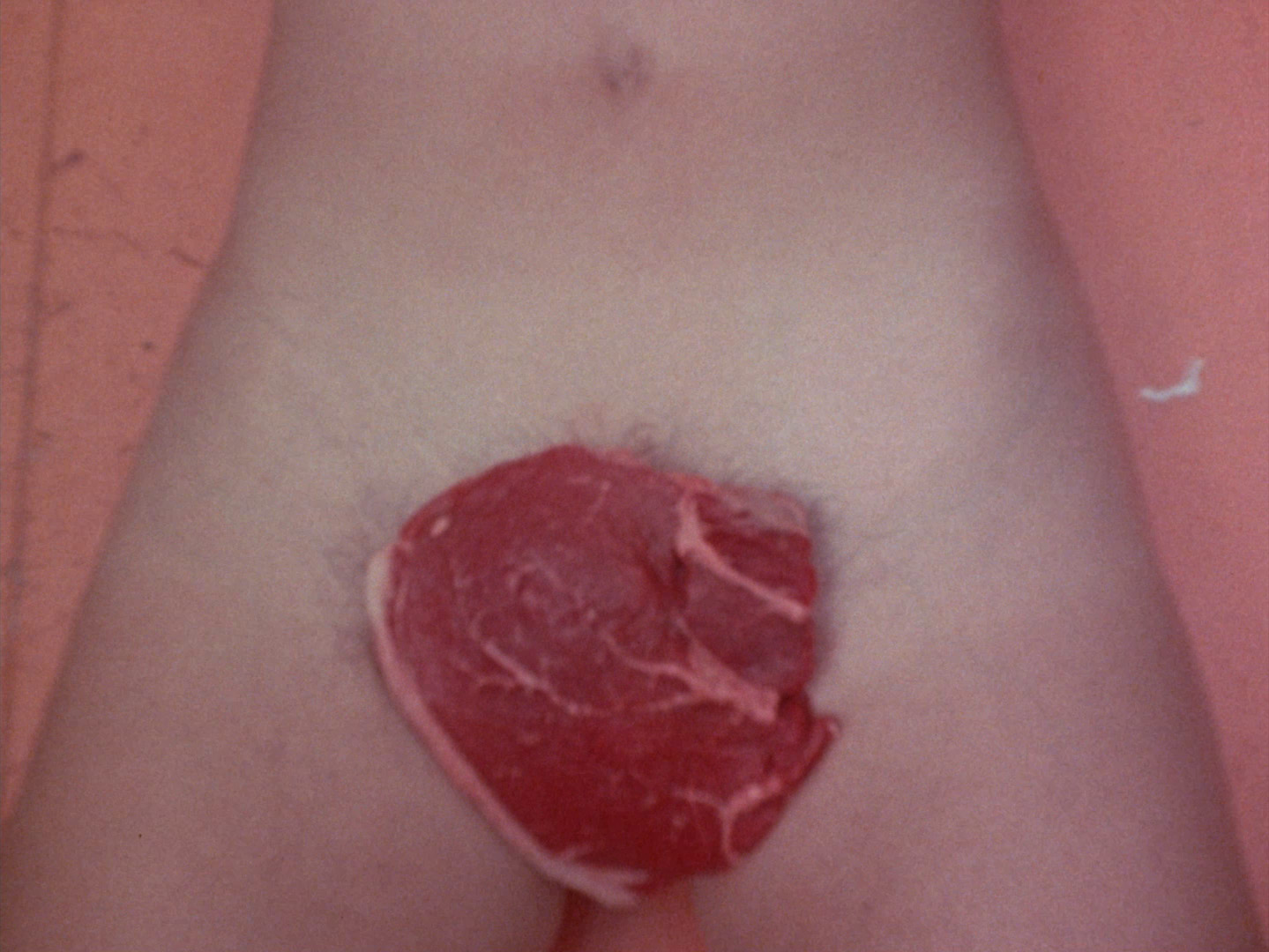













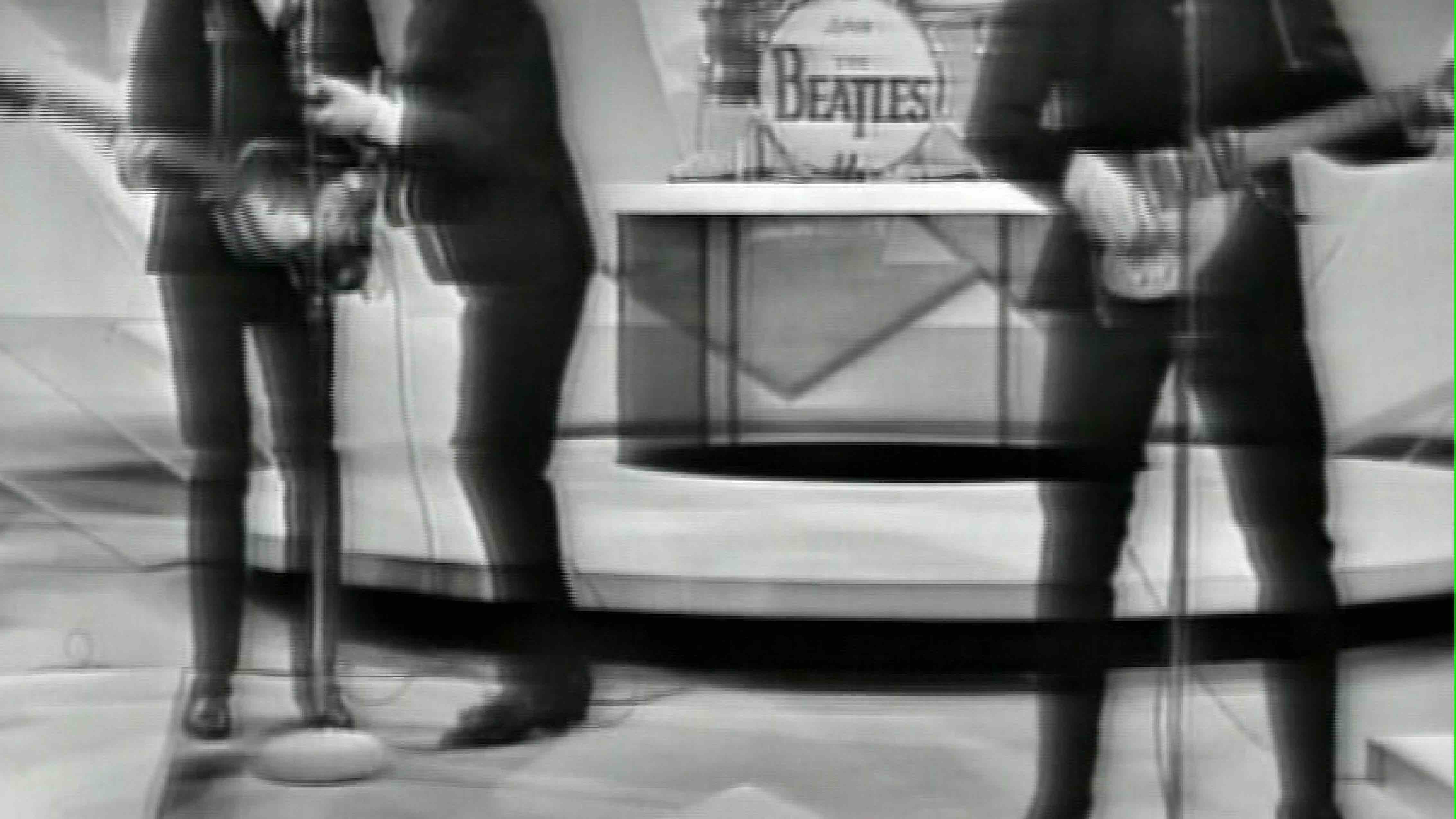



































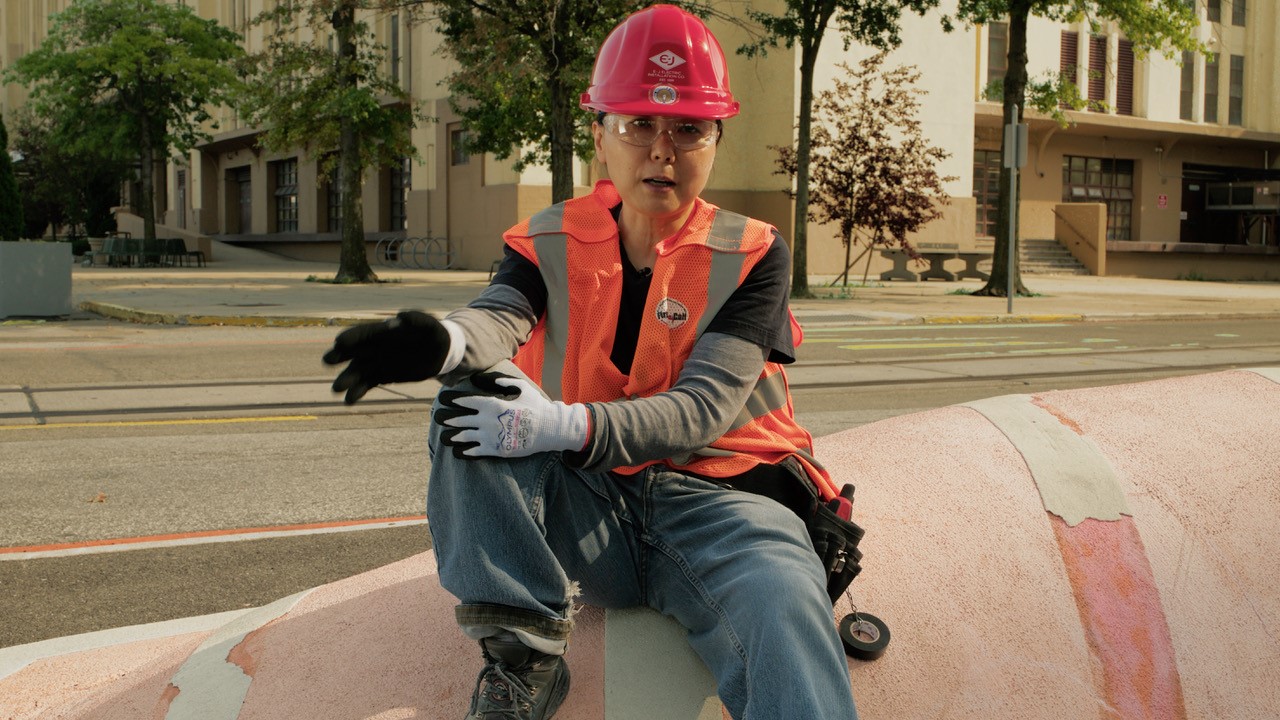



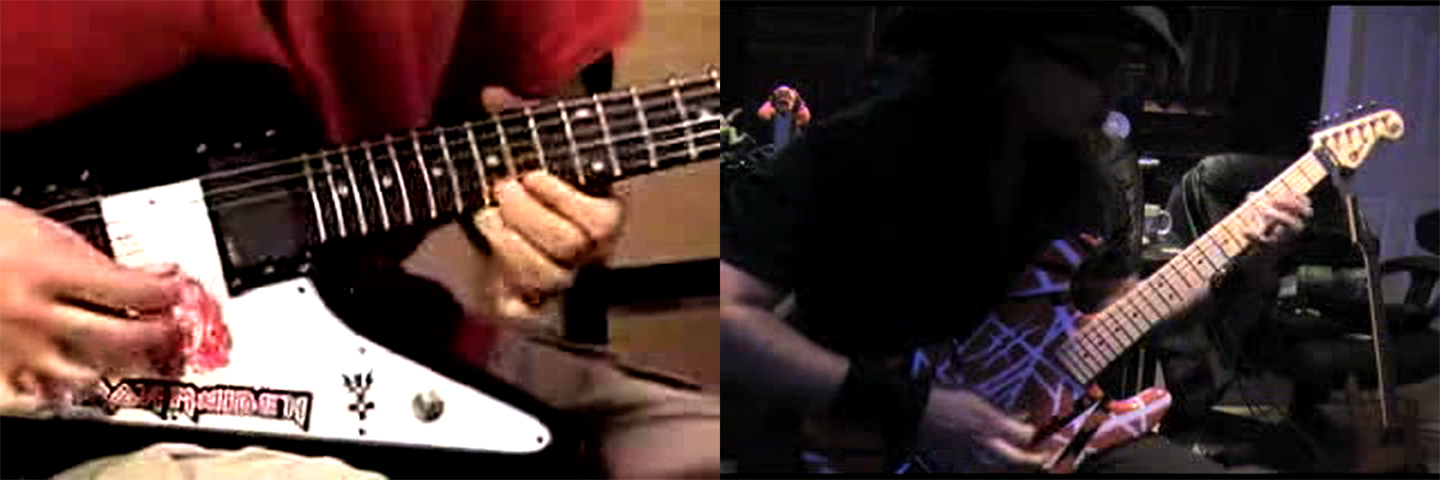



















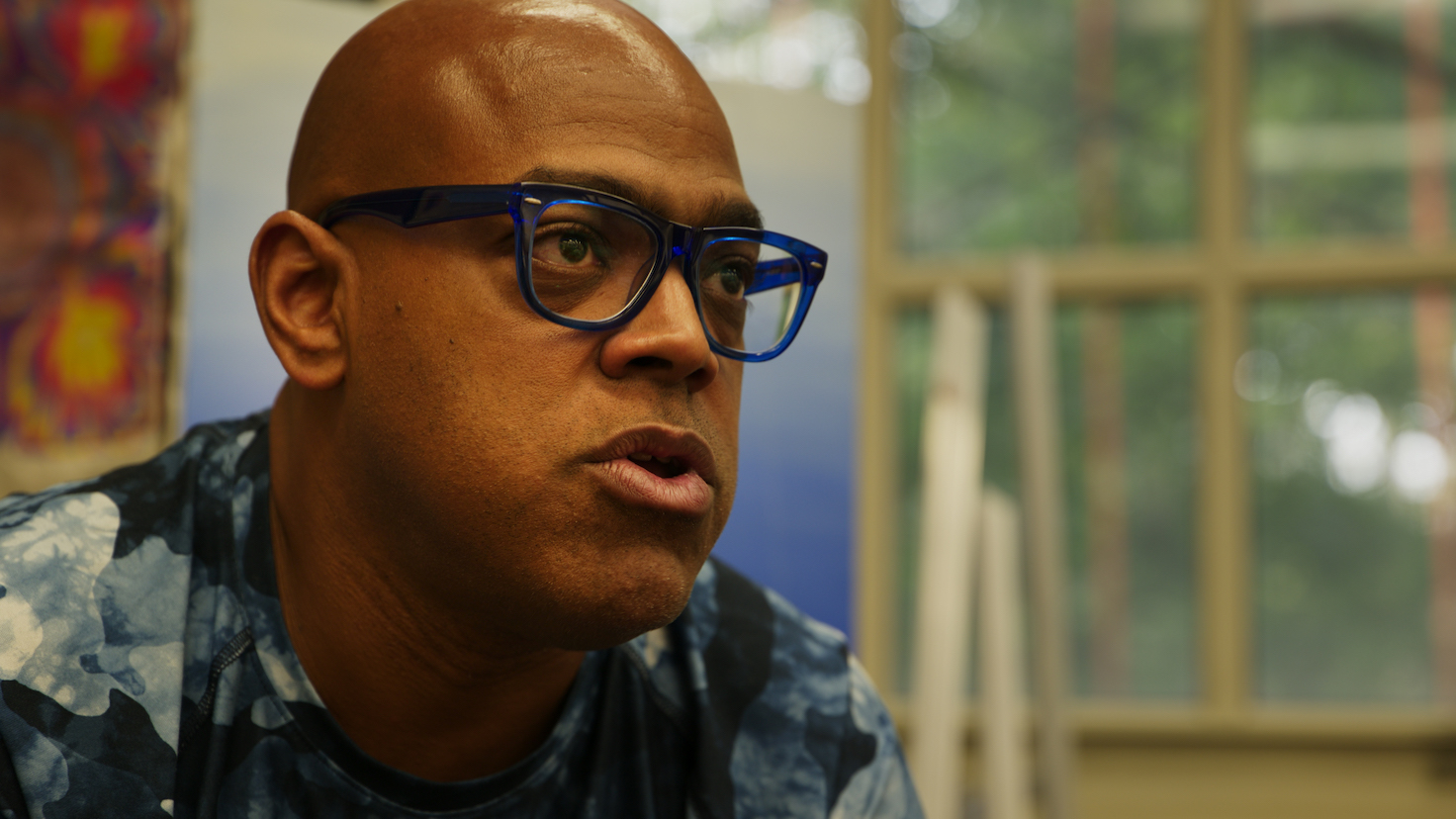






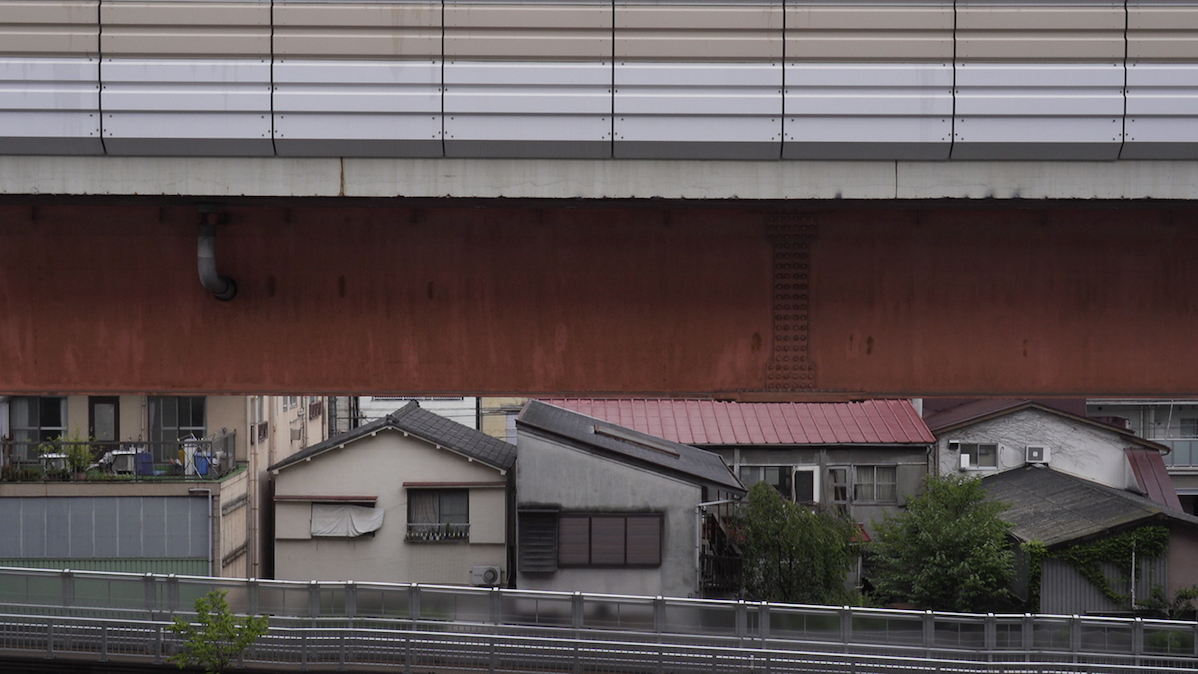





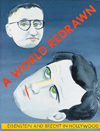






















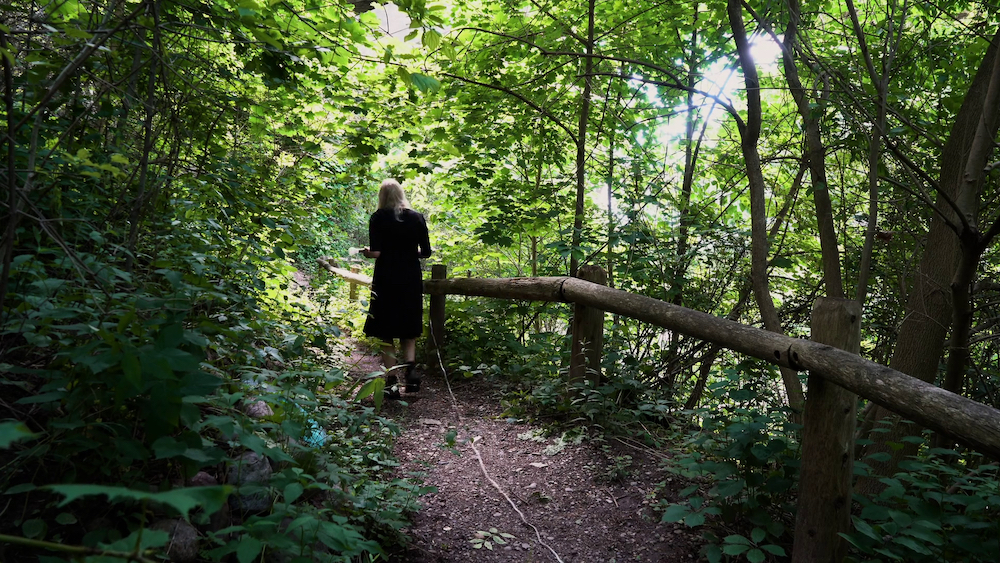

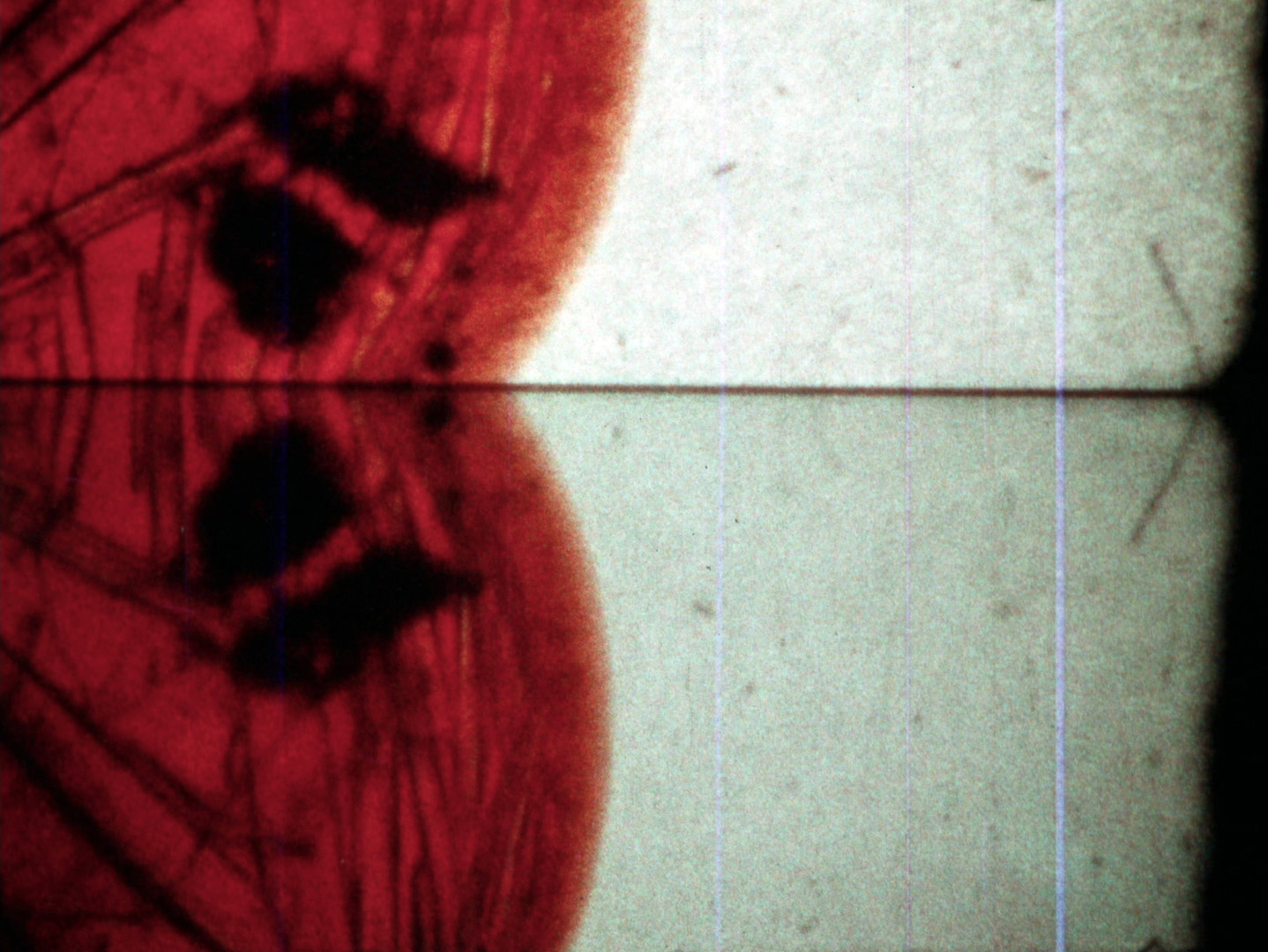






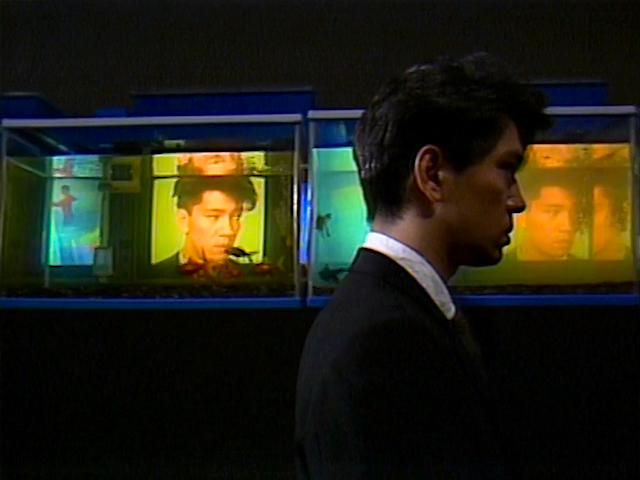





















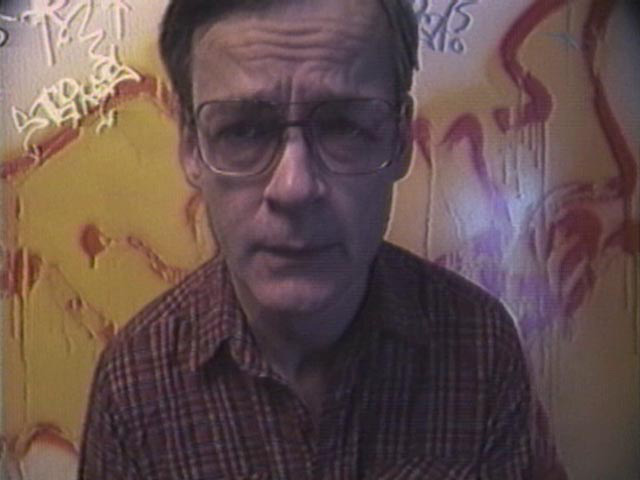


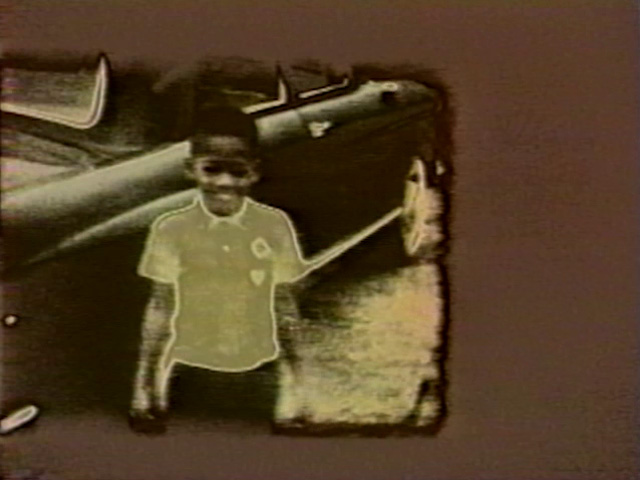



























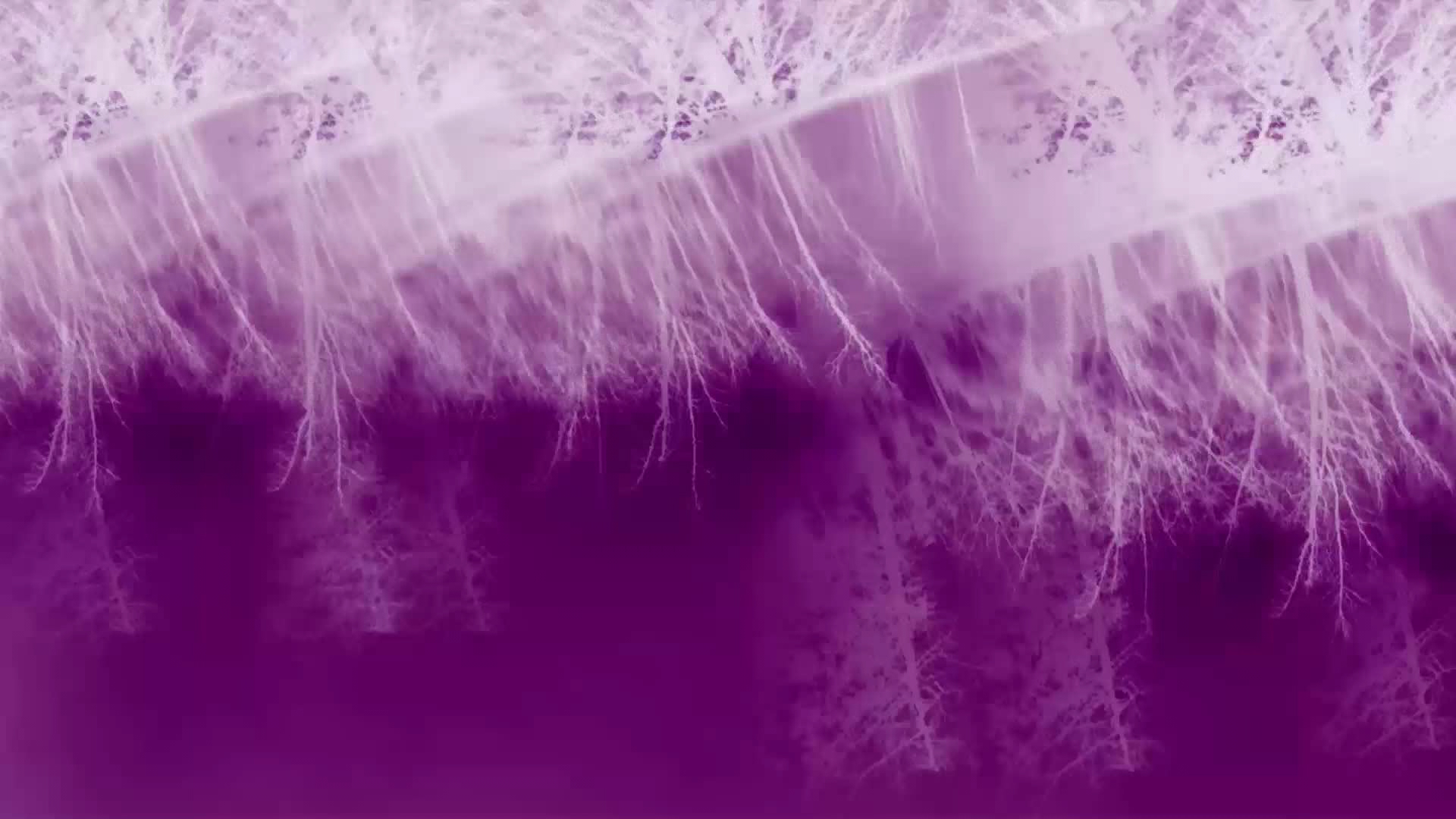






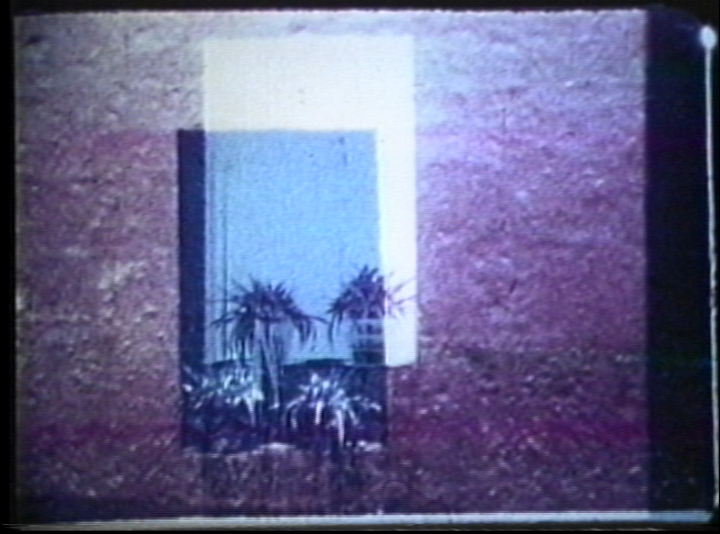









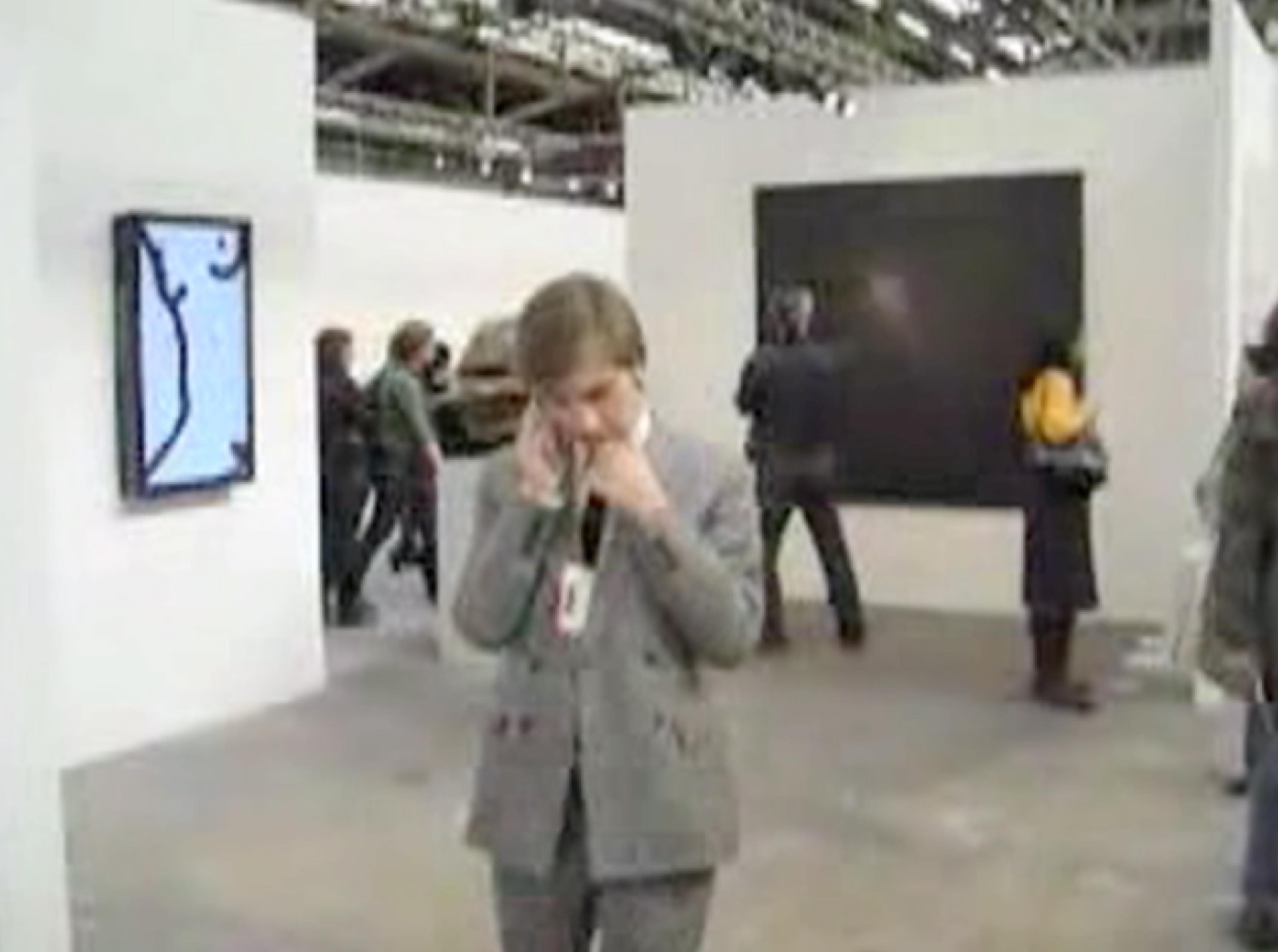


























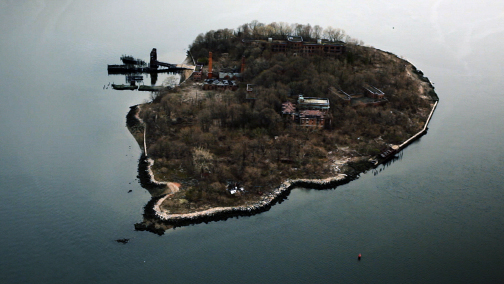




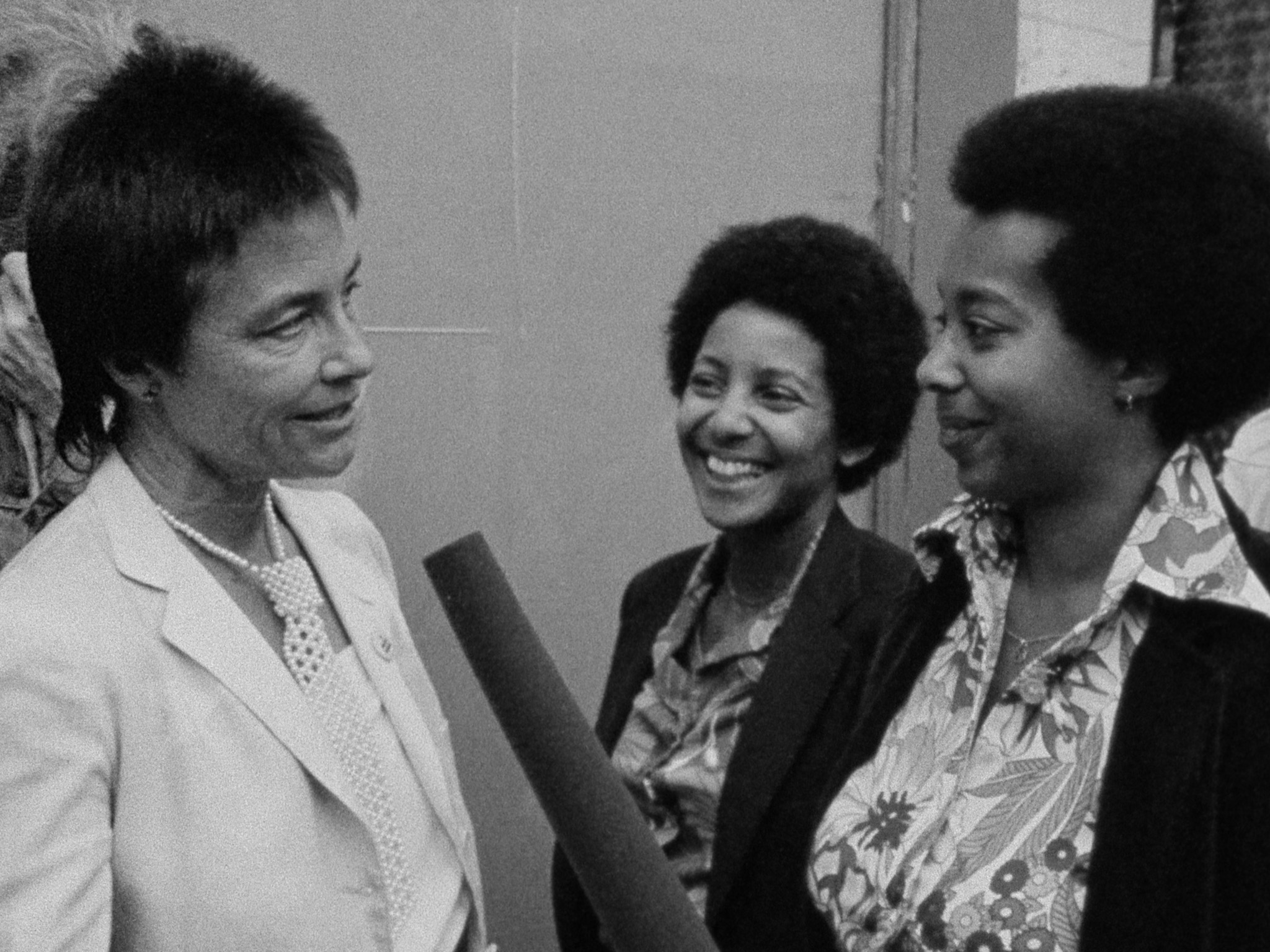





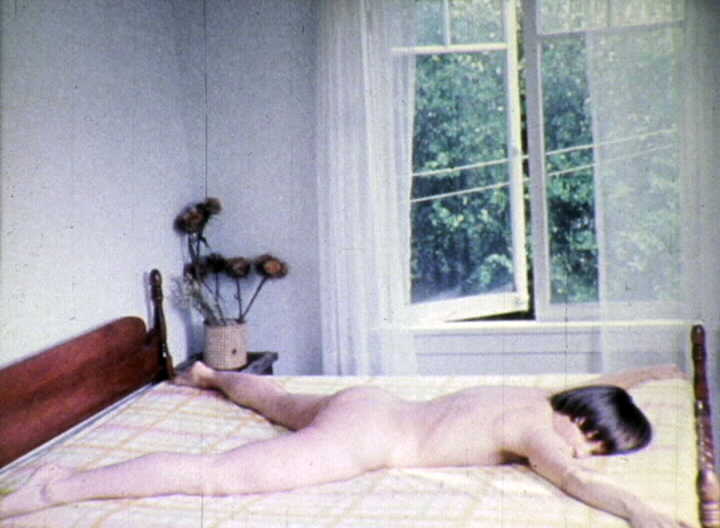




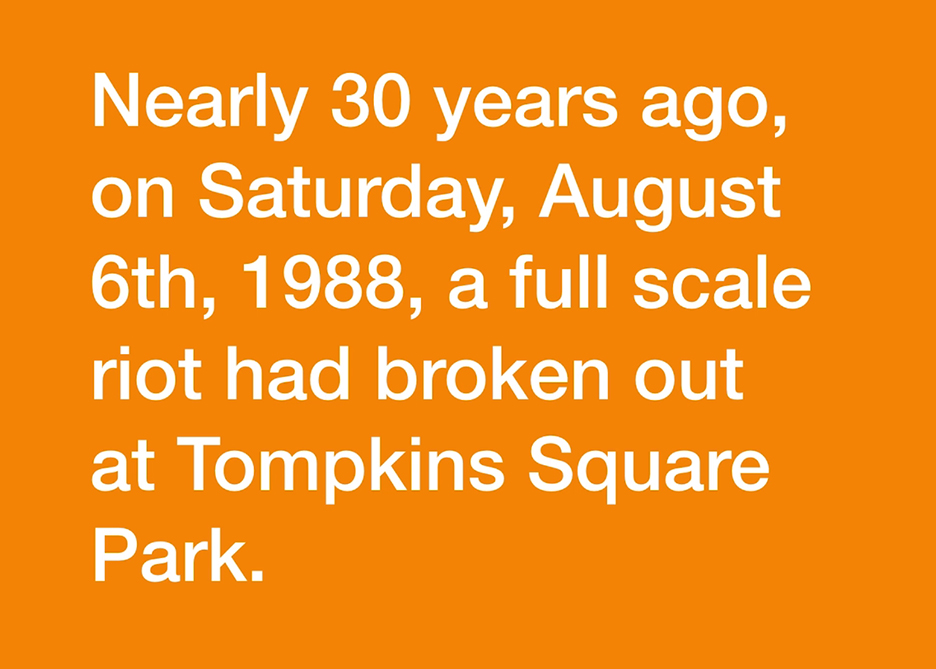














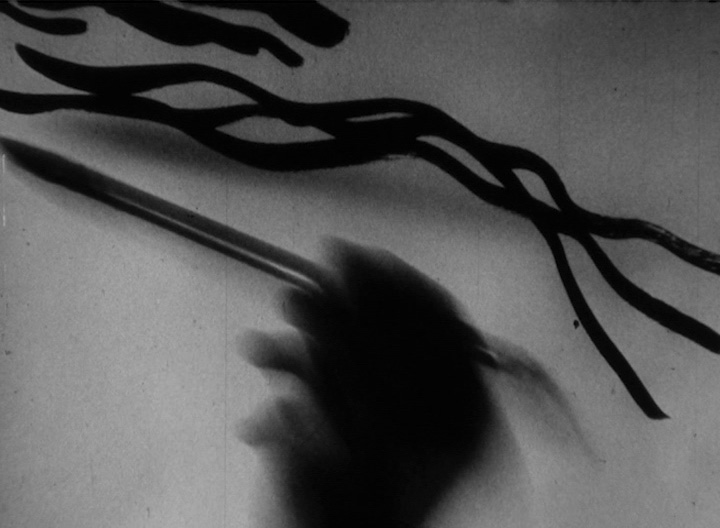



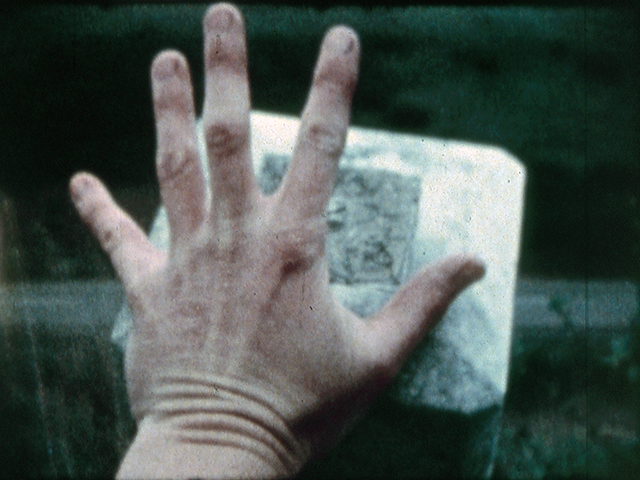







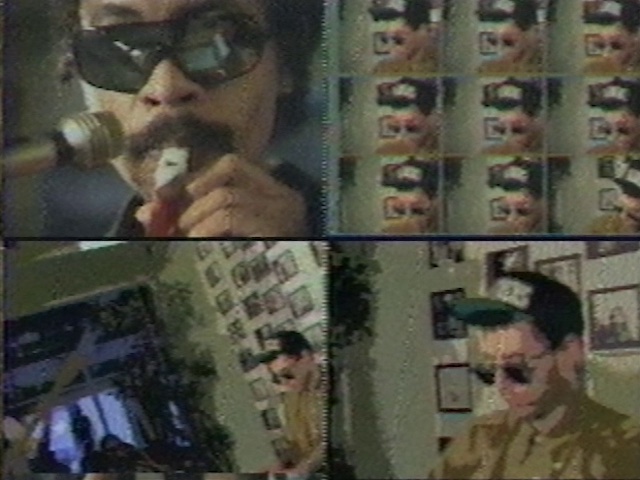
















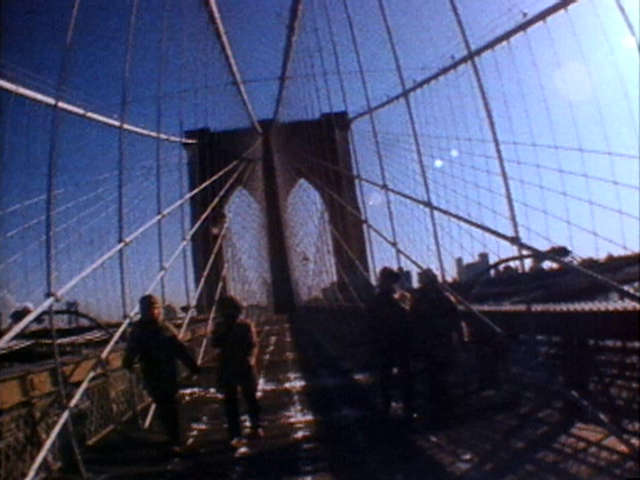




































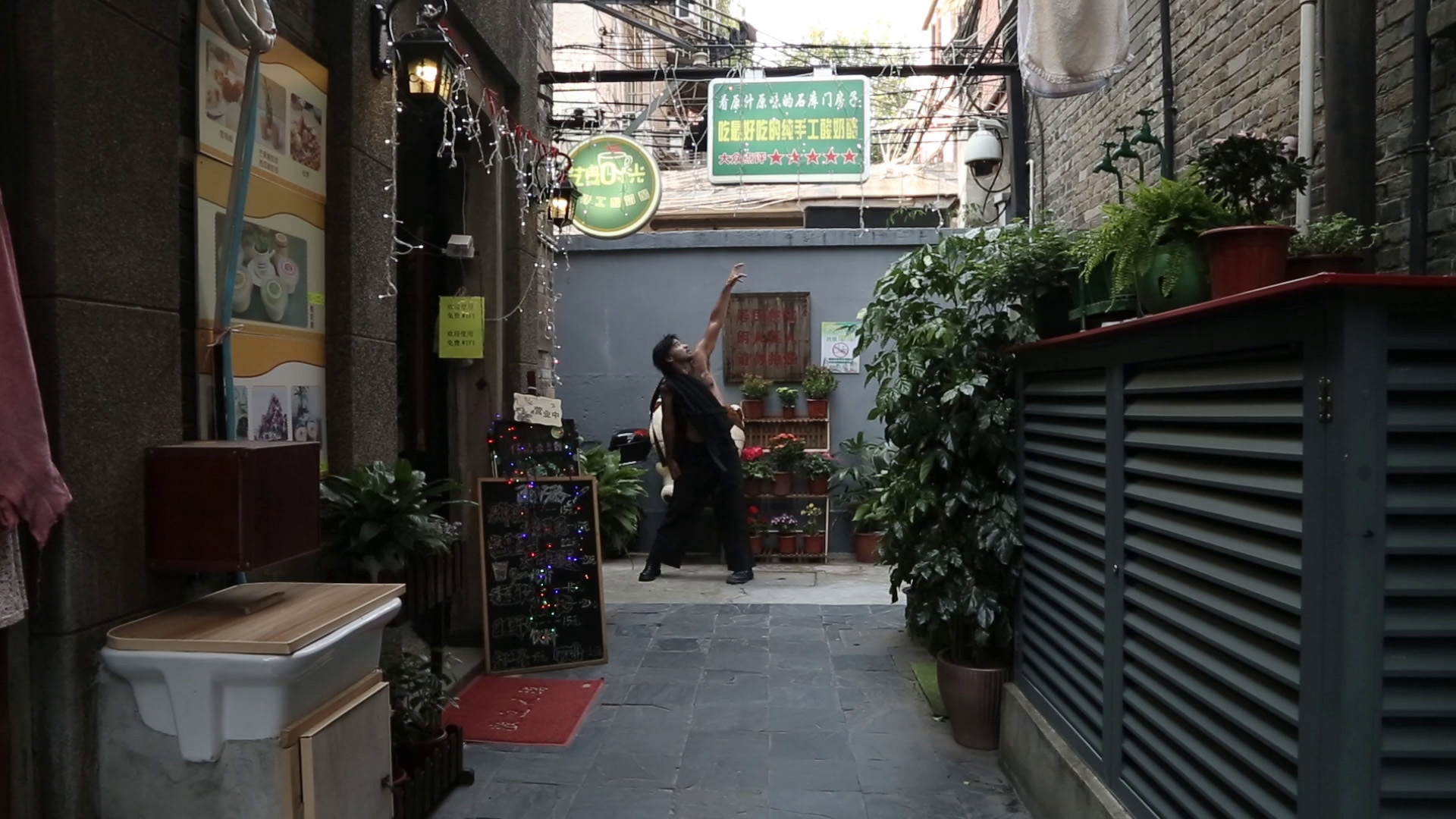





























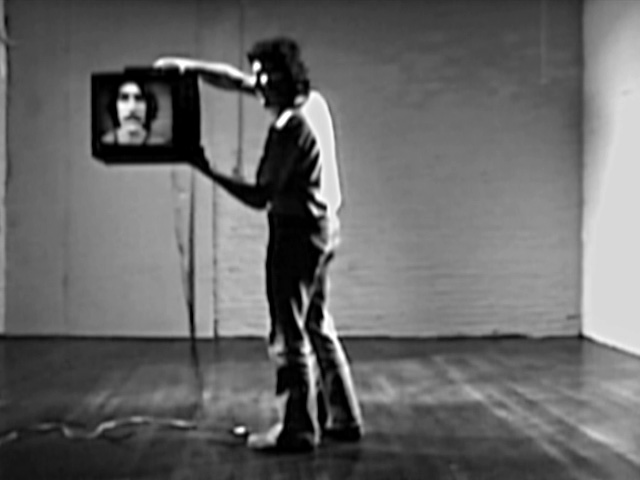
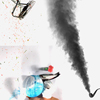

































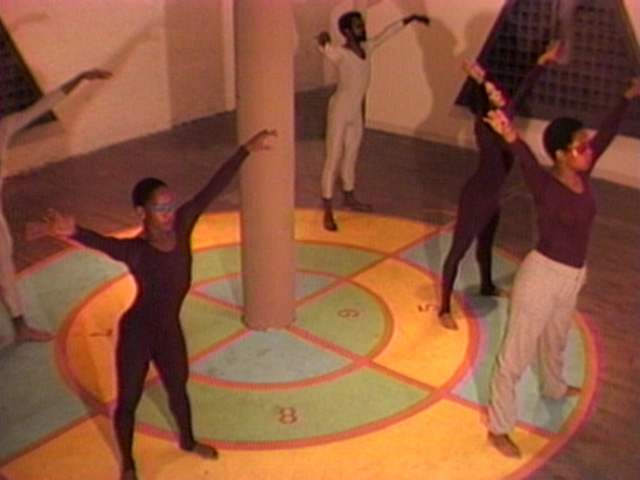












































































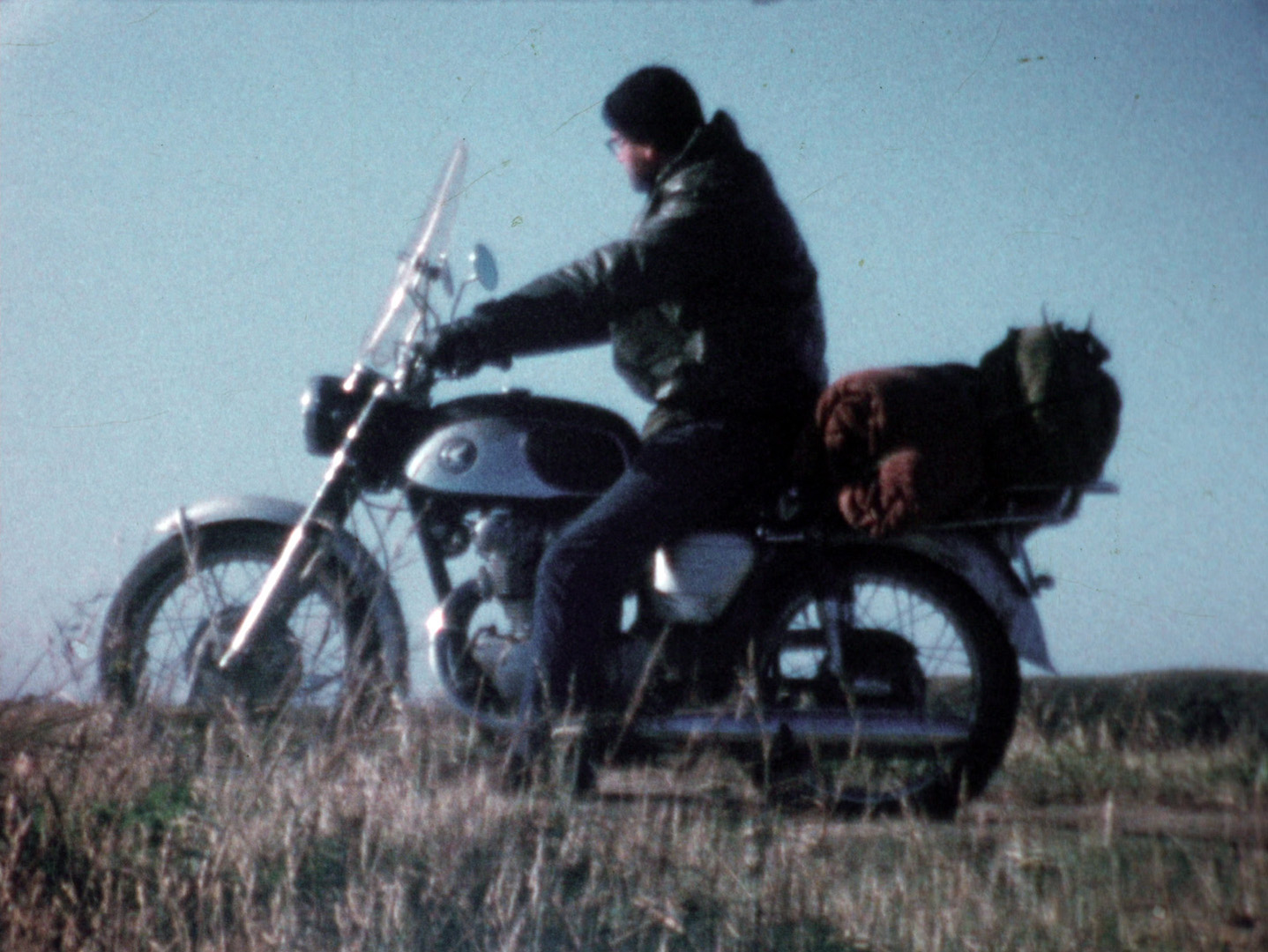
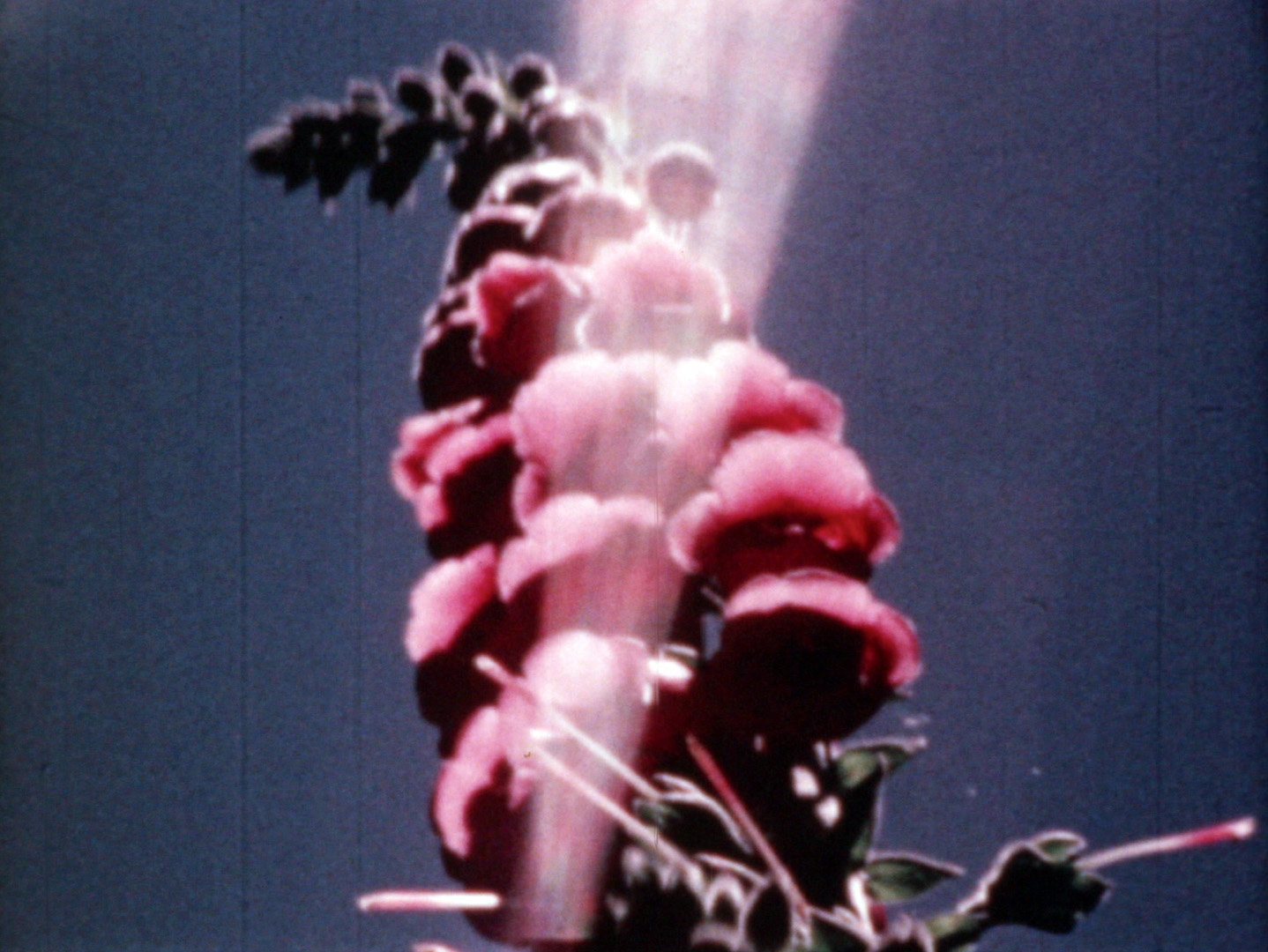


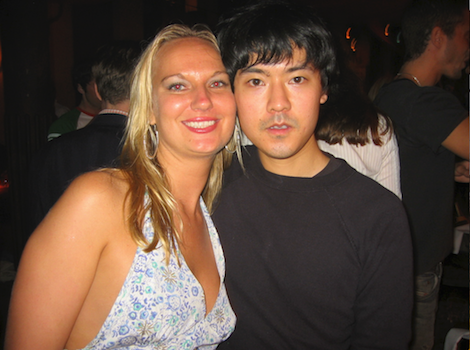
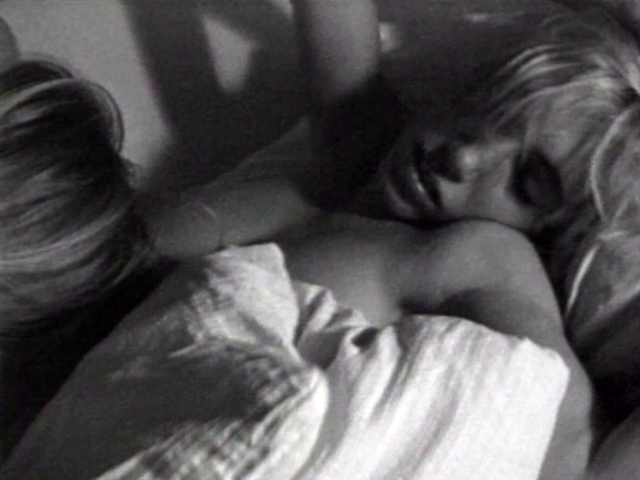











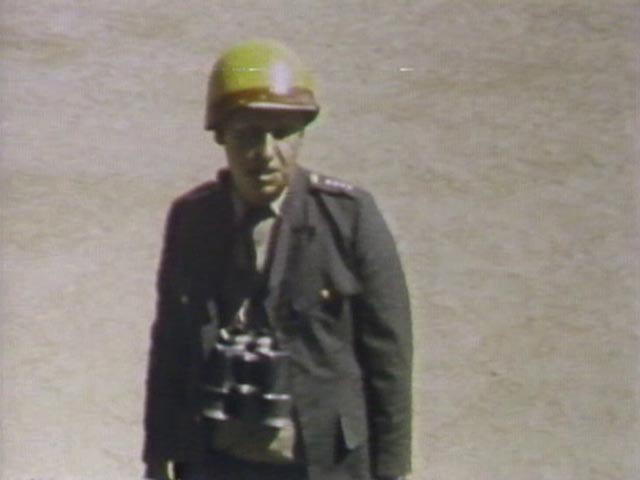

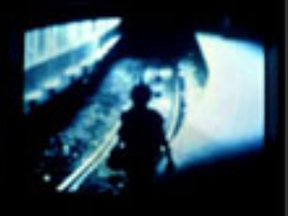









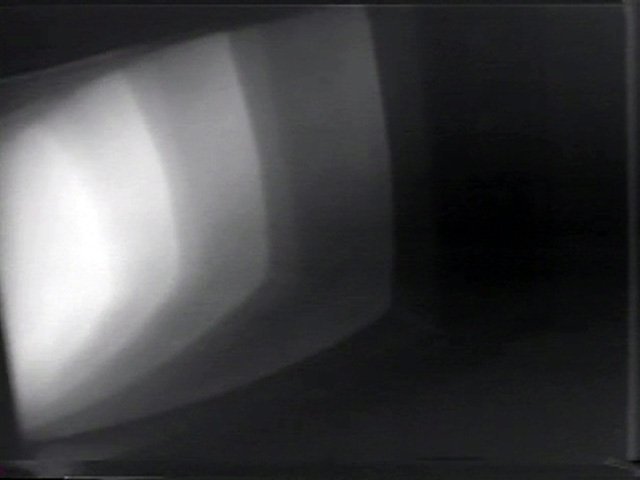











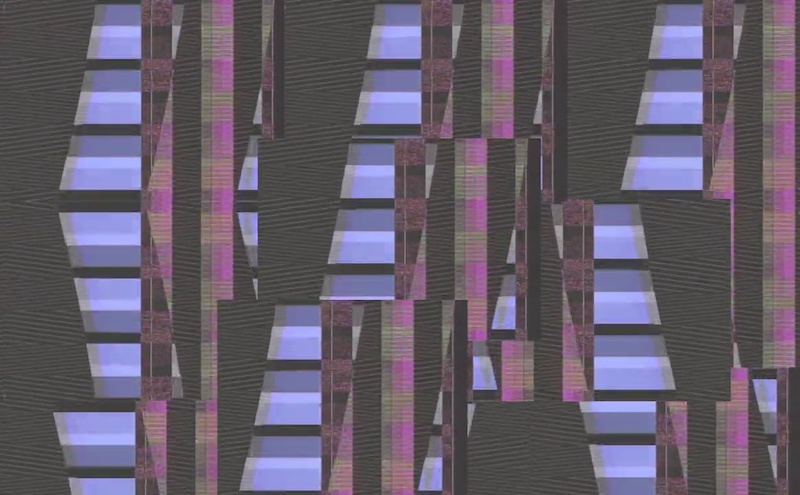
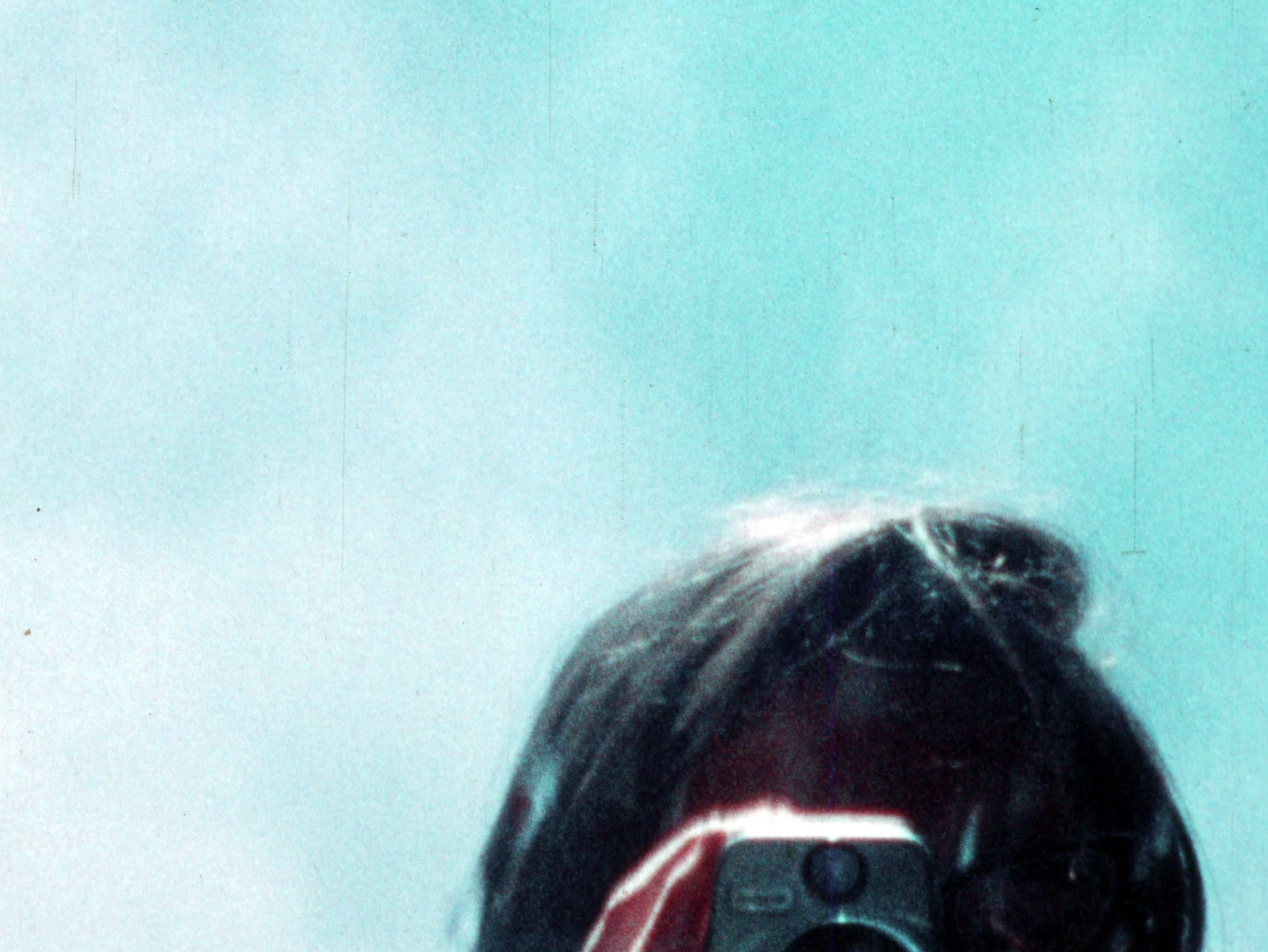




















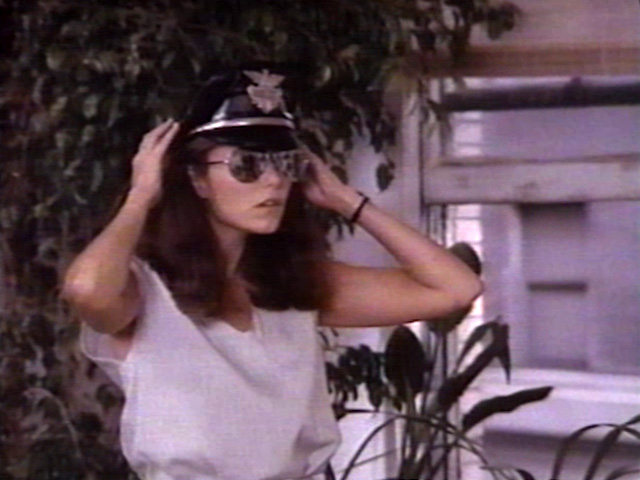










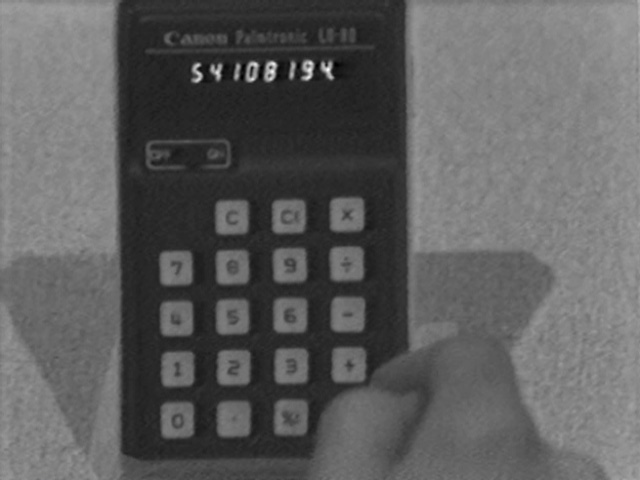


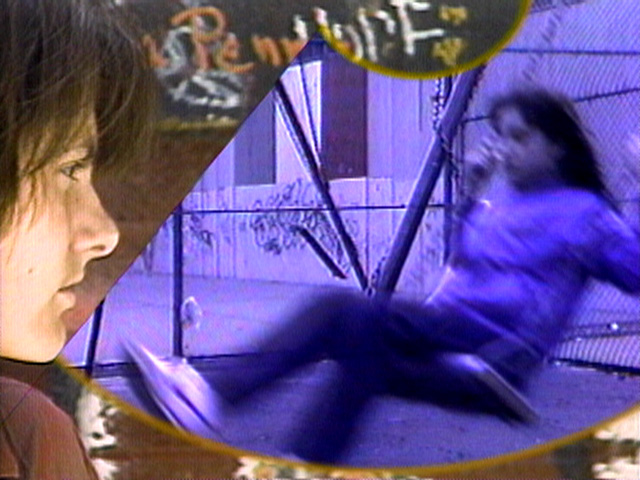
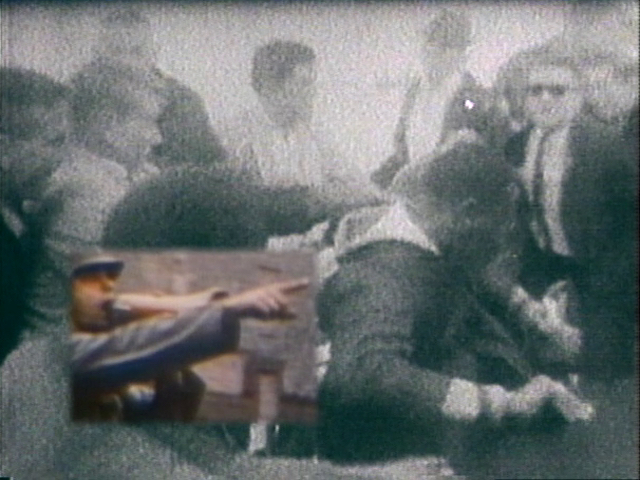







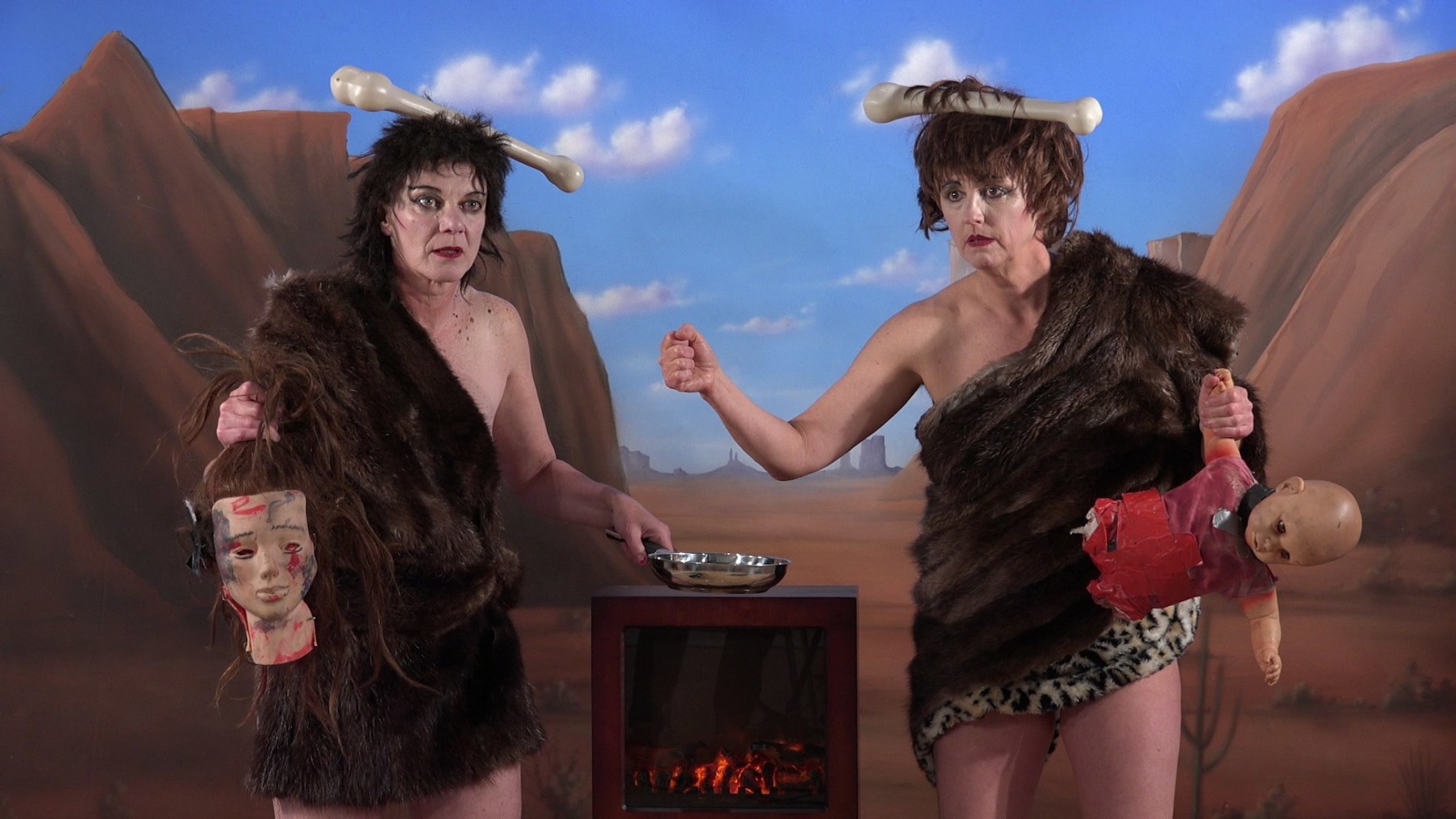








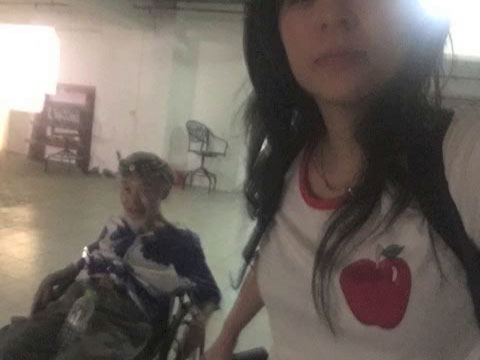







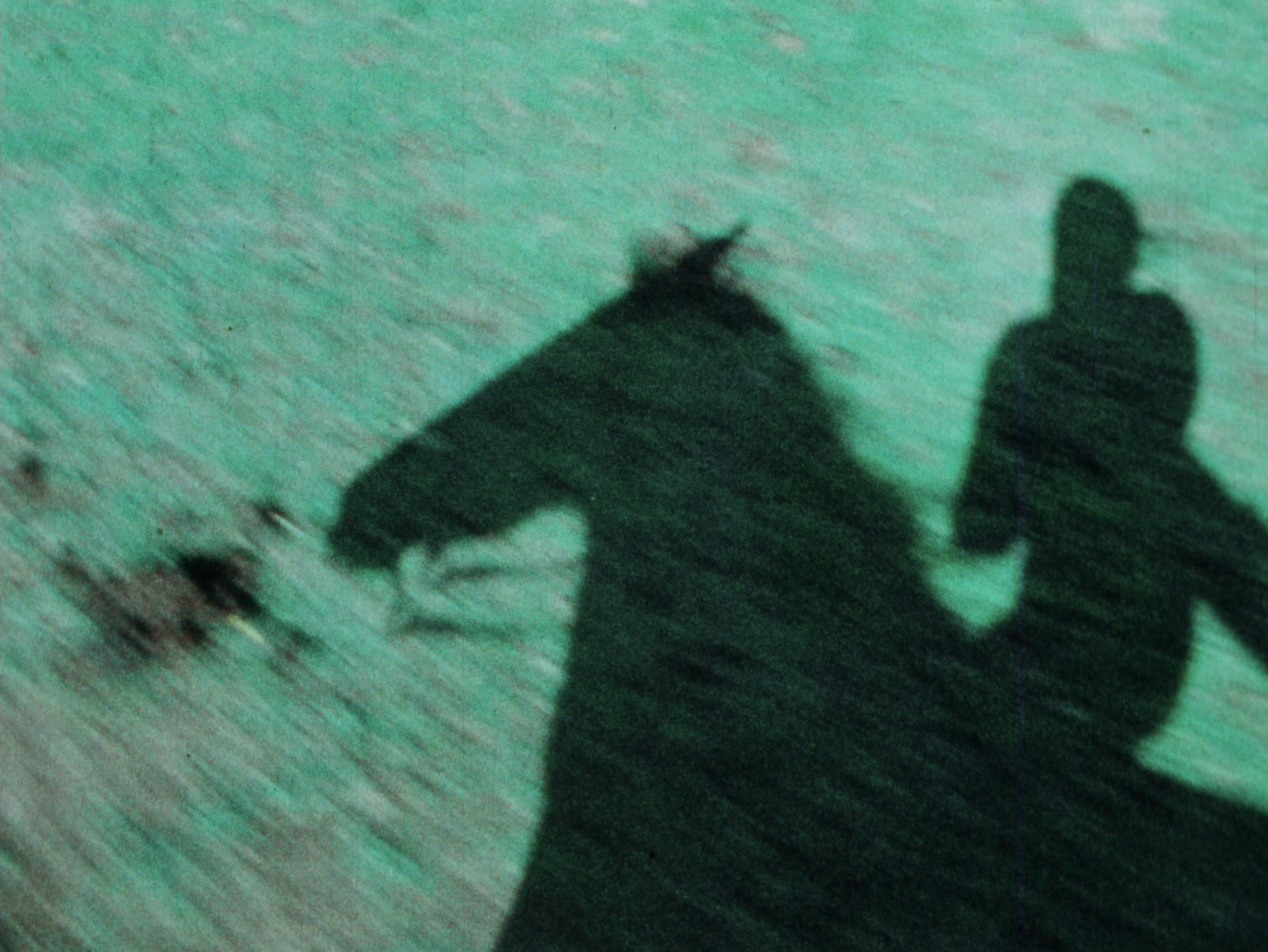






























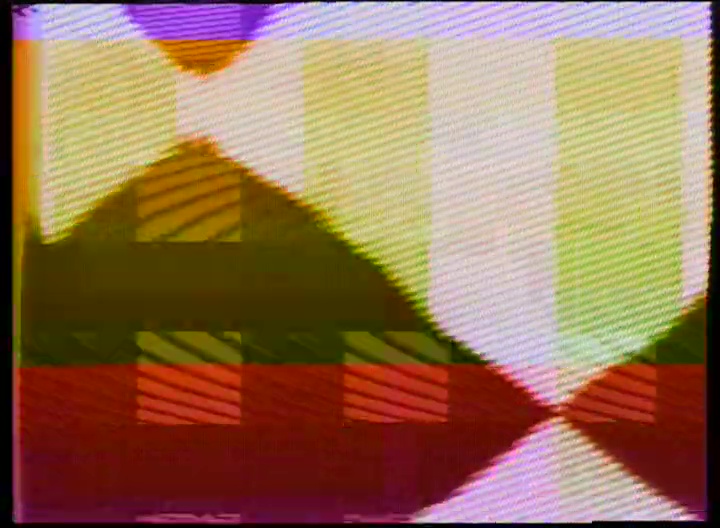












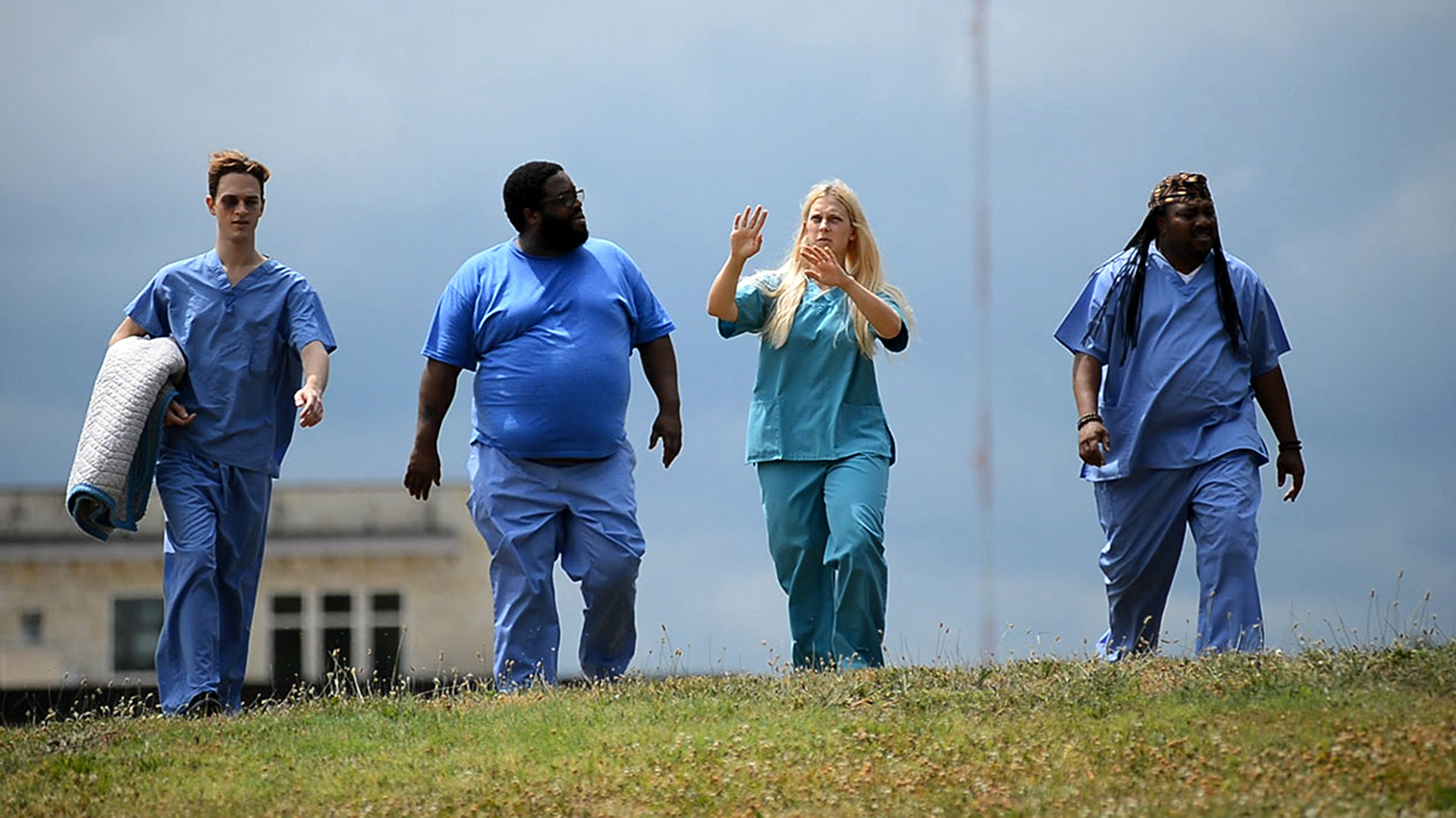
















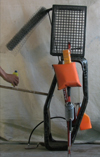
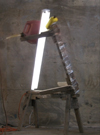
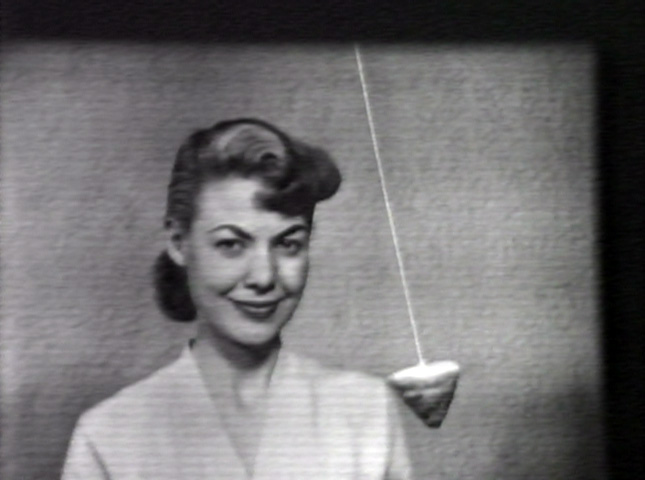

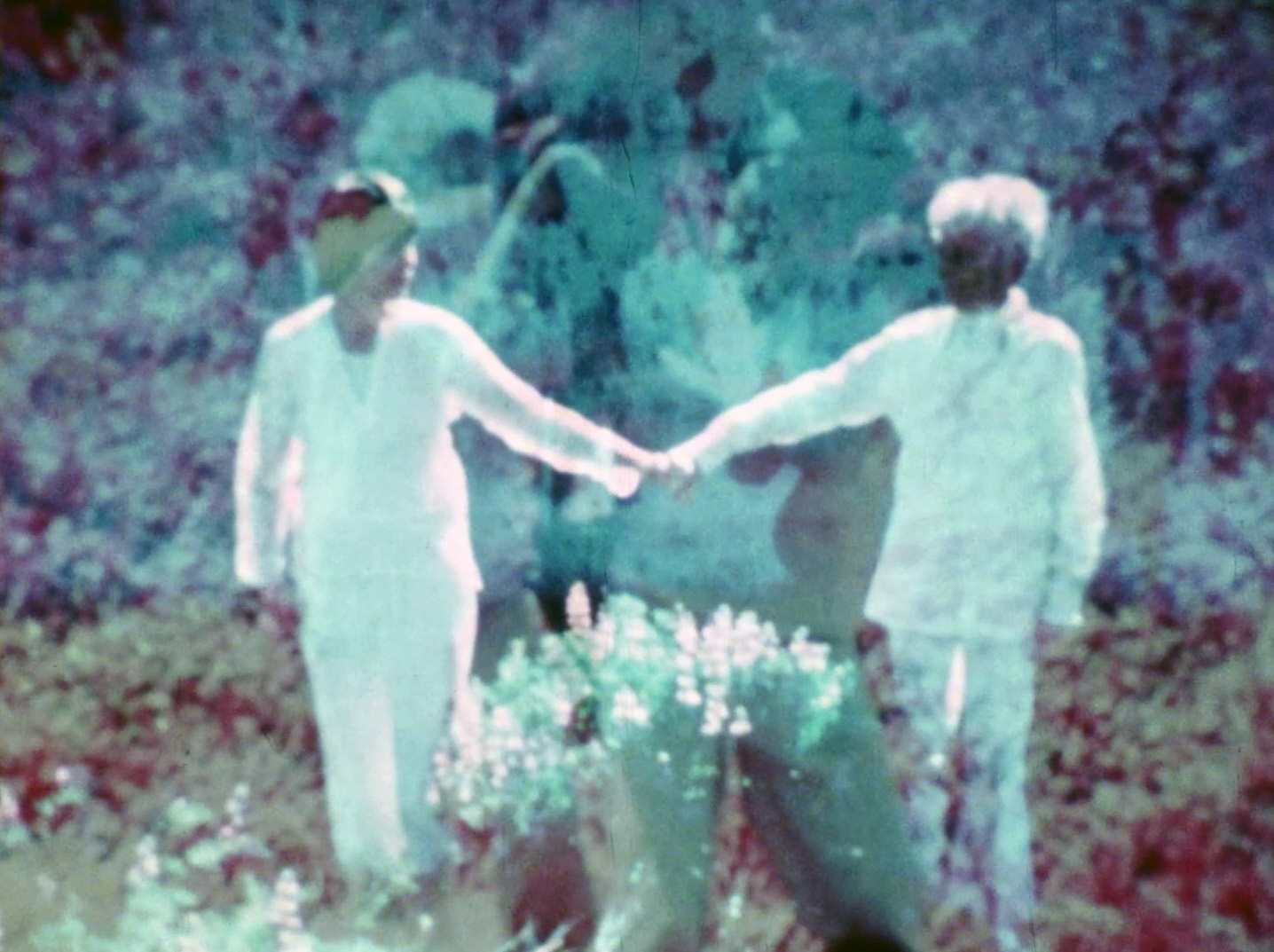
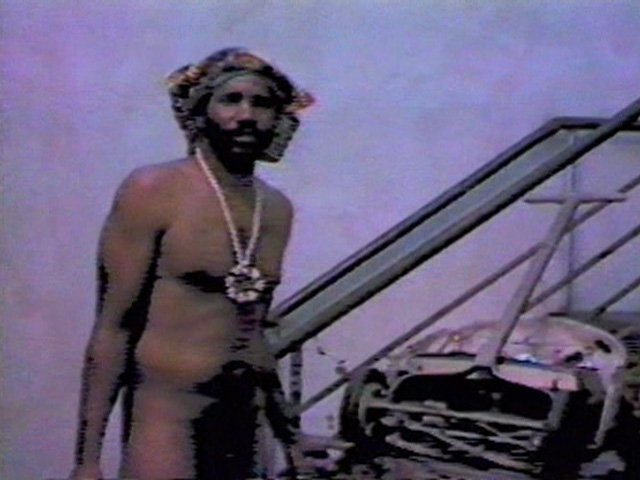

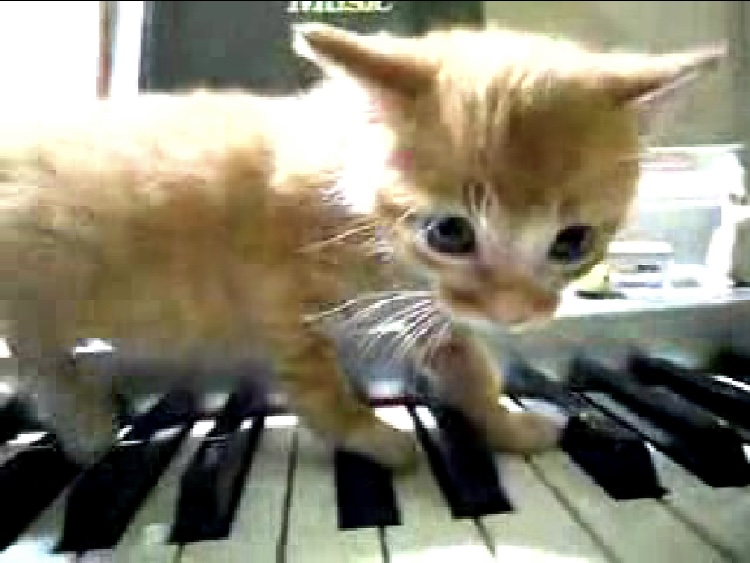




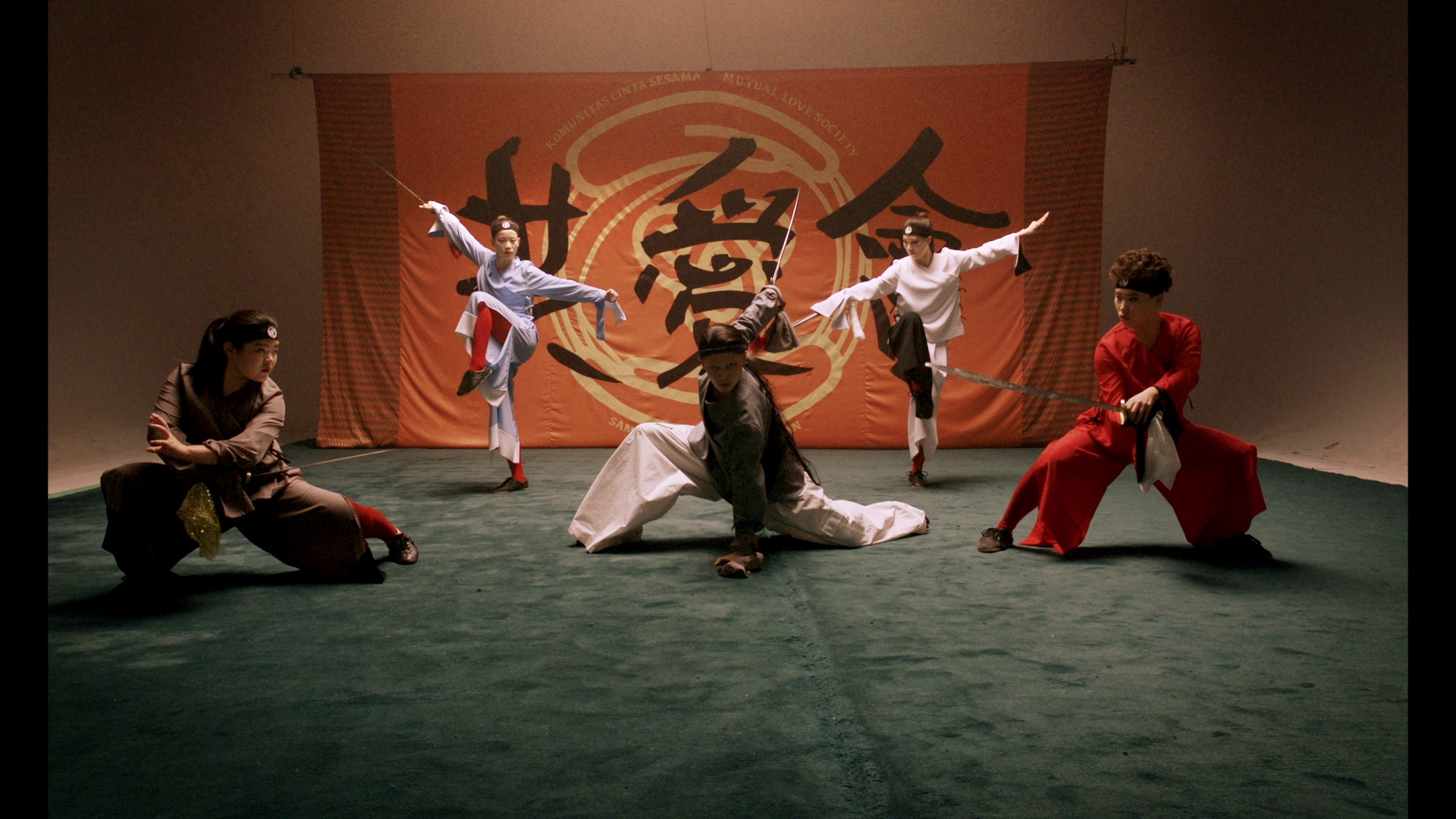




















3_s.jpg)















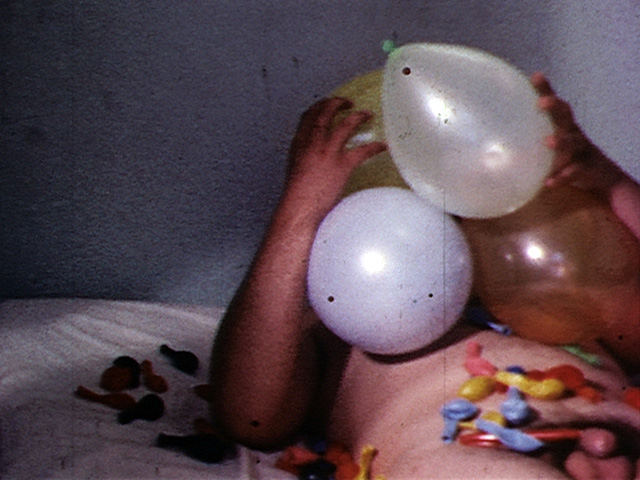




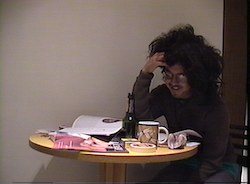






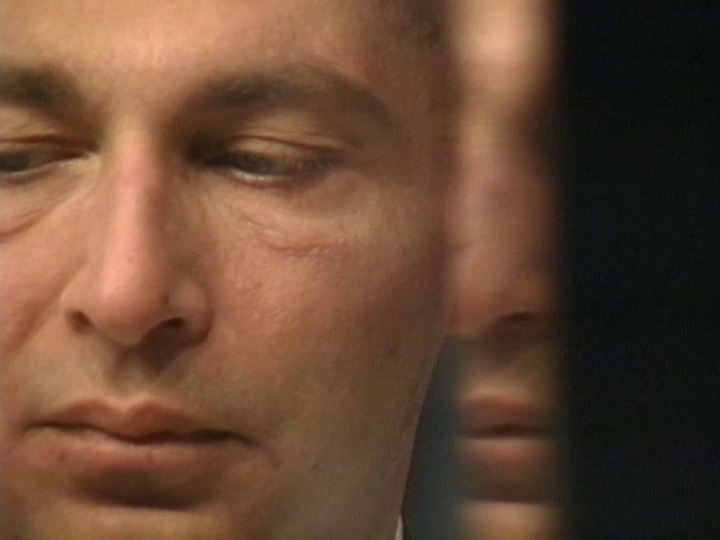







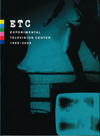
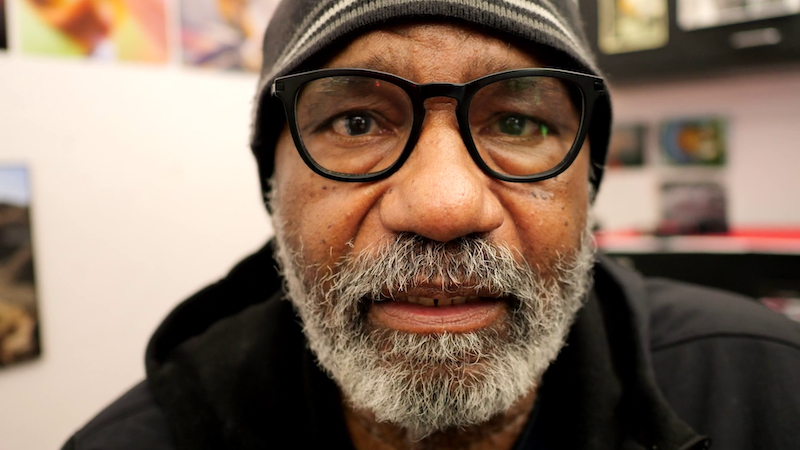

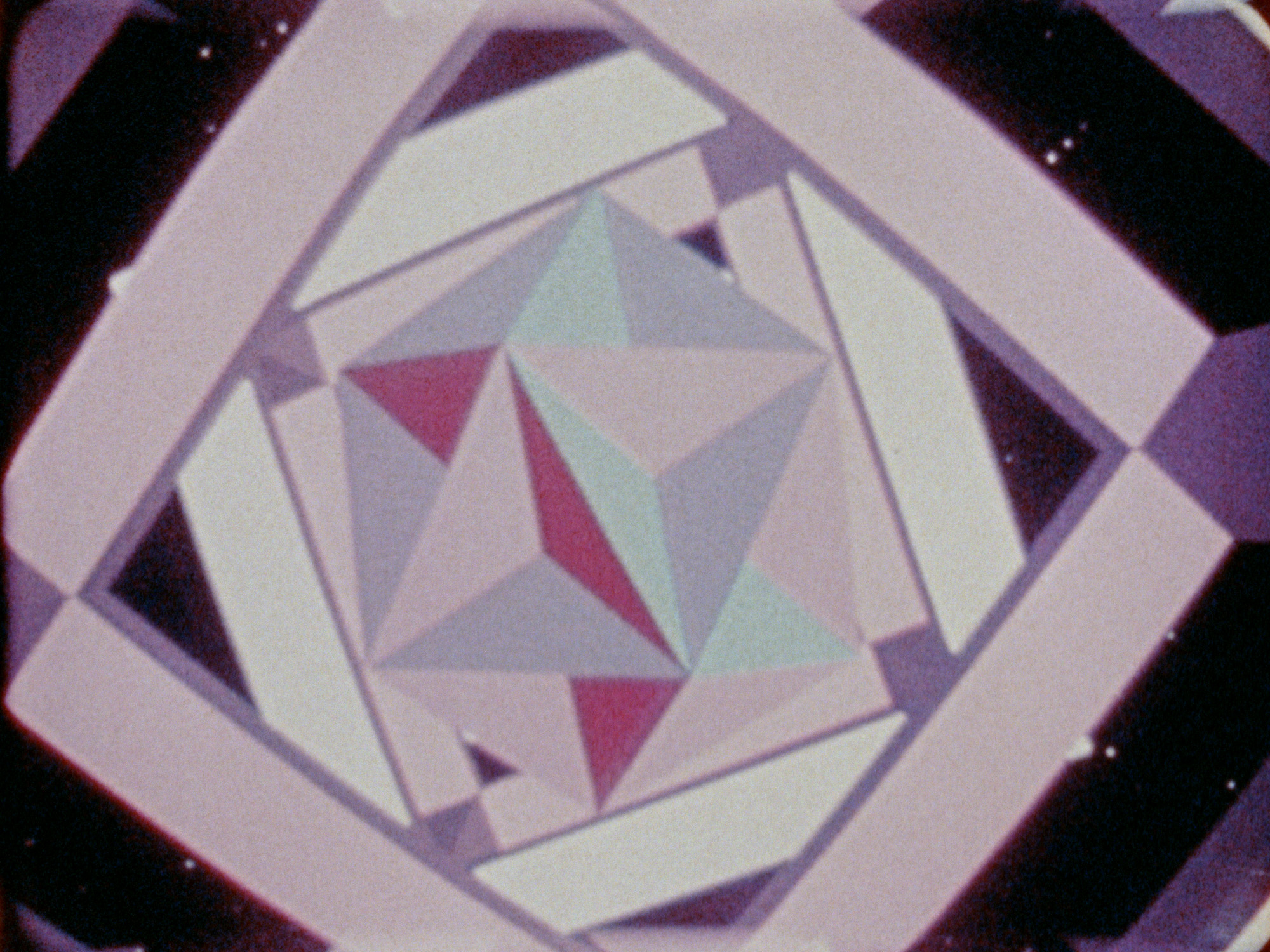



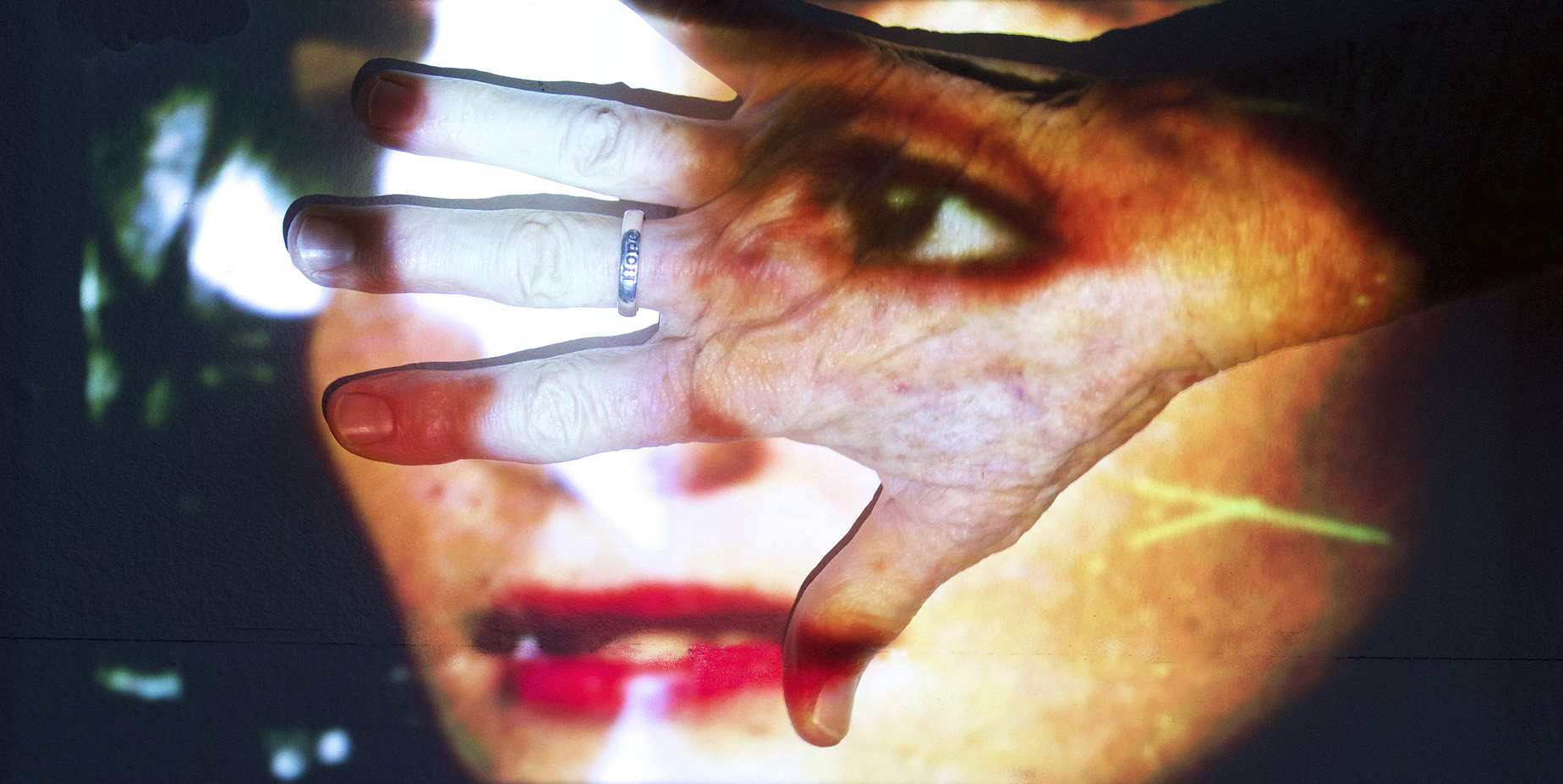






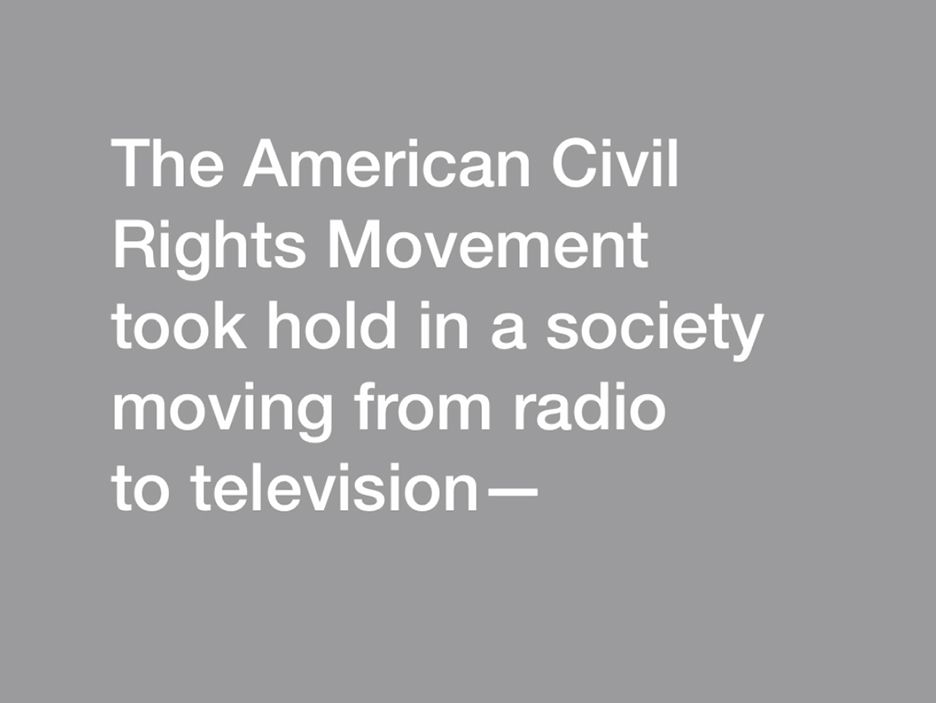
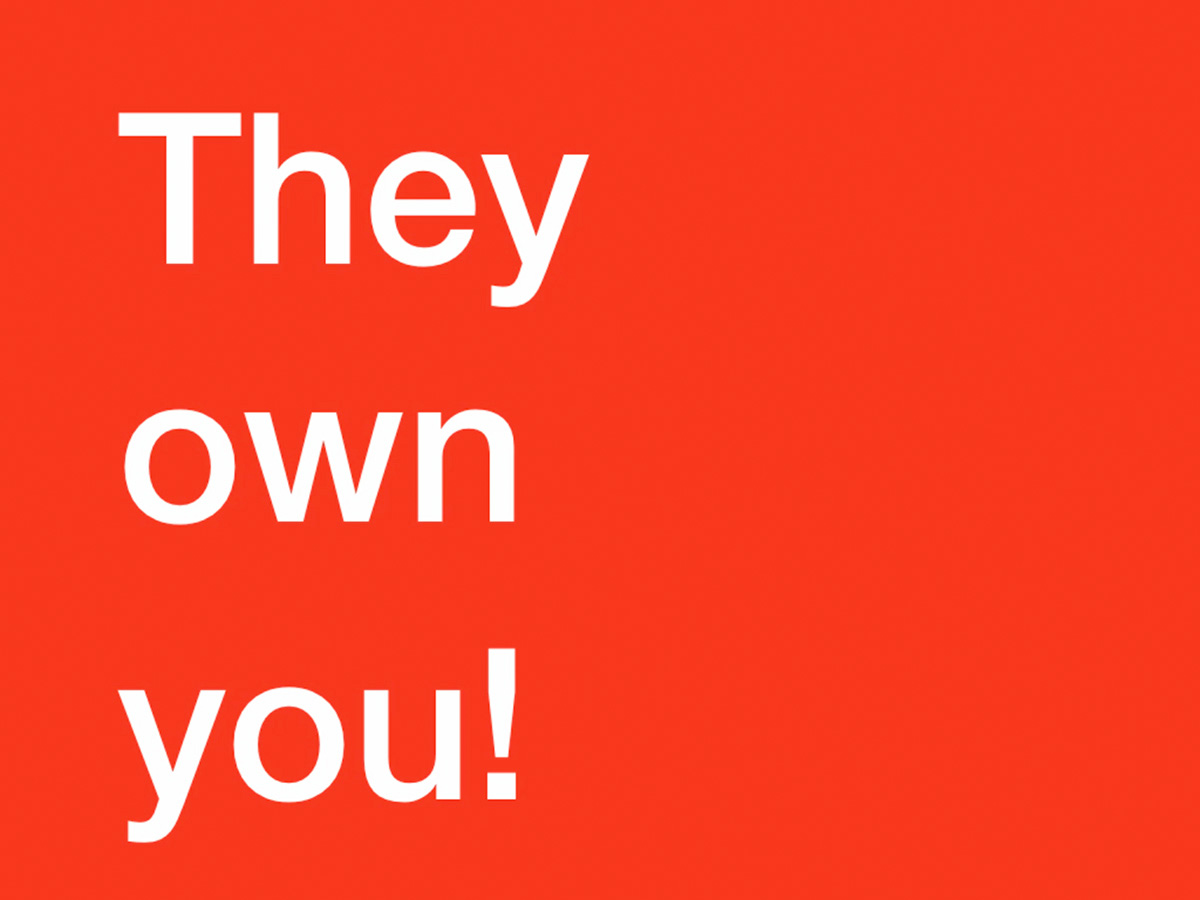
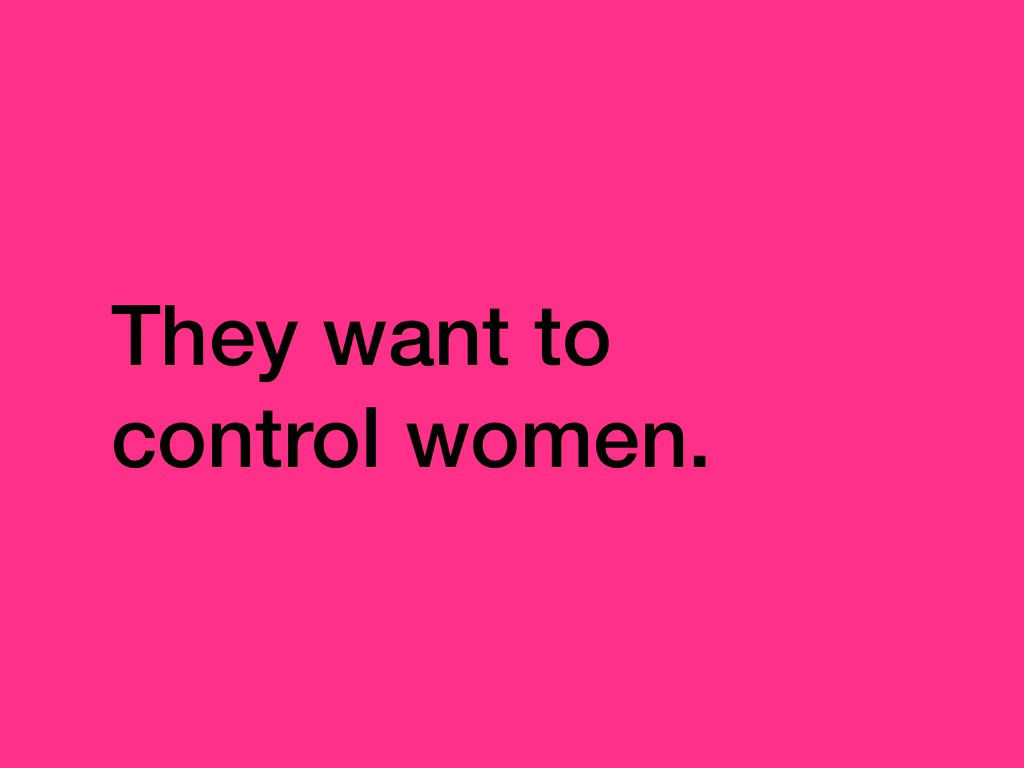

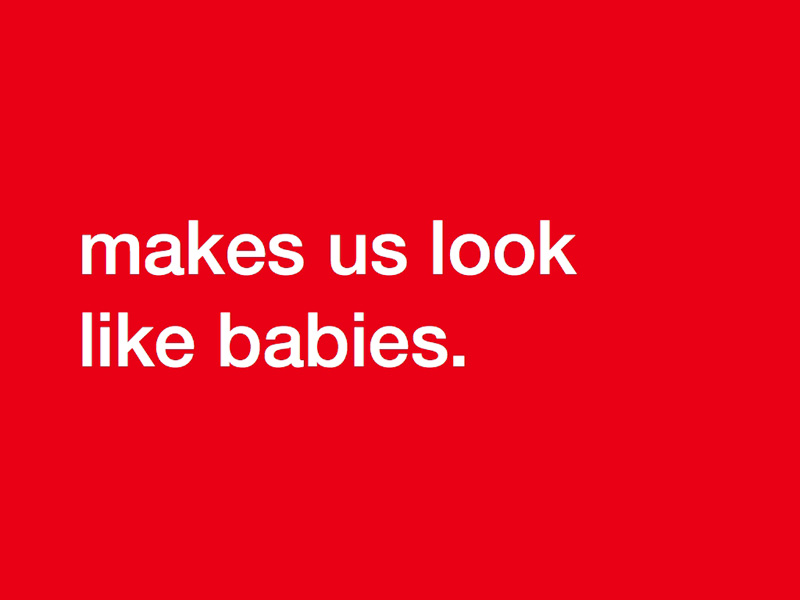
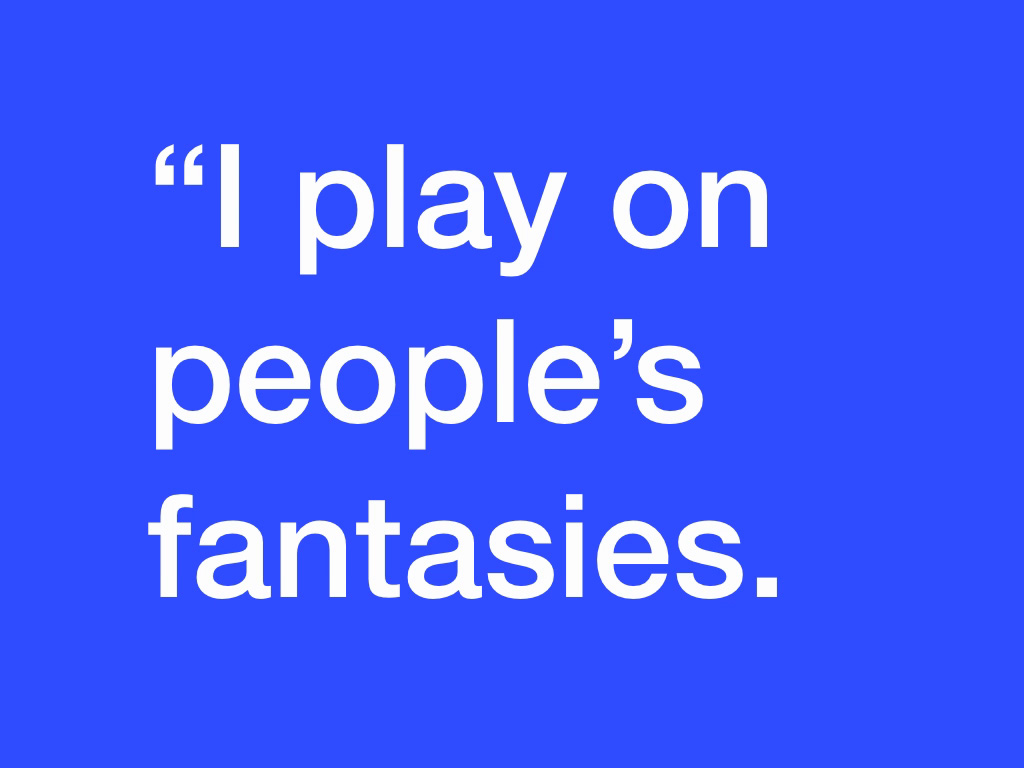









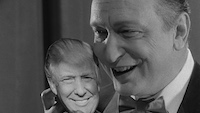









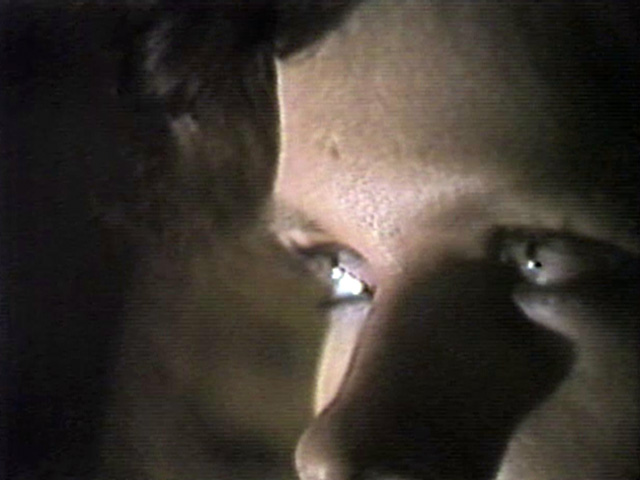






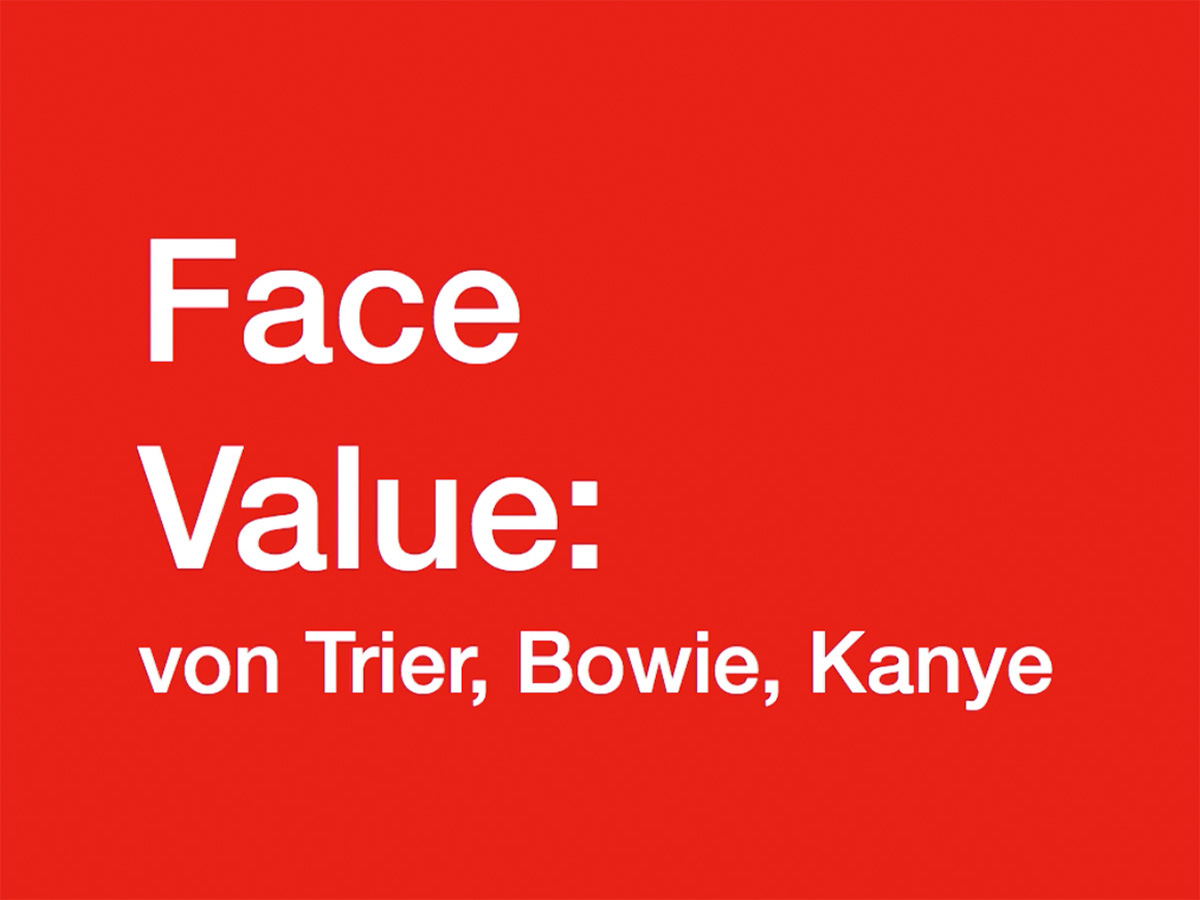




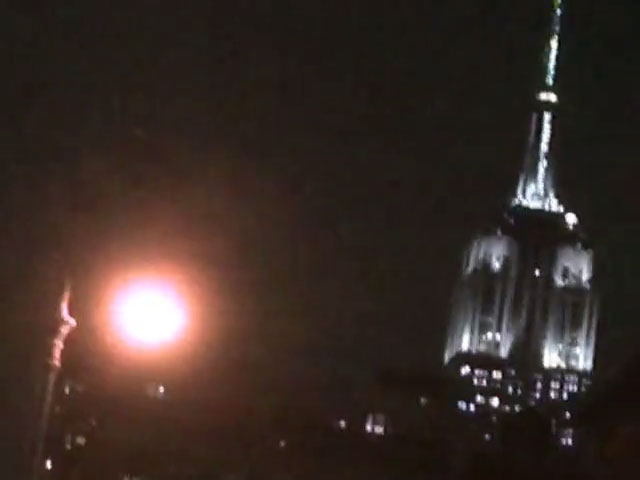


















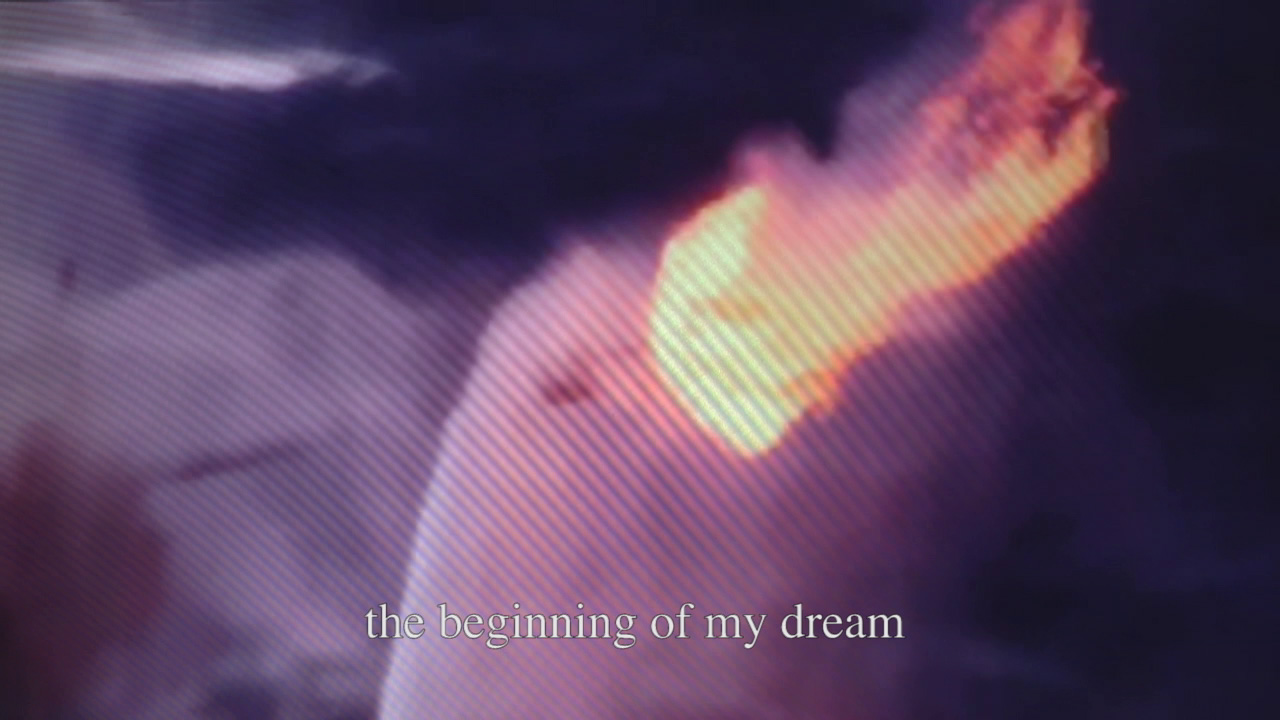


























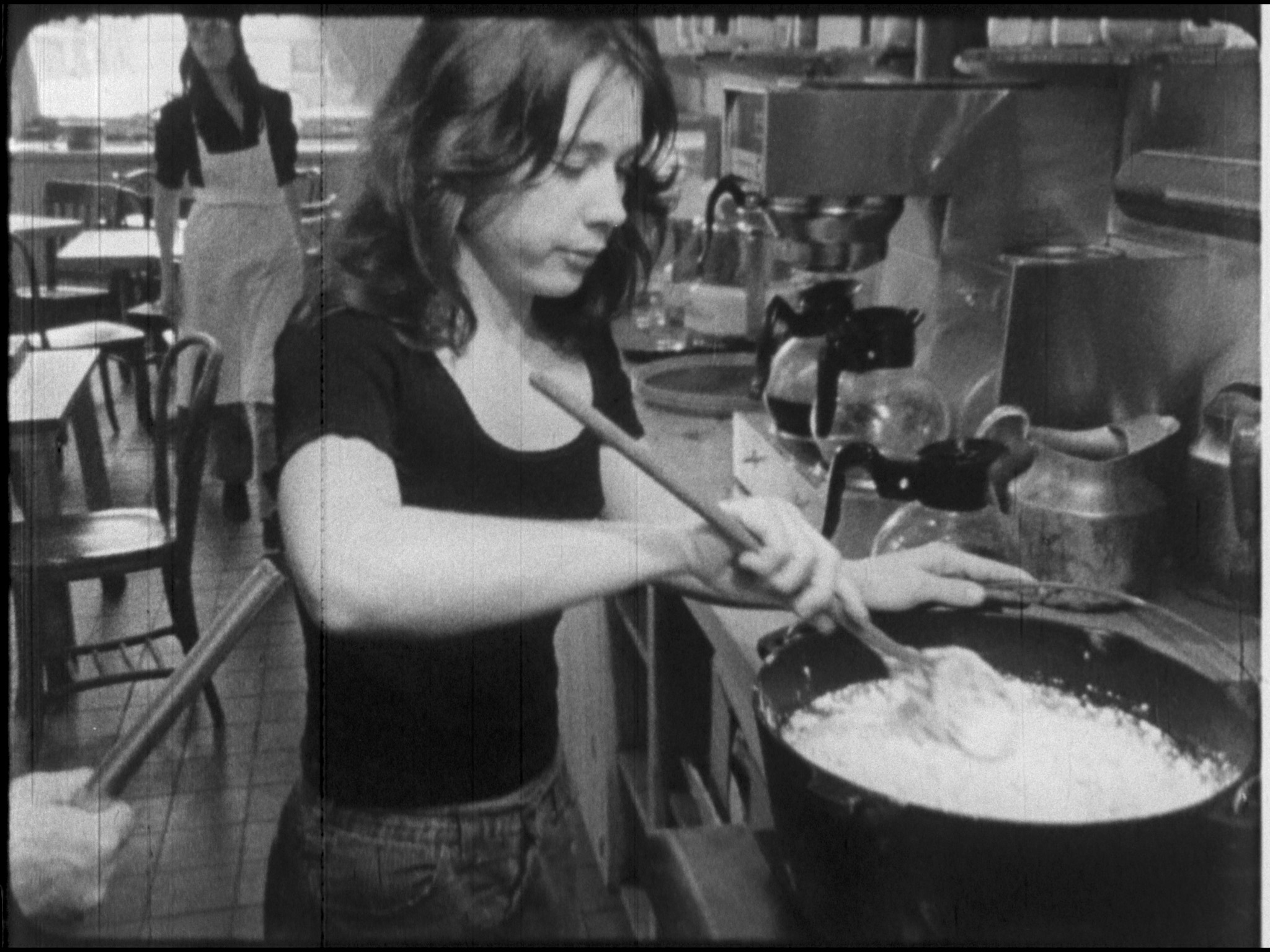






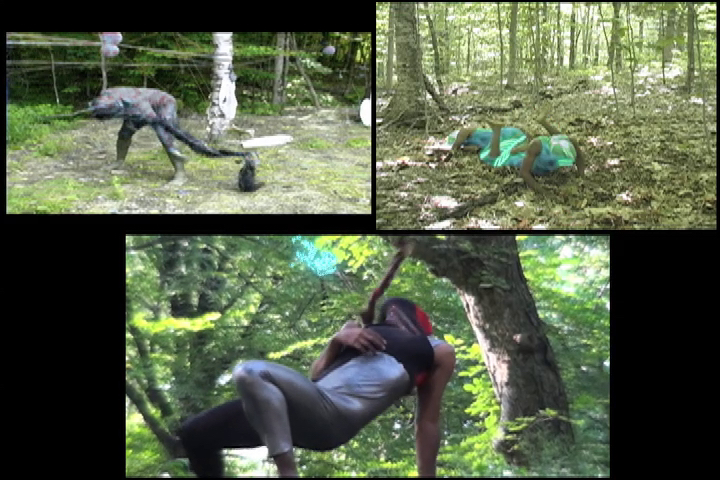





















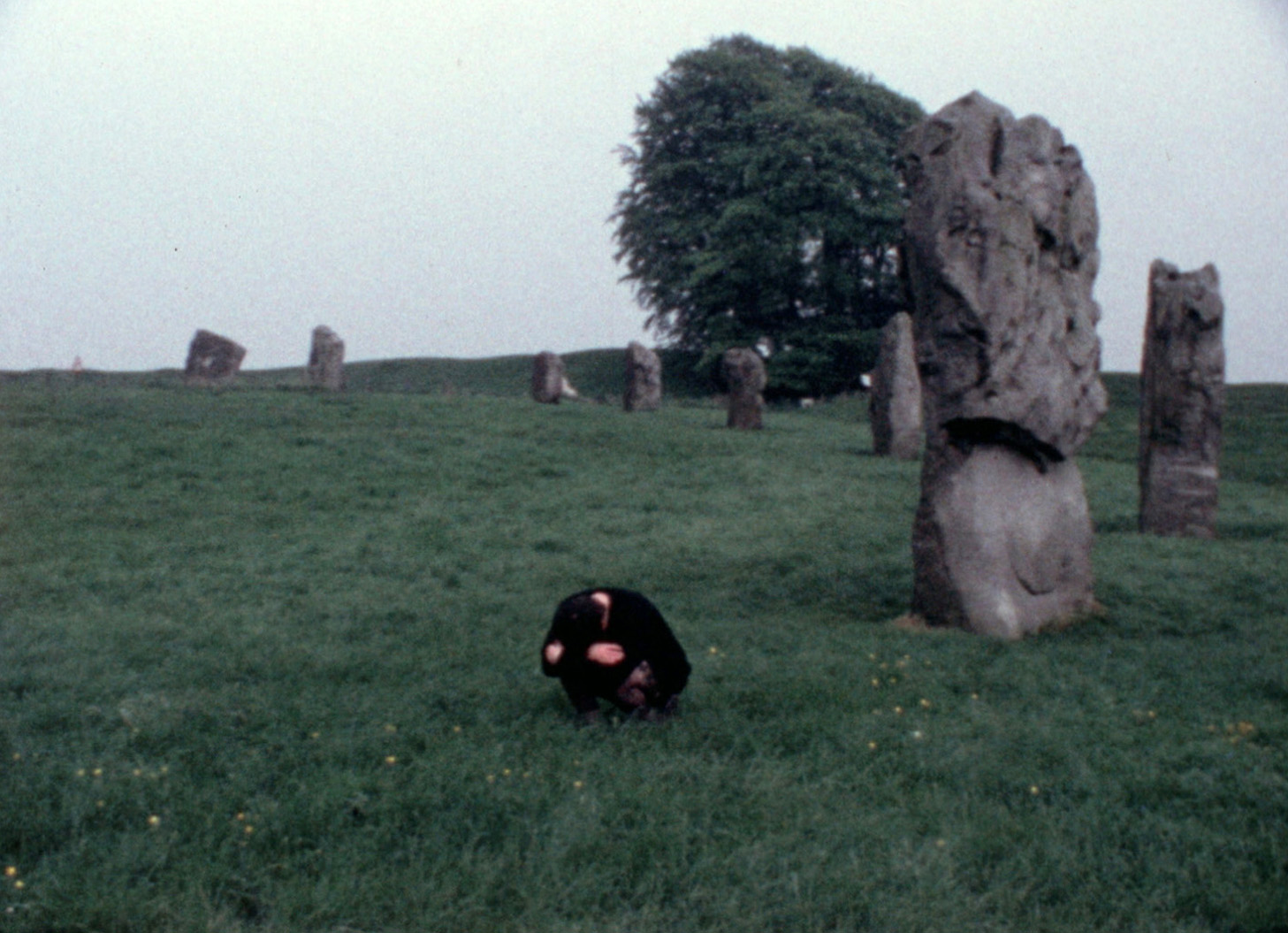






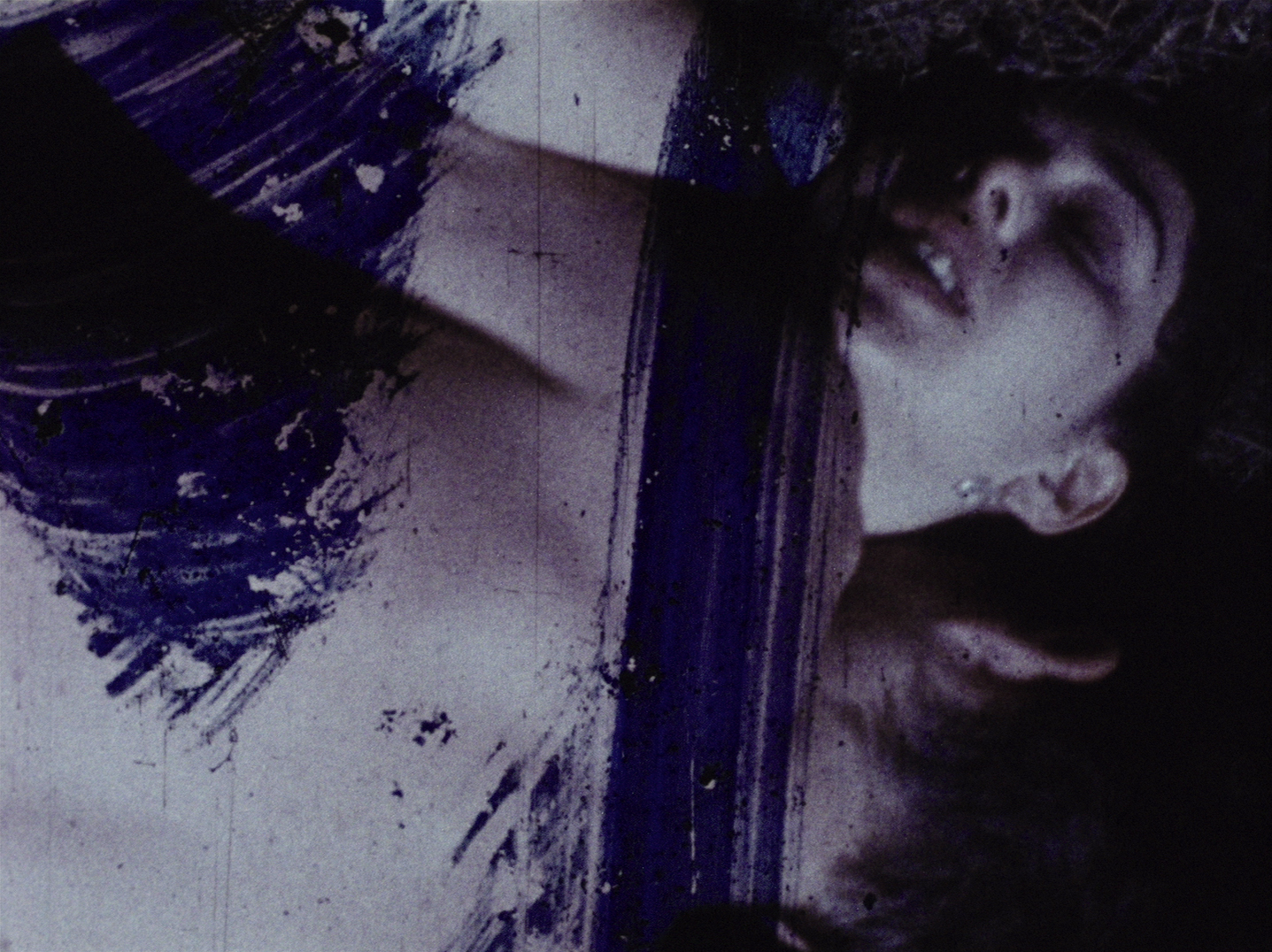



















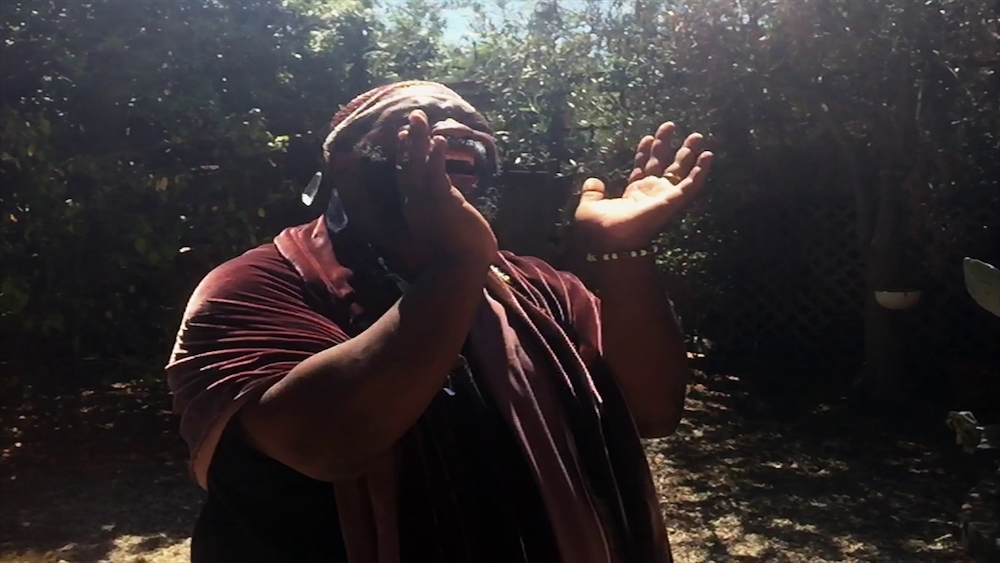
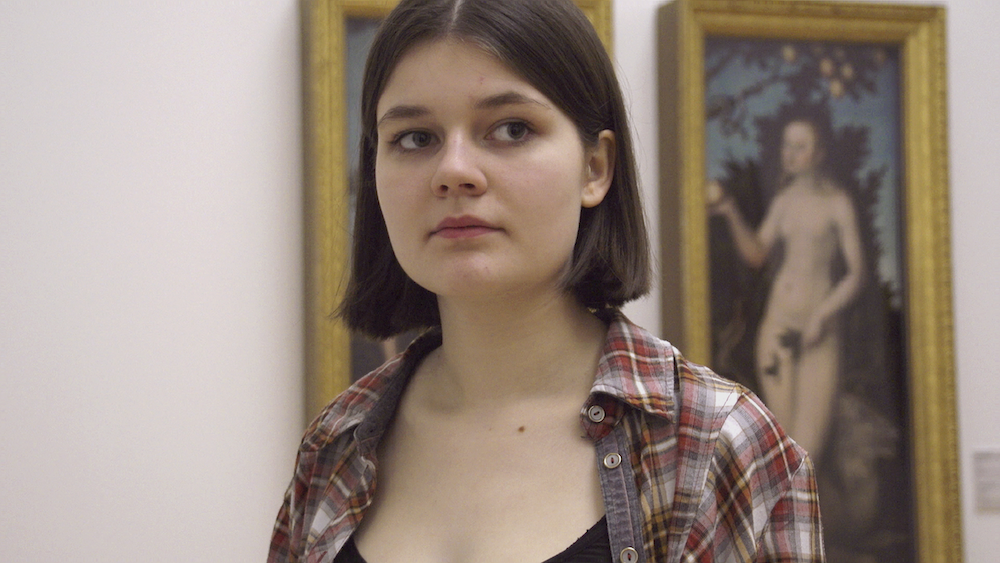




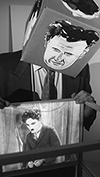















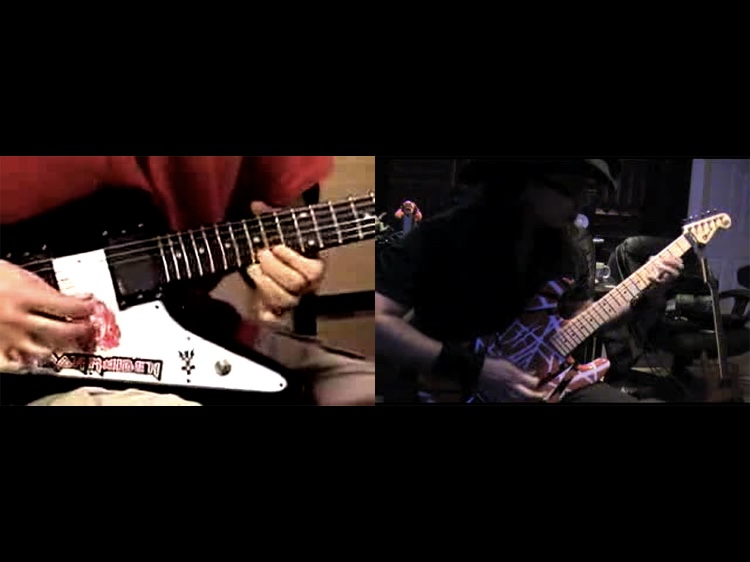

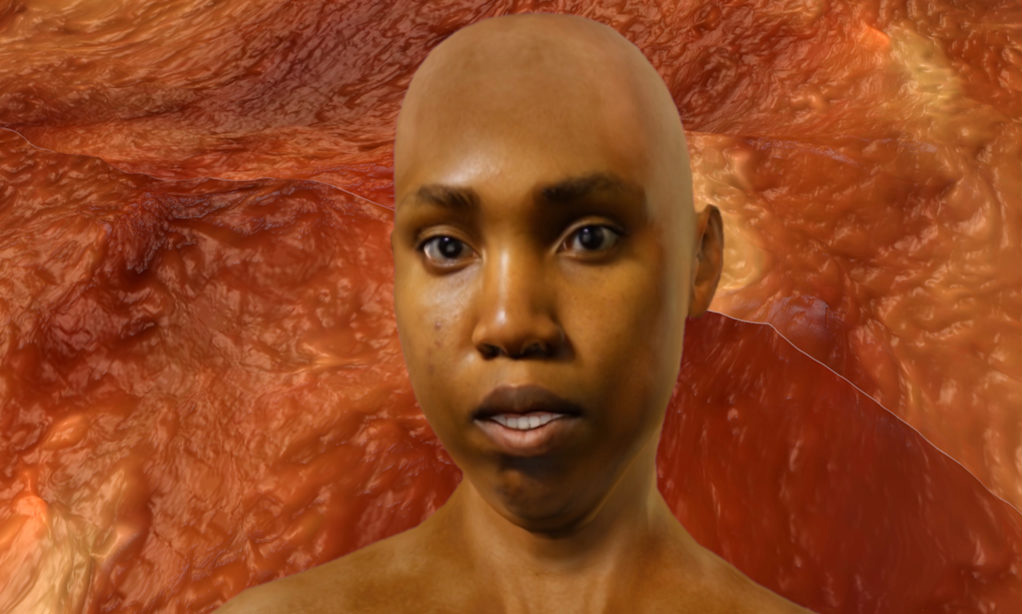

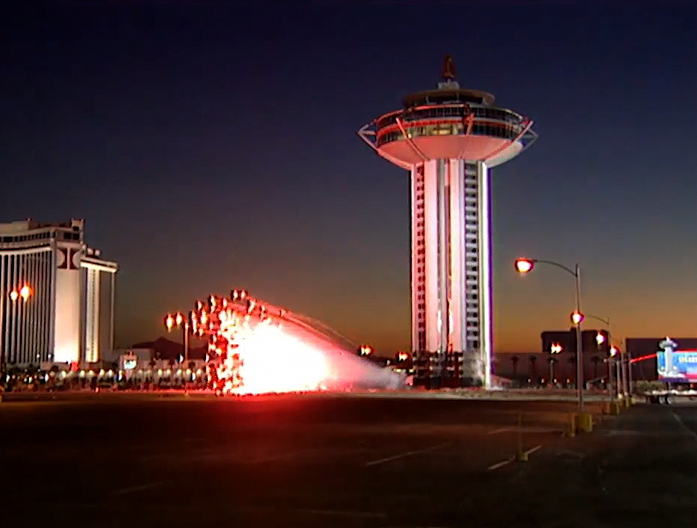


















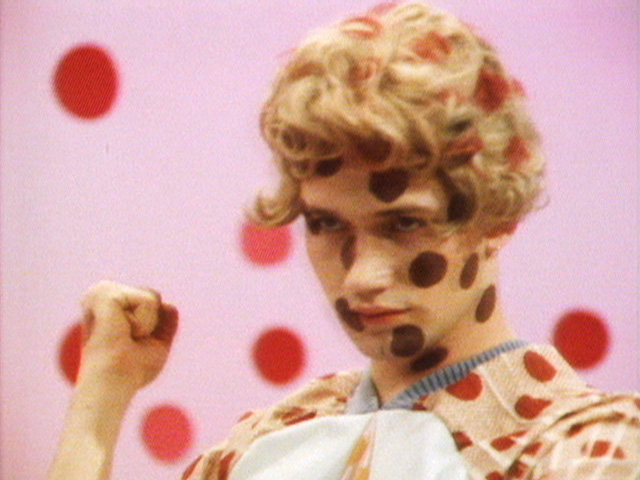


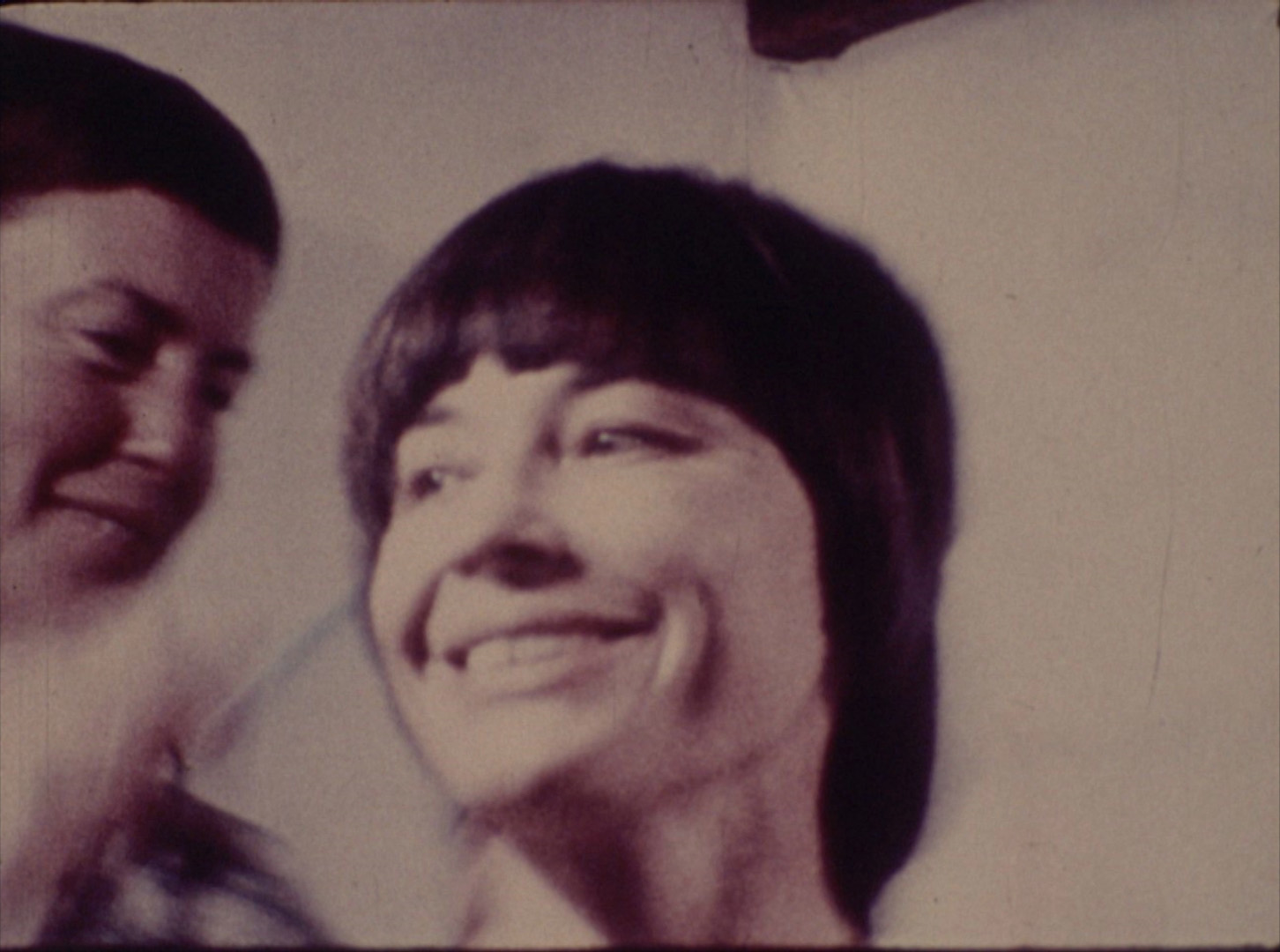


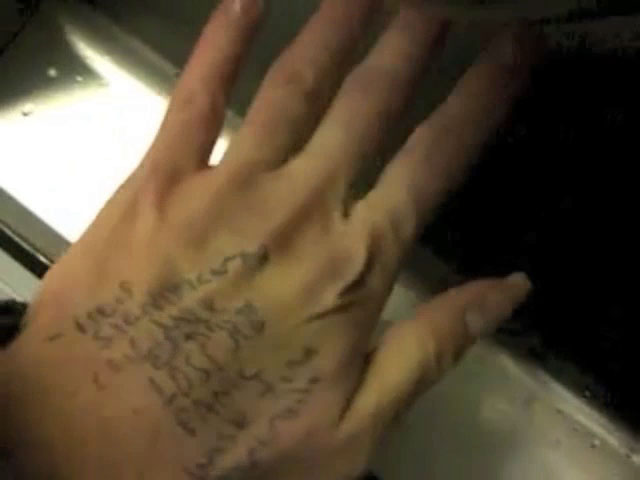























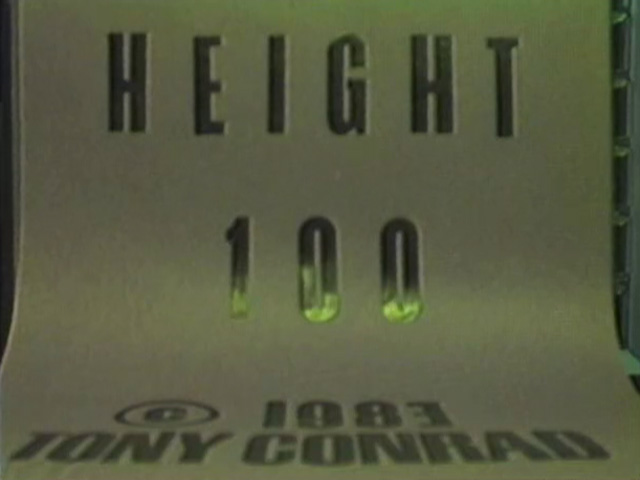













































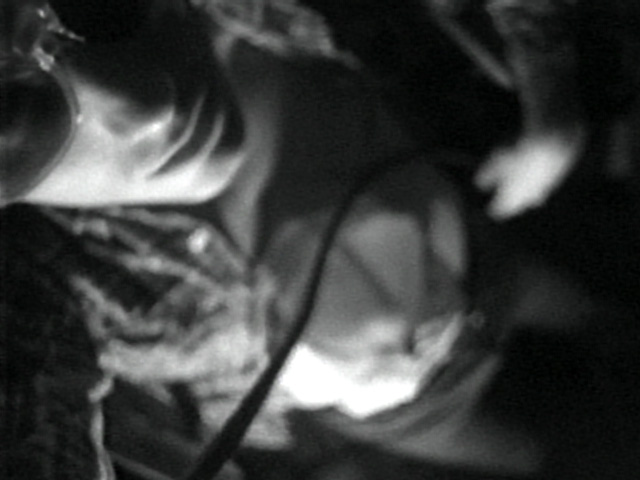
































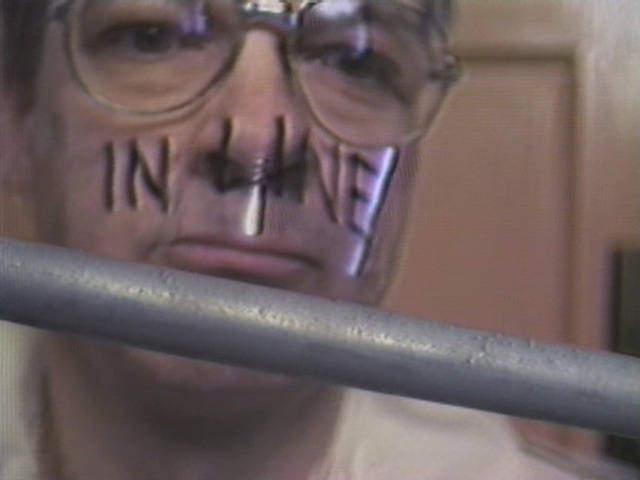








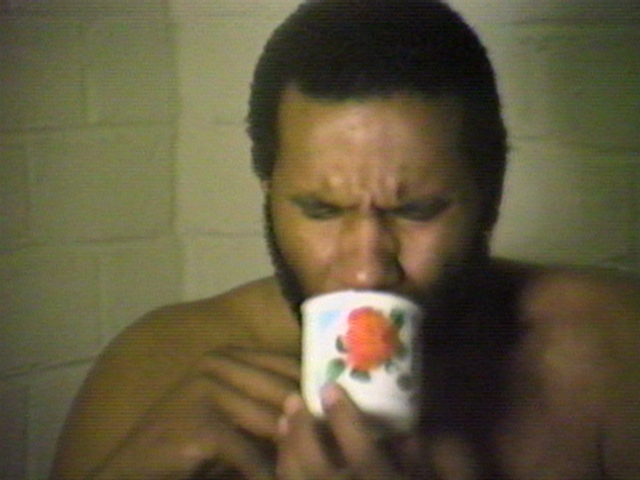

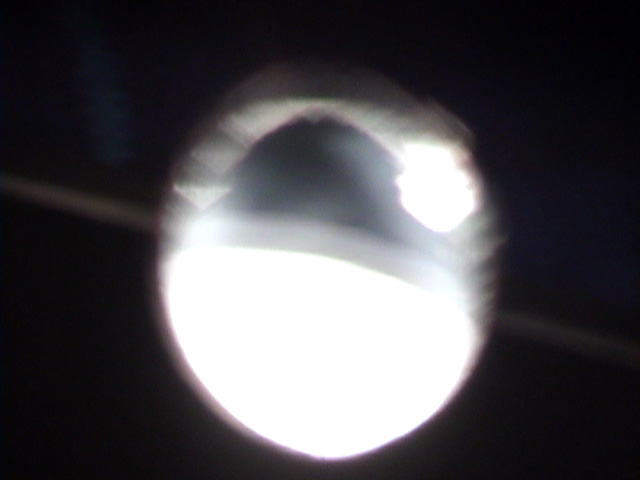


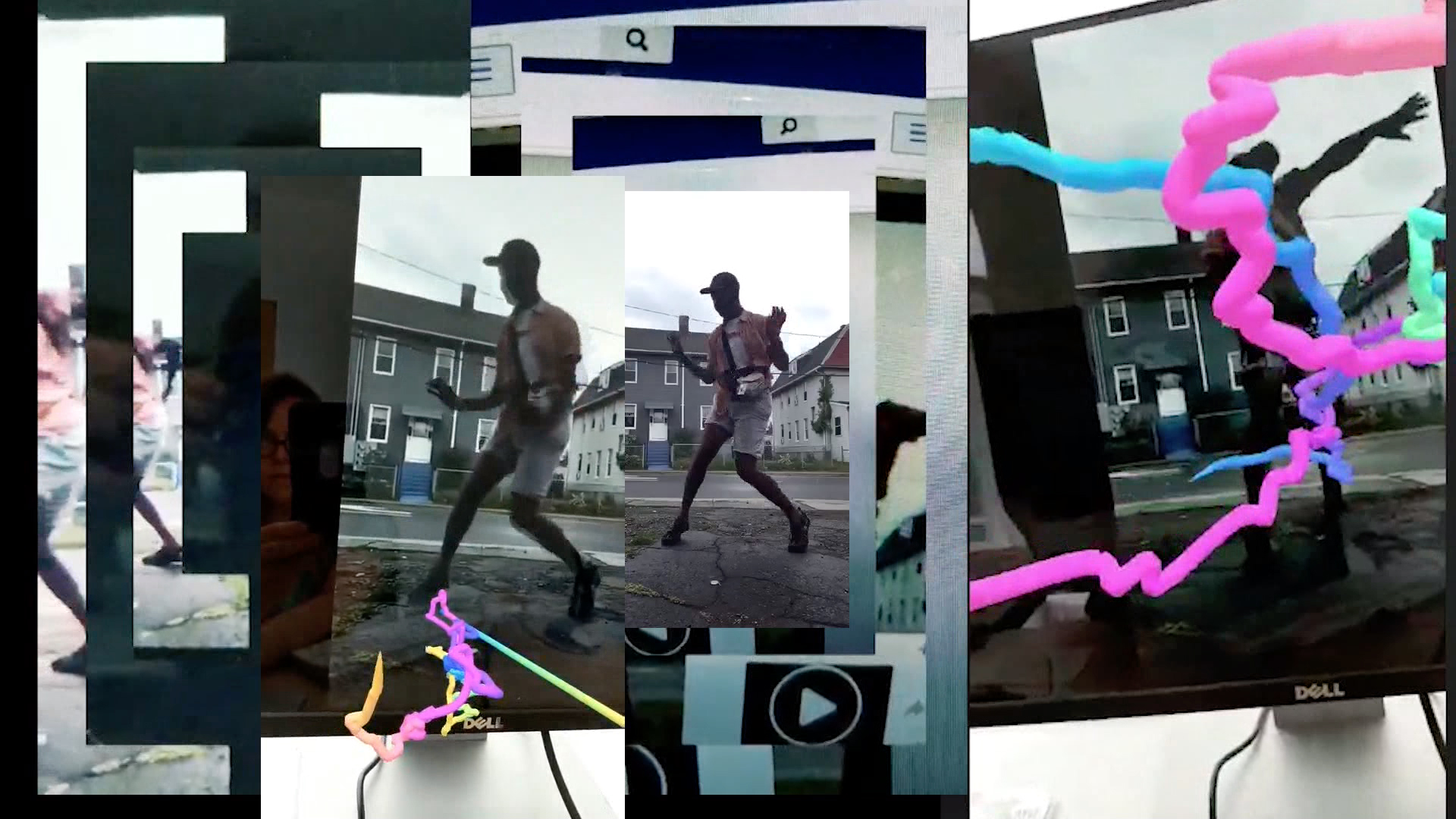


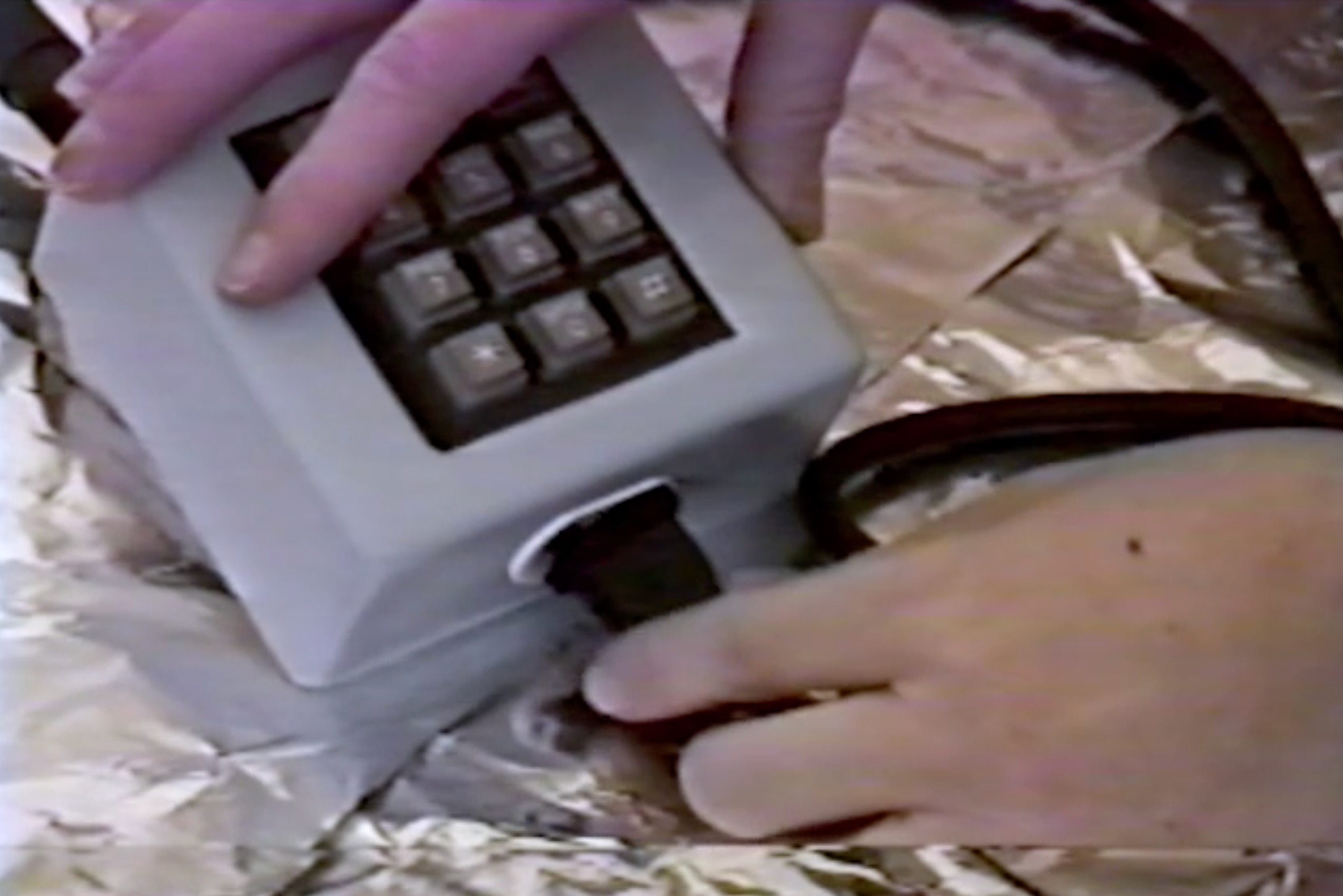




















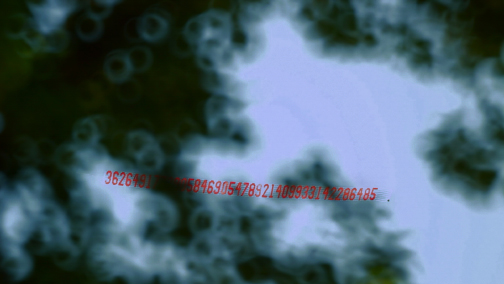





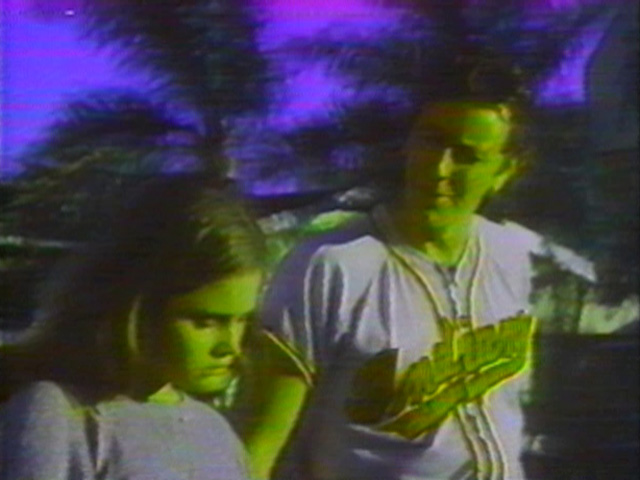




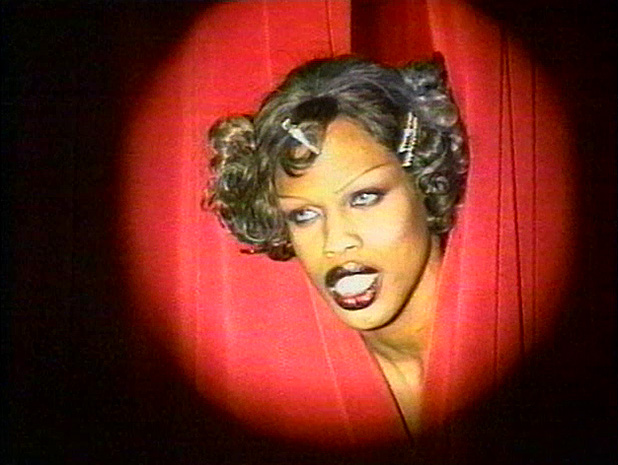

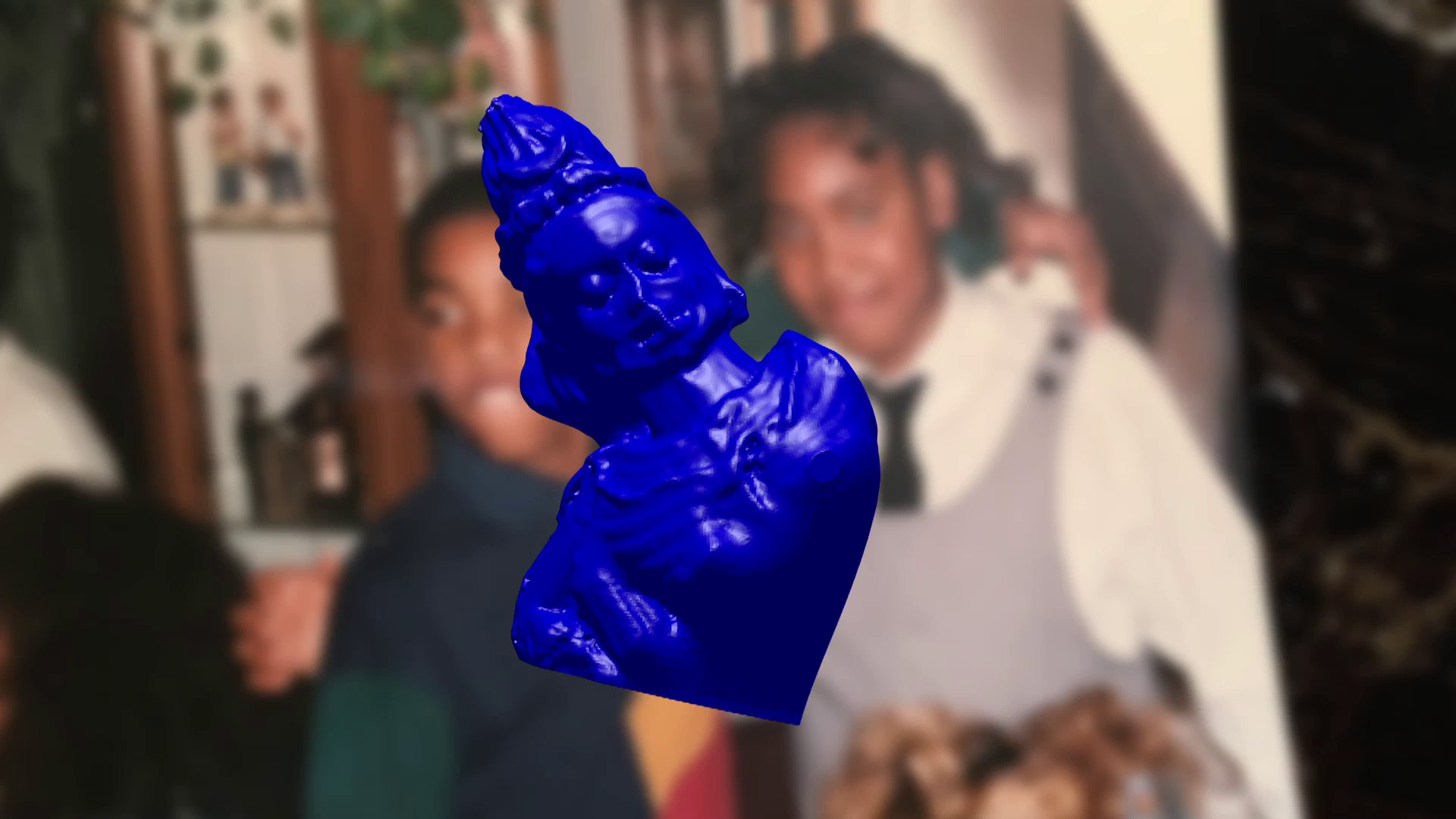




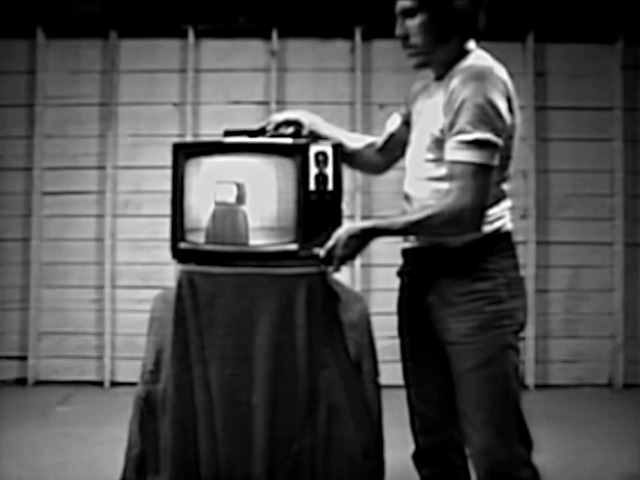

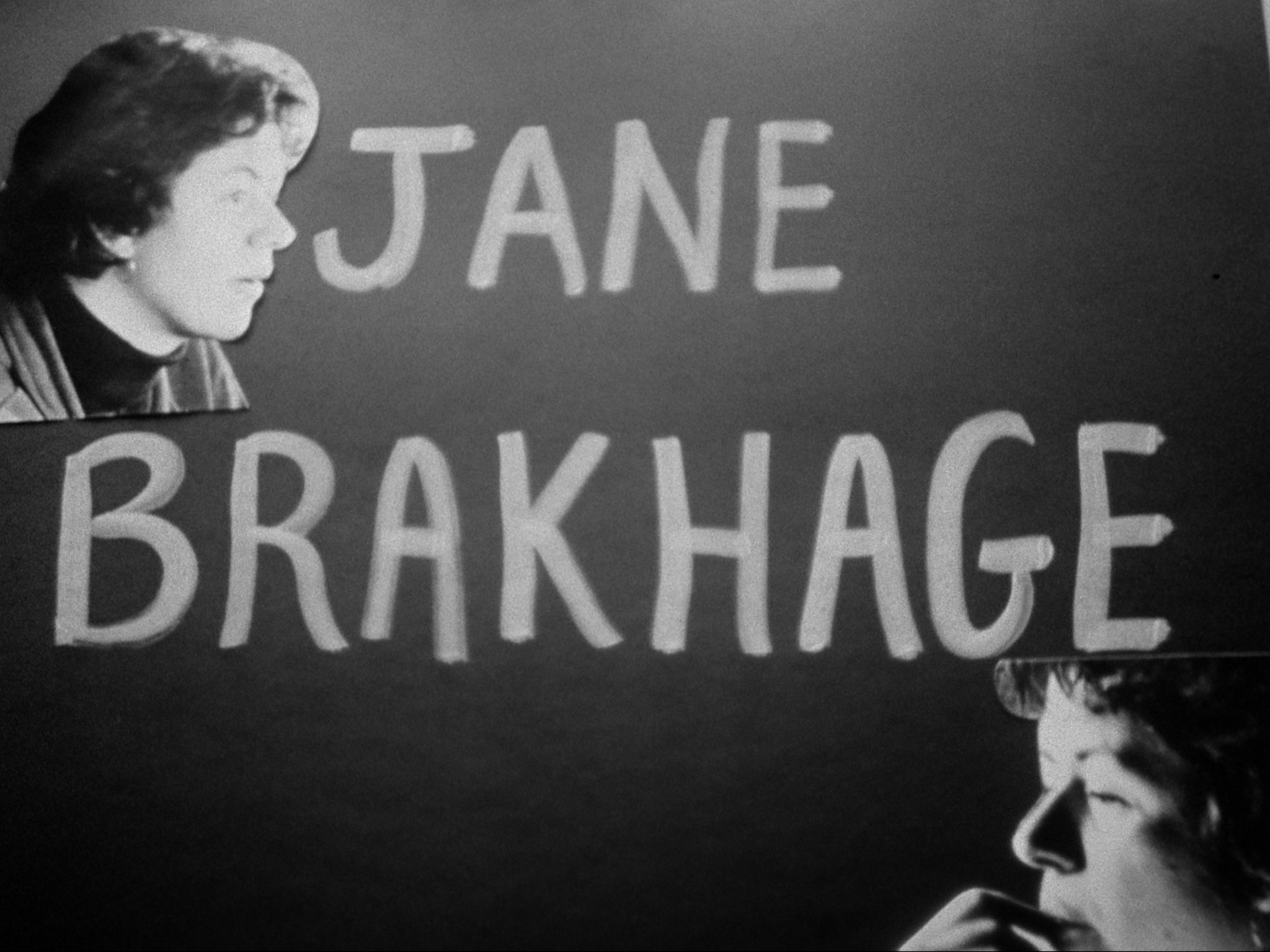






_sl.jpg)






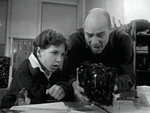



















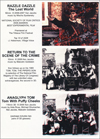




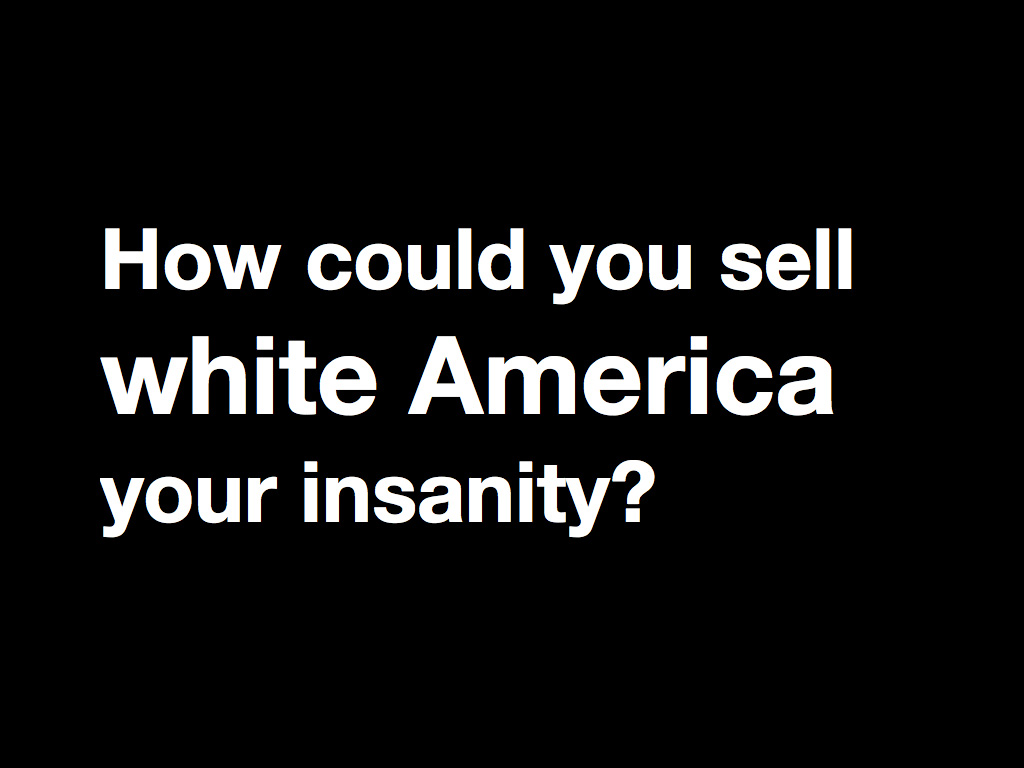

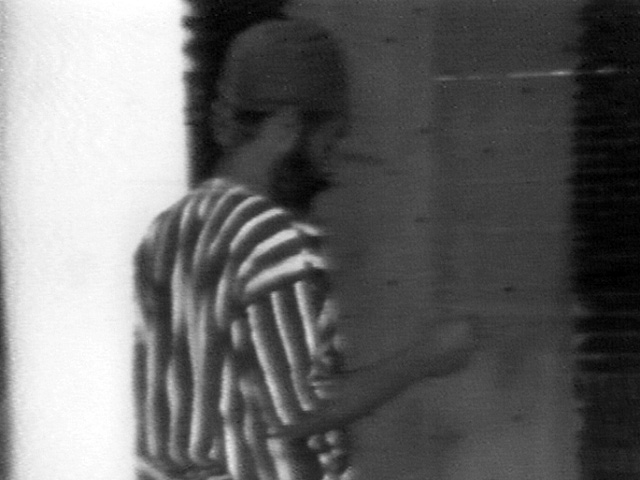




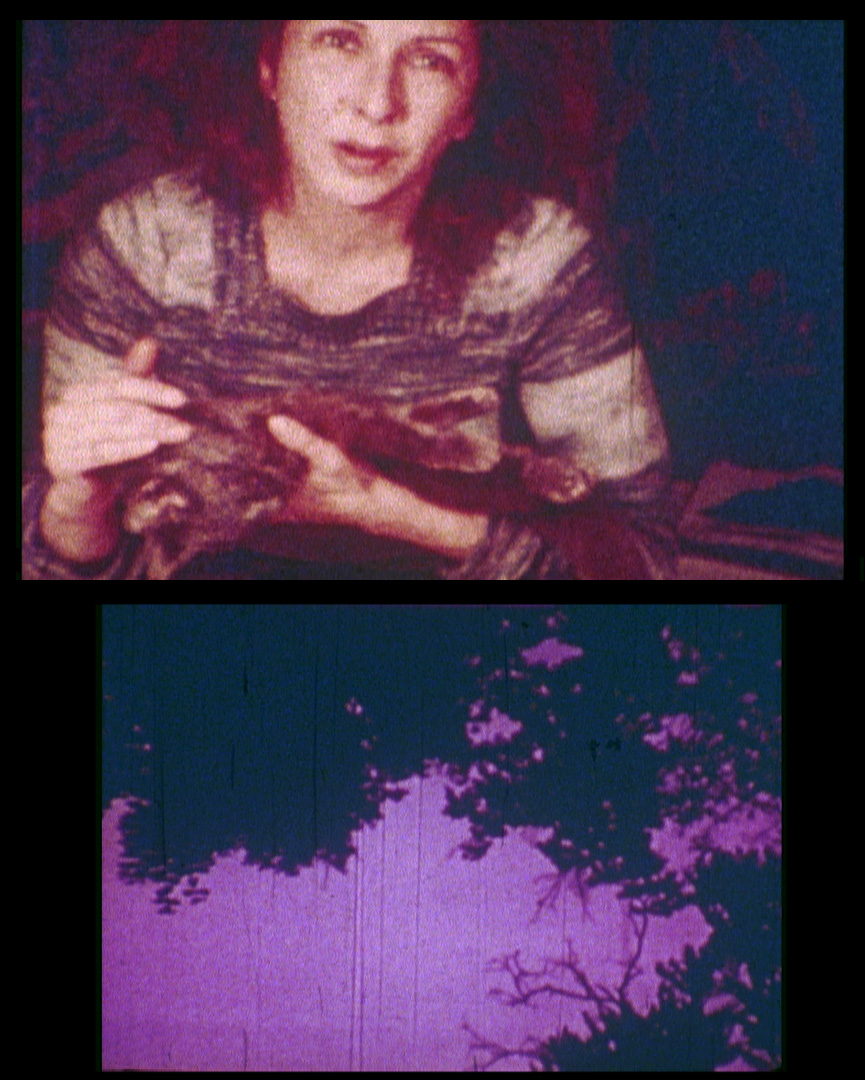







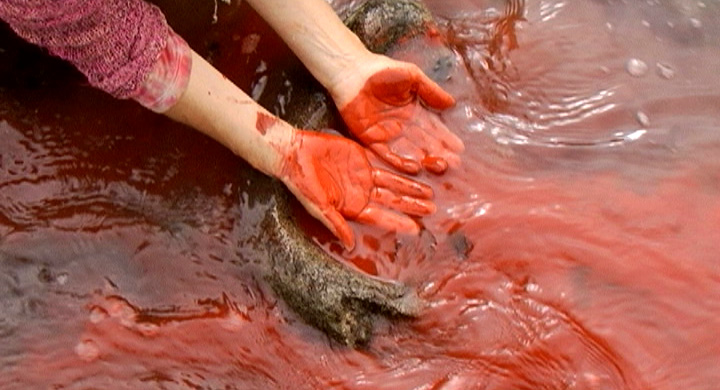
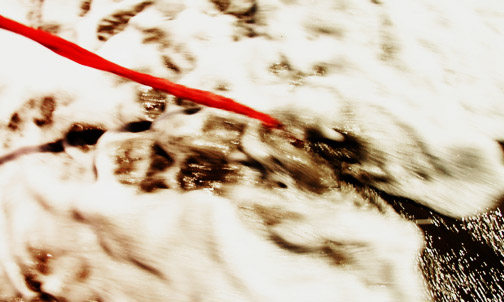





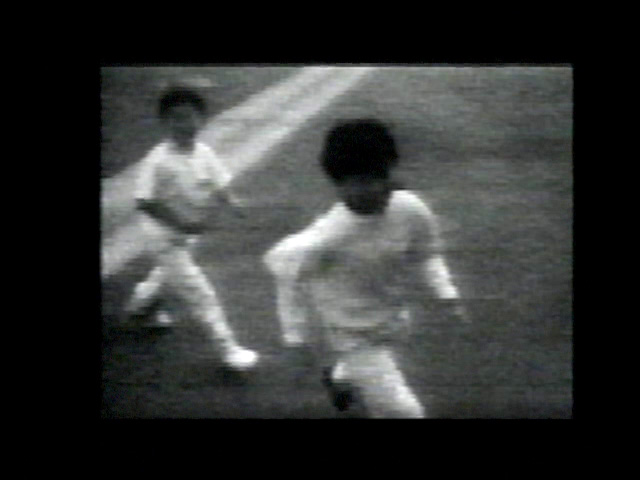




























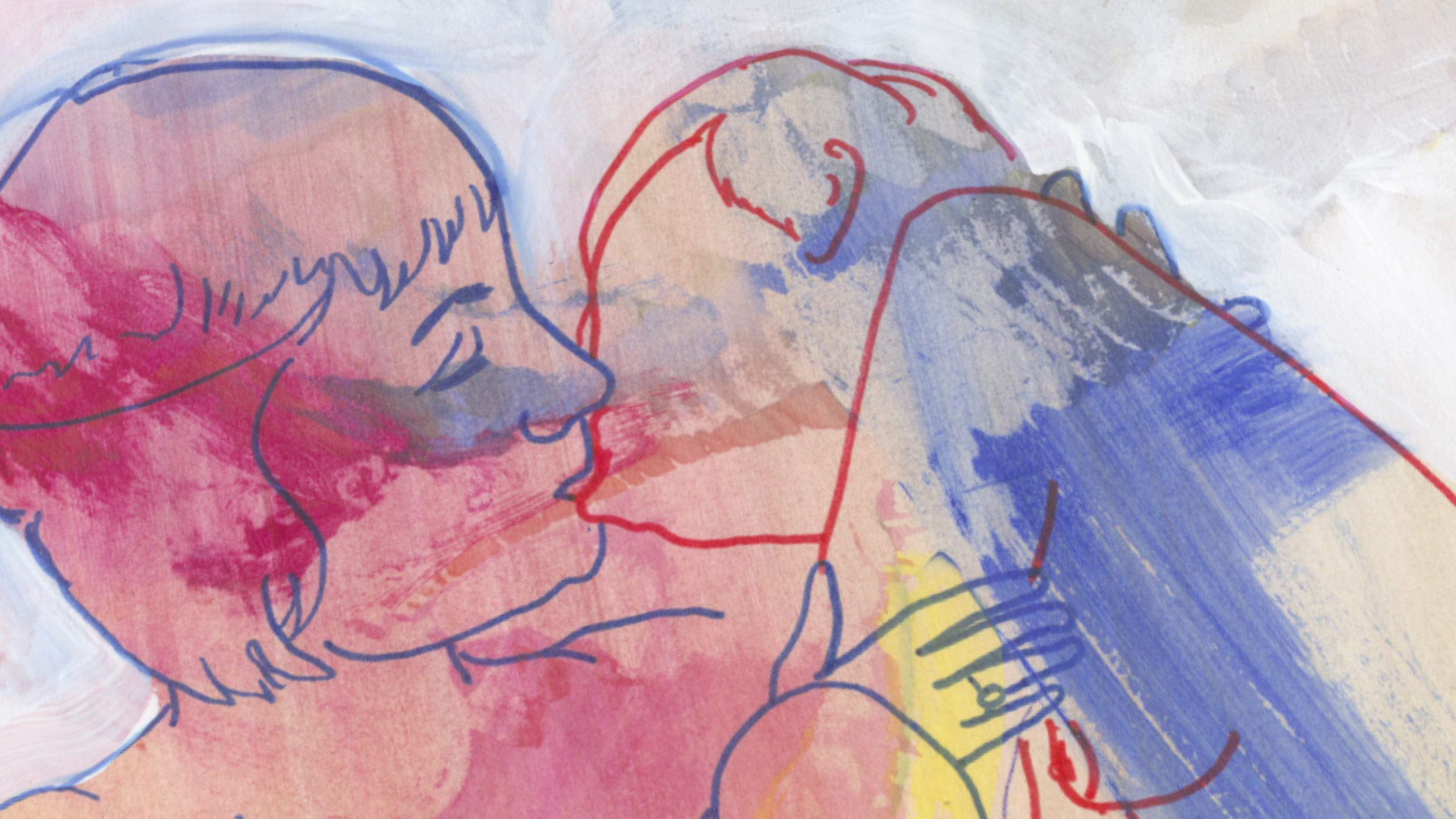







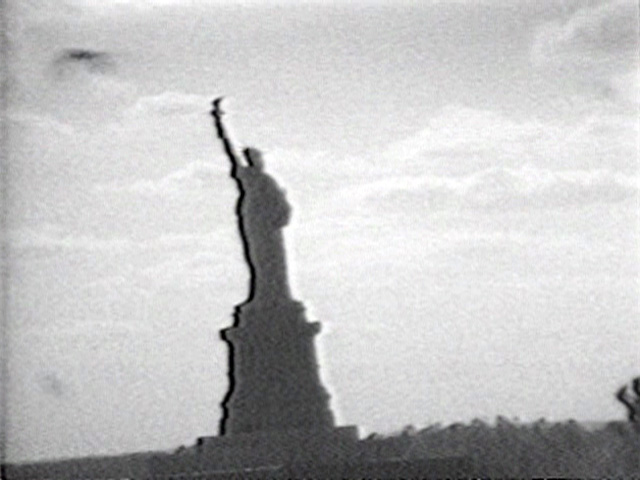
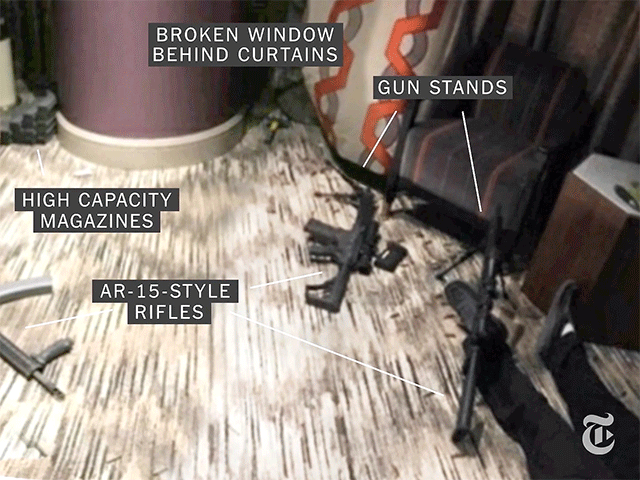


























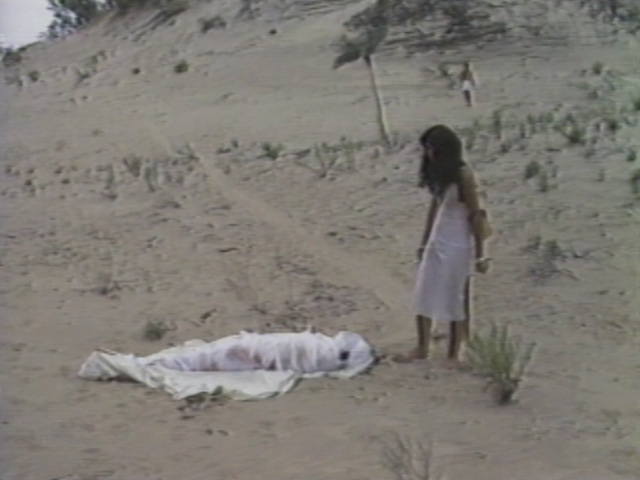
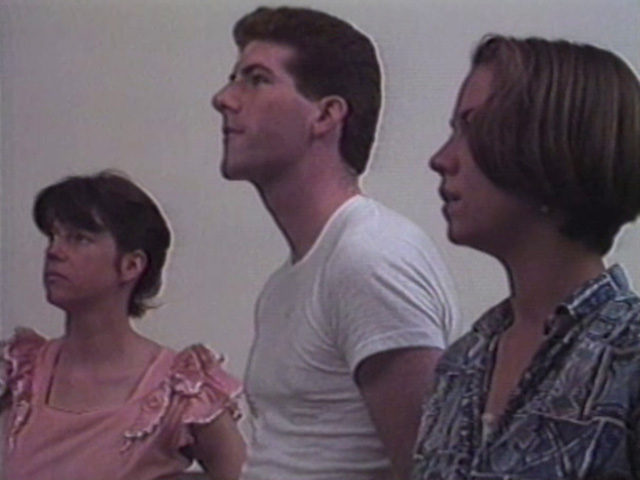
































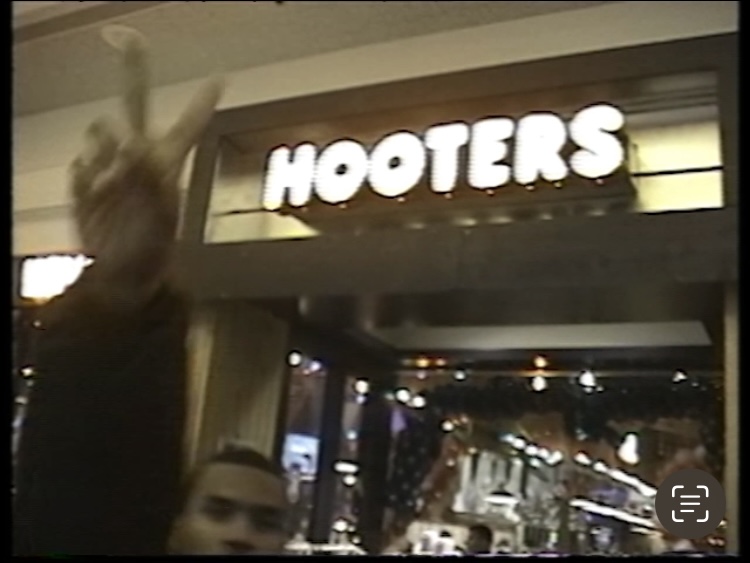







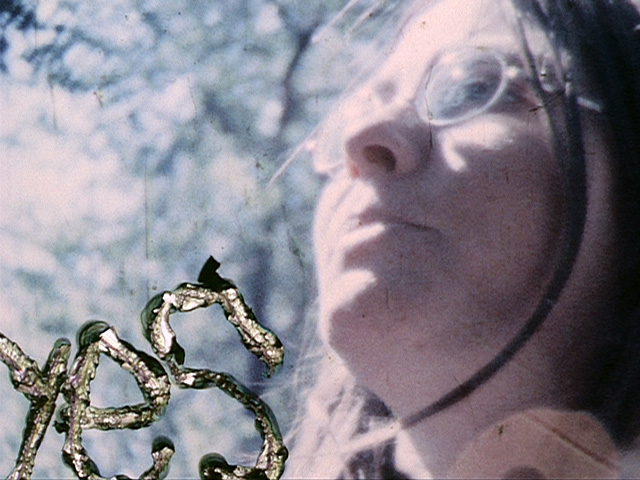
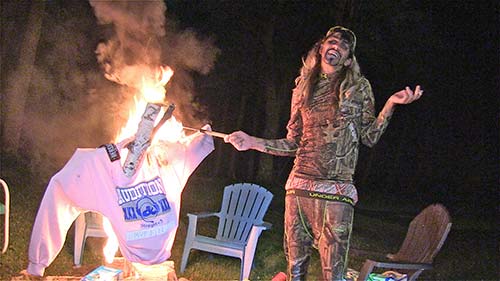






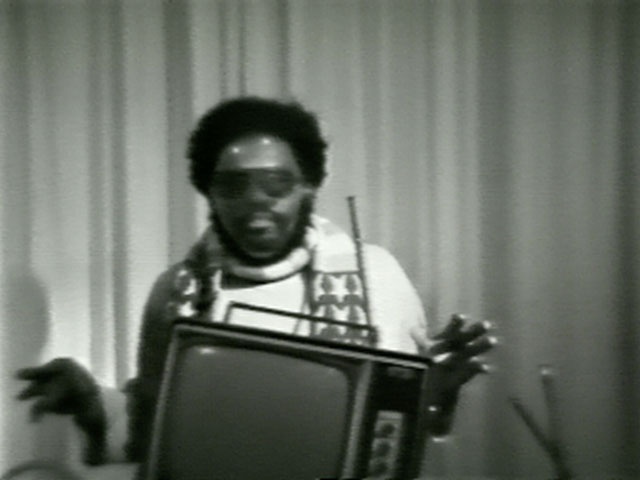































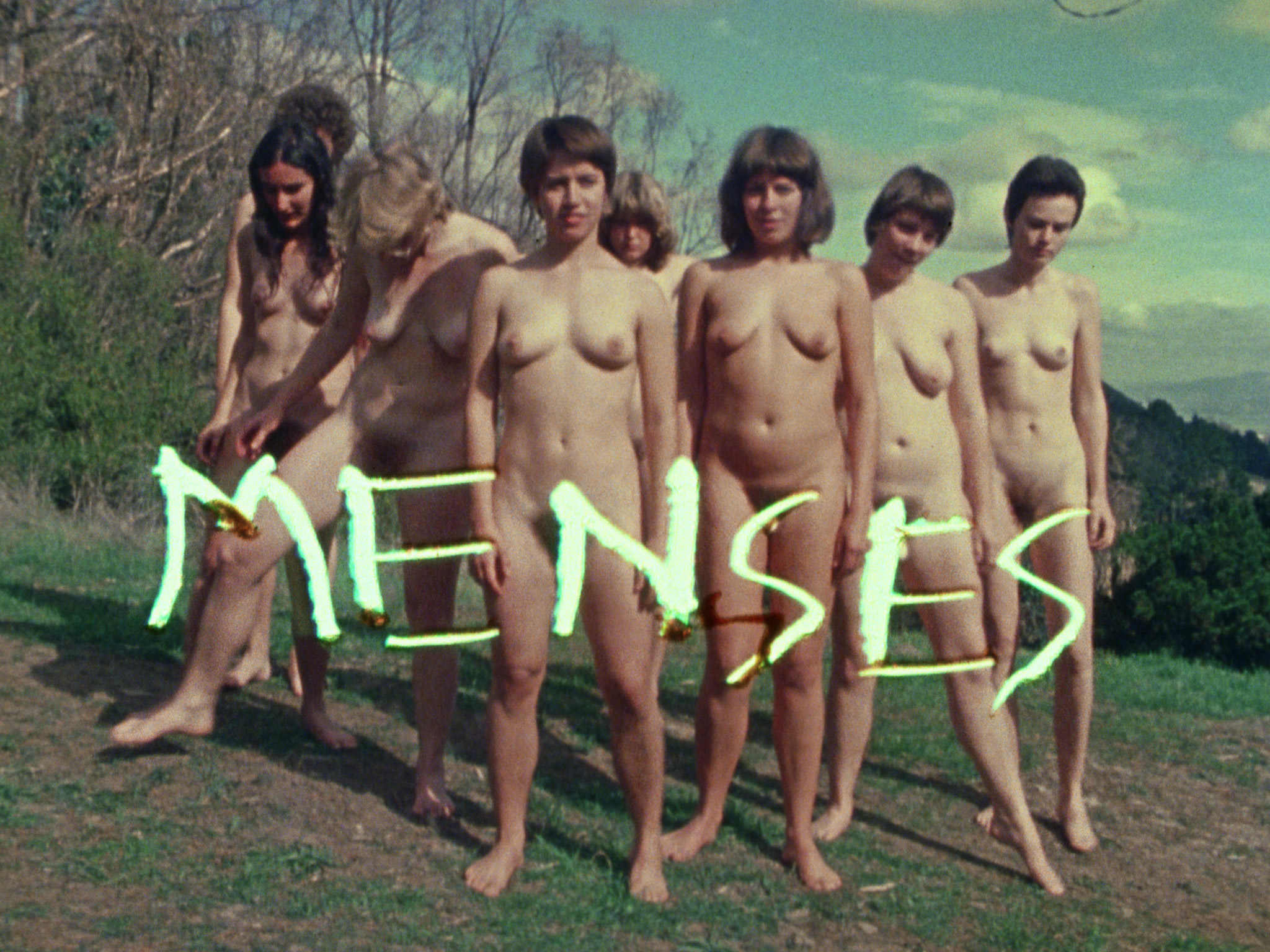


















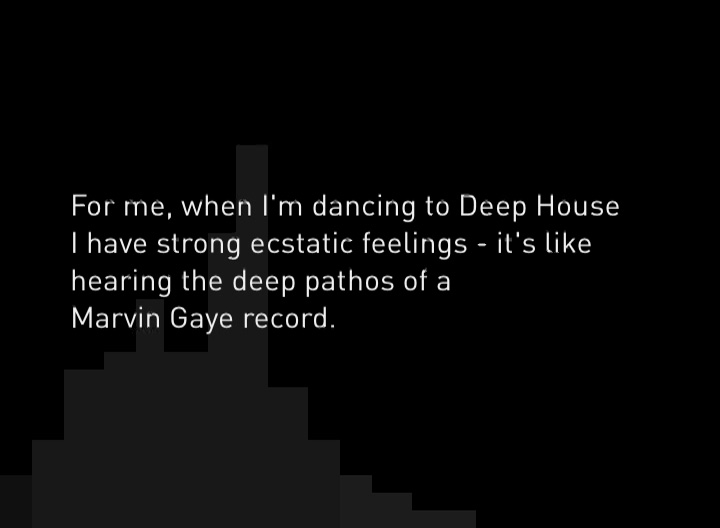








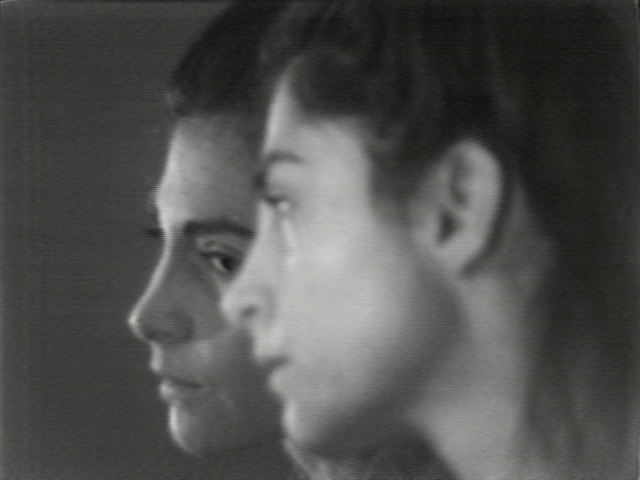



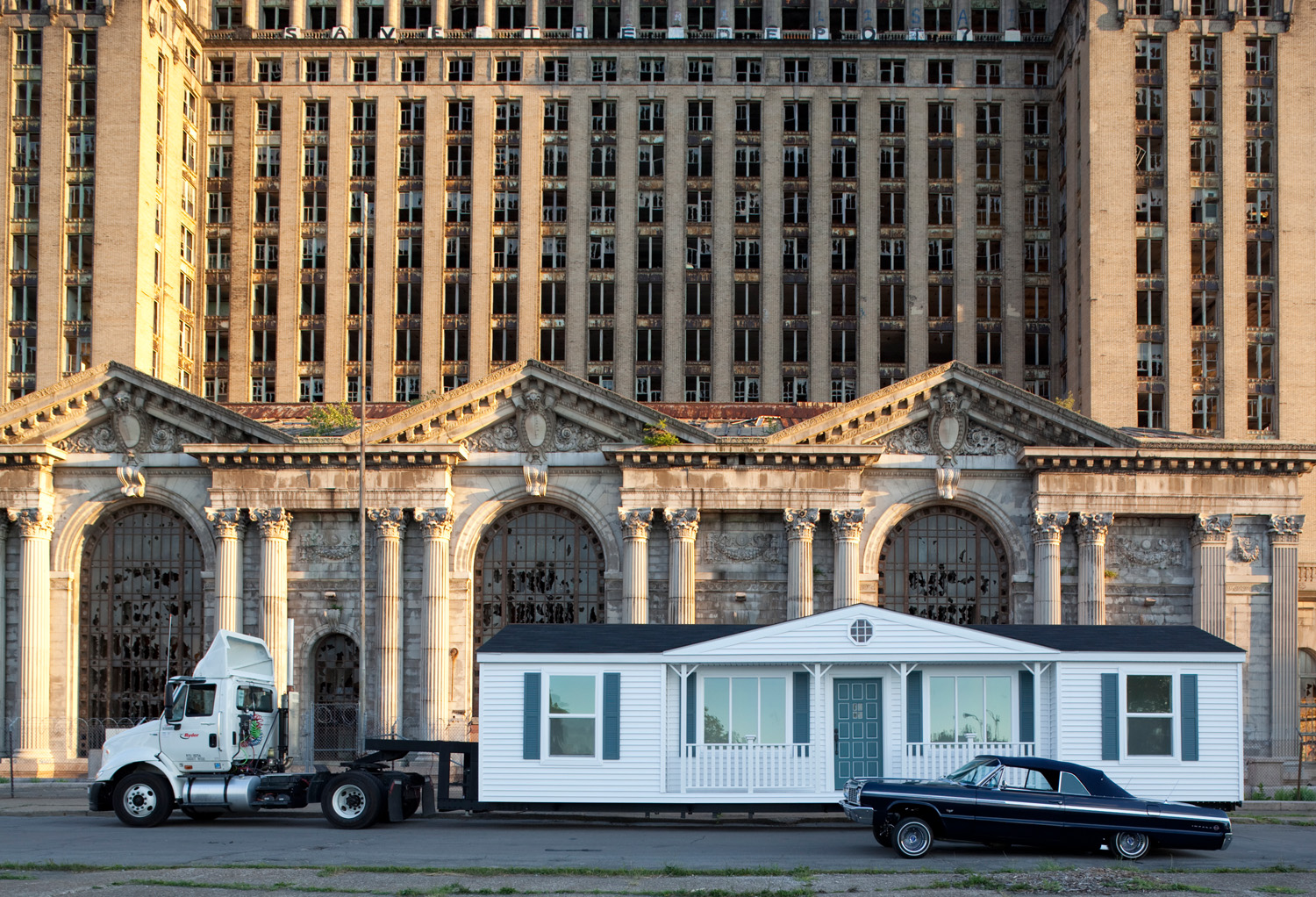



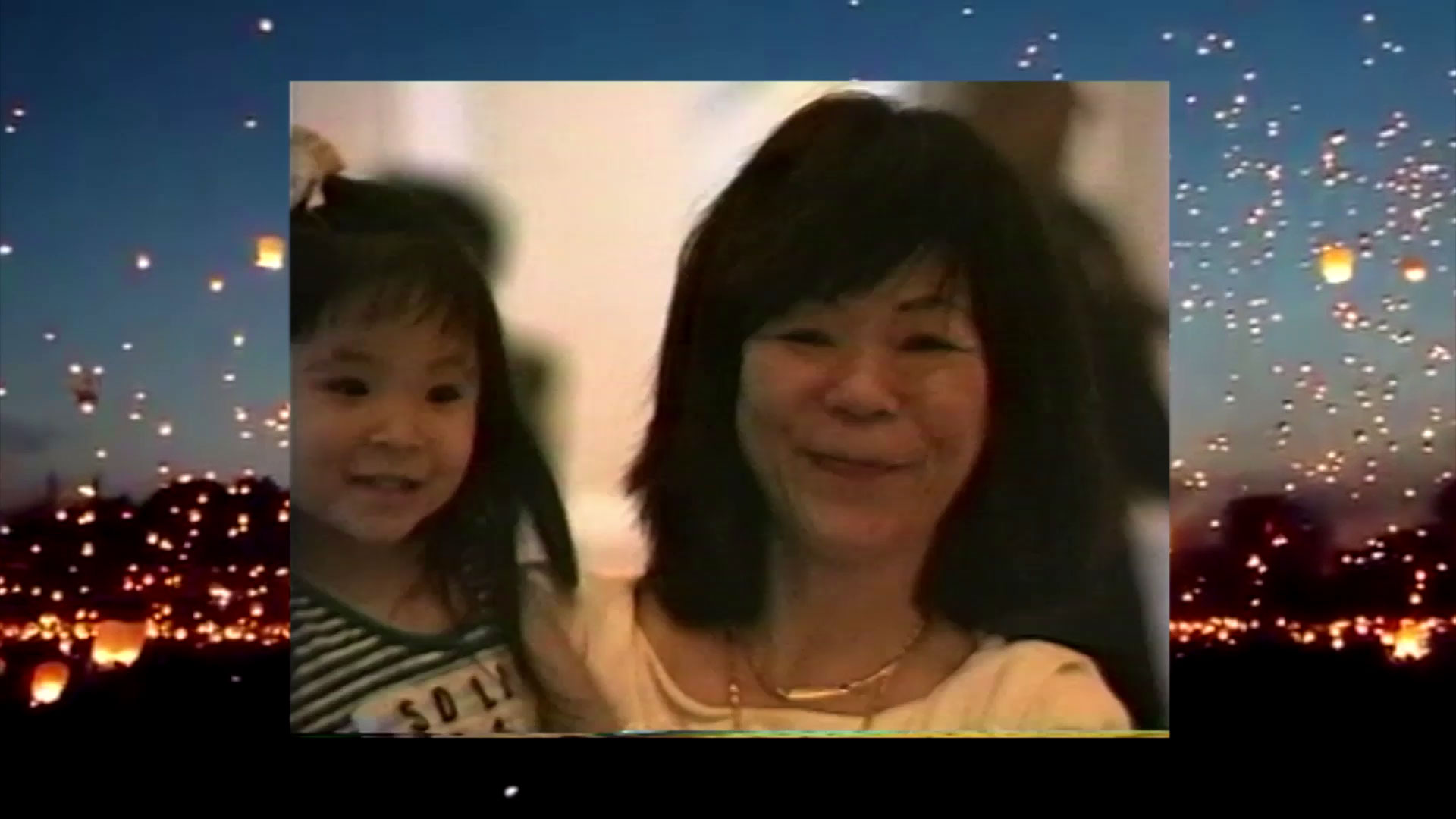















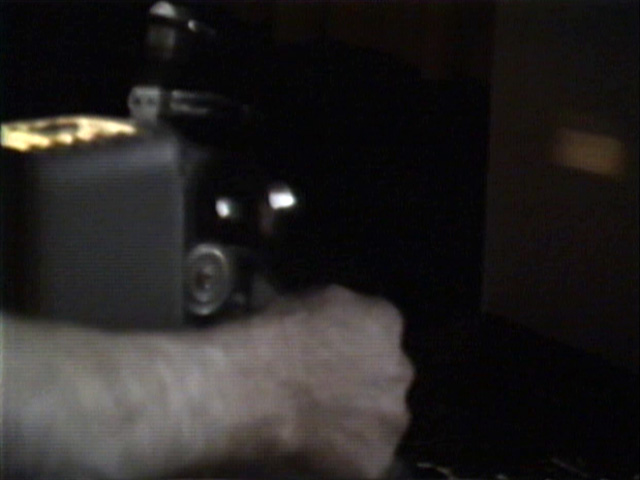




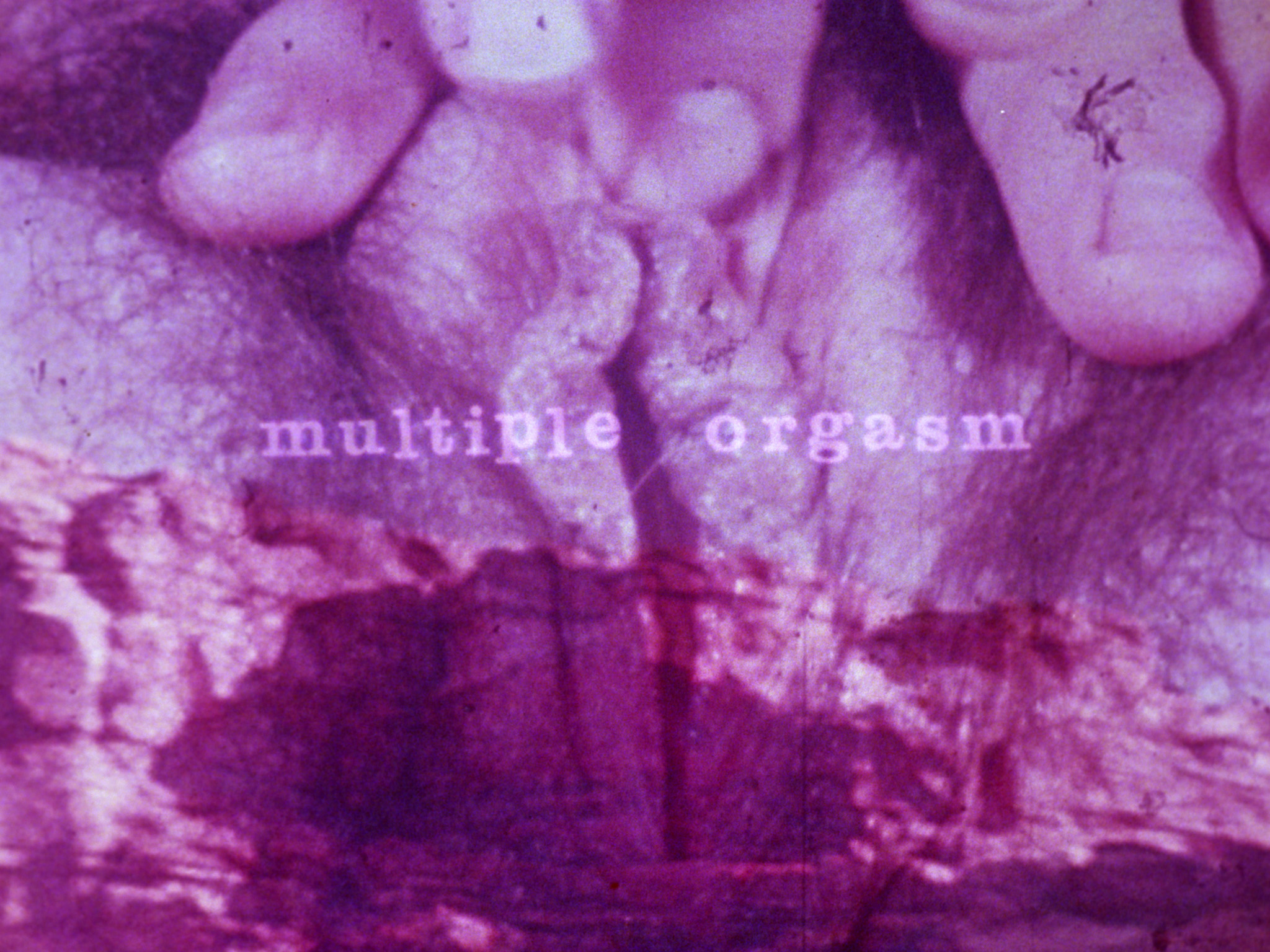













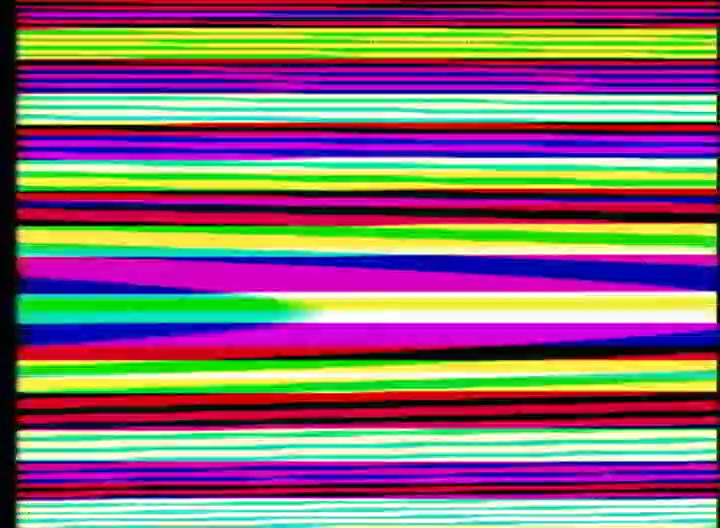










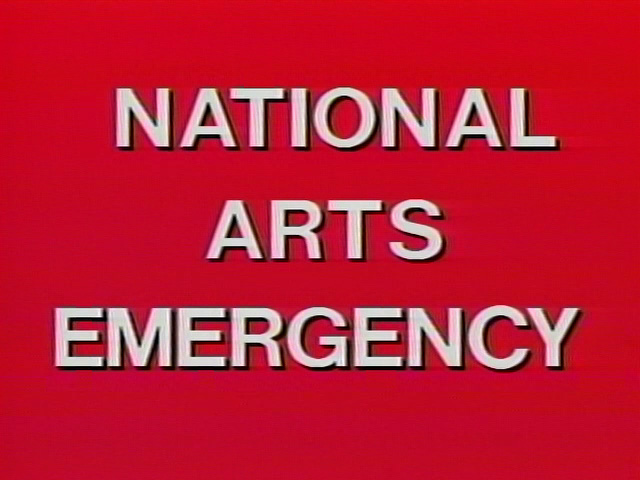






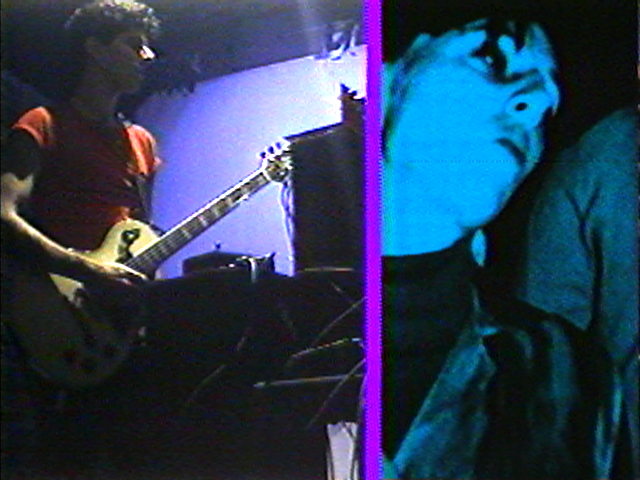















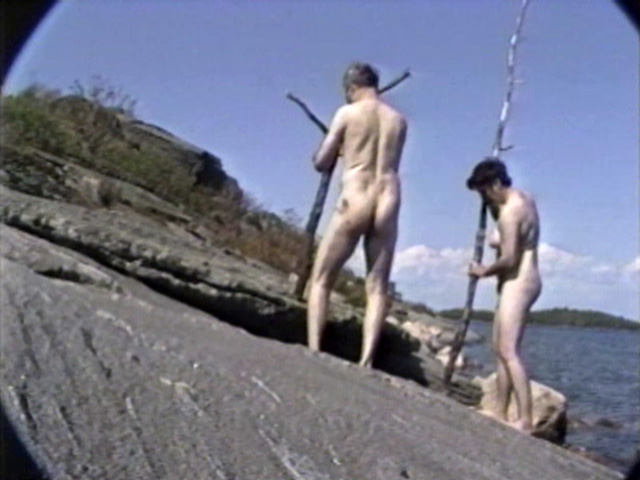

















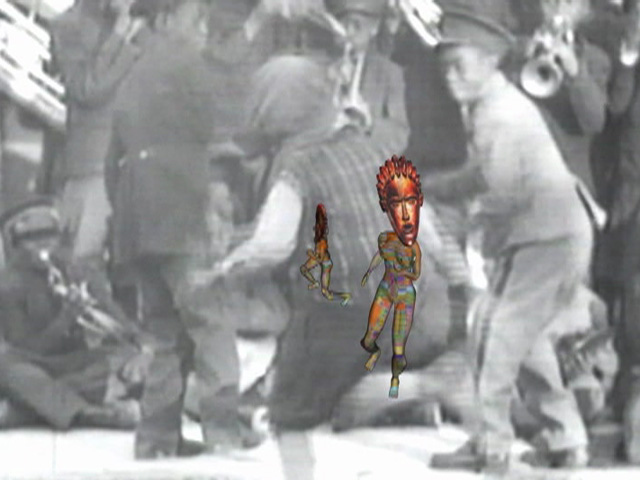



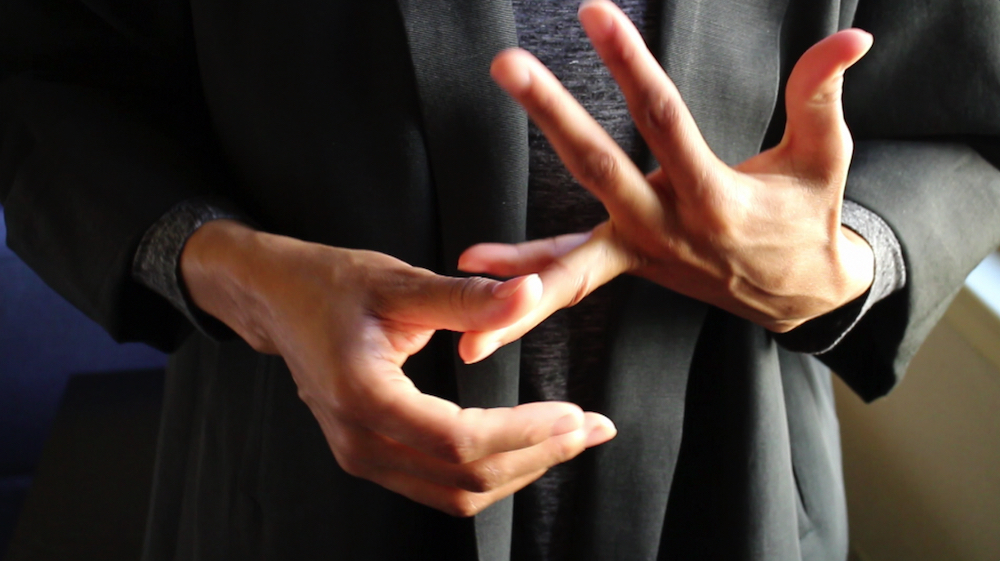









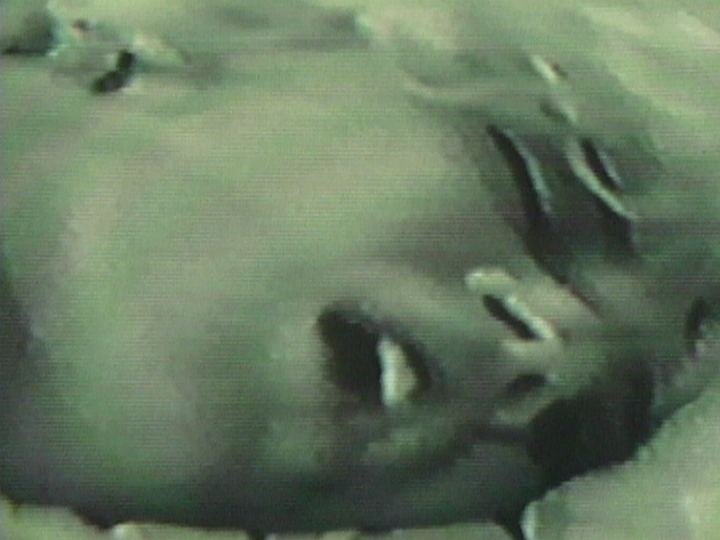














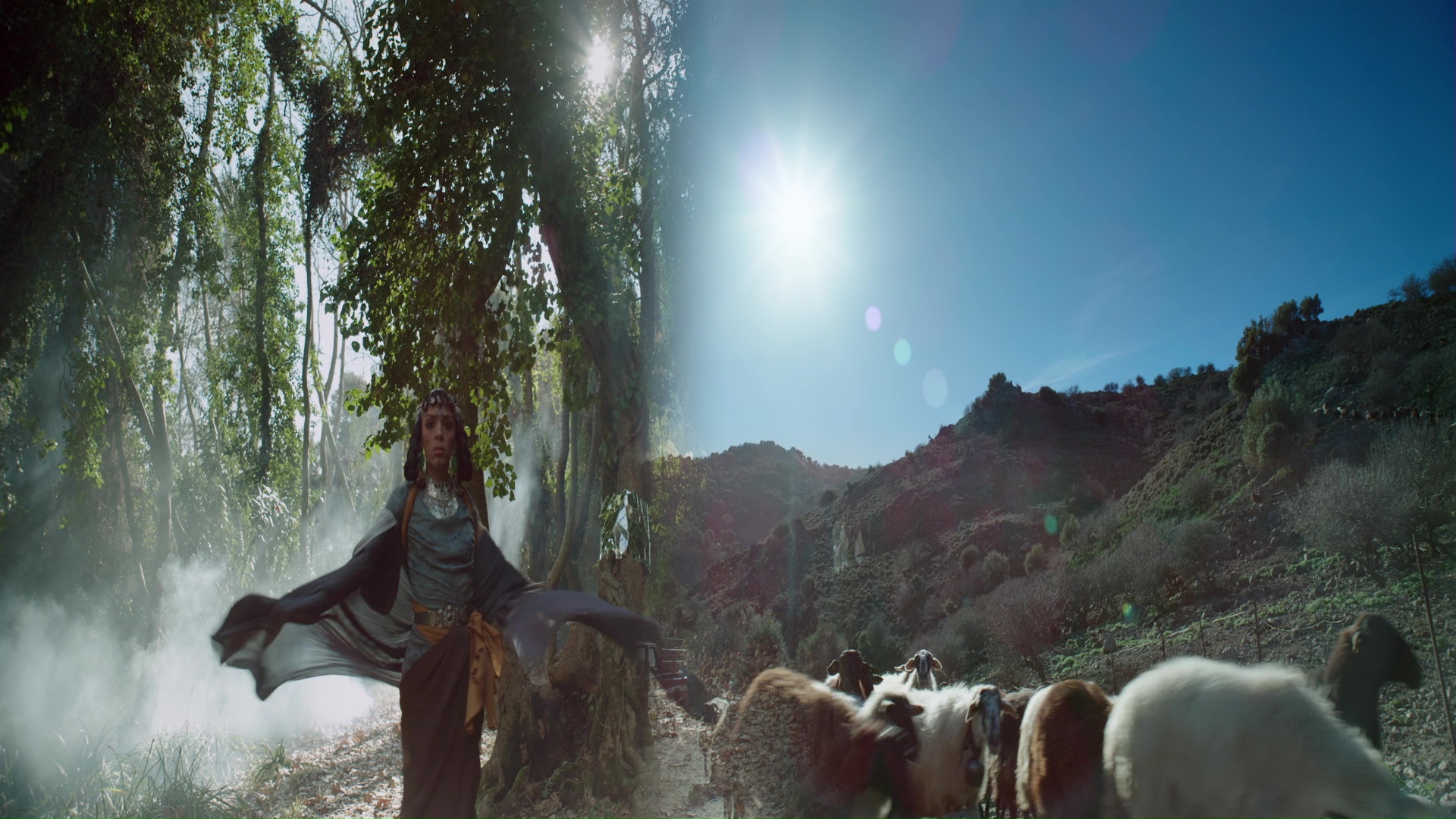



















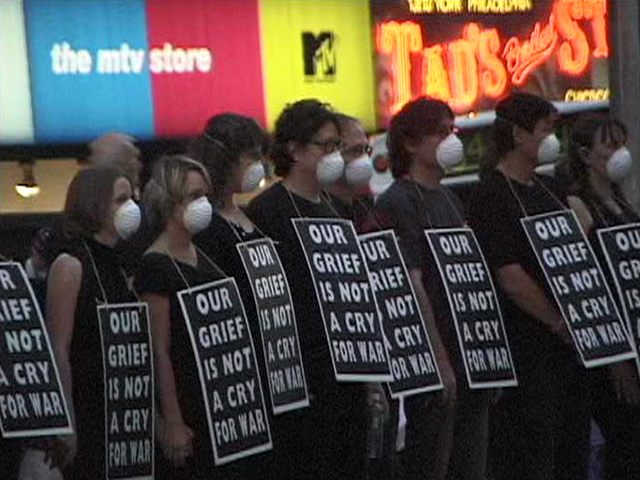
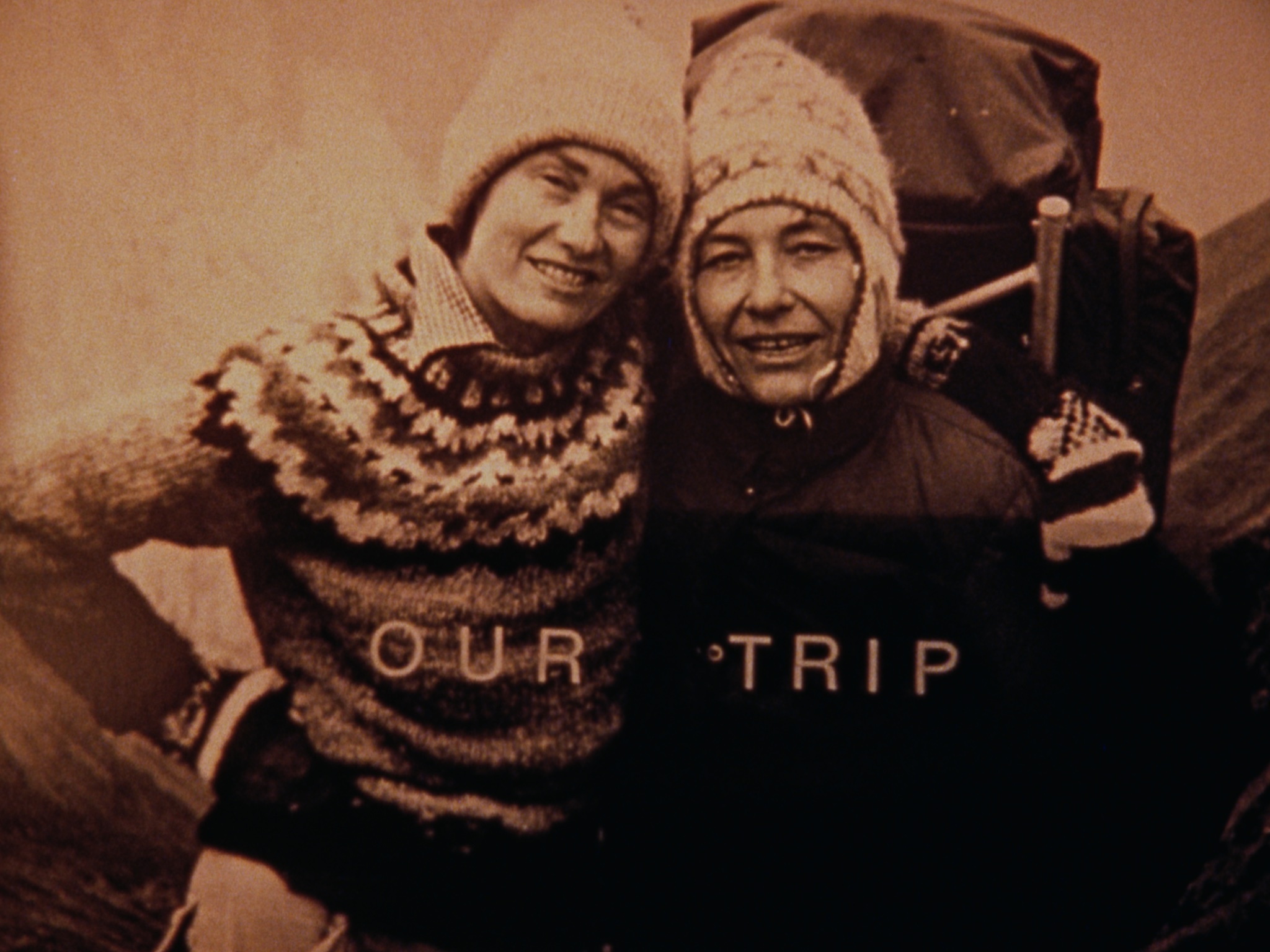











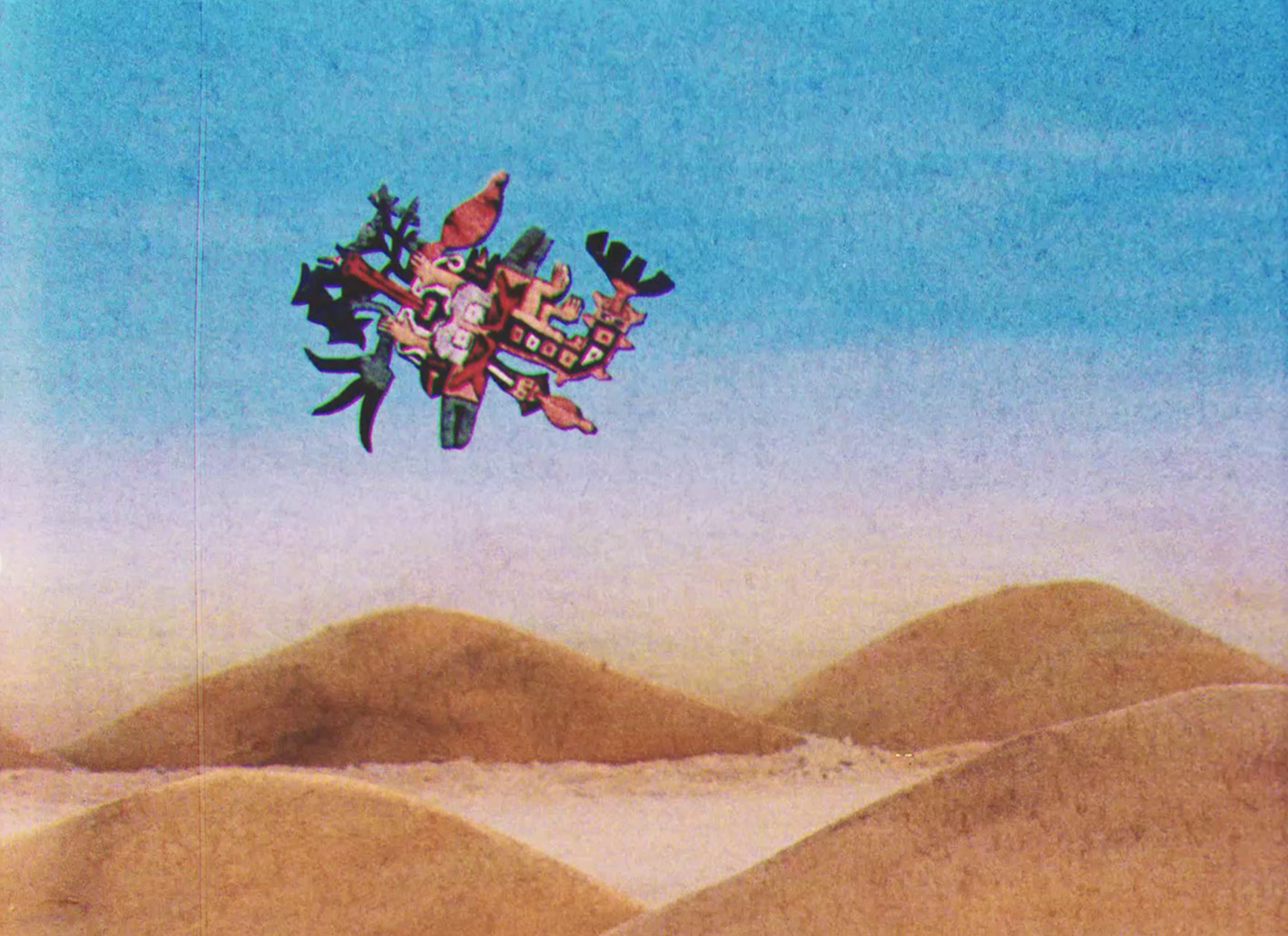





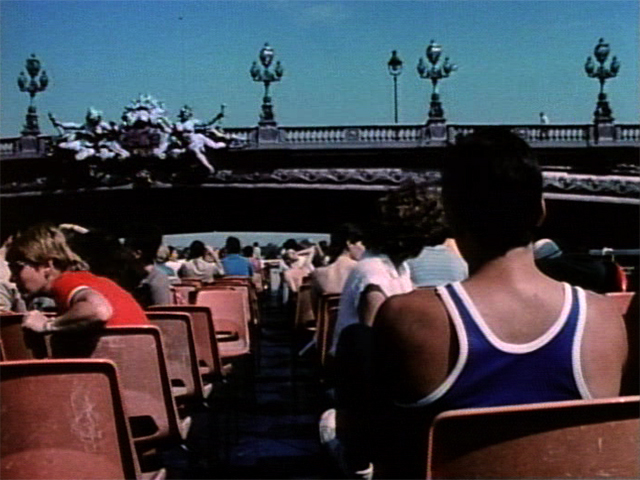












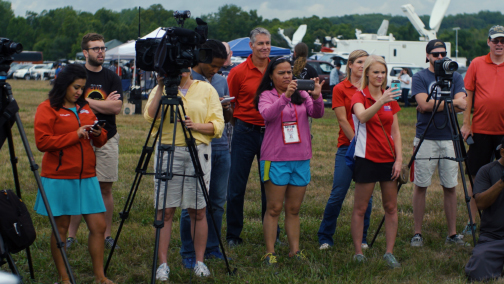




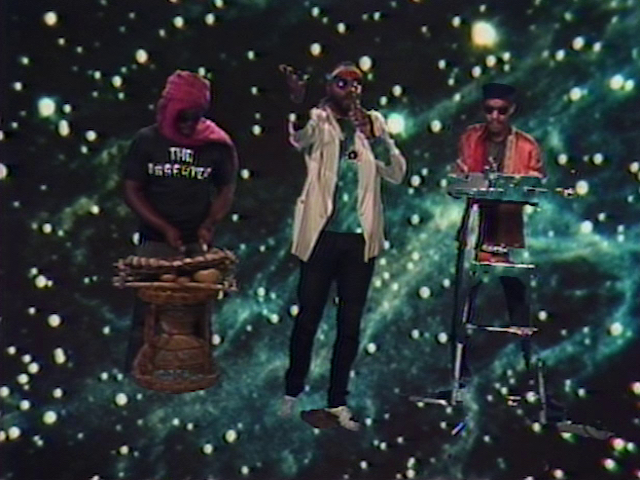




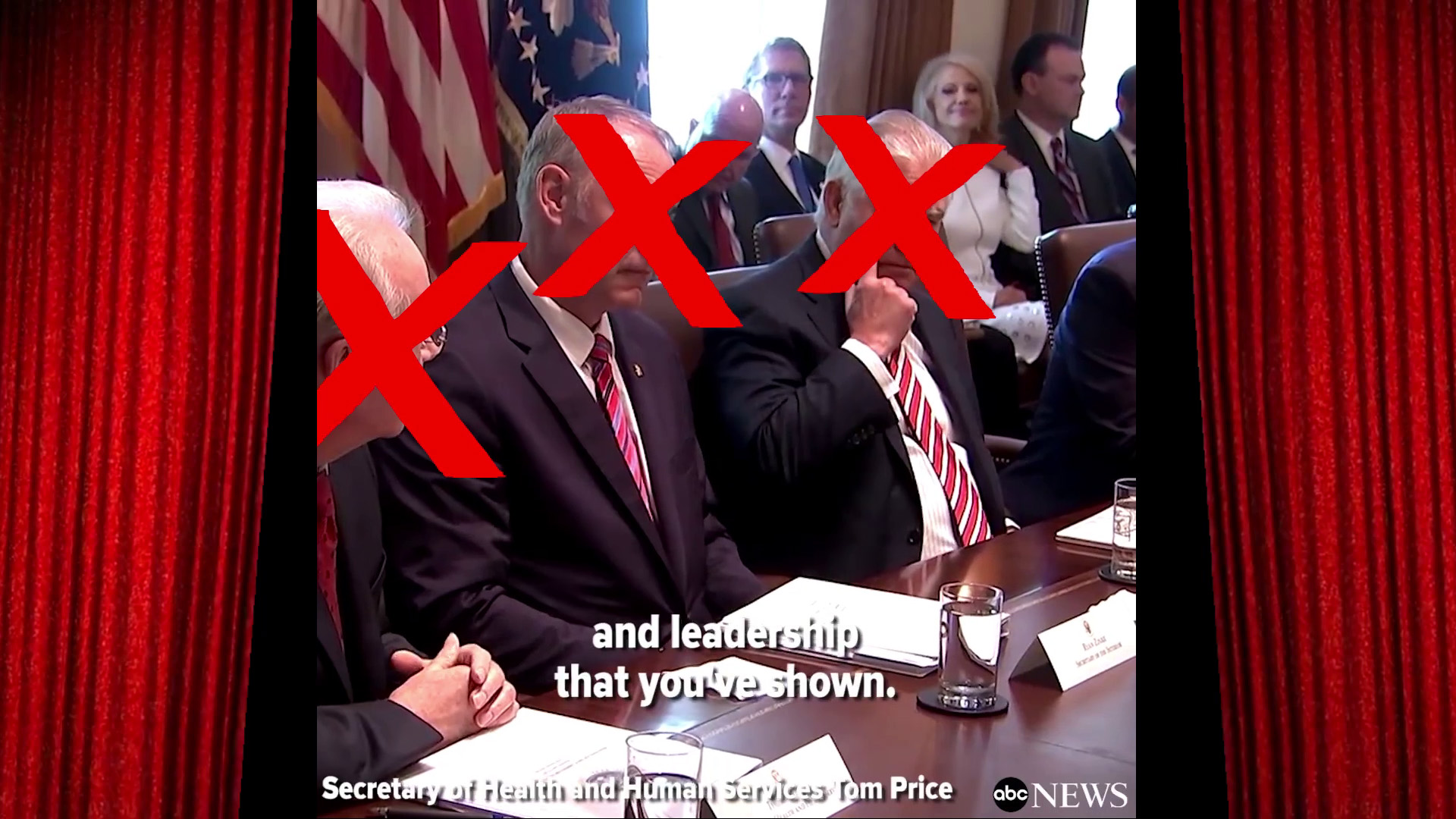











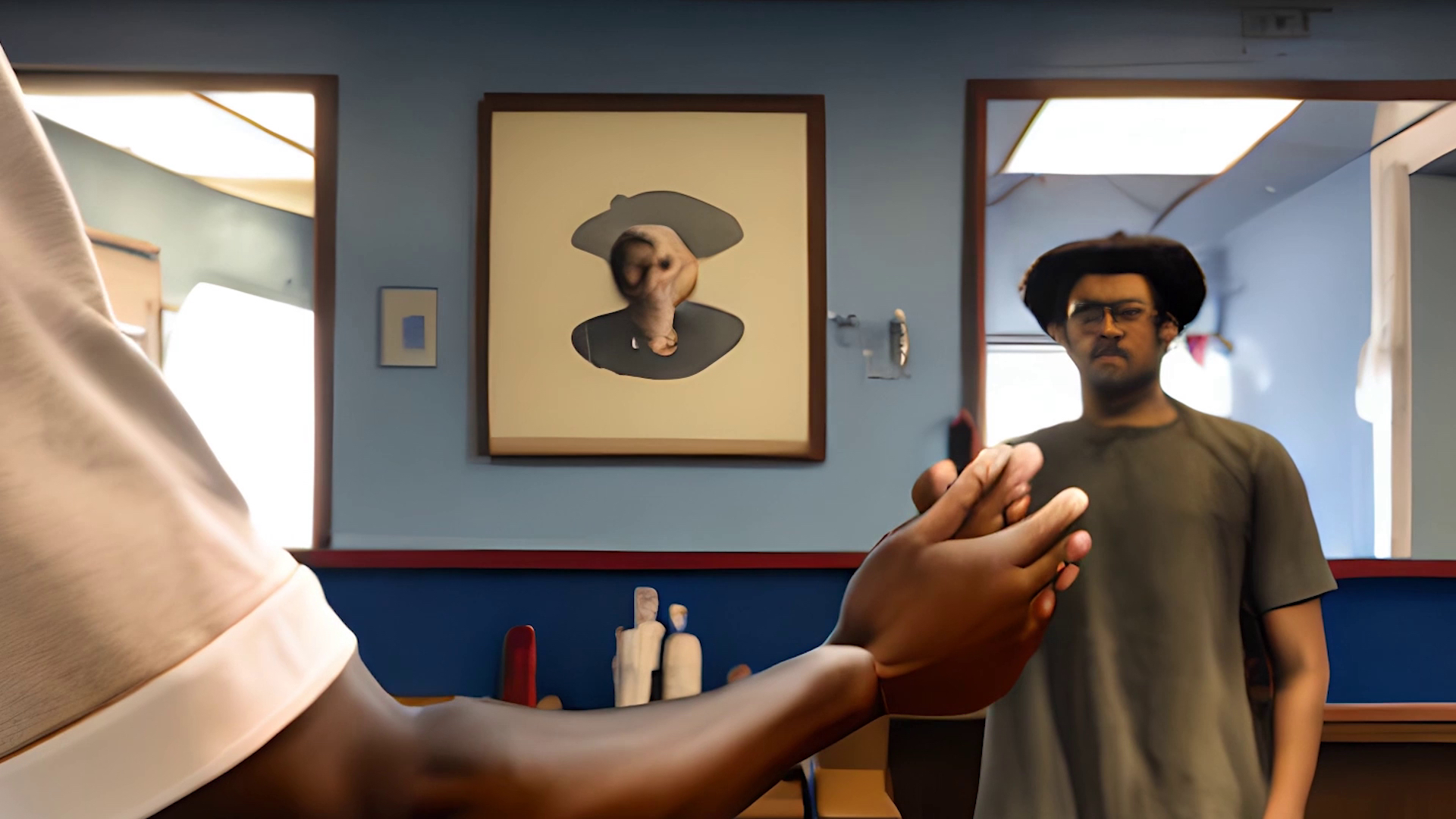
















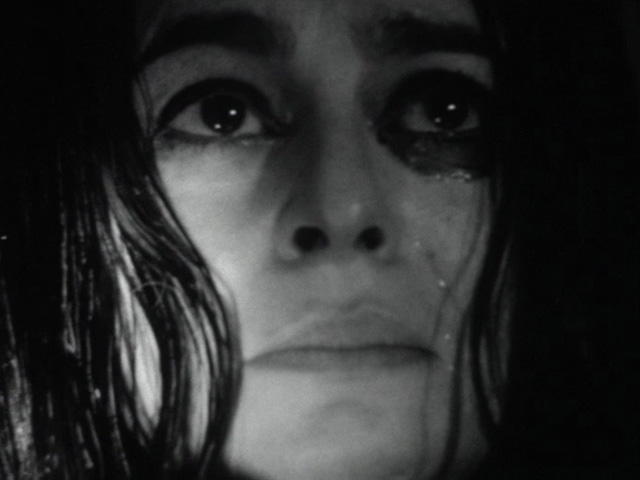


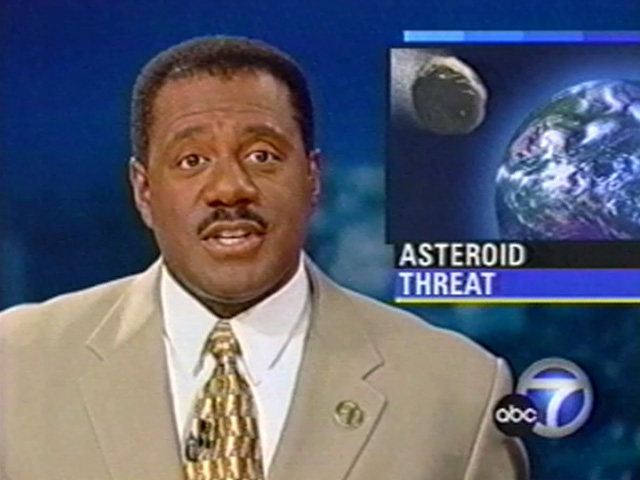



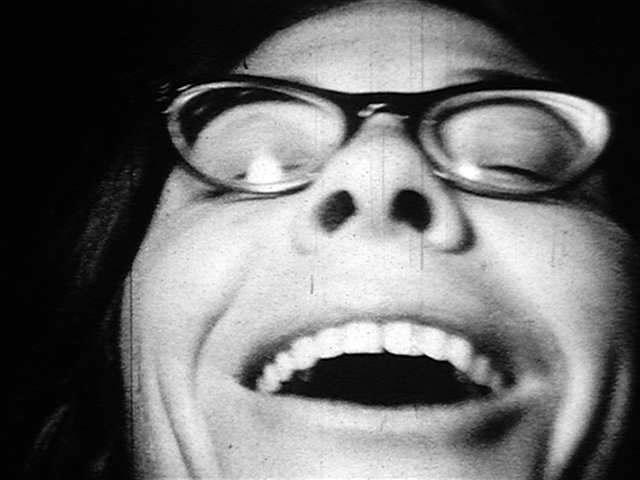



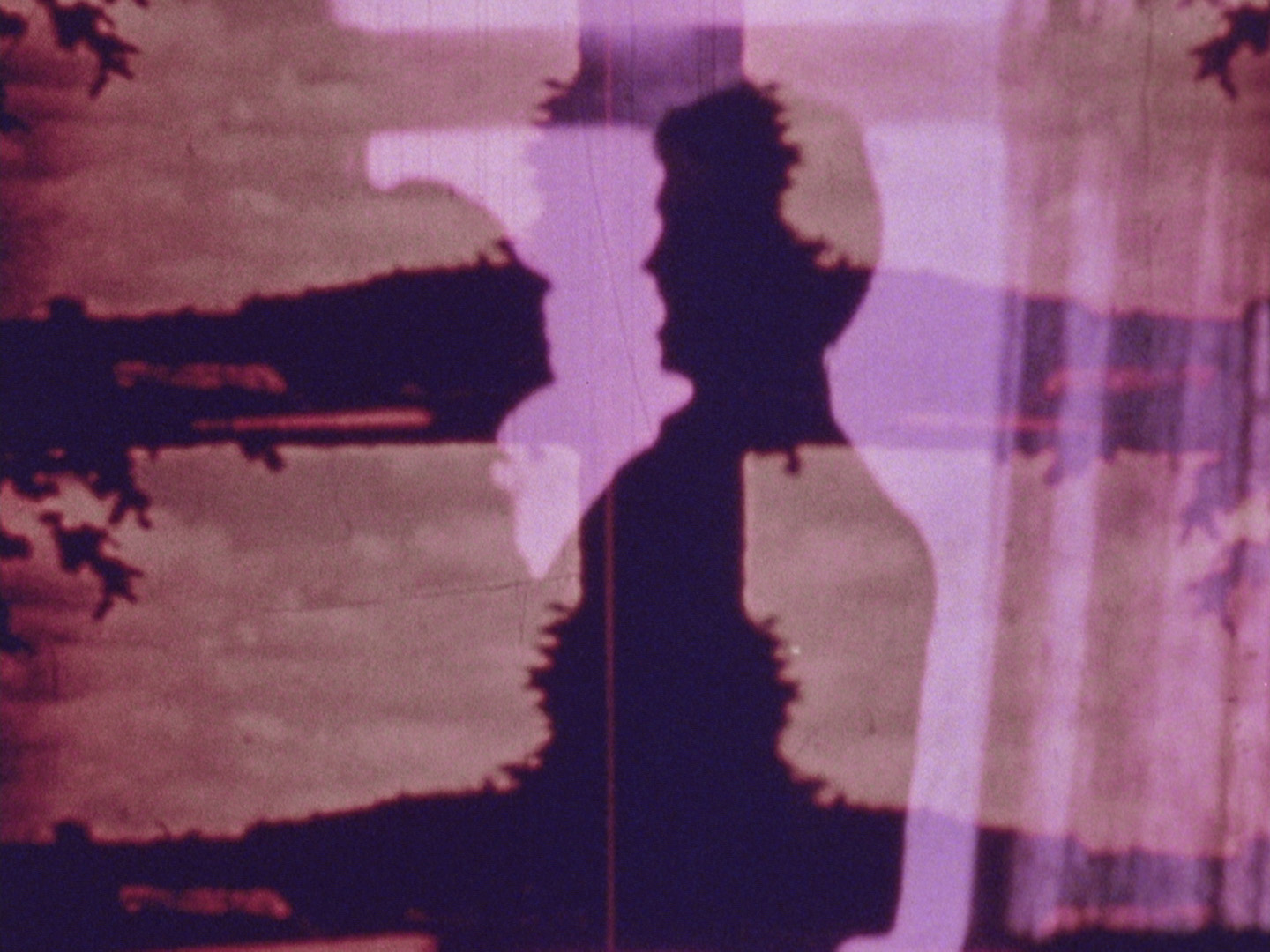

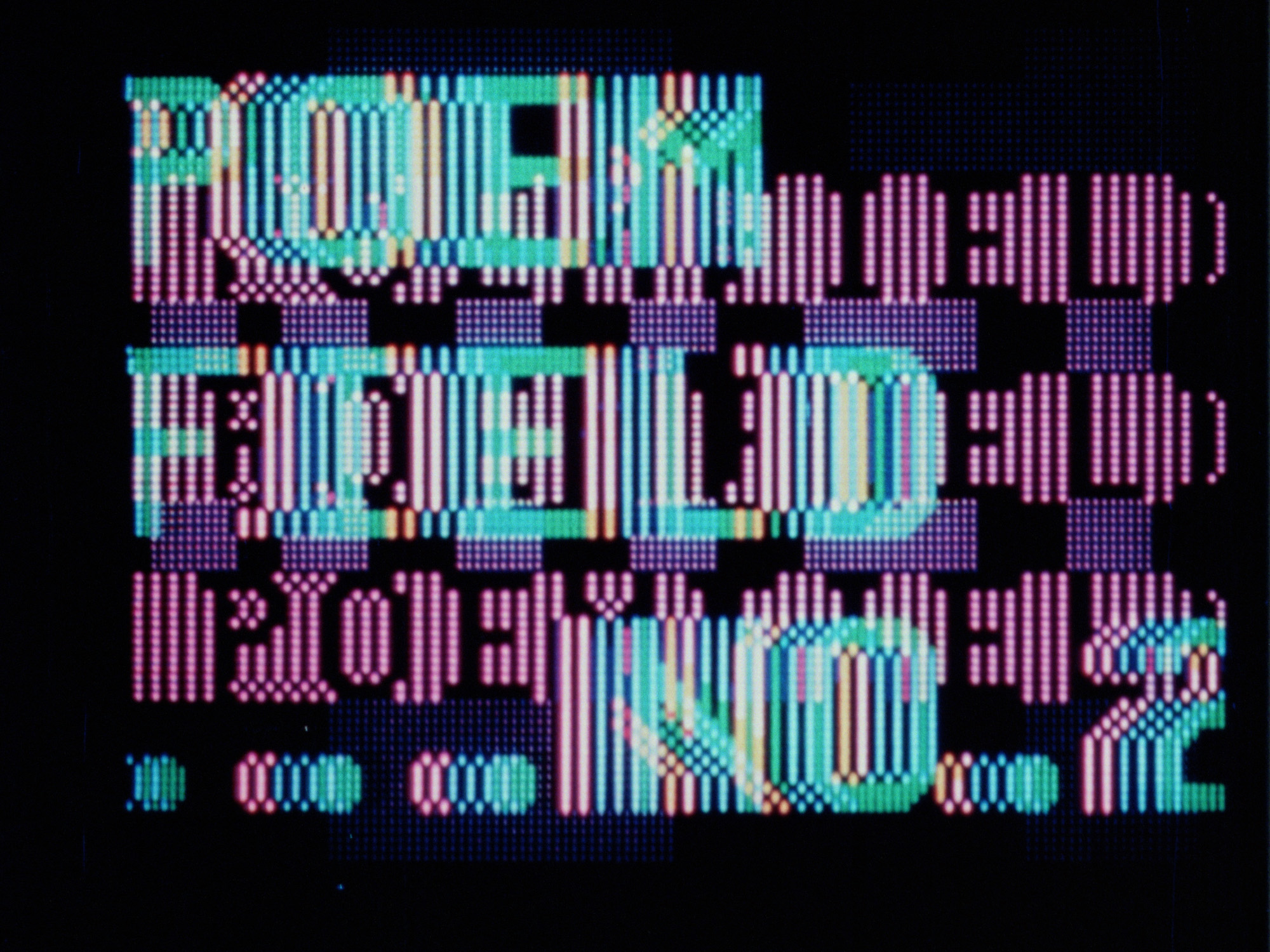






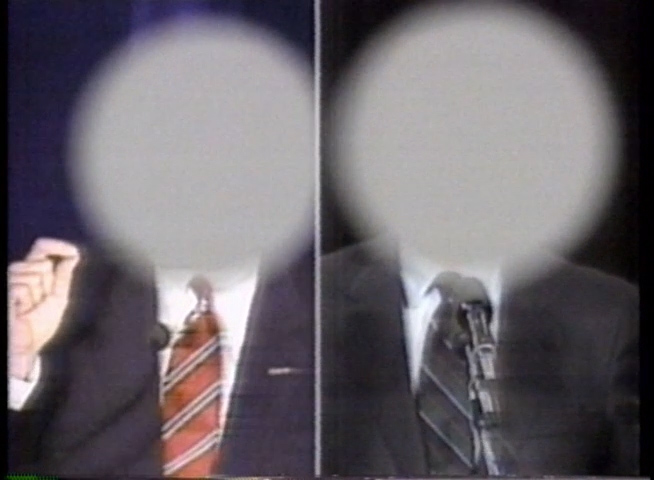
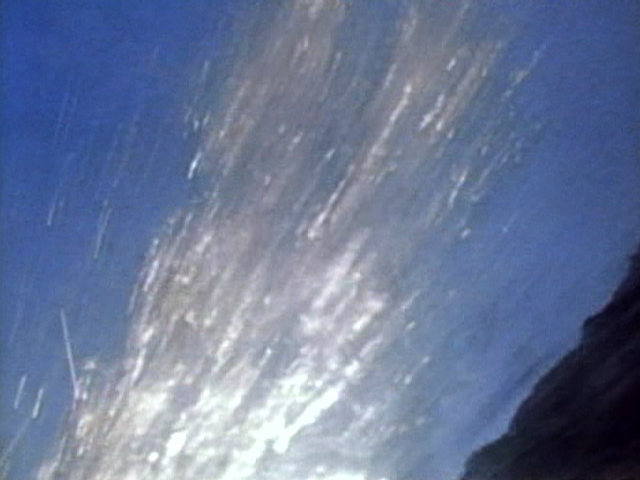


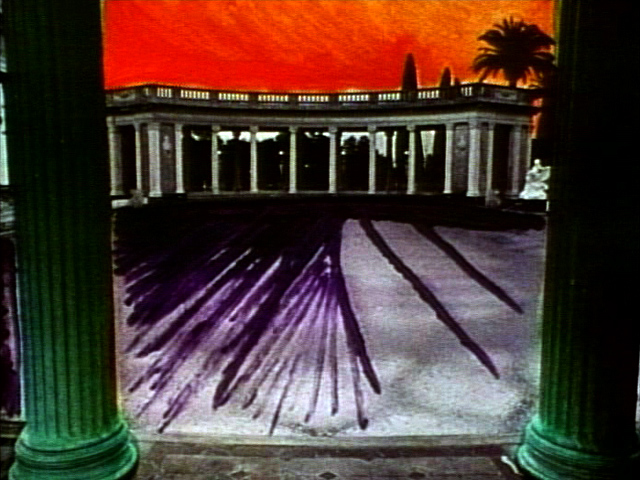




























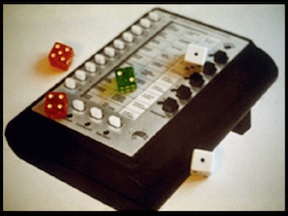



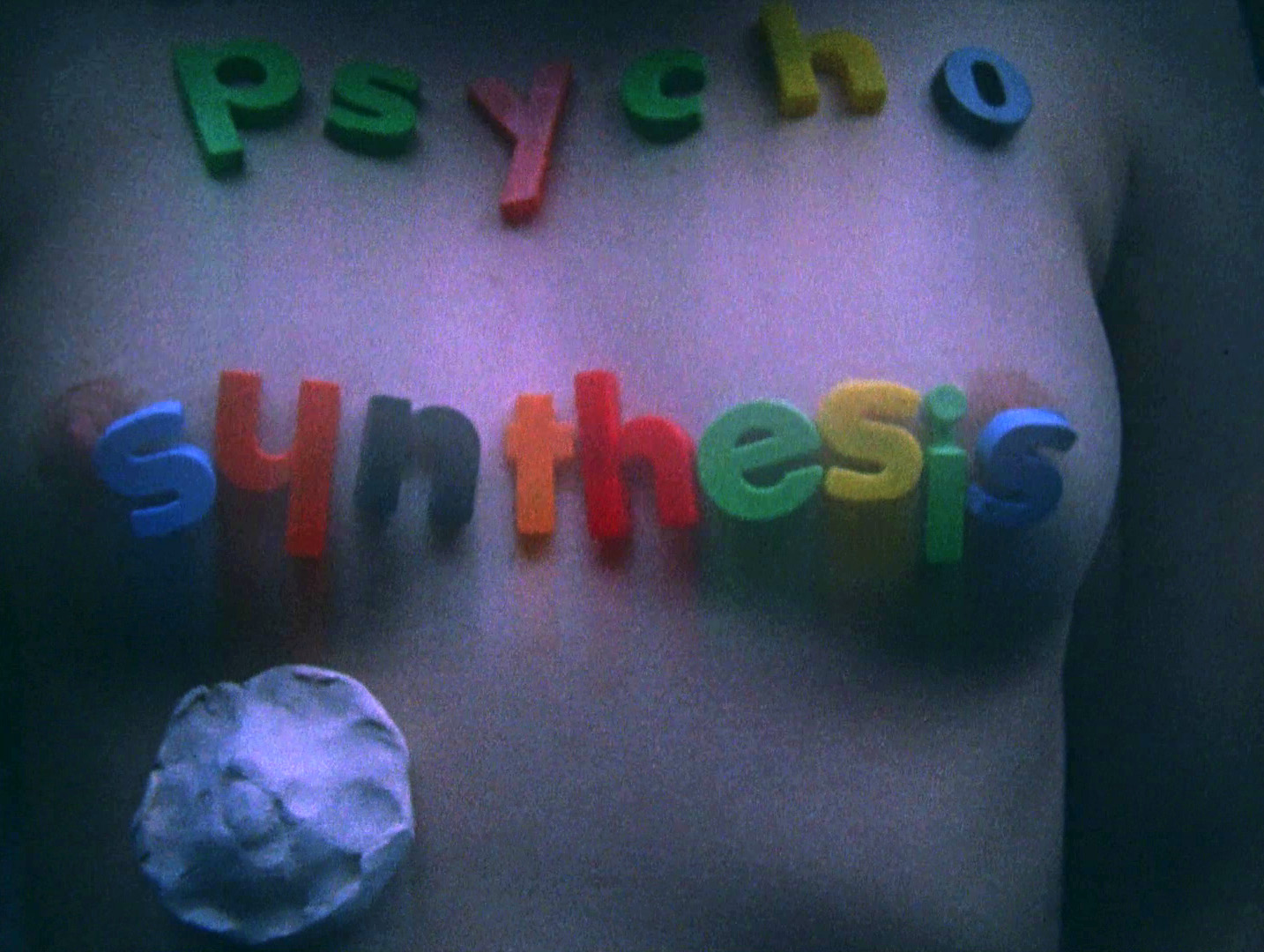









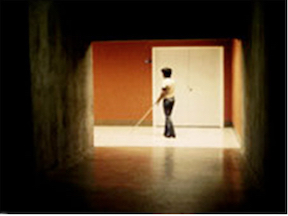



























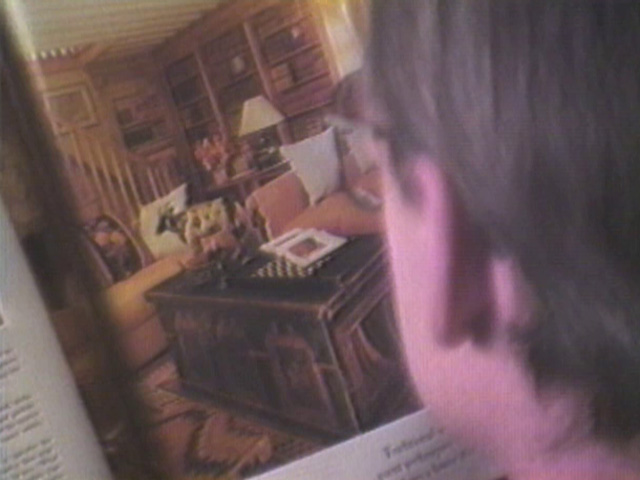



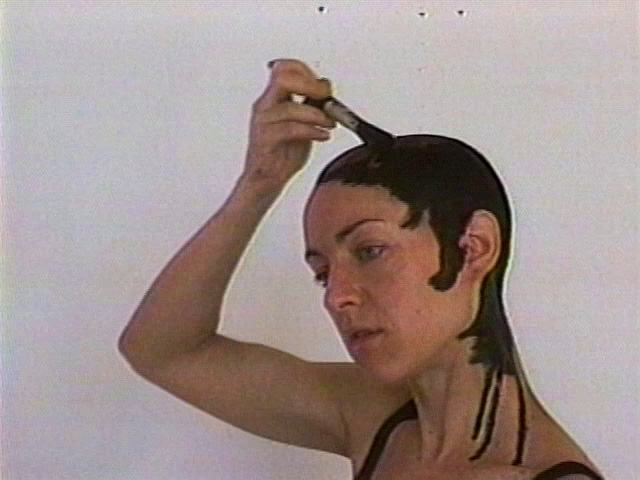













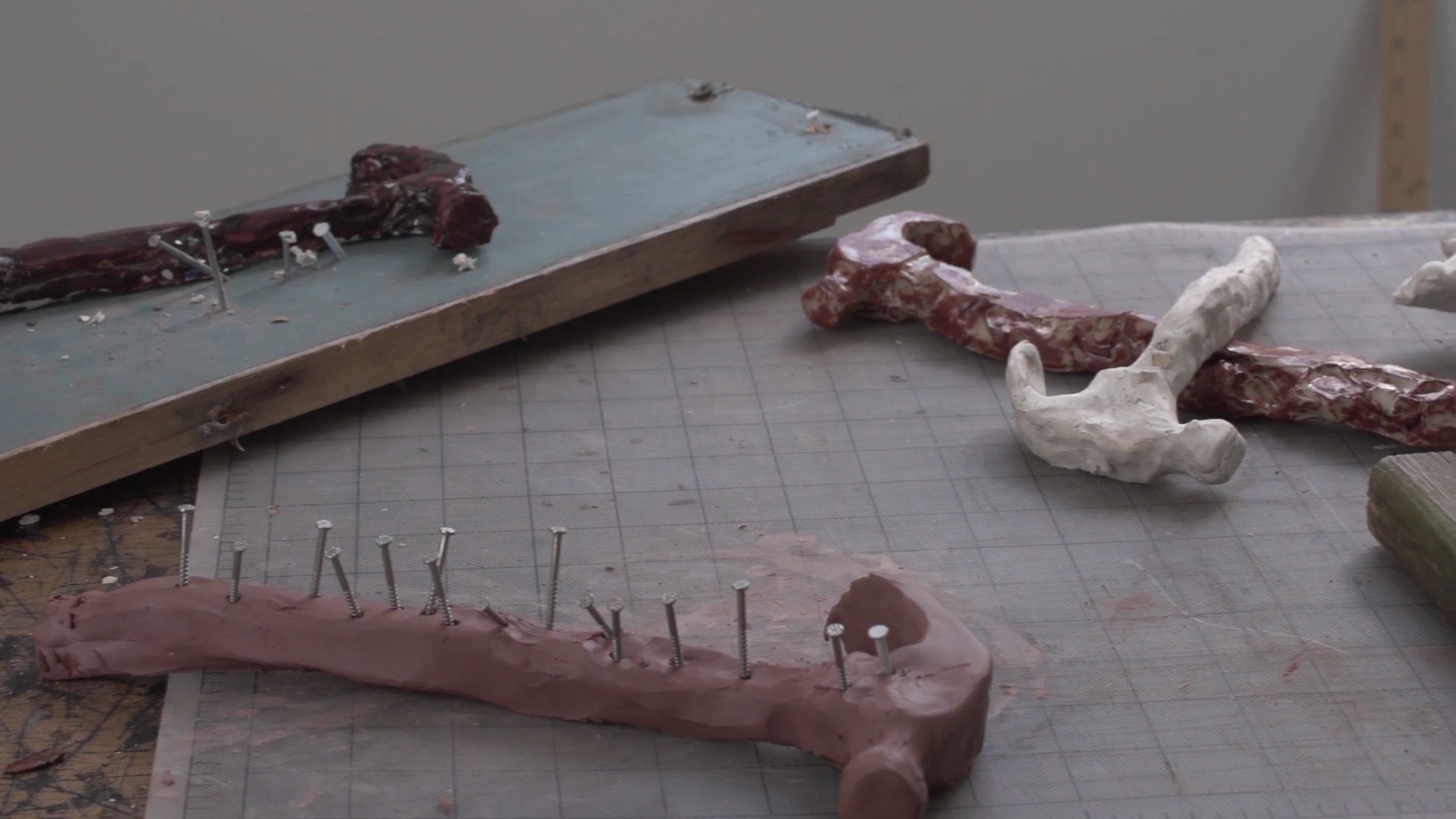


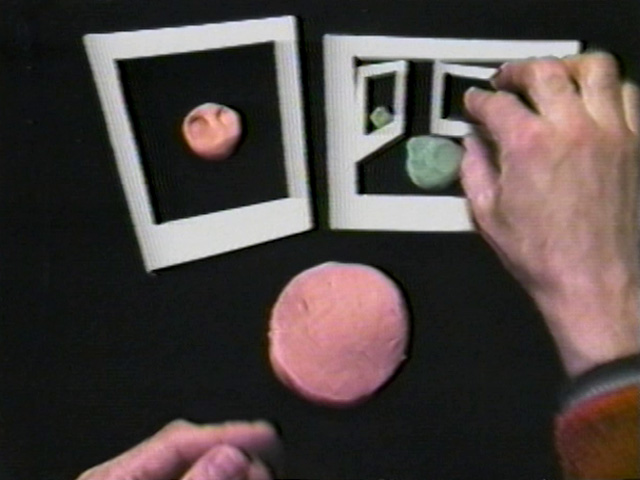












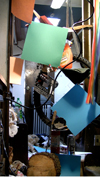





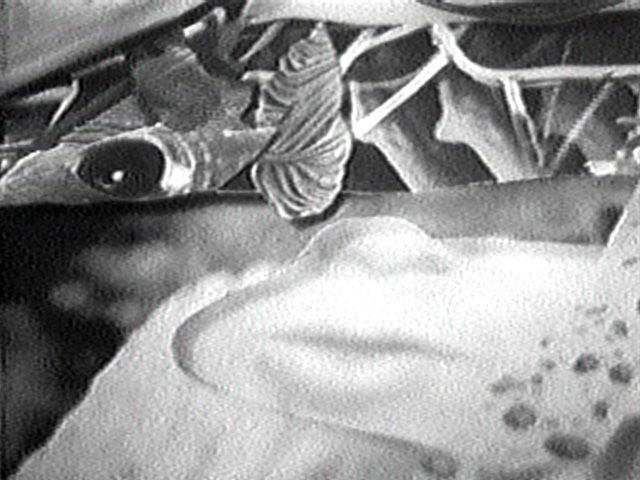














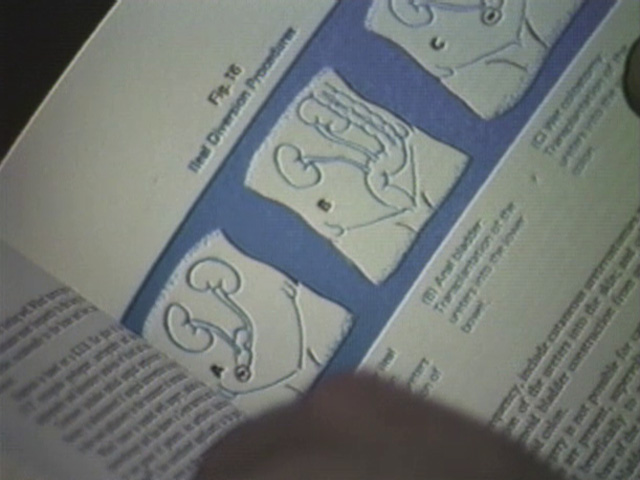
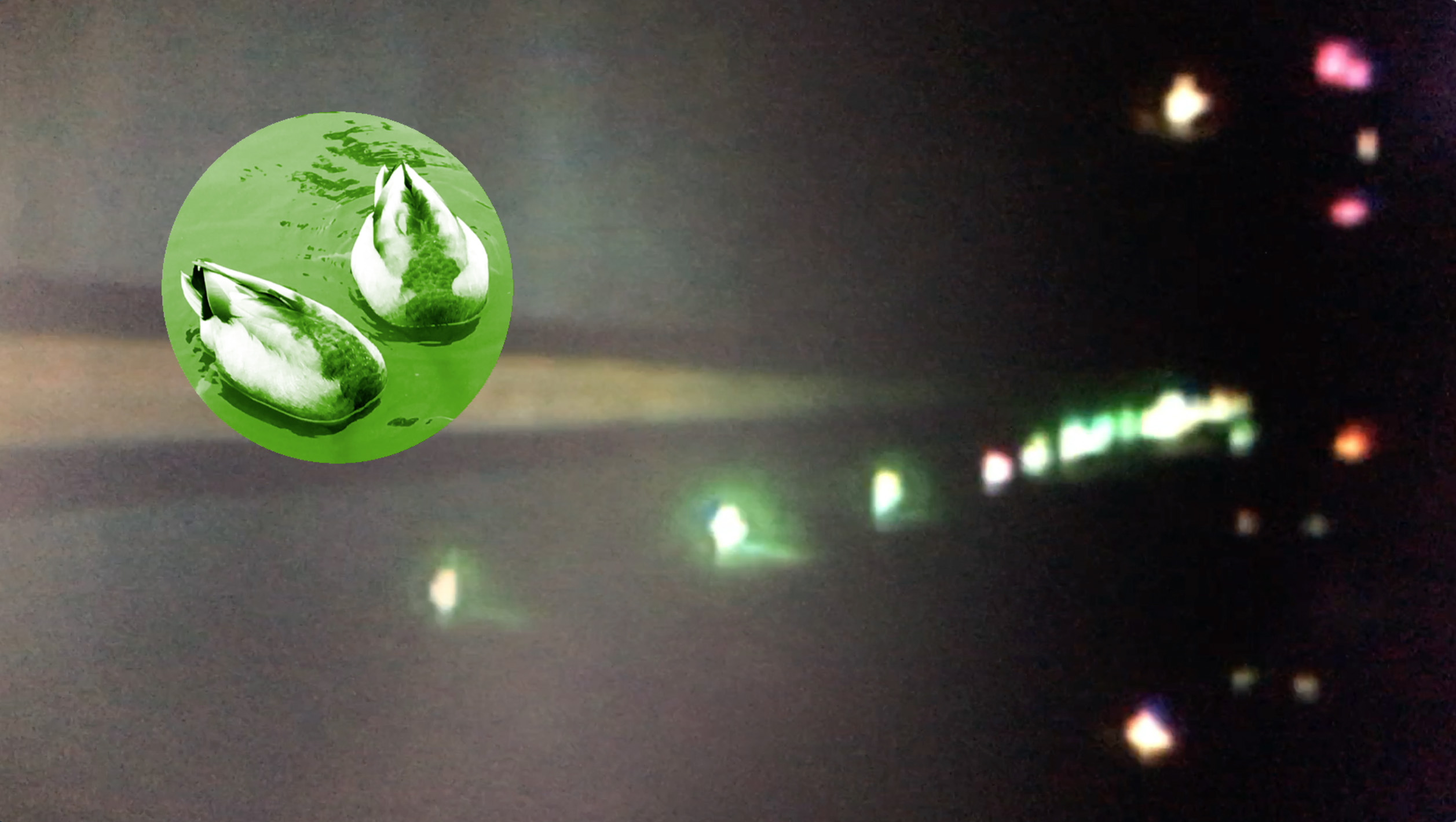












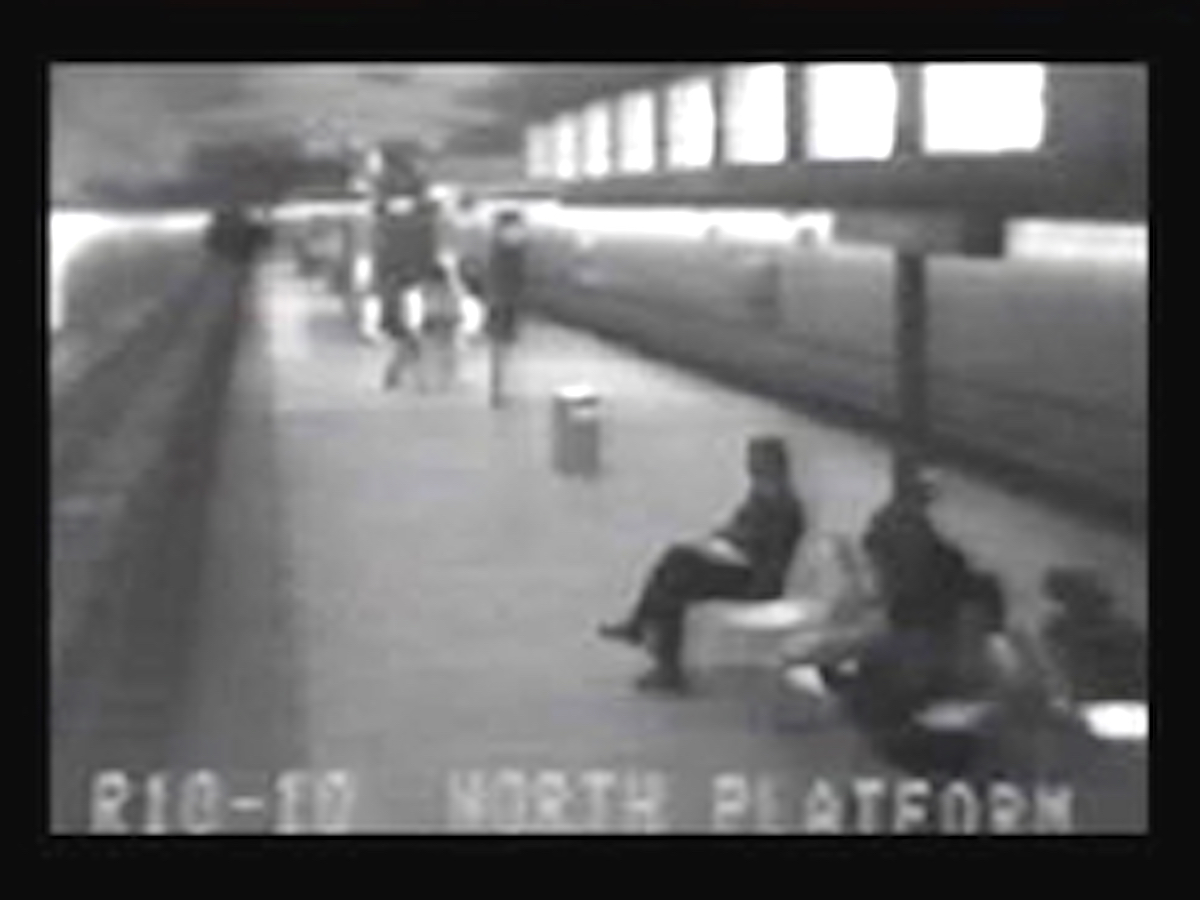
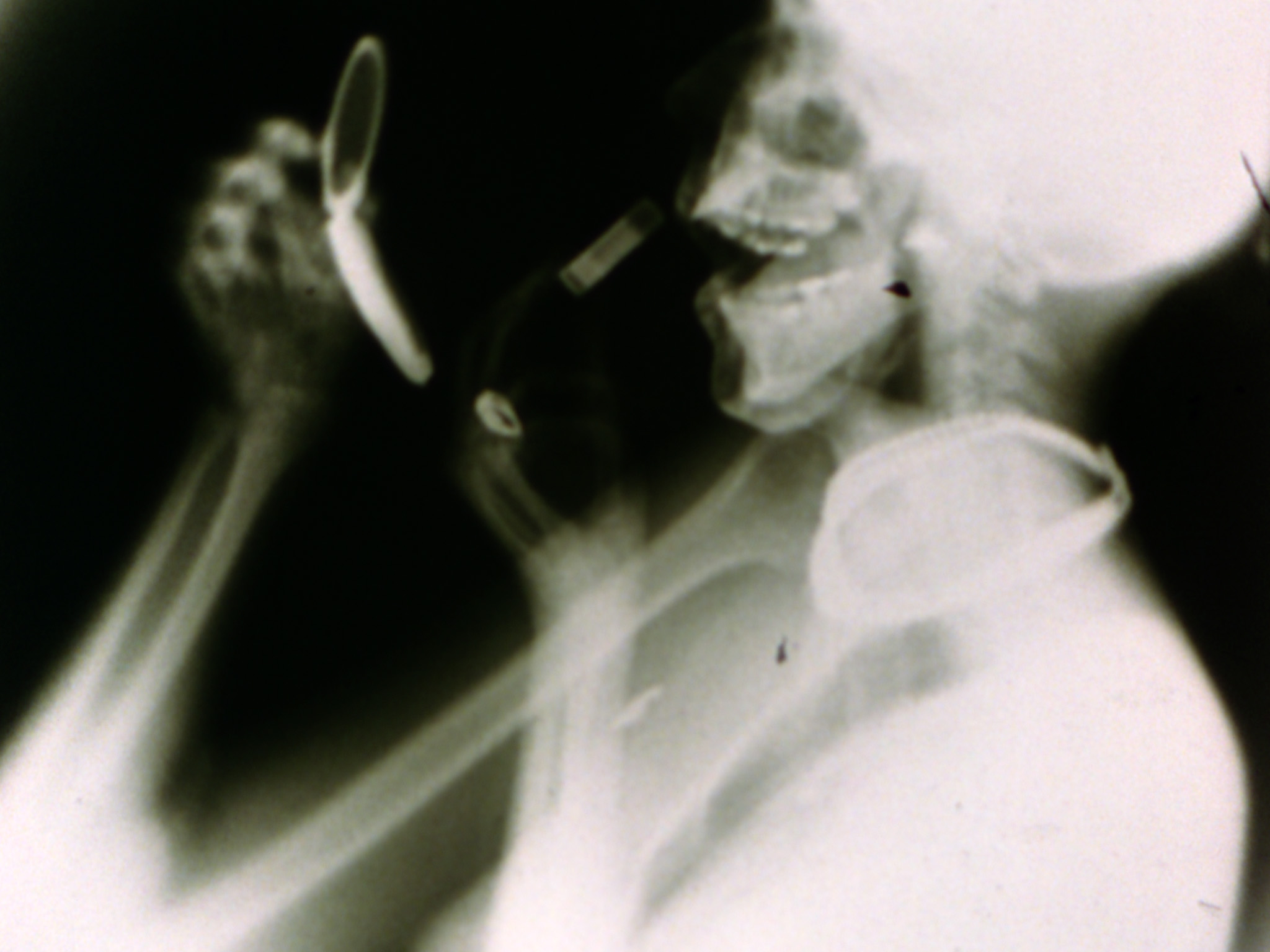


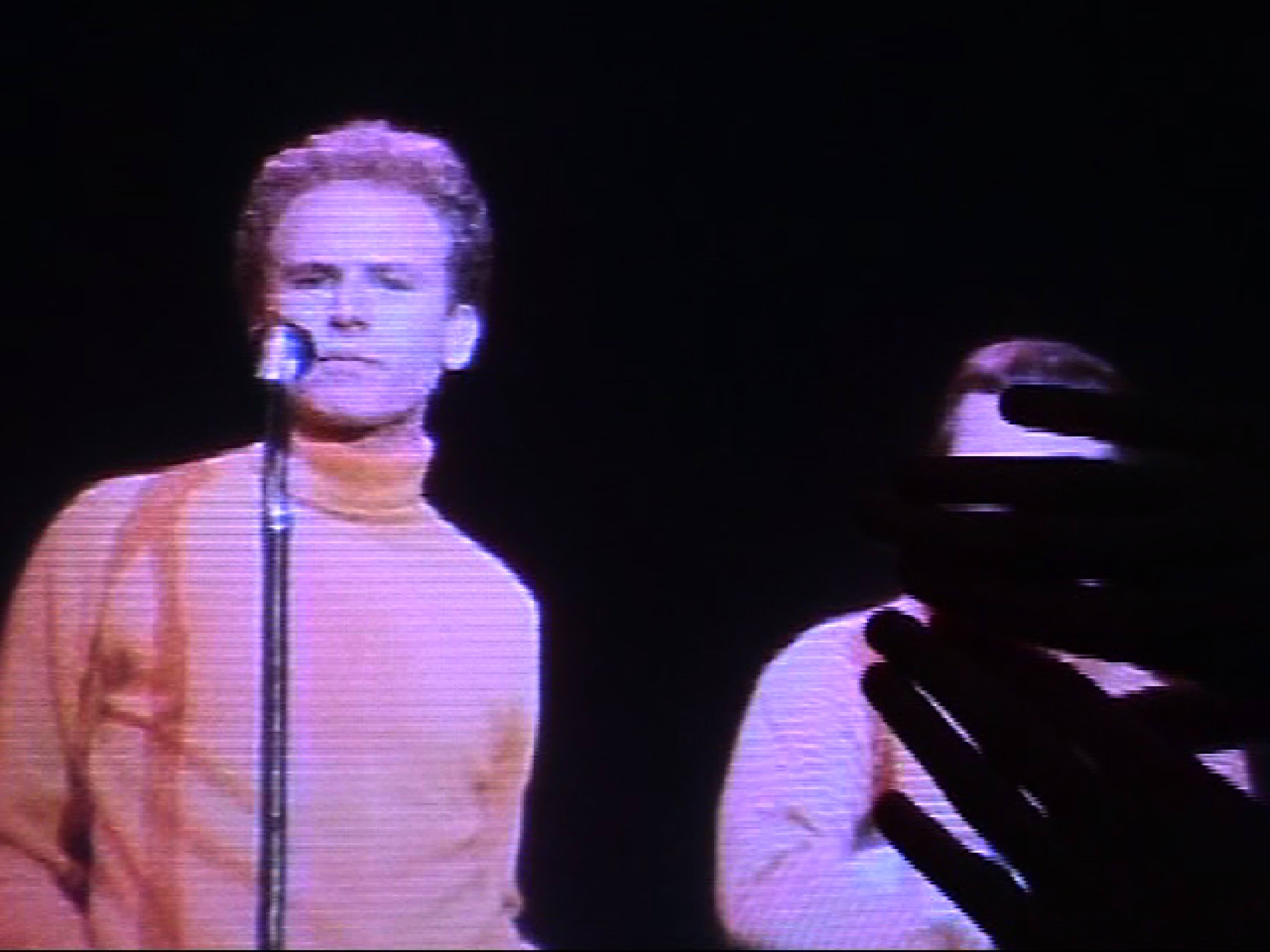
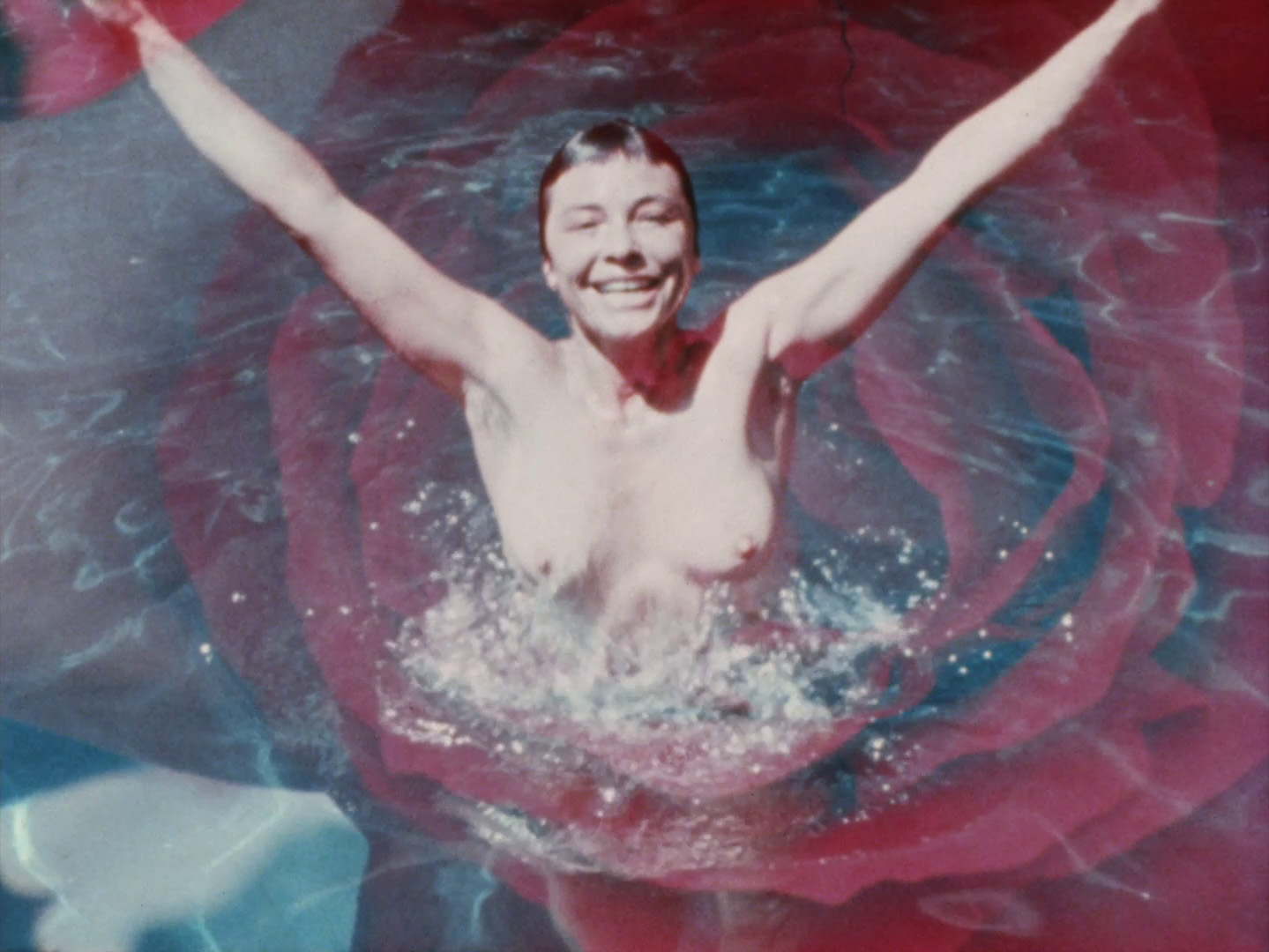








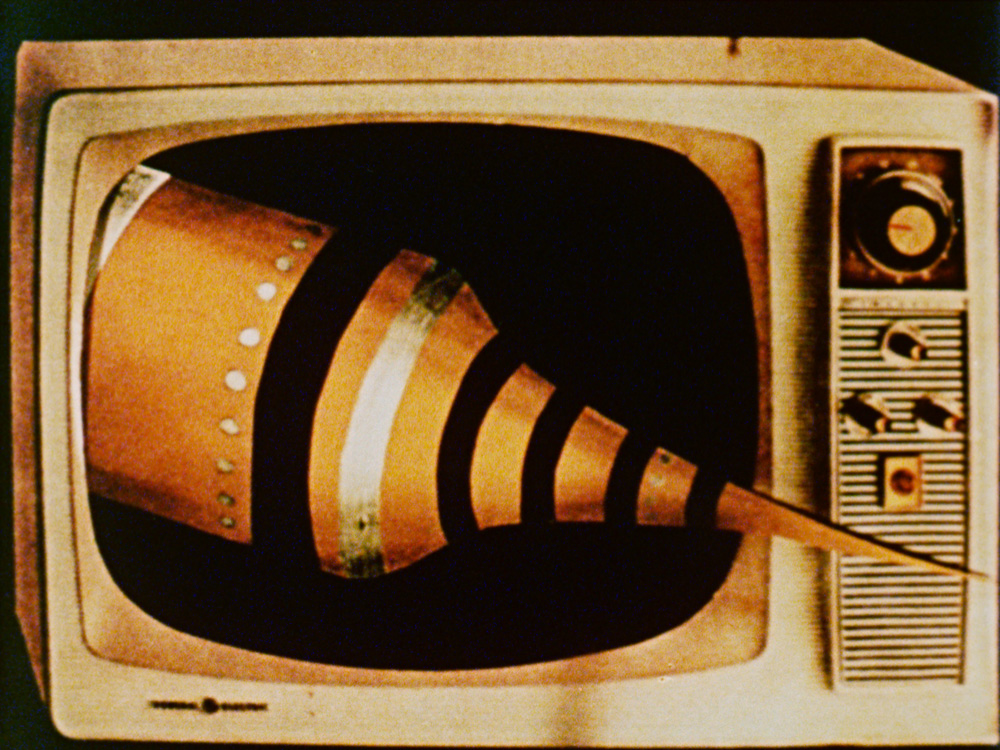
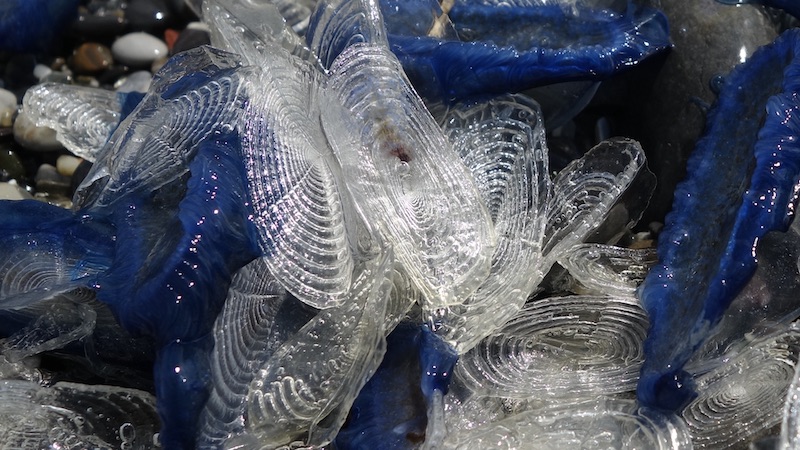
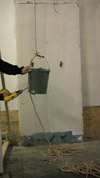






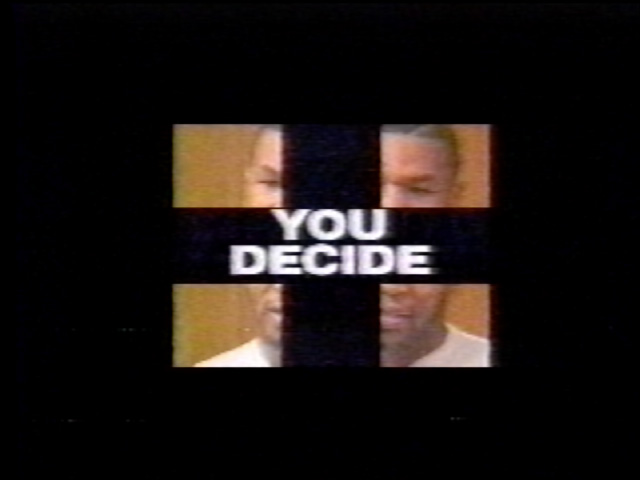
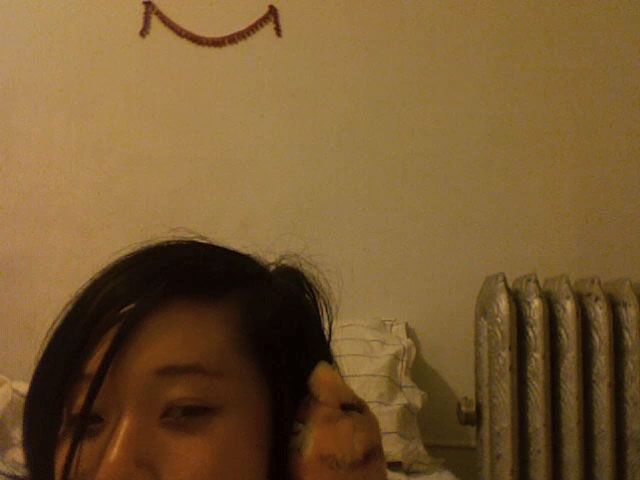

























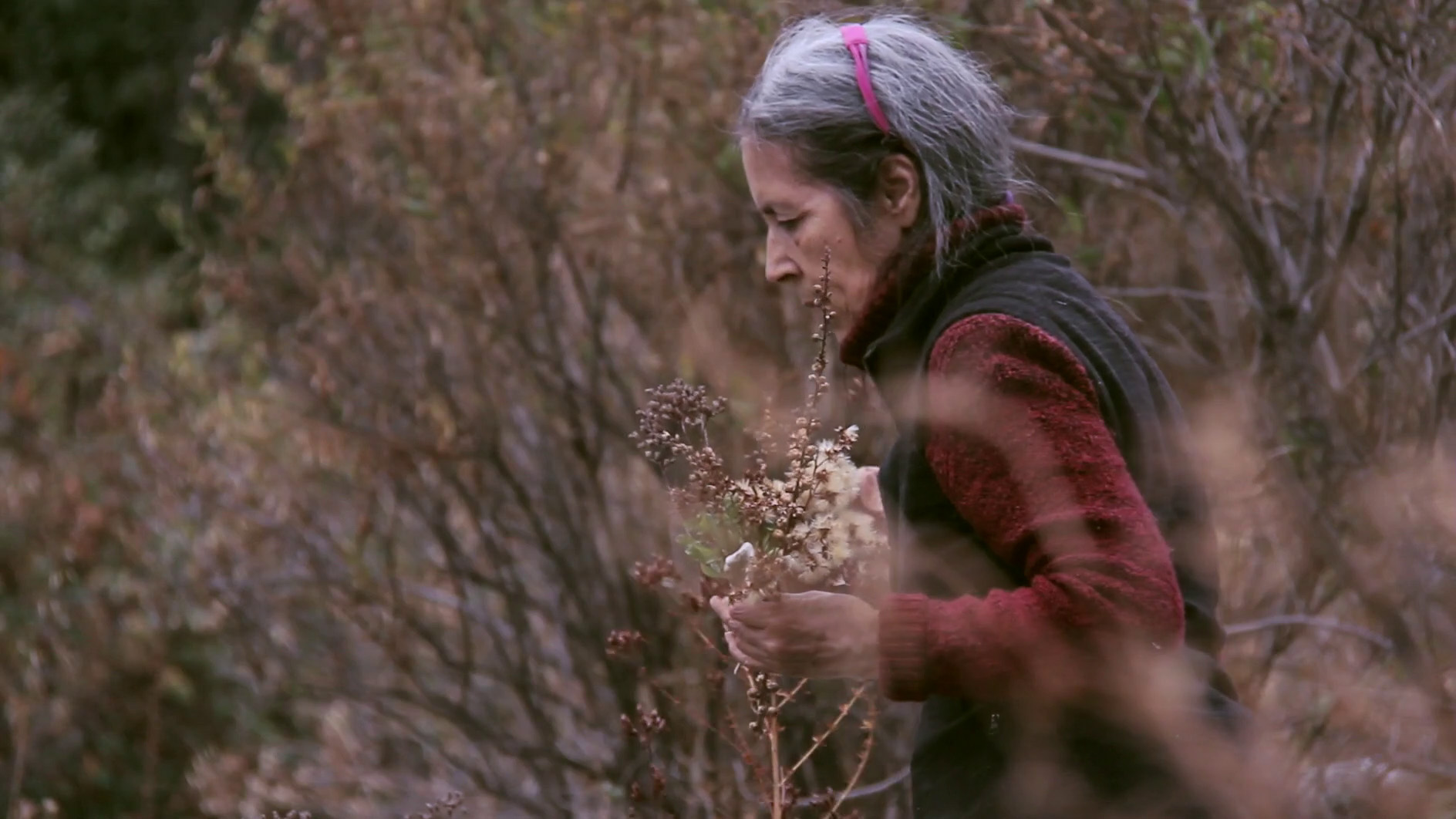













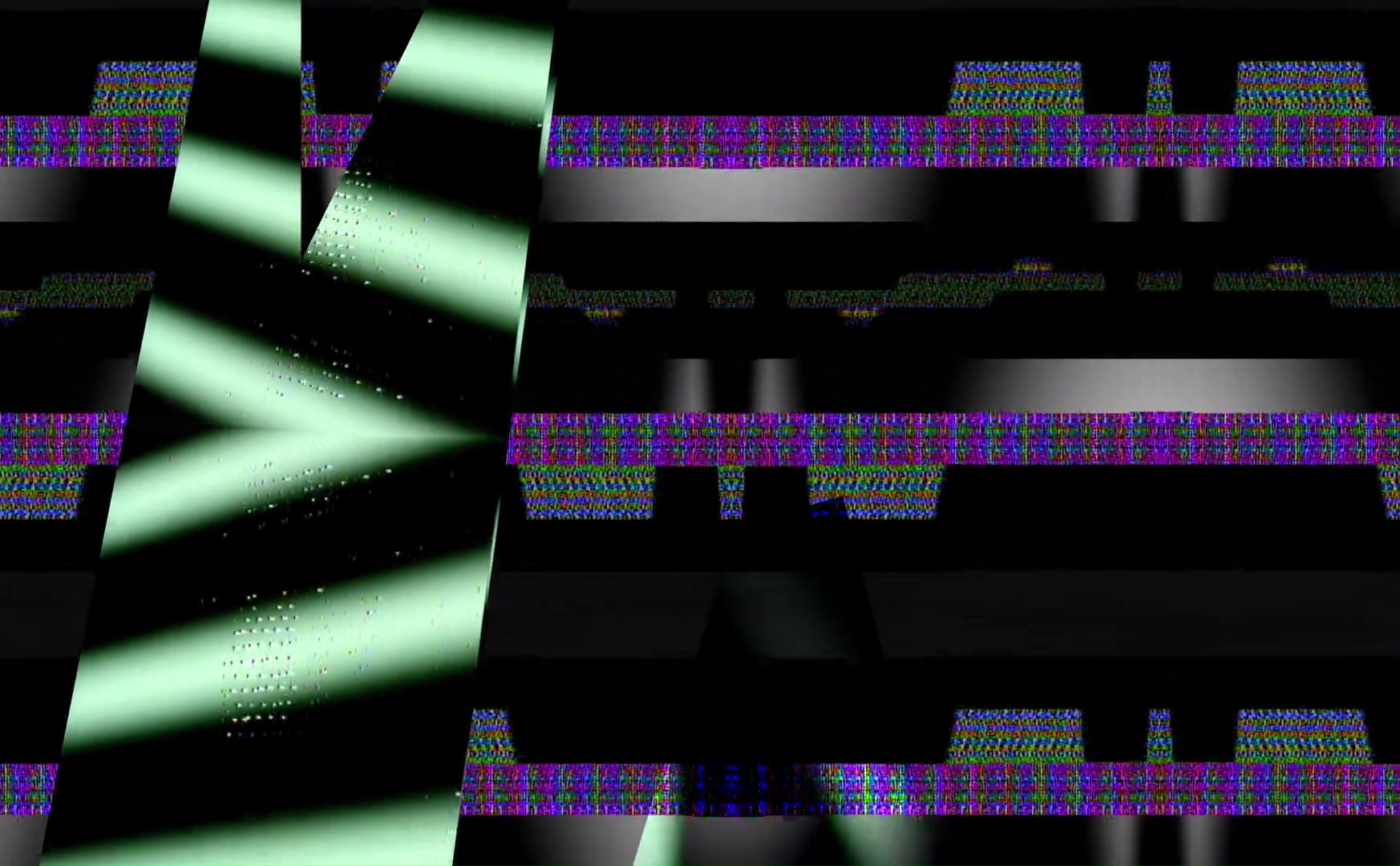







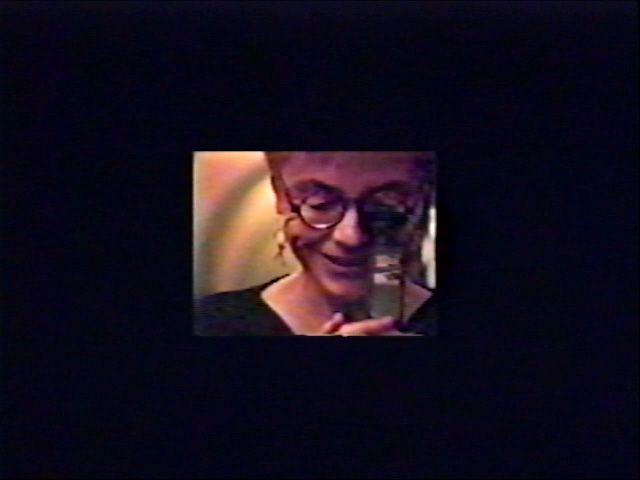












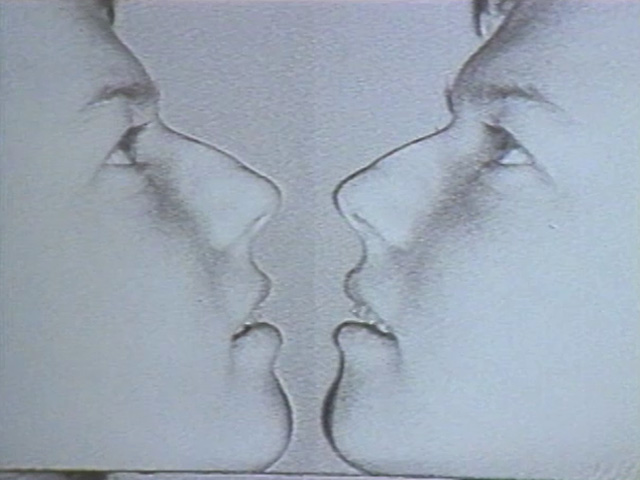

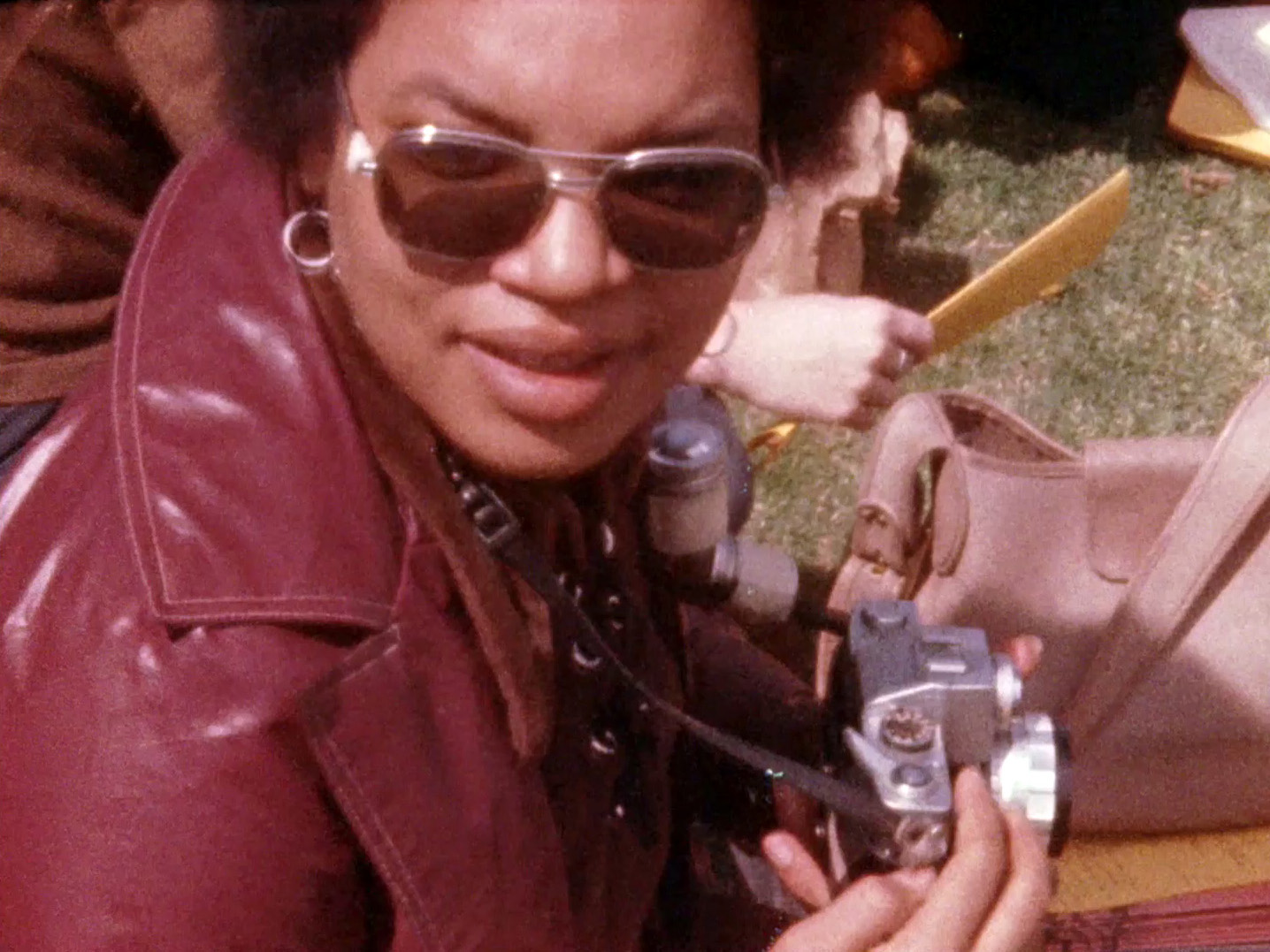






















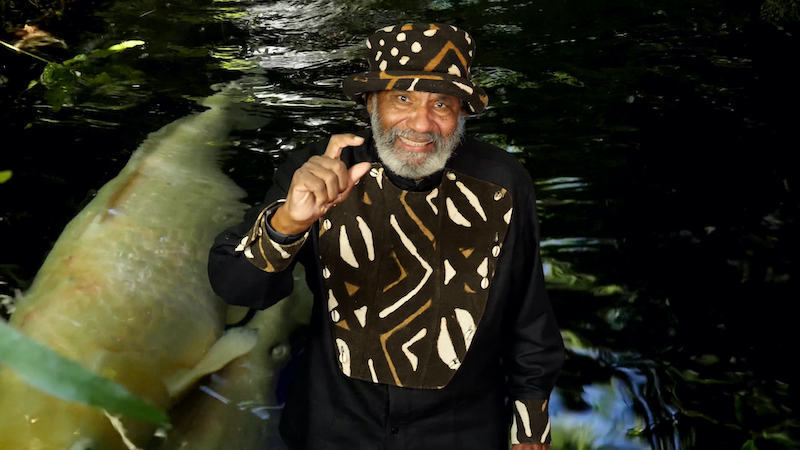



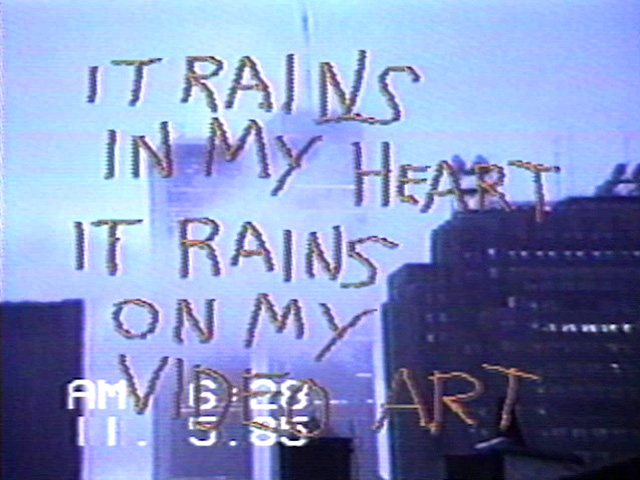
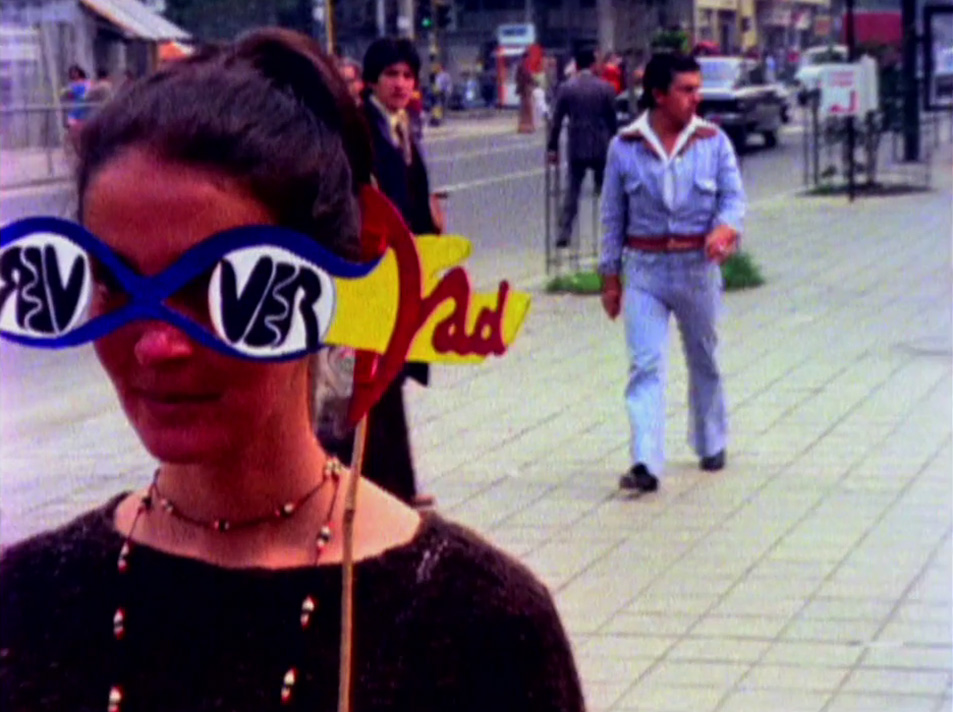










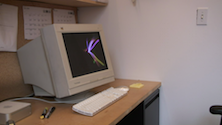




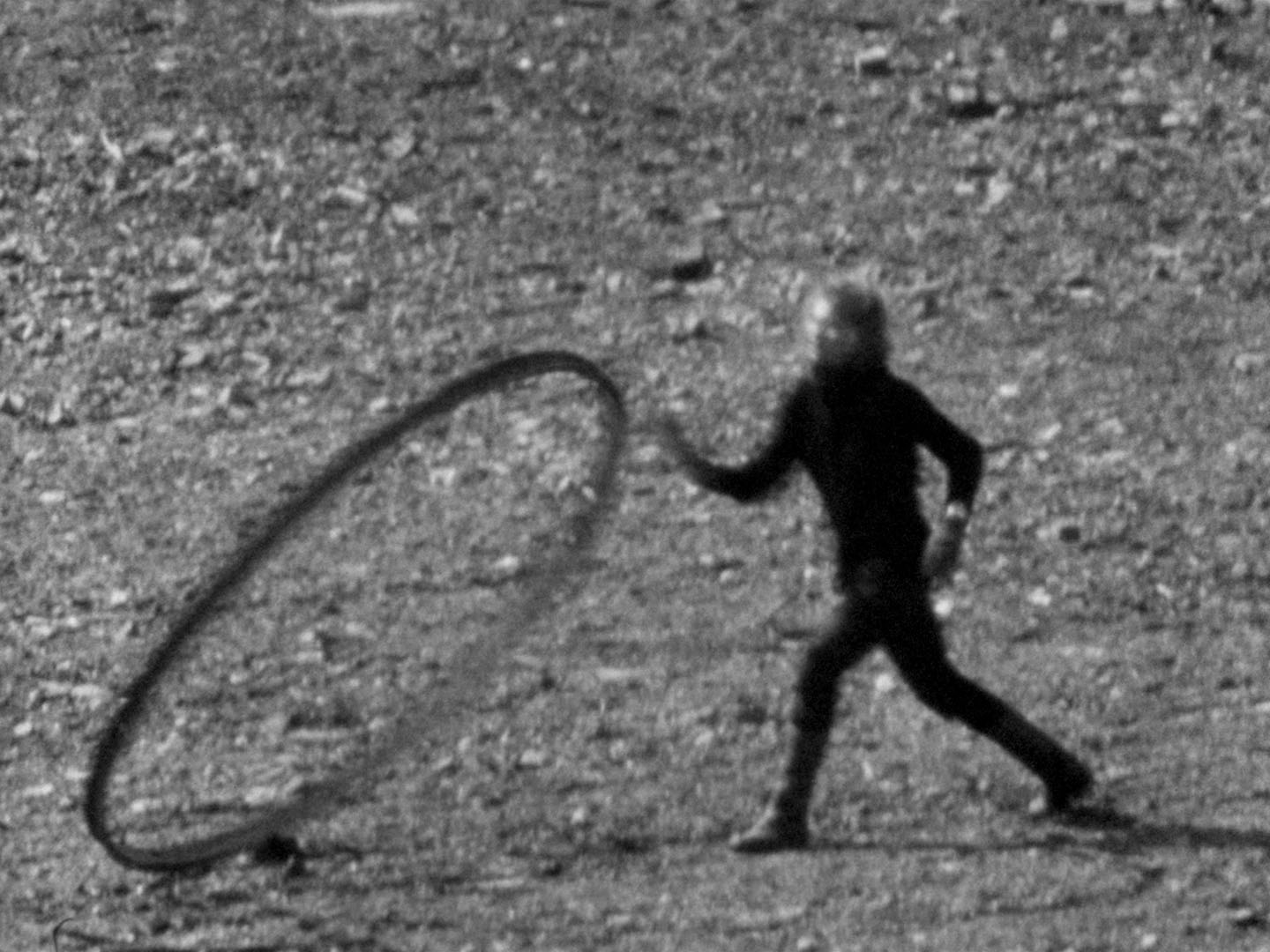
































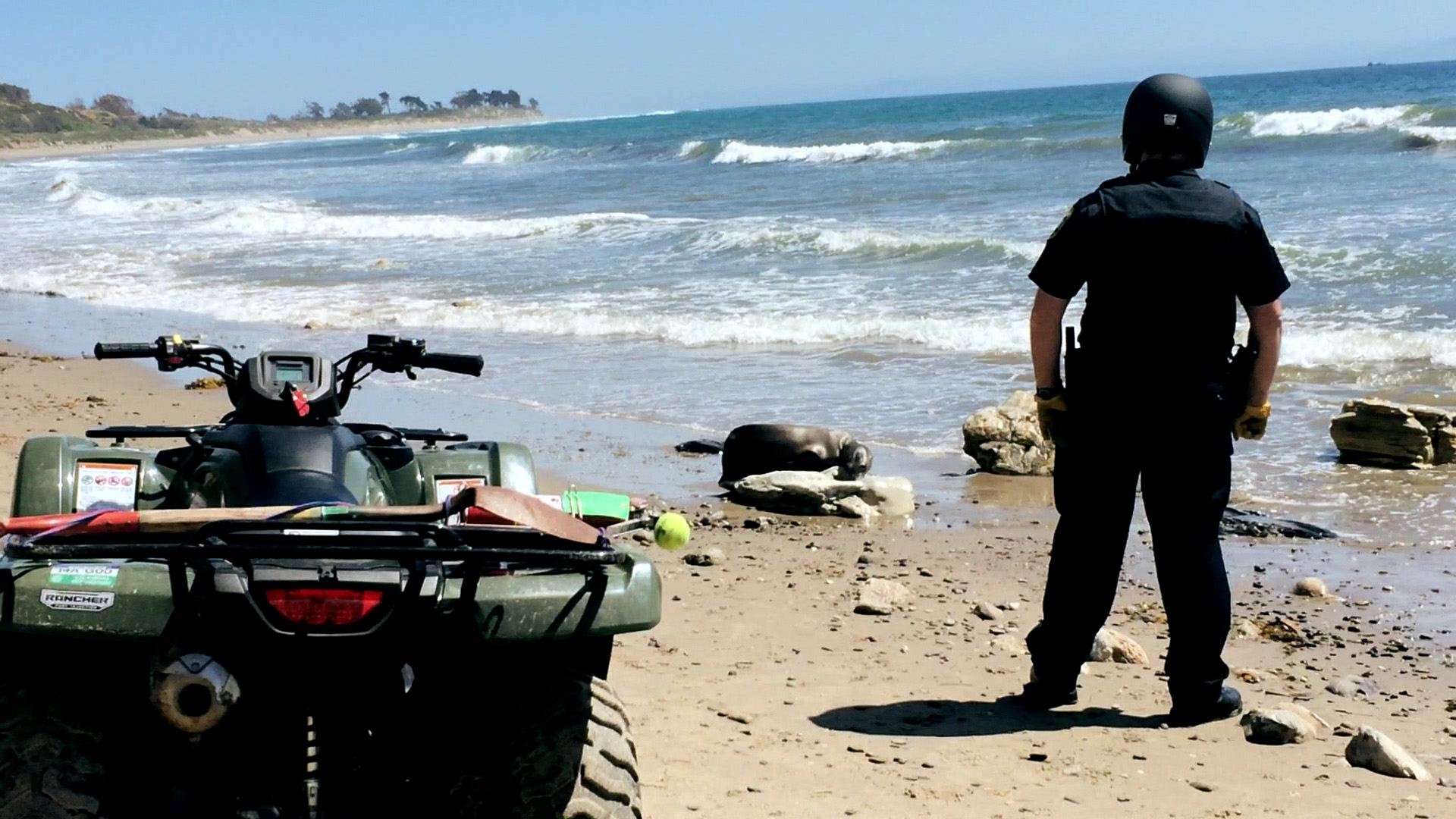










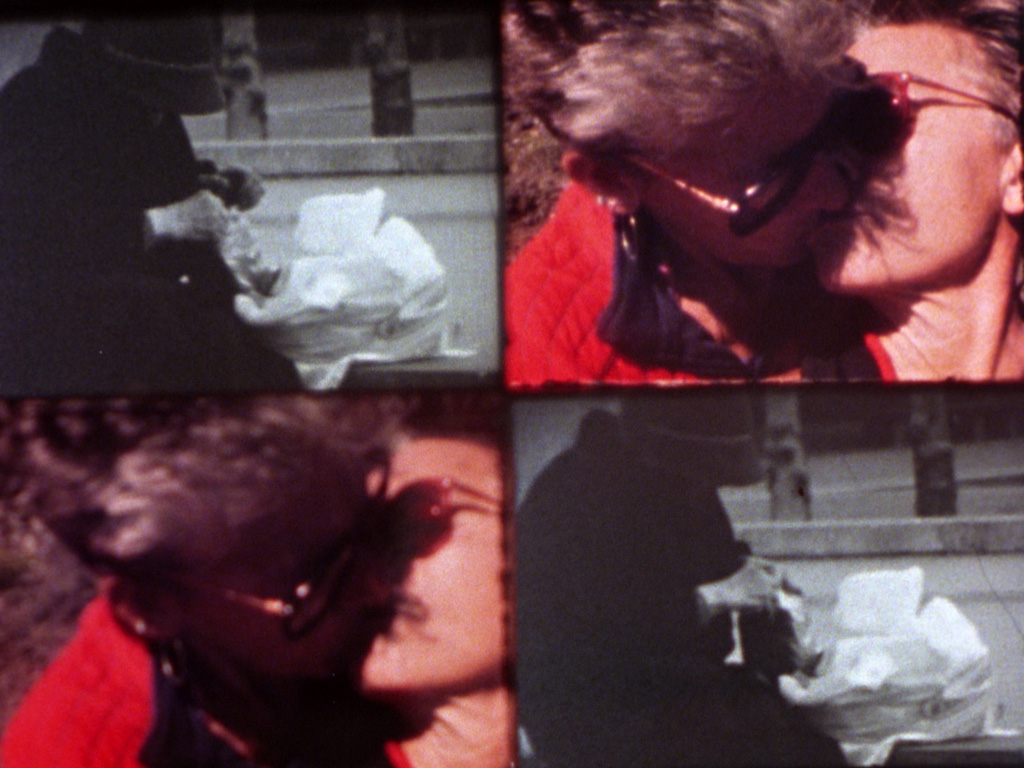

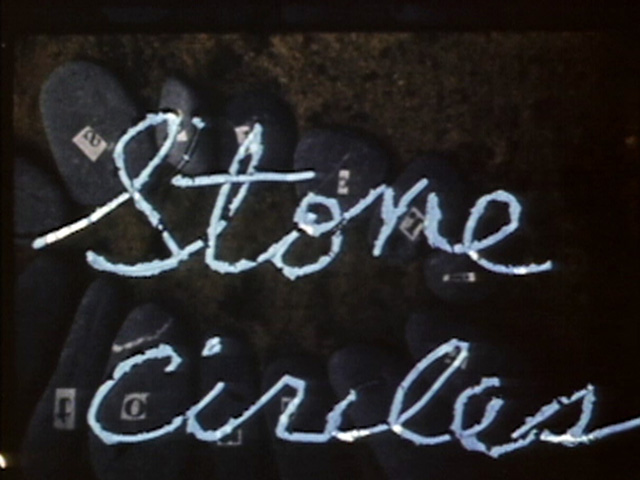




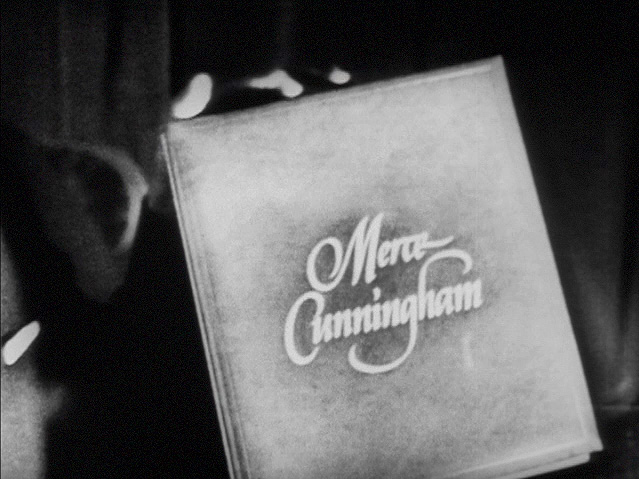



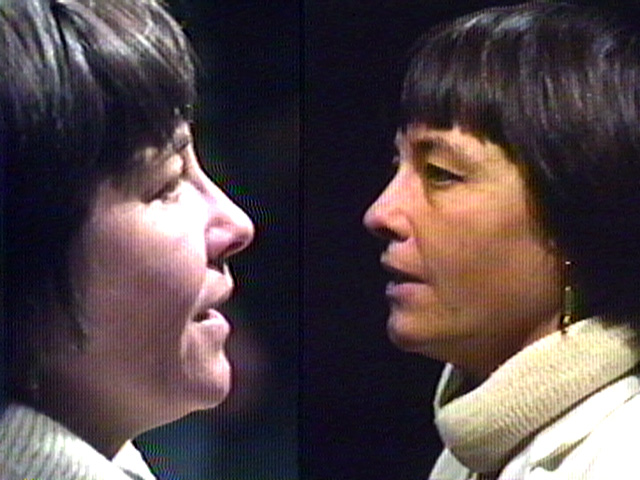
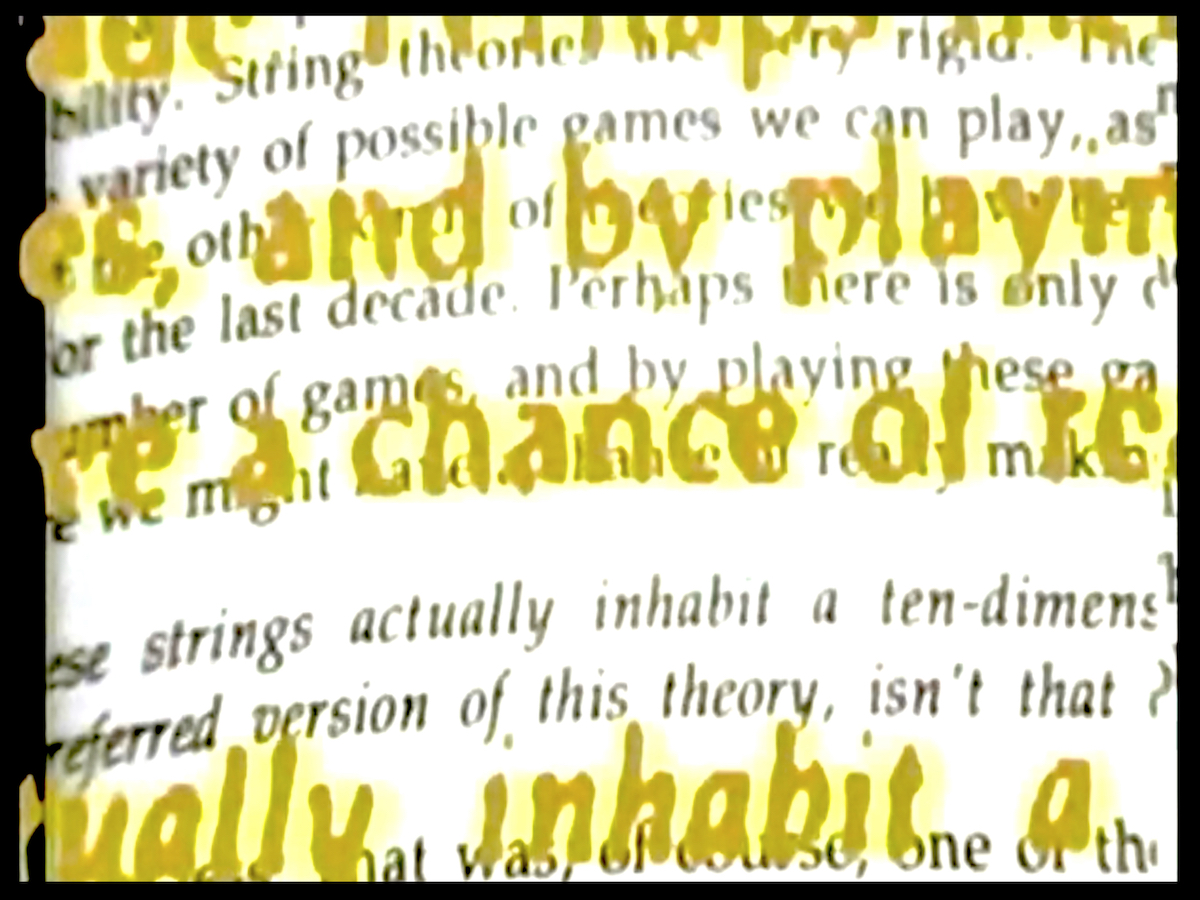


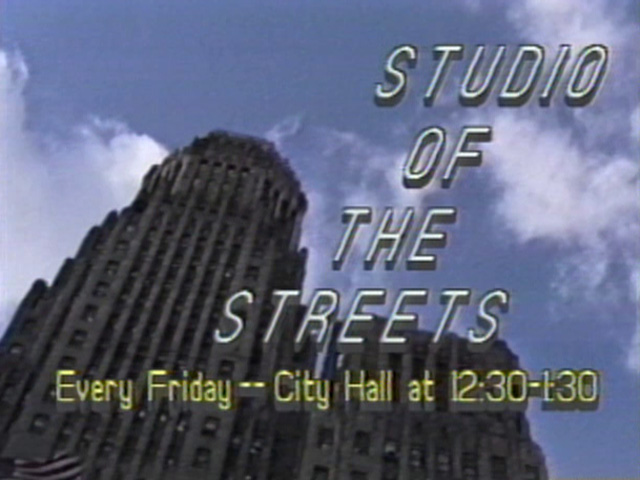



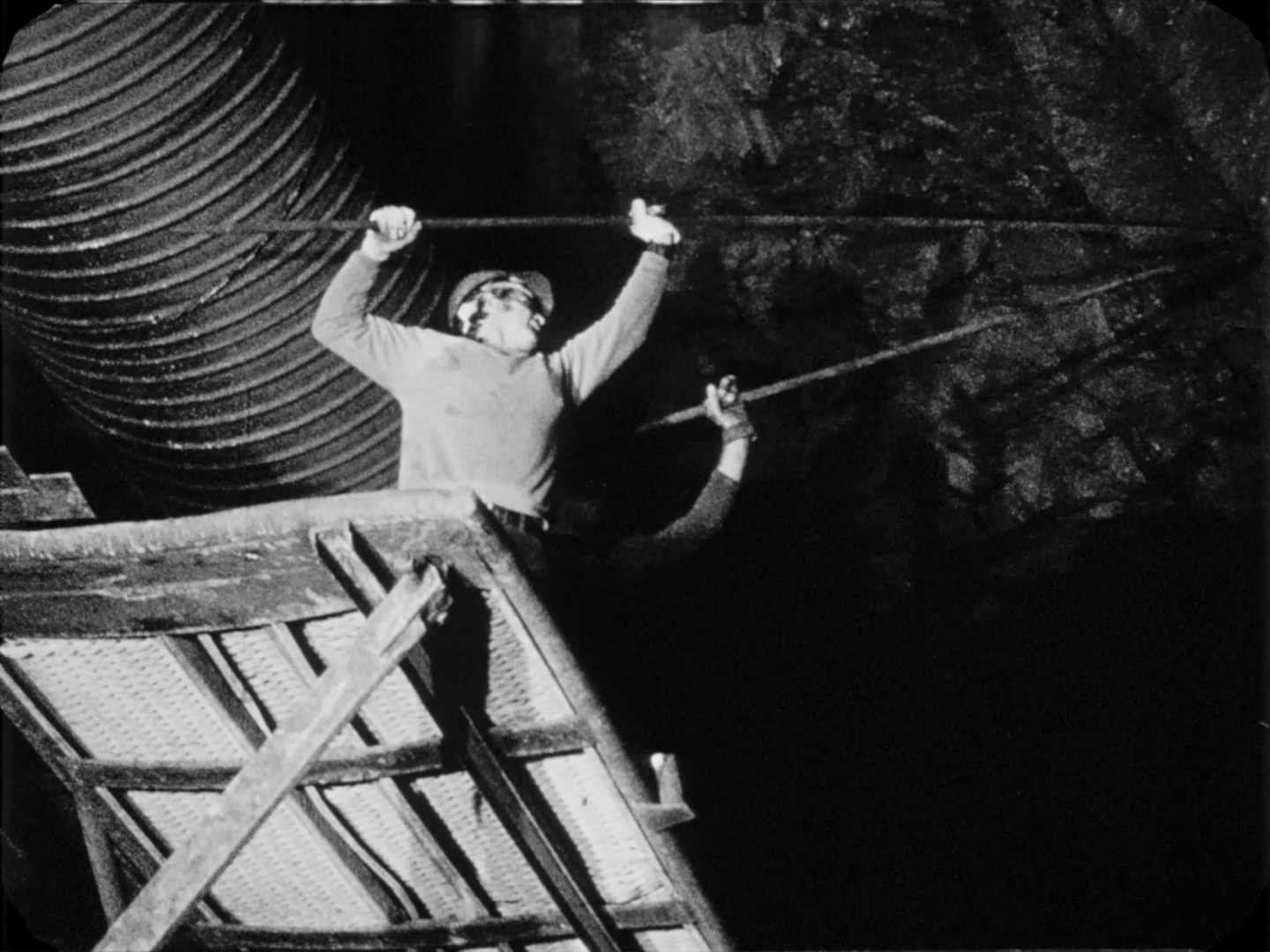
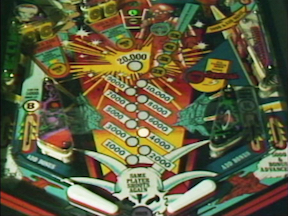



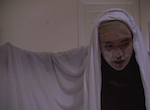










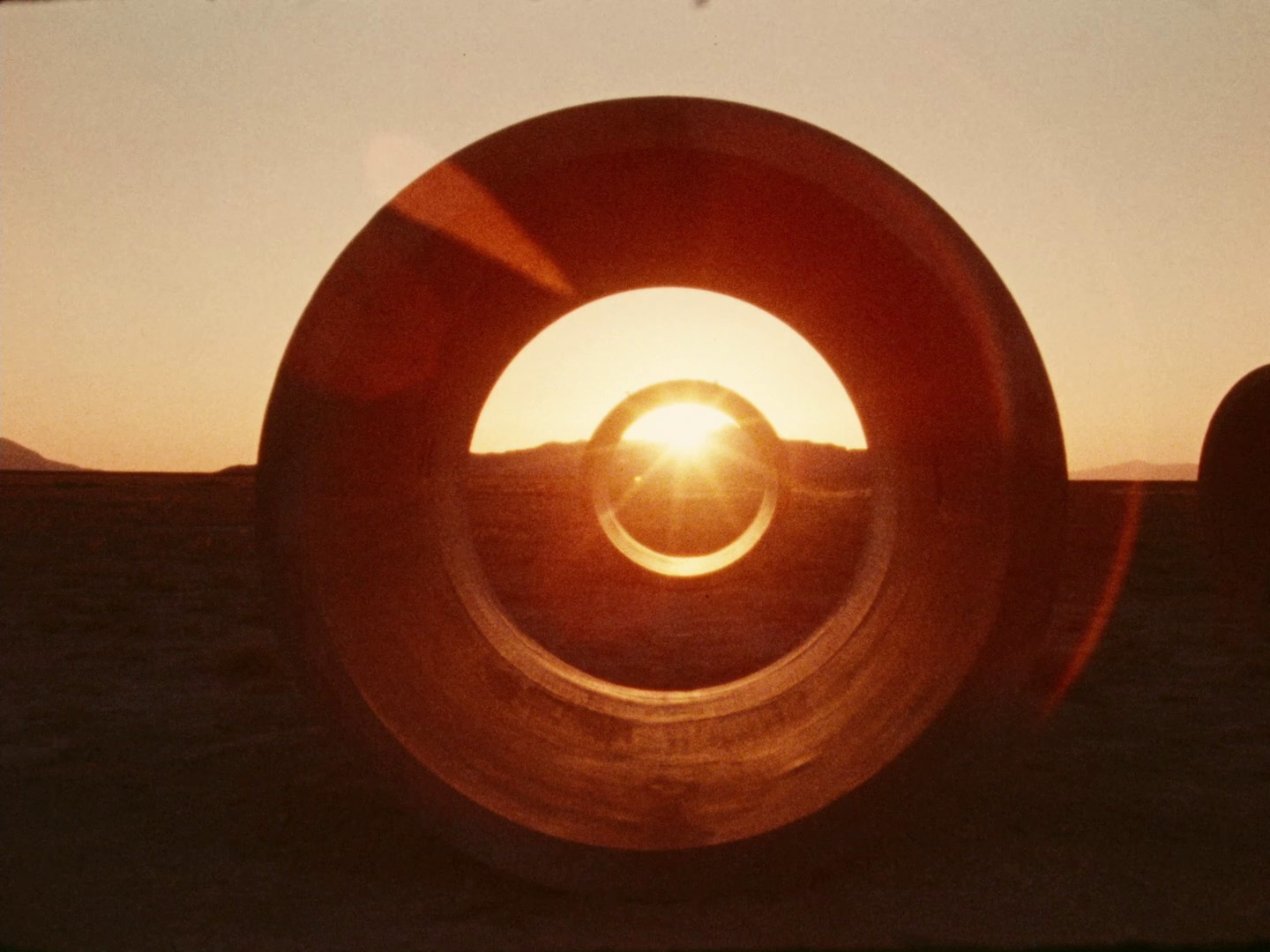




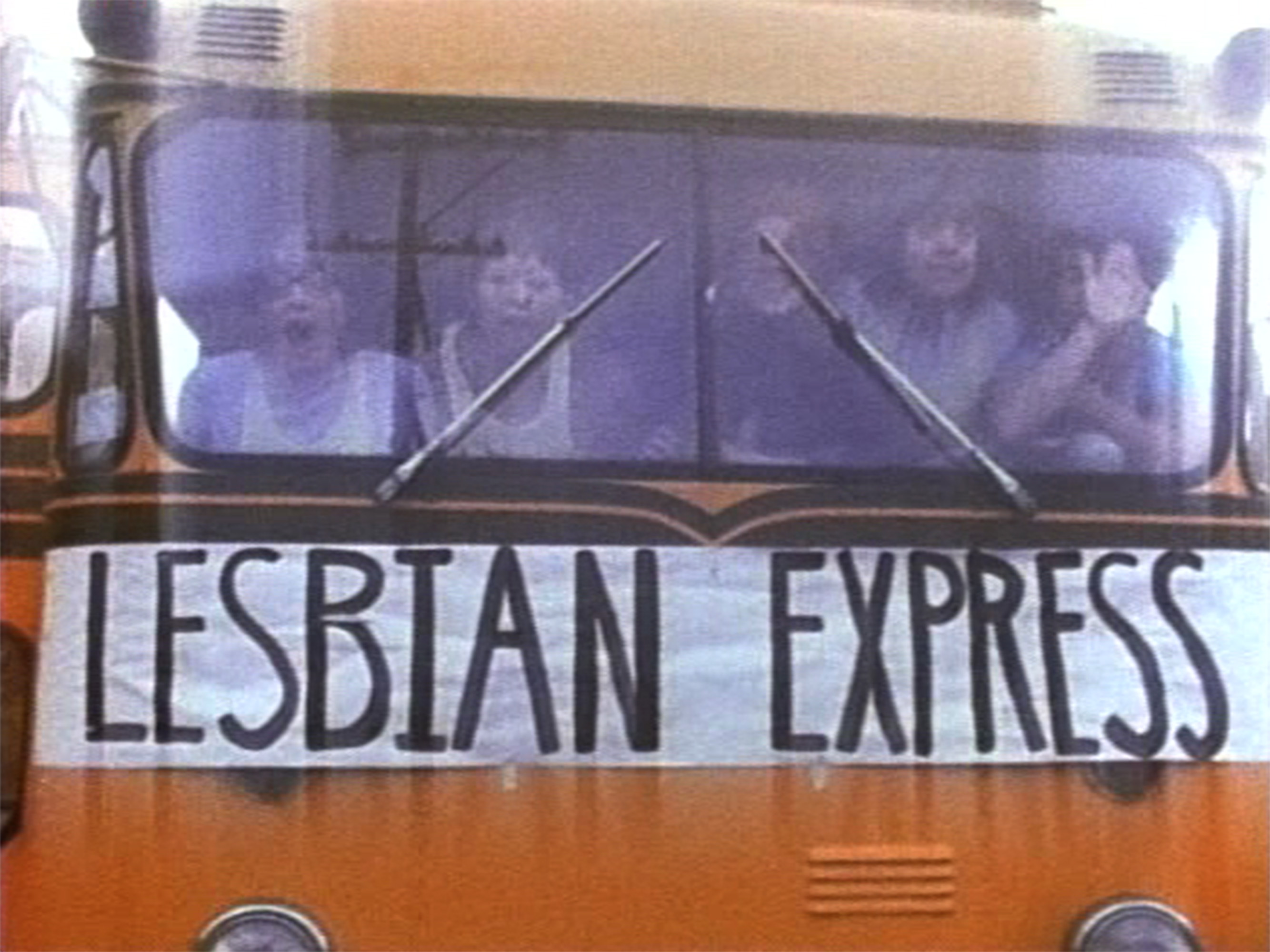














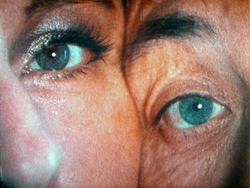

























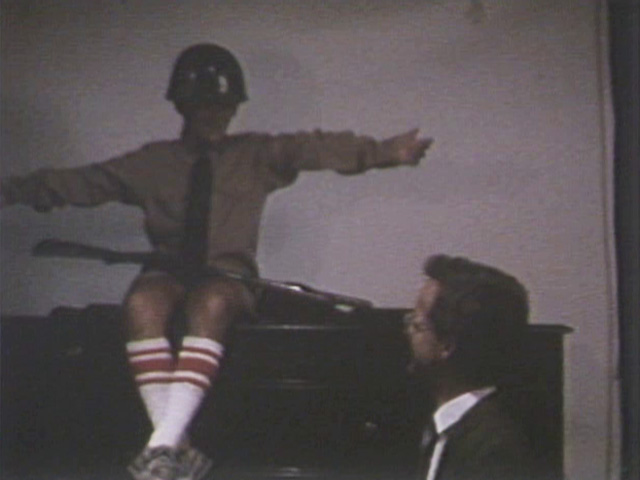

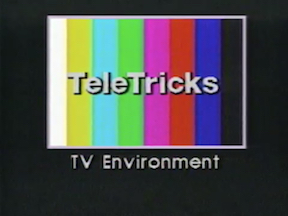




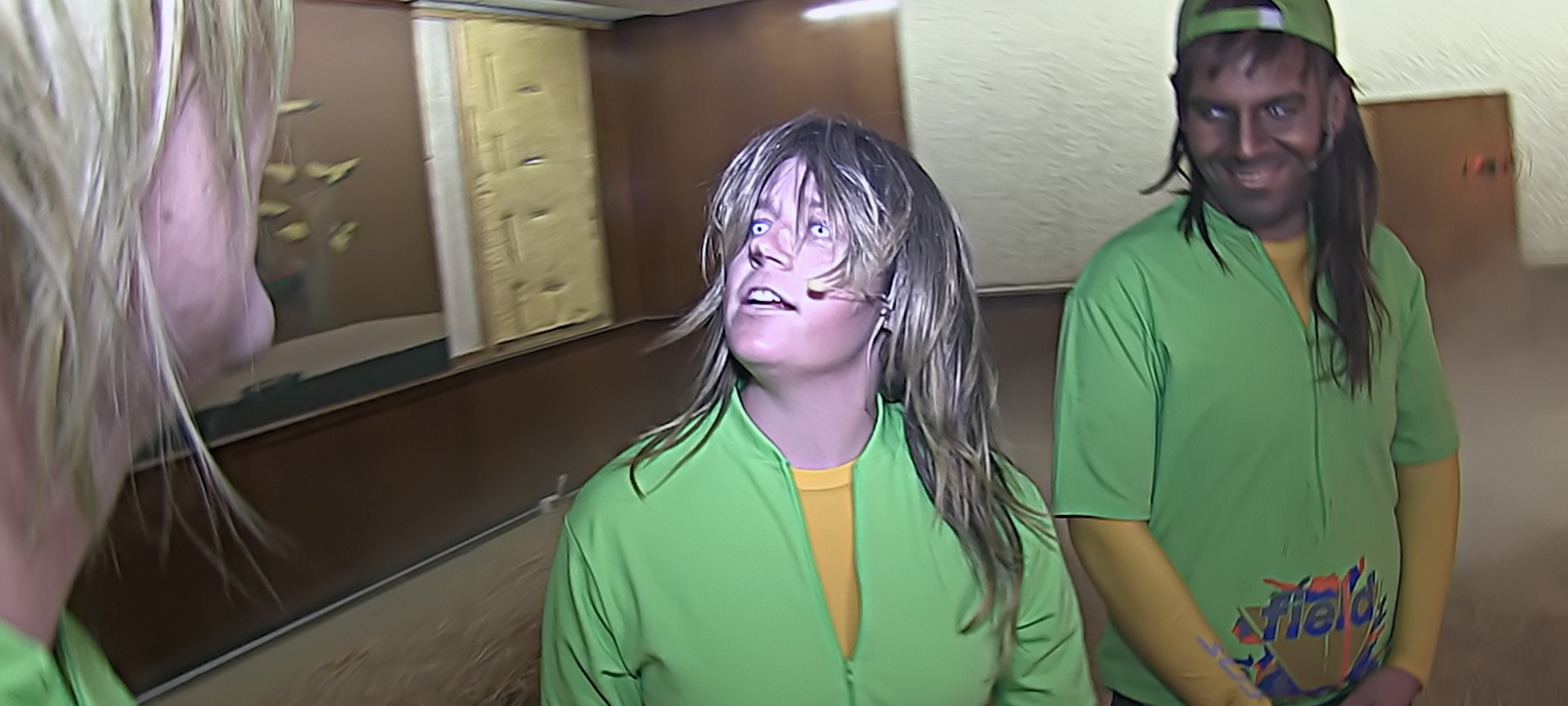







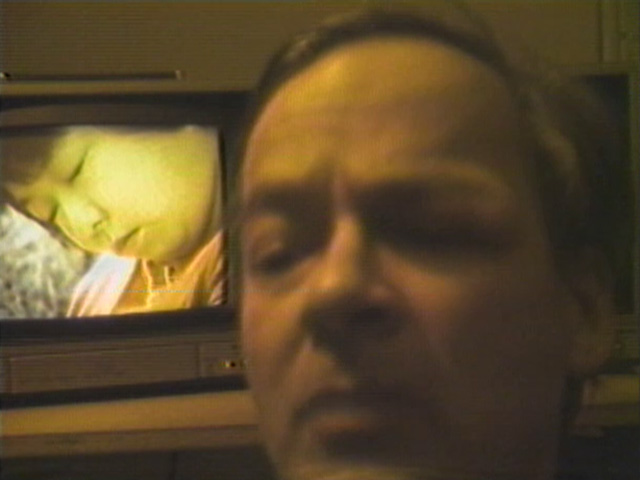




















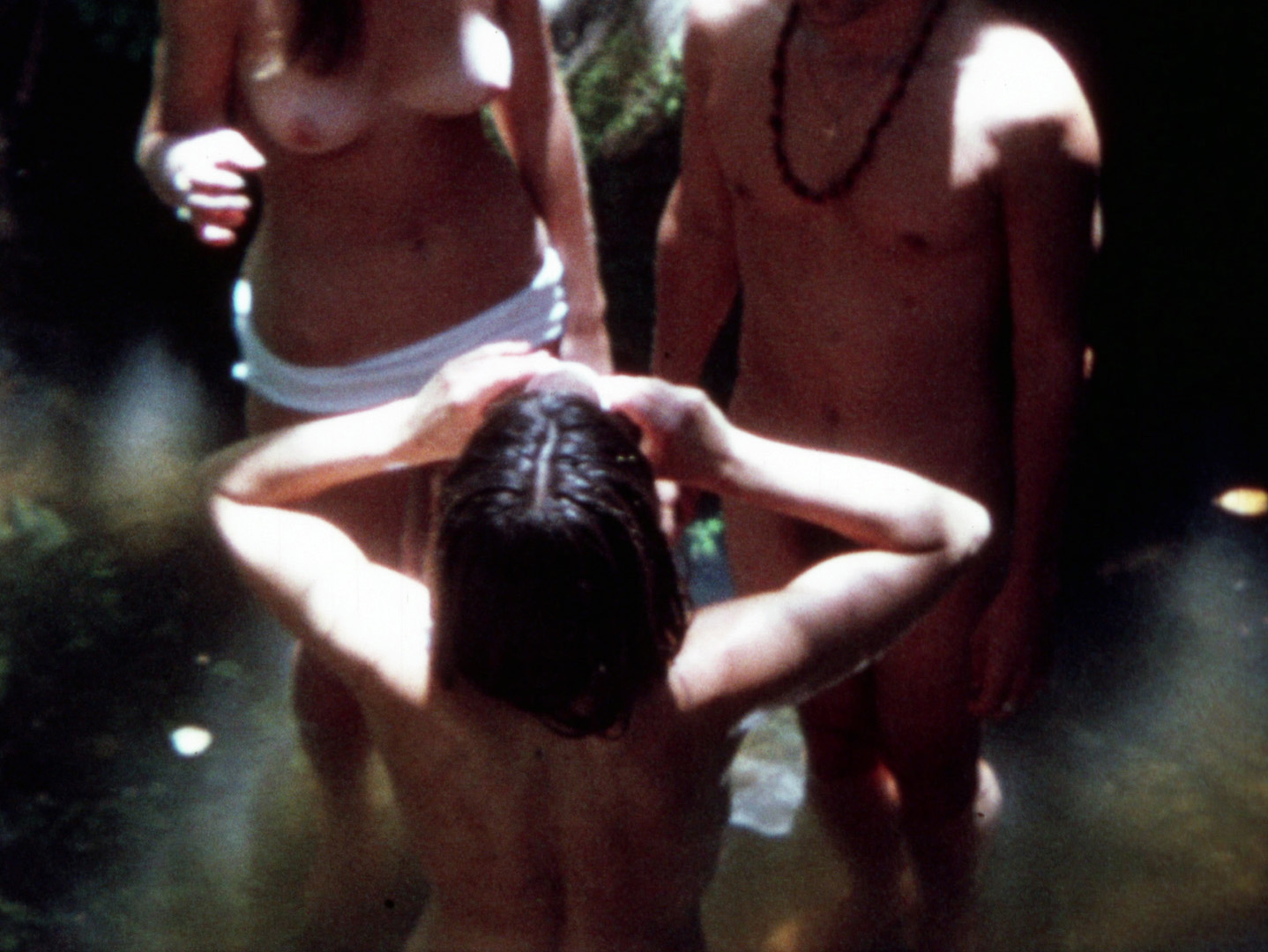



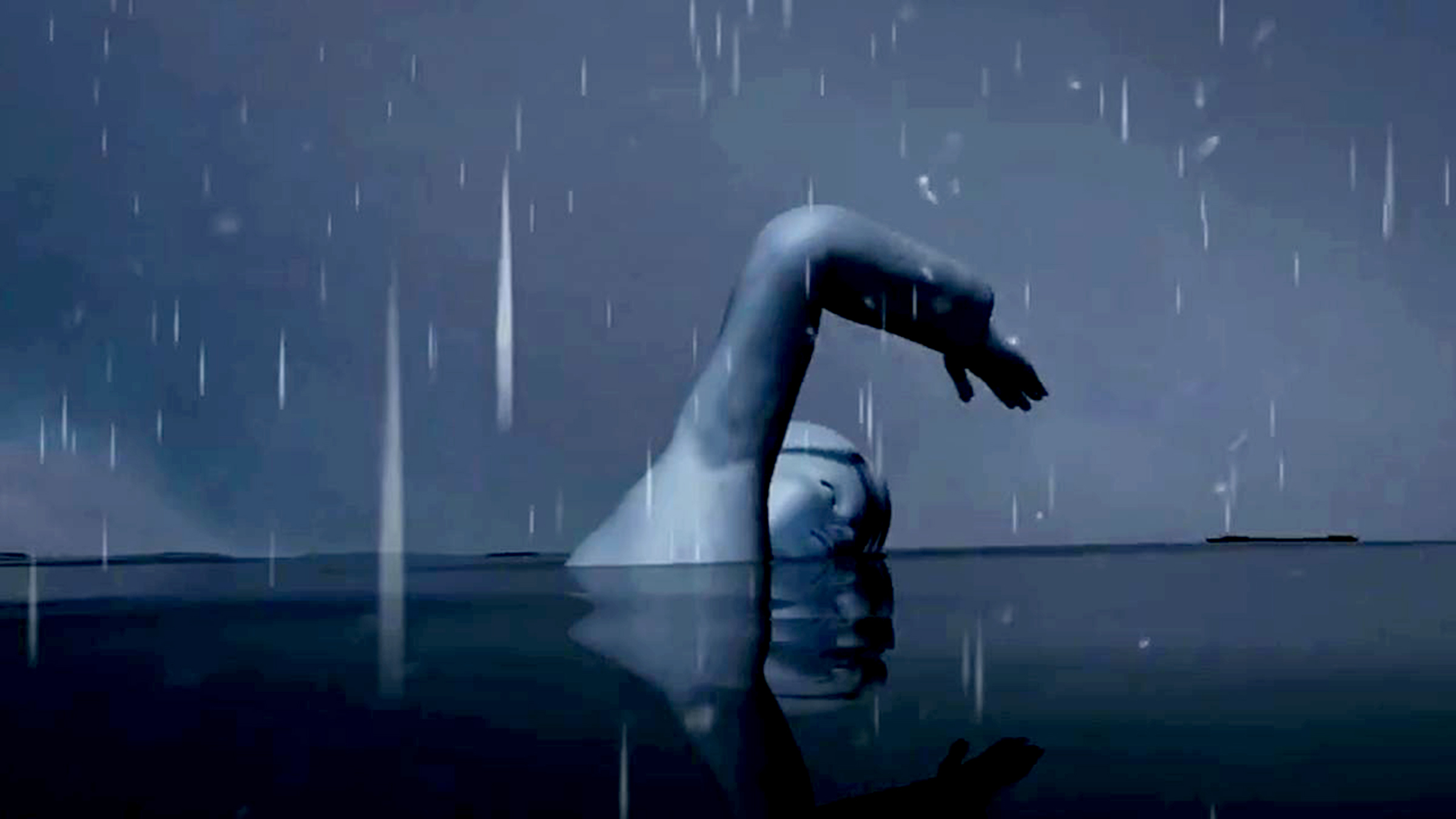


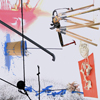






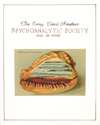























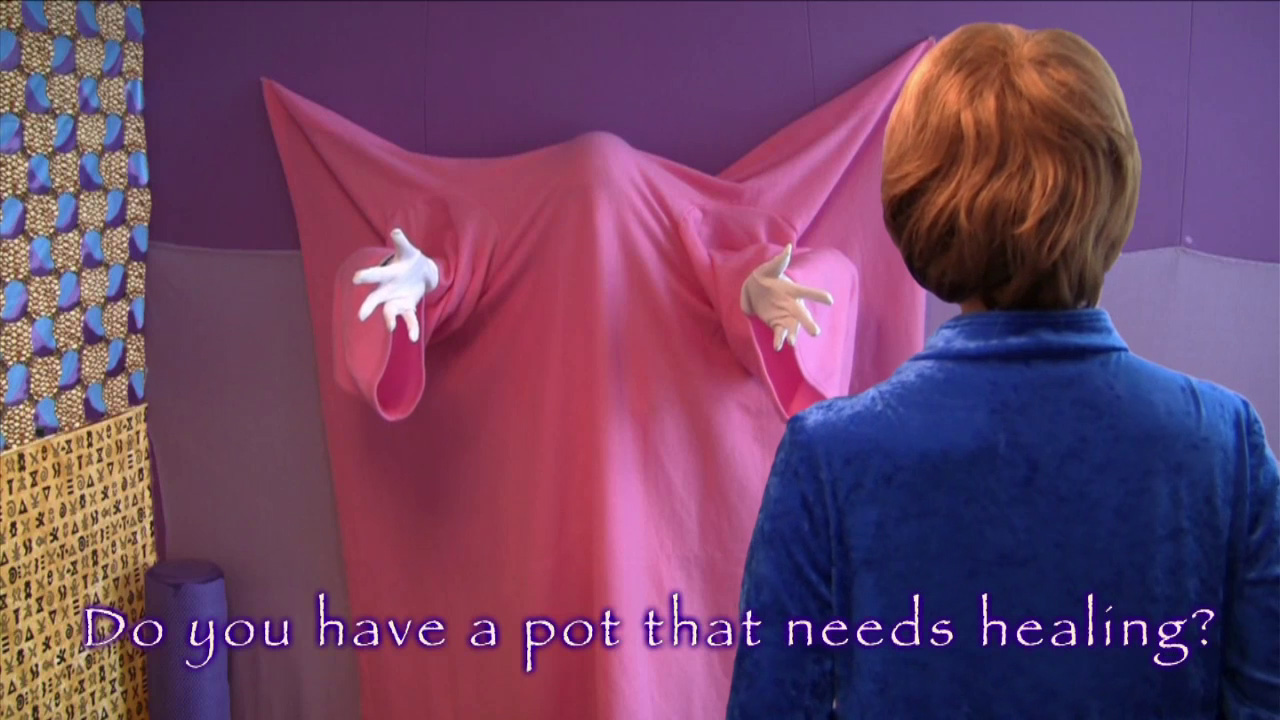





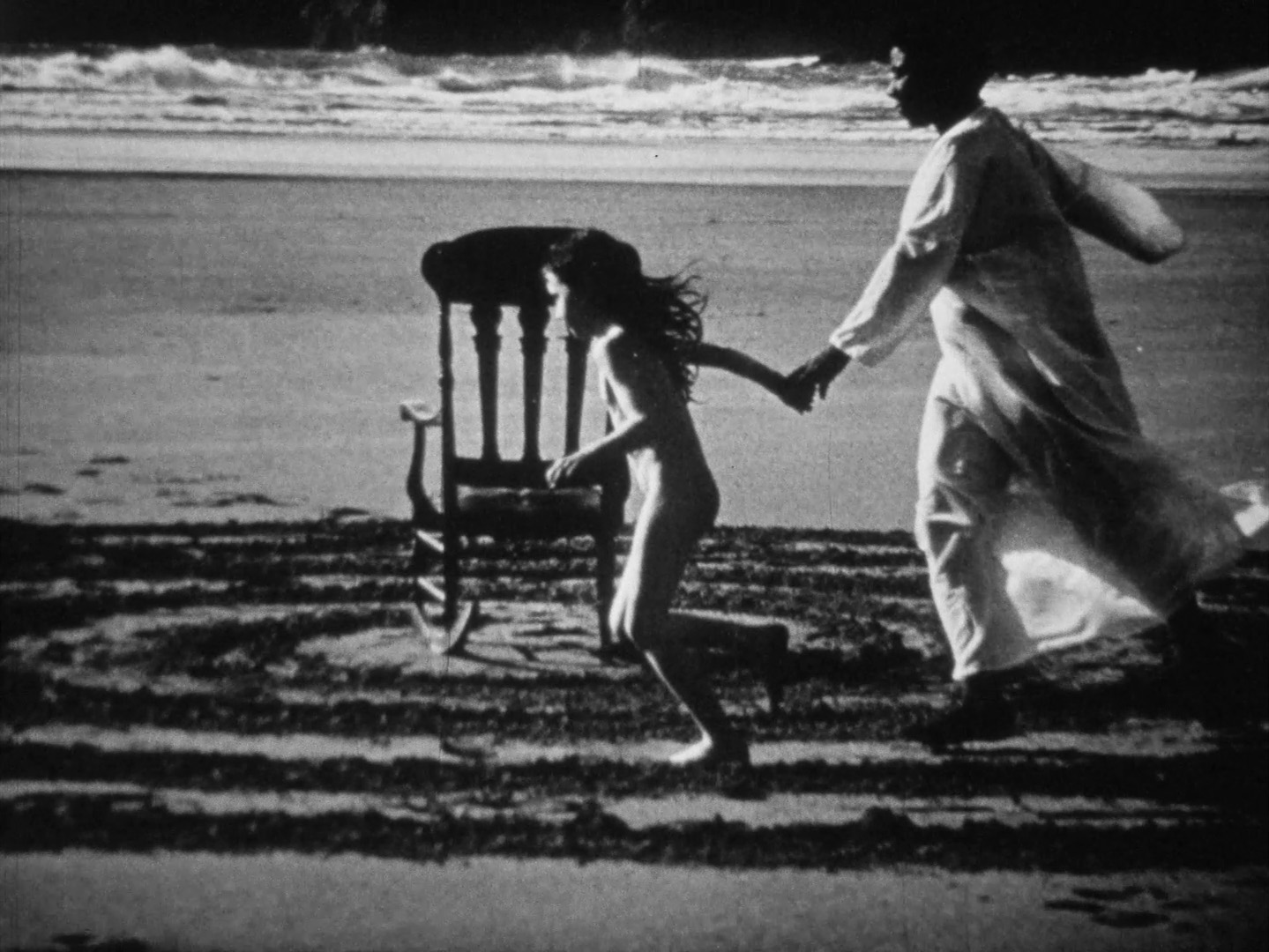

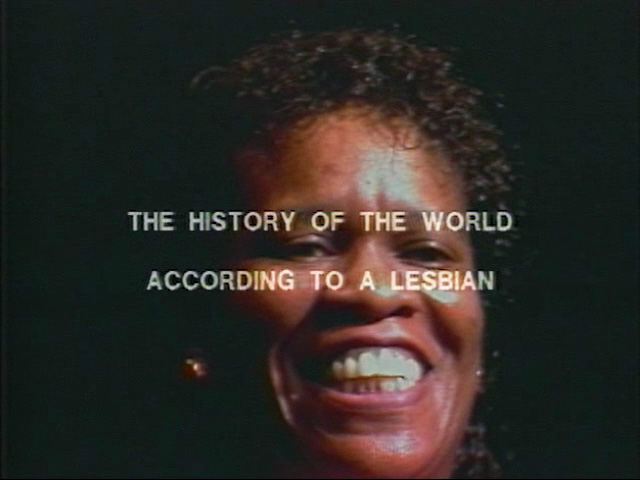

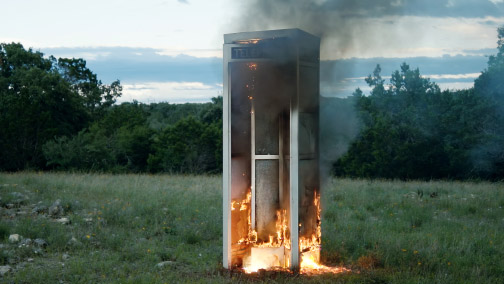



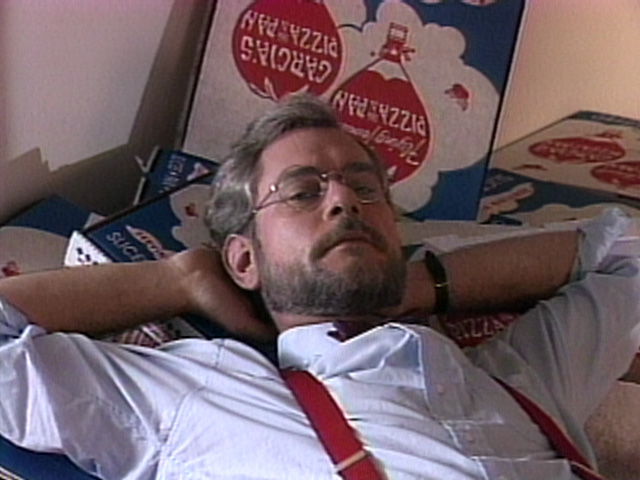







































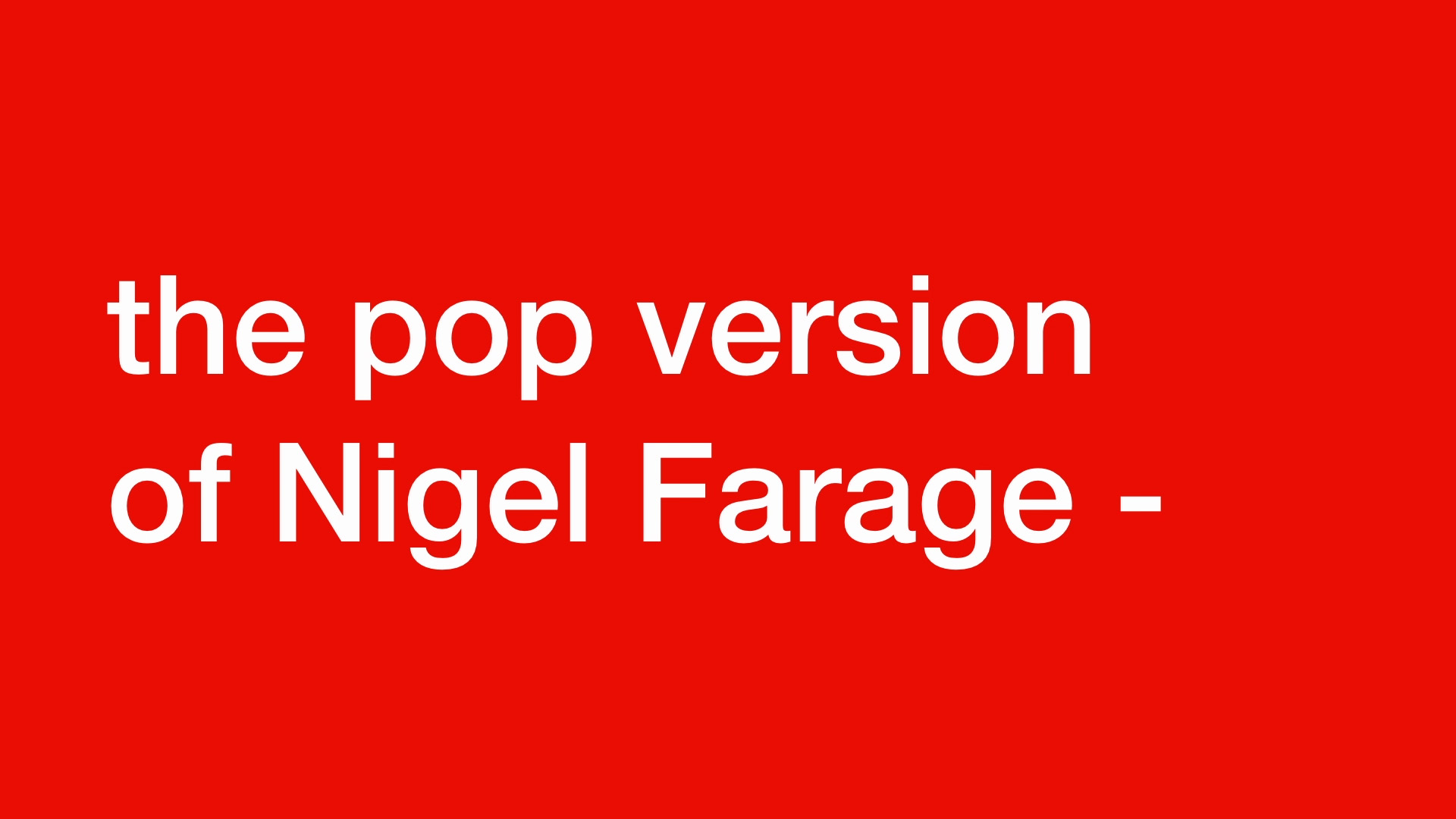






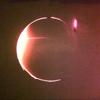








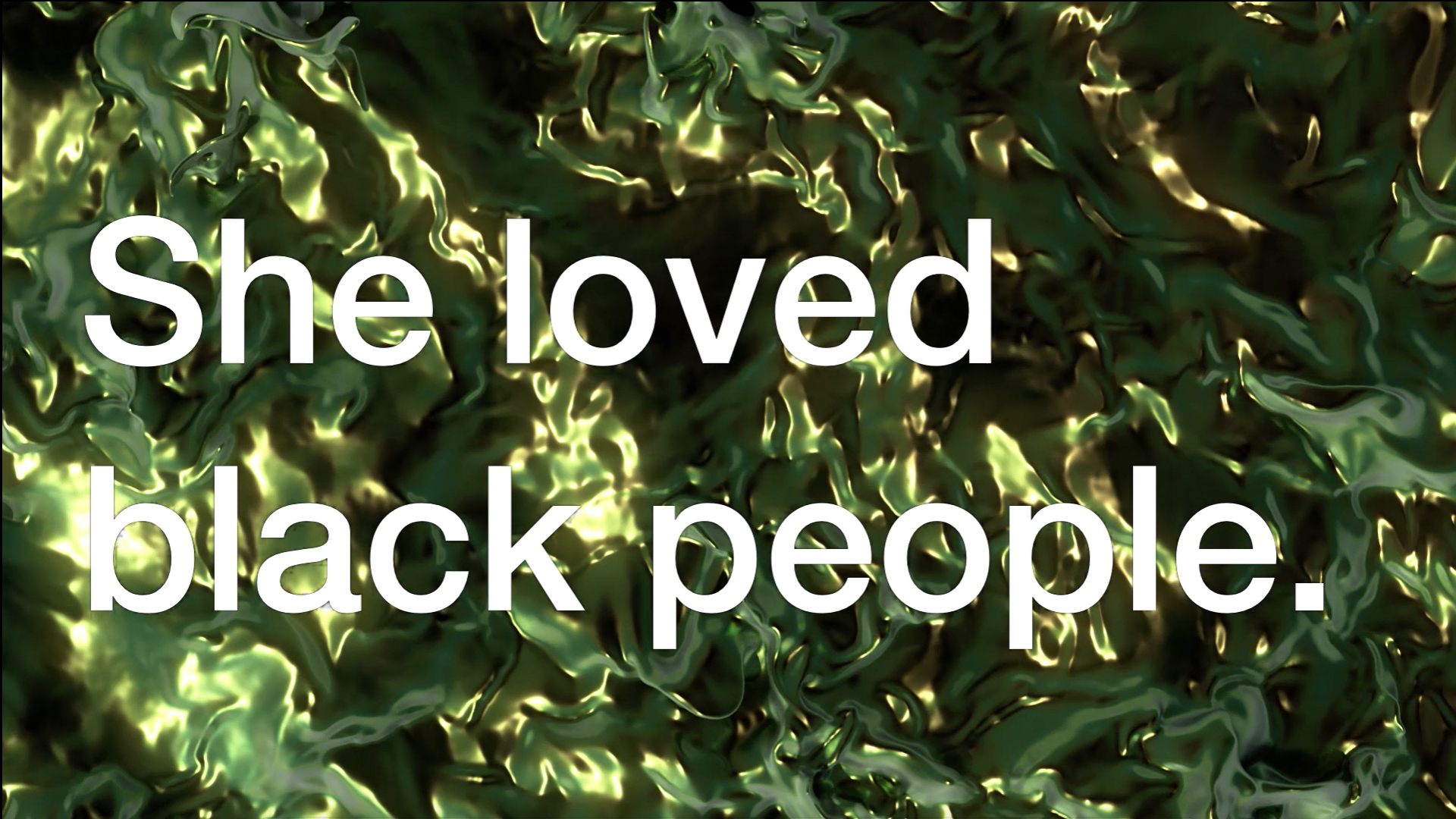
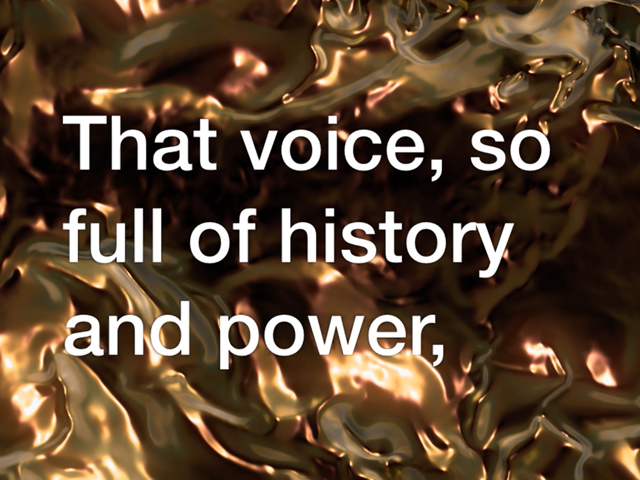























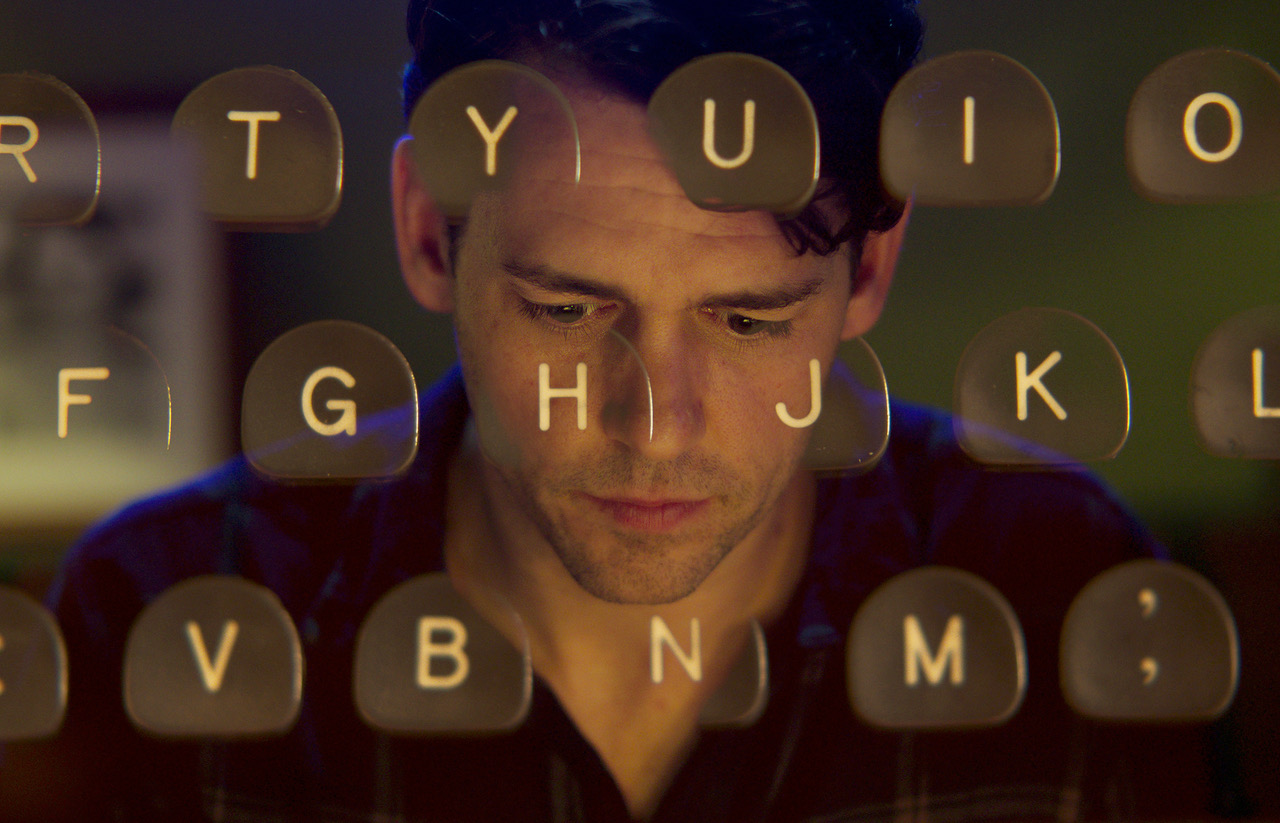
















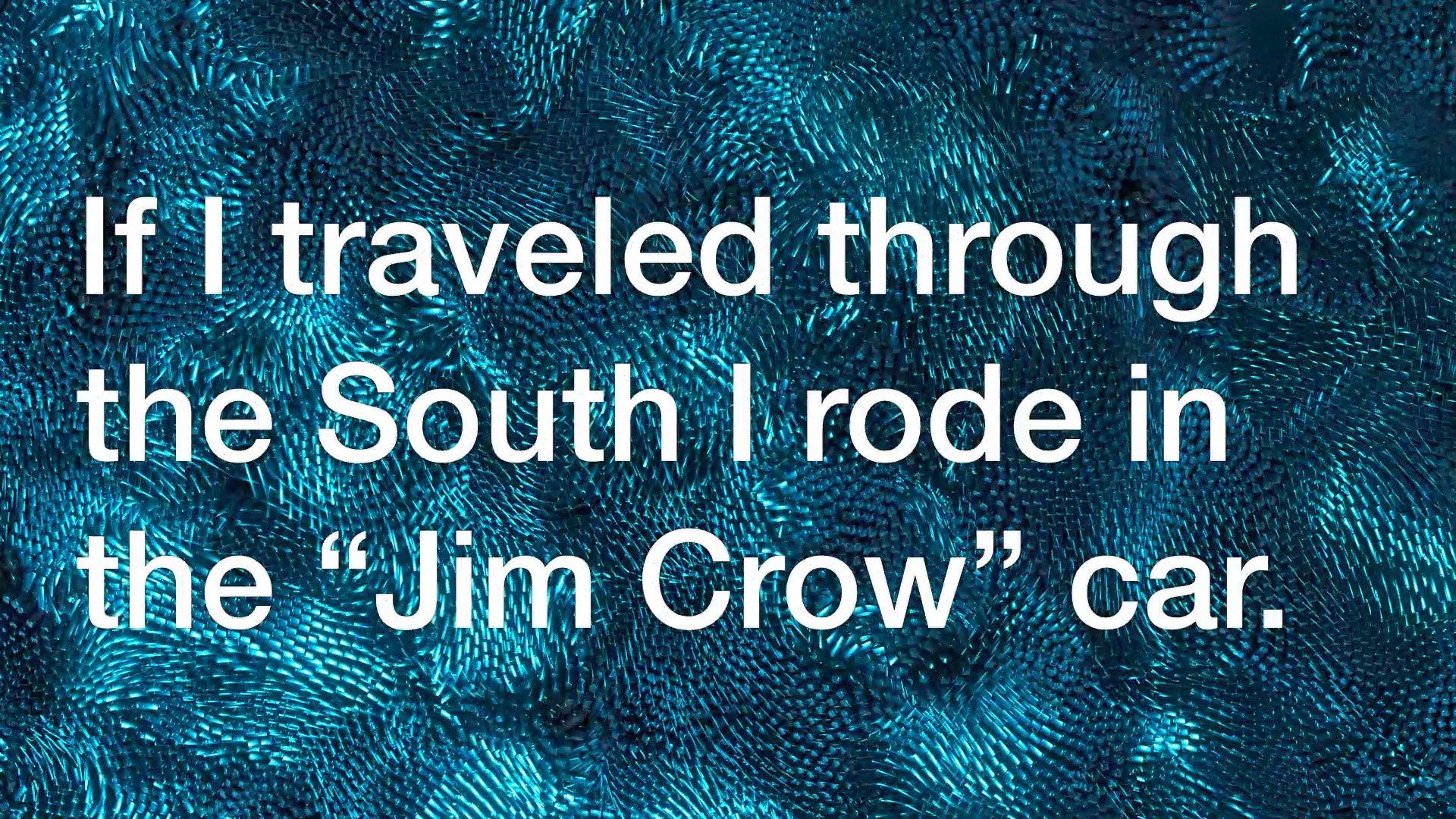
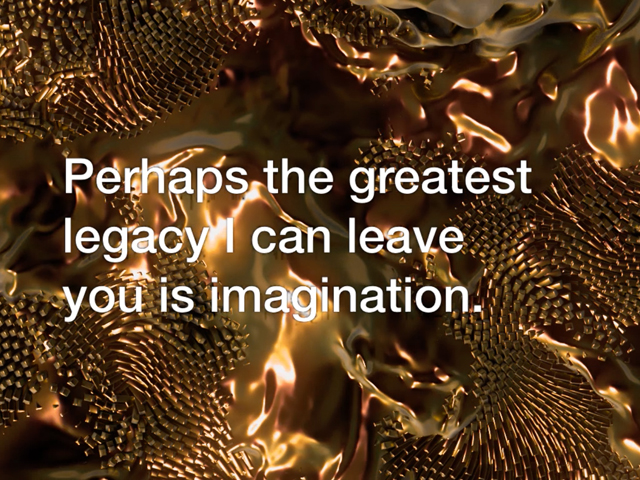



























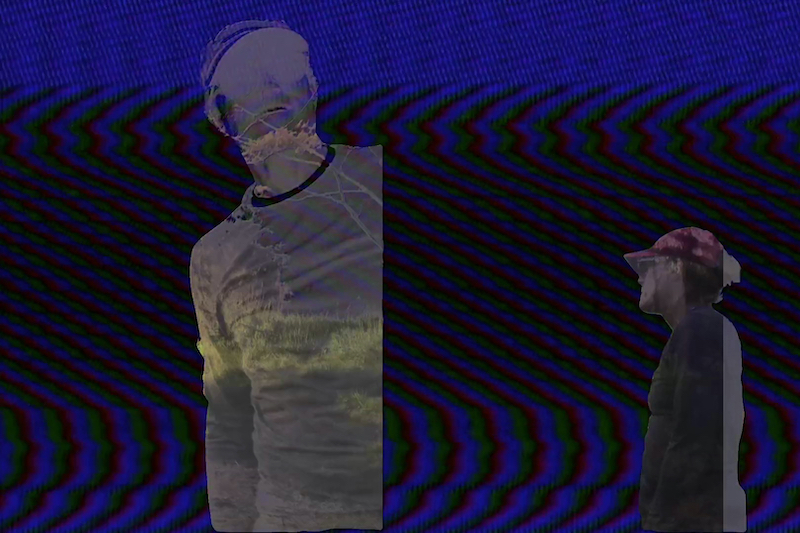



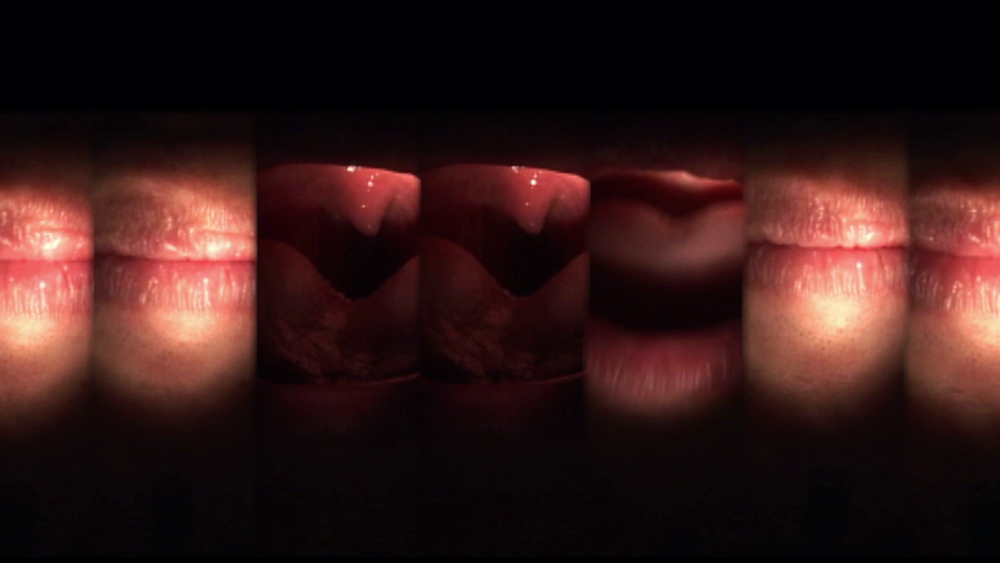





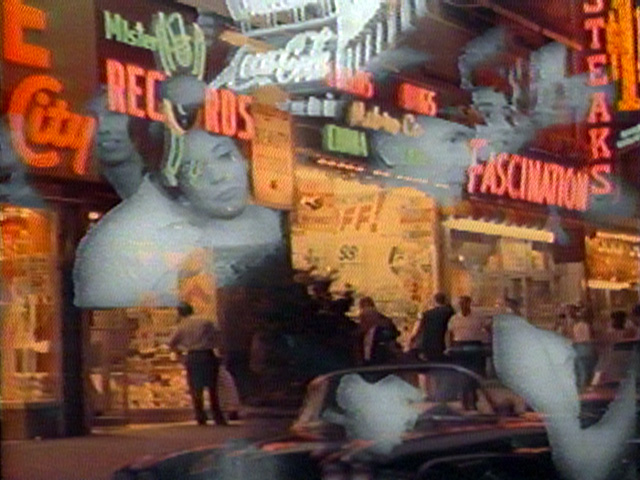


















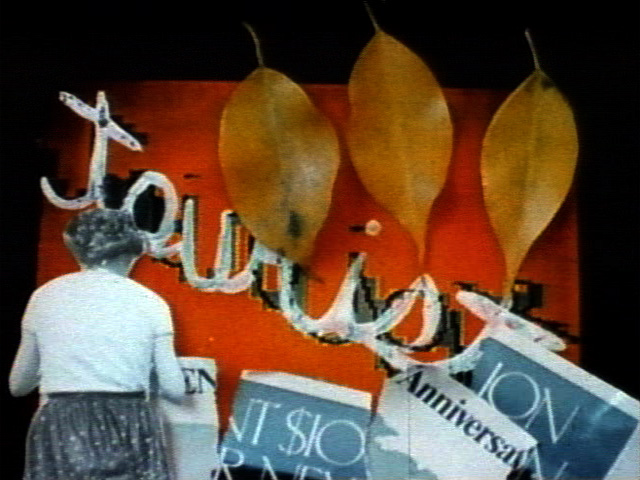









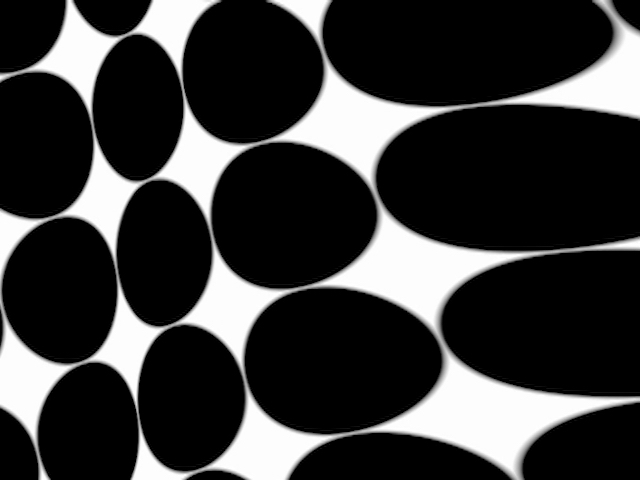




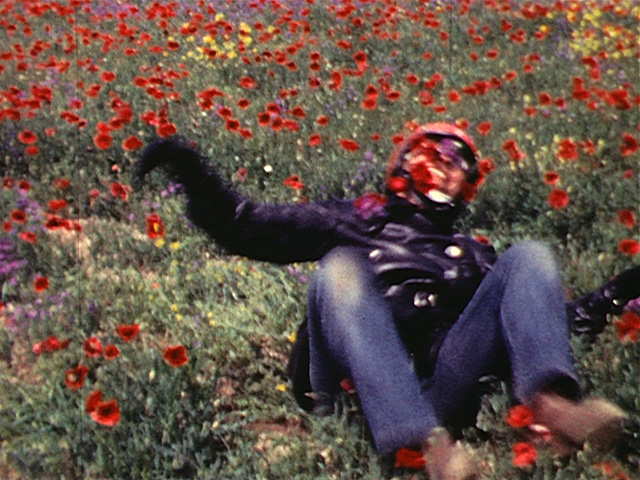
















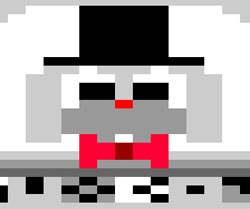





















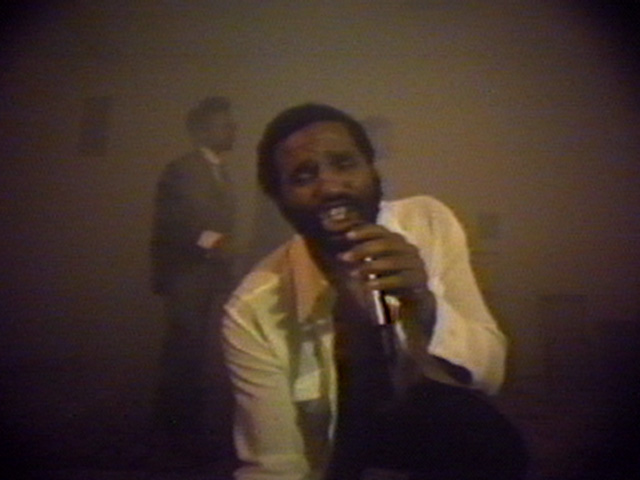



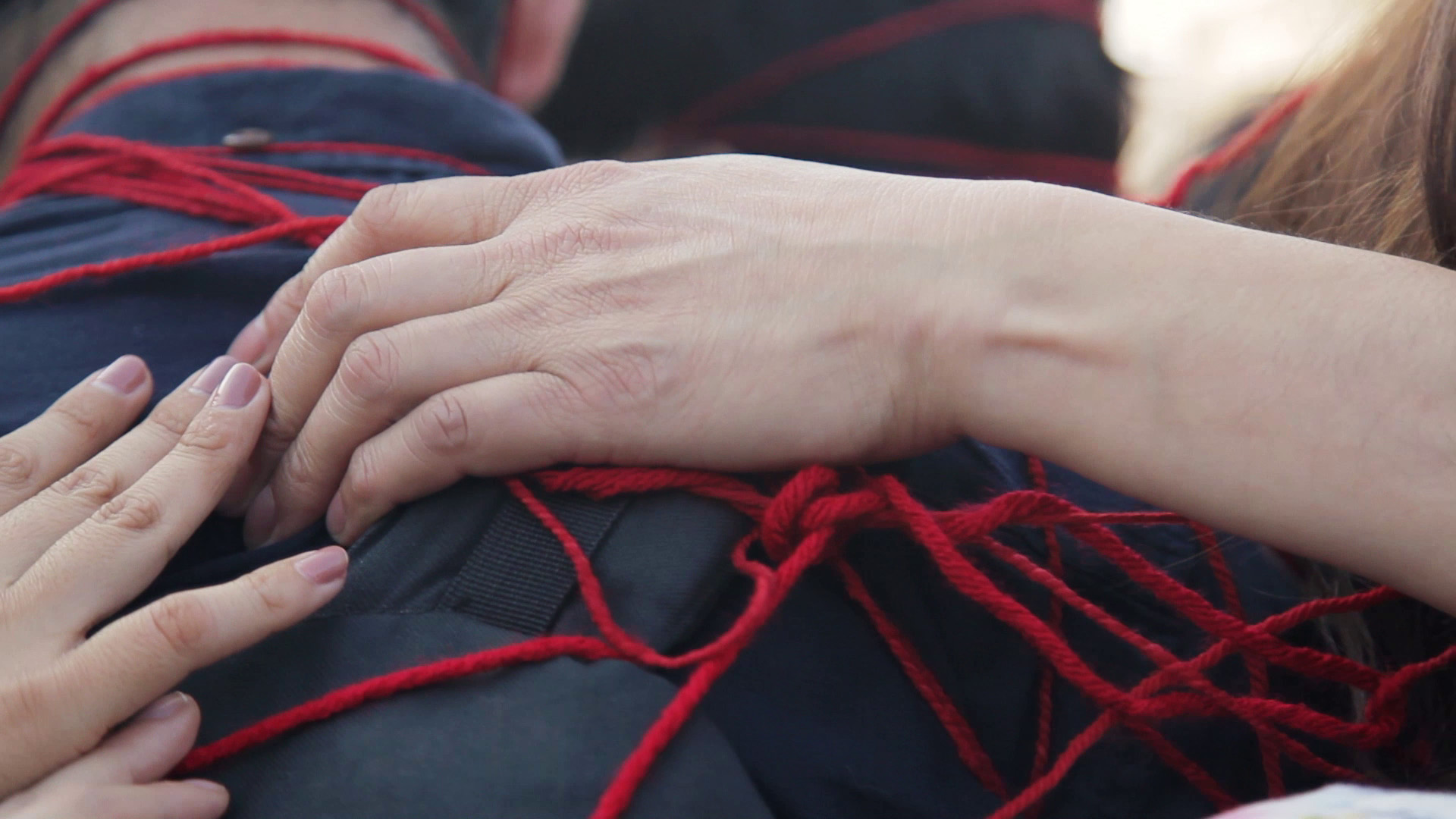















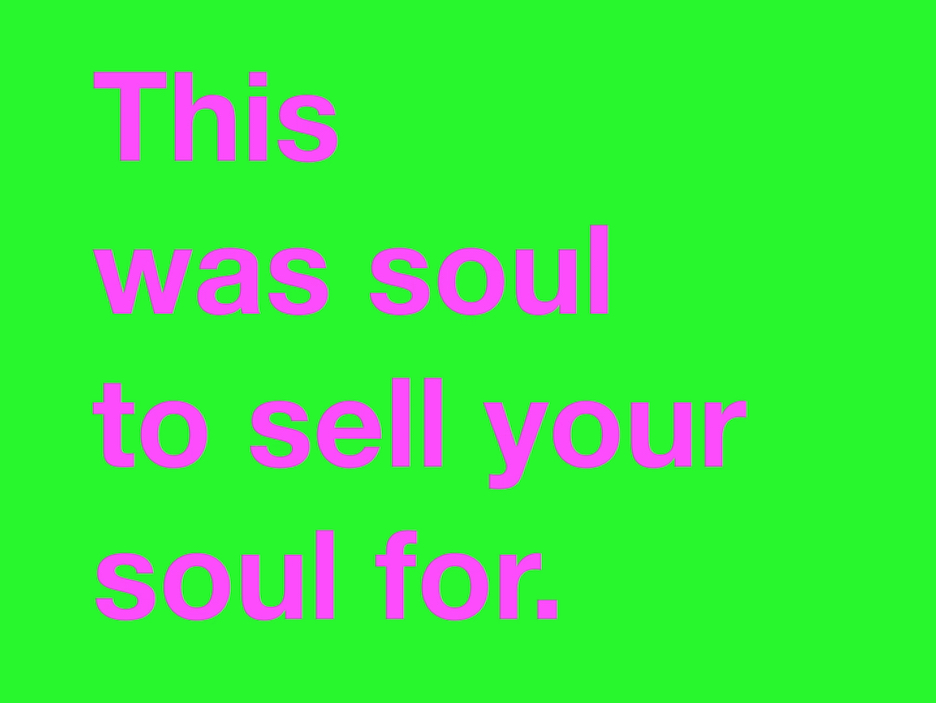











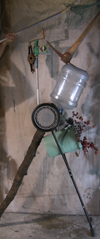



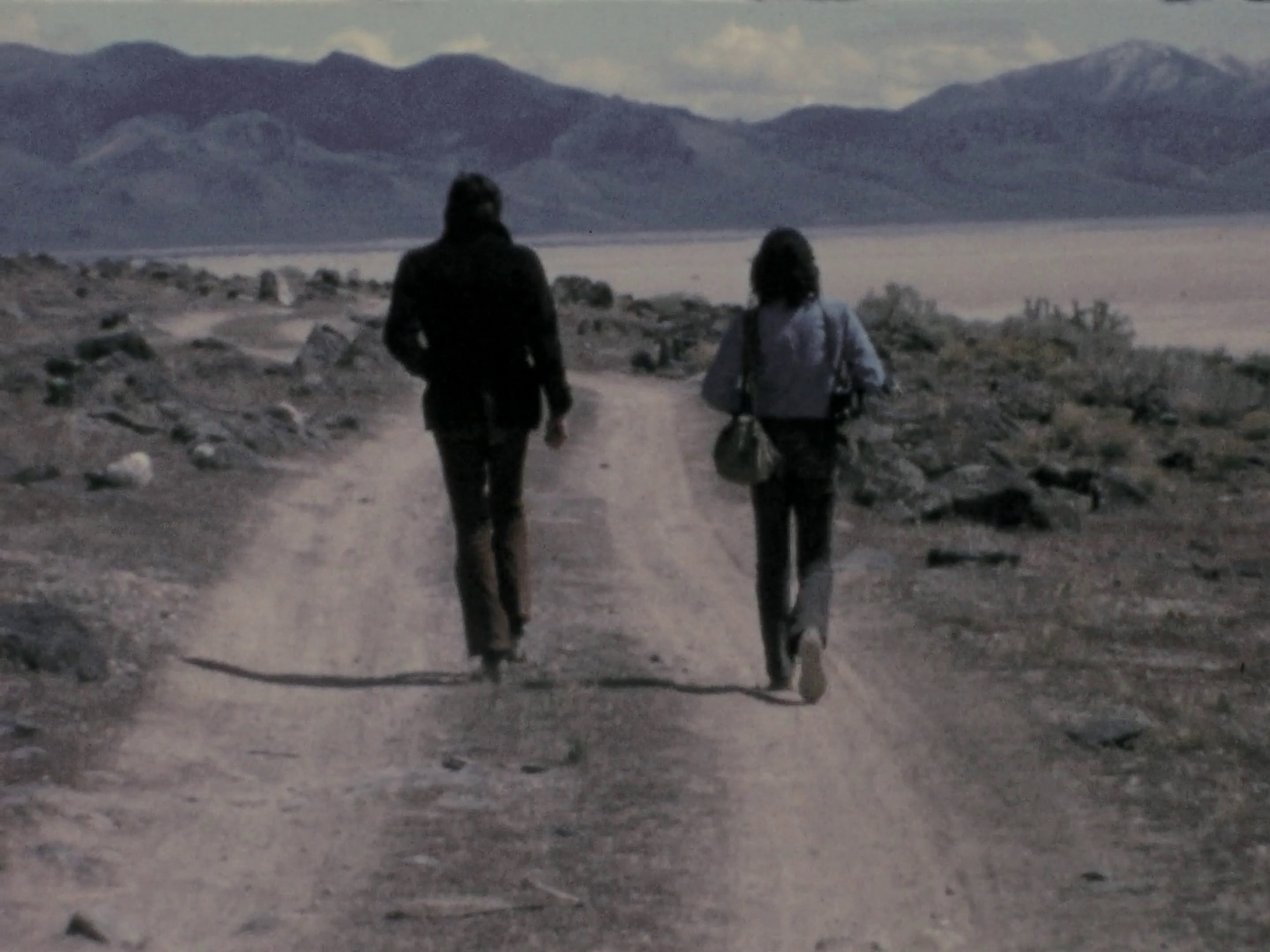





























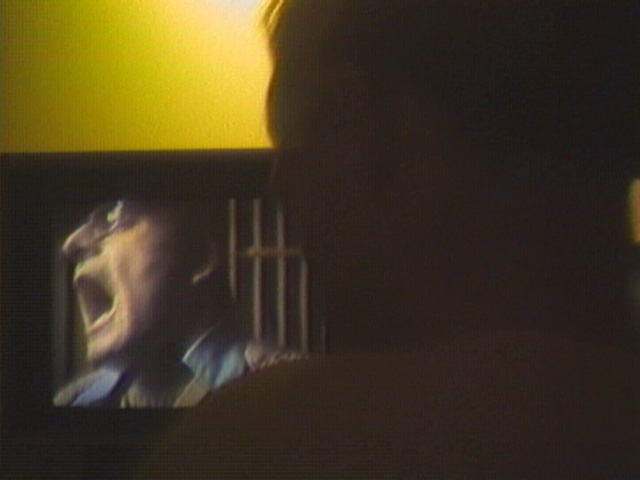










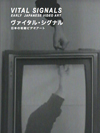
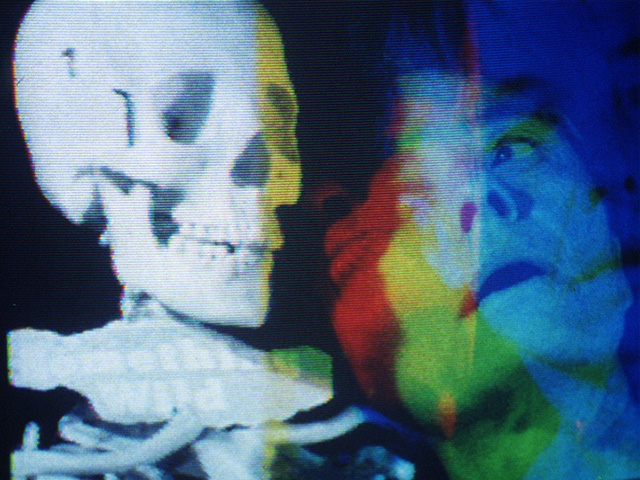








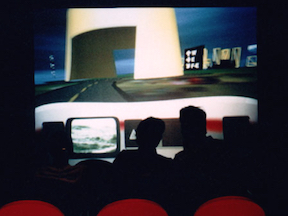











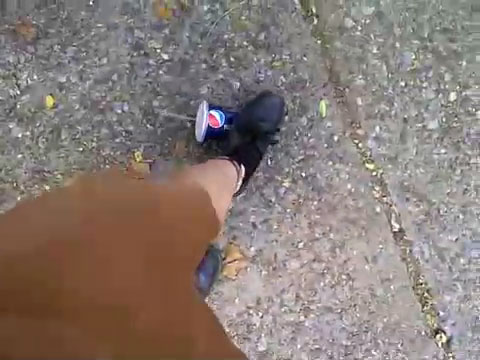






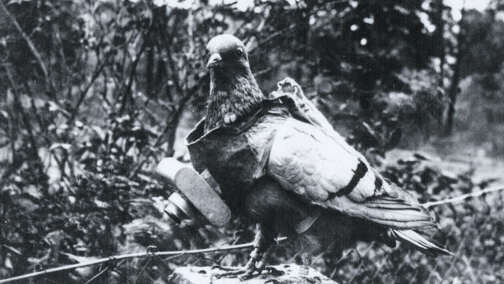




 d'Agostino .jpg)















